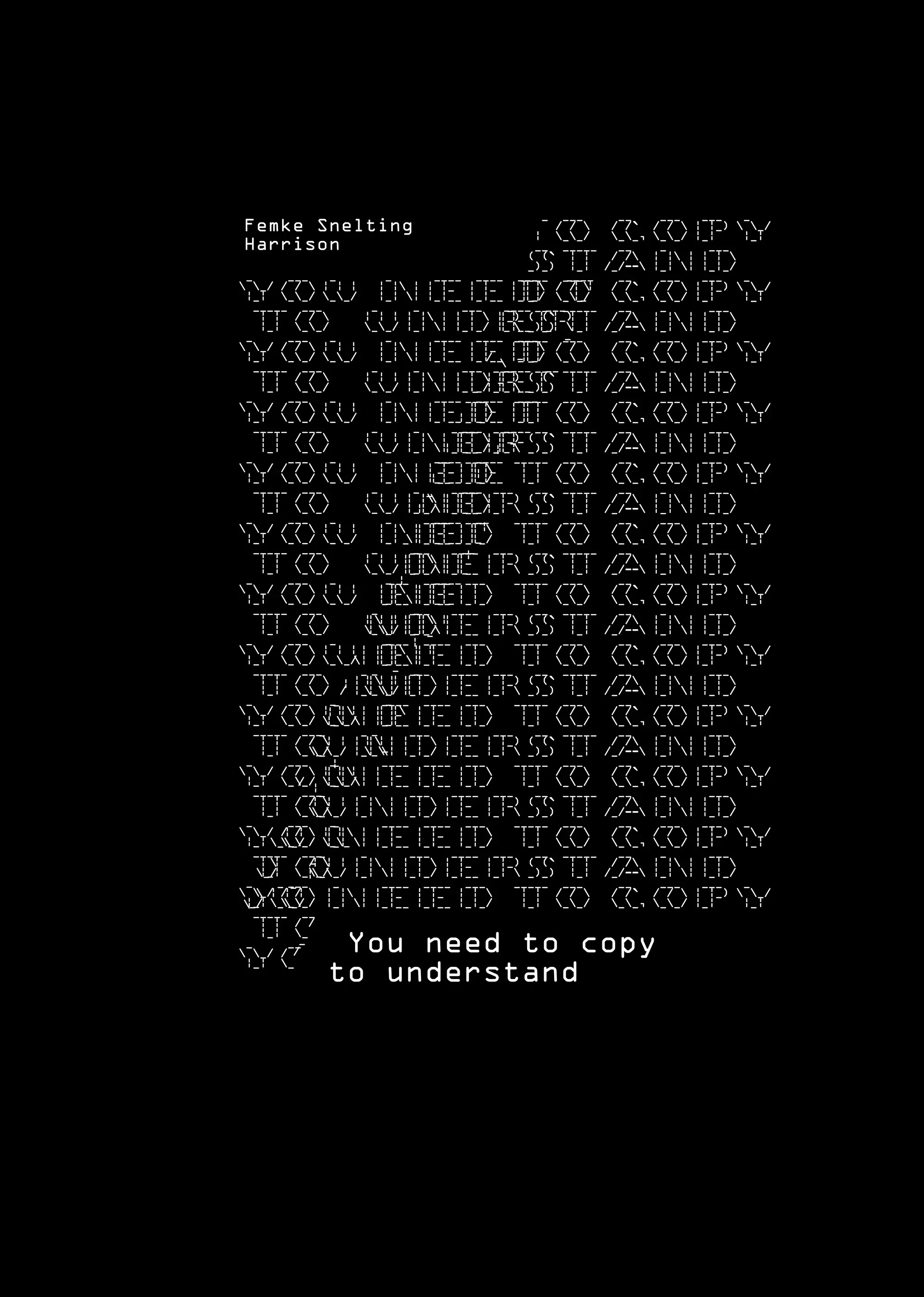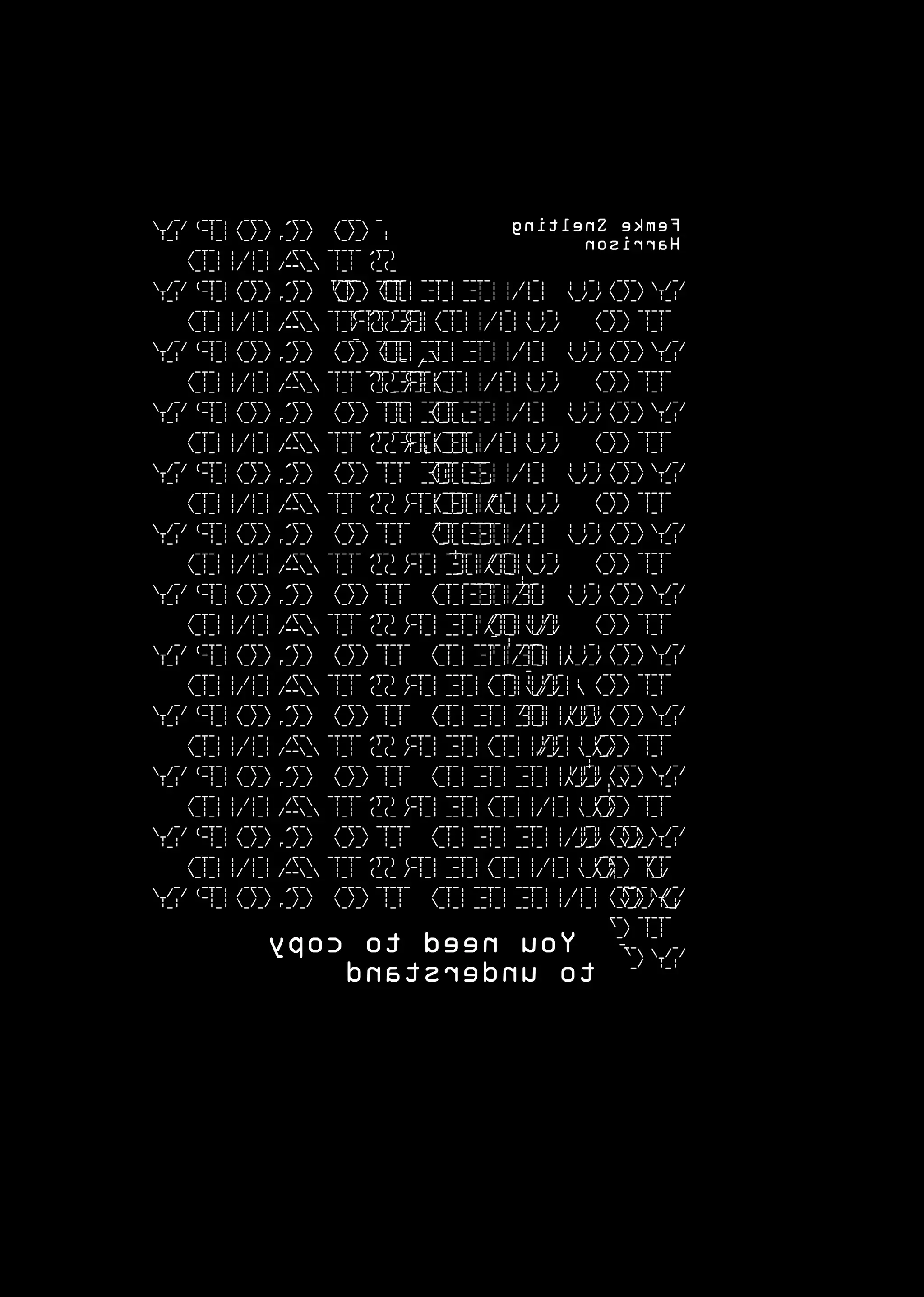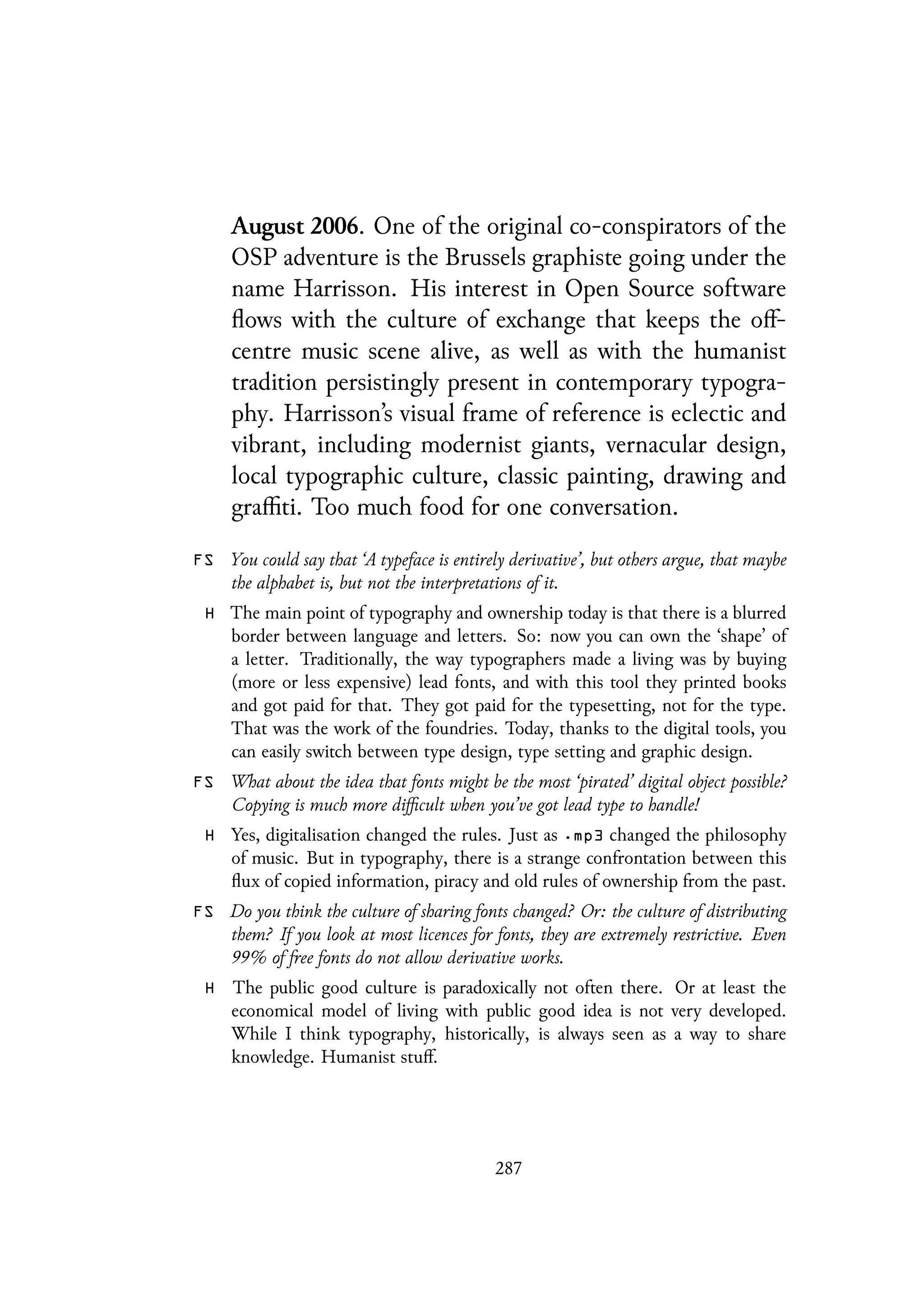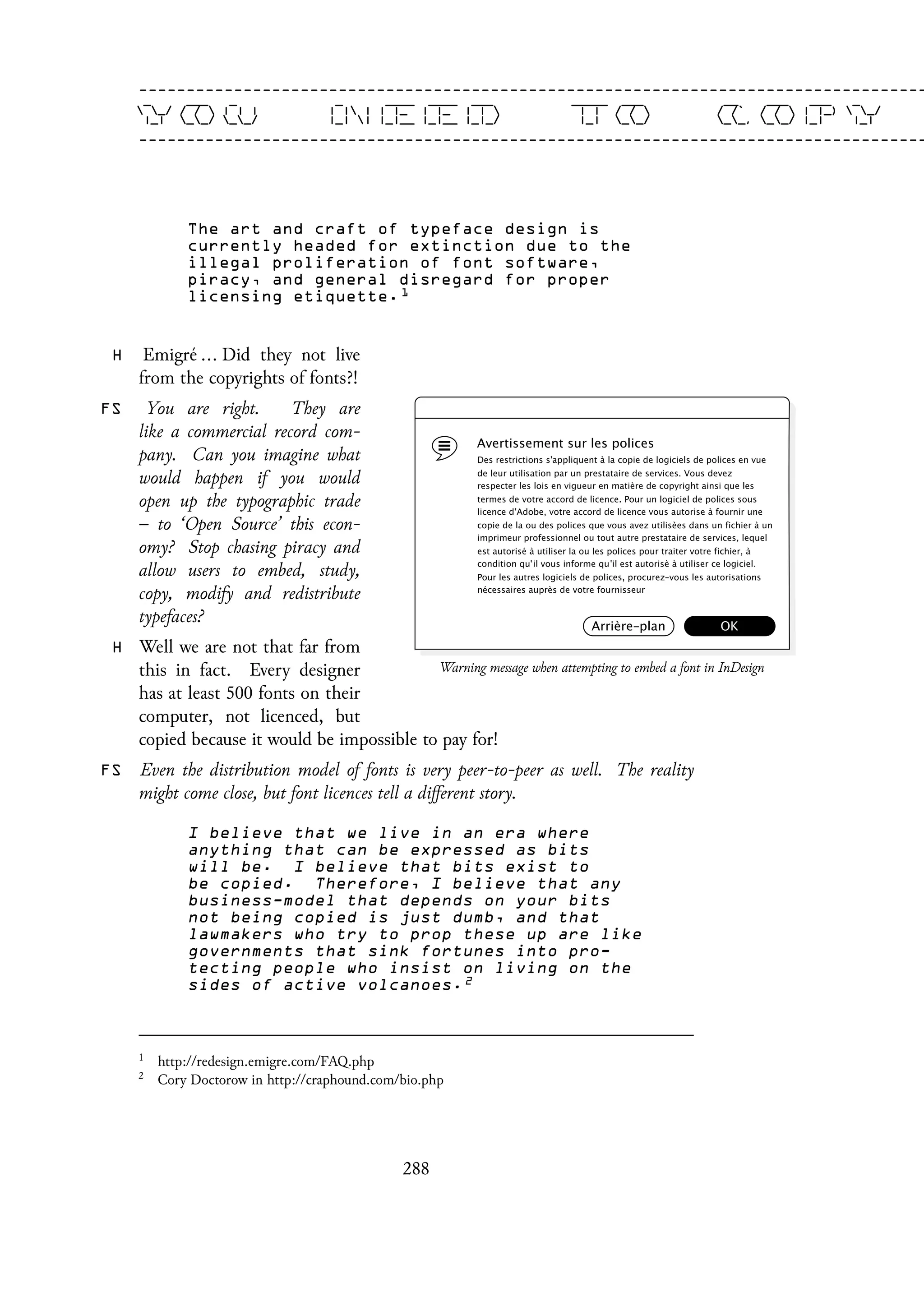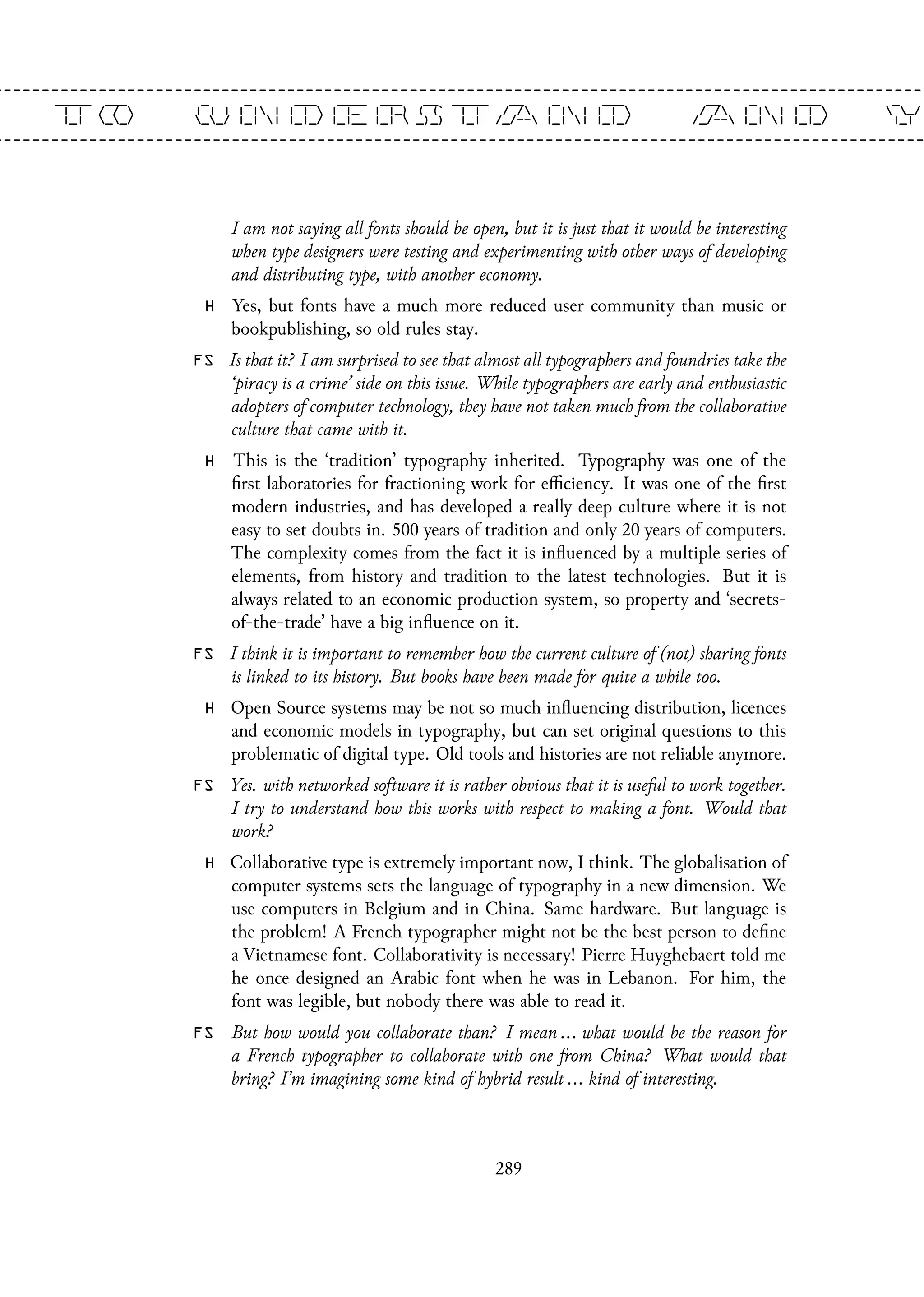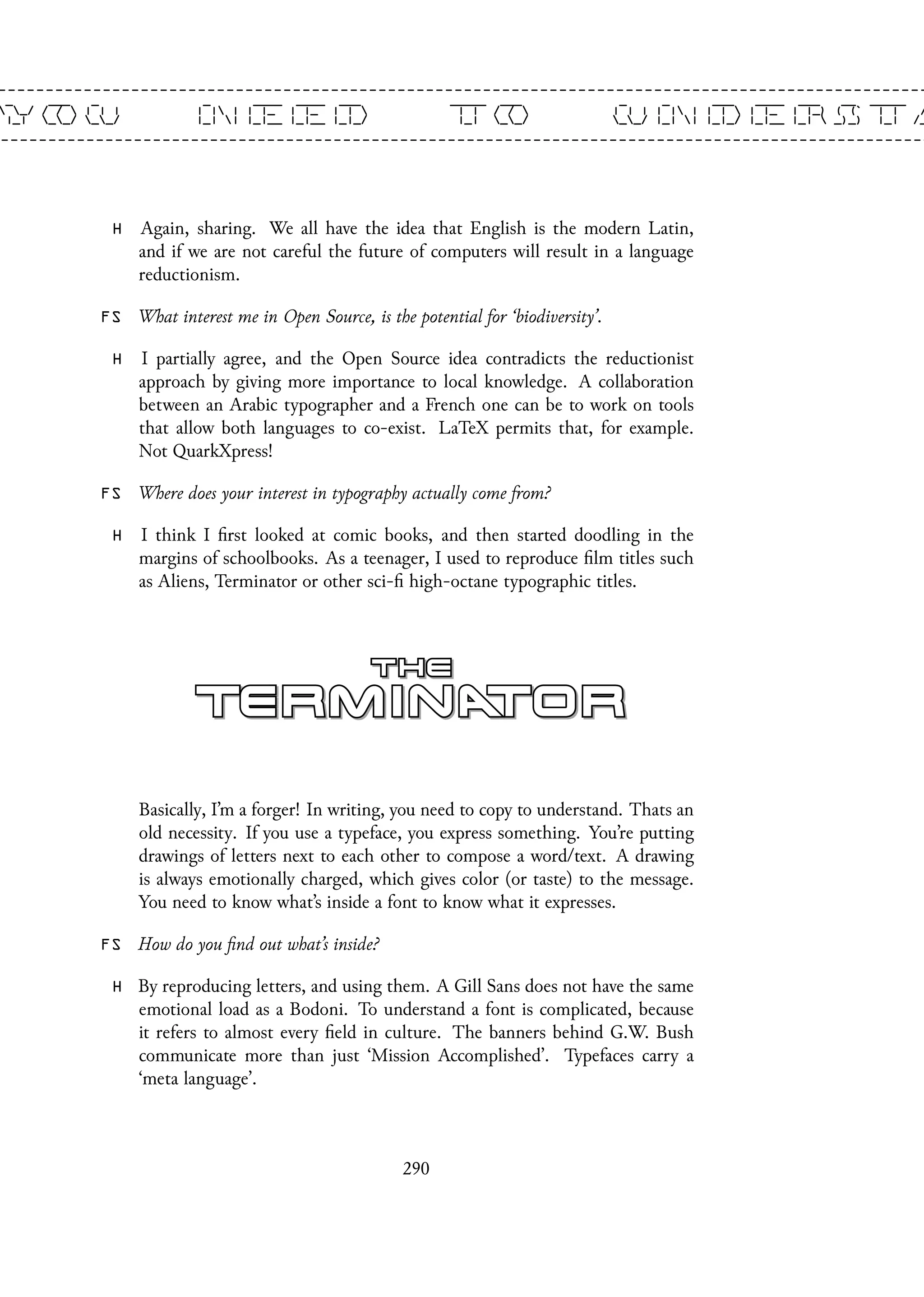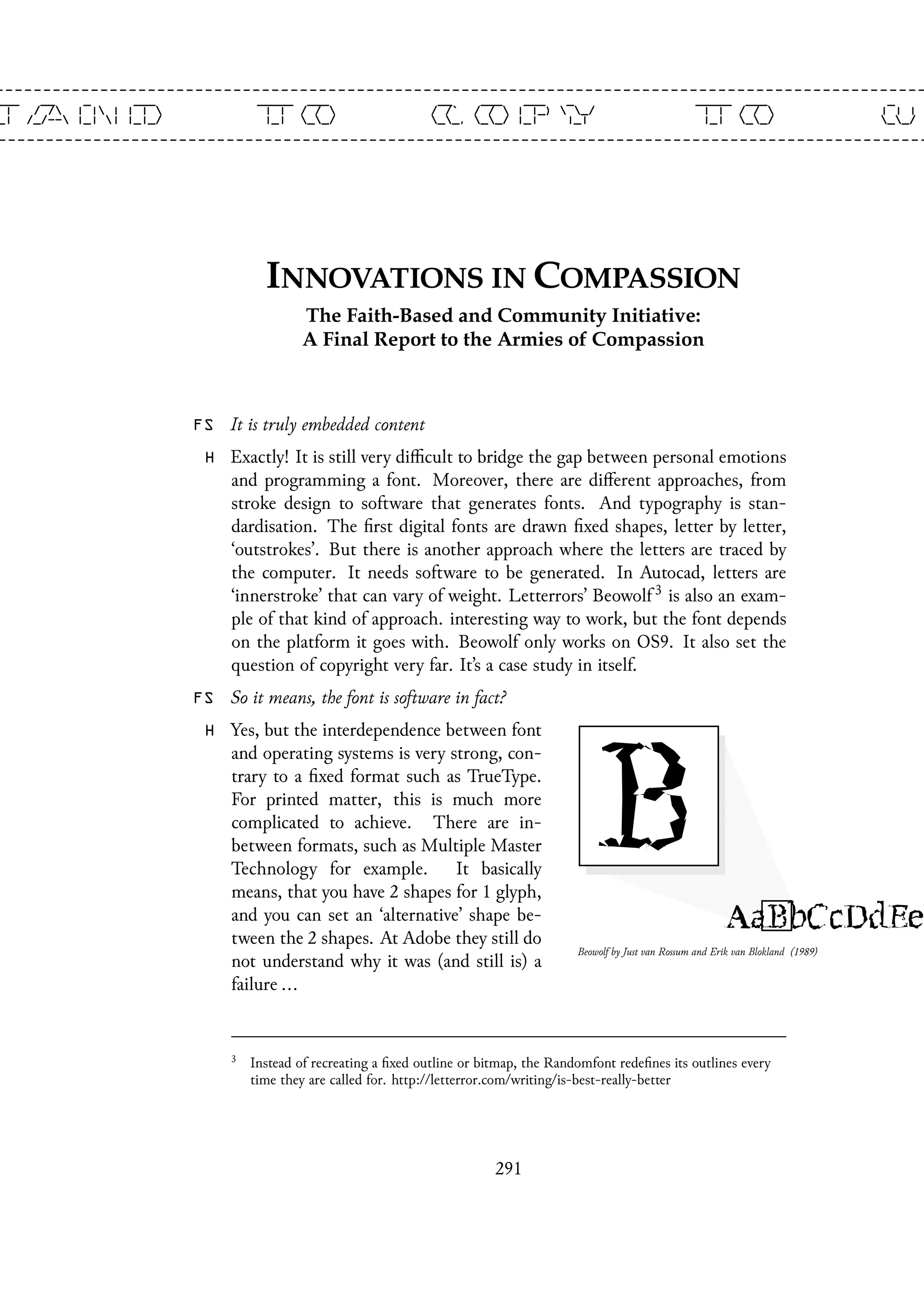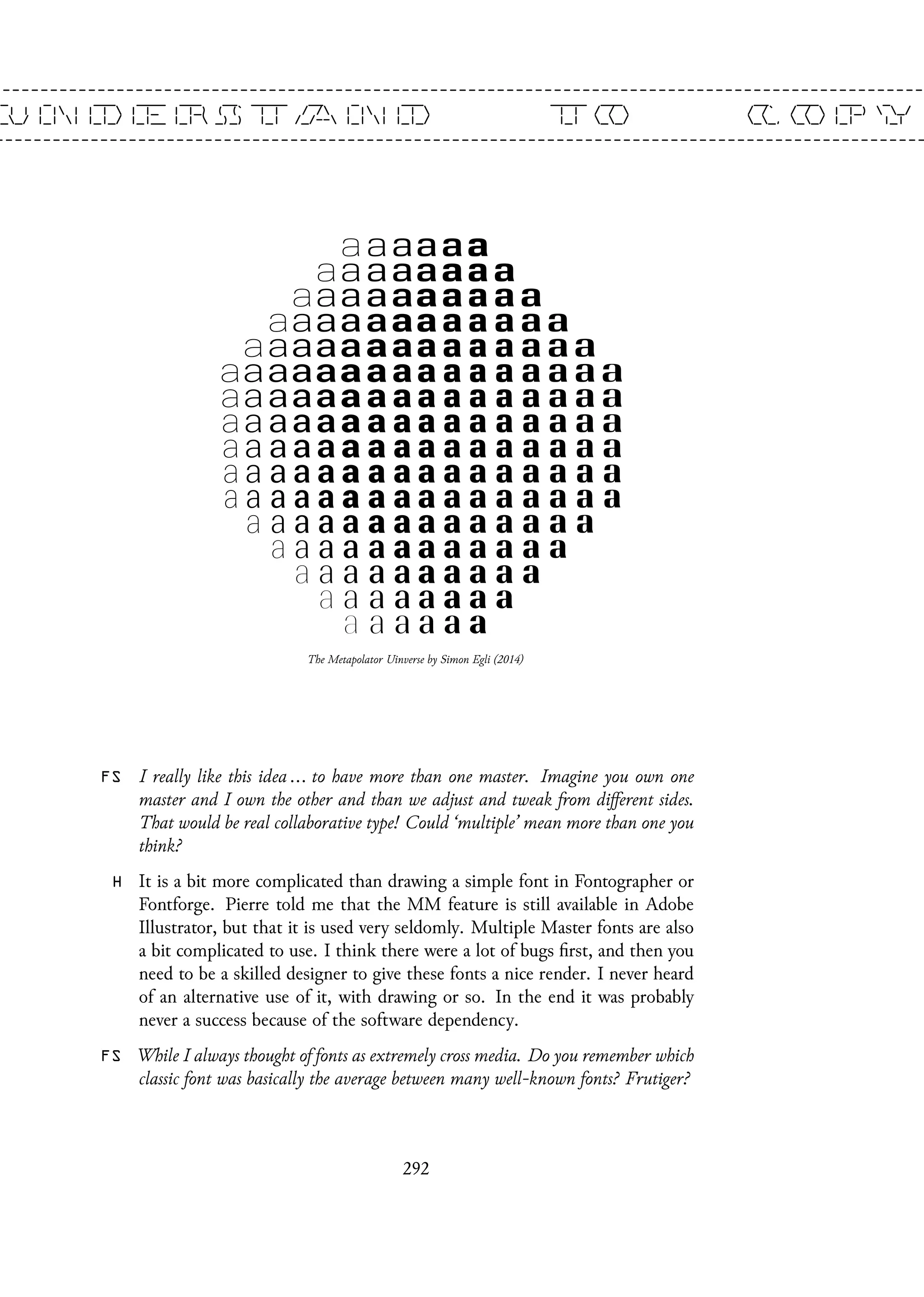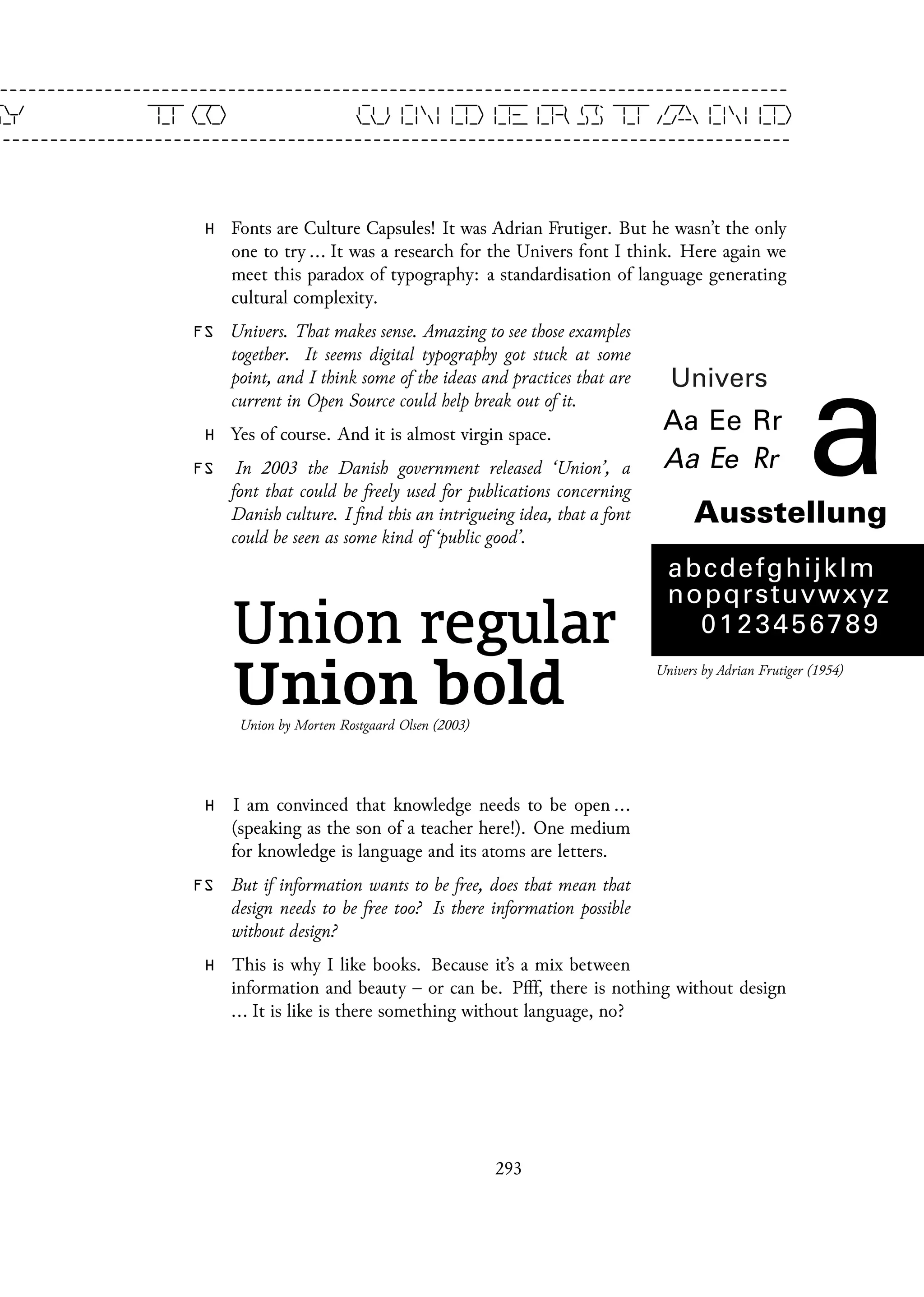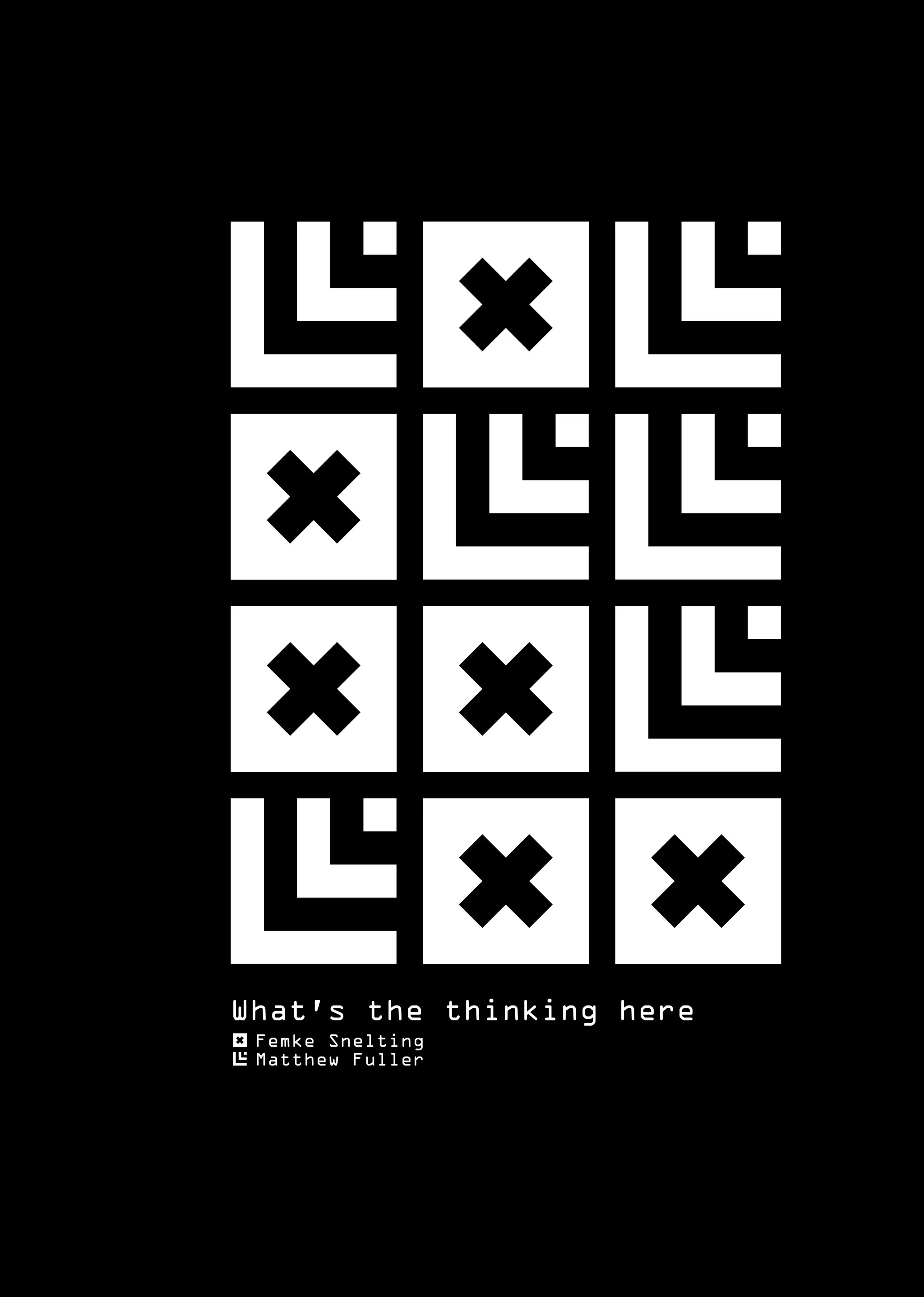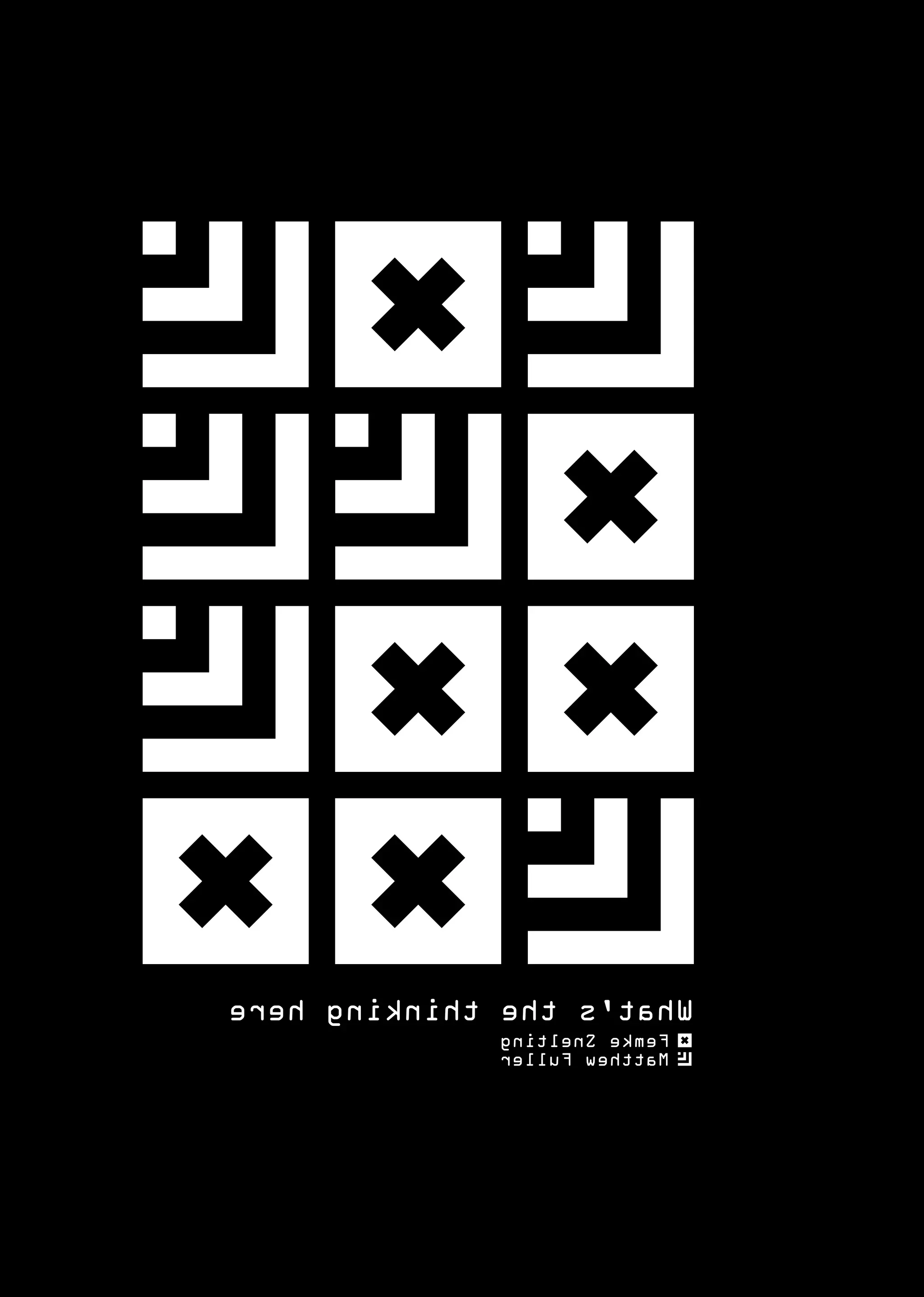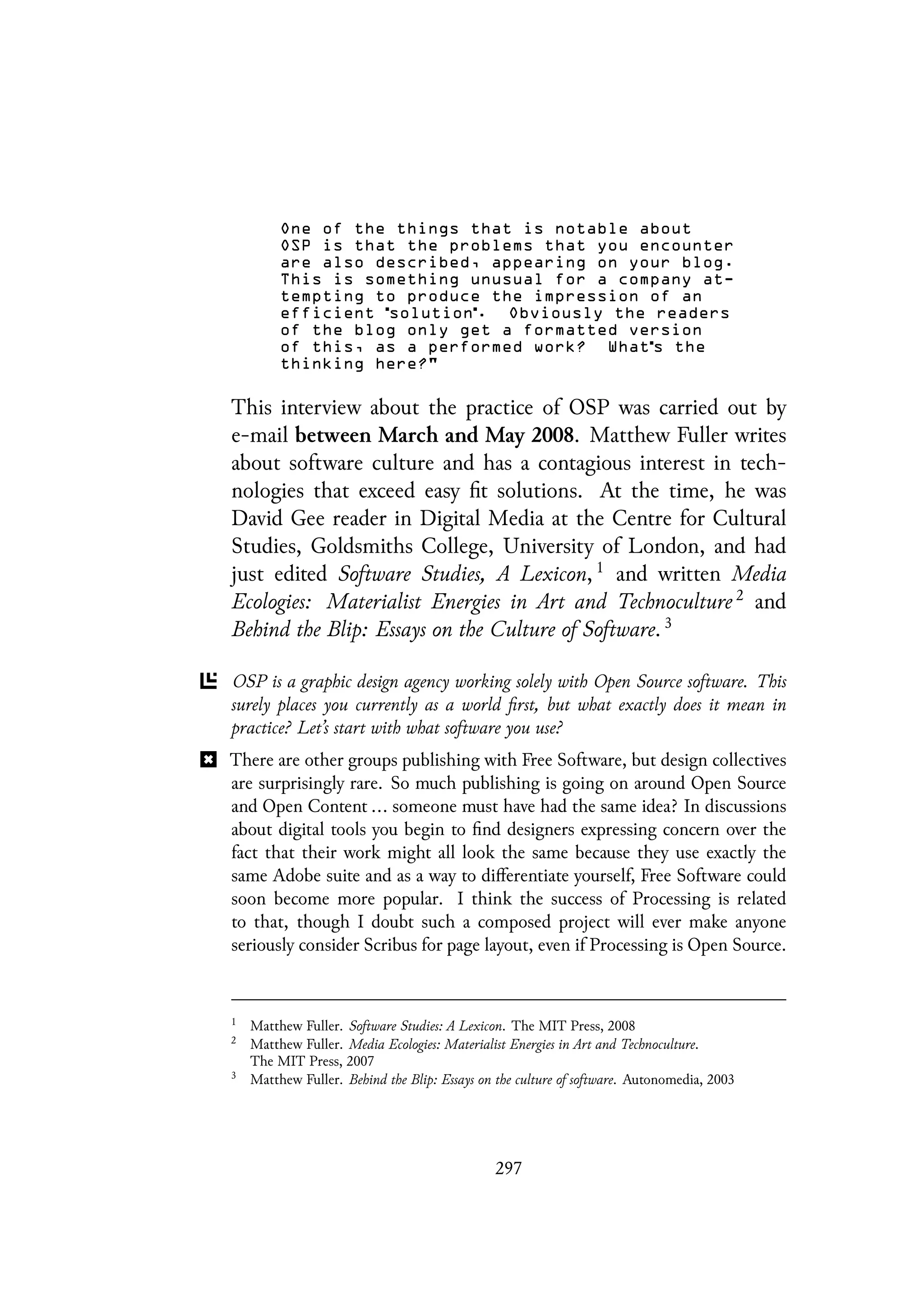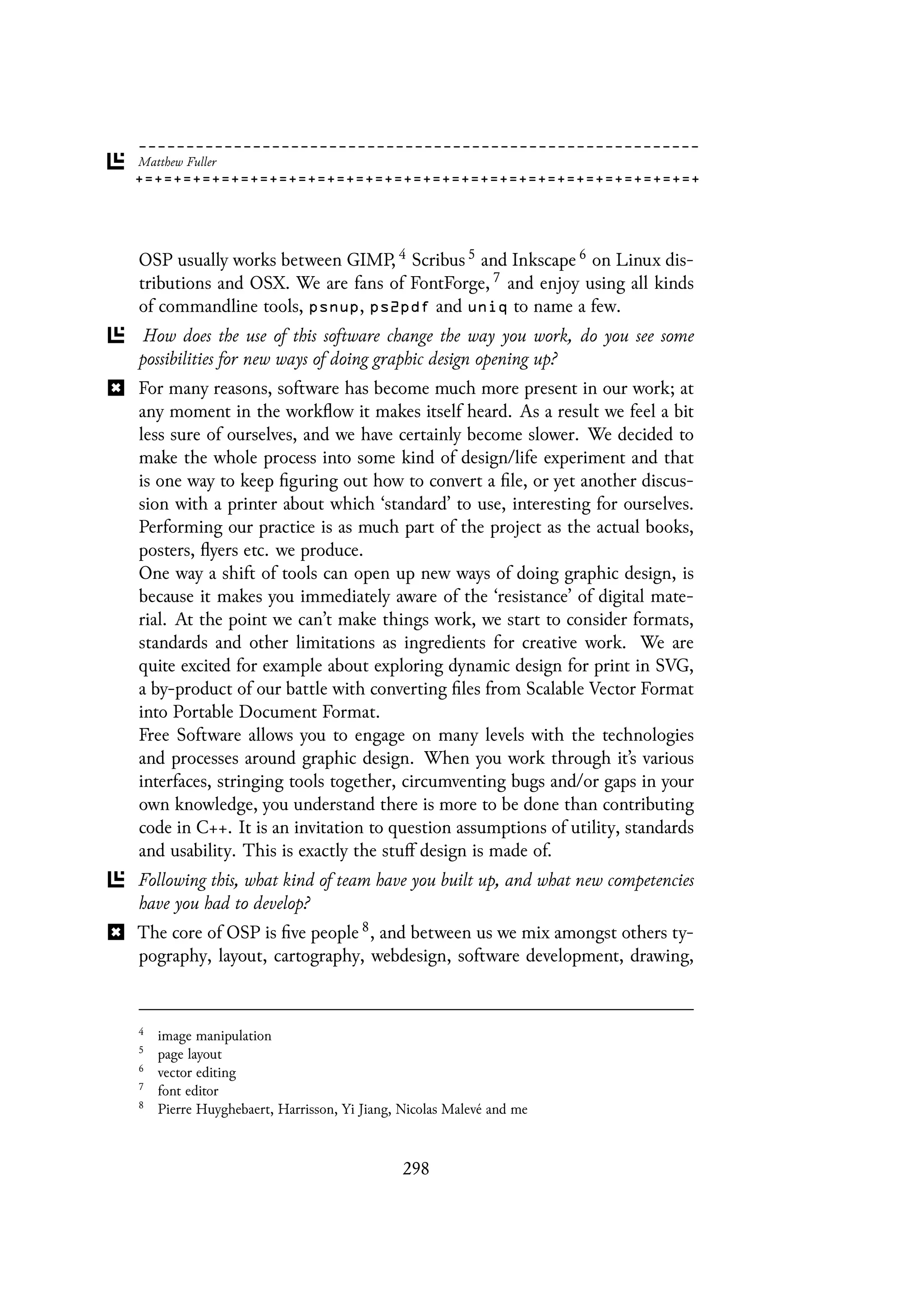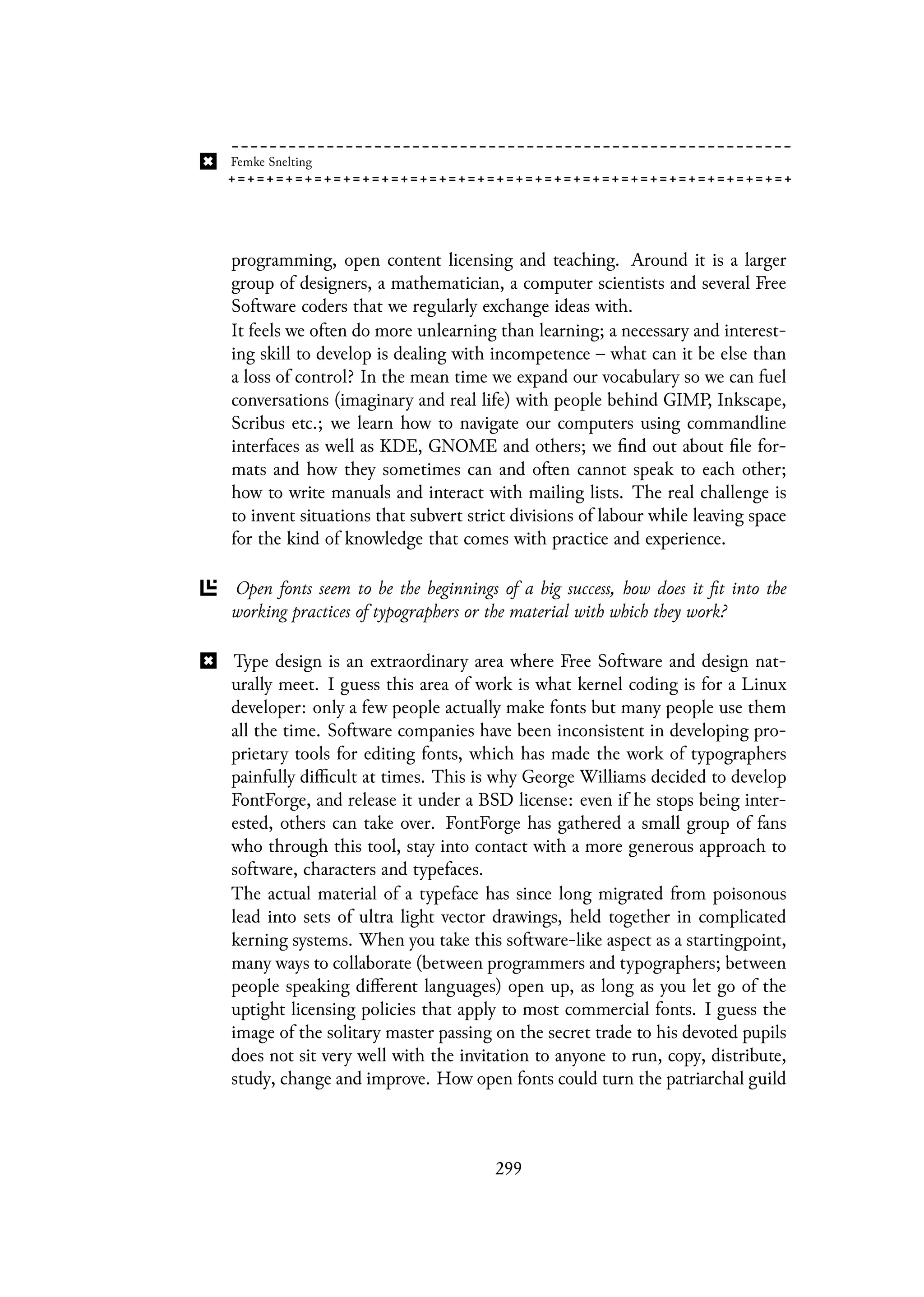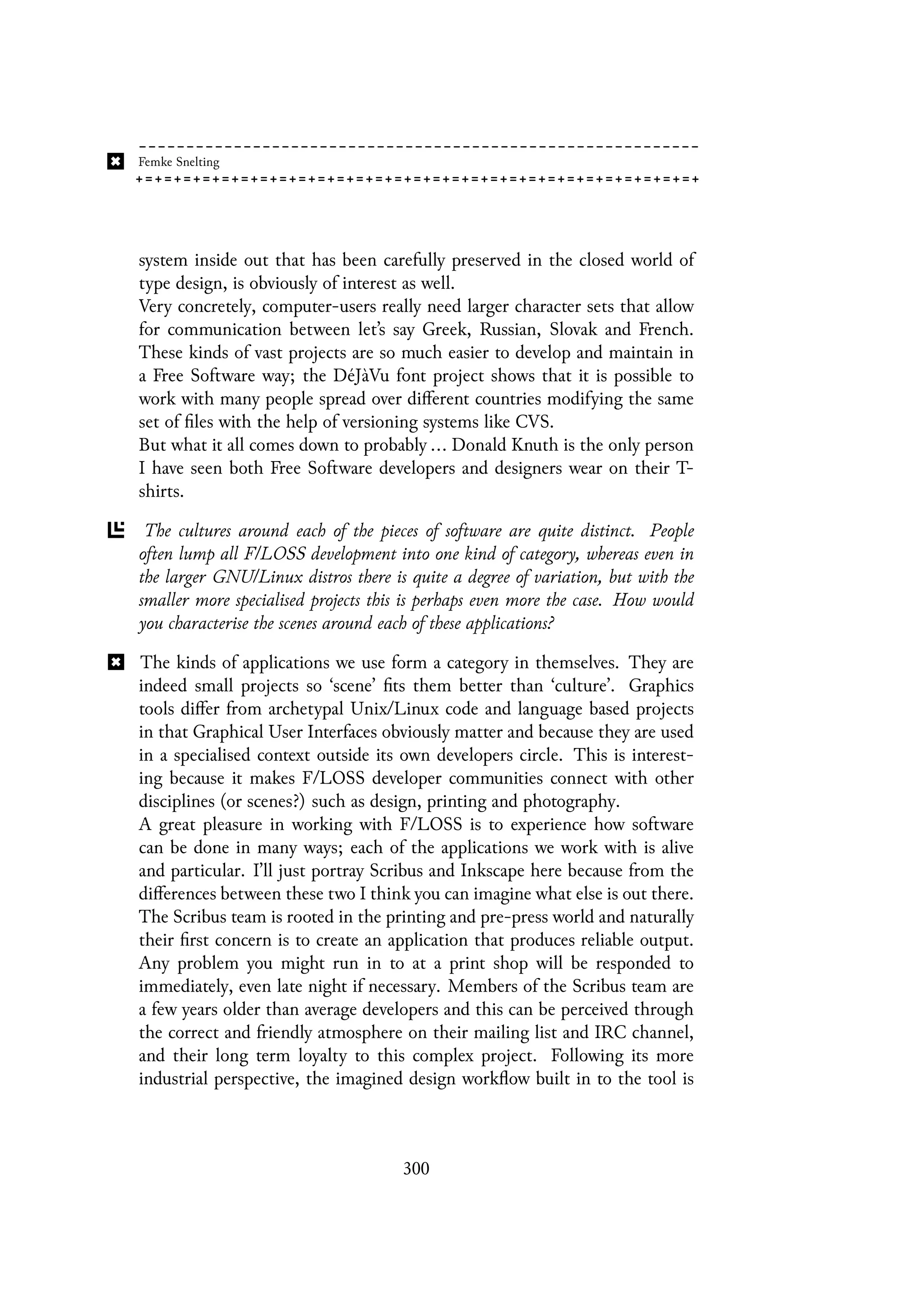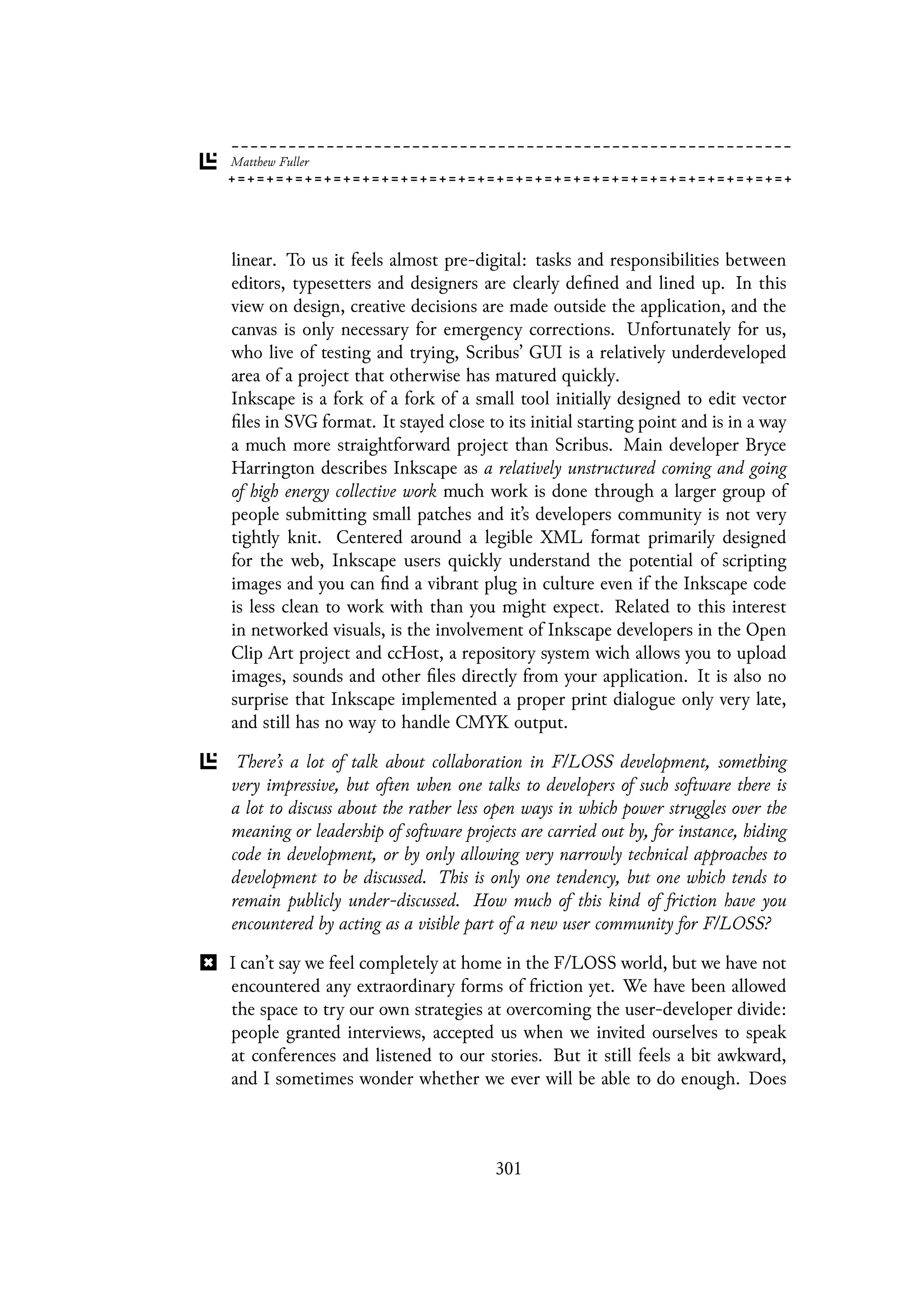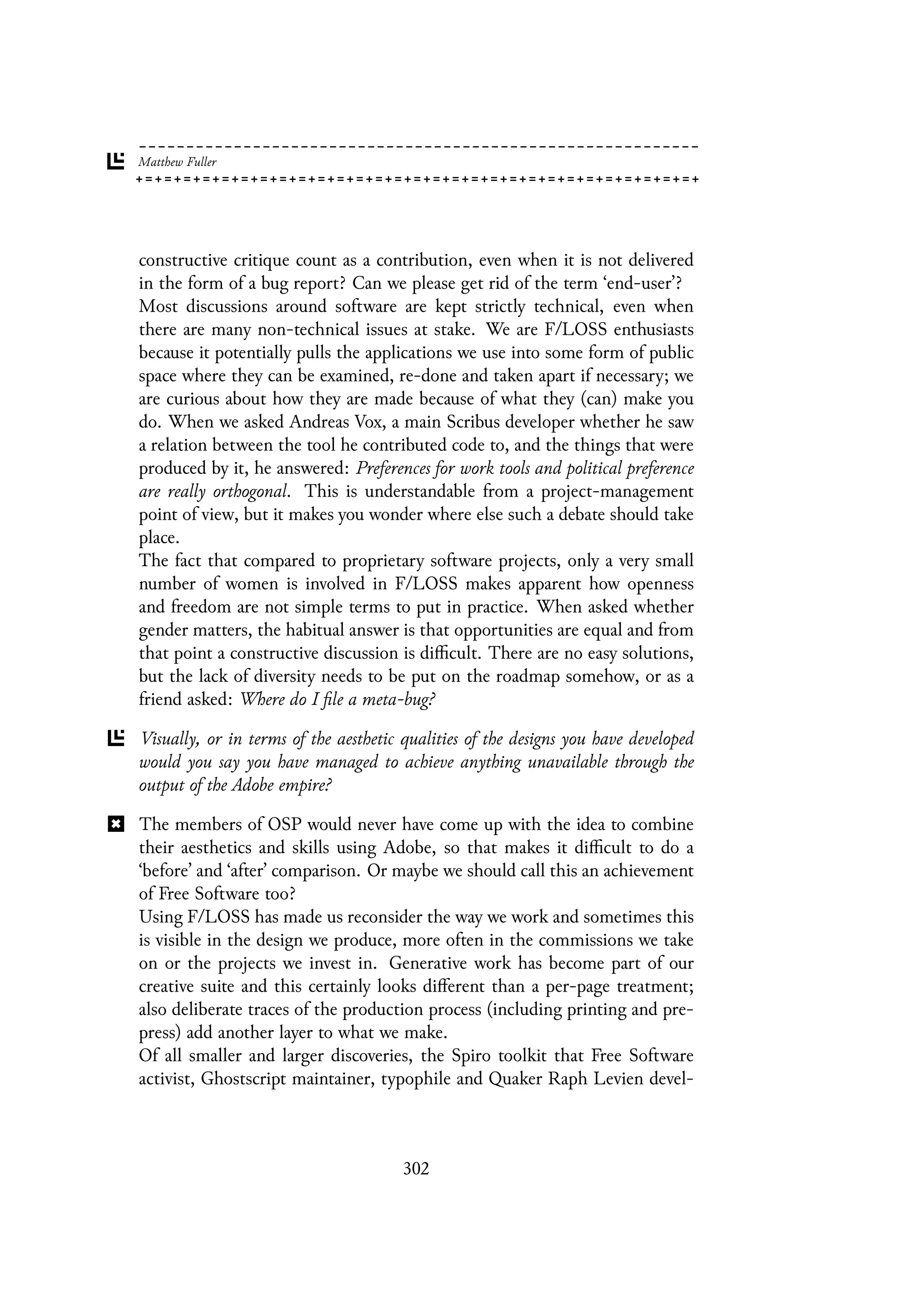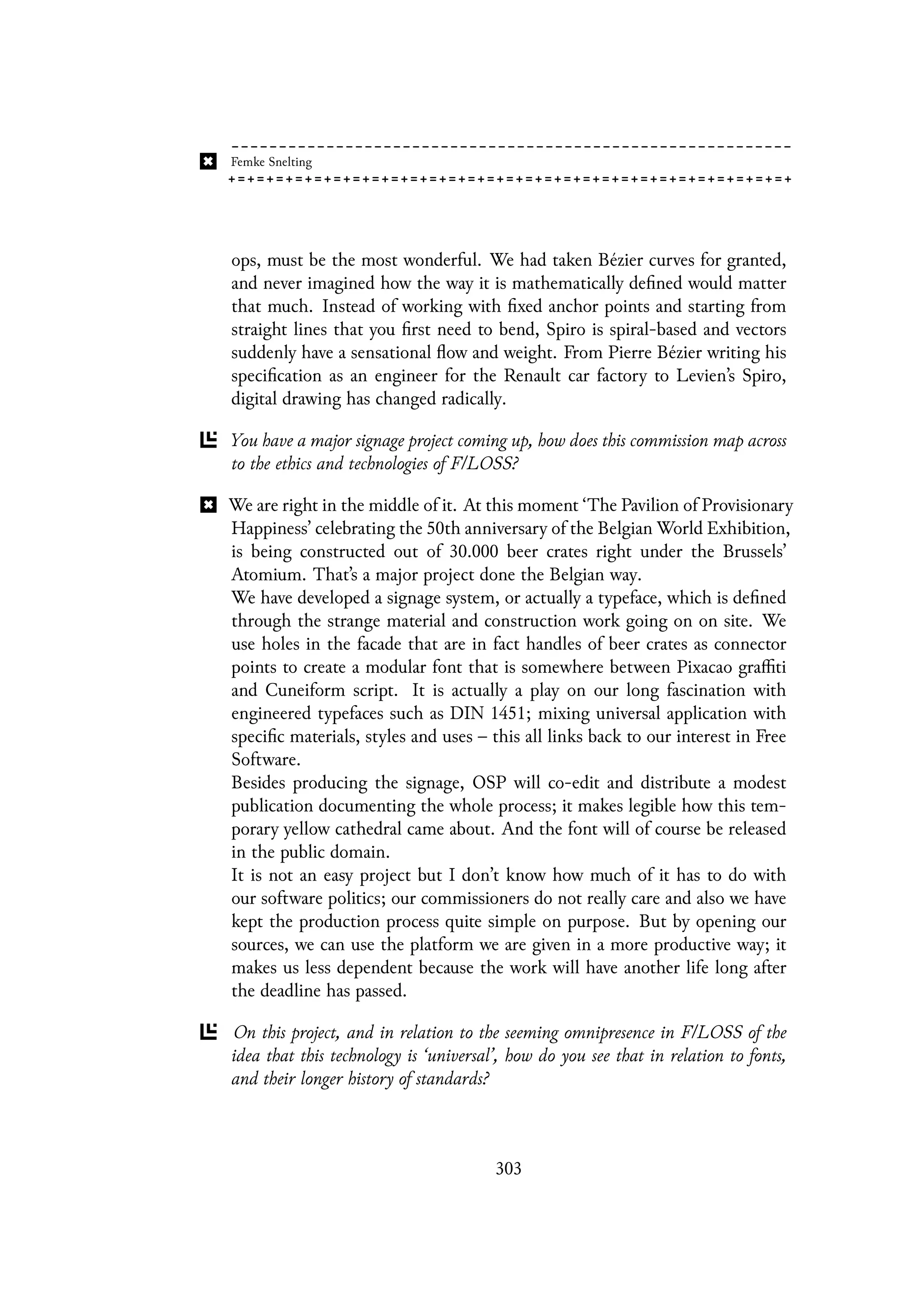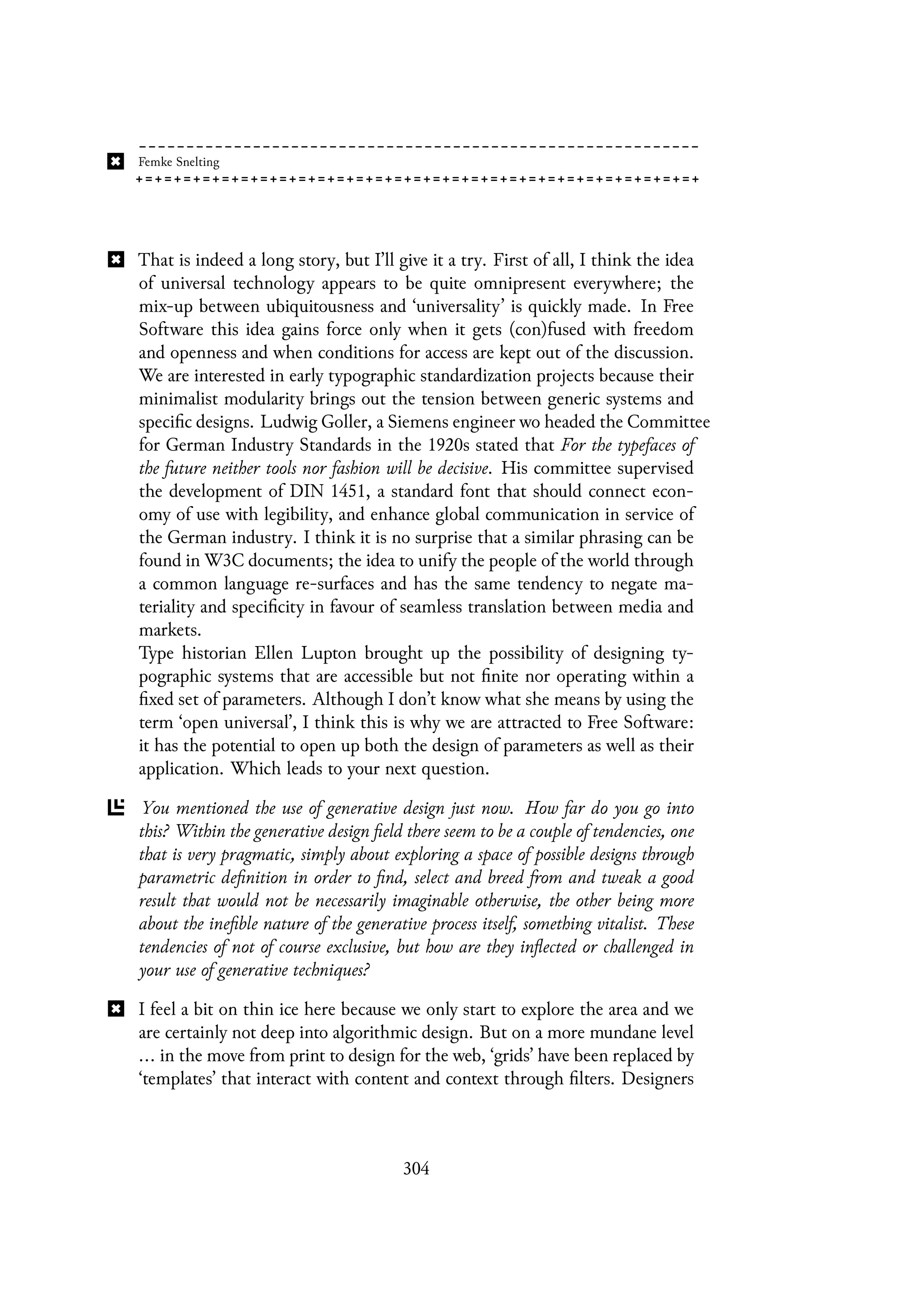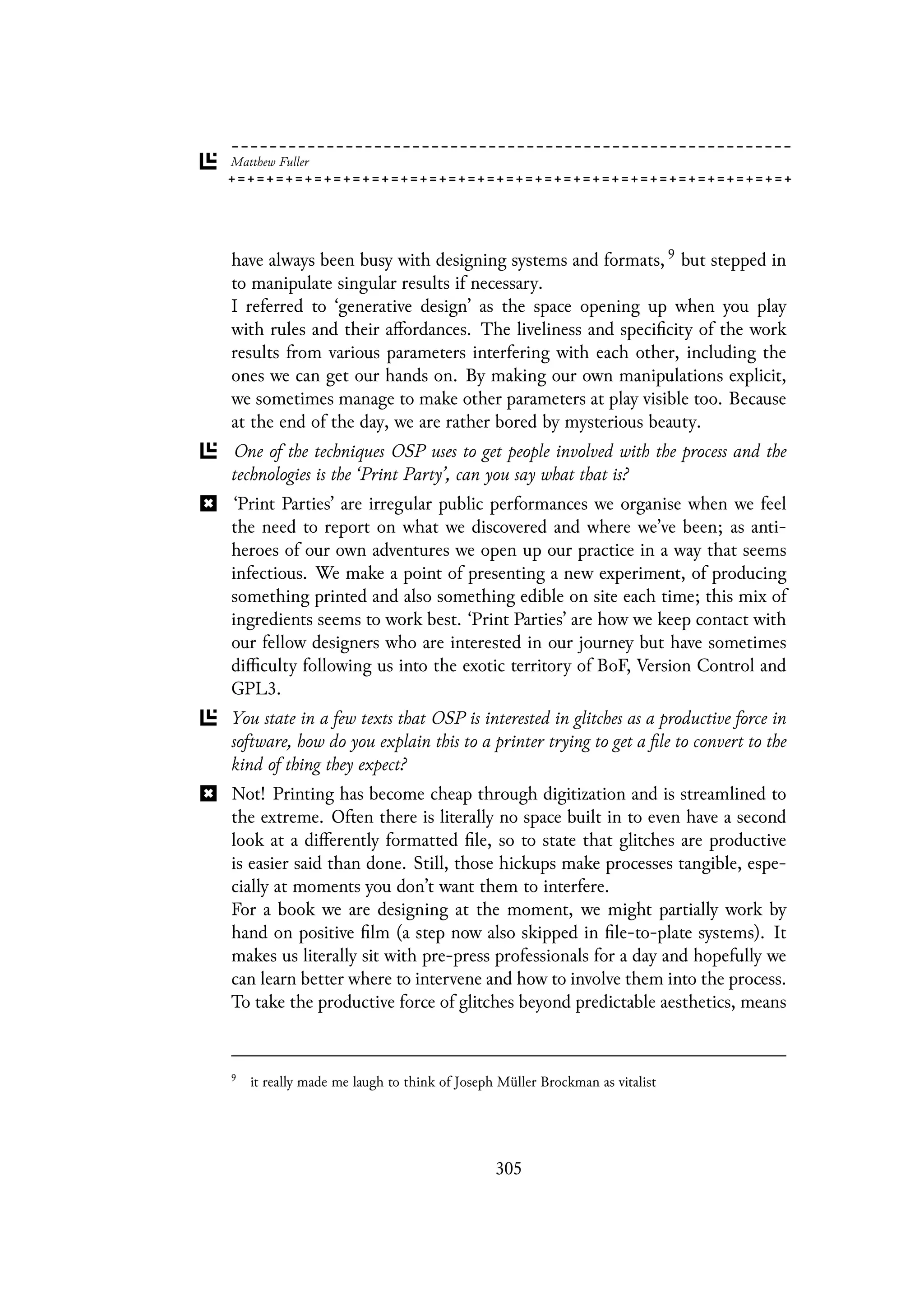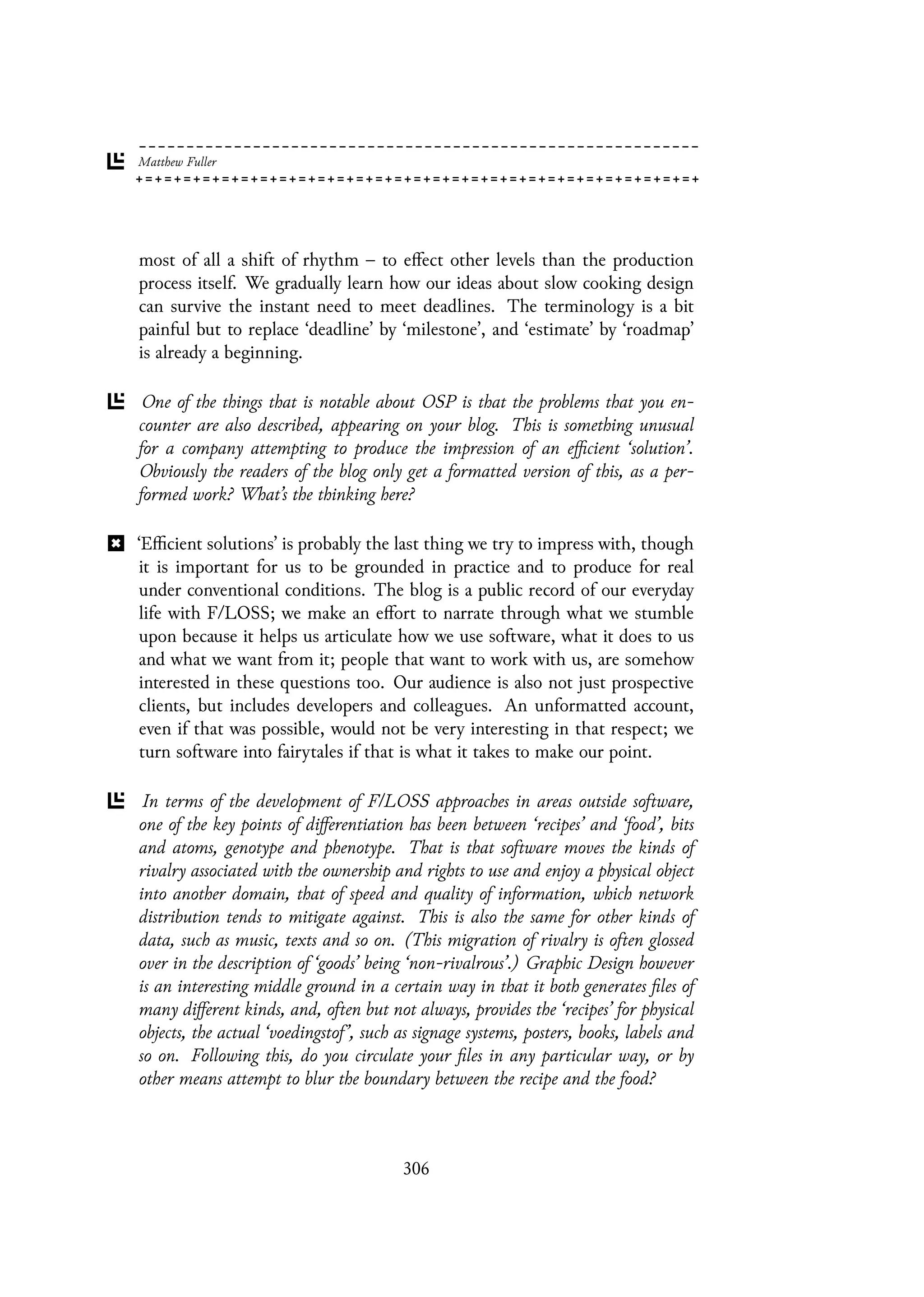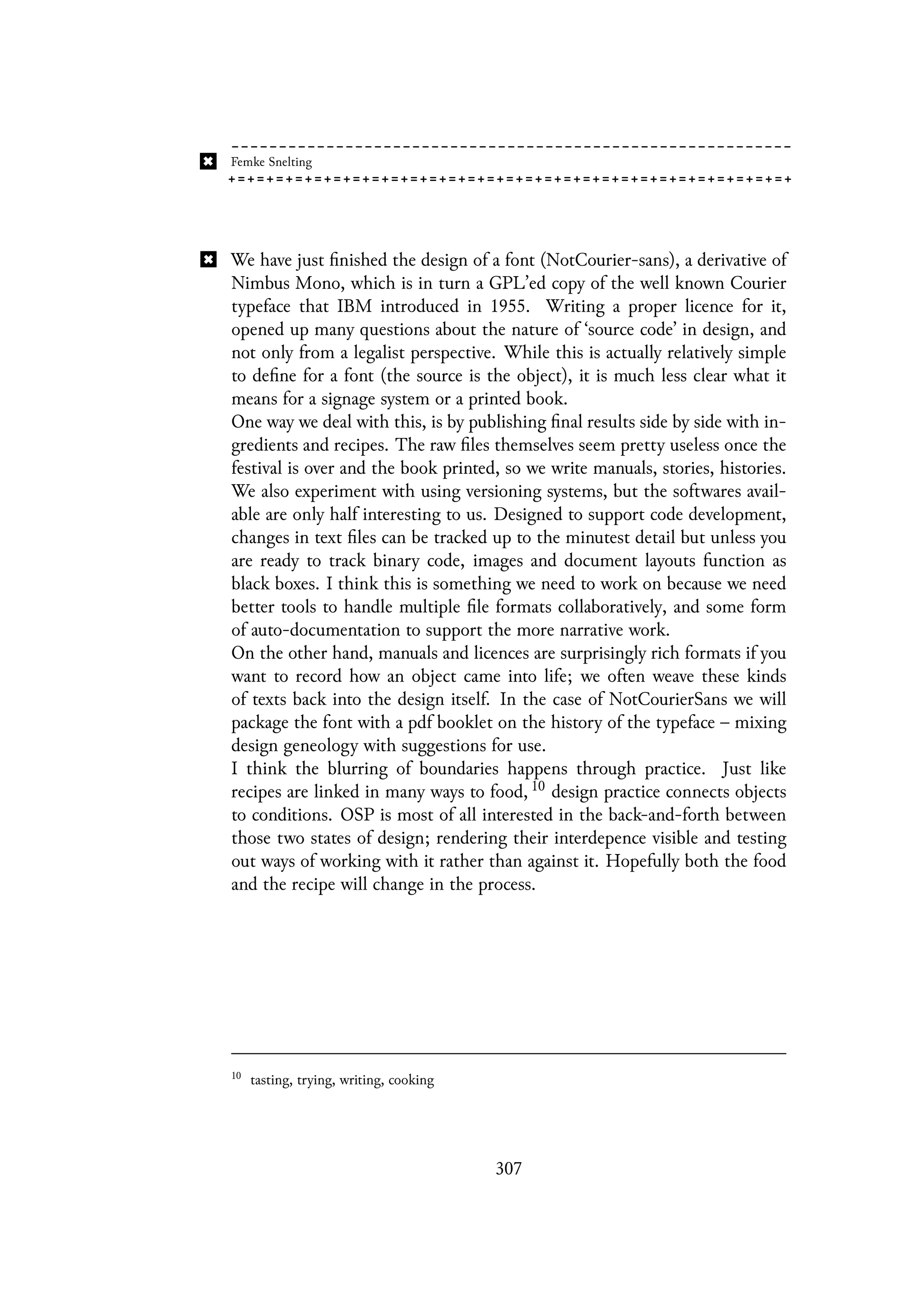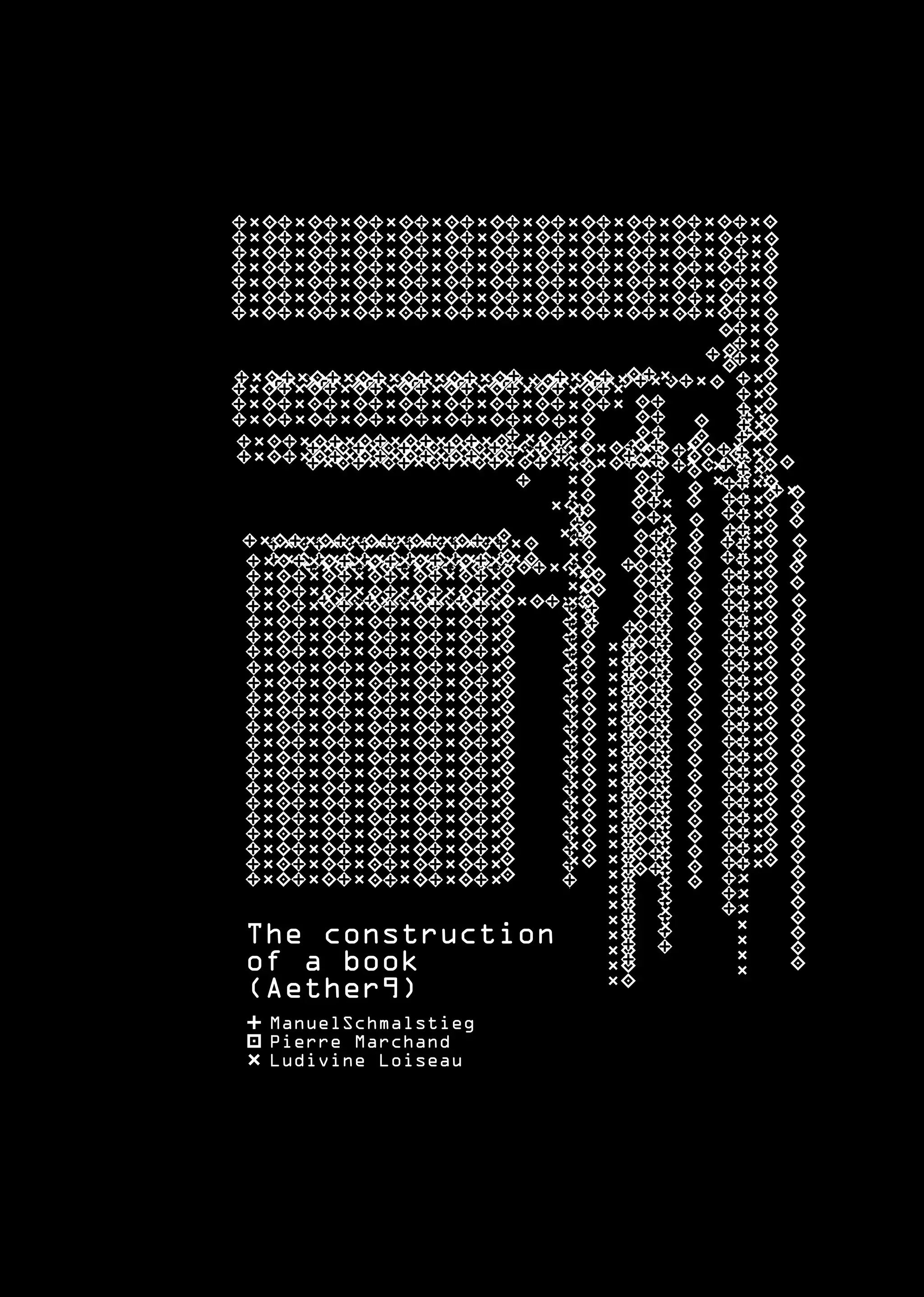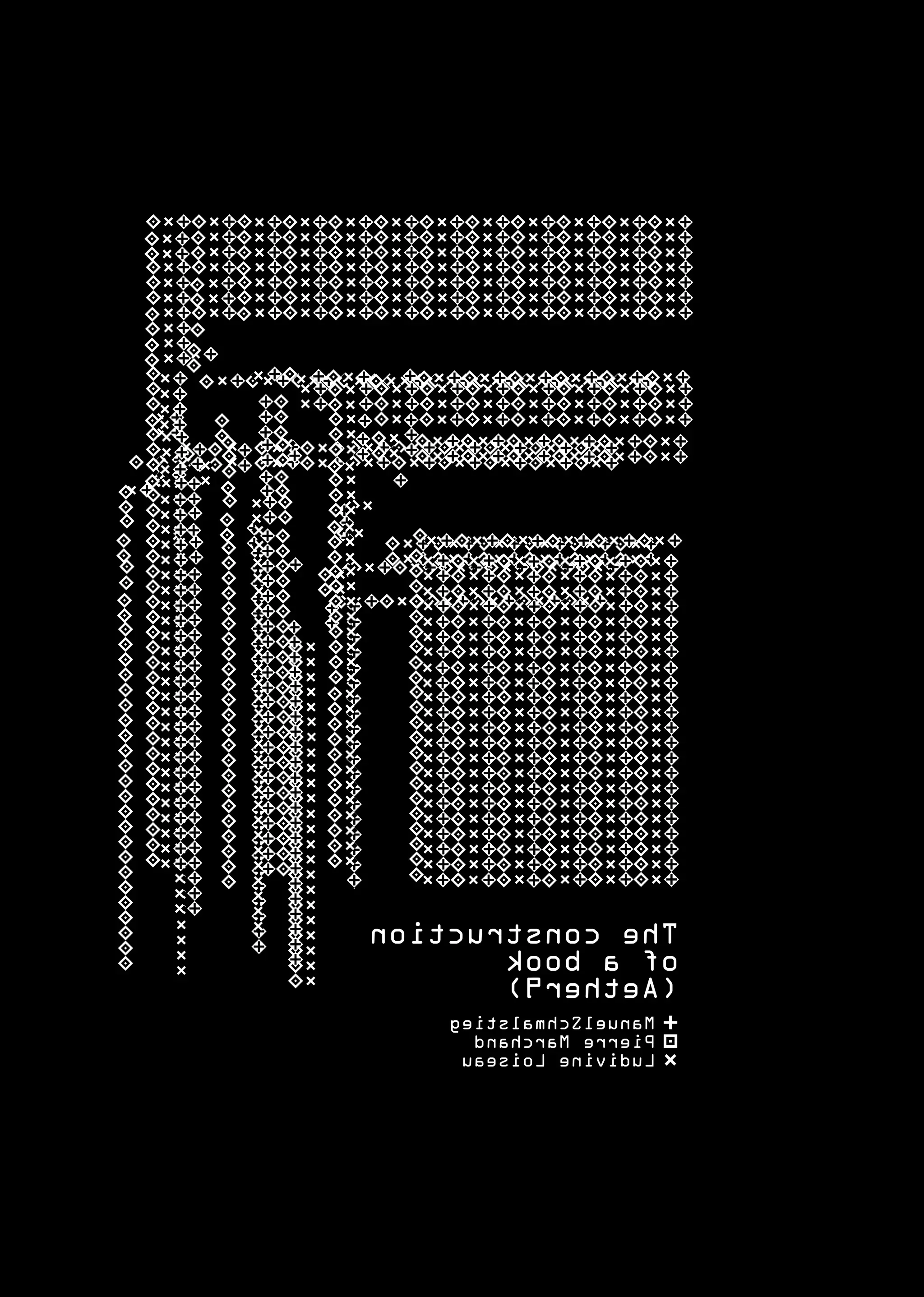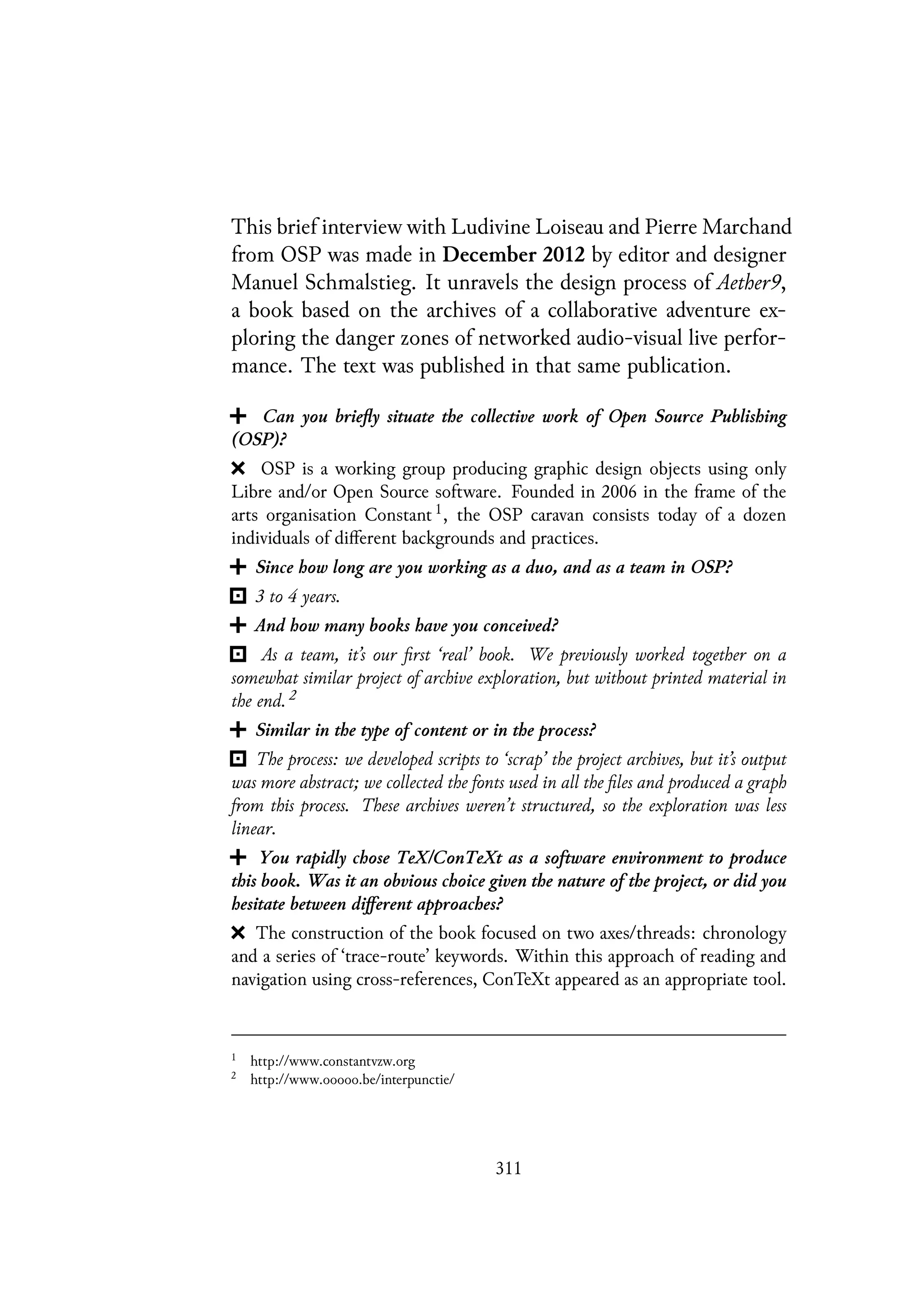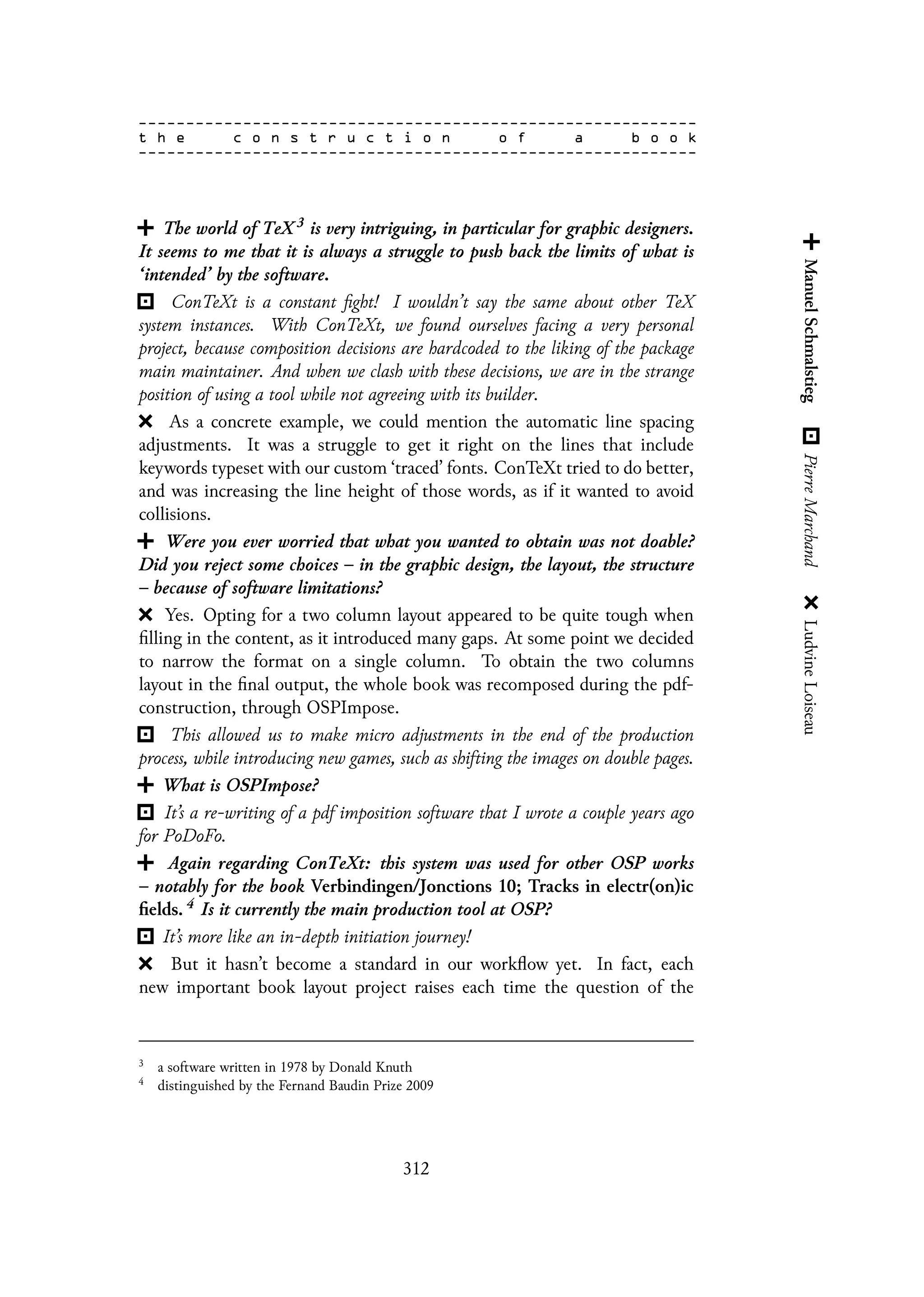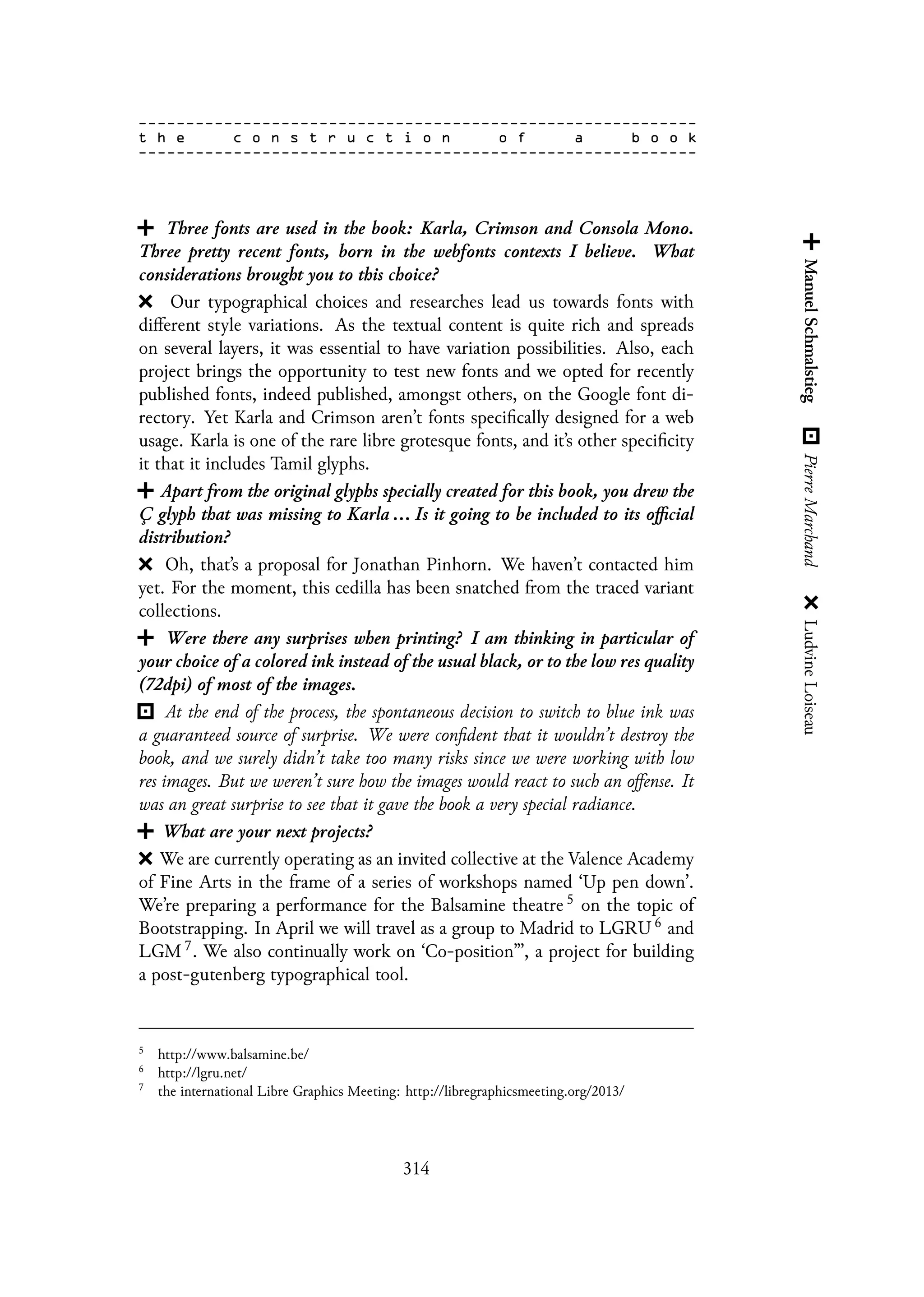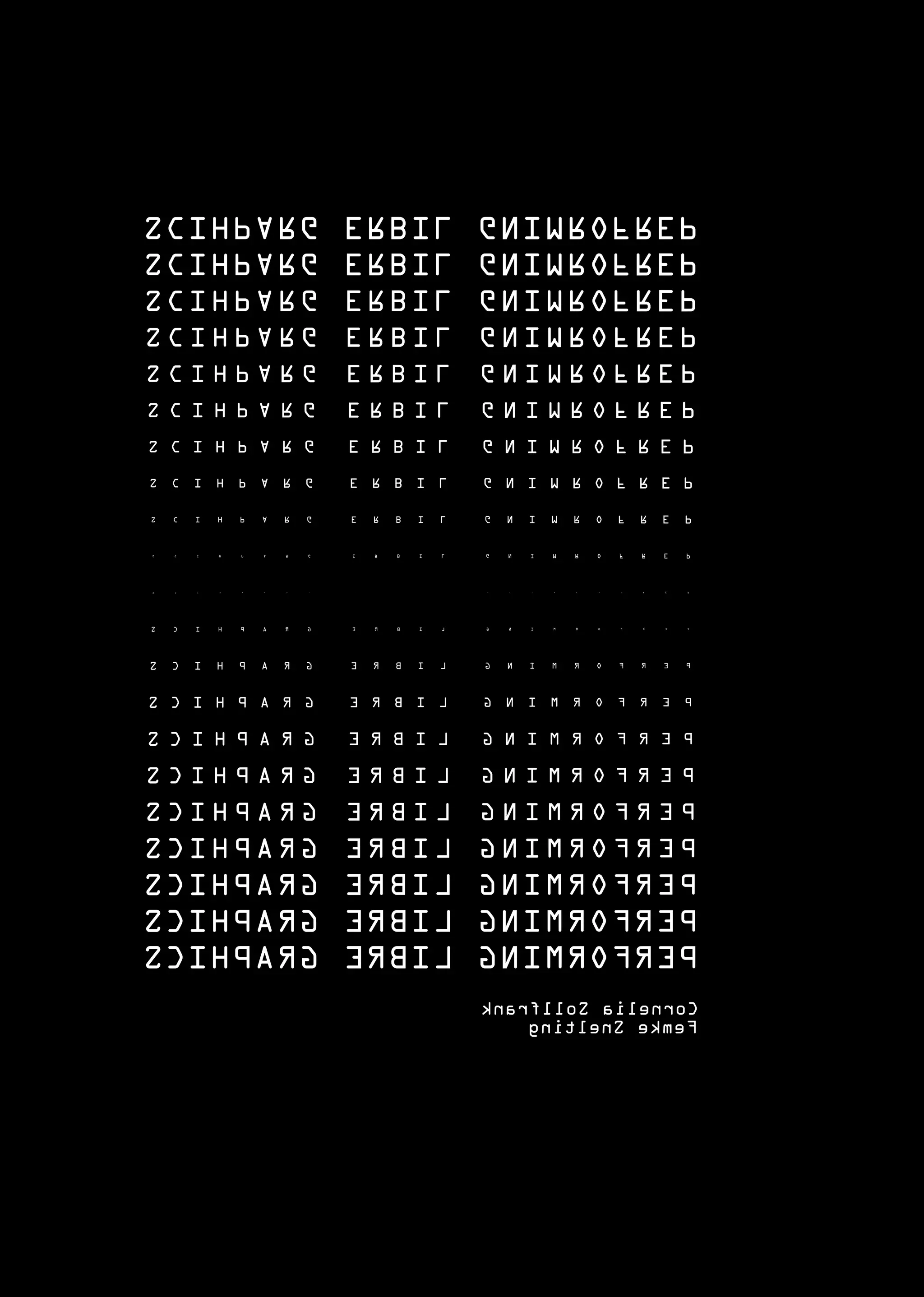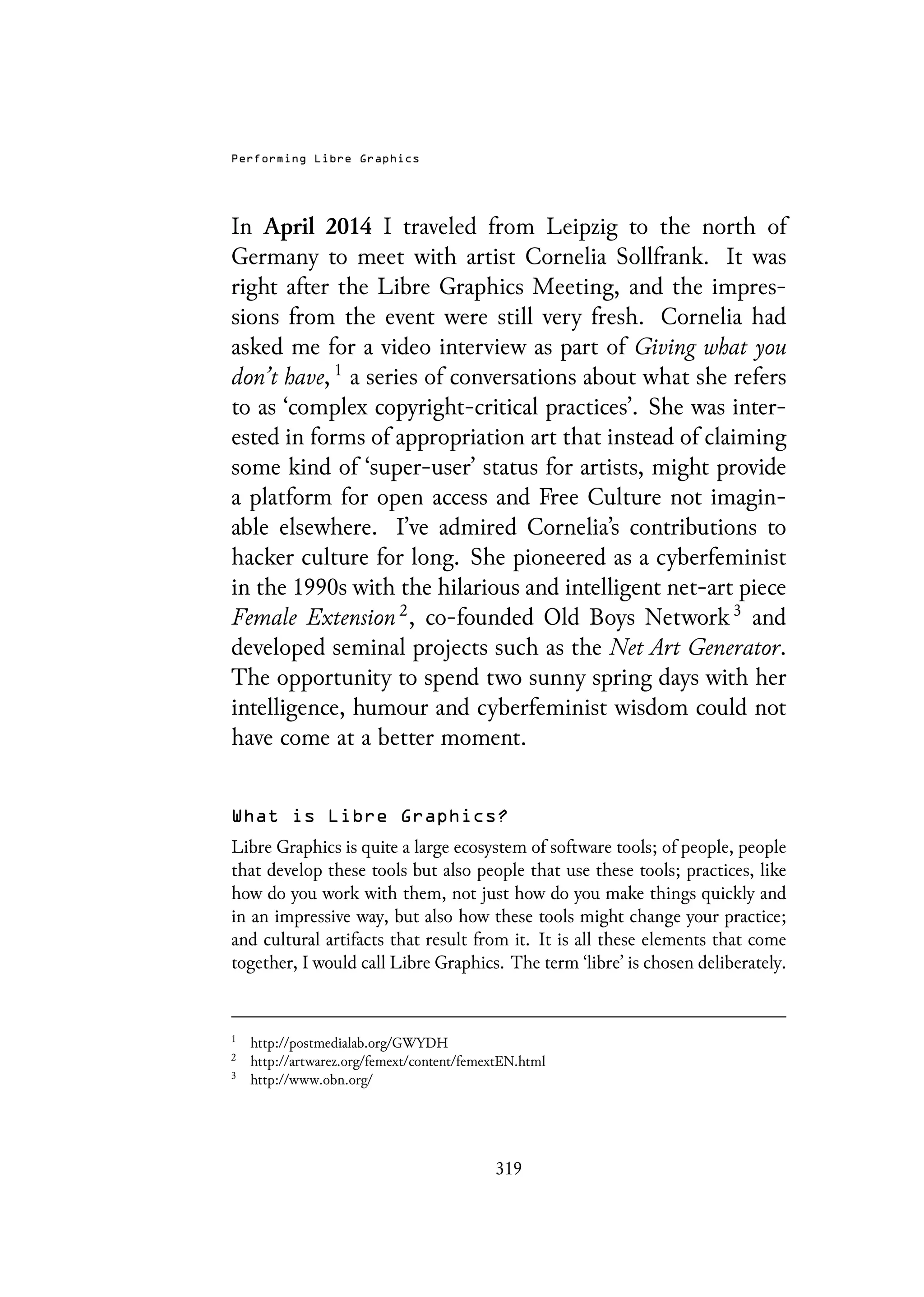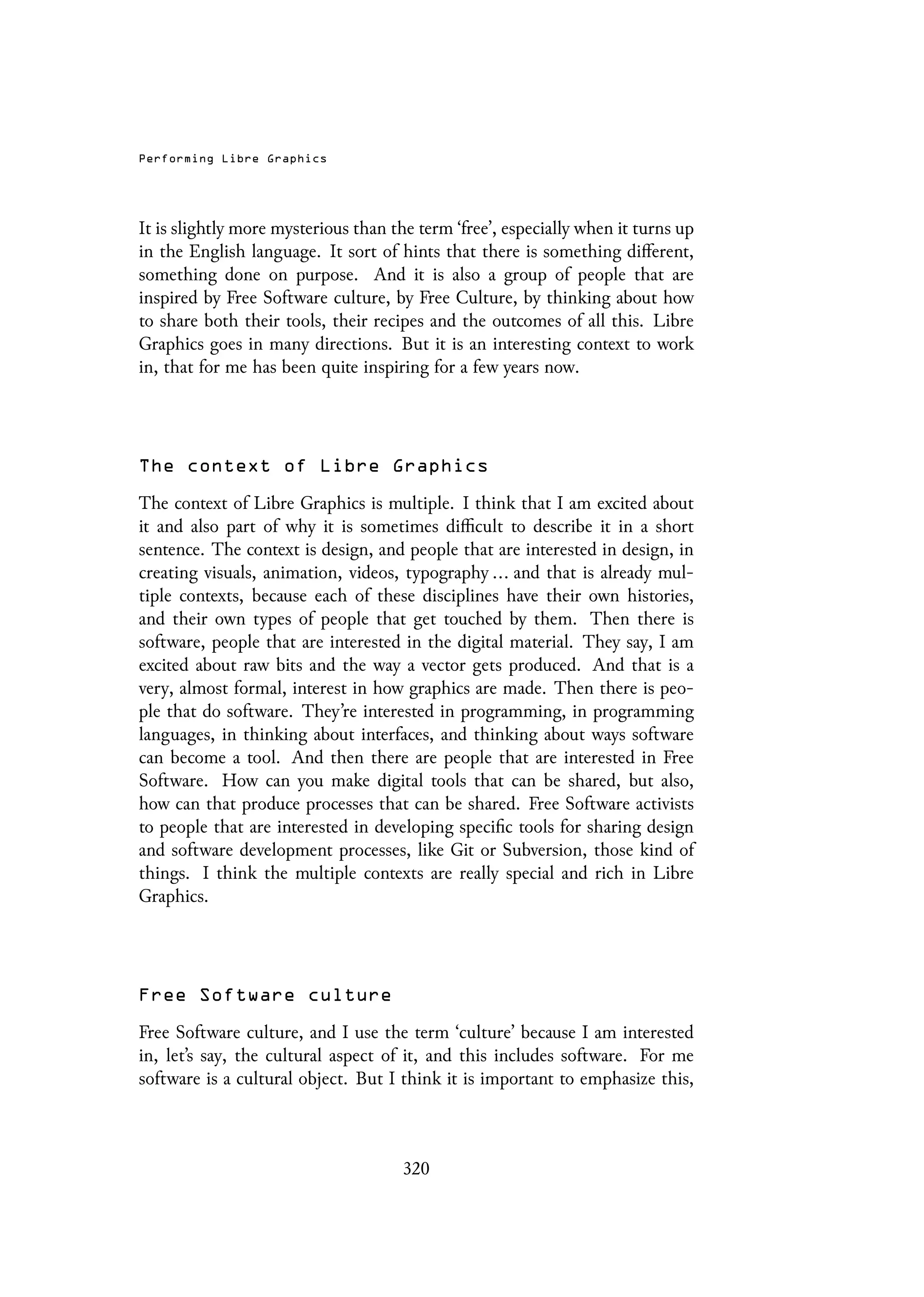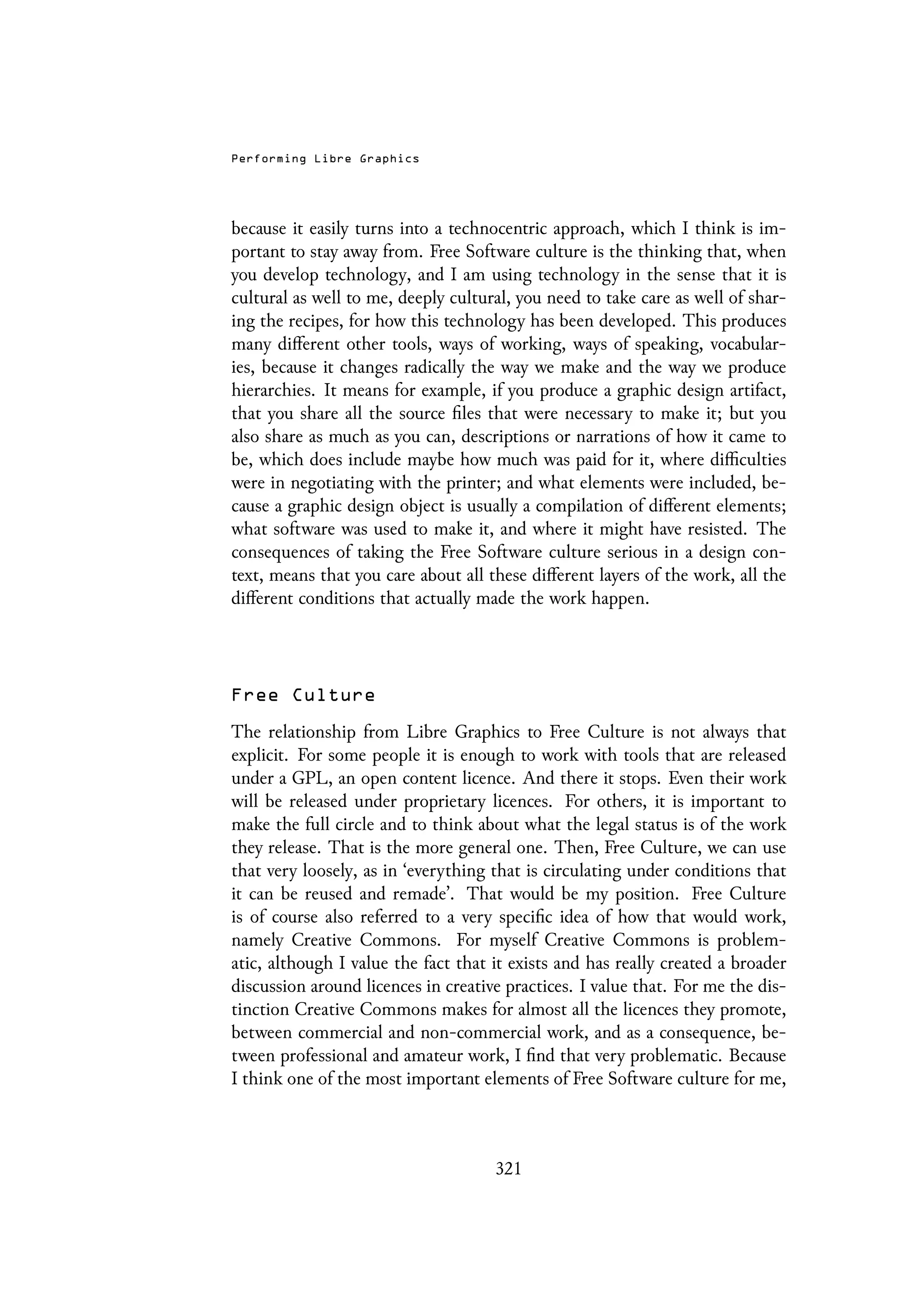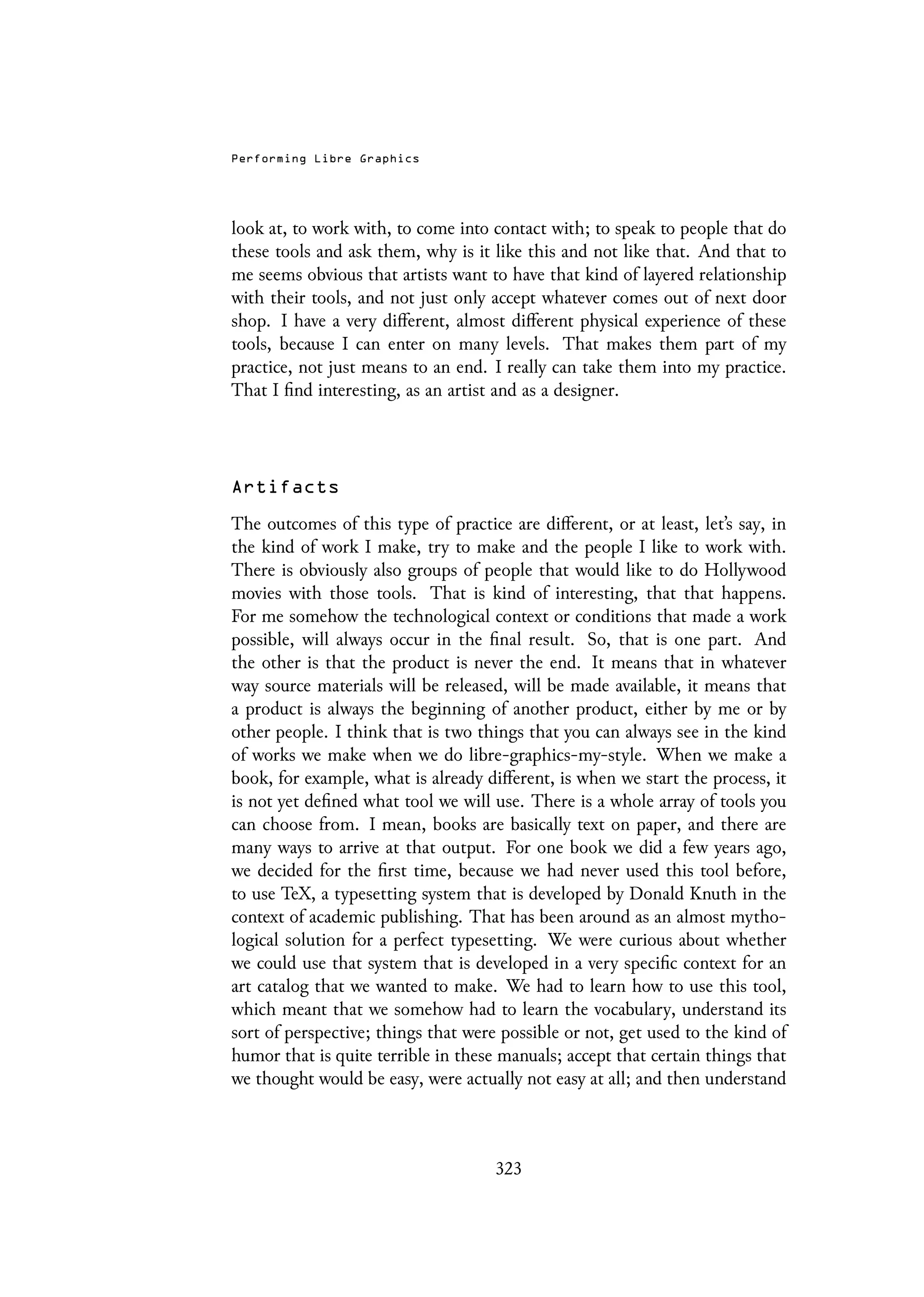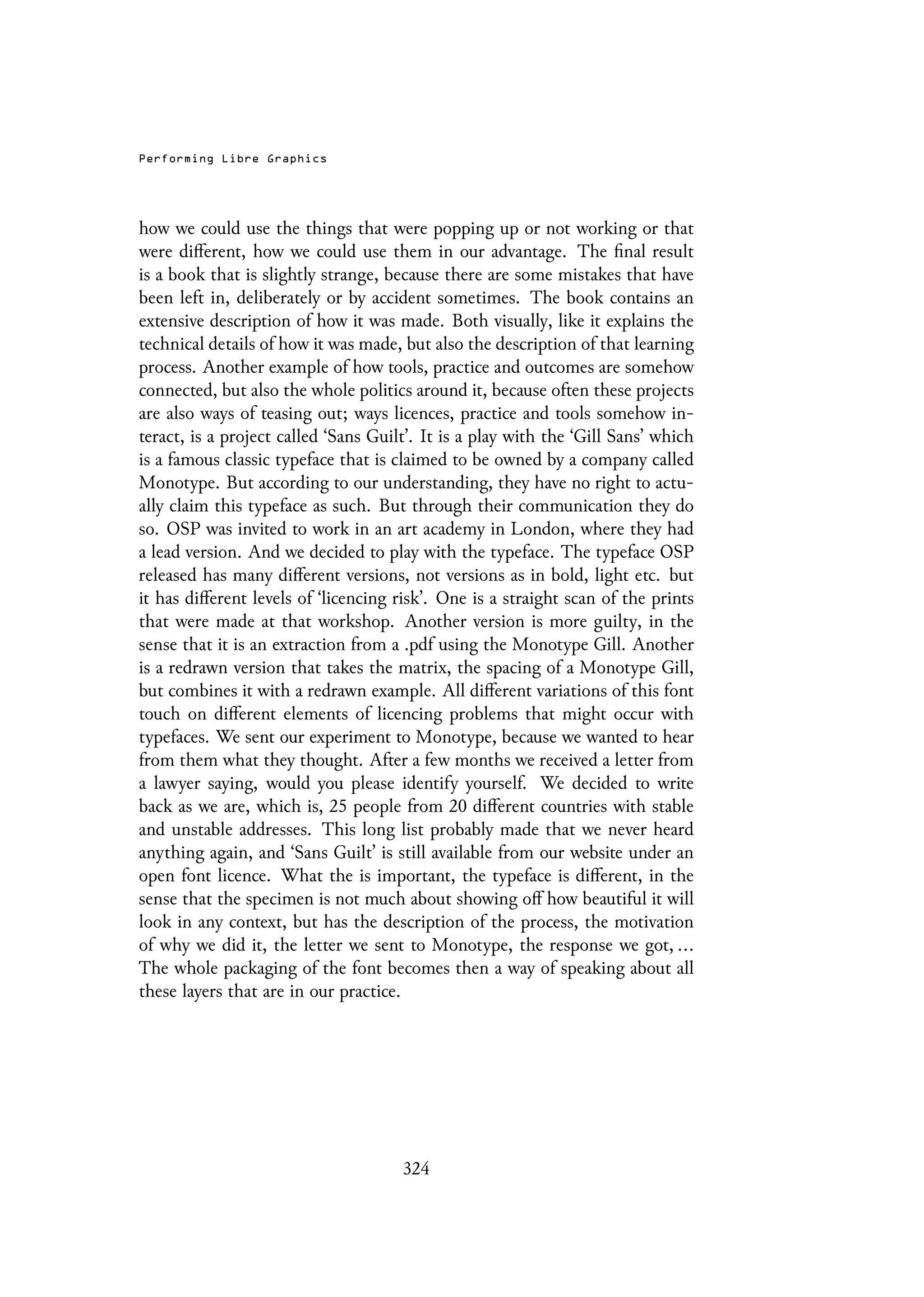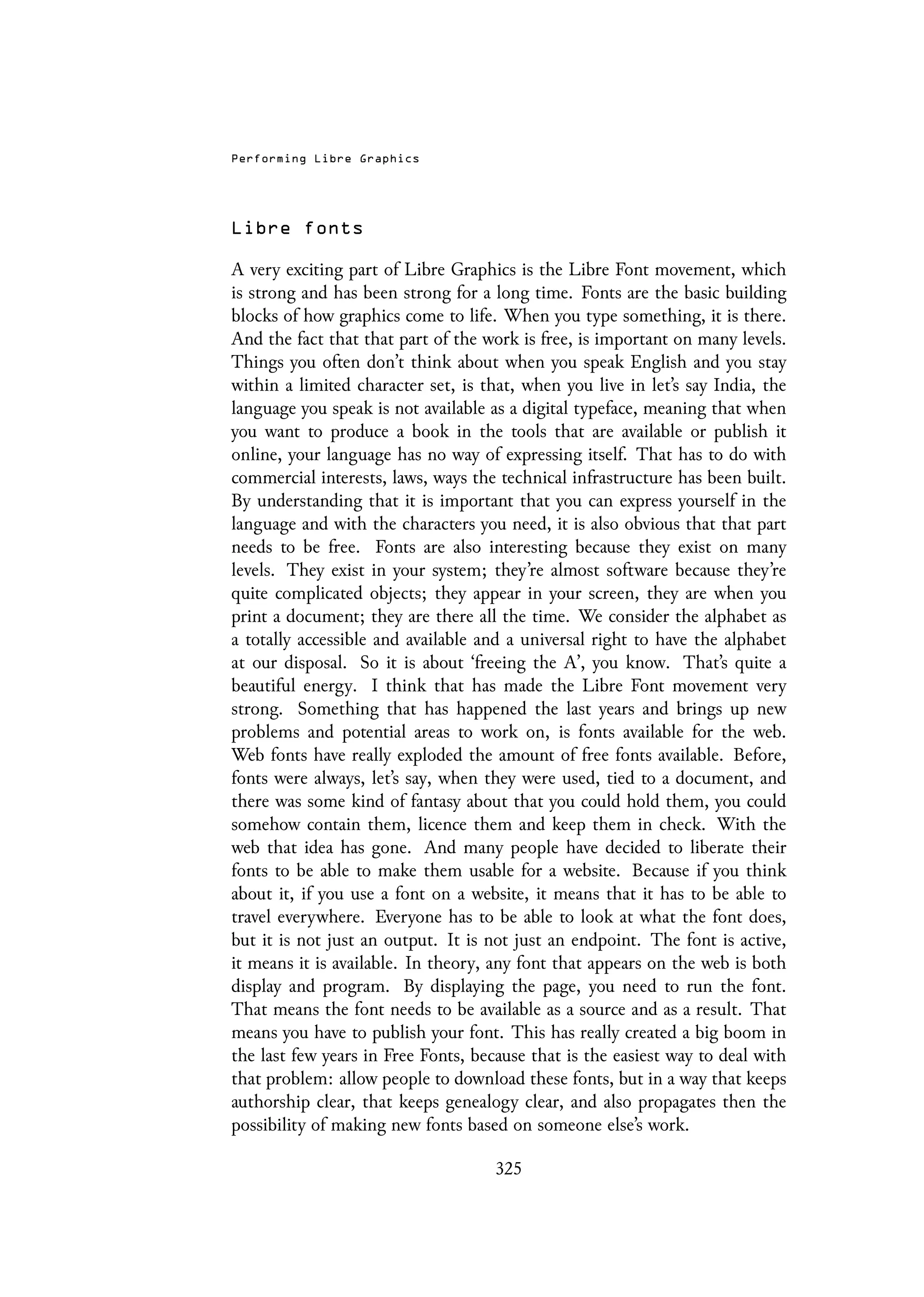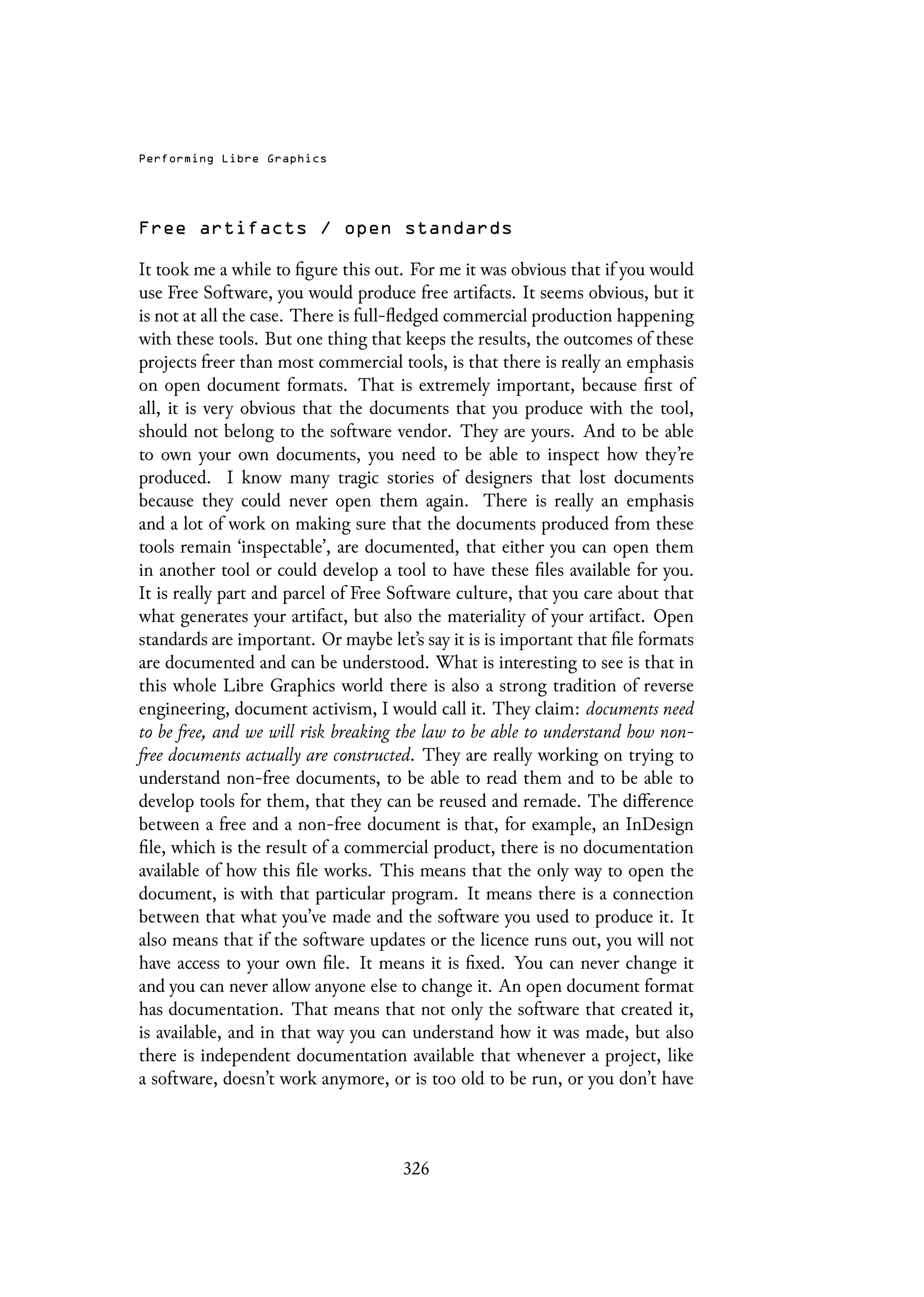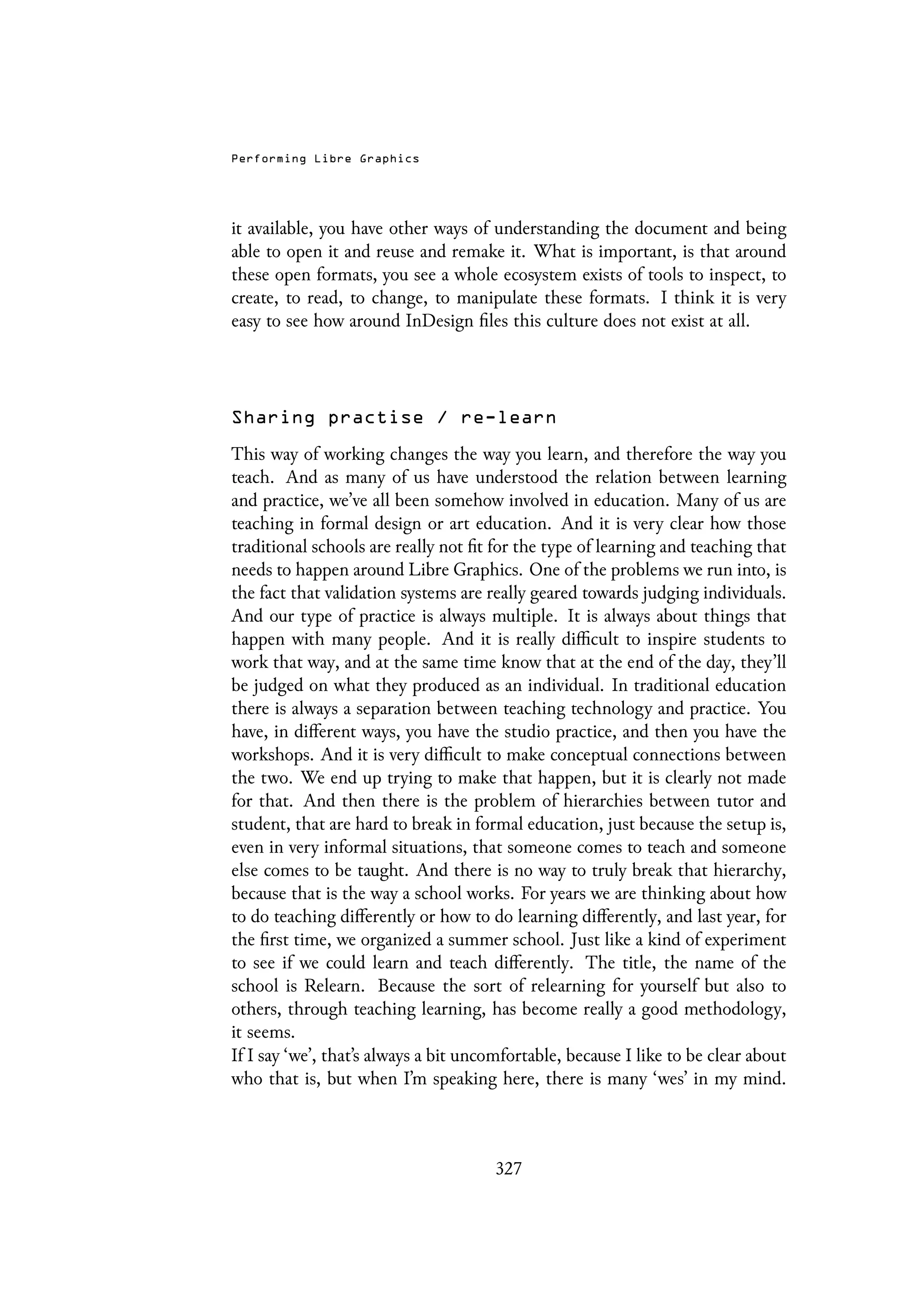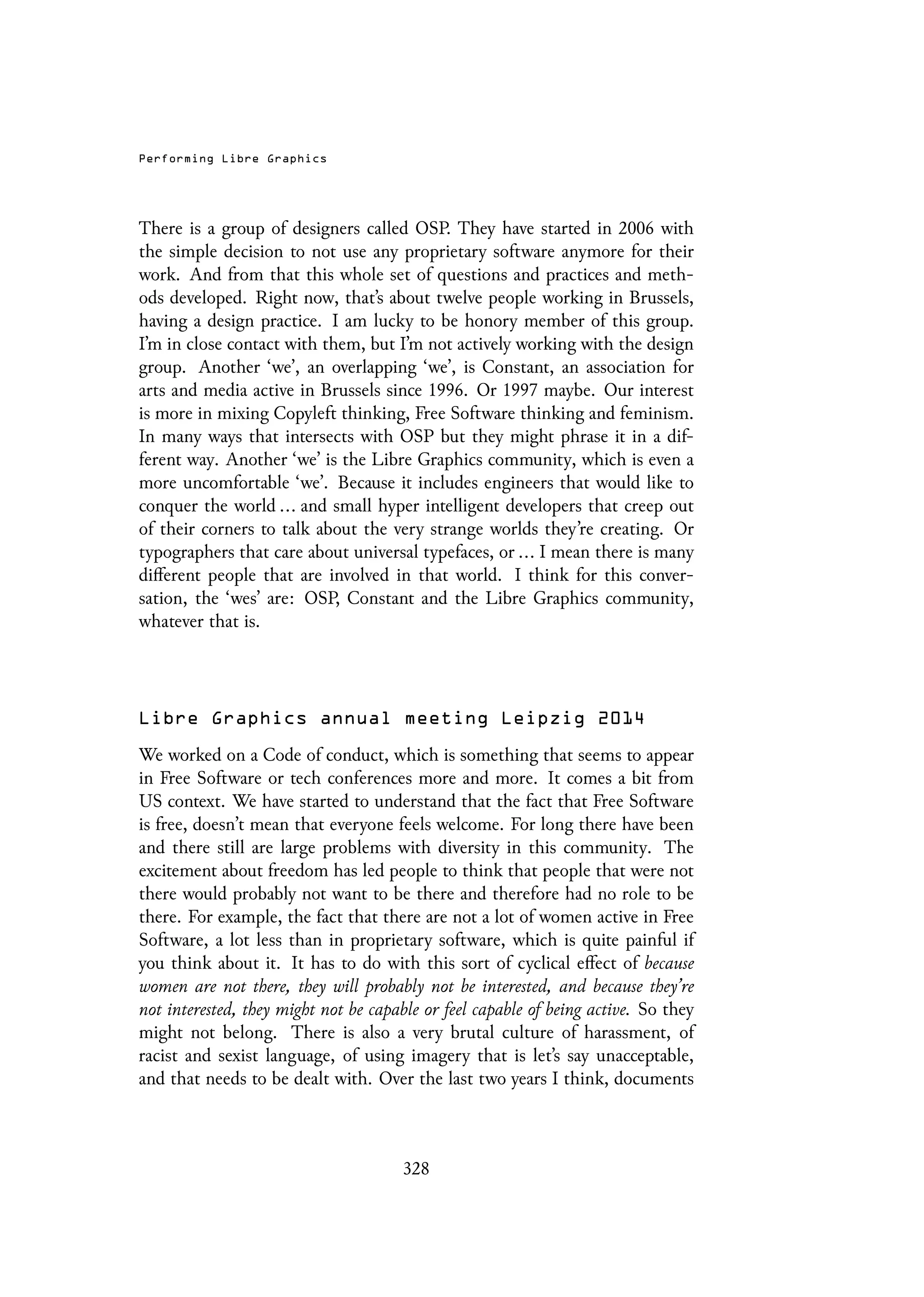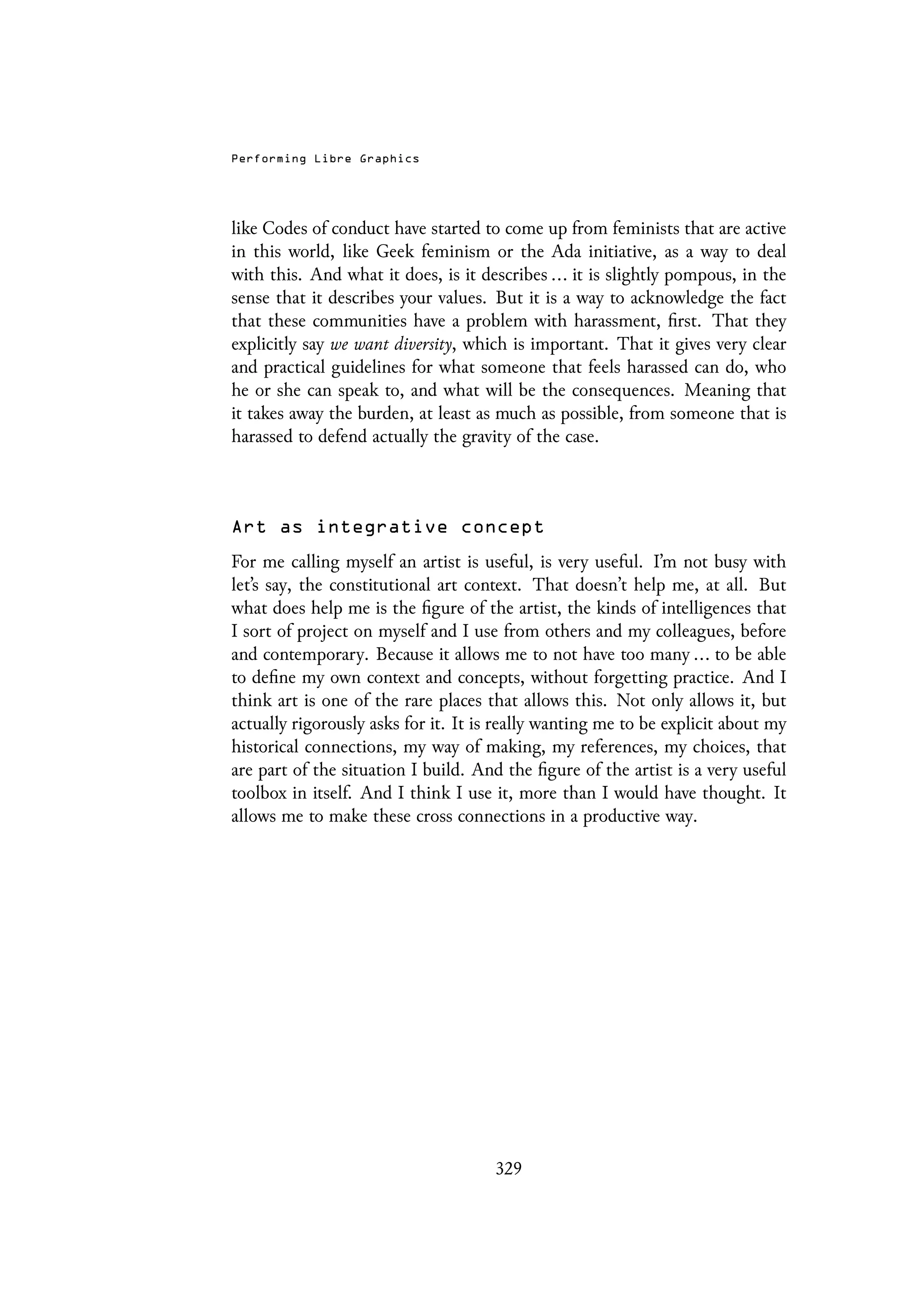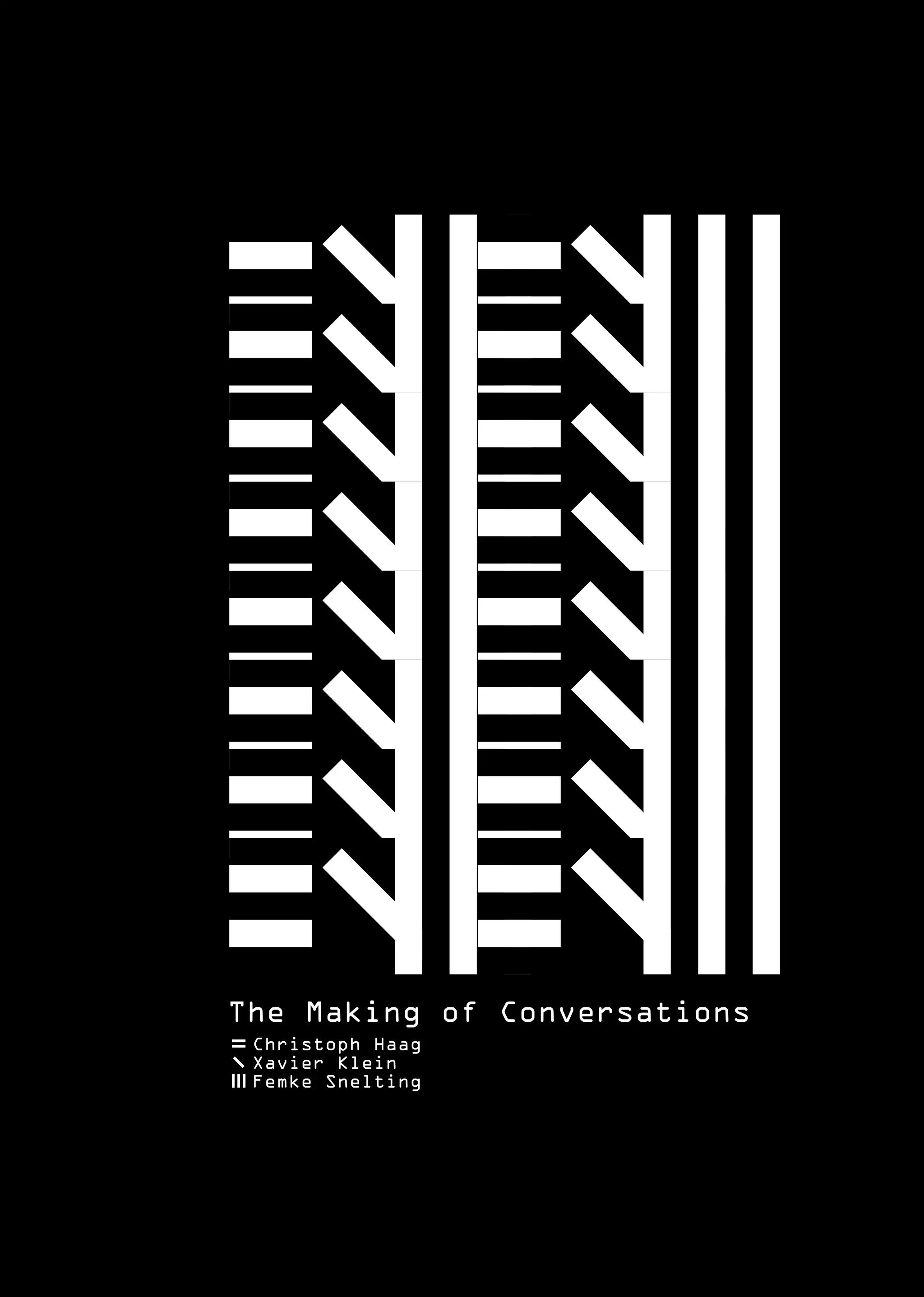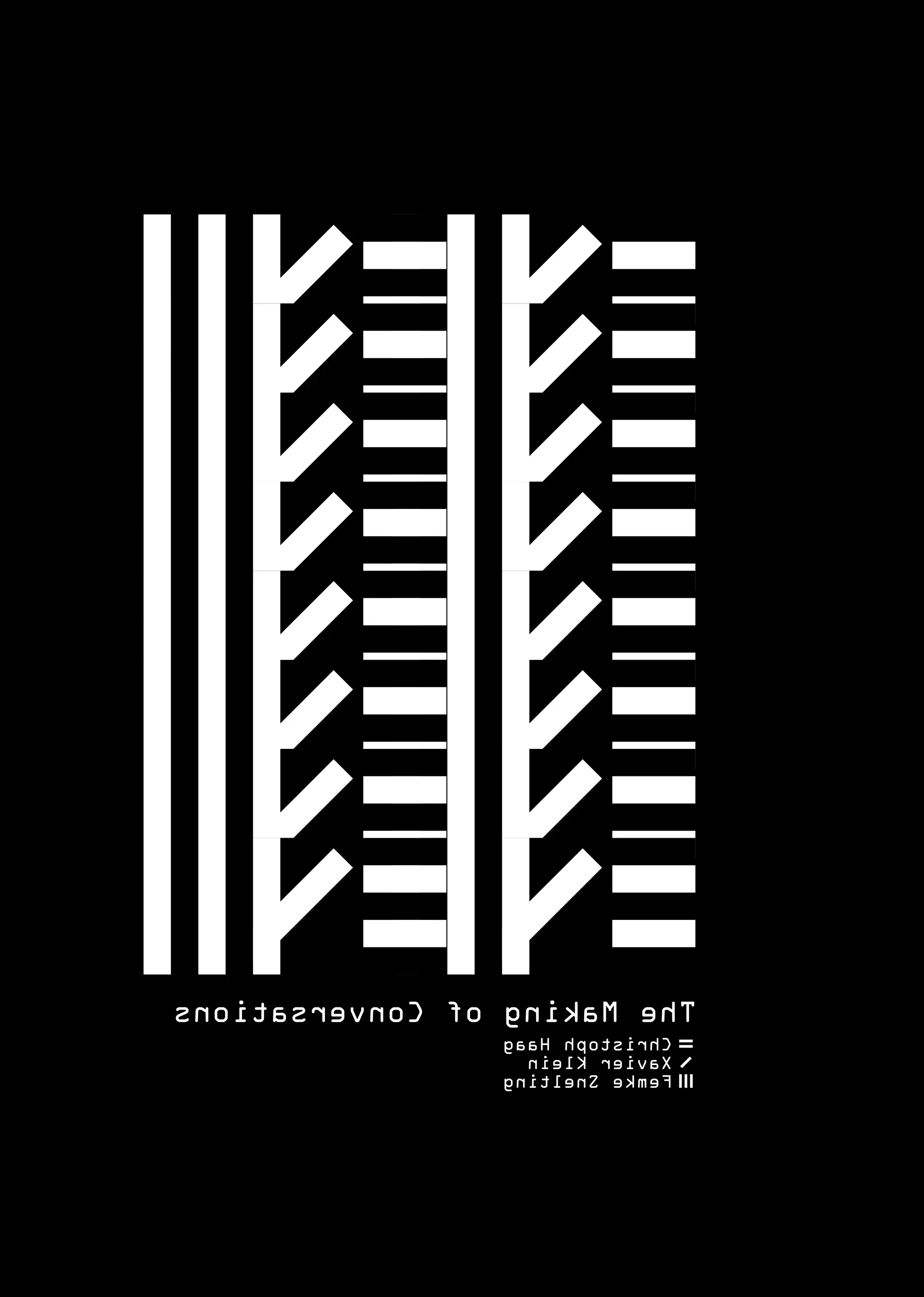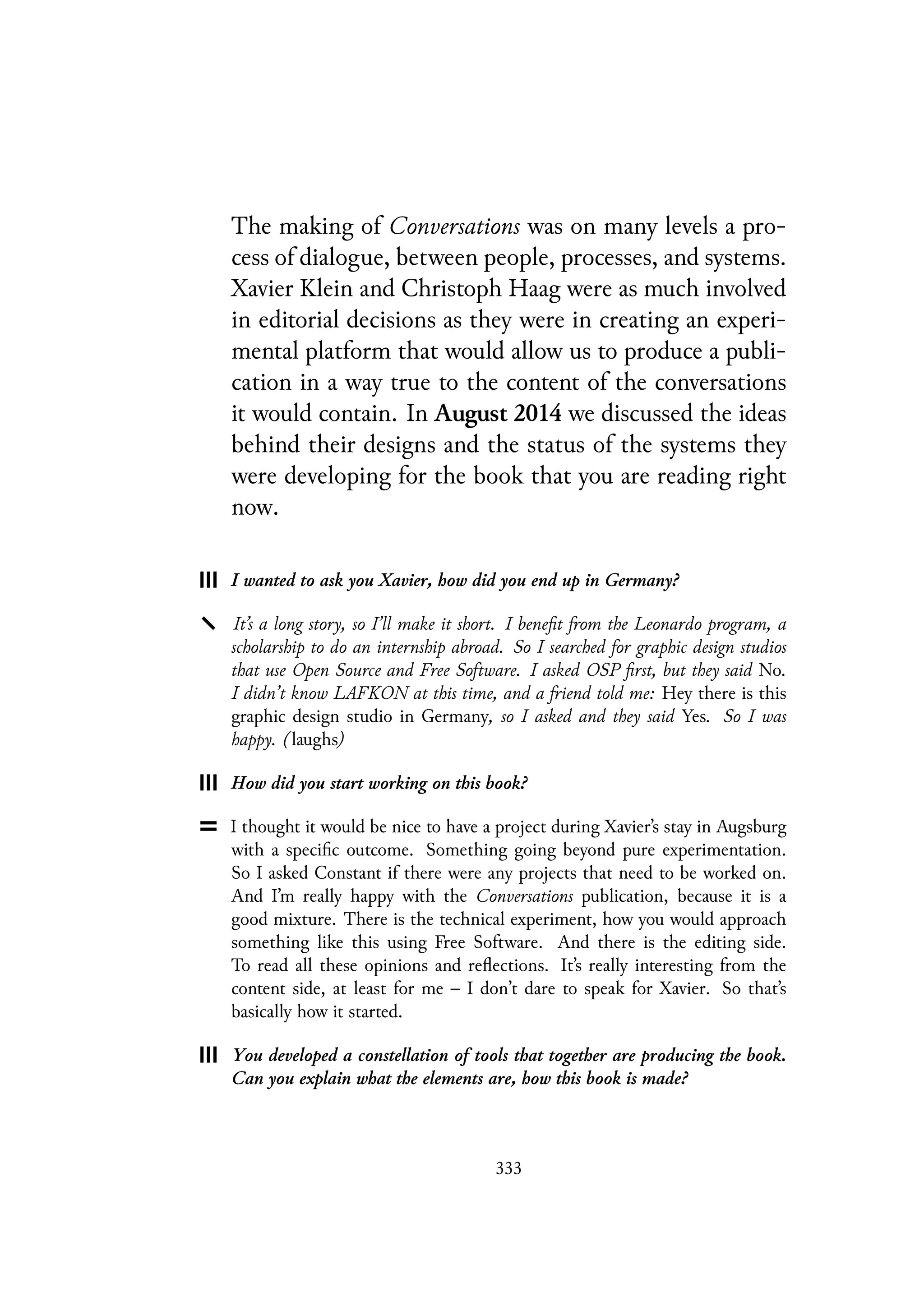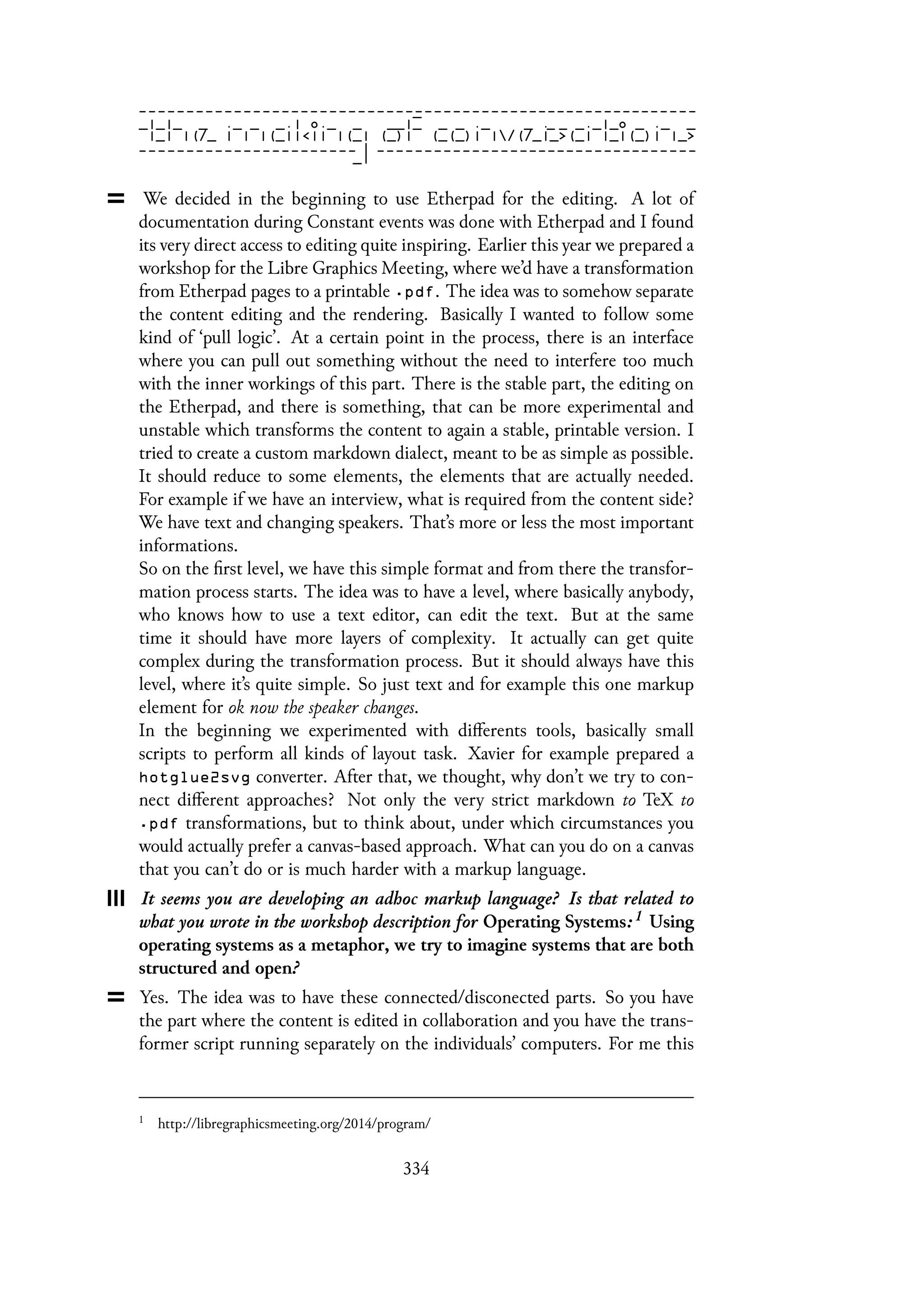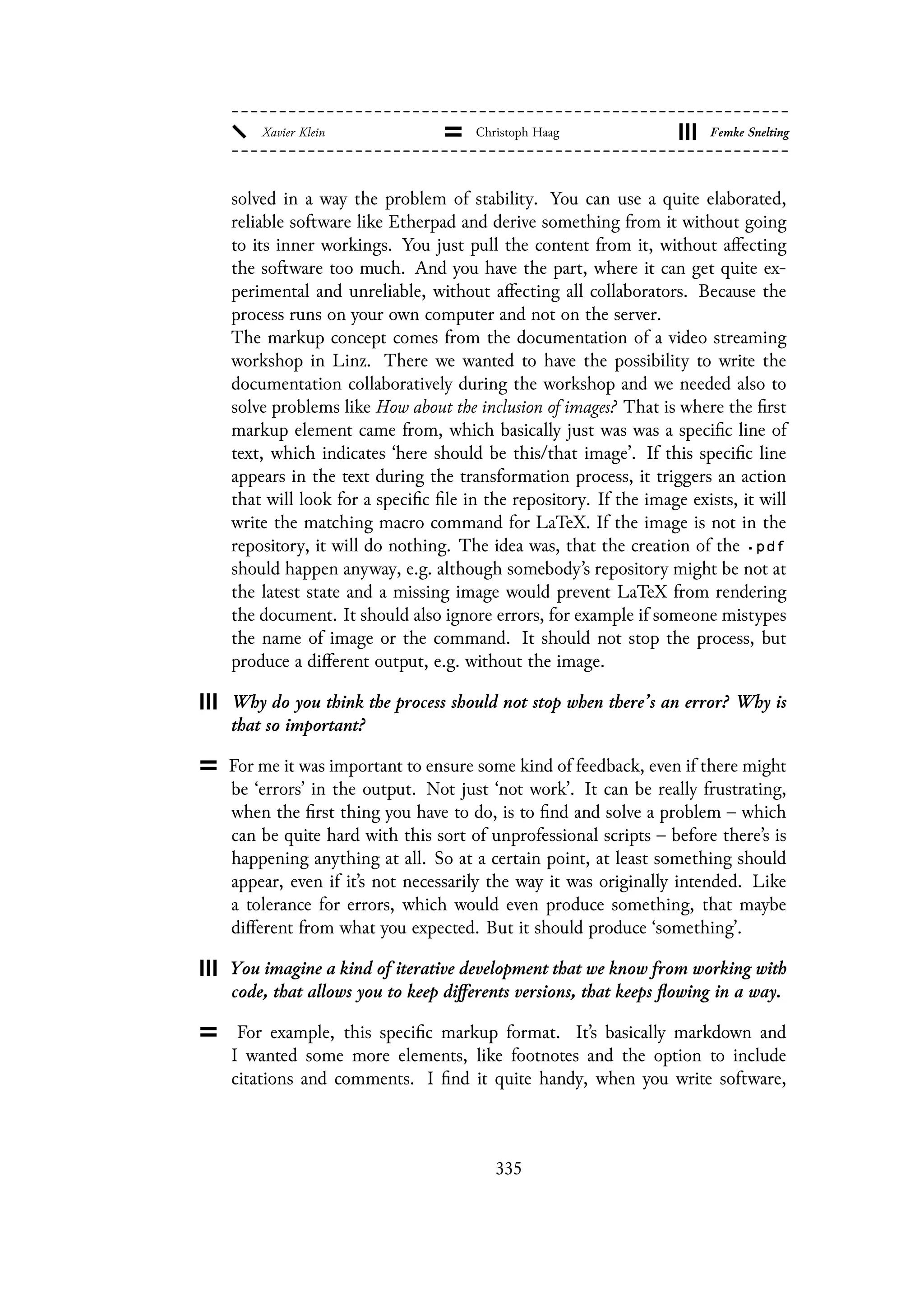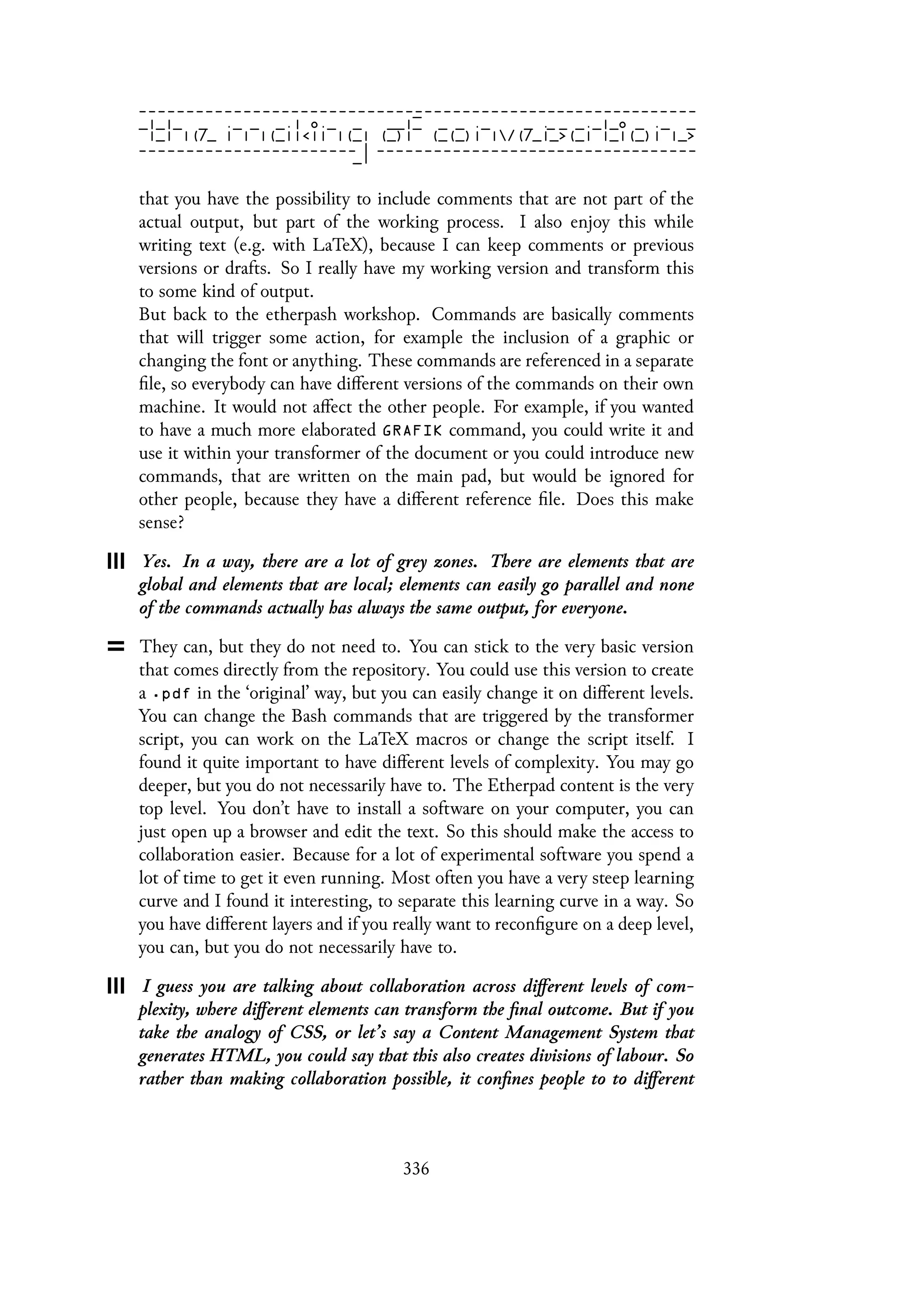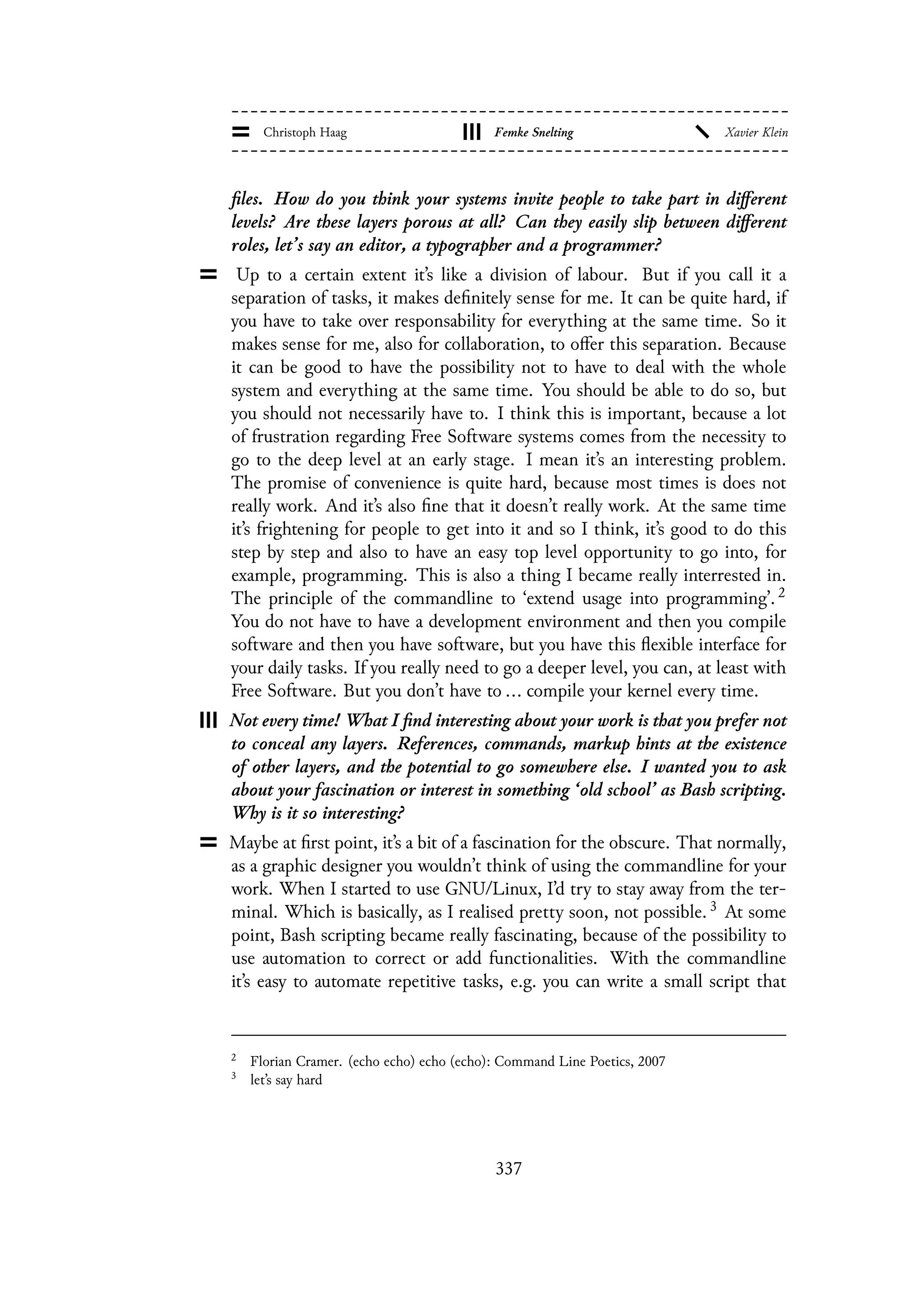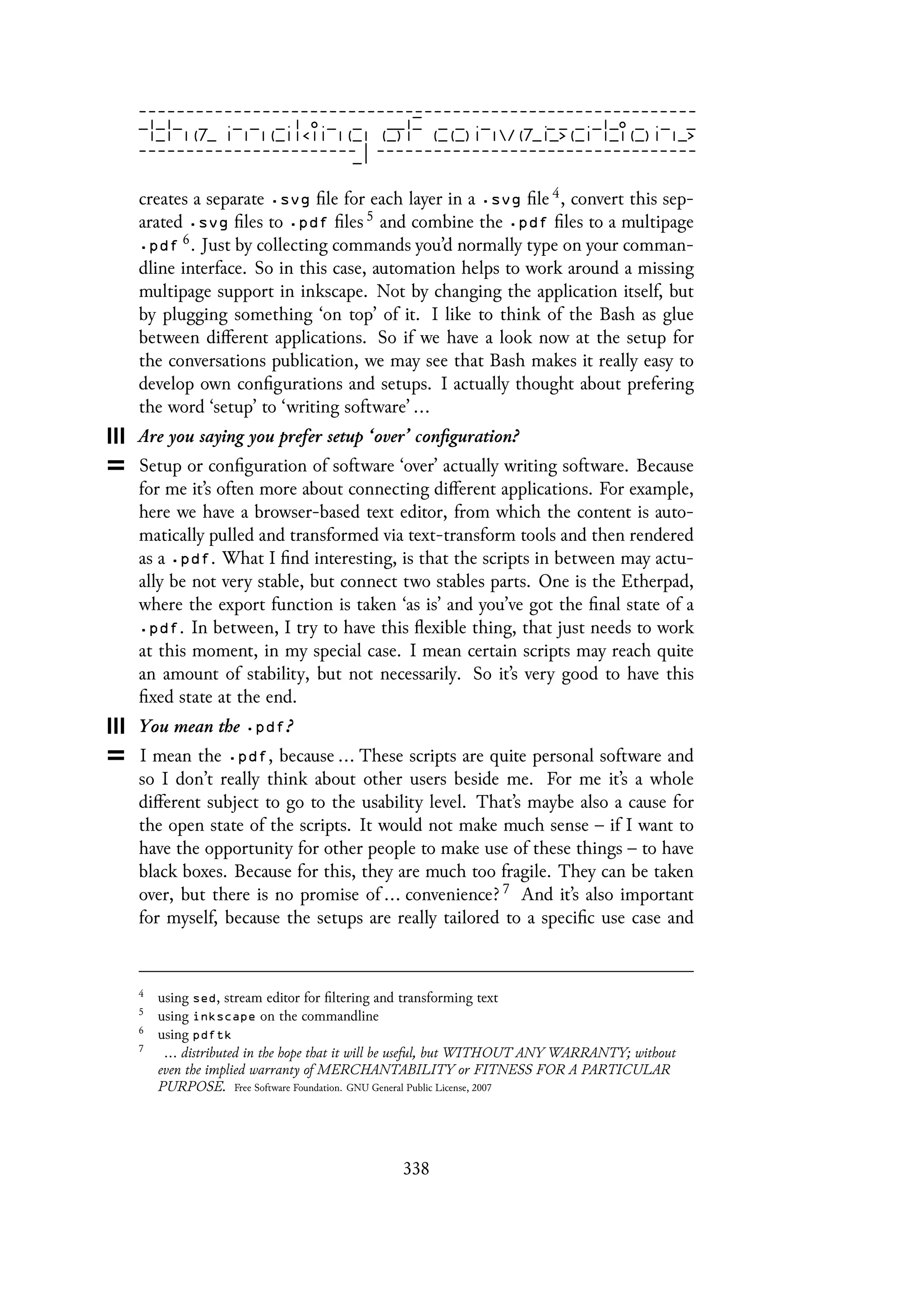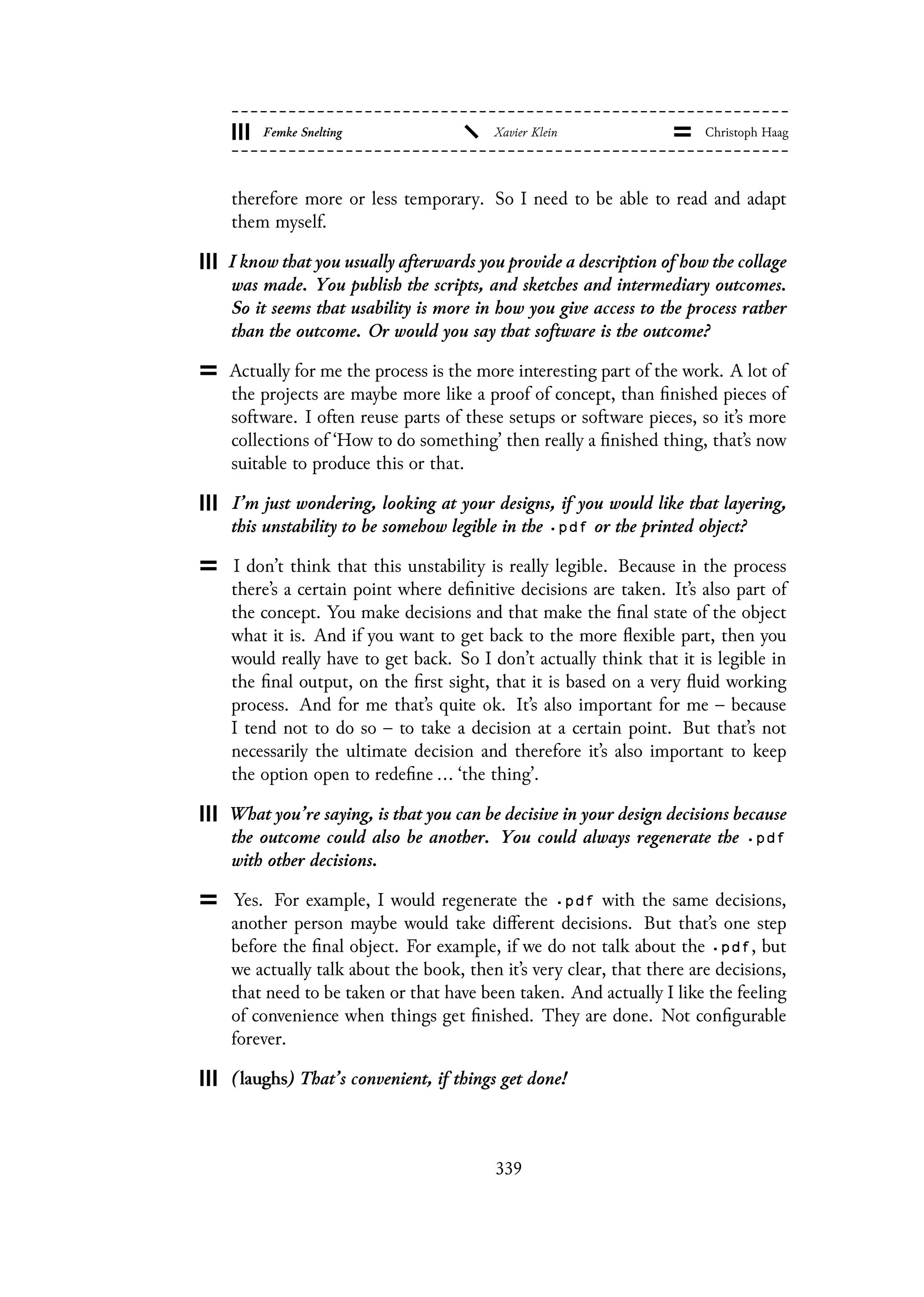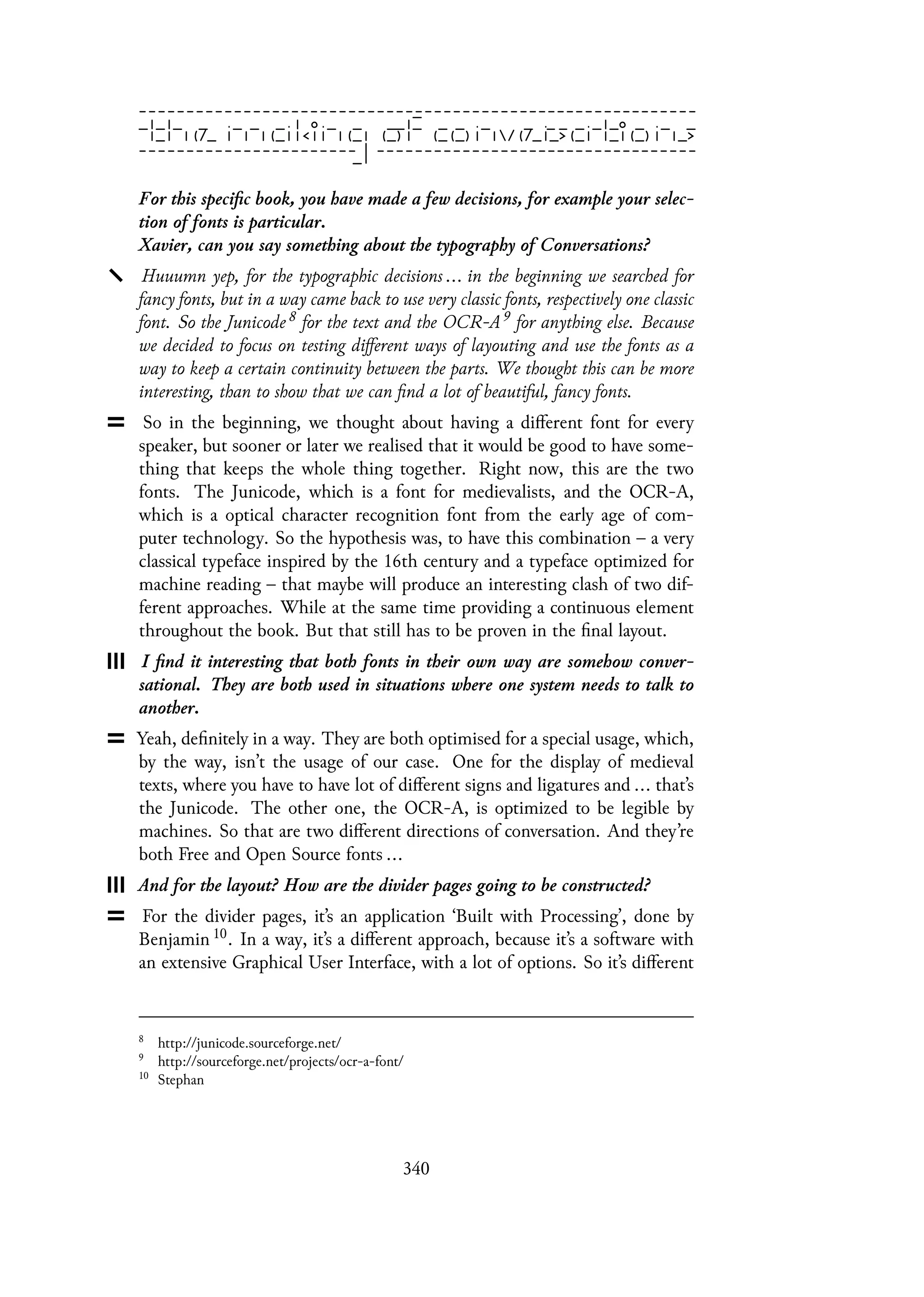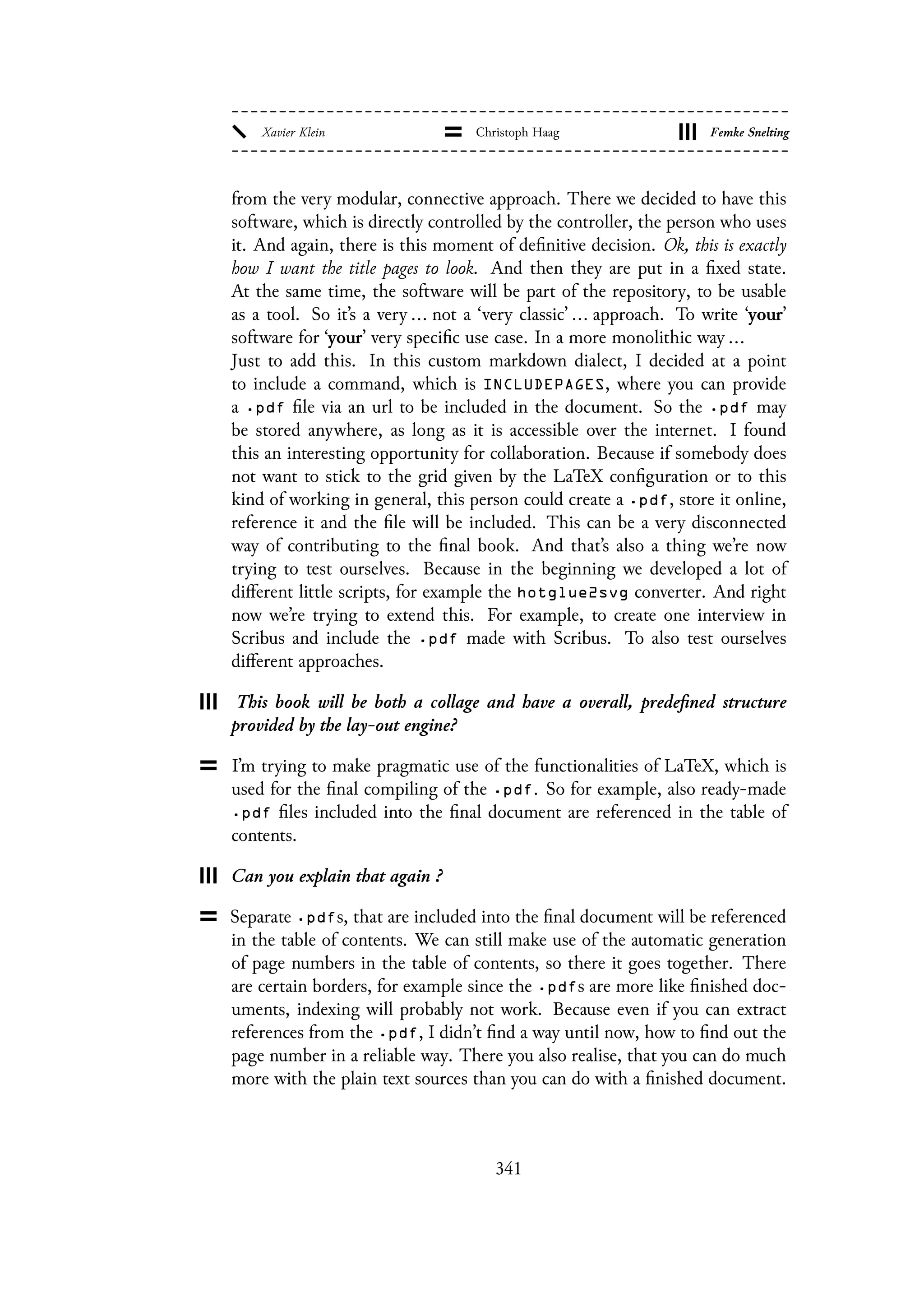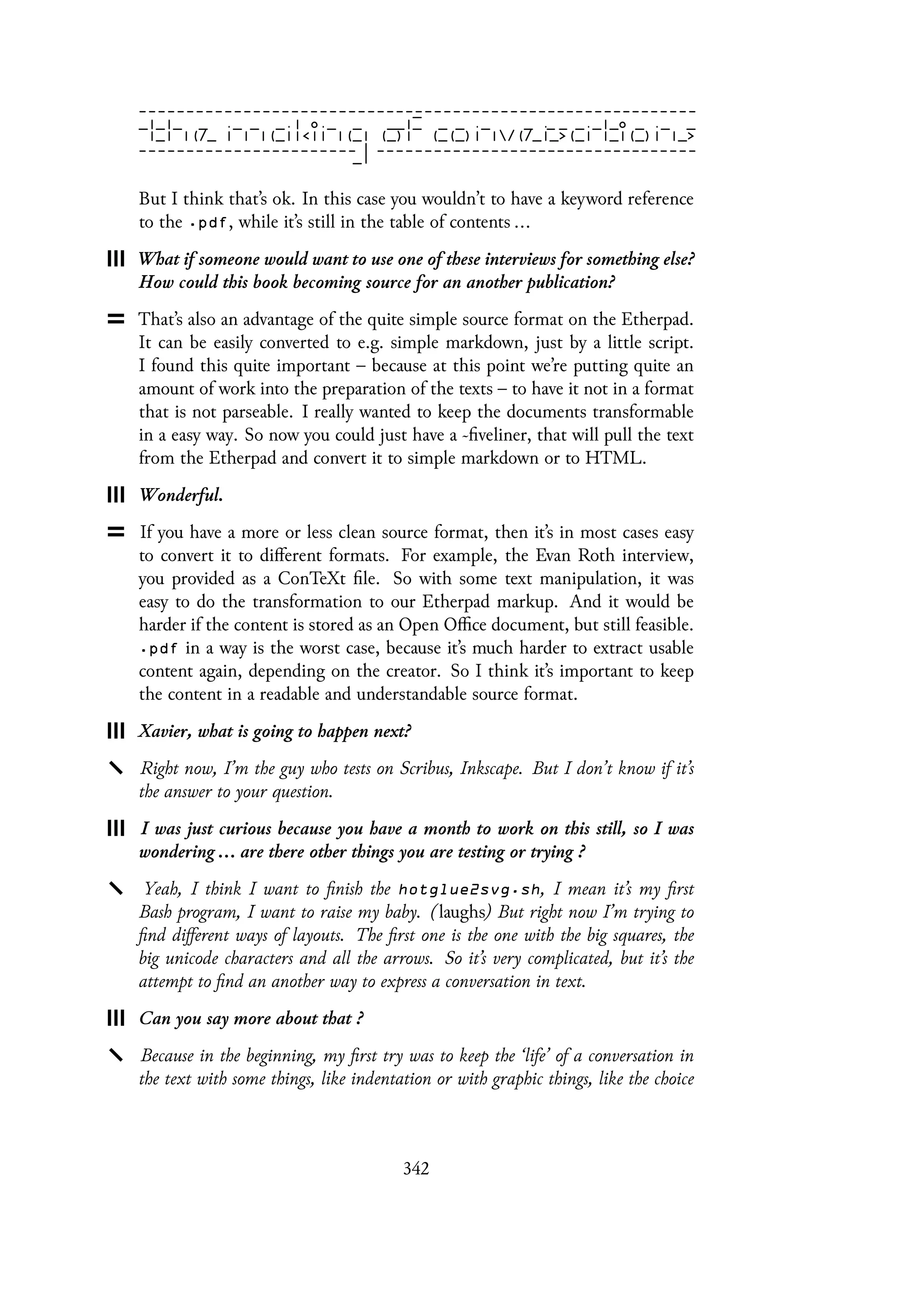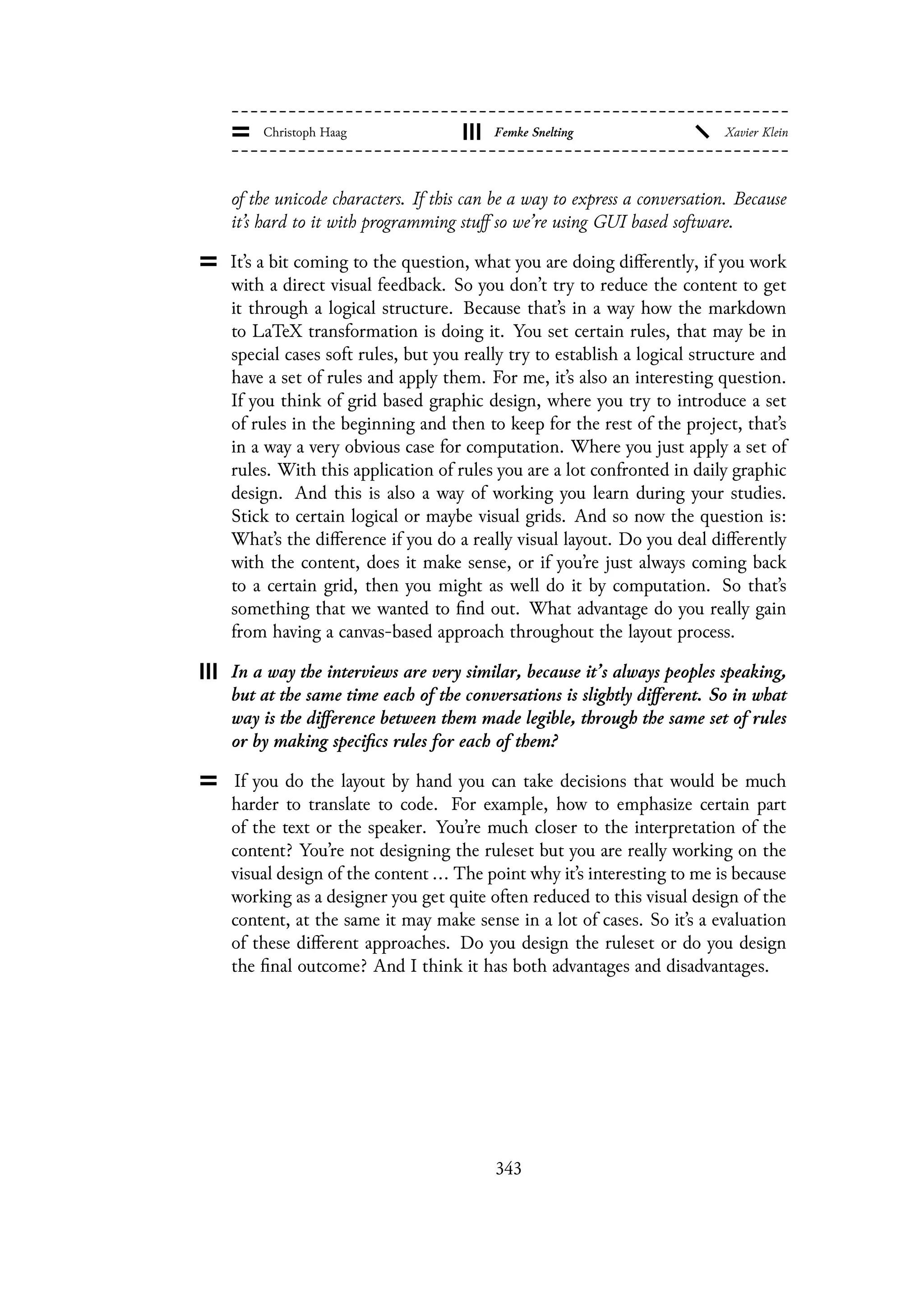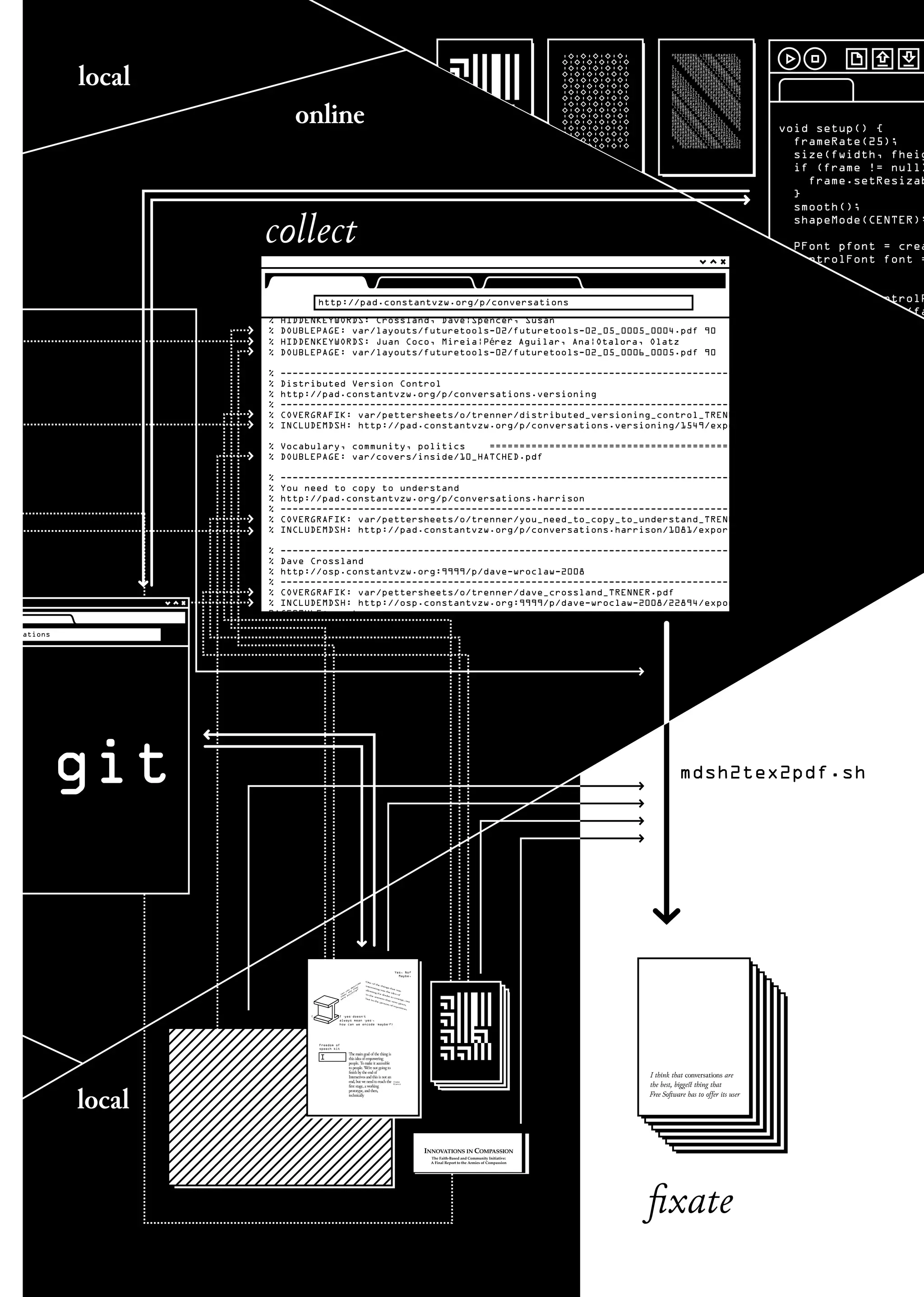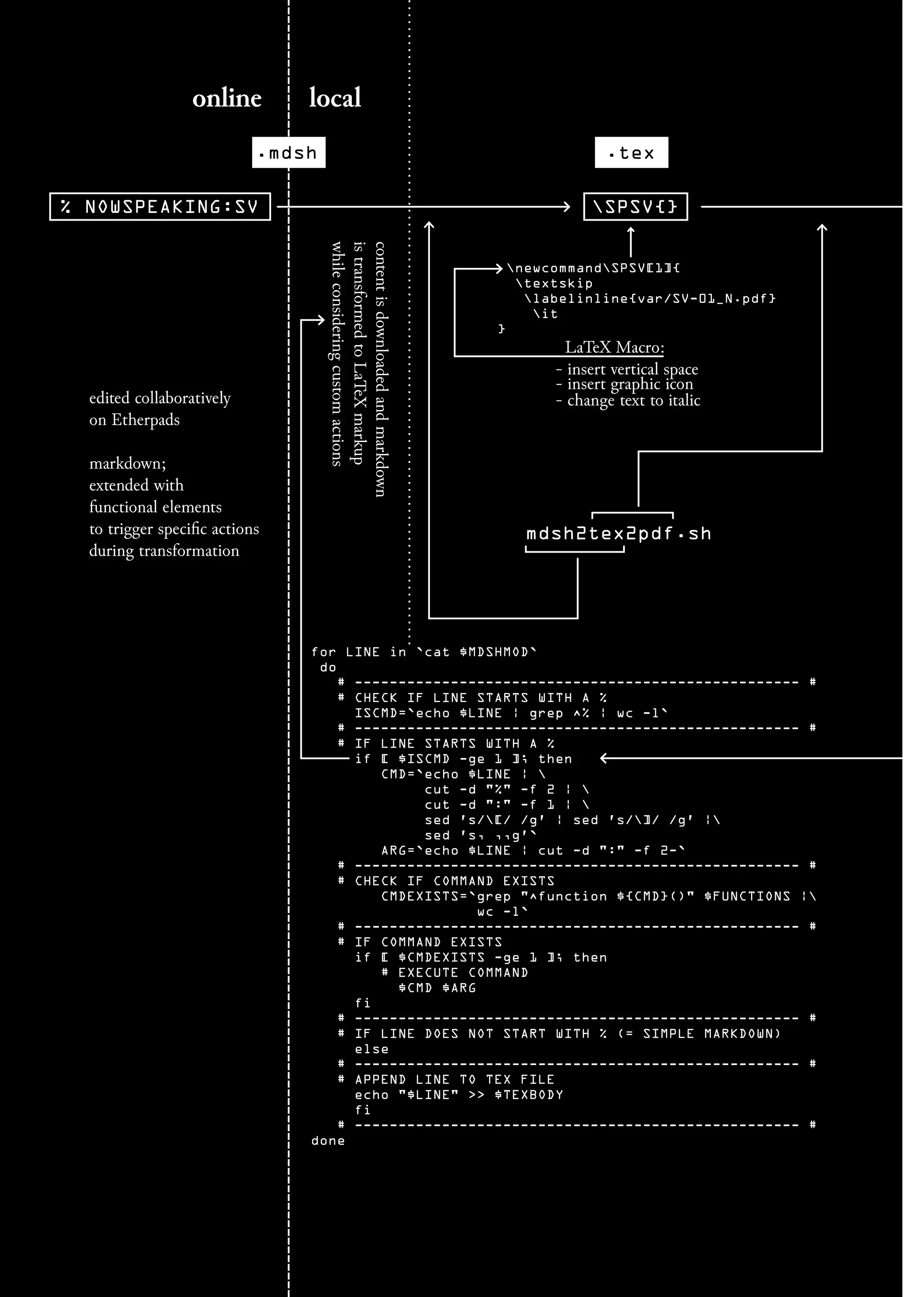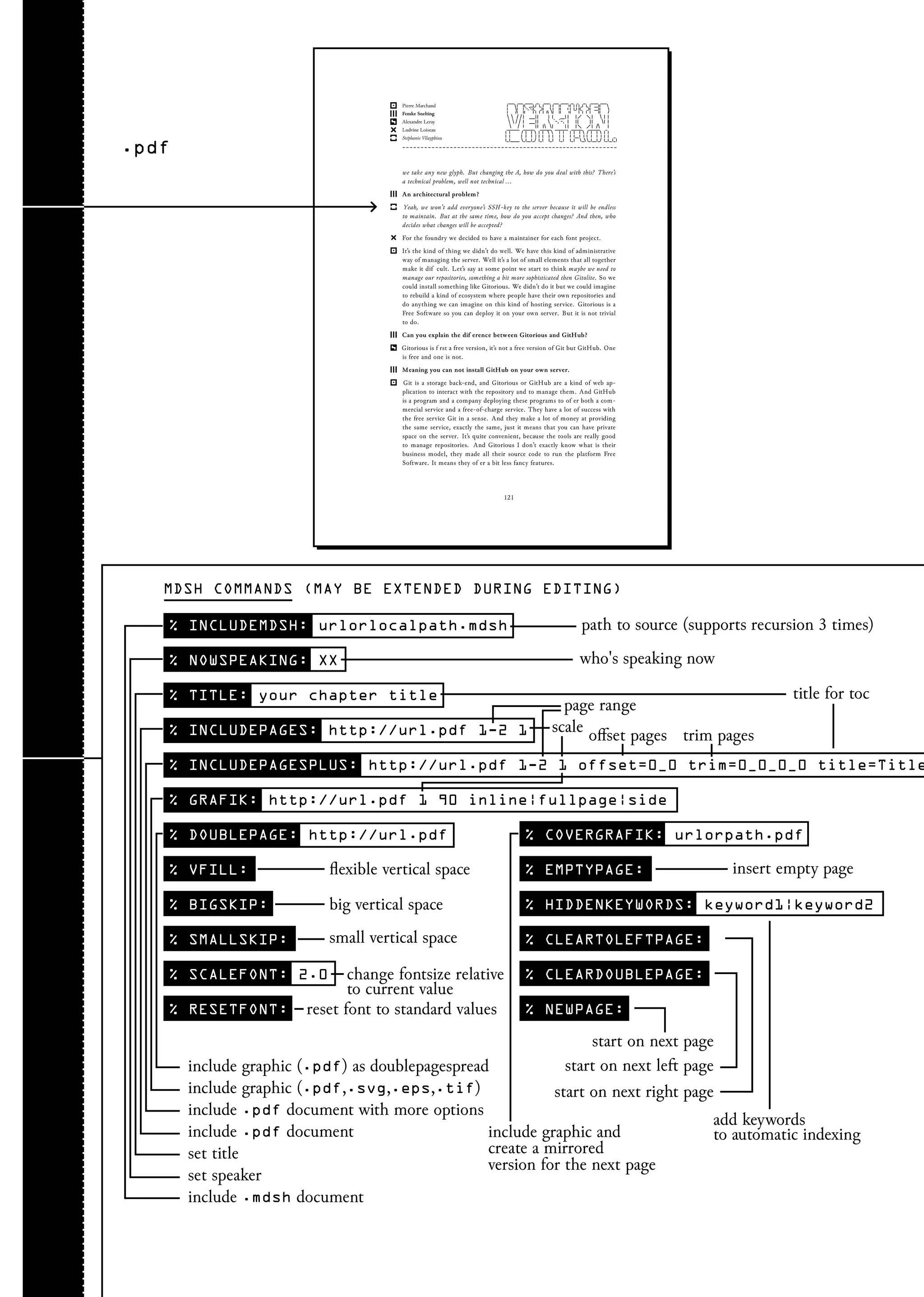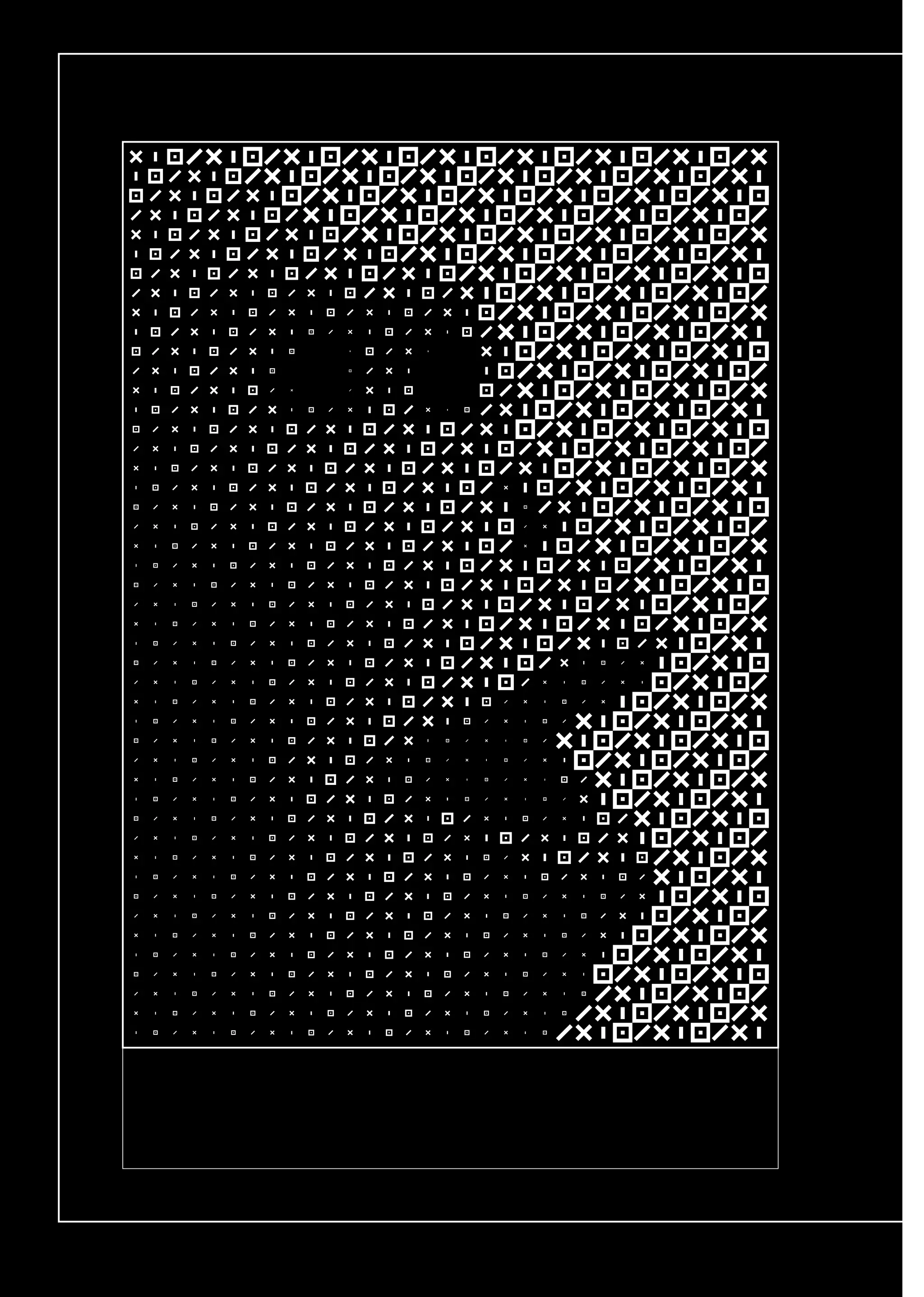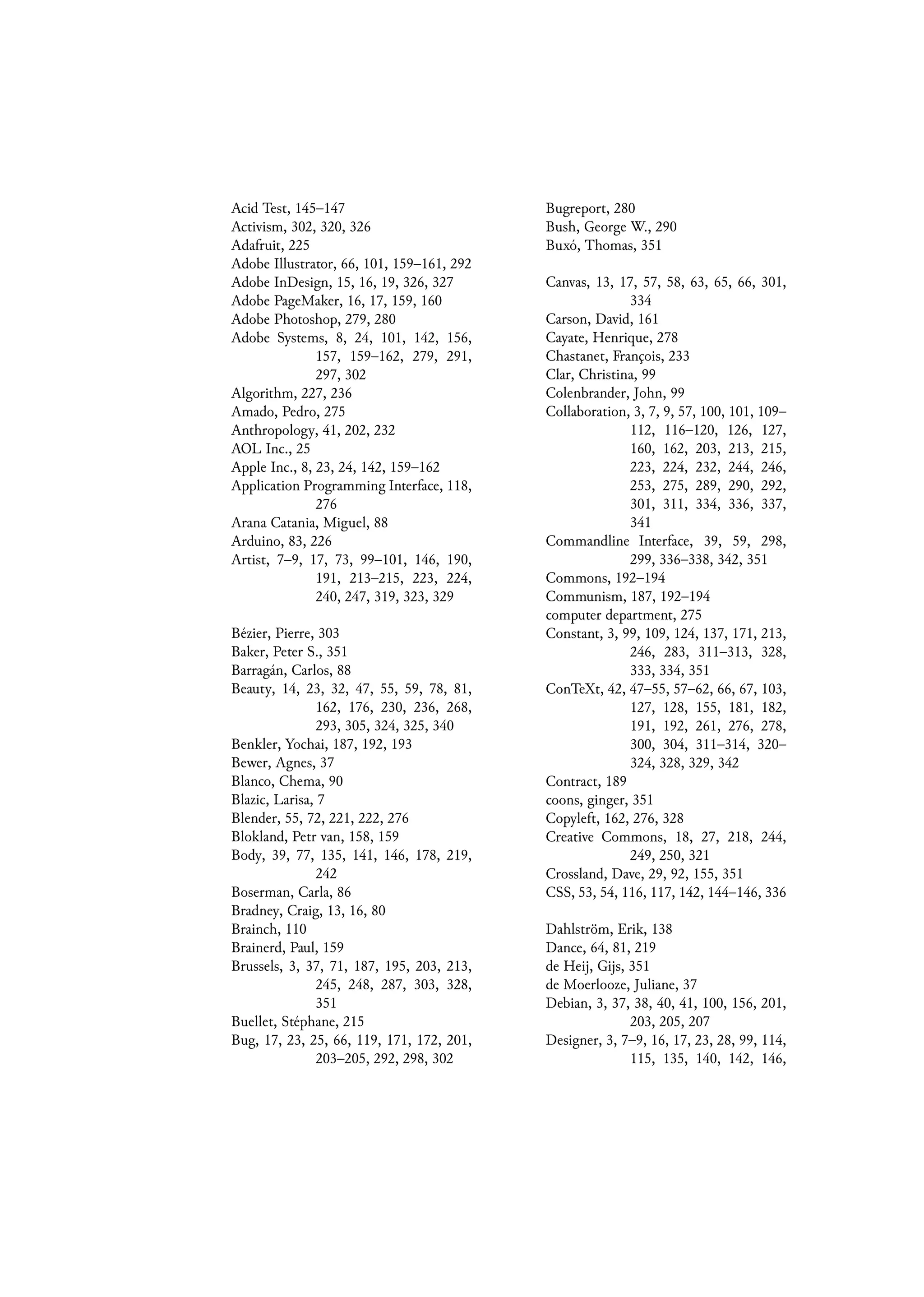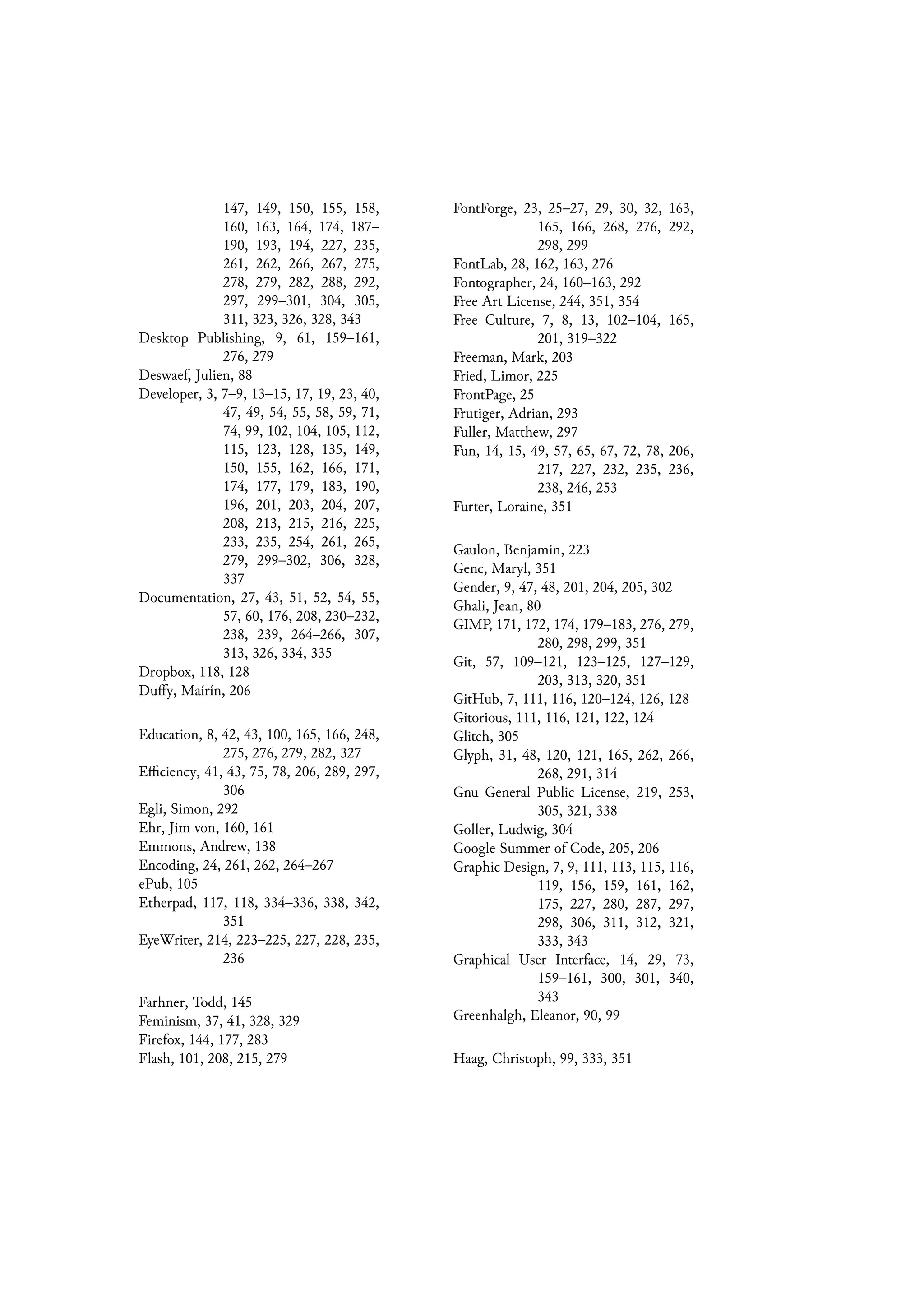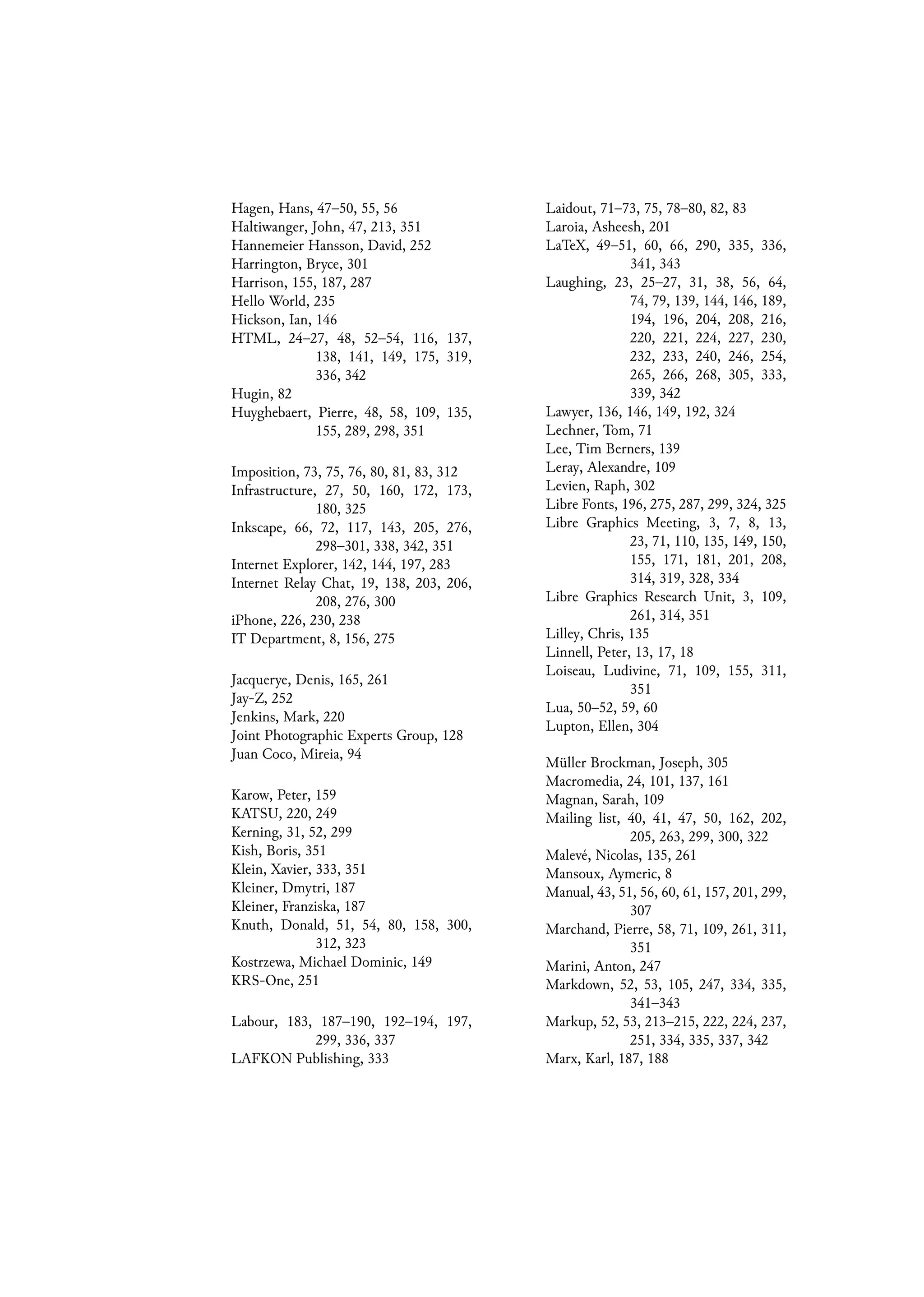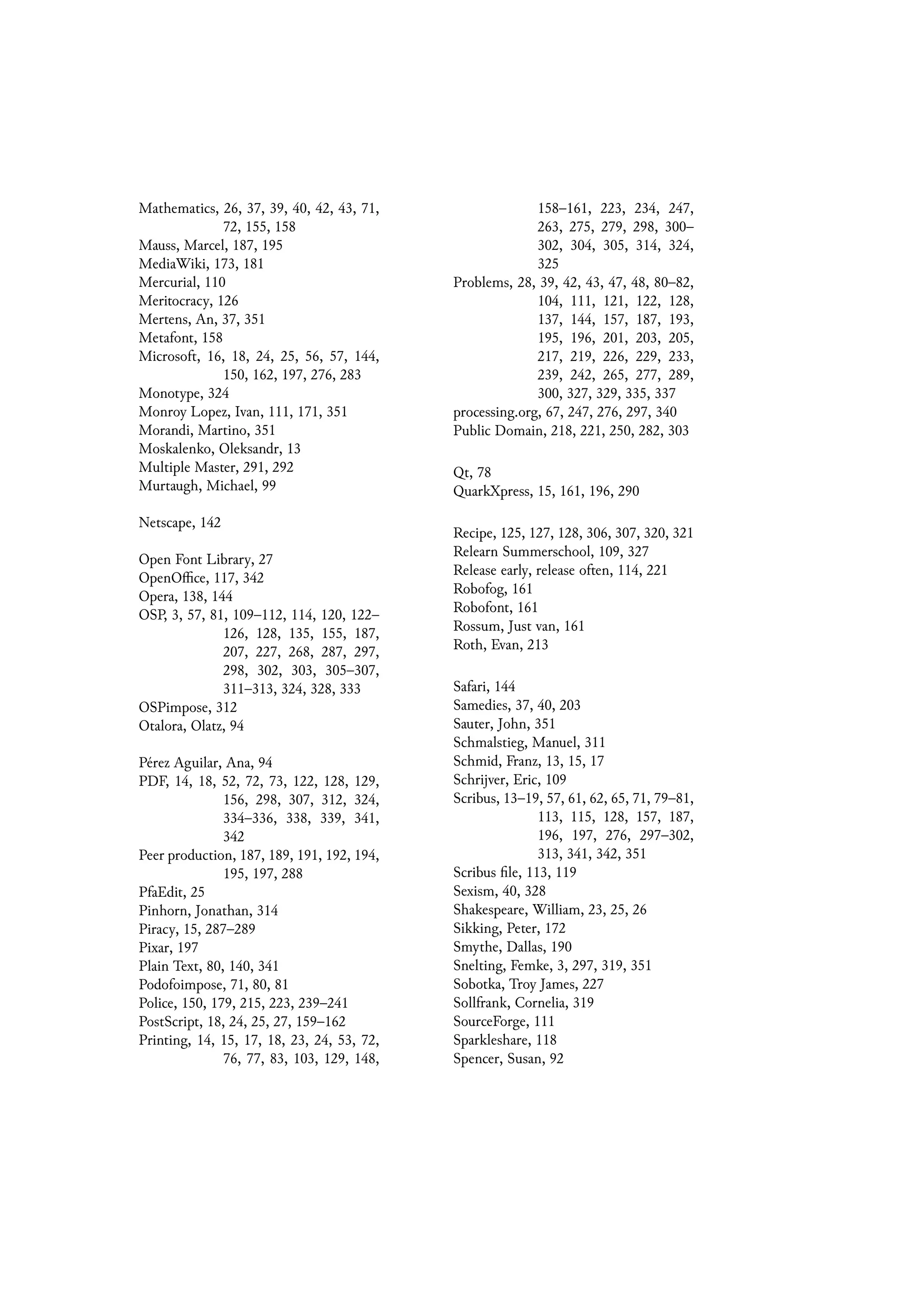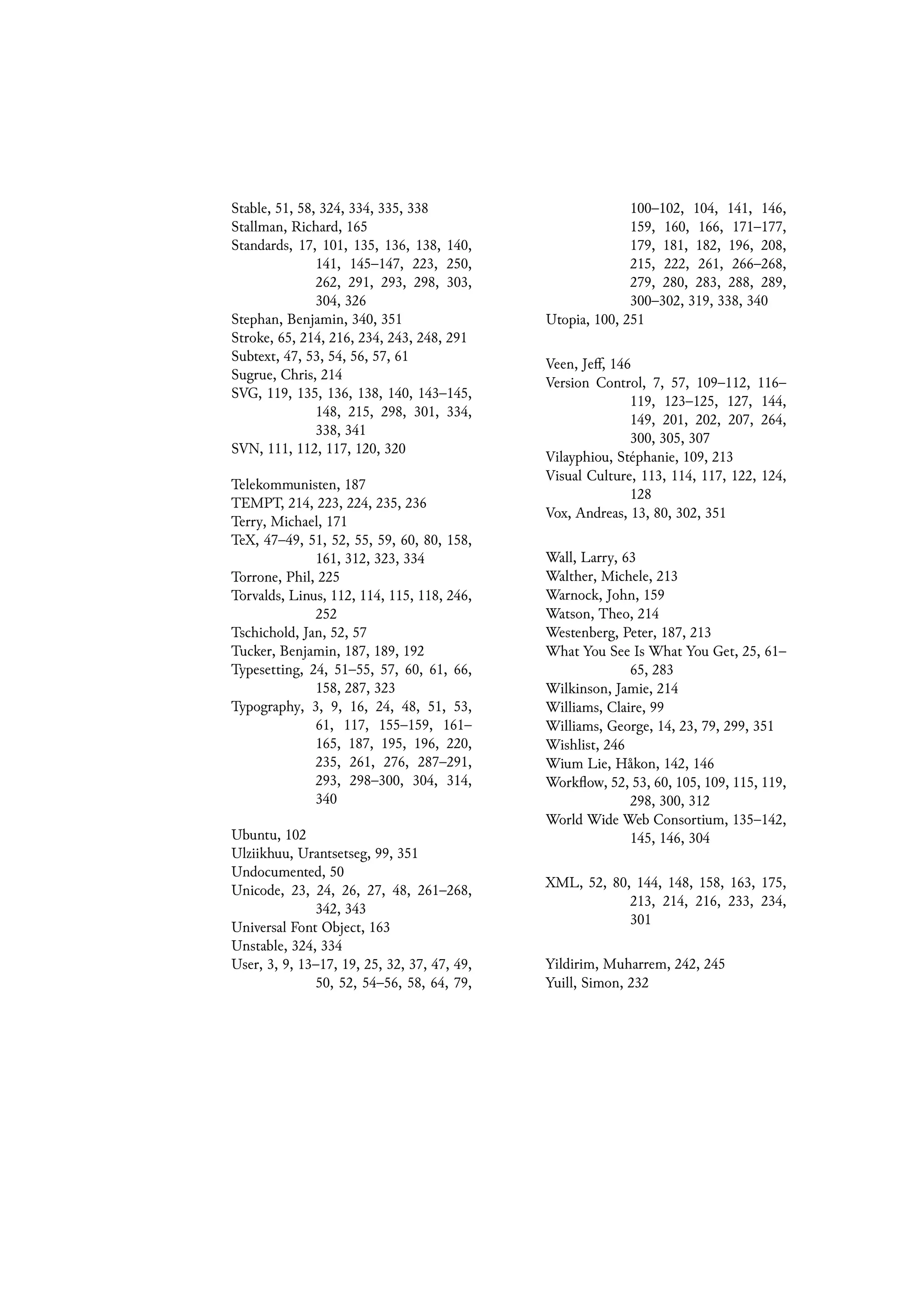This book captures an ongoing dialogue among developers and designers within the libre graphics ecosystem, emphasizing the transformative potential of free software. Through discussions spanning over eight years, it documents how design intersects with free culture and software development, highlighting collaboration, the tools used, and the community's growth. The text serves as a resource for understanding the ethical considerations and practices in graphic design today, advocating for a paradigm shift towards open-source methodologies.
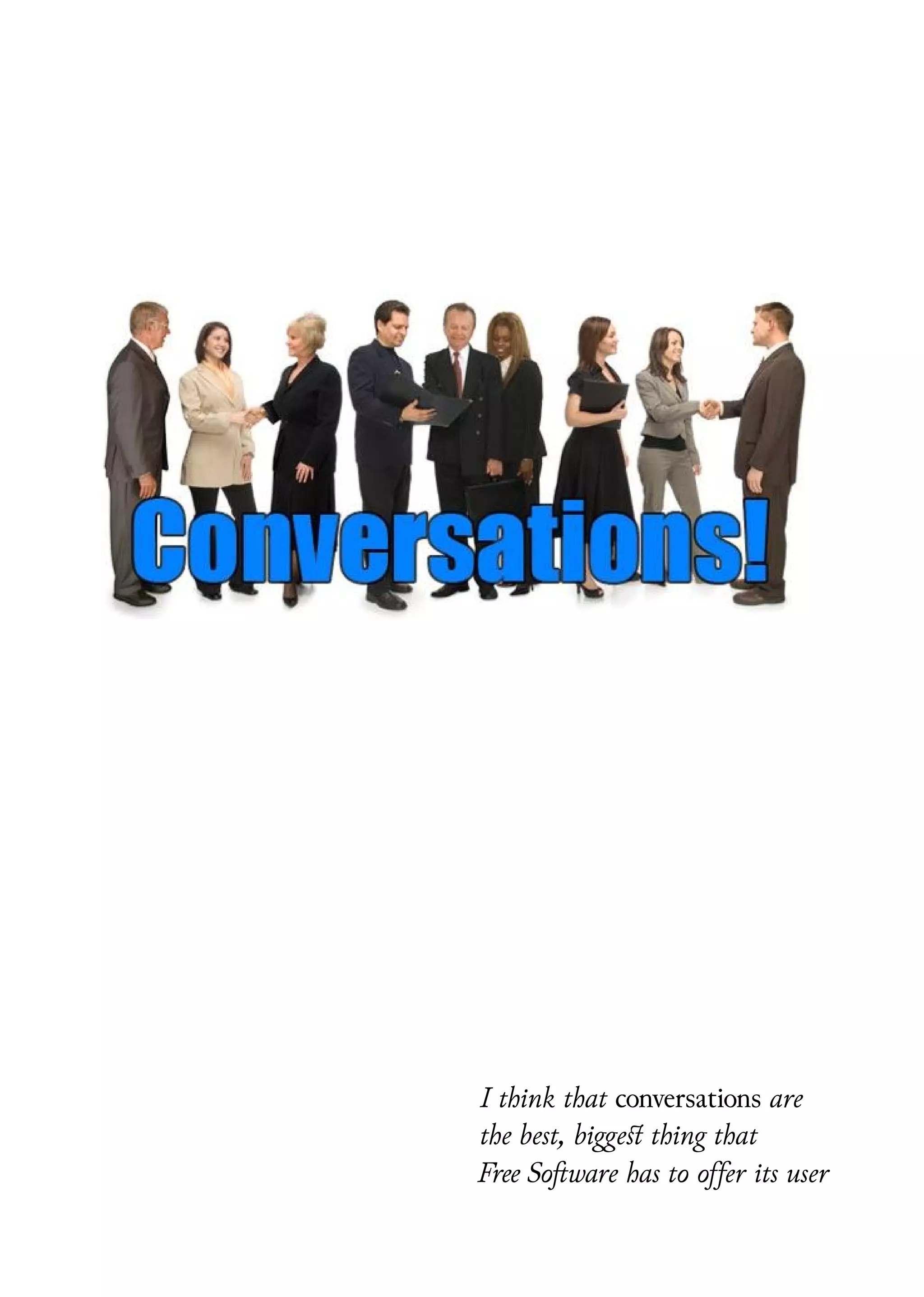
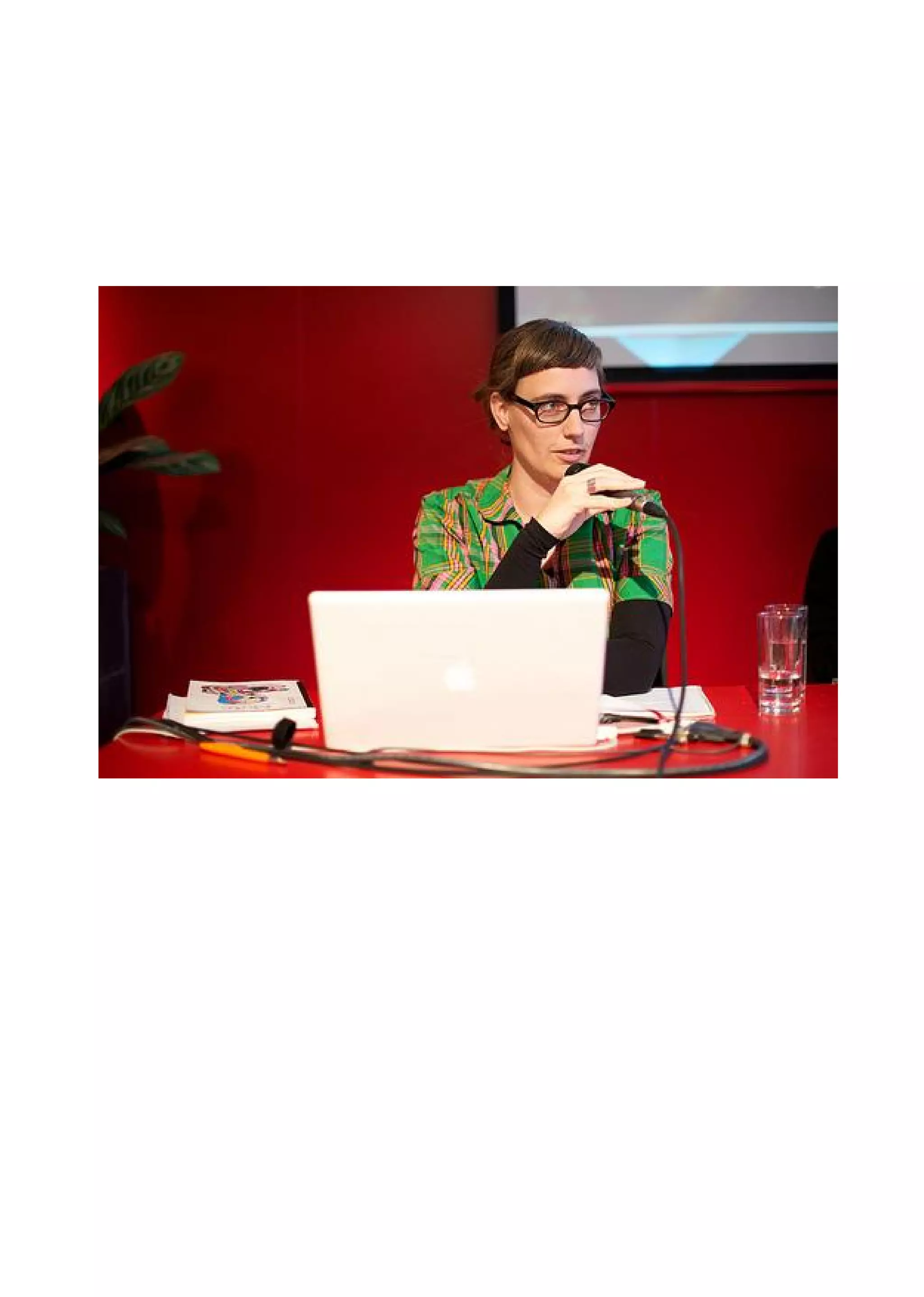
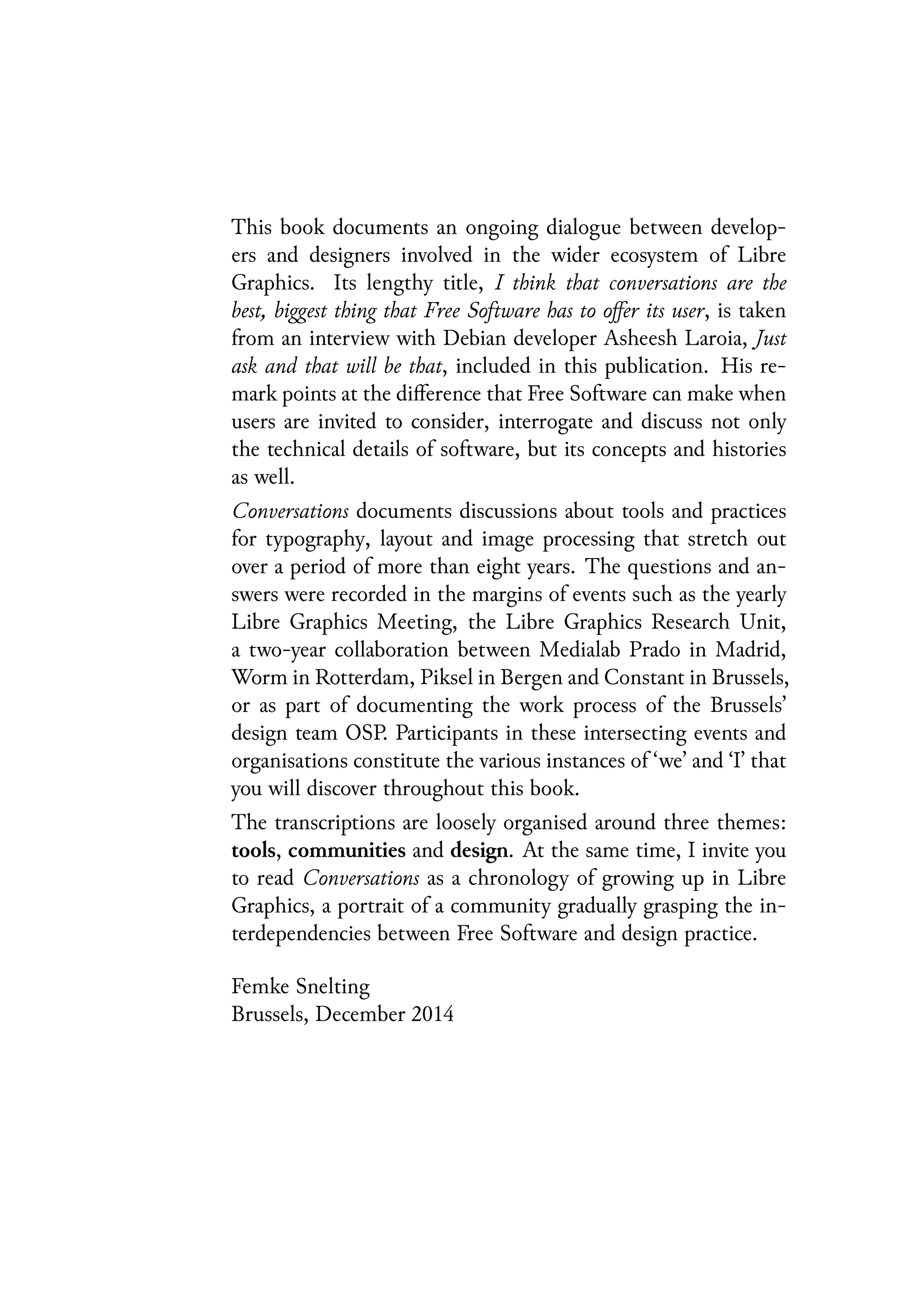

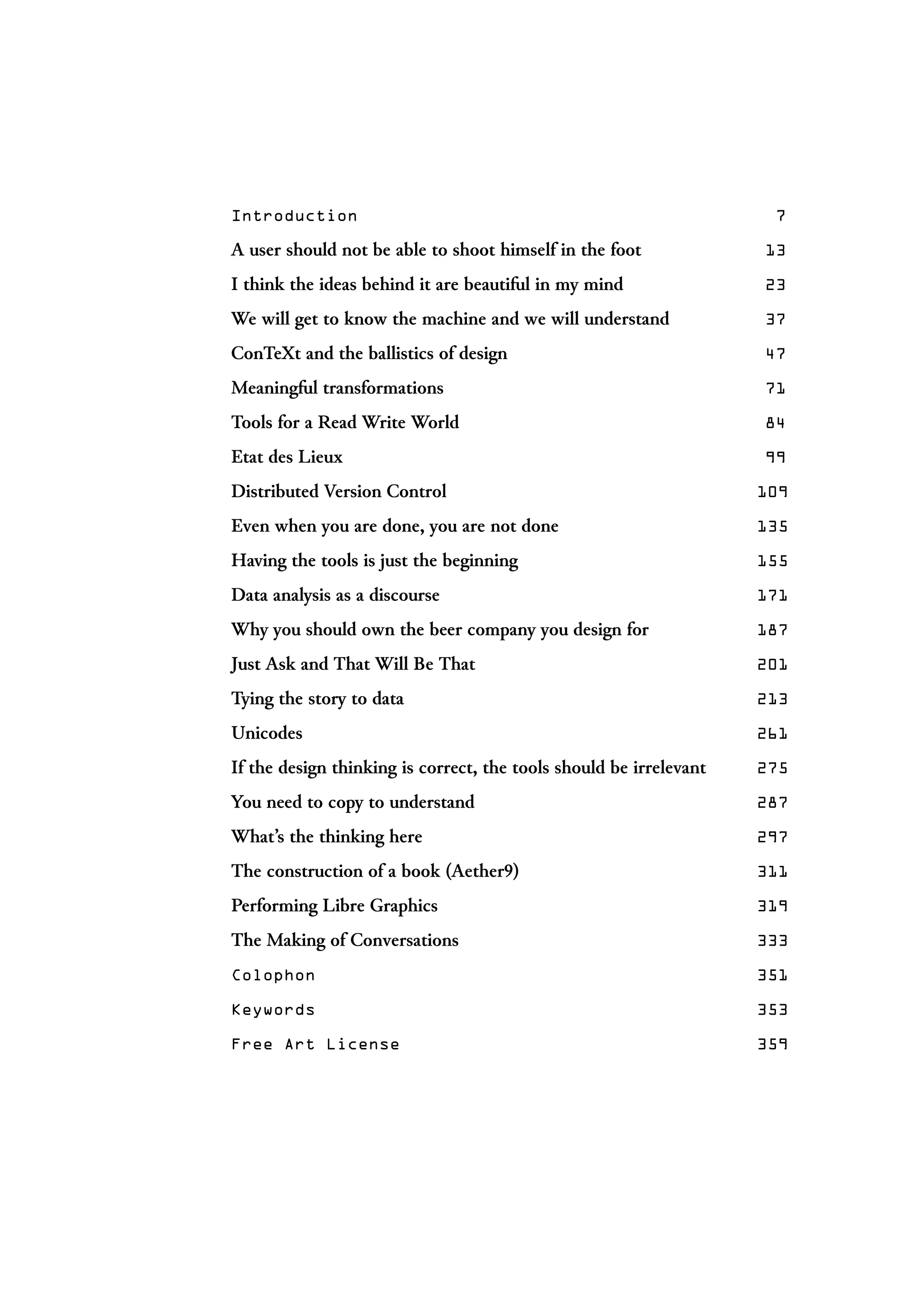

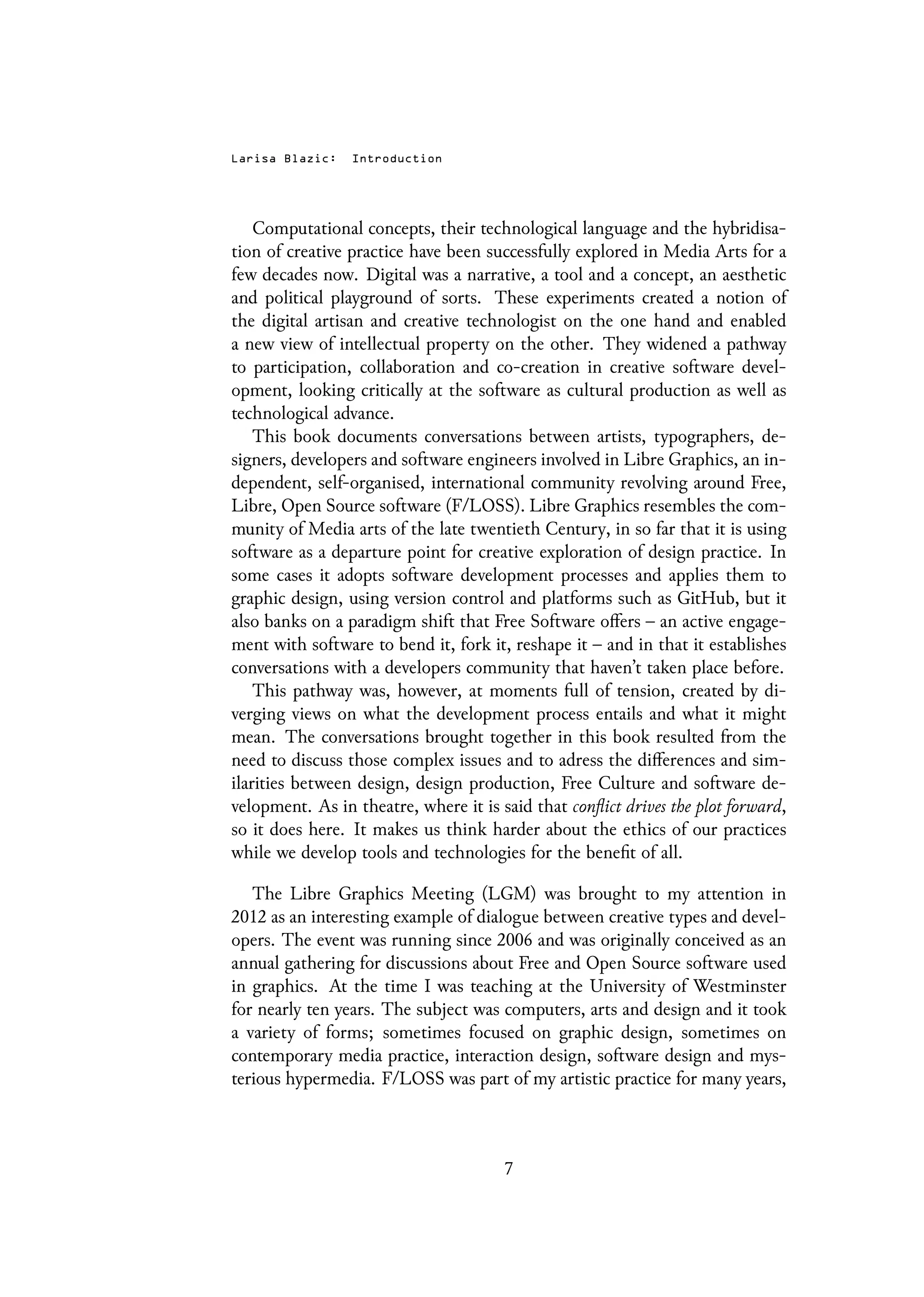
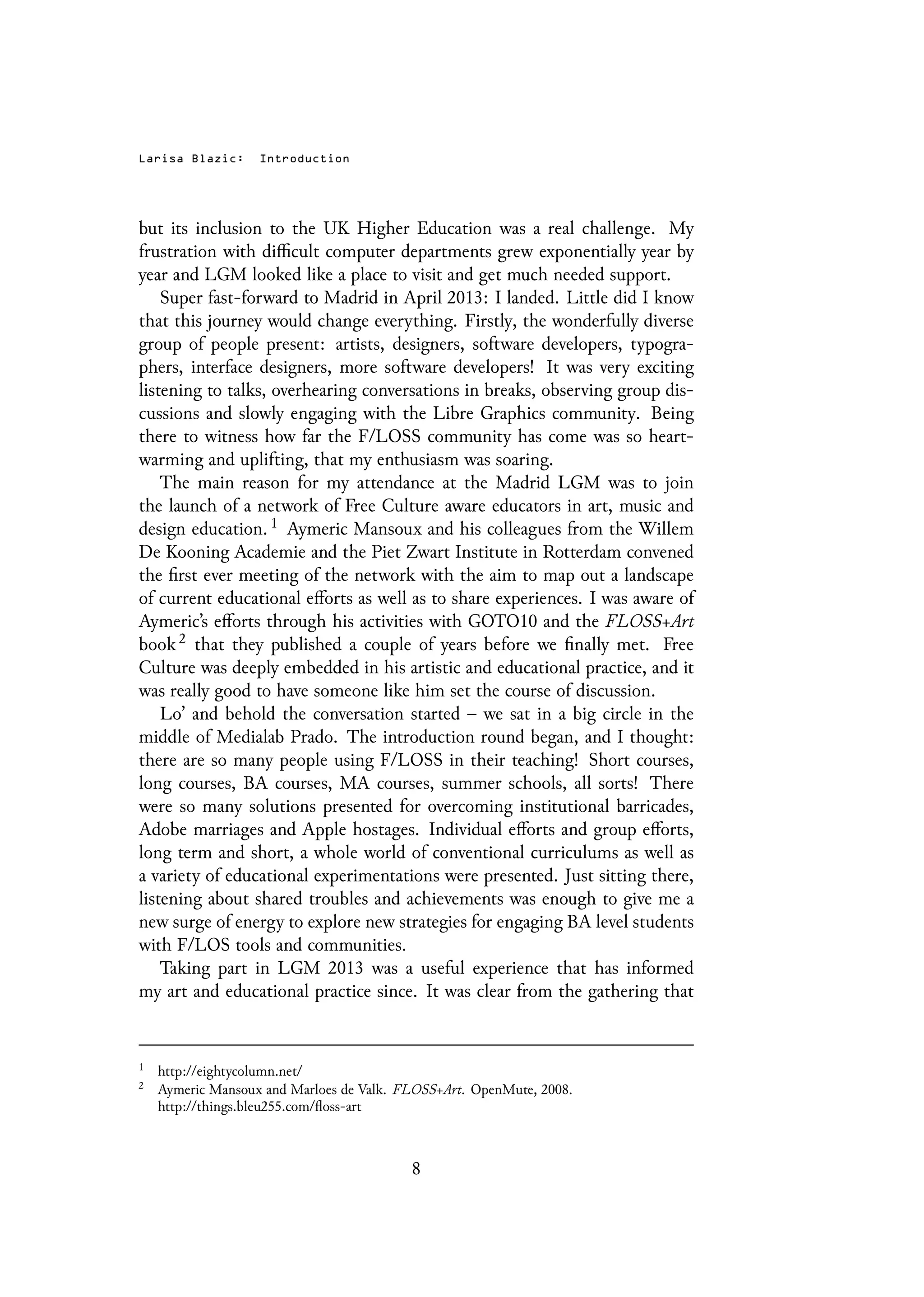
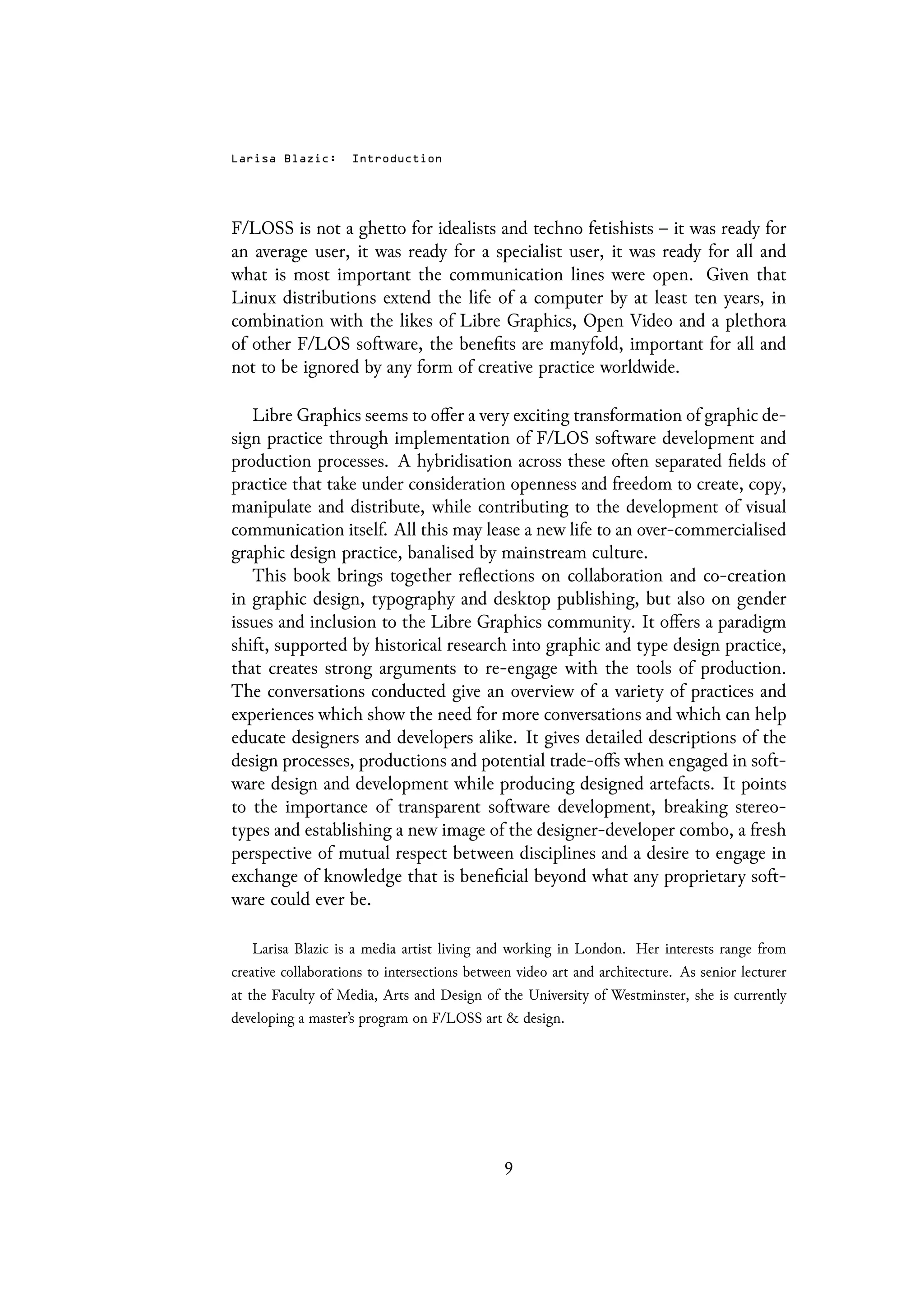

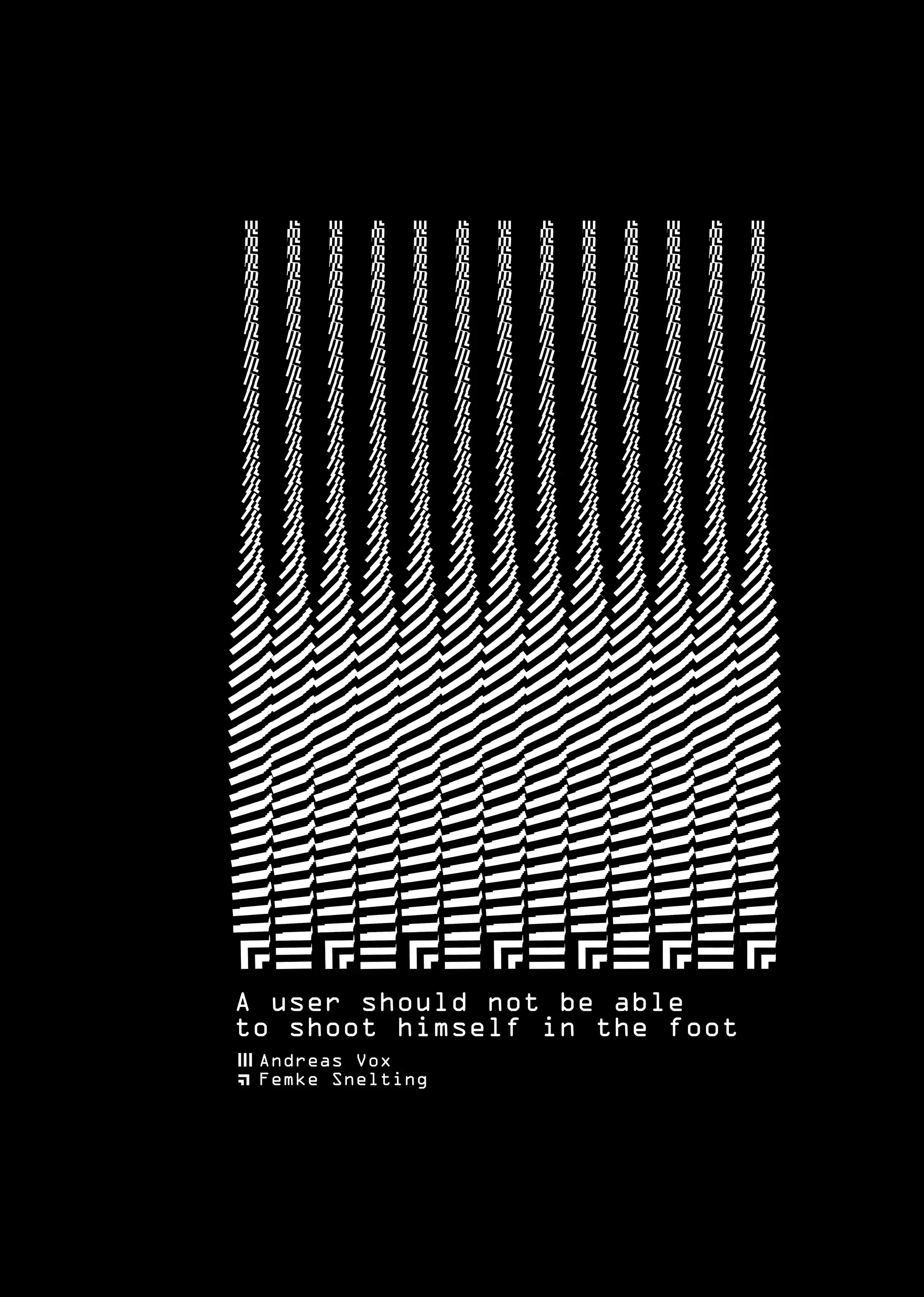
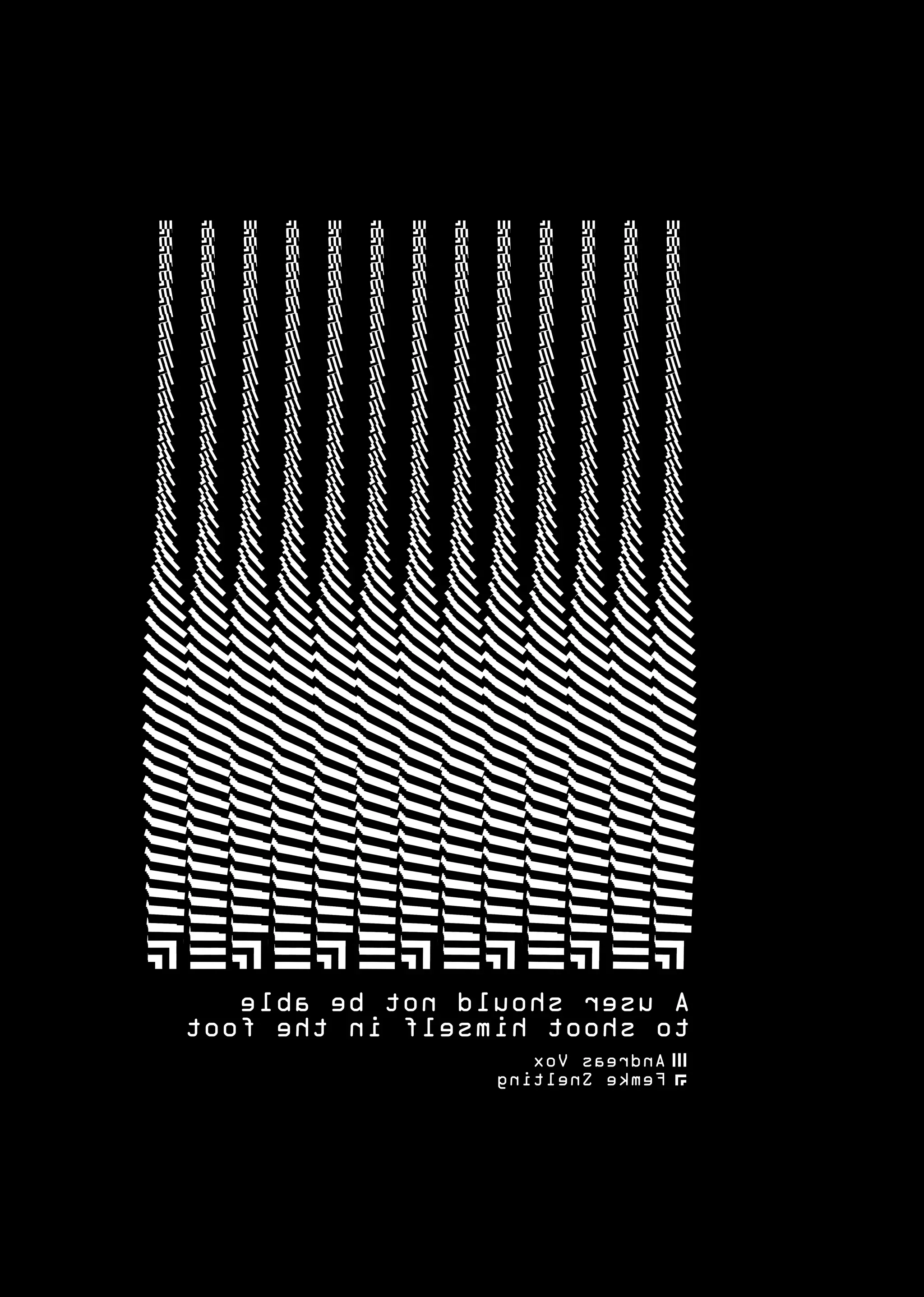
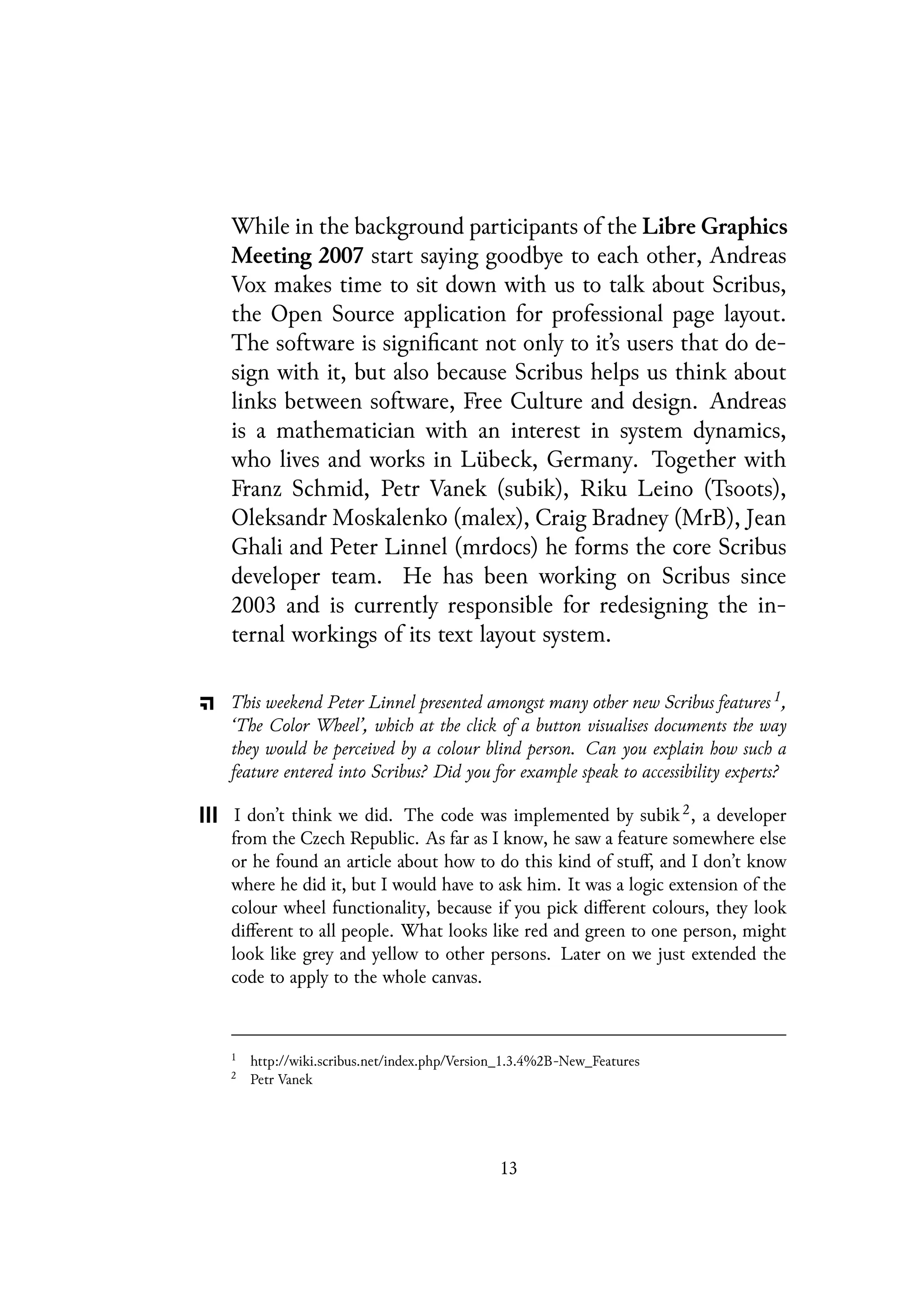
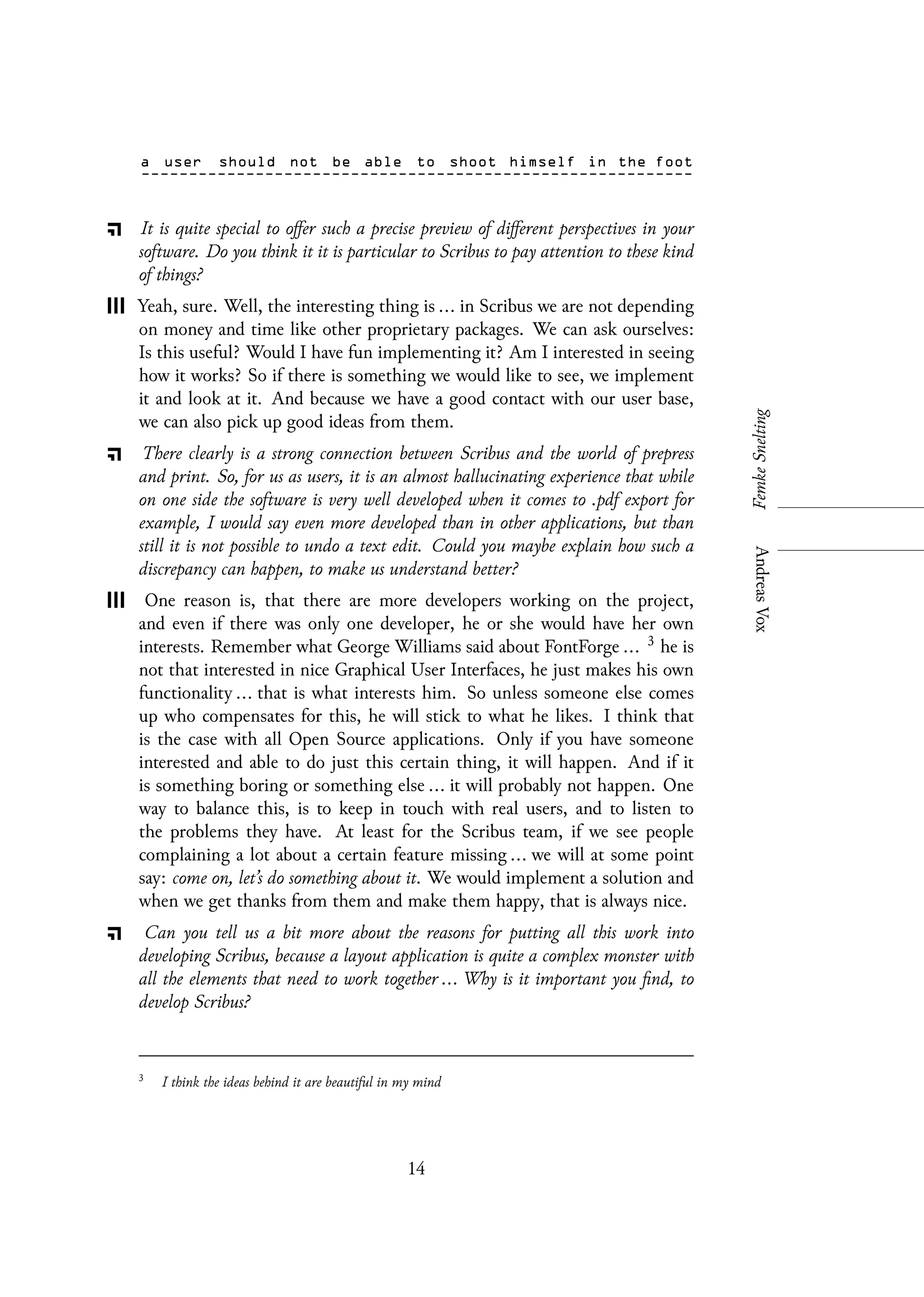

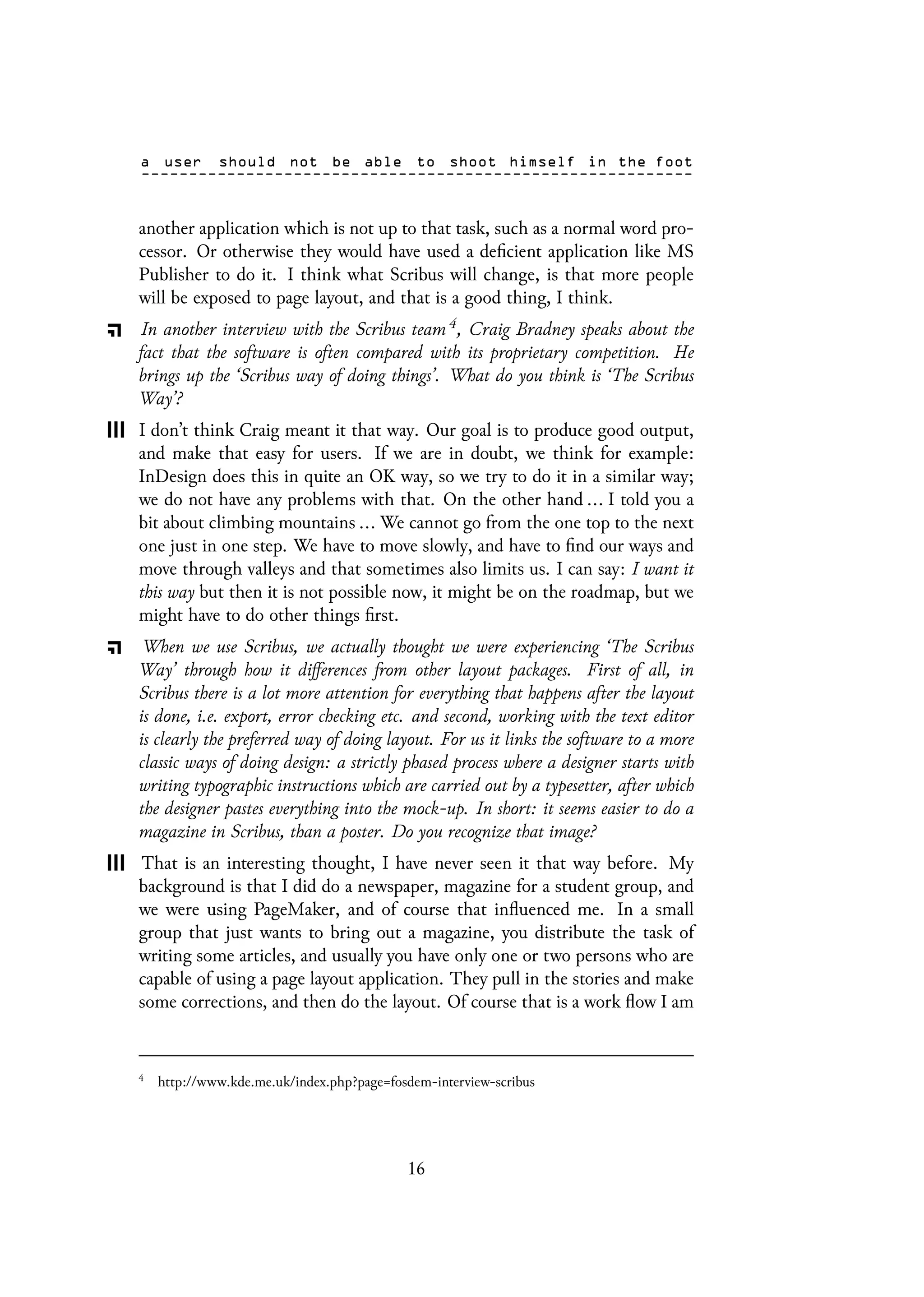
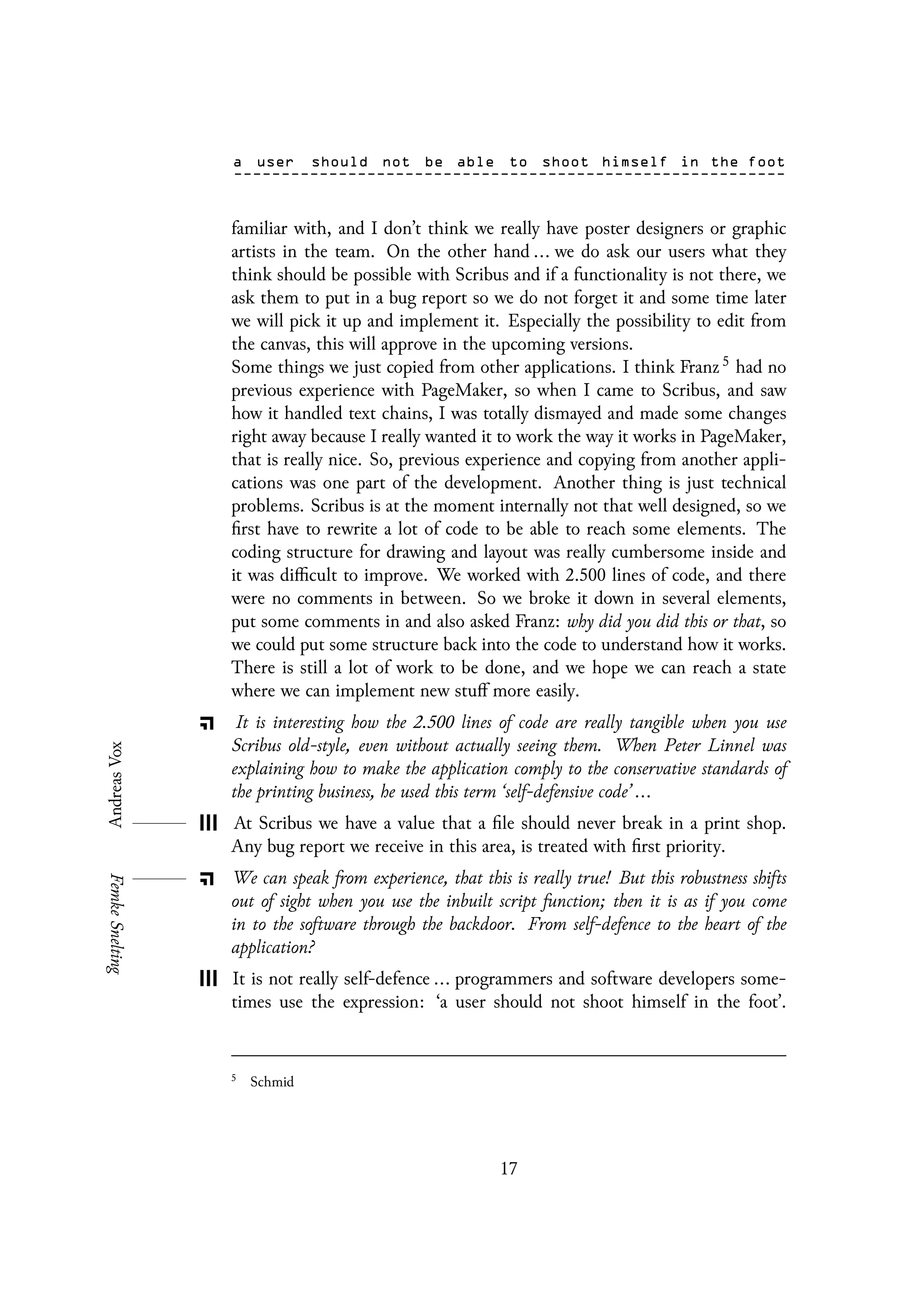
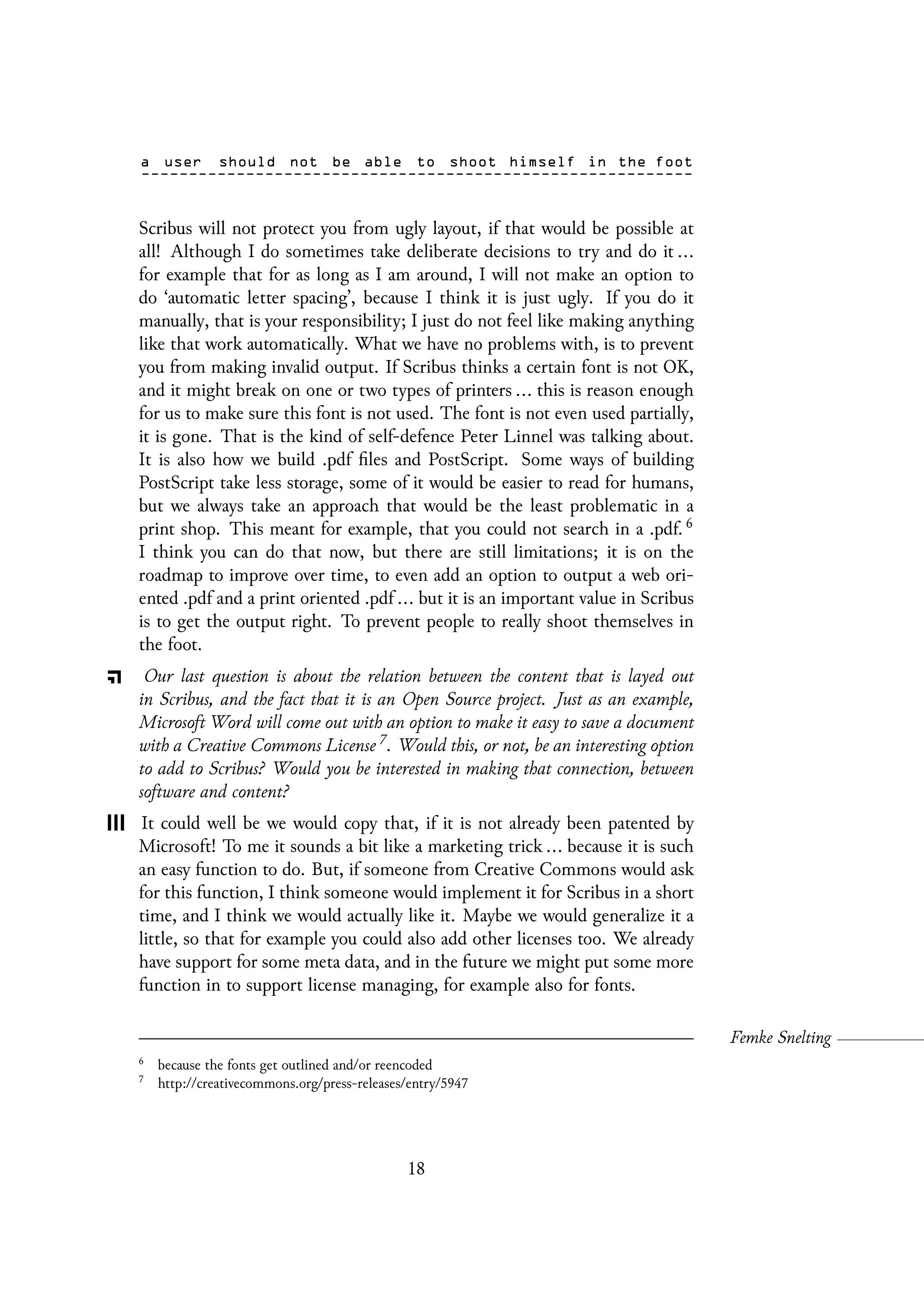
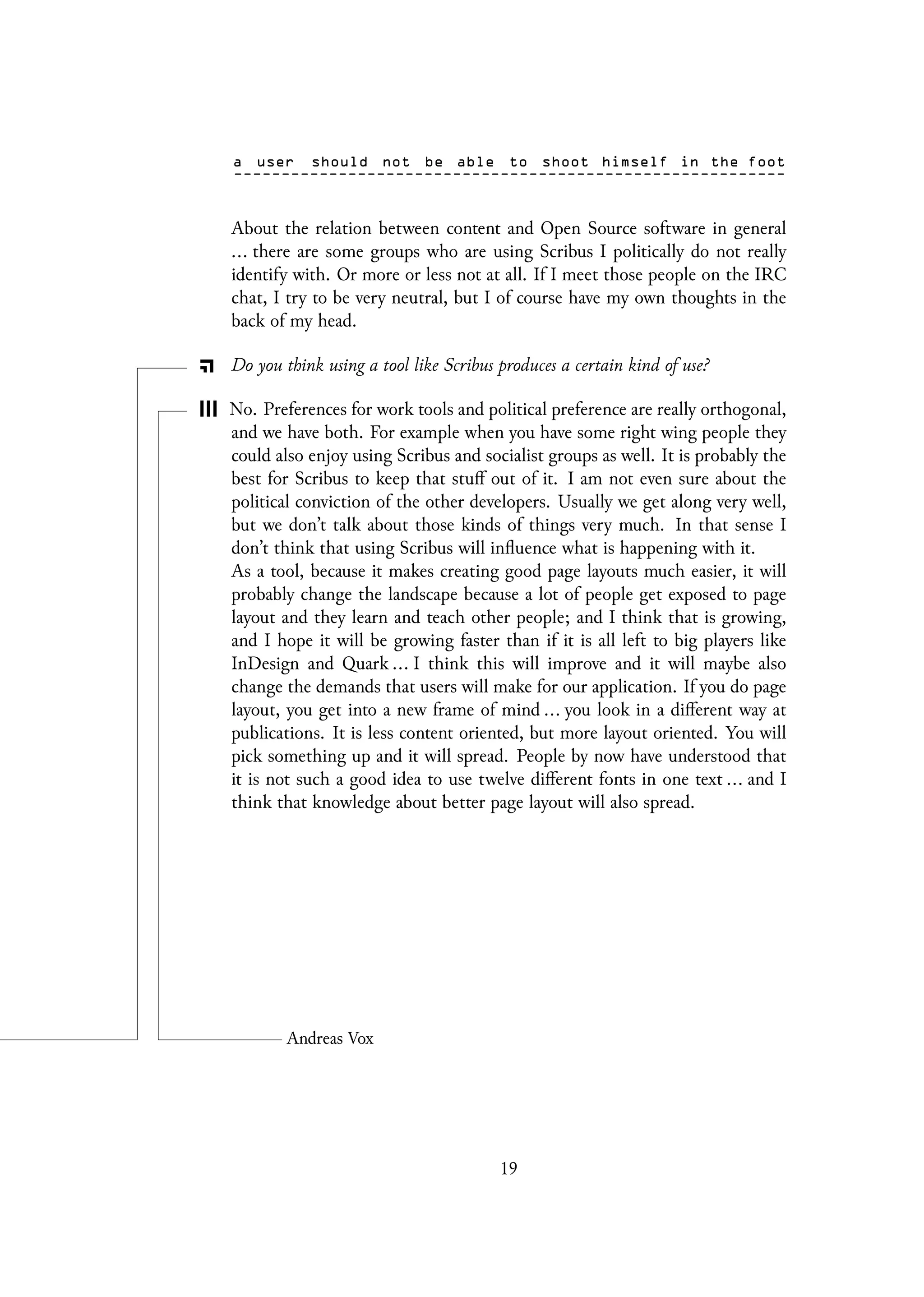

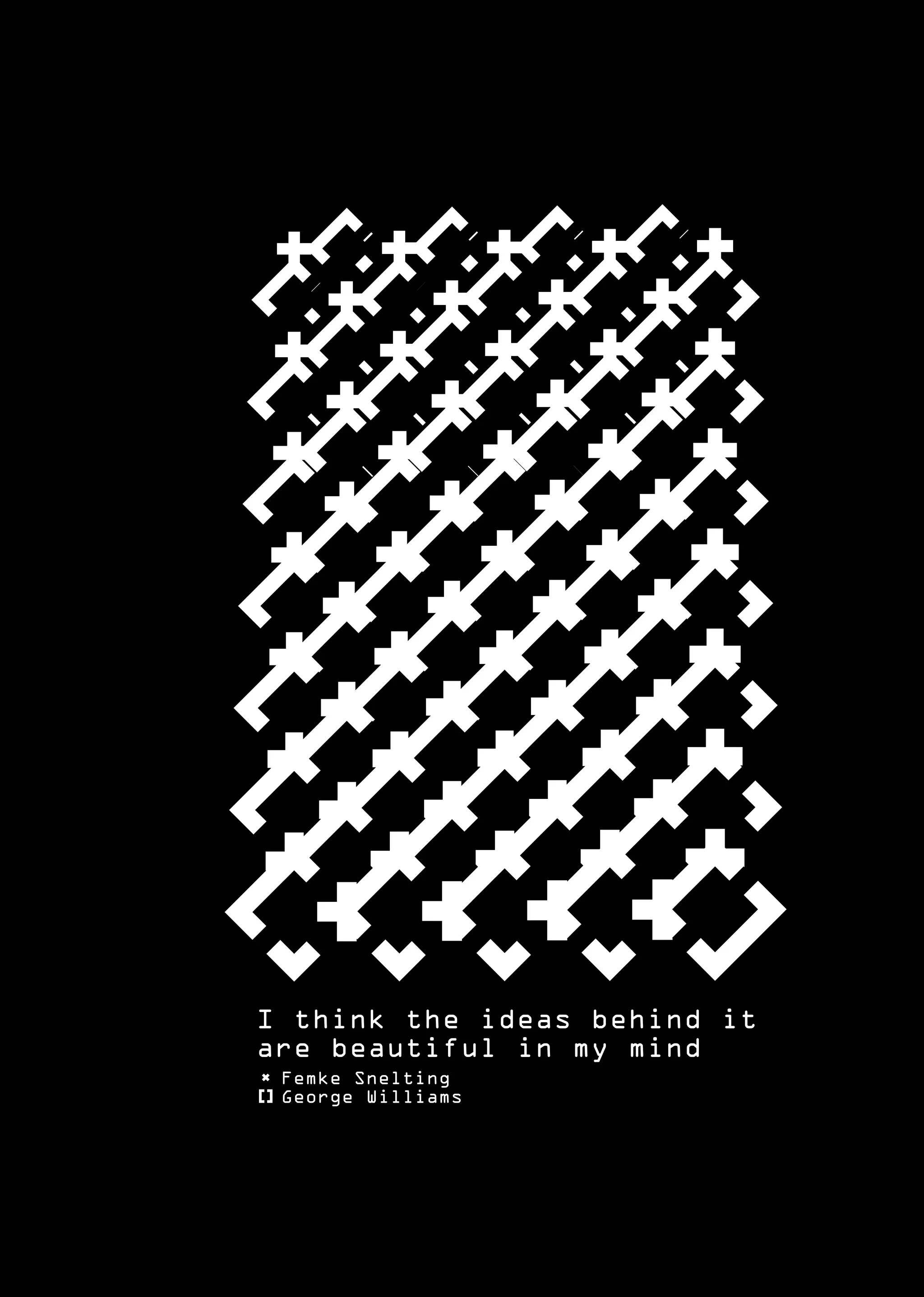
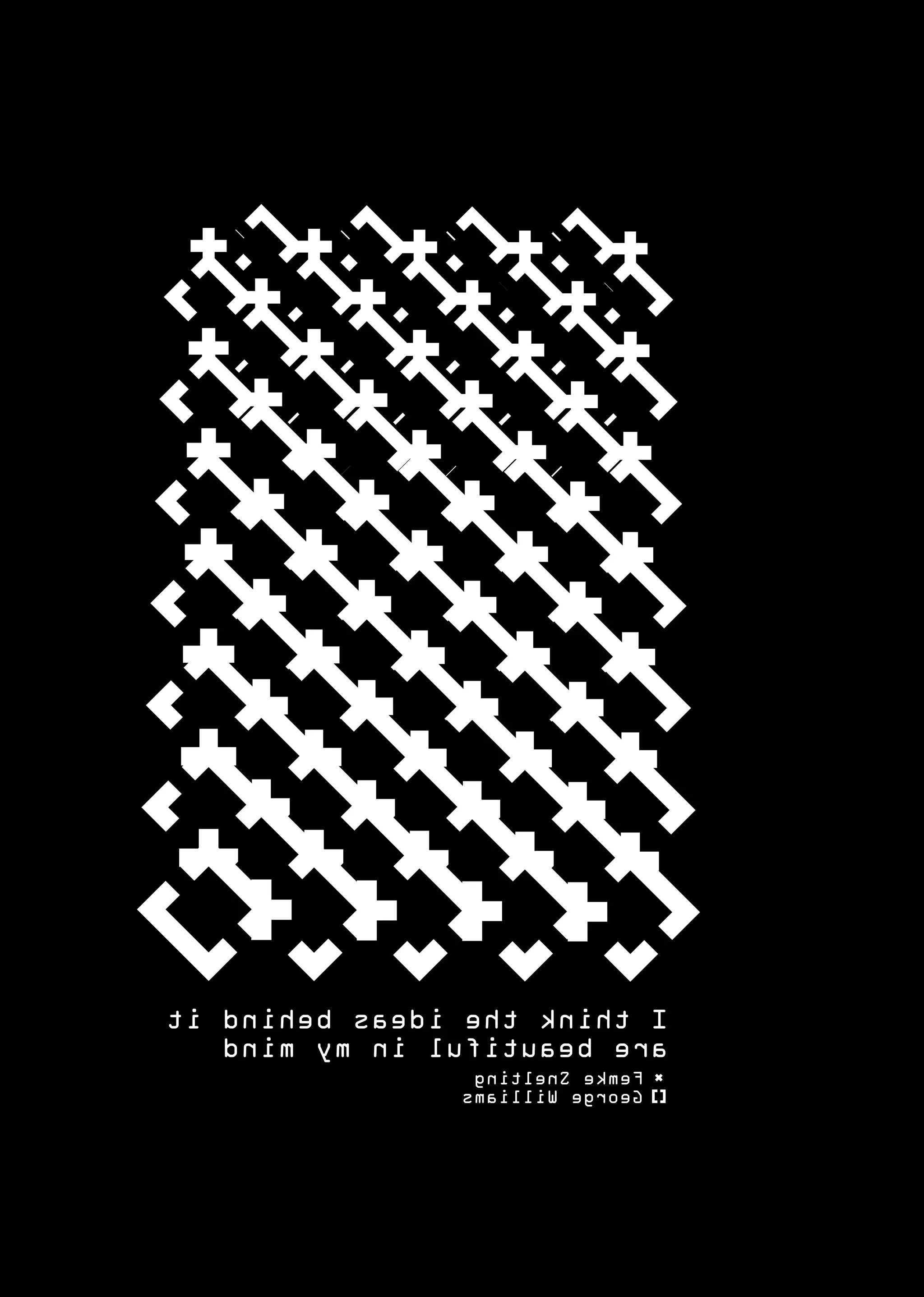

![that I was interested in fonts. I’m not quite sure how that connection hap-
pened, but it did. So I was interested in fonts. And there was this program
that came out in the eighties called Fontographer which allowed you to cre-
ate PostScript 1 and later TrueType 2 fonts. And I loved it. And I made lots
of calligraphic fonts with it.
You were ... like 20?
I was 20~30. Lets see, I was born in 1959, so in the eighties I was in my
twenties mostly. And then Fontographer was bought up by Macromedia 3
who had no interest in it. They wanted FreeHand 4 which was done by
the same company. So they dropped Fon ... well they continued to sell
Fontographer but they didn’t update it. And then OpenType 5 came out and
Unicode 6 came out and Fontographer didn’t do this right and it didn’t do
that right ... And I started making my own fonts, and I used Fontographer
to provide the basis, and I started writing scripts that would add accents to
latin letters and so on. And figured out the Type1 7 format so that I could
decompose it — decompose the Fontographer output so that I could add
1
PostScript fonts are outline font specifications developed by Adobe Systems for professional
digital typesetting, which uses PostScript file format to encode font information.
Wikipedia. PostScript fonts — Wikipedia, The Free Encyclopedia, 2014. [Online; accessed 18.12.2014]
2
TrueType is an outline font standard developed by Apple and Microsoft in the late 1980s as a
competitor to Adobe’s Type 1 fonts used in PostScript.
Wikipedia. TrueType — Wikipedia, The Free Encyclopedia, 2014. [Online; accessed 18.12.2014]
3
Macromedia was an American graphics, multimedia and web development software company
(1992–2005). Its rival, Adobe Systems, acquired Macromedia on December 3, 2005.
Wikipedia. Macromedia — Wikipedia, The Free Encyclopedia, 2014. [Online; accessed 18.12.2014]
4
Adobe FreeHand (formerly Macromedia Freehand) is a computer application for creating
two-dimensional vector graphics. Adobe discontinued development and updates to the
program. Wikipedia. Adobe FreeHand — Wikipedia, The Free Encyclopedia, 2014. [Online; accessed 18.12.2014]
5
OpenType is a format for scalable computer fonts. It was built on its predecessor TrueType,
retaining TrueType’s basic structure and adding many intricate data structures for prescribing
typographic behavior. Wikipedia. Opentype — wikipedia, the free encyclopedia, 2014. [Online; accessed 18.12.2014]
6
Unicode is a computing industry standard for the consistent encoding, representation, and
handling of text expressed in most of the world’s writing systems.
Wikipedia. Unicode — Wikipedia, The Free Encyclopedia, 2014. [Online; accessed 18.12.2014]
7
Type 1 is a font format for single-byte digital fonts for use with Adobe Type Manager
software and with PostScript printers. It can support font hinting. It was originally a
proprietary specification, but Adobe released the specification to third-party font
manufacturers provided that all Type 1 fonts adhere to it.
Wikipedia. PostScript fonts — Wikipedia, The Free Encyclopedia, 2014. [Online; accessed 18.12.2014]
24](https://image.slidesharecdn.com/nf9eqef8sfiyxgigz7xn-signature-b03e0a6271101f66a8d7193a3f5bd73f7b52f385bb5cc7354043f5b991639302-poli-150429194709-conversion-gate02/75/Conversations-24-2048.jpg)
![my own things to it. And then Fontographer didn’t do Type0 8 PostScript
fonts, so I figured that out.
And about this time, the little company I was working for, a tiny little
startup — we wrote a web HTML editor — where you could sit at your
desk and edit pages on the web — it was before FrontPage 9, but similar to
FrontPage. And we were bought by AOL and then we were destroyed by
AOL, but we had stock options from AOL and they went through the roof.
So ... in the late nineties I quit. And I didn’t have to work.
And I went off to Madagascar for a while to see if I wanted to be a prima-
tologist. And ... I didn’t. There were too many leaches in the rainforest.
(laughs)
So I came back, and I wrote a font editor instead.
And I put it up on the web and in late 99, and within a month someone
gave me a bug report and was using it.
(laughs) So it took a month
Well, you know, there was no advertisement, it was just there, and someone
found it and that was neat!
(laughs)
And that was called PfaEdit (because when it began it only did PostScript)
and I ... it just grew. And then — I don’t know — three, four, five years ago
someone pointed out that PfaEdit wasn’t really appropriate any more, so I
asked various users what would be a good name and a french guy said How
’bout FontForge? So. It became FontForge then. — That’s a much better
name than PfaEdit.
(laughs)
Used it ever since.
But your background ... you talked about your father studying ...
8
Type 0 is a ‘composite’ font format . A composite font is composed of a high-level font that
references multiple descendent fonts.
Wikipedia. PostScript fonts — Wikipedia, The Free Encyclopedia, 2014. [Online; accessed 18.12.2014]
9
Microsoft FrontPage is a WYSIWYG HTML editor and Web site administration tool from
Microsoft discontinued in December 2006.
Wikipedia. Microsoft FrontPage — Wikipedia, The Free Encyclopedia, 2014. [Online; accessed 18.12.2014]
25](https://image.slidesharecdn.com/nf9eqef8sfiyxgigz7xn-signature-b03e0a6271101f66a8d7193a3f5bd73f7b52f385bb5cc7354043f5b991639302-poli-150429194709-conversion-gate02/75/Conversations-25-2048.jpg)
![I grew up in a household where Shakespeare was quoted at me every day,
and he was an English teacher, still is an English teacher, well, obviously
retired but he still occasionally teaches, and has been working for about 30
years on one of those versions of Shakespeare where you have two lines of
Shakespeare text at the top and the rest of the page is footnotes. And I went
completely differently and became a mathematician and computer scientist
and worked in those areas for almost twenty years and then went off and
tried to do my own things.
So how did you become a mathematician?
(pause) I just liked it.
(laughs) just liked it
I was good at it. I got pushed ahead in high school. It just never occurred
to me that I’d do anything else — until I met a computer. And then I still
did maths because I didn’t think computers were — appropriate — or — I
was a snob. How about that.
(laughs)
But I spent all my time working on computers as I went through university.
And then got my first job at JPL 10 and shortly thereafter the shuttle 11
blew up and we had some — some of our experiments — my little group
— flew on the shuttle and some of them flew on an airplane which went
over the US took special radar pictures of the US. We also took special radar
pictures of the world from the shuttle (SIR-A, SIR-B, SIR-C). And then
our airplane burned up. And JPL was not a very happy place to work after
that. So then I went to a little company with some college friends of mine,
that they’d started, created compilers and debuggers — do you know what
those are?
Mm-hmm.
And I worked a long time on that, and then the internet came out and found
another little company with some friends — and worked on HTML.
10
Jet Propulsion Laboratory
11
The Space Shuttle Challenger disaster occurred on January 28, 1986, when the NASA Space
Shuttle orbiter Challenger broke apart 73 seconds into its flight, leading to the deaths of its
seven crew members.
Wikipedia. Space Shuttle Challenger disaster — Wikipedia, The Free Encyclopedia, 2014. [Online; accessed 18.12.2014]
26](https://image.slidesharecdn.com/nf9eqef8sfiyxgigz7xn-signature-b03e0a6271101f66a8d7193a3f5bd73f7b52f385bb5cc7354043f5b991639302-poli-150429194709-conversion-gate02/75/Conversations-26-2048.jpg)
![So when, before we moved, I was curious about, I wanted you to talk
about a Shakespearian influence on your interest in fonts. But on the
other hand you talk about working in a company where you did HTML
editors at the time you actually started, I think. So do you think that
is somehow present ... the web is somehow present in your — in how
FontForge works? Or how fonts work or how you think about fonts?
I don’t think the web had much to do with my — well, that’s not true.
OK, when I was working on the HTML editor, at the time, mid-90s, there
weren’t any Unicode fonts, and so part of the reason I was writing all these
scripts to add accents and get Type0 support in PostScript (which is what
you need for a Unicode font) was because I needed a Unicode font for our
HTML product.
To that extent — yes-s-s-s.
It had an effect. Aside from that, not really.
The web has certainly allowed me to distribute it. Without the web I doubt
anyone would know — I wouldn’t have any idea how to ‘market’ it. If that’s
the right word for something that doesn’t get paid for. And certainly the
web has provided a convenient infrastructure to do the documentation in.
But — as for font design itself — that (the web) has certainly not affected
me.
Maybe with this creative commons talk that Jon Phillips was giving, there
may be, at some point, a button that you can press to upload your fonts to
the Open Font Library 12 — but I haven’t gotten there yet, so I don’t want
to promise that.
(laughs) But no, indeed there was – hearing you speak about ccHost 13 –
that’s the ...
Mm-hmm.
... Software we are talking about?
That’s what the Open Font Library uses, yes.
12
Open Font Library is a project devoted to the hosting and encouraged creation of fonts
released under Free Licenses.
Wikipedia. Open Font Library — Wikipedia, The Free Encyclopedia, 2014. [Online; accessed 18.12.2014]
13
ccHost is a web-based media hosting engine upon which Creative Commons’ ccMixter remix
web community is built. Wikipedia. CcHost — Wikipedia, The Free Encyclopedia, 2012. [Online; accessed 18.12.2014]
27](https://image.slidesharecdn.com/nf9eqef8sfiyxgigz7xn-signature-b03e0a6271101f66a8d7193a3f5bd73f7b52f385bb5cc7354043f5b991639302-poli-150429194709-conversion-gate02/75/Conversations-27-2048.jpg)
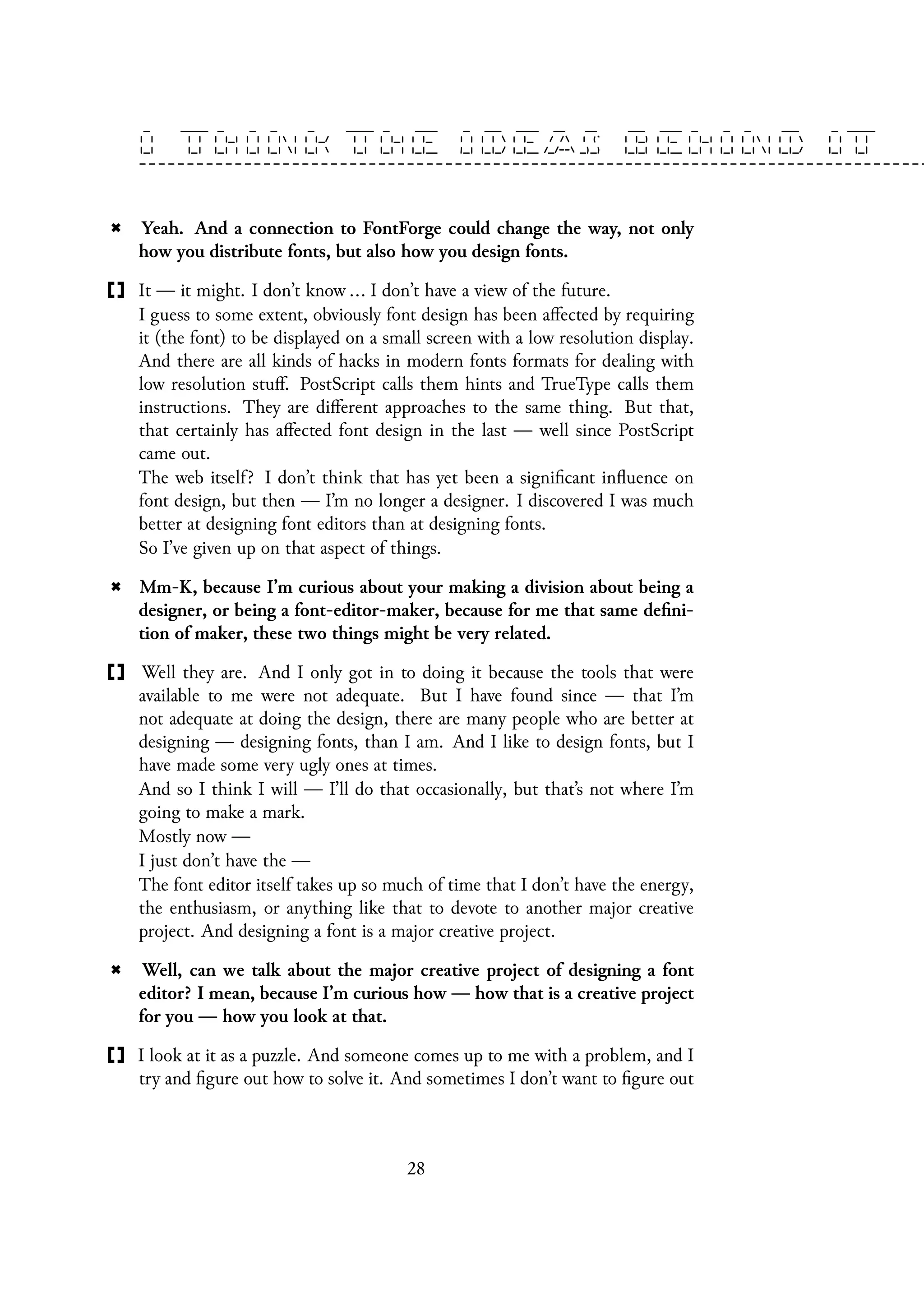
![how to solve it. But I feel I should anyway. And sometimes I don’t want to
figure out how to solve it and I don’t.
That’s one of the glories of being one’s own boss, you don’t have to do
everything that you are asked.
But — to me — it’s just a problem. And it’s a fascinating problem. But
why is it fascinating? — That’s just me. No one else, probably, finds
it fascinating. Or — the guys who design FontLab probably also find it
fascinating, there are two or three other font design programs in the world.
And they would also find it fascinating.
Can you give an example of something you would find fascinating?
Well. Dave Crossland who was sitting behind me at the end was talking
to me today — he sat down — we started talking after lunch but on the
way up the stairs — at first he was complaining that FontForge isn’t written
with a standard widget set. So it looks different from everything else. And
yes, it does. And I don’t care. Because this isn’t something which interests
me.
On the other hand he was saying that what he also wanted was a paragraph
level display of the font. So that as he made changes in the font he could
see a ripple effect in the paragraph.
Now I have a thing which does a word level display, but it doesn’t do multi-
lines. Or it does multi-lines if you are doing Japanese (vertical writing mode)
but it doesn’t do multi-columns then. So it’s either one vertical row or one
horizontal row of glyphs.
And I do also have a paragraph level display, but it is static. You bring
it up and it takes the current snapshot of the font and it generates a real
TrueType font and pass it off to the X Window 14 rasterizer — passes it off
to the standard Linux toolchain (FreeType) as that static font and asks that
toolchain to display text.
So what he’s saying is OK, do that, but update the font that you pass off every
now and then. And Yeah, that’d be interesting to do. That’s an interesting project
to work on. Much more interesting than changing my widget set which is
just a lot of work and tedious. Because there is nothing to think about.
It’s just OK, I’ve got to use this widget instead of my widget. My widget does
14
The X Window System is a windowing system for bitmap displays, common on UNIX-like
computer operating systems. X provides the basic framework for a GUI environment:
drawing and moving windows on the display device and interacting with a mouse and
keyboard. Wikipedia. X Window System — Wikipedia, The Free Encyclopedia, 2014. [Online; accessed 18.12.2014]
29](https://image.slidesharecdn.com/nf9eqef8sfiyxgigz7xn-signature-b03e0a6271101f66a8d7193a3f5bd73f7b52f385bb5cc7354043f5b991639302-poli-150429194709-conversion-gate02/75/Conversations-29-2048.jpg)
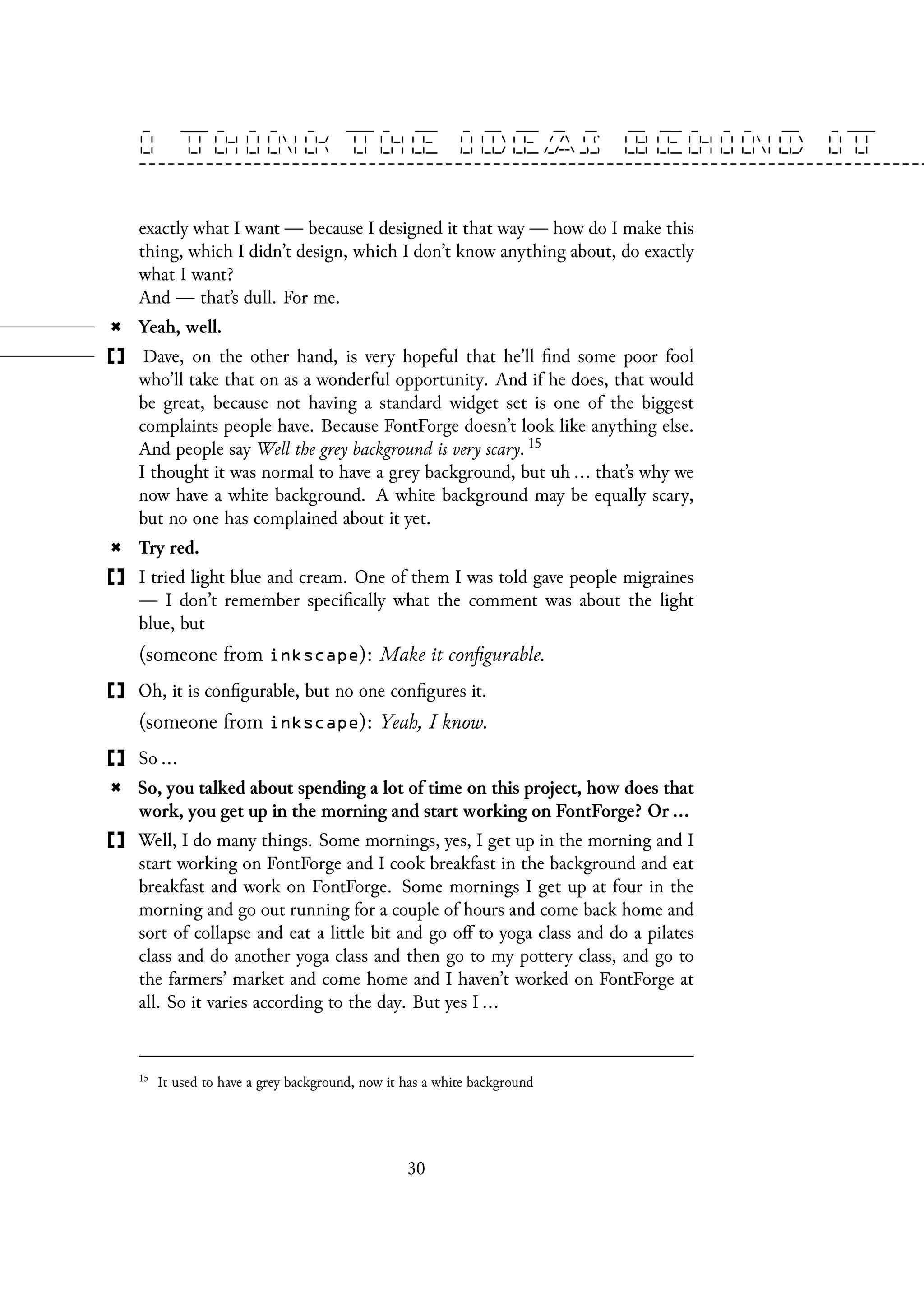
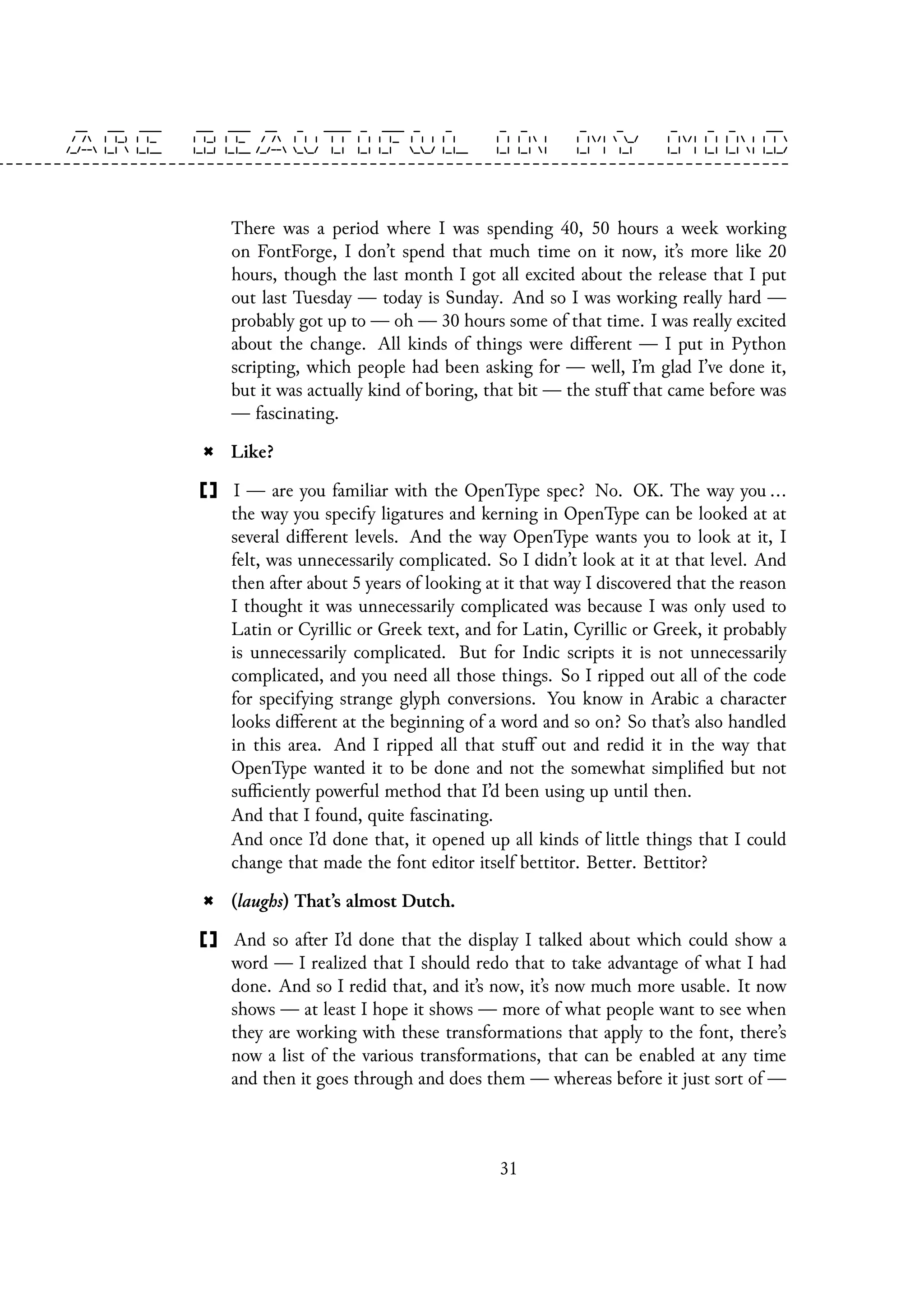
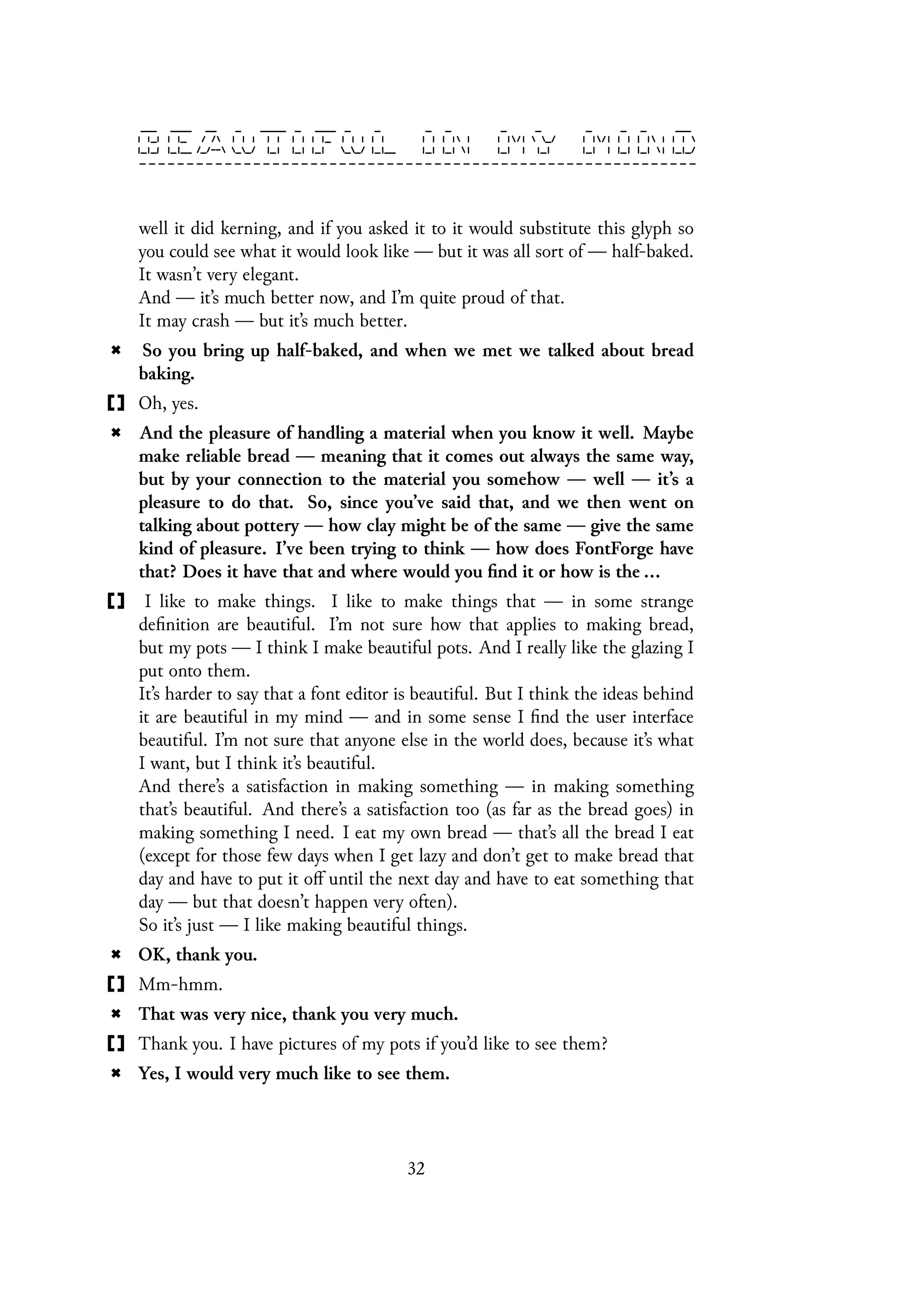


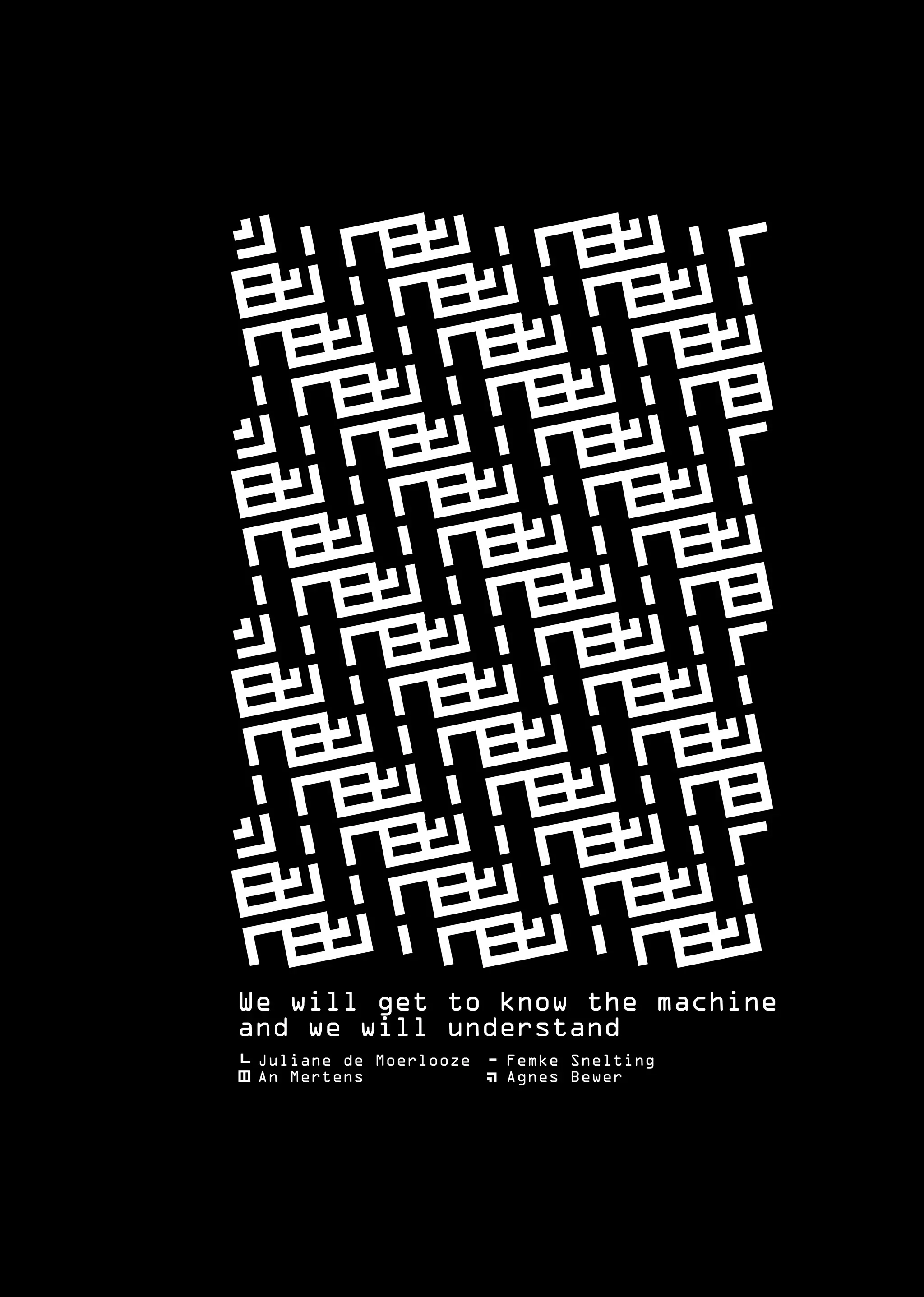
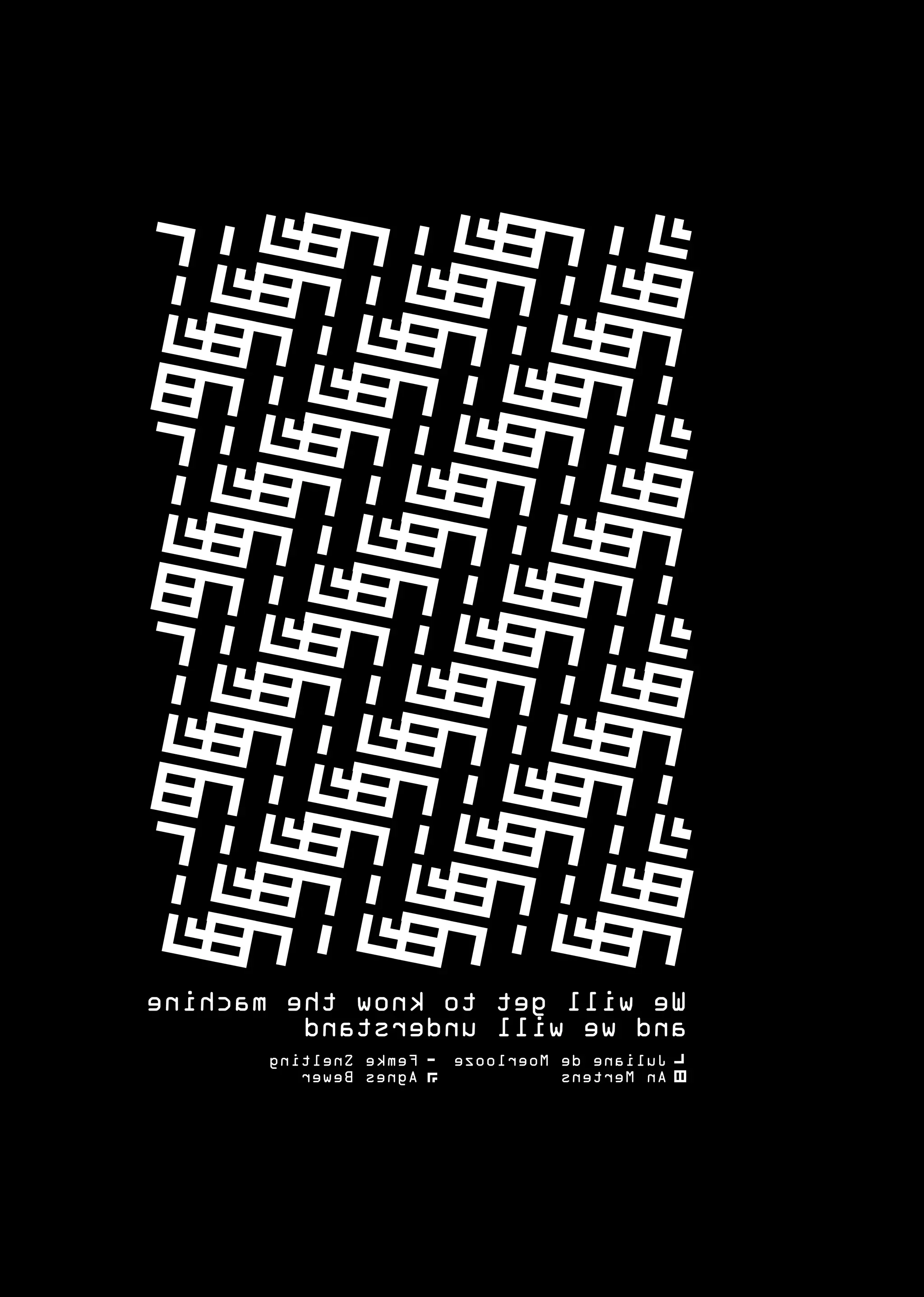
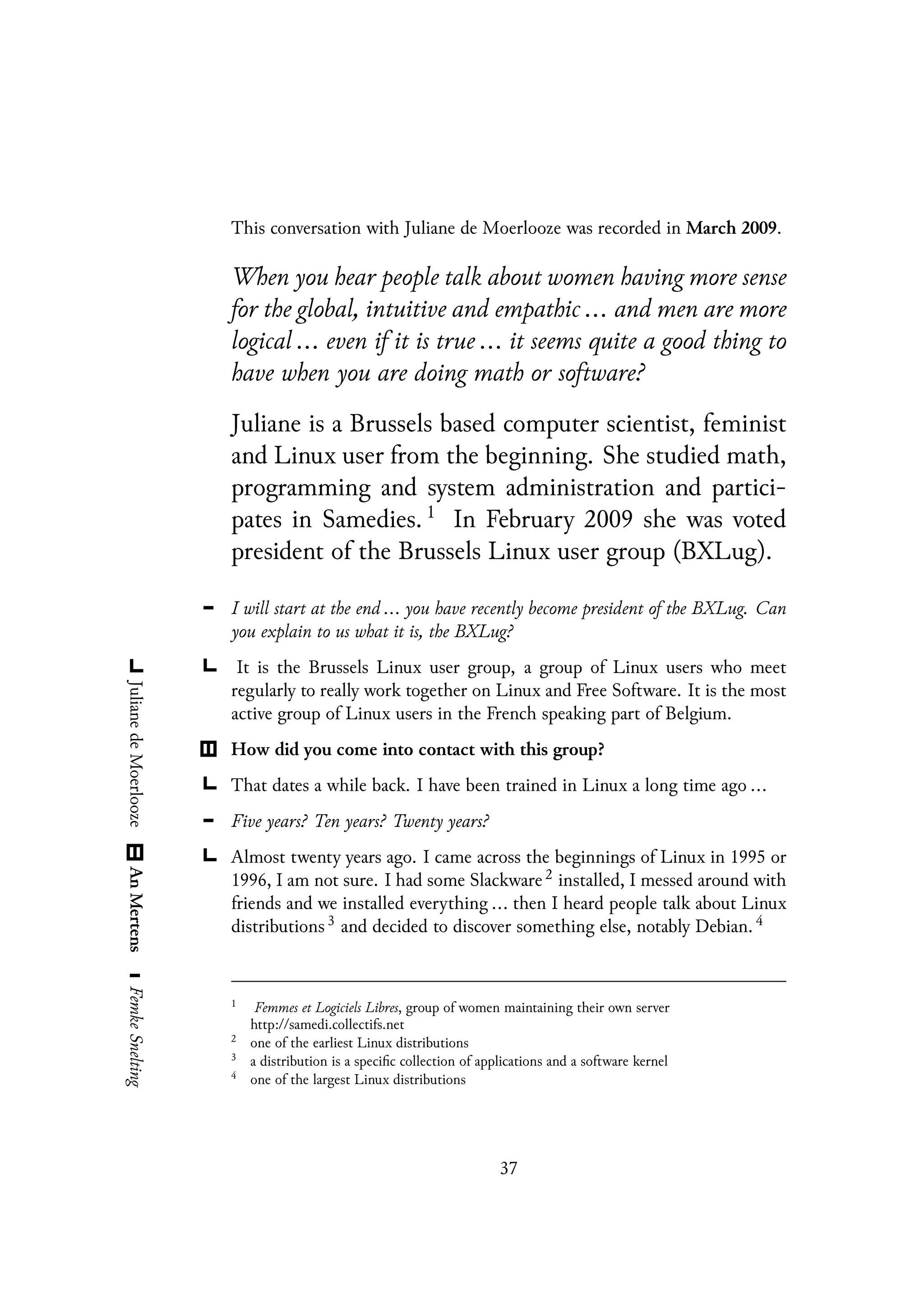
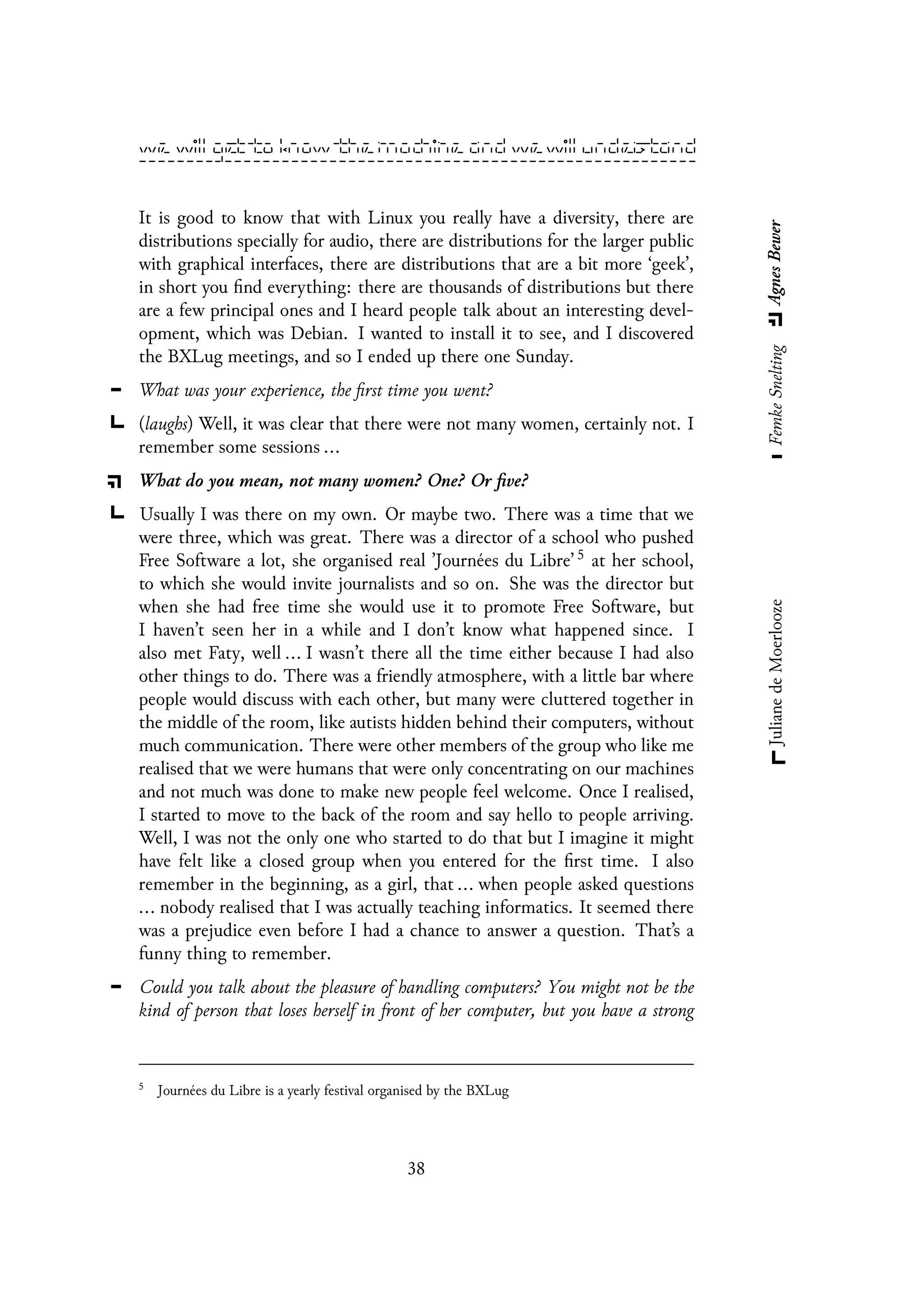

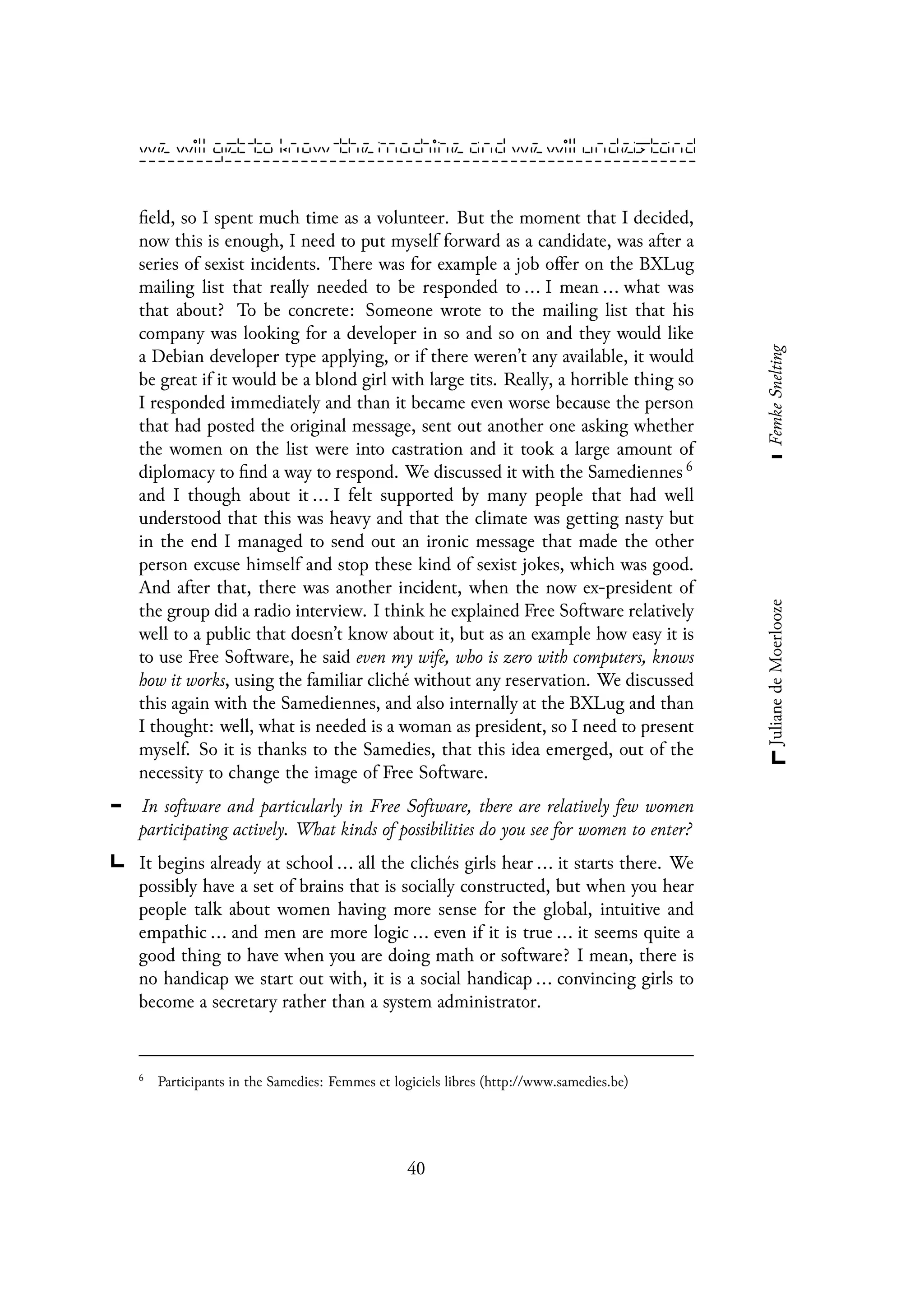
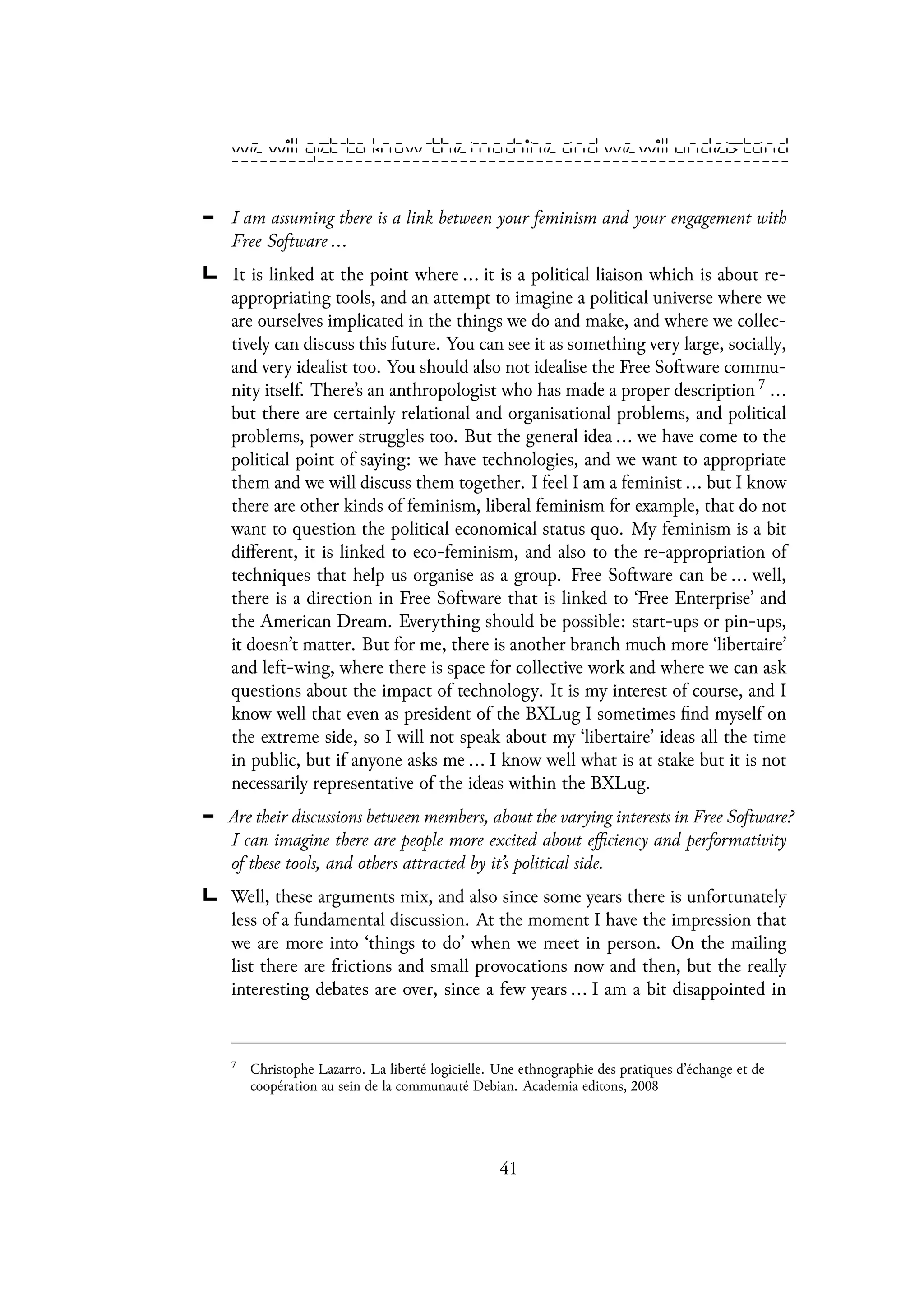
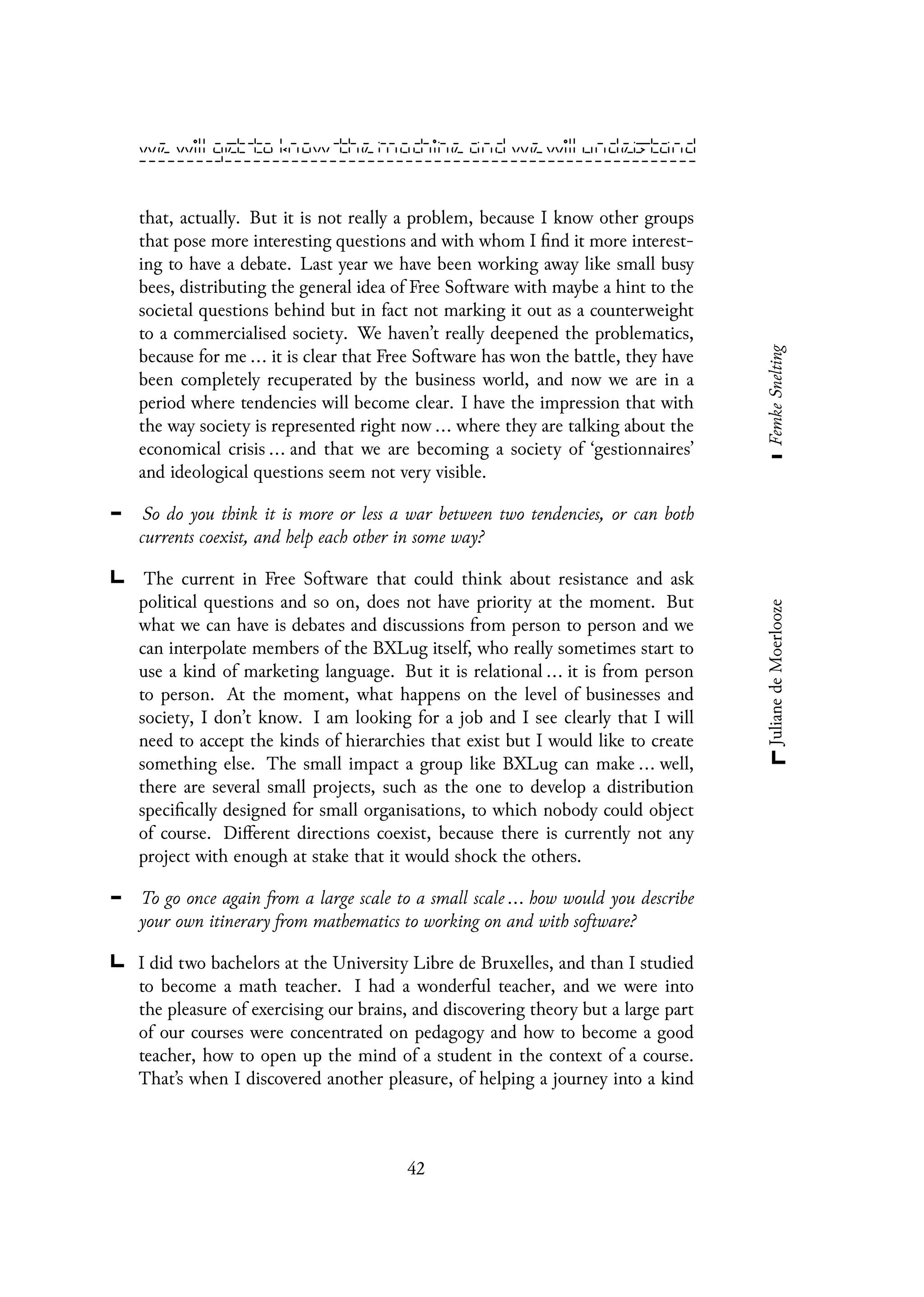
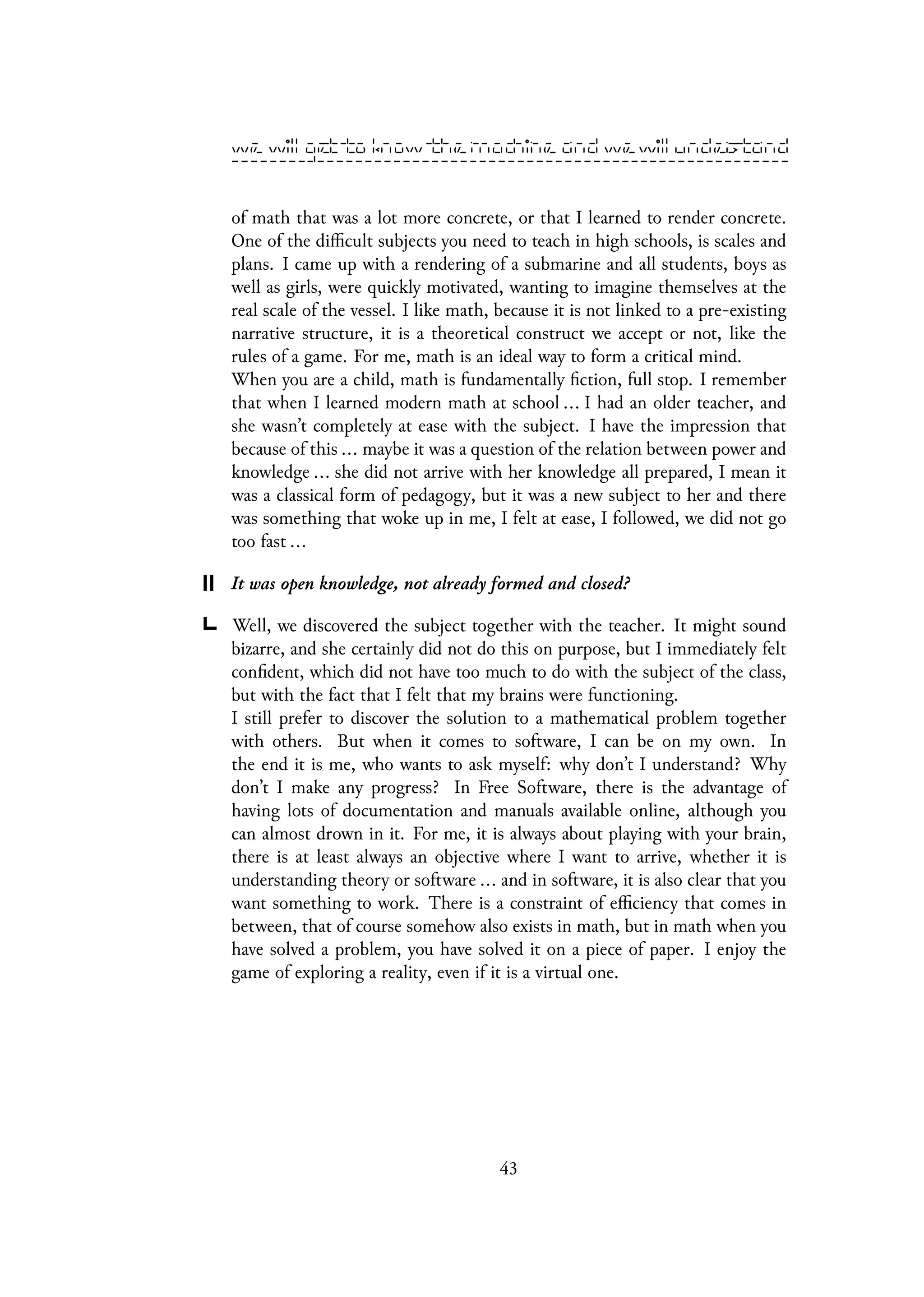

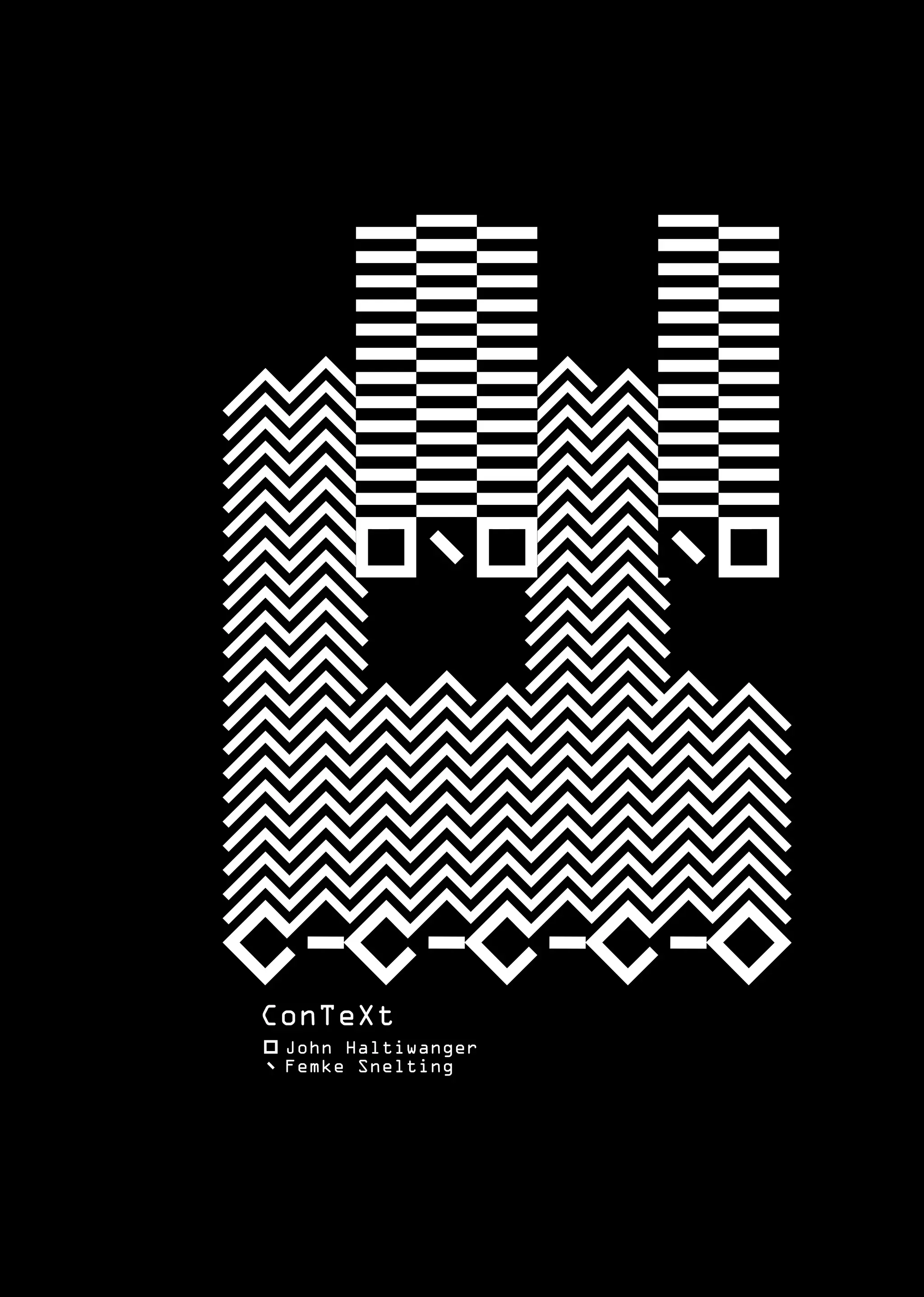

![In September 2013 writer, developer, freestyle rapper and
poet John Haltiwanger joined the ConTeXt user meeting in
Brejlov (Czech Republic) 1
to present his ideas on Subtext,
‘A Proposed Processual Grammar for a Multi-Output Pre-
Format’. The interview started as a way to record John’s
impressions fresh from the meeting, but moved into dis-
cussing the future of layout in terms of ballistics.
How did you end up going to the ConTeXt meeting? Actually, where was it?
It was in Brejlov, which apparently might not even be a town or city. It
might specifically be a hotel. But it has its own ... it’s considered a location,
I guess. But arriving was already kind of a trick, because I was under the
impression there was a train station or something. So I was asking around:
Where is Brejlov? What train do I take to Brejlov? But nobody had any clue,
that this was even something that existed. So that was tricky. But it was re-
ally a beautiful venue. How I ended up at the conference specifically? That’s
a good question. I’m not an incredibly active member on the ConTeXt
mailing list, but I pop up every now and again and just kind of express a
few things that I have going on. So initially I mentioned my thesis, back in
January or maybe March, back when it was really unformulated. Maybe it
was even in 2009. But I got really good responses from Hans. 2 Originally,
when I first got to the Netherlands in 2009 in August, the next weekend
was the third annual ConTeXt meeting. I had barely used the software at
that point, but I had this sort of impulse to go. Well anyway, I did not have
the money for it at that time. So the fact that there was another one coming
round, was like: Ok, that sounds good. But there was something ... we got
into a conversation on the mailing list. Somebody, a non-native English
speaker was asking about pronouns and gendered pronouns and the proper
way of ‘pronouning’ things. In English we don’t have a suitable gender neu-
tral pronoun. So he asked the questions and some guy responded: The
1
http://meeting.contextgarden.net/2013/
2
Hans Hagen is the principal author and developer of ConTeXt, past president of NTG, and
active in many other areas of the TeX community
Hans Hagen – Interview – TeX Users Group. http://tug.org/interviews/hagen.html, 2006. [Online; accessed 18.12.2014]
47](https://image.slidesharecdn.com/nf9eqef8sfiyxgigz7xn-signature-b03e0a6271101f66a8d7193a3f5bd73f7b52f385bb5cc7354043f5b991639302-poli-150429194709-conversion-gate02/75/Conversations-47-2048.jpg)
![proper way to do it, is to use he. It’s an invented problem. This whole question is
an invented question and there is no such thing as a need for considering any other
options besides this. 3 So I wrote back and said: That’s not up to you to decide,
because if somebody has a problem, than there is a problem. So I kind of naively
suggested that we could make a Unicode character, that can stand in, like a
typographical element, that does not necessarily have a pronounciation yet.
So something that, when you are reading it, you could either say he or she
or they and it would be sort of [emergent|dialogic|personalized].
Like delayed political correctness or delayed embraciveness. But, little did I
know, that Unicode was not the answer.
Did they tell you that? That Unicode is not the answer?
Well, Arthur actually wrote back 4, and he knows a lot about Unicode and
he said: With Unicode you have to prove that it’s in use already. In my sense,
Unicode was a playground where I could just map whatever values I wanted
to be whatever glyph I wanted. Somewhere, in some corner of unused
namespace or something. But that’s not the way it works. But TeX works
like this. So I could always just define a macro that would do this. Hans
actually wrote a macro 5 that would basically flip a coin at the beginning of
your paper. So whenever you wanted to use the gender neutral, you would
just use the macro and then it wouldn’t be up to you. It’s another way of
obfuscating, or pushing the responsibility away from you as an author. It’s
like ok, well, on this one it was she, the next it was he, or whatever.
So in a way gender doesn’t matter anymore?
Right. And then I was just like, that’s something we should talk about at the
meeting. I guess I sent out something about my thesis and Hans or Taco,
they know me, they said that it would great for you to do a presentation of
this at the meeting. So that’s very much how I ended up there.
You had never met anyone from ConTeXt before?
3
http://www.ntg.nl/pipermail/ntg-context/2010/051058.html
4
http://www.ntg.nl/pipermail/ntg-context/2010/051098.html
5
http://www.ntg.nl/pipermail/ntg-context/2010/051116.html
48](https://image.slidesharecdn.com/nf9eqef8sfiyxgigz7xn-signature-b03e0a6271101f66a8d7193a3f5bd73f7b52f385bb5cc7354043f5b991639302-poli-150429194709-conversion-gate02/75/Conversations-48-2048.jpg)
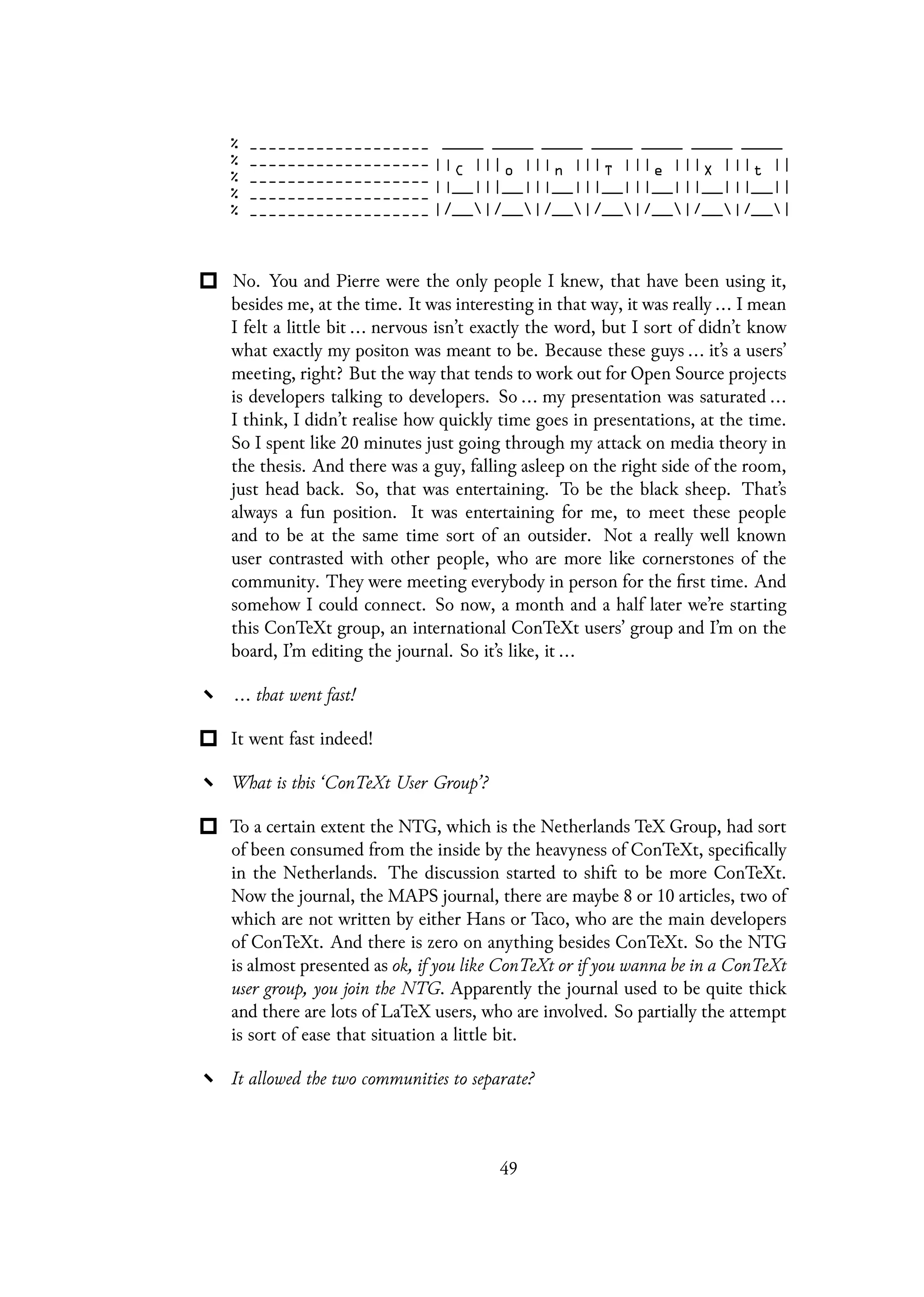

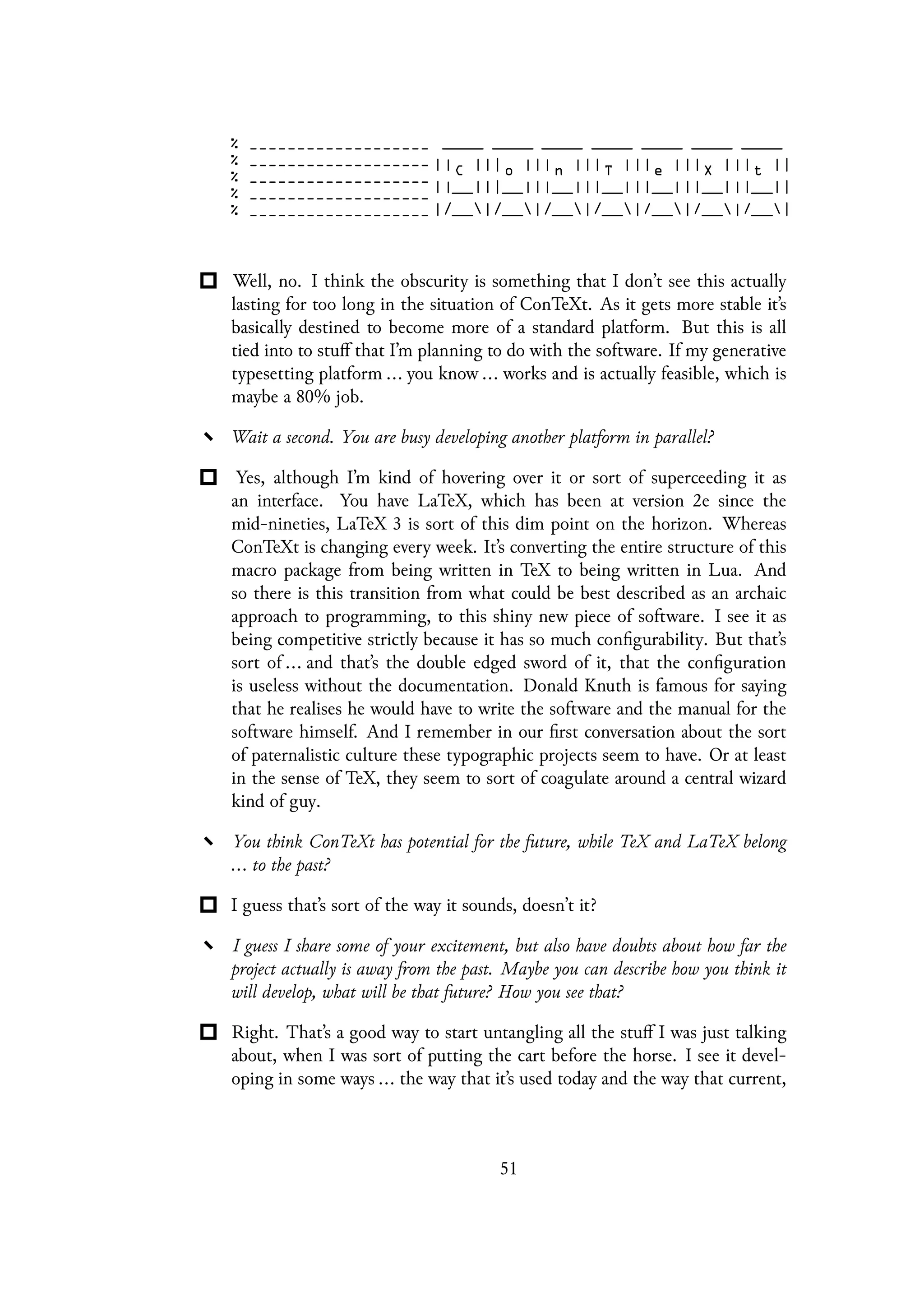
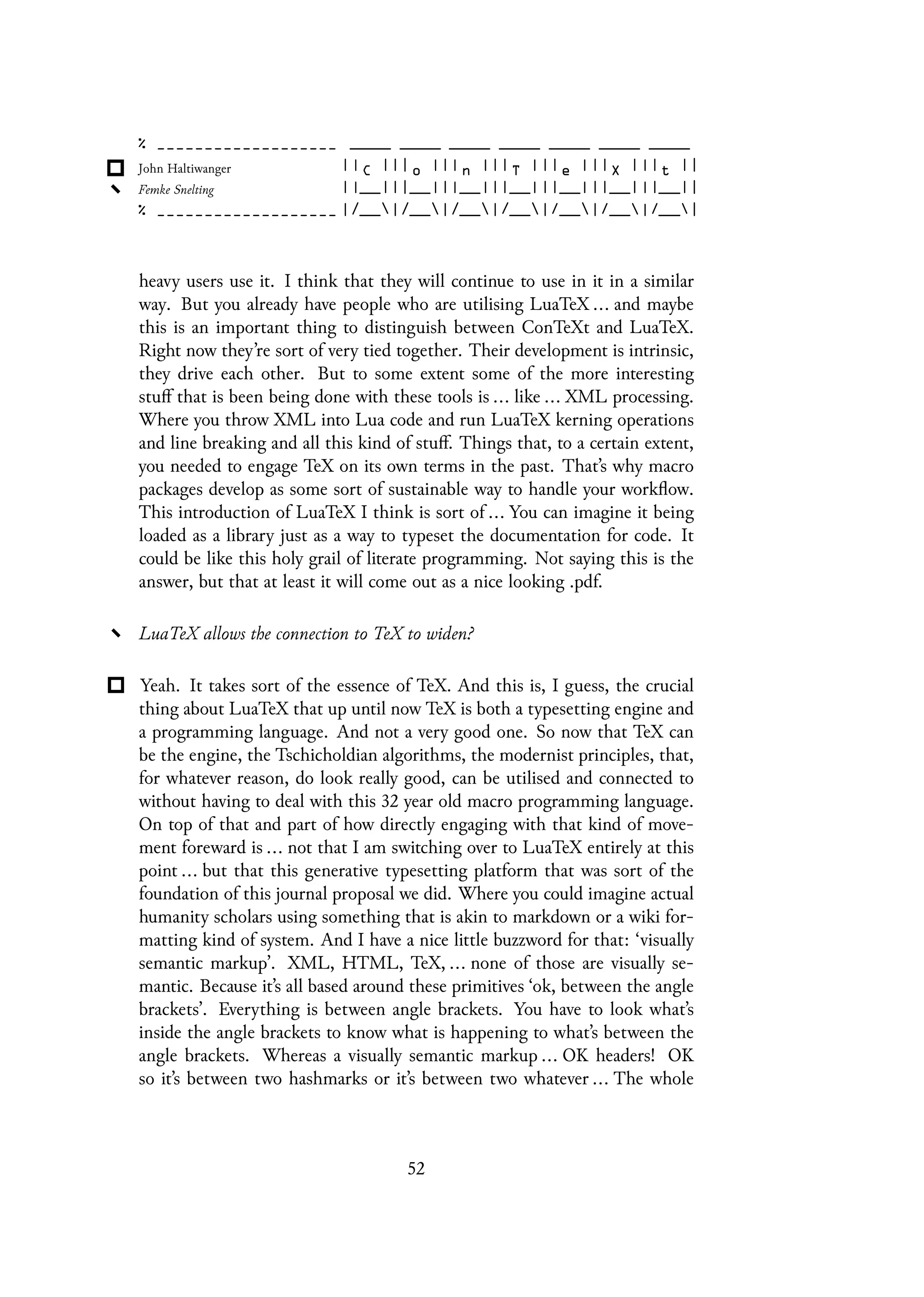
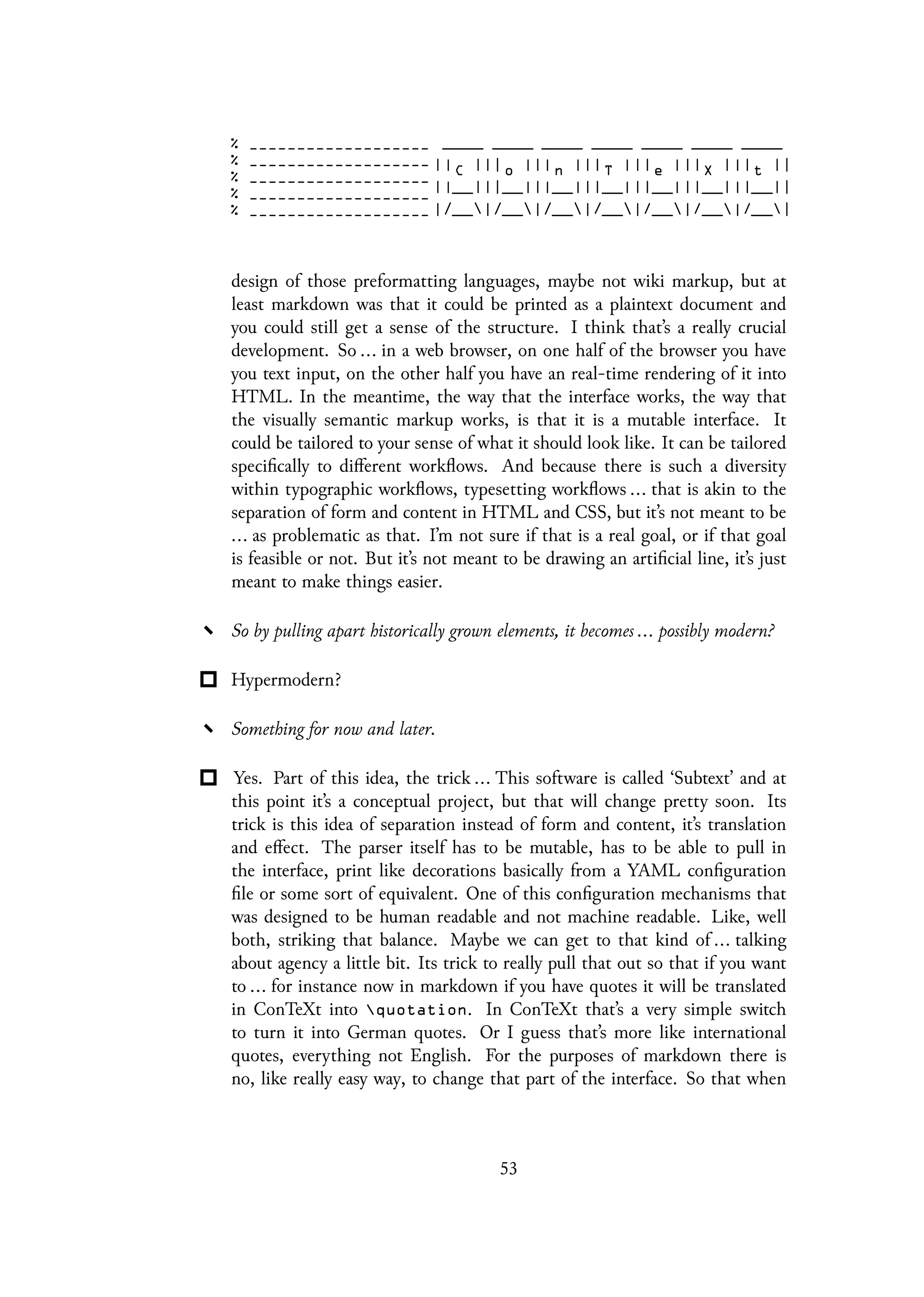
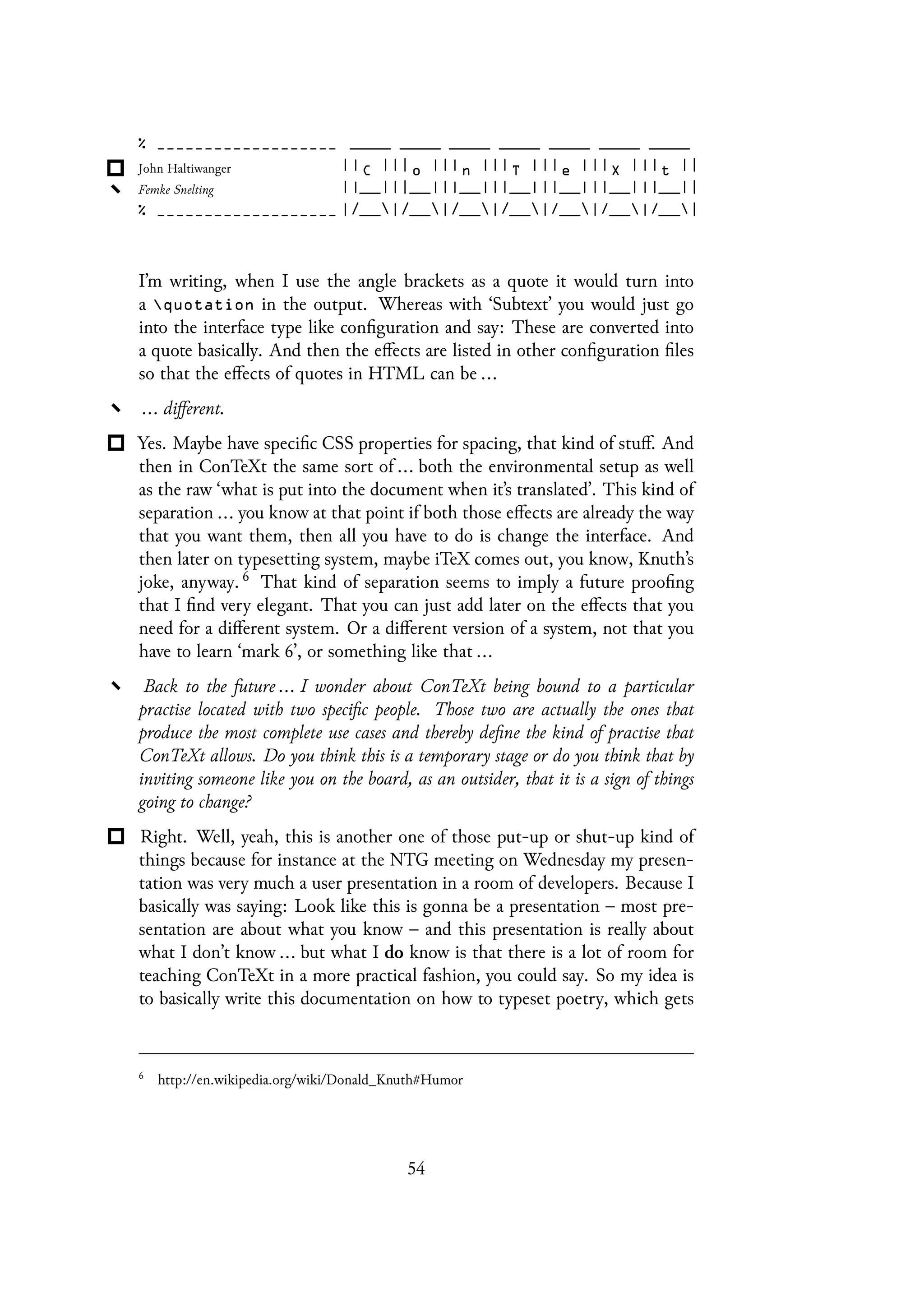

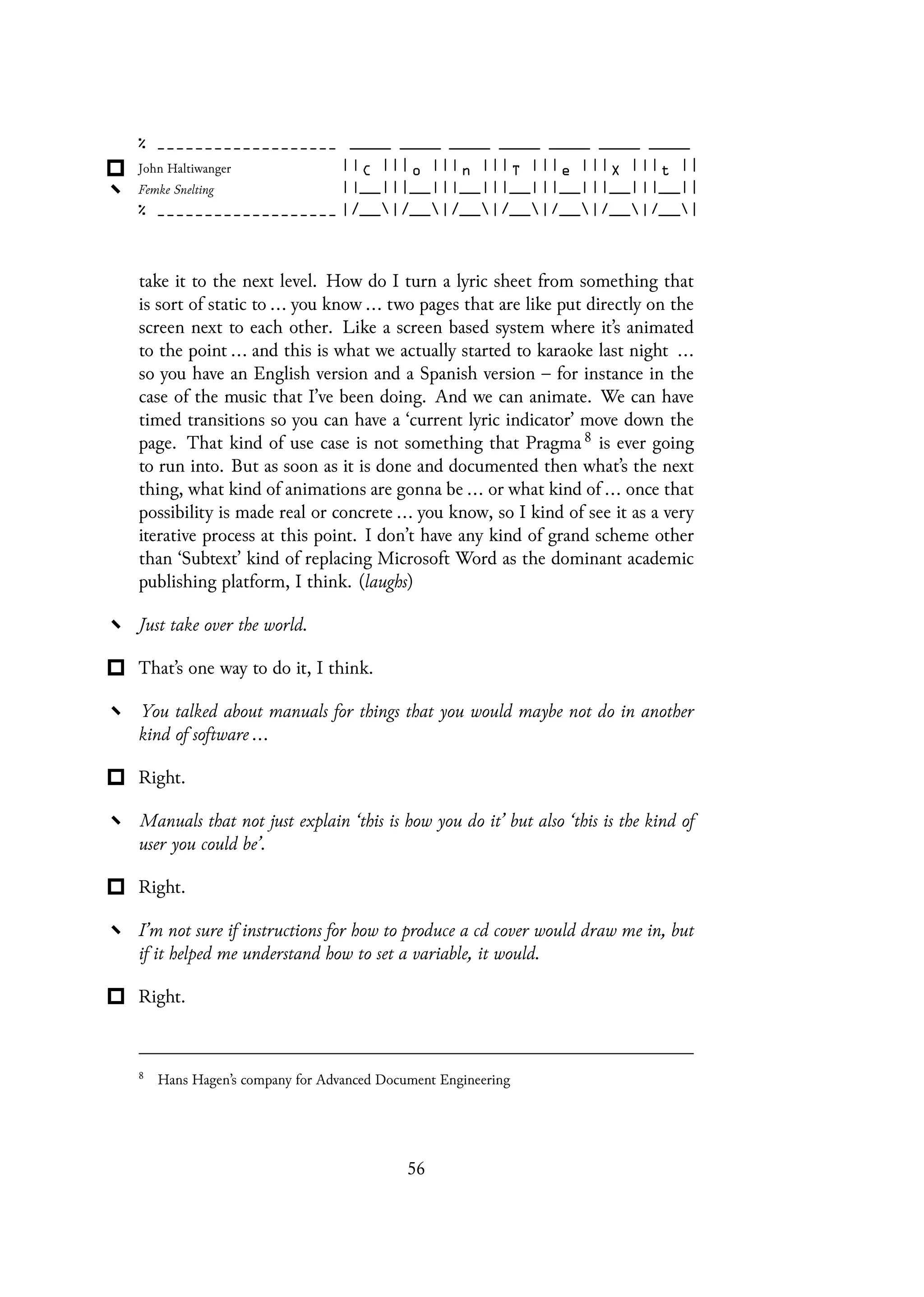
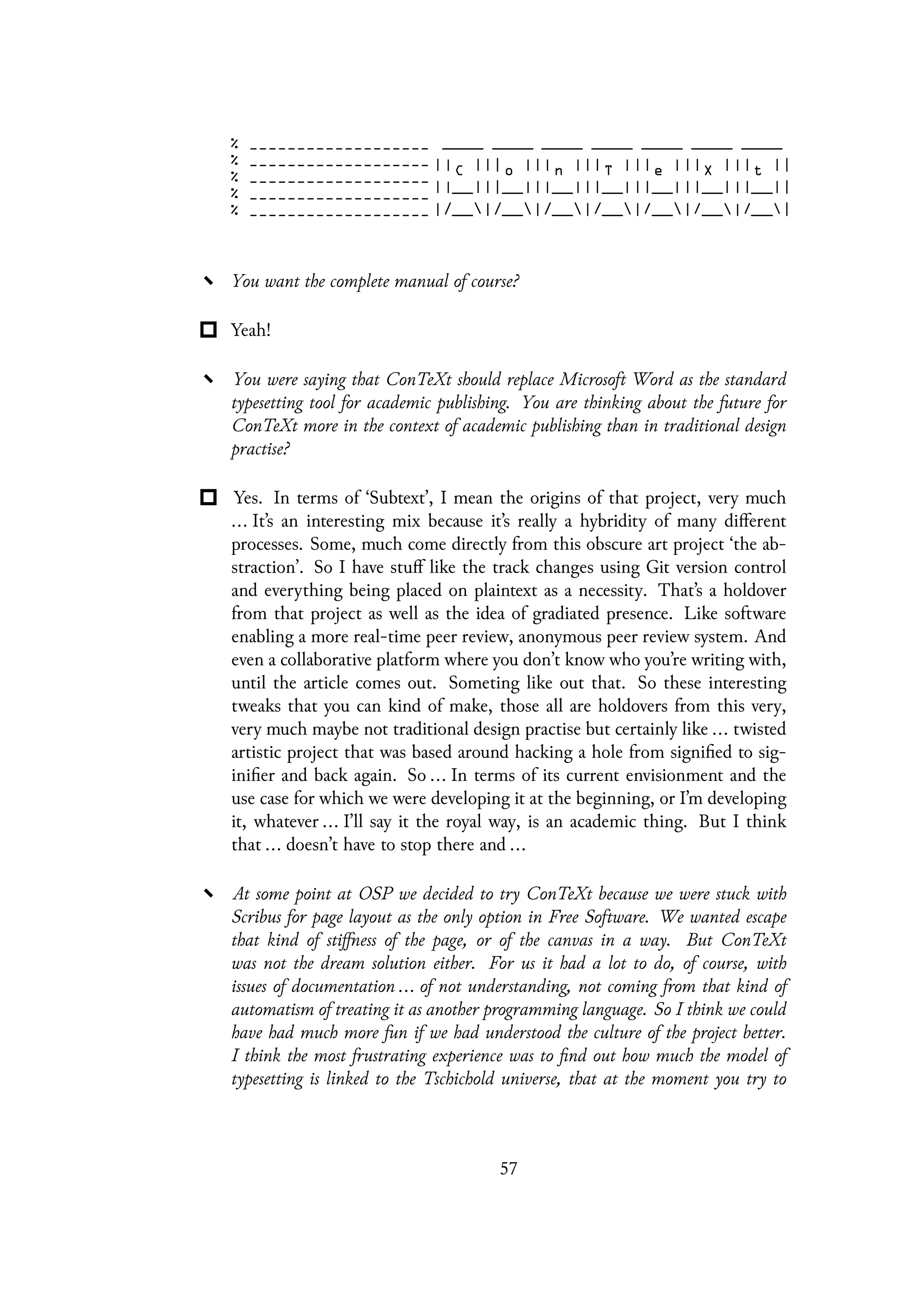
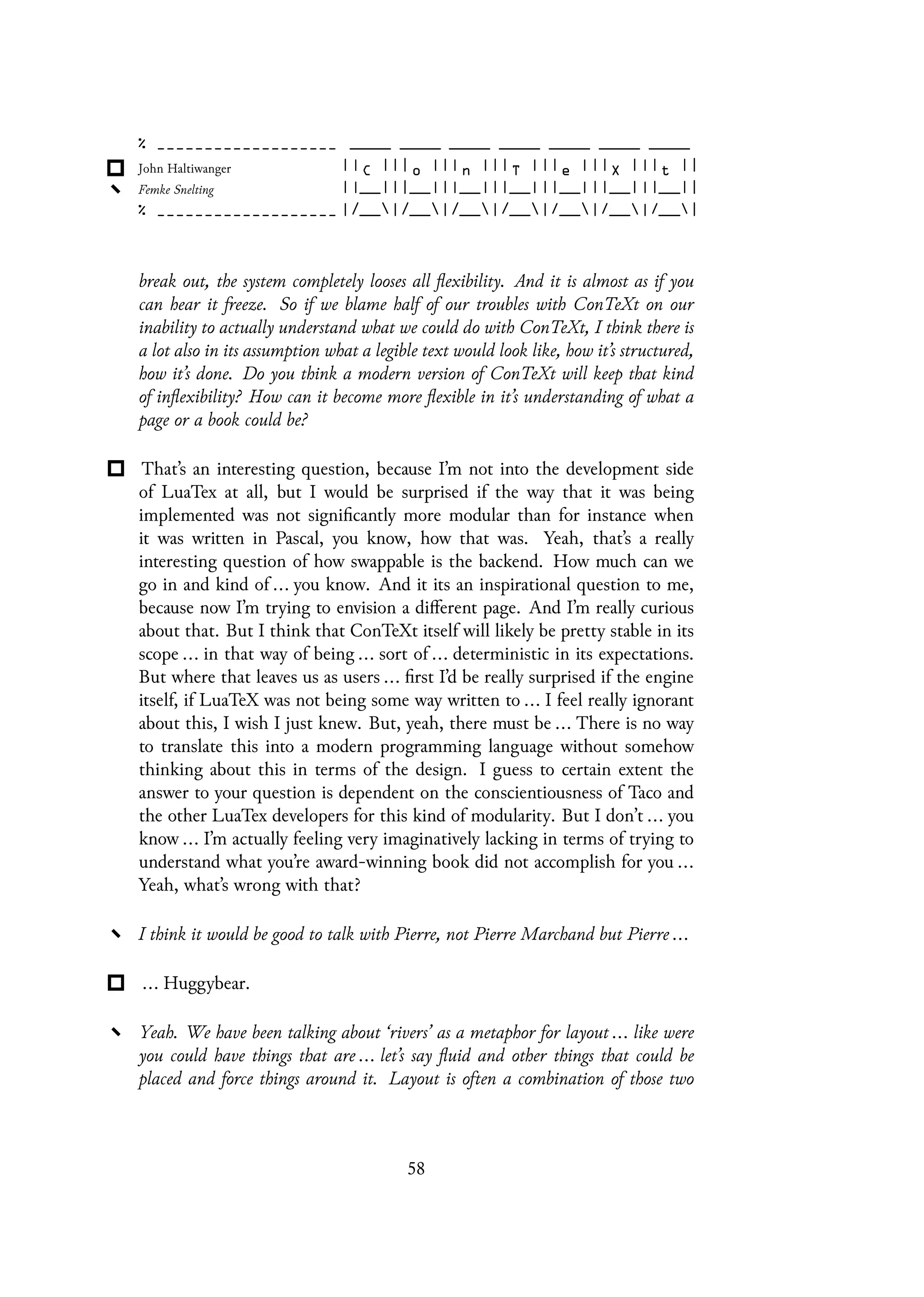
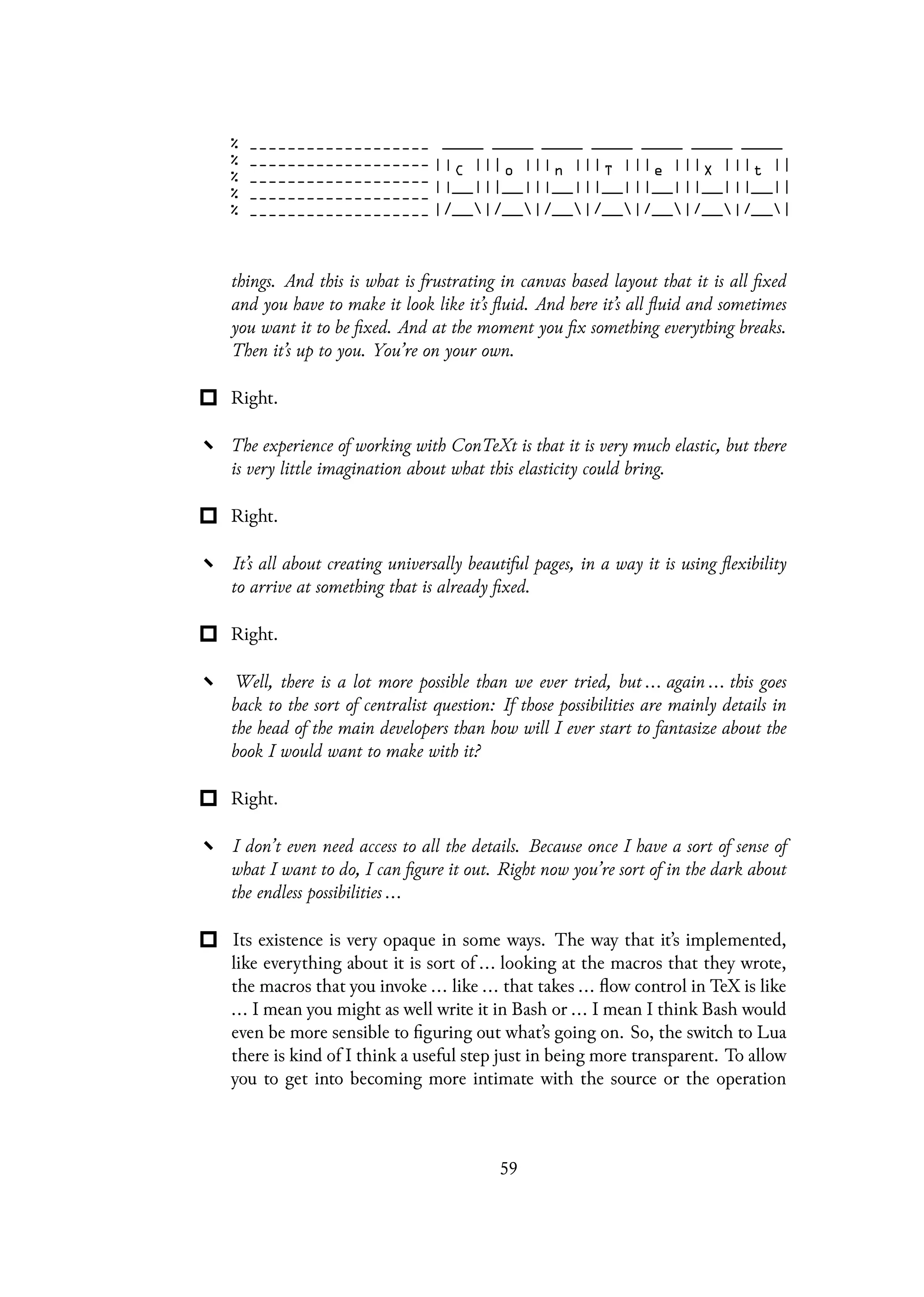
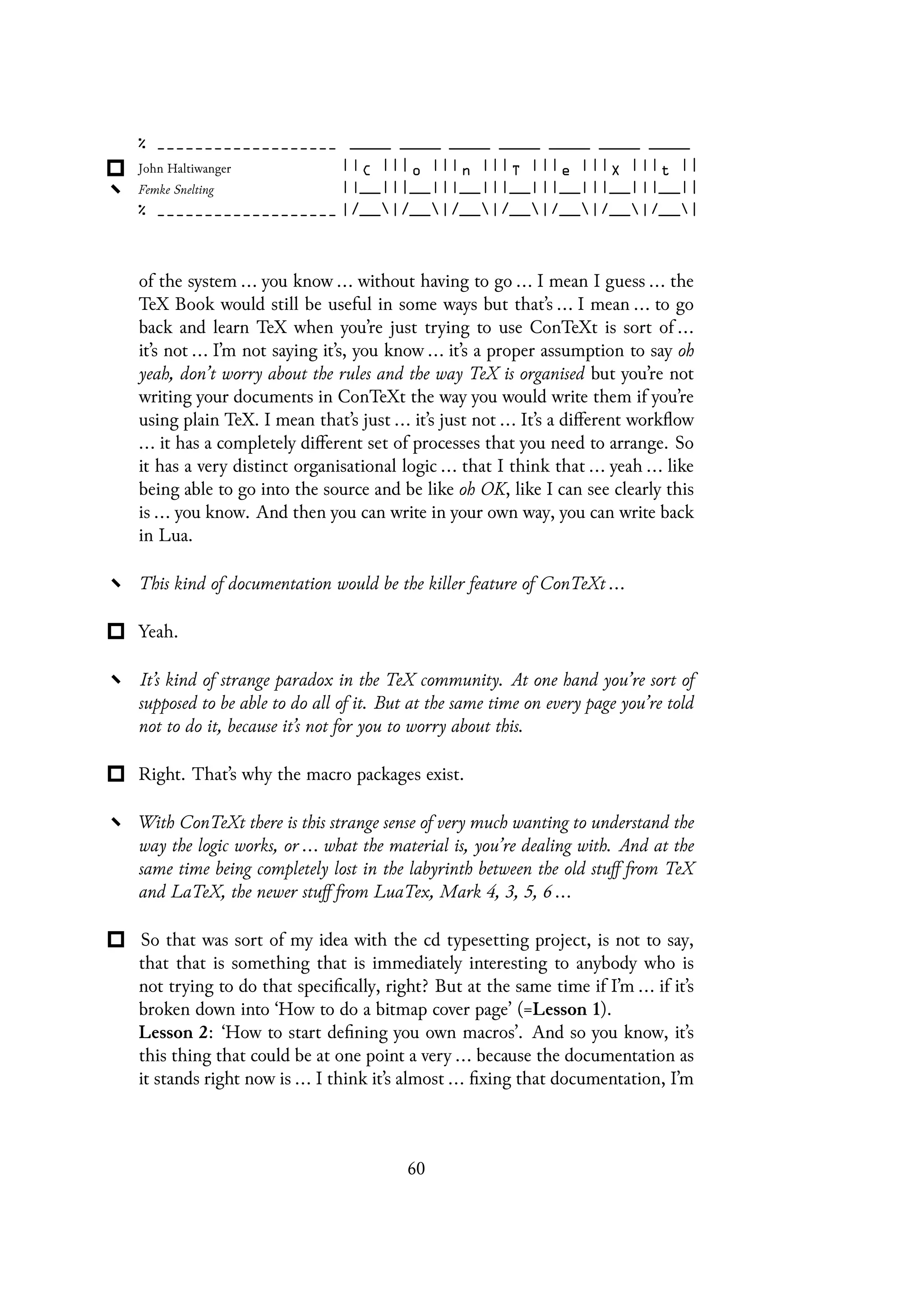


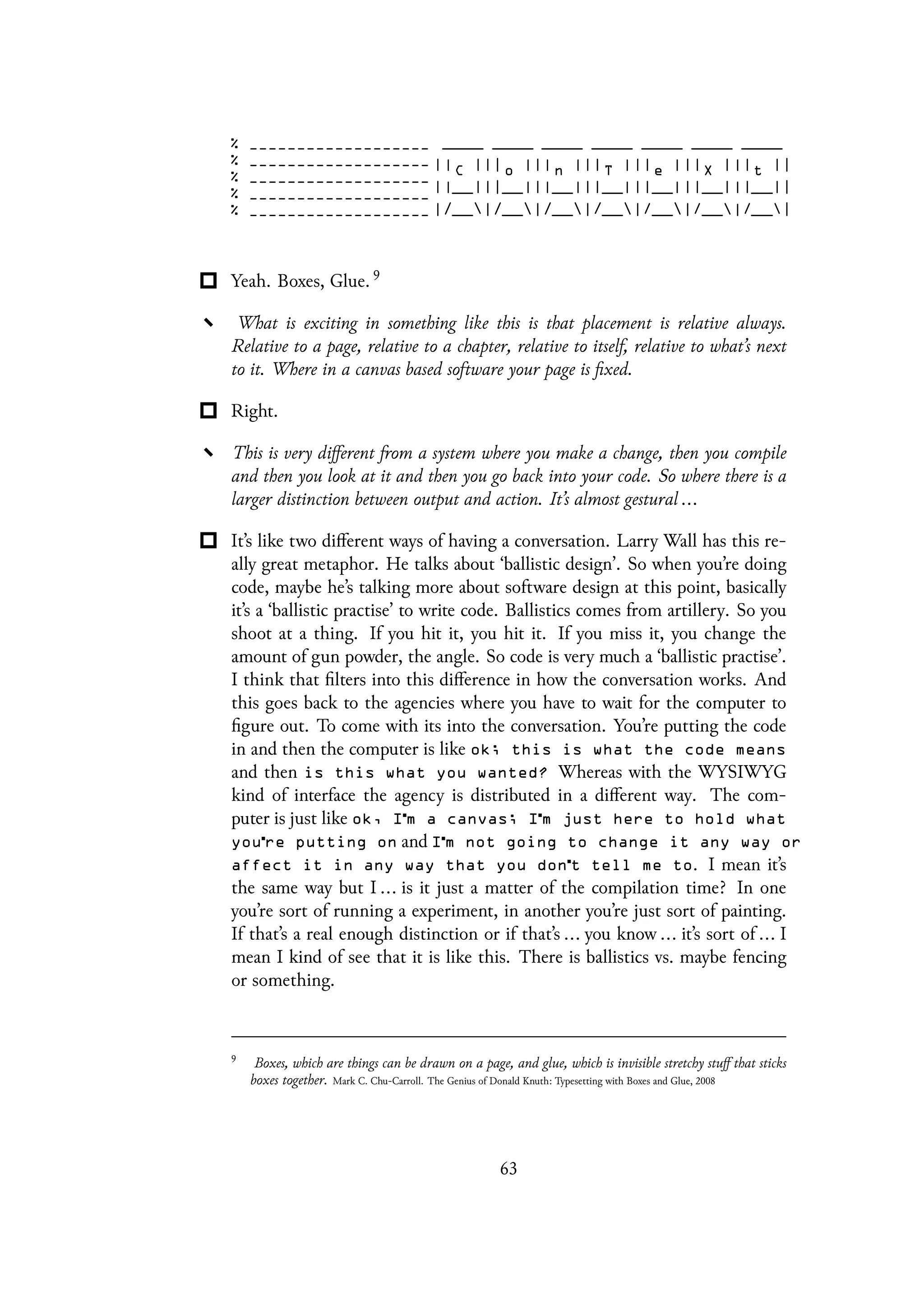
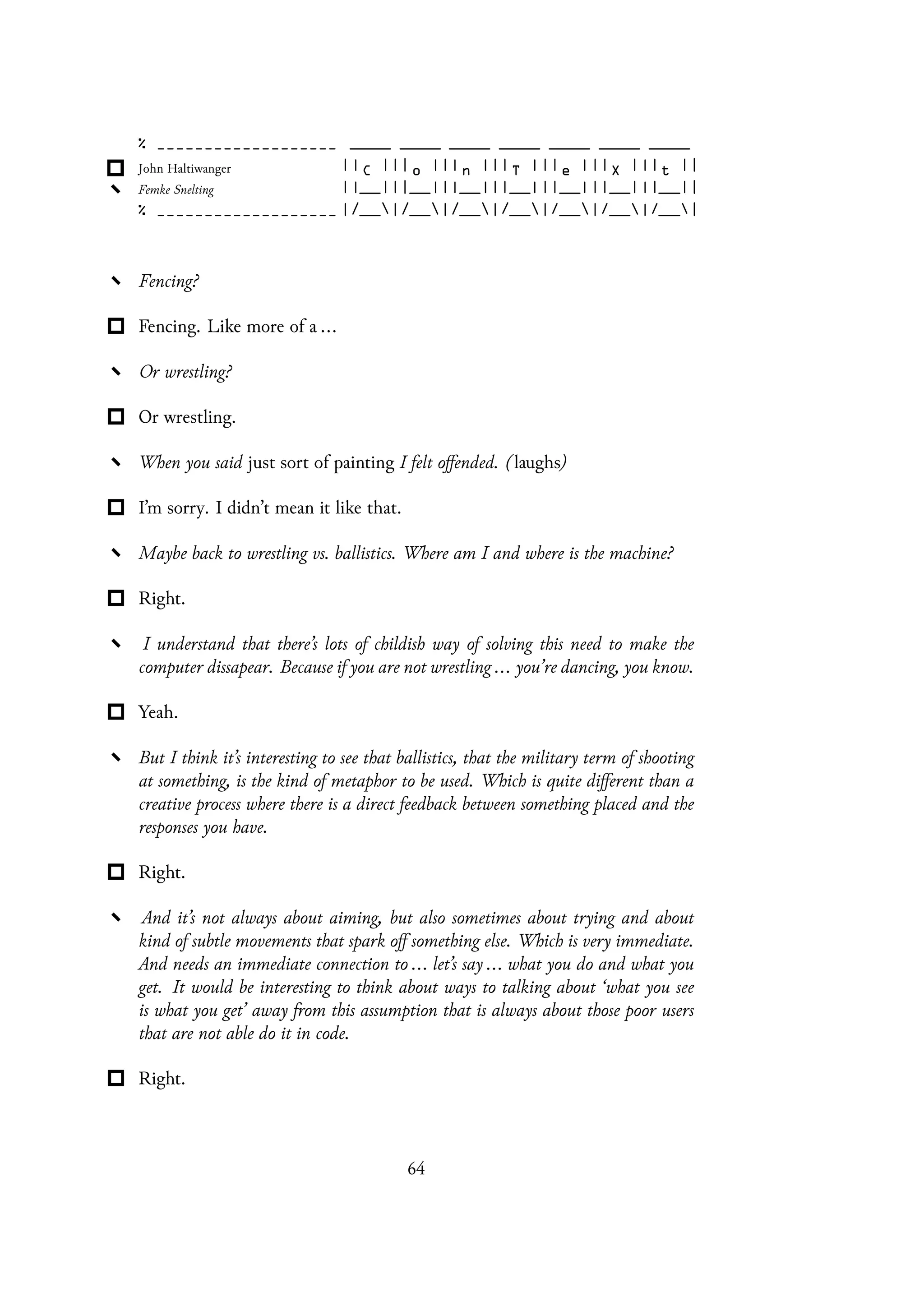
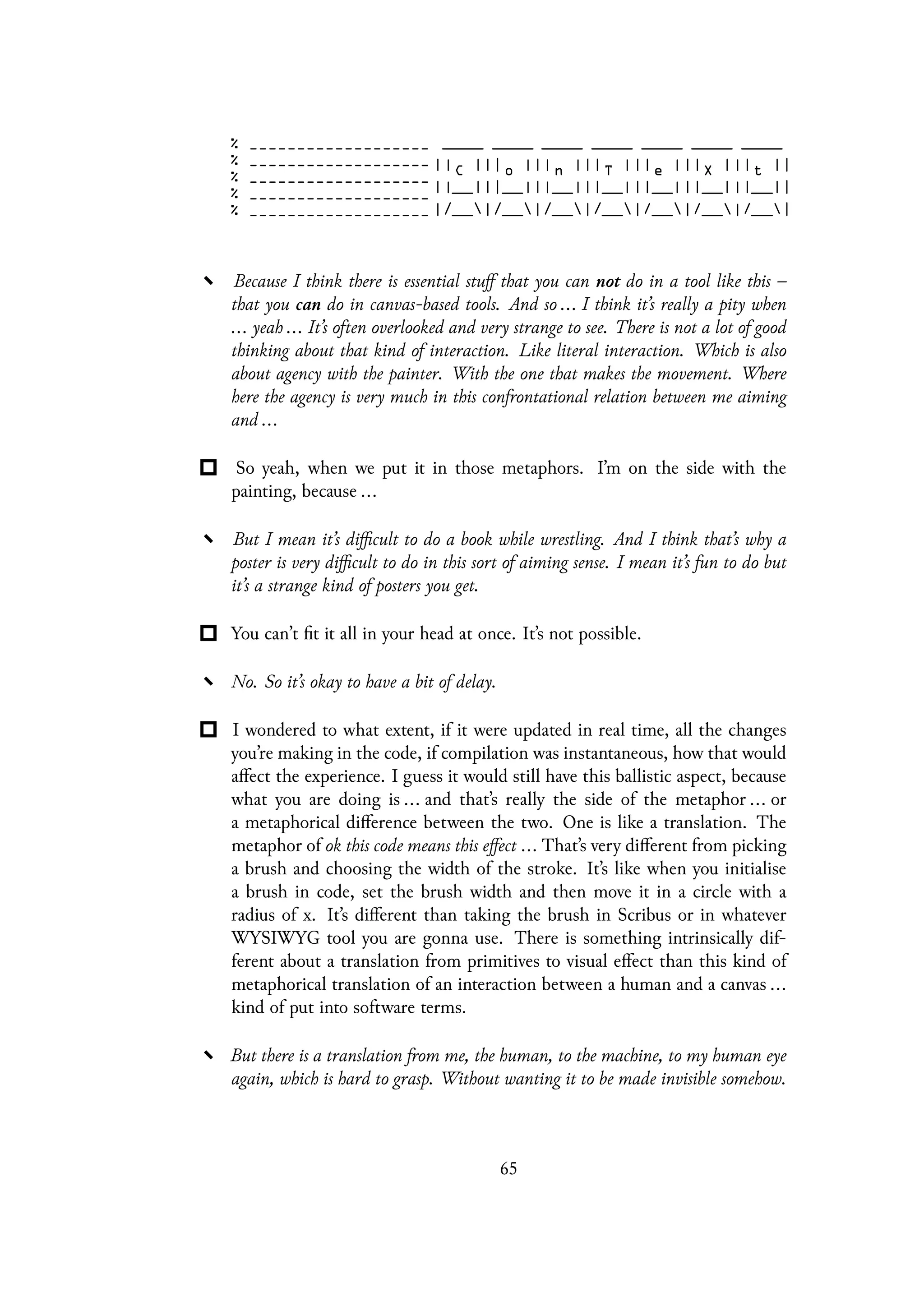
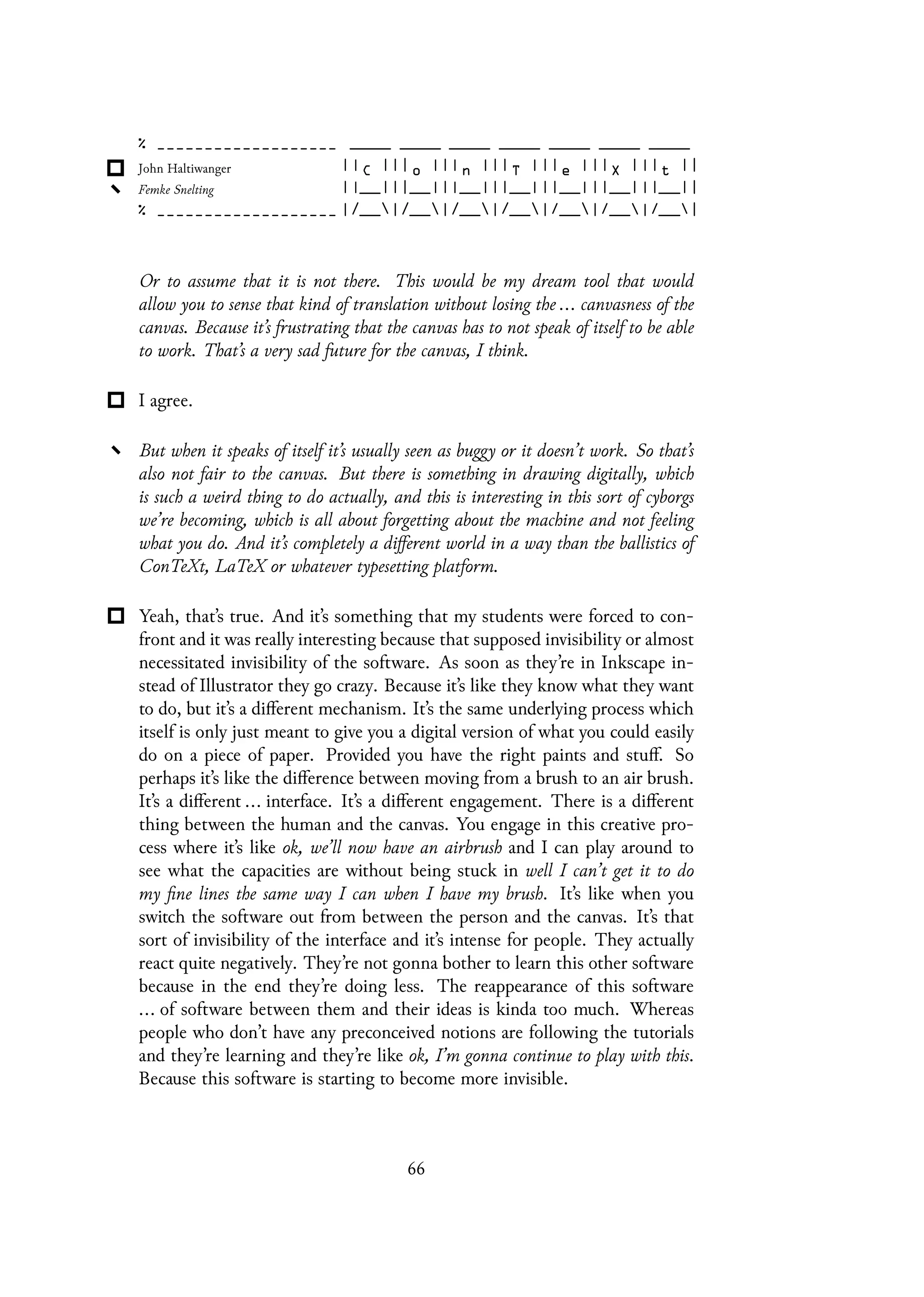


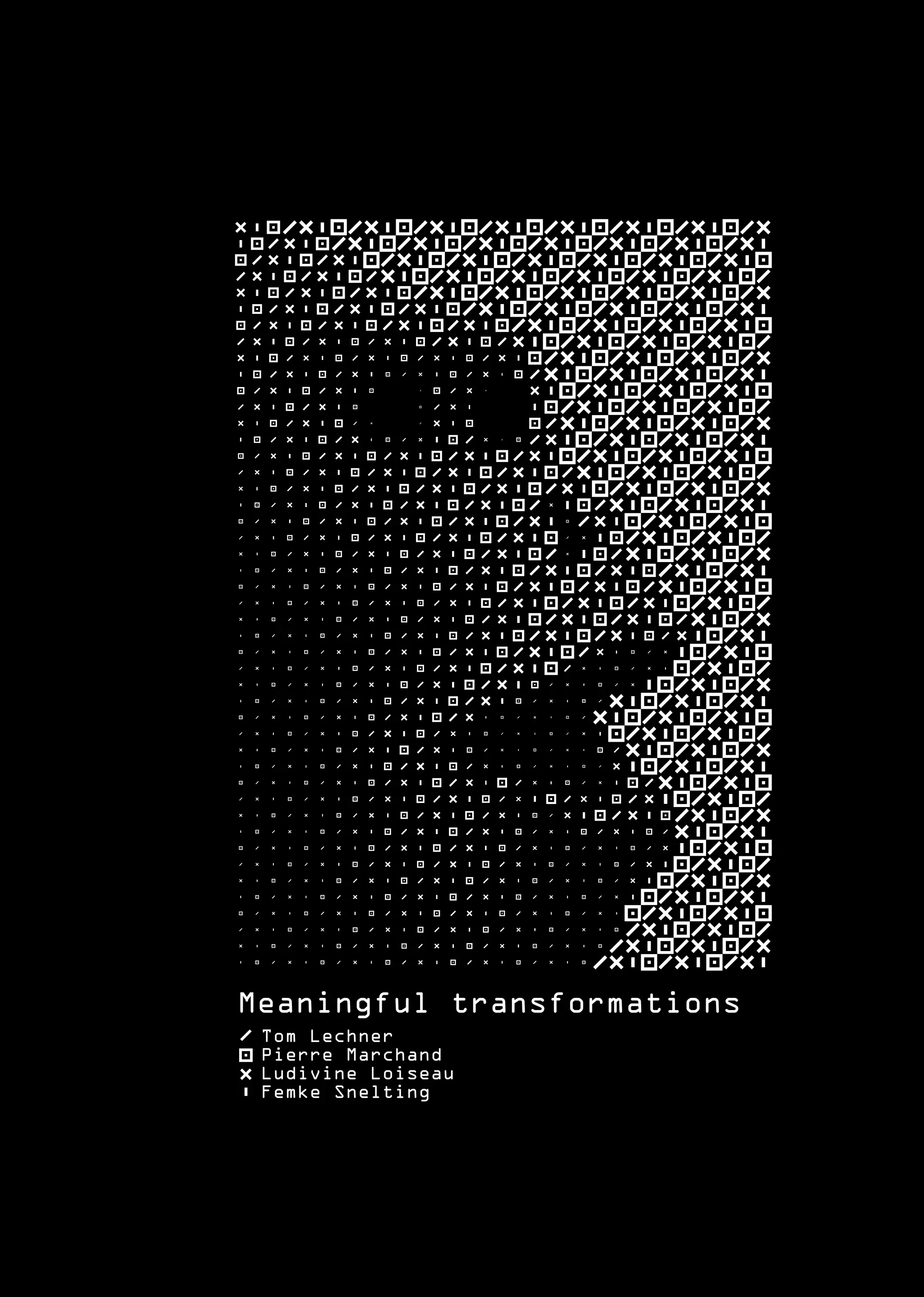
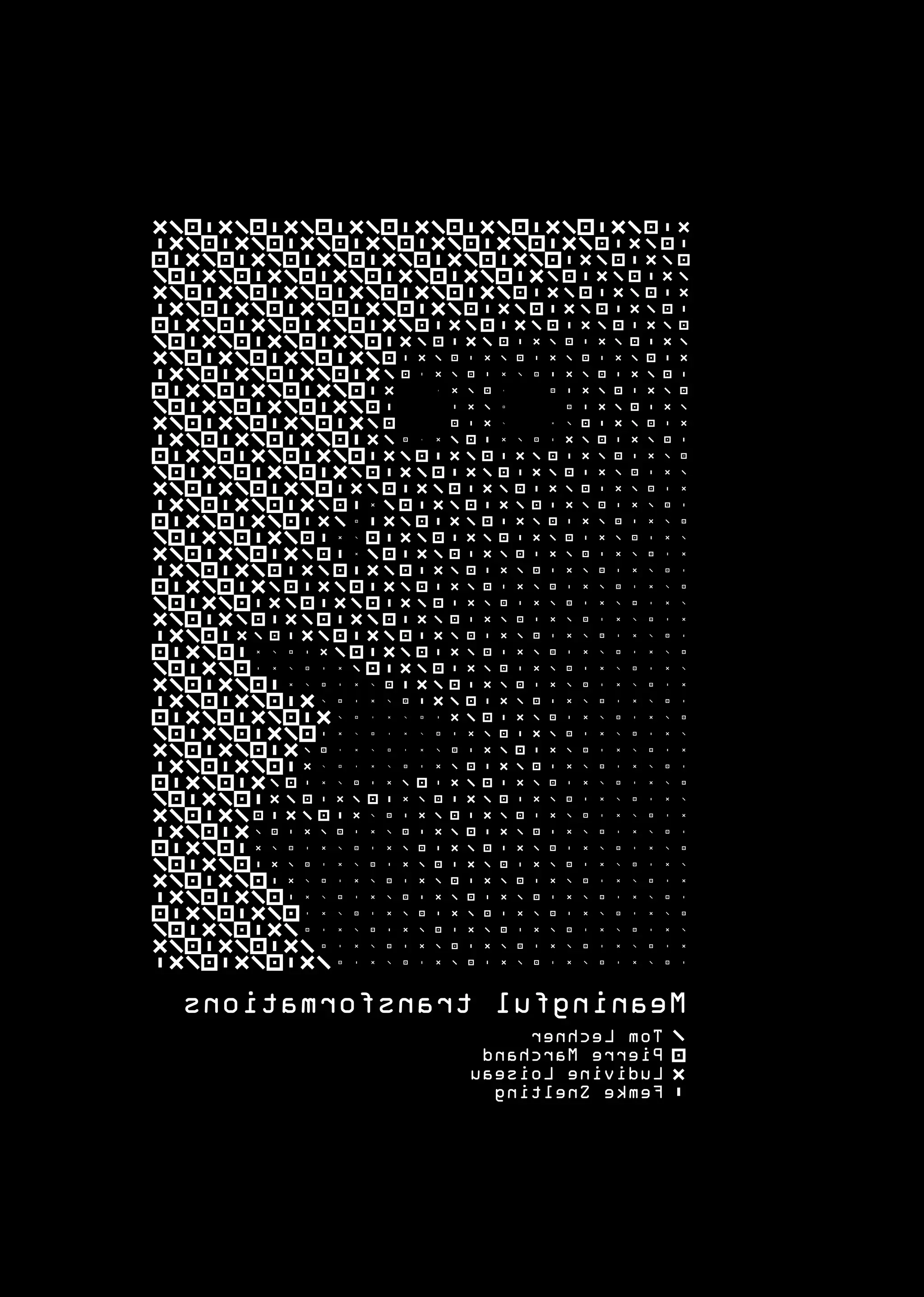
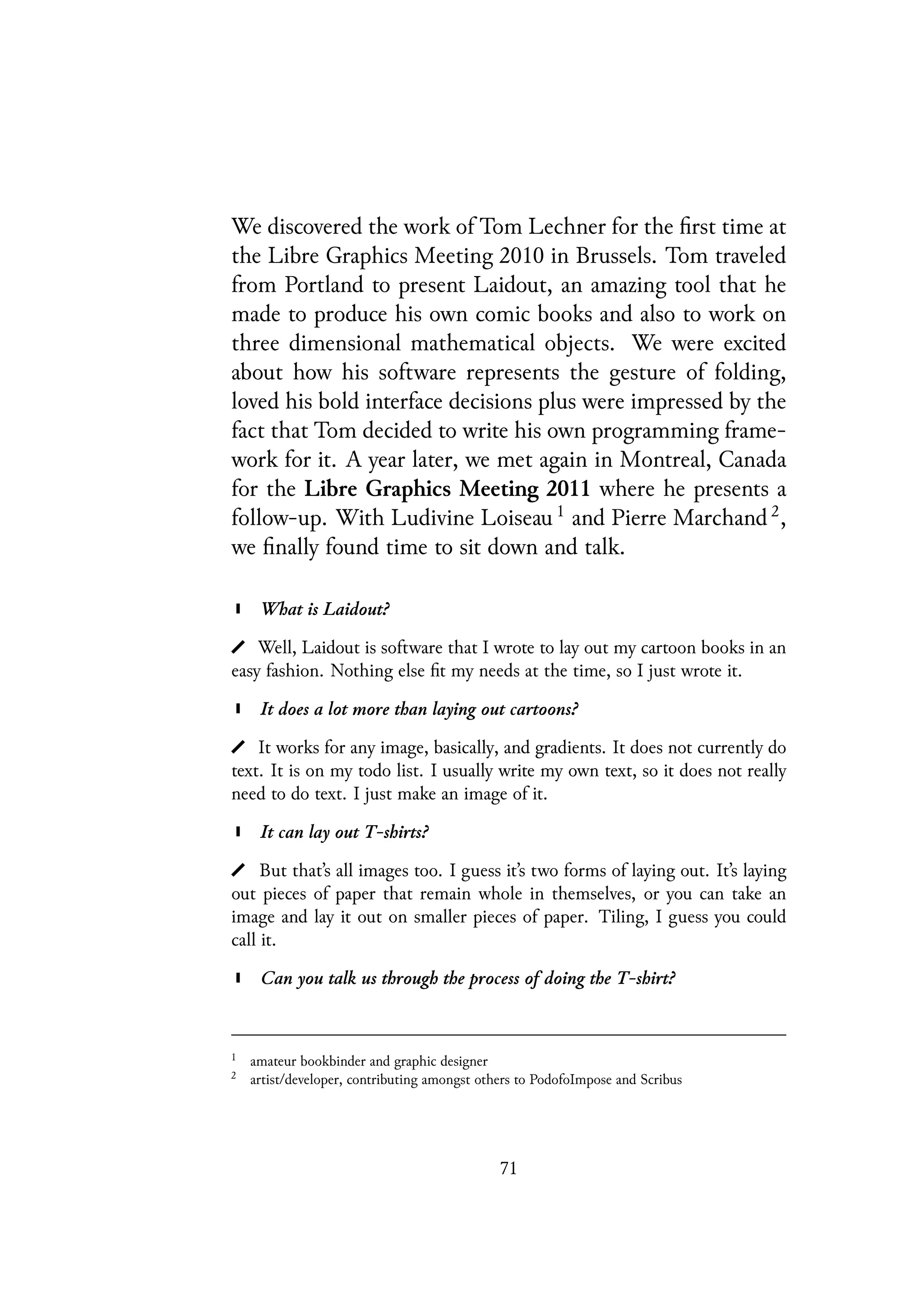
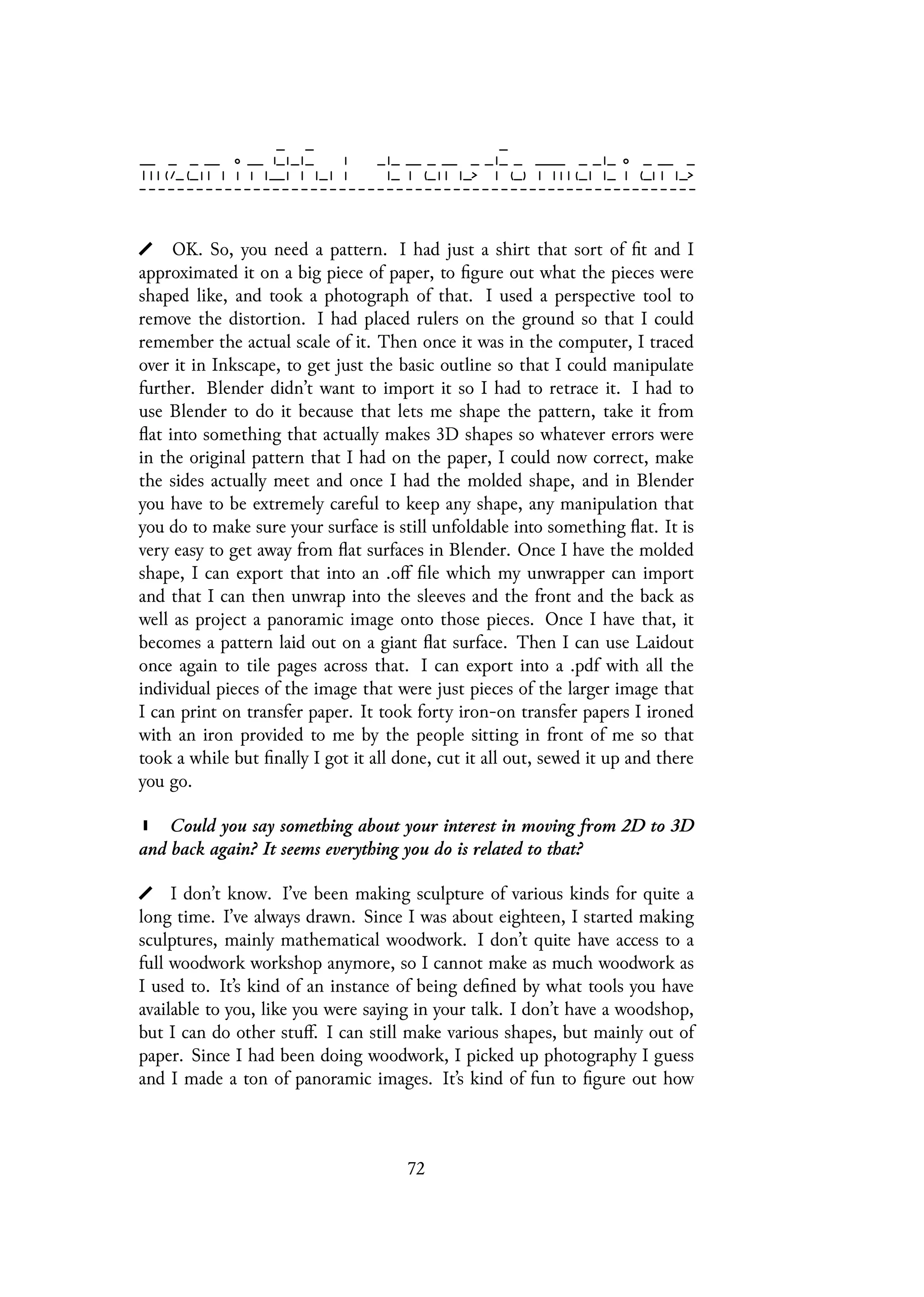
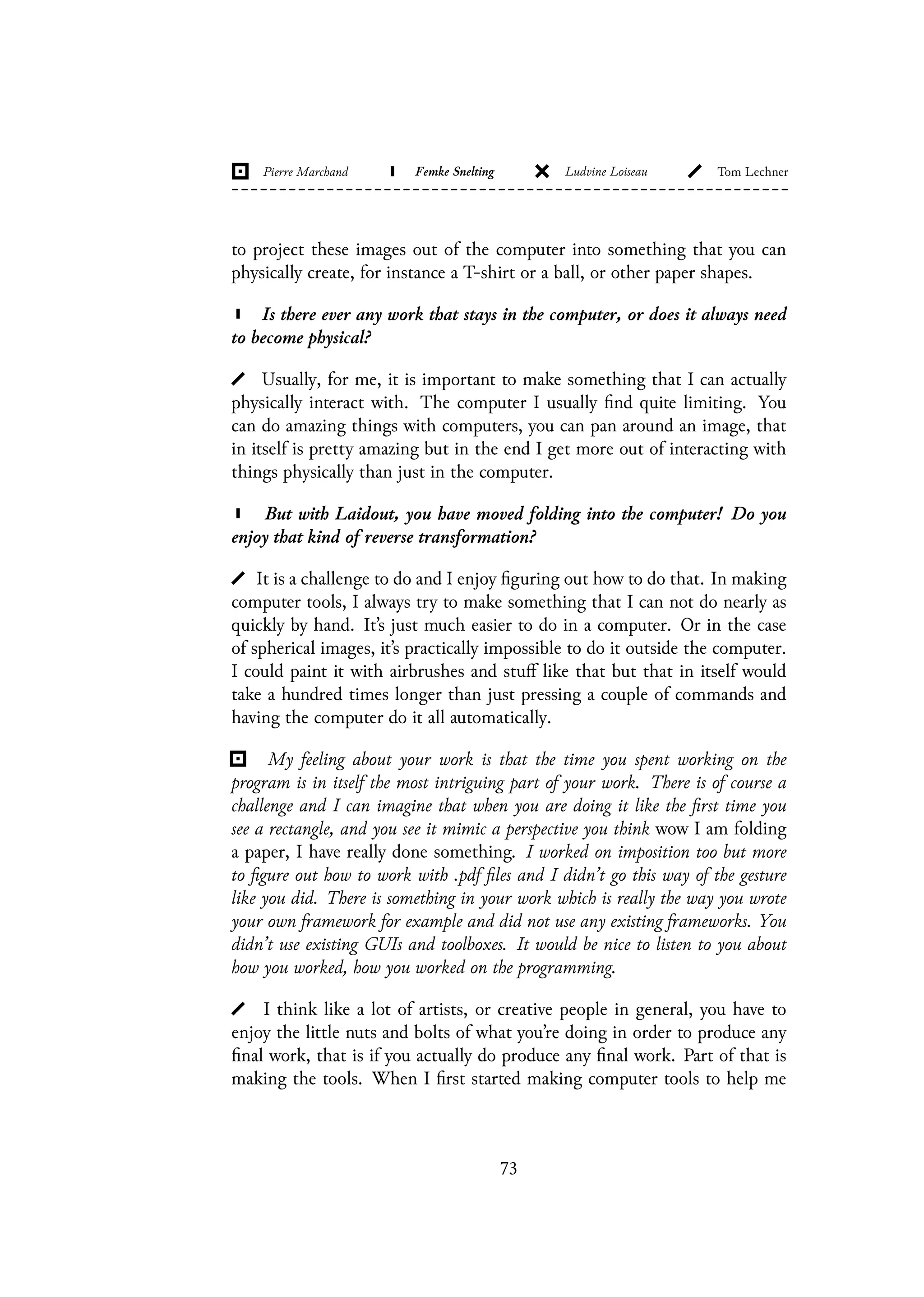

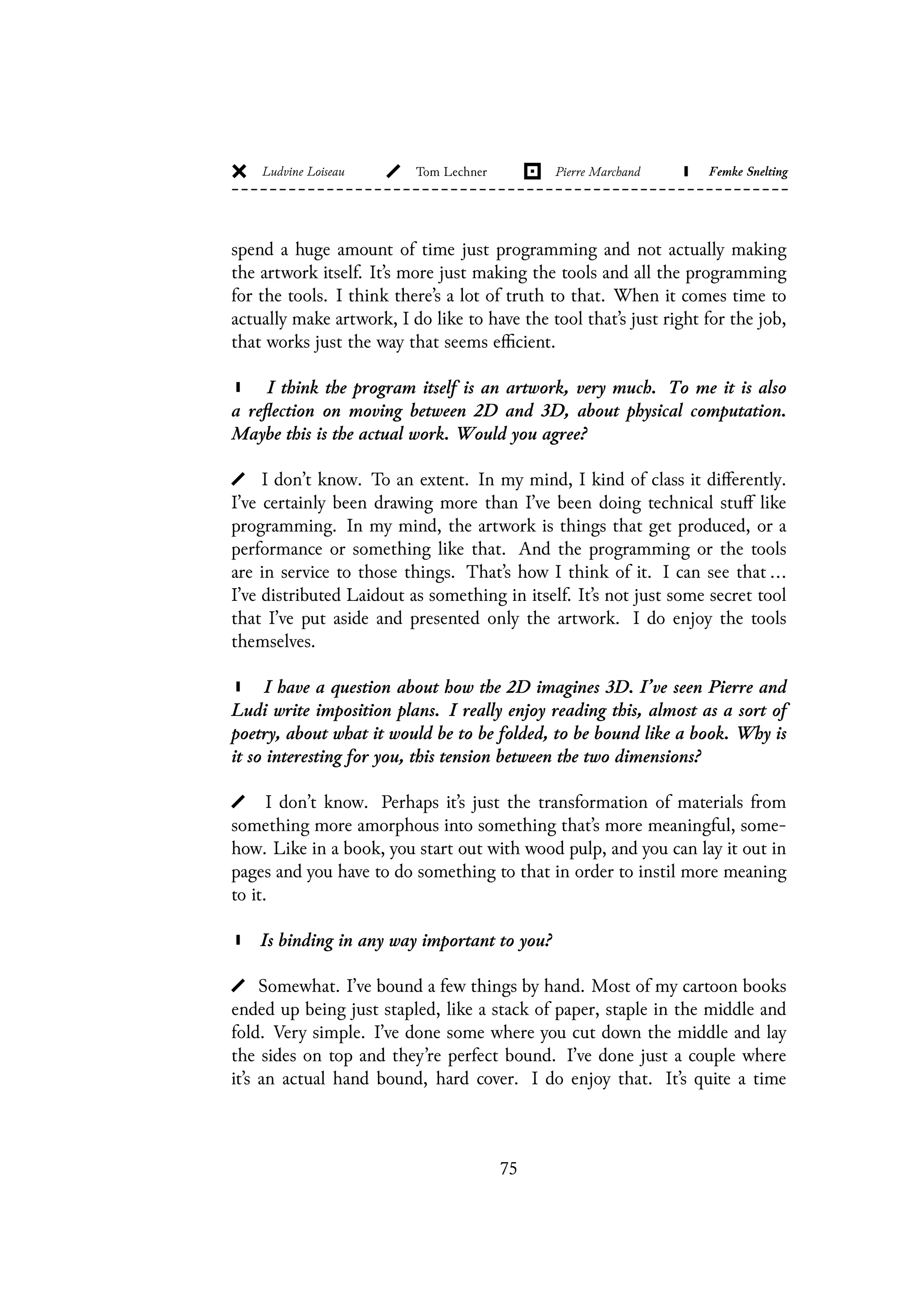
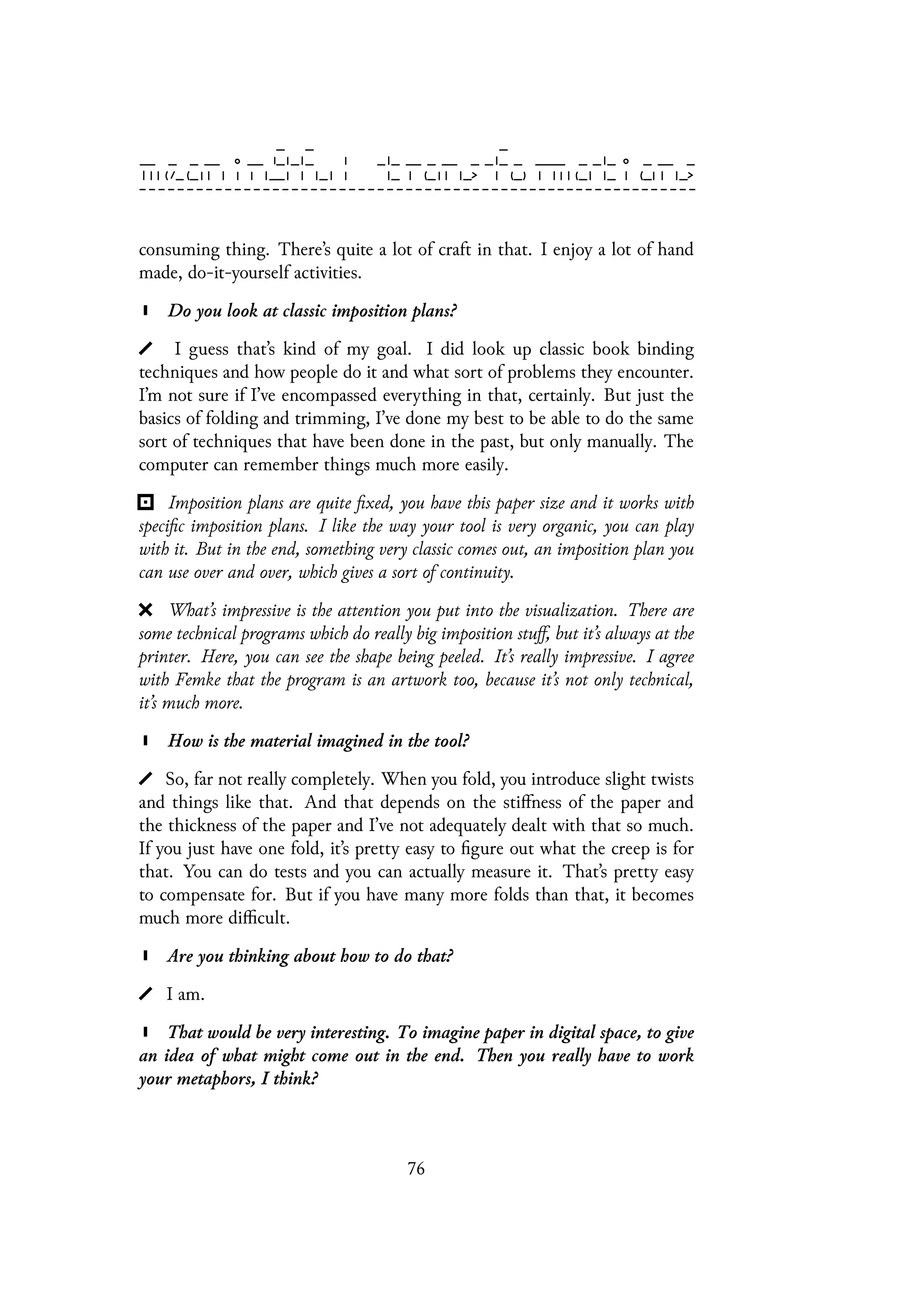
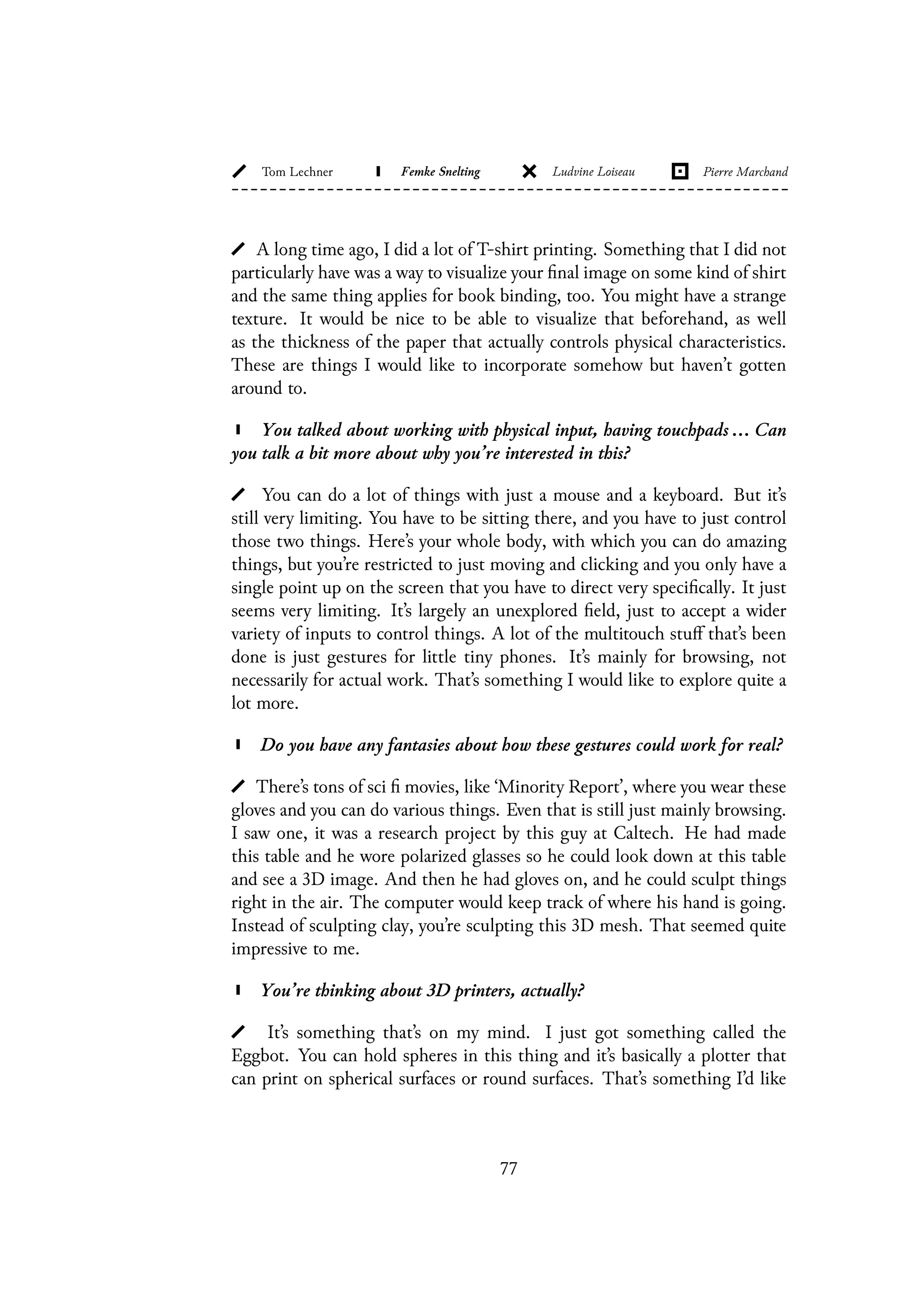
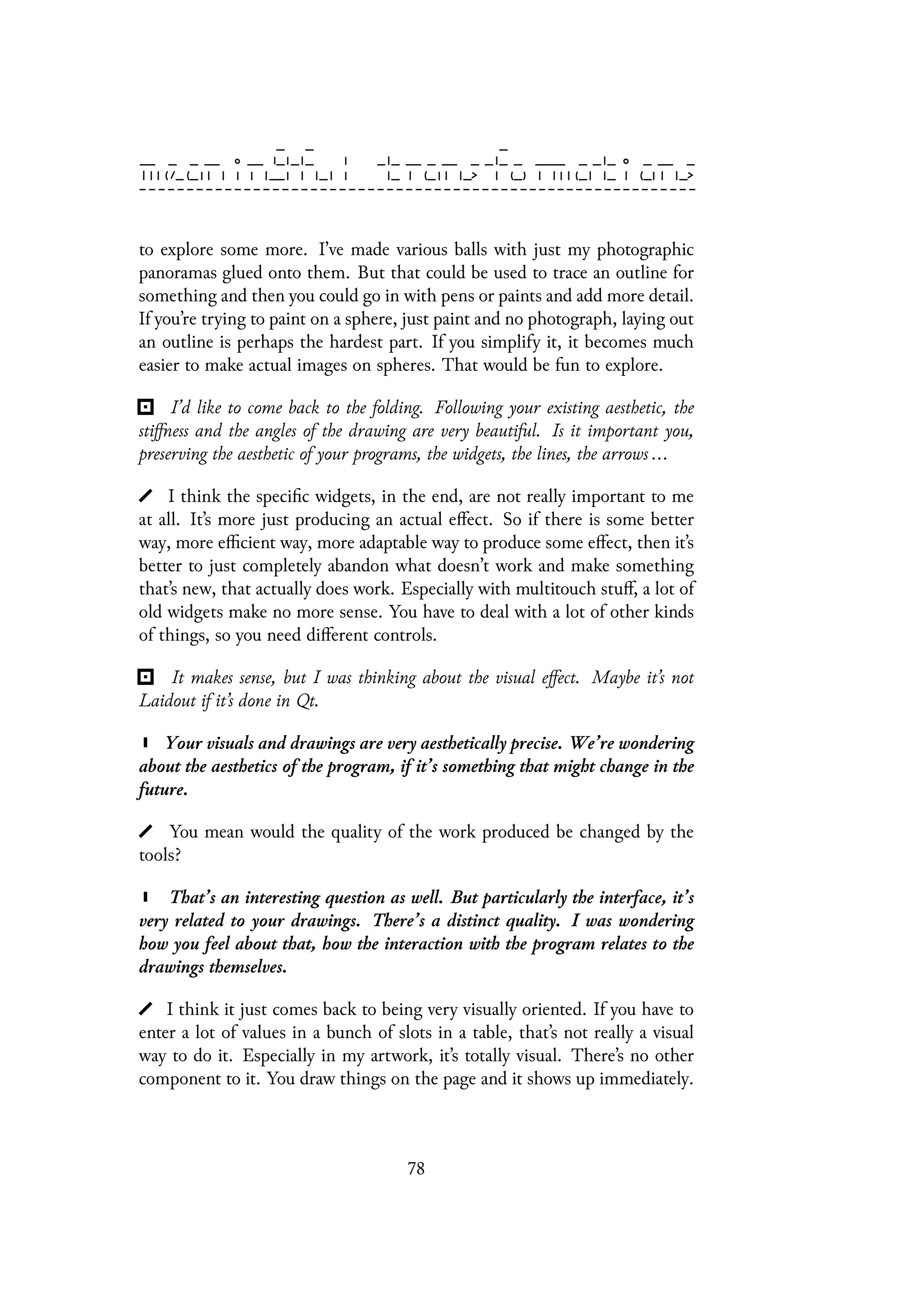
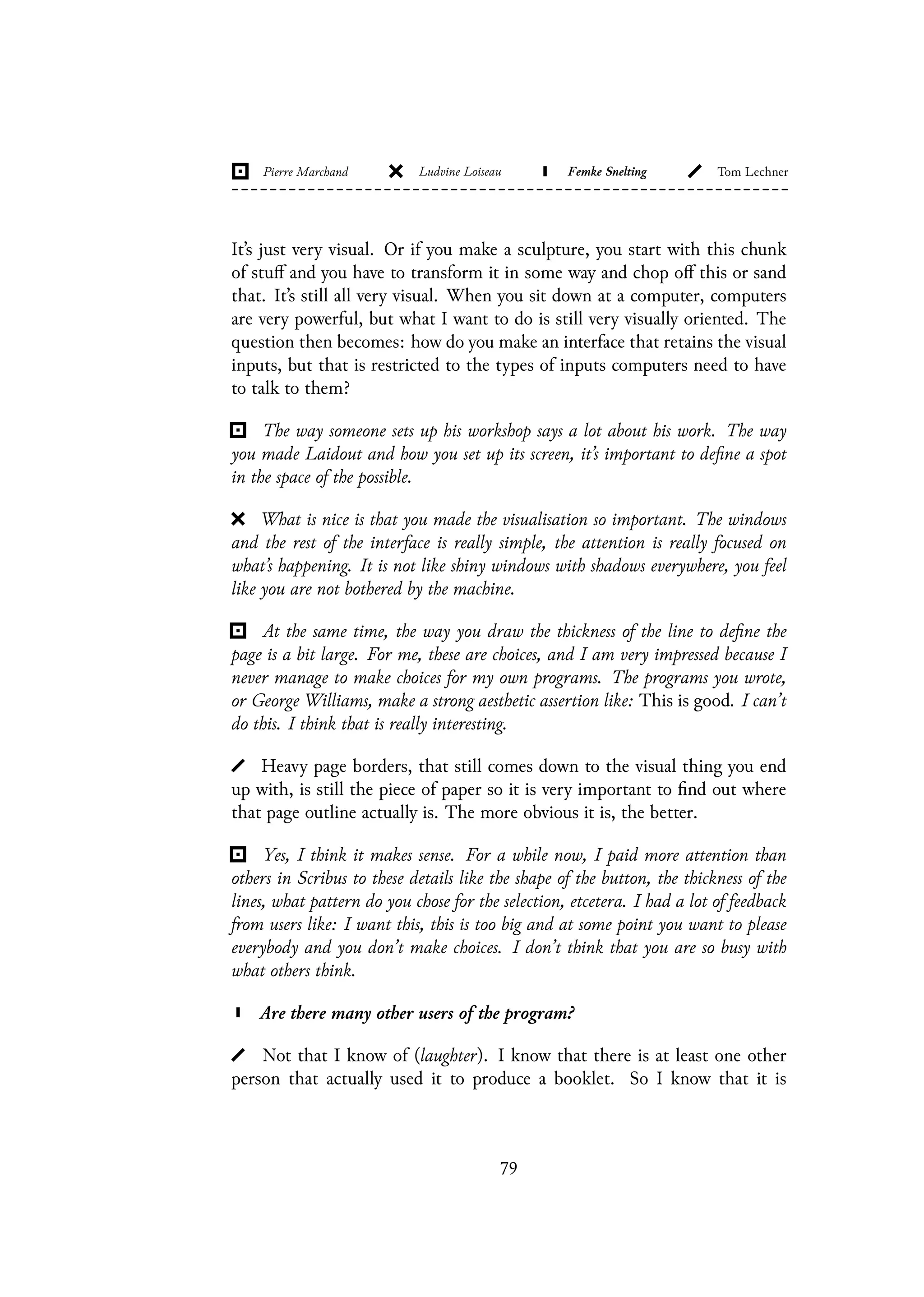
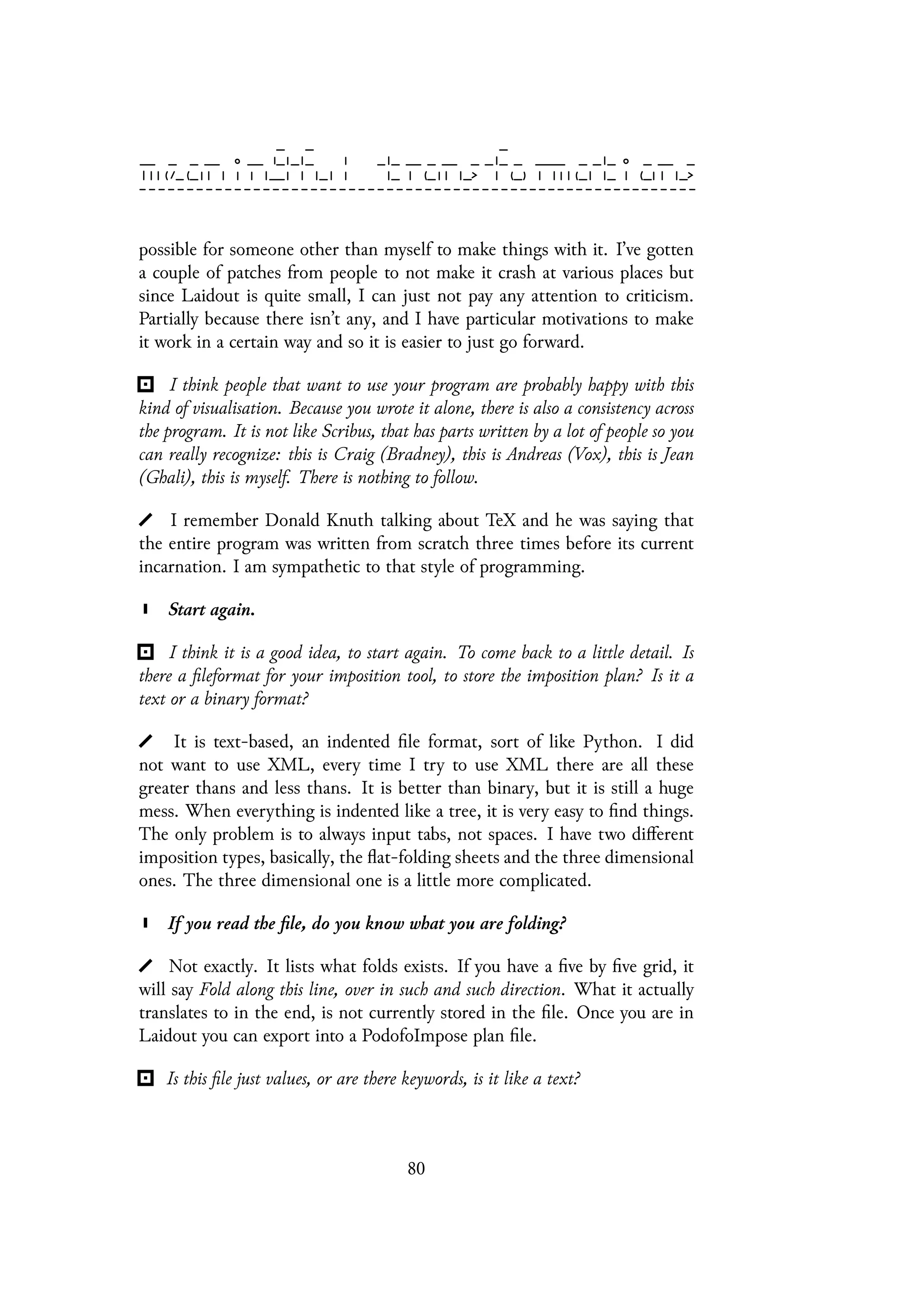
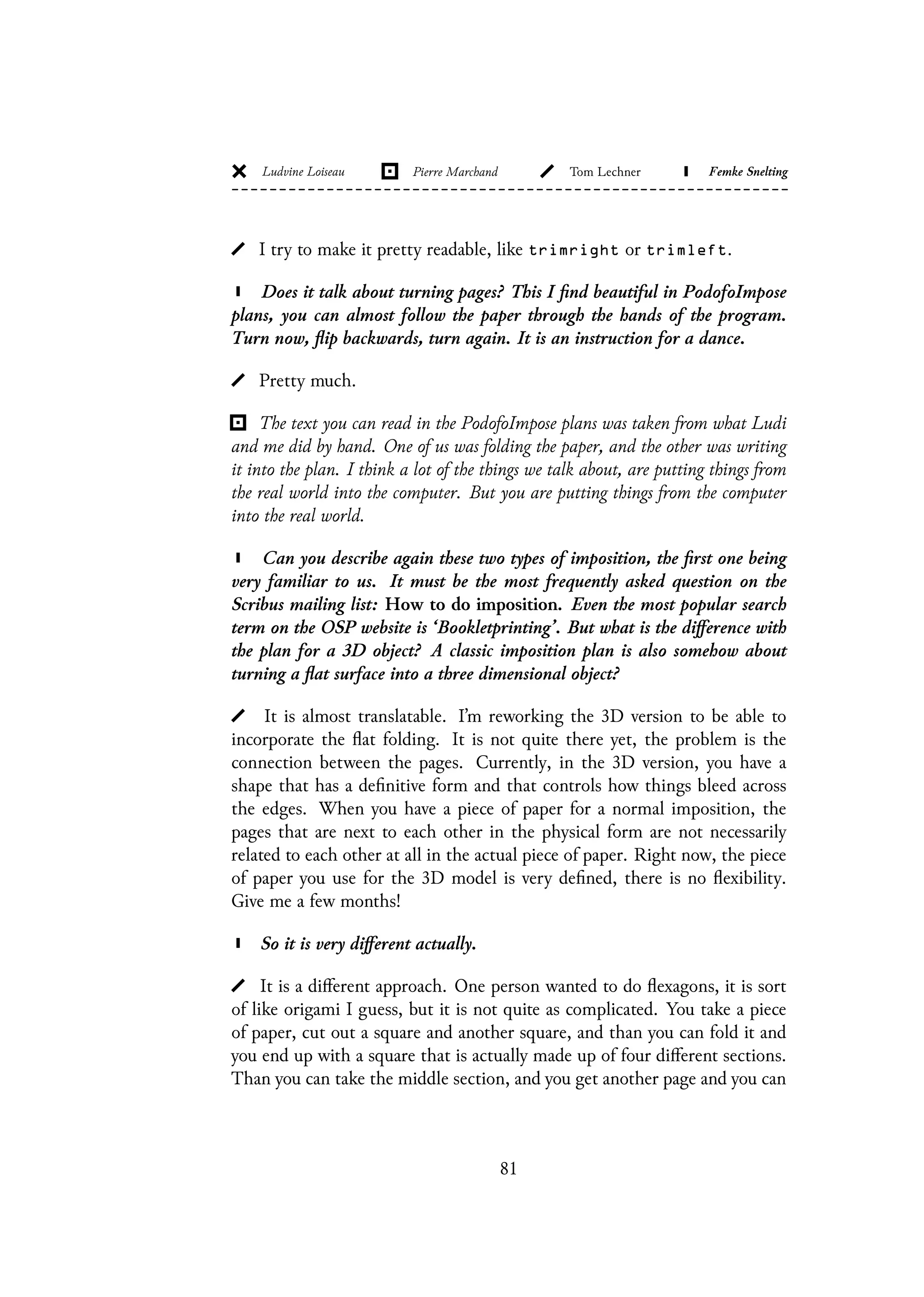
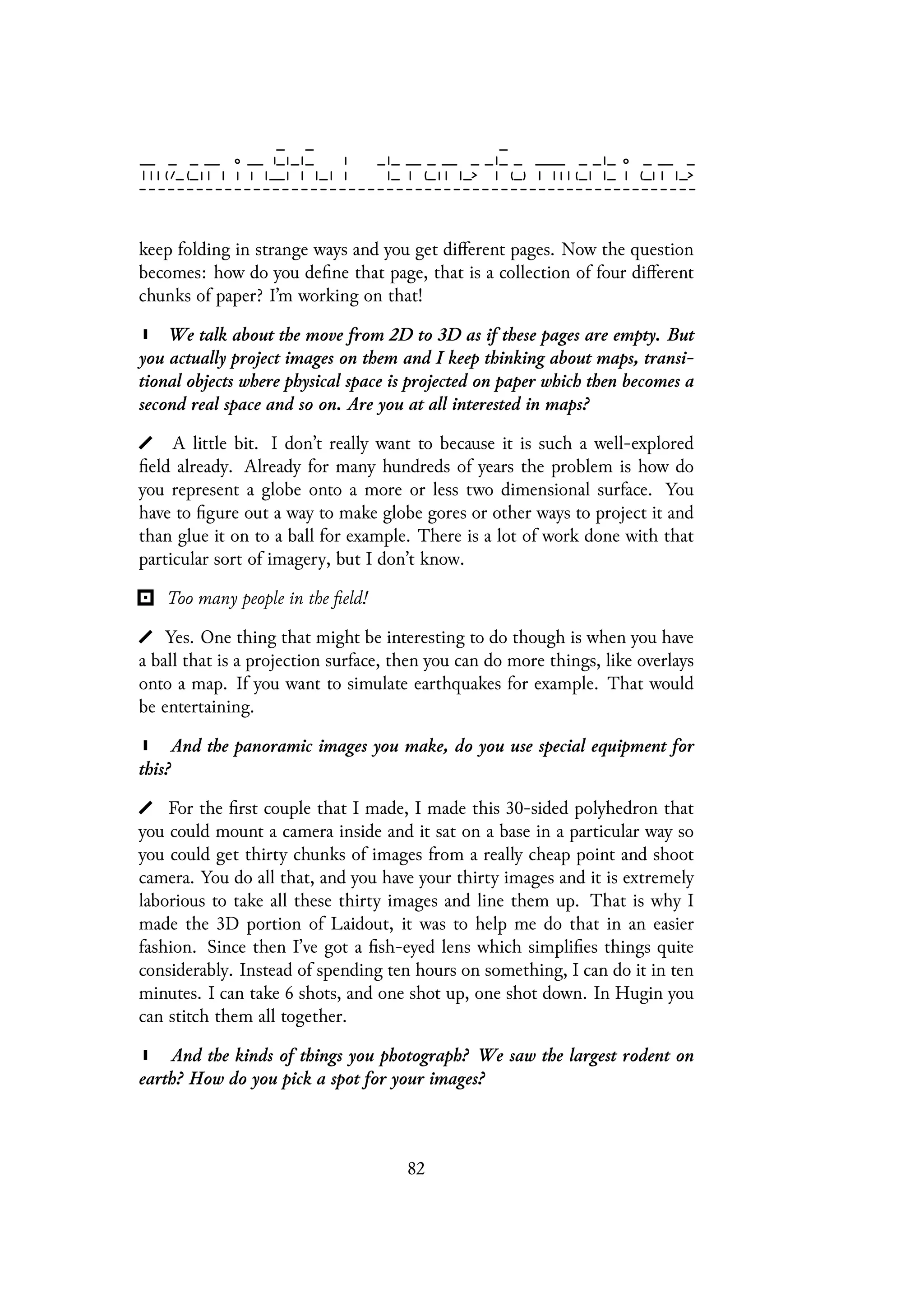
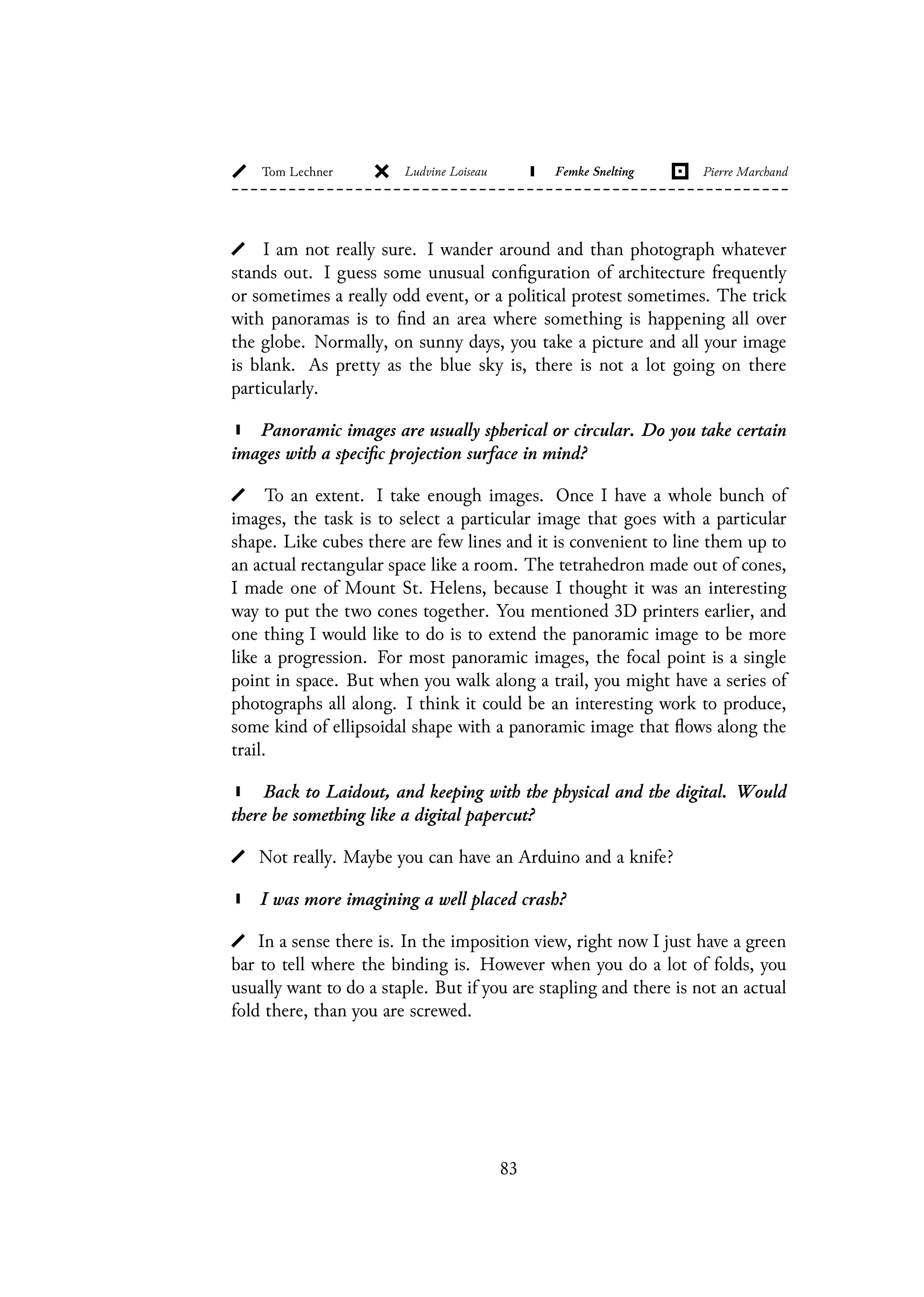
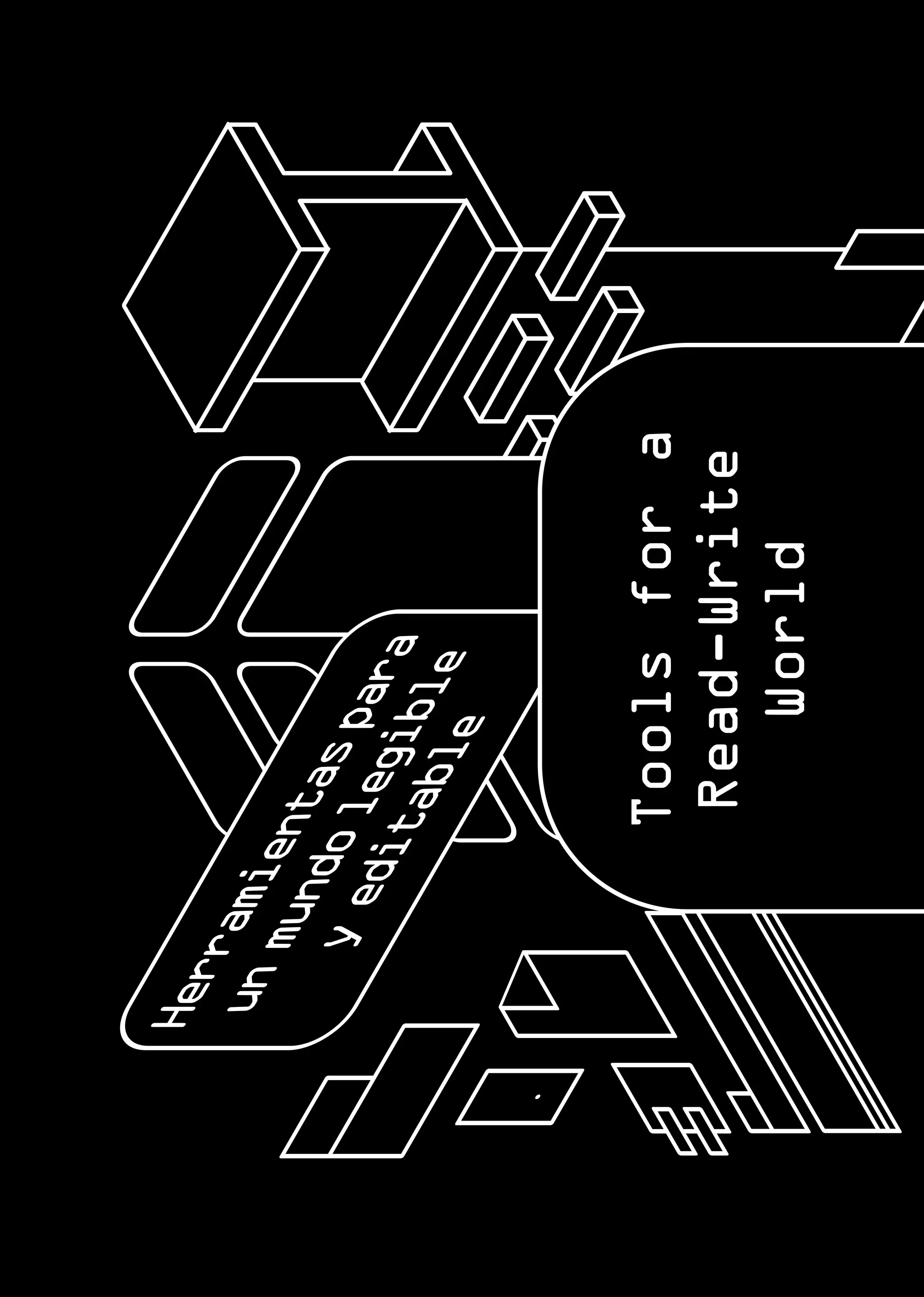
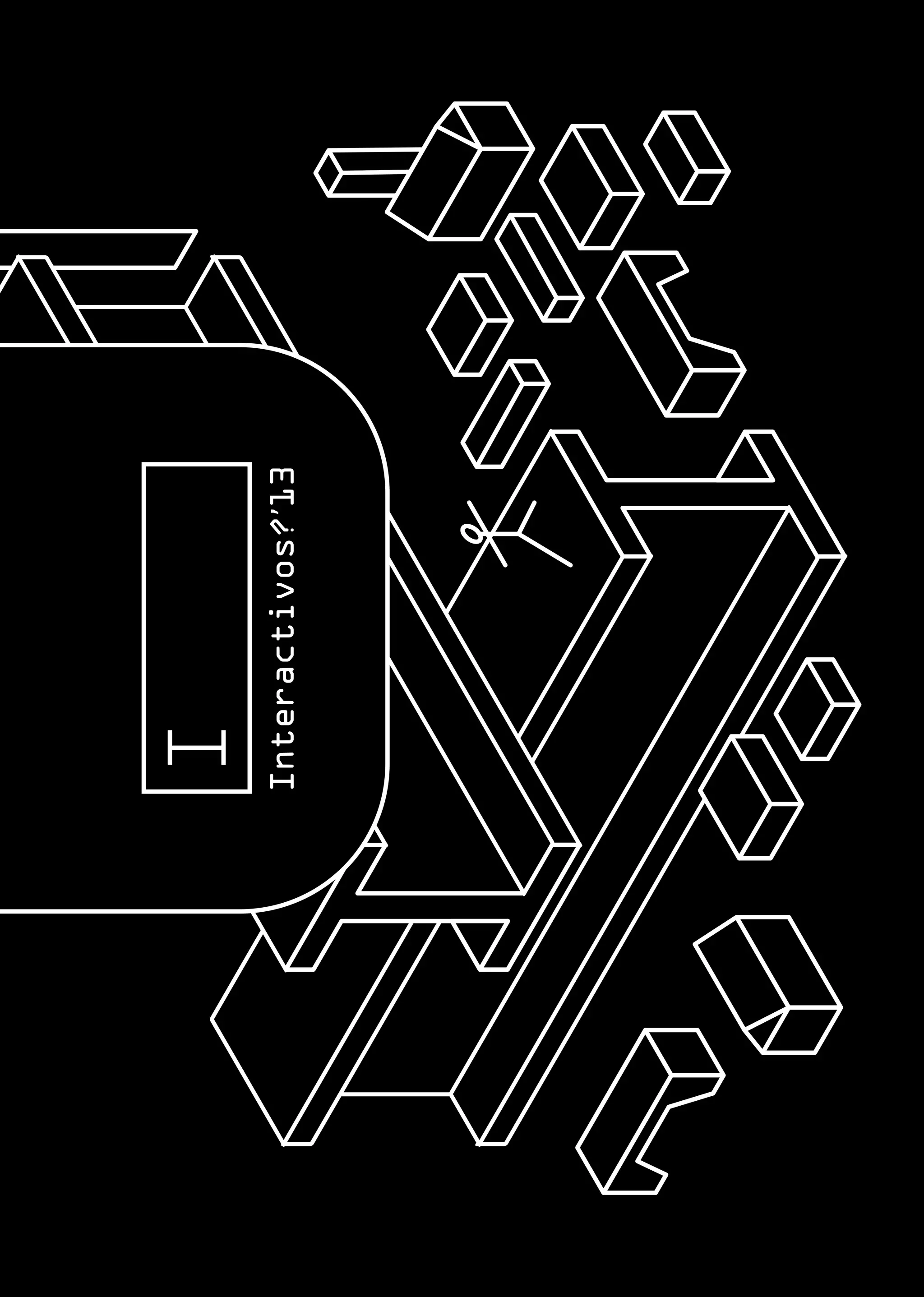
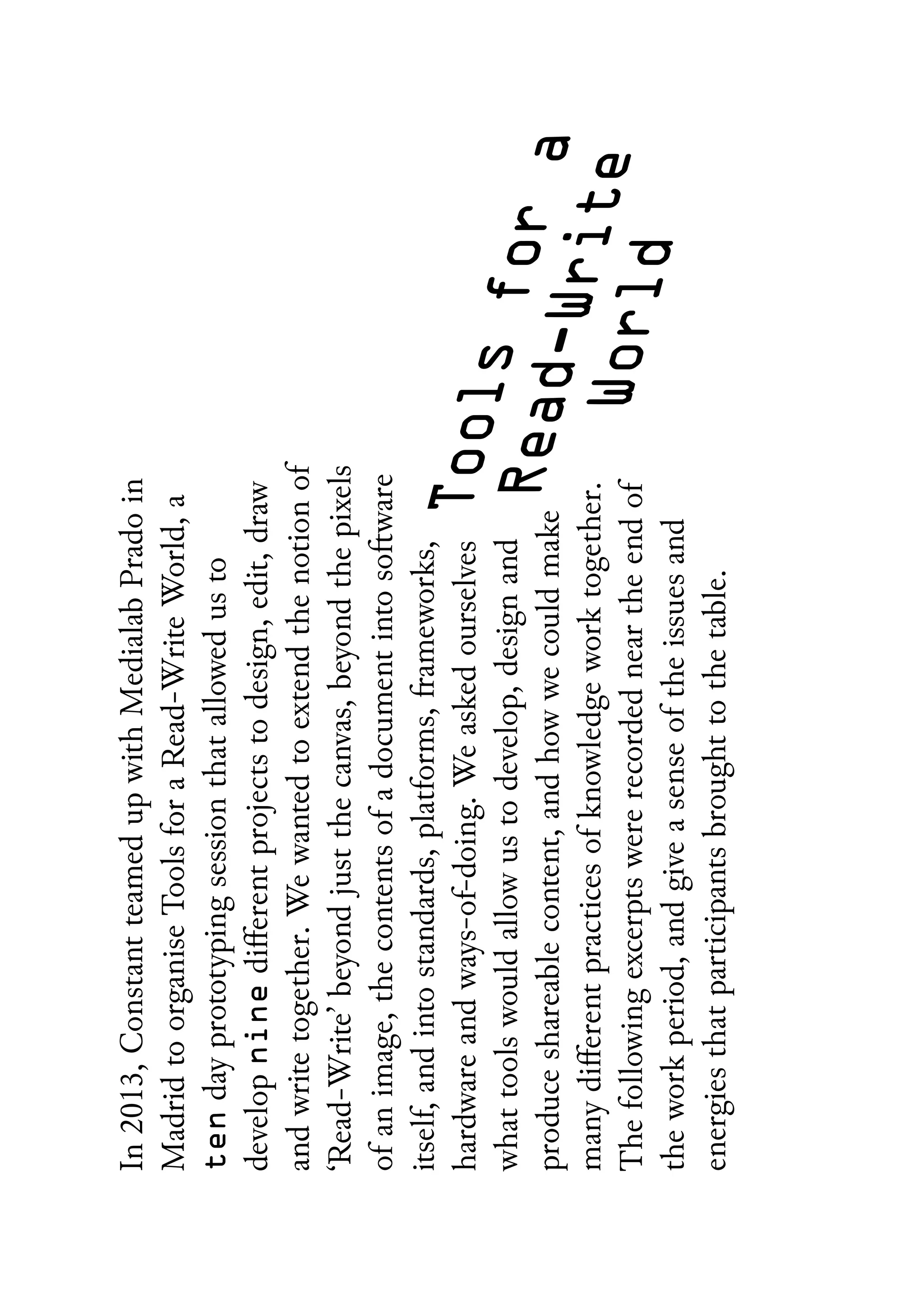
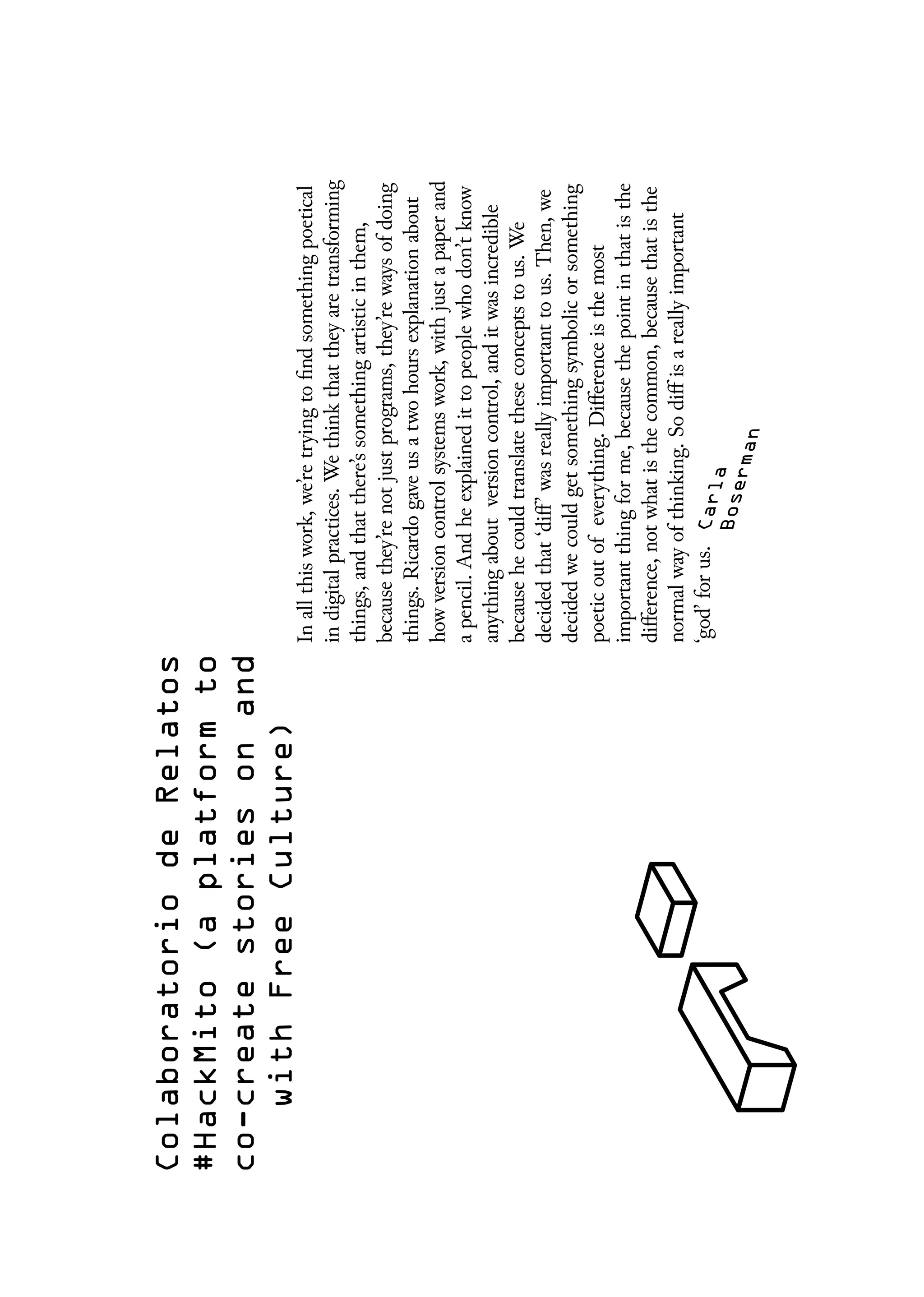
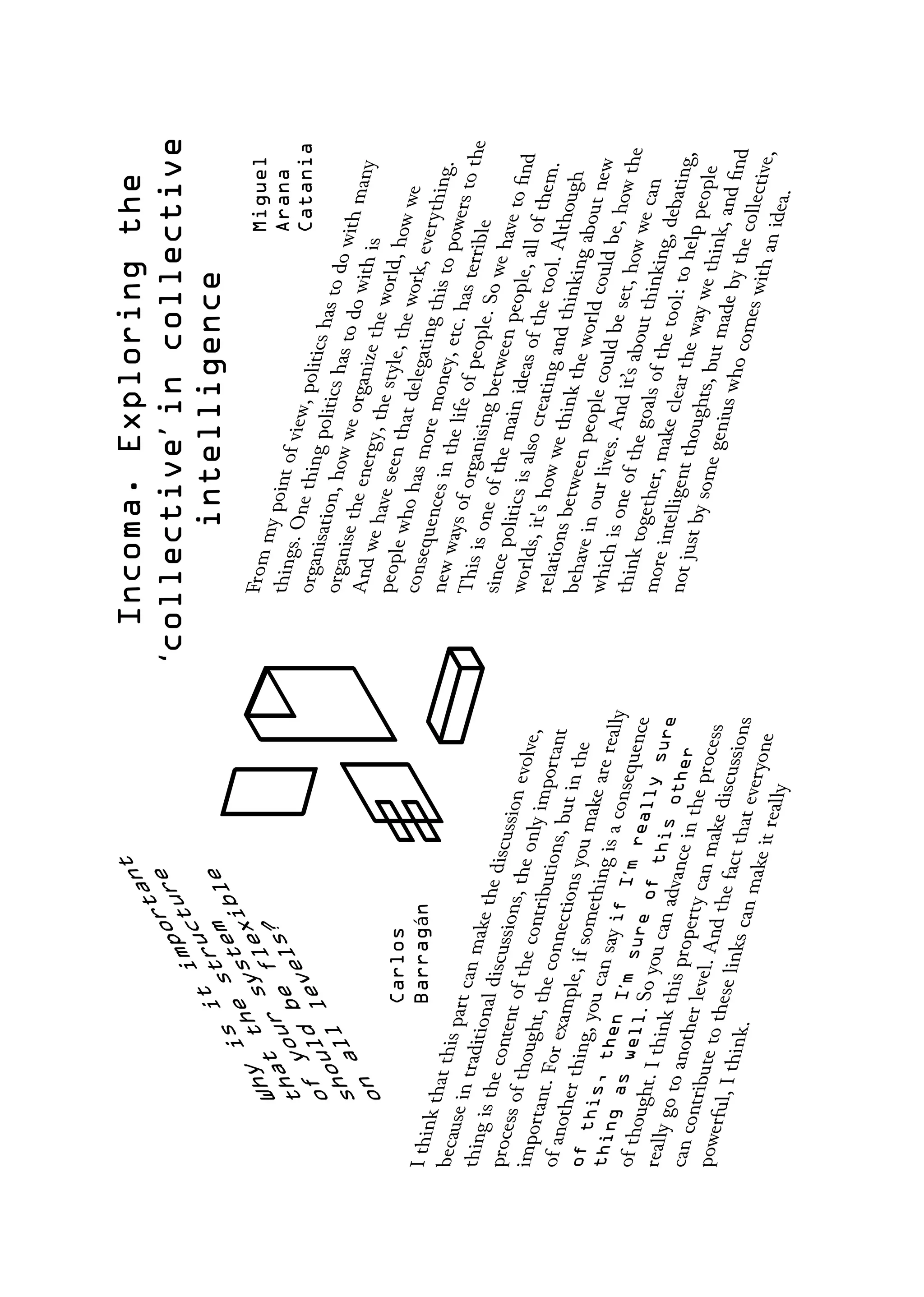
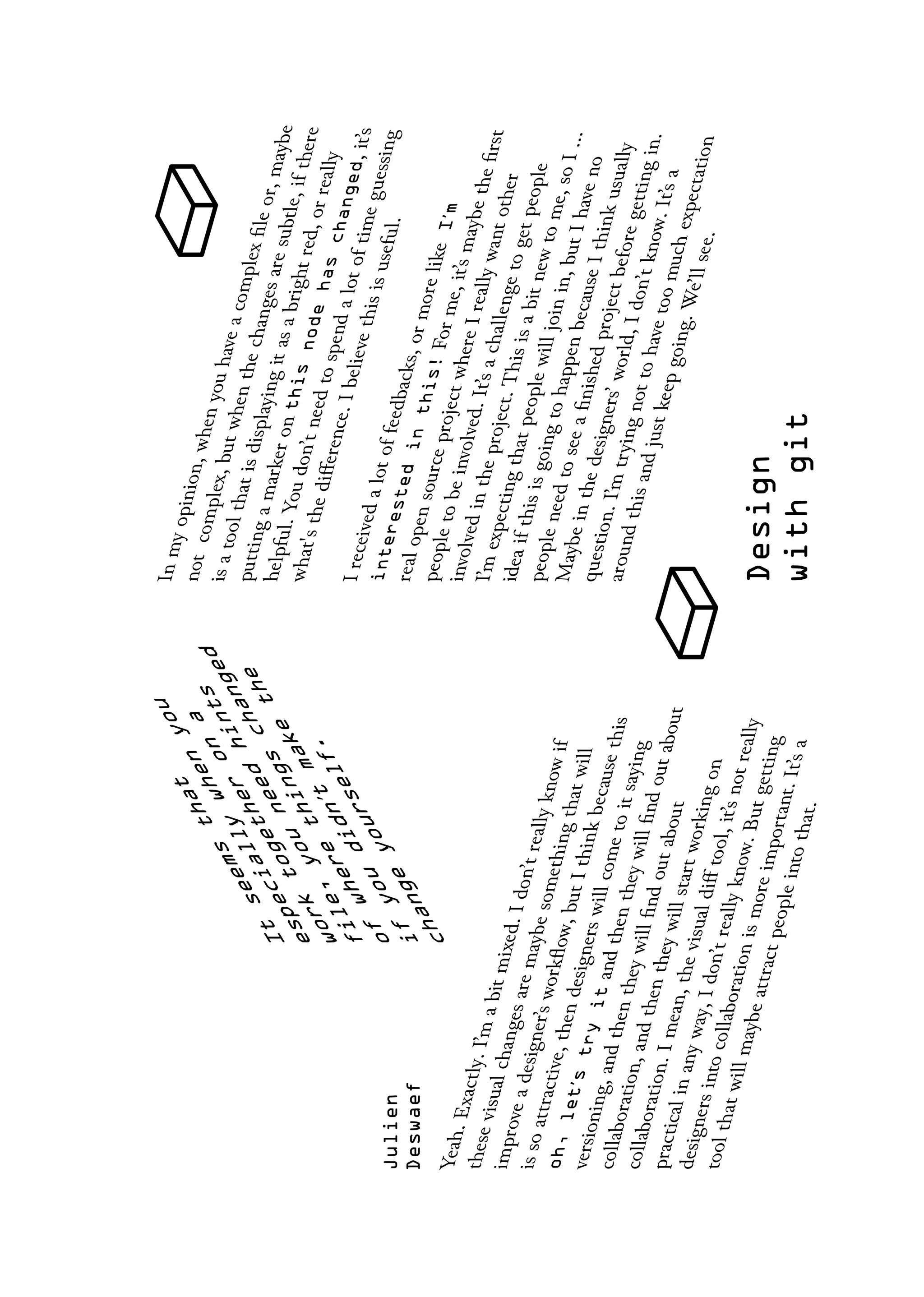
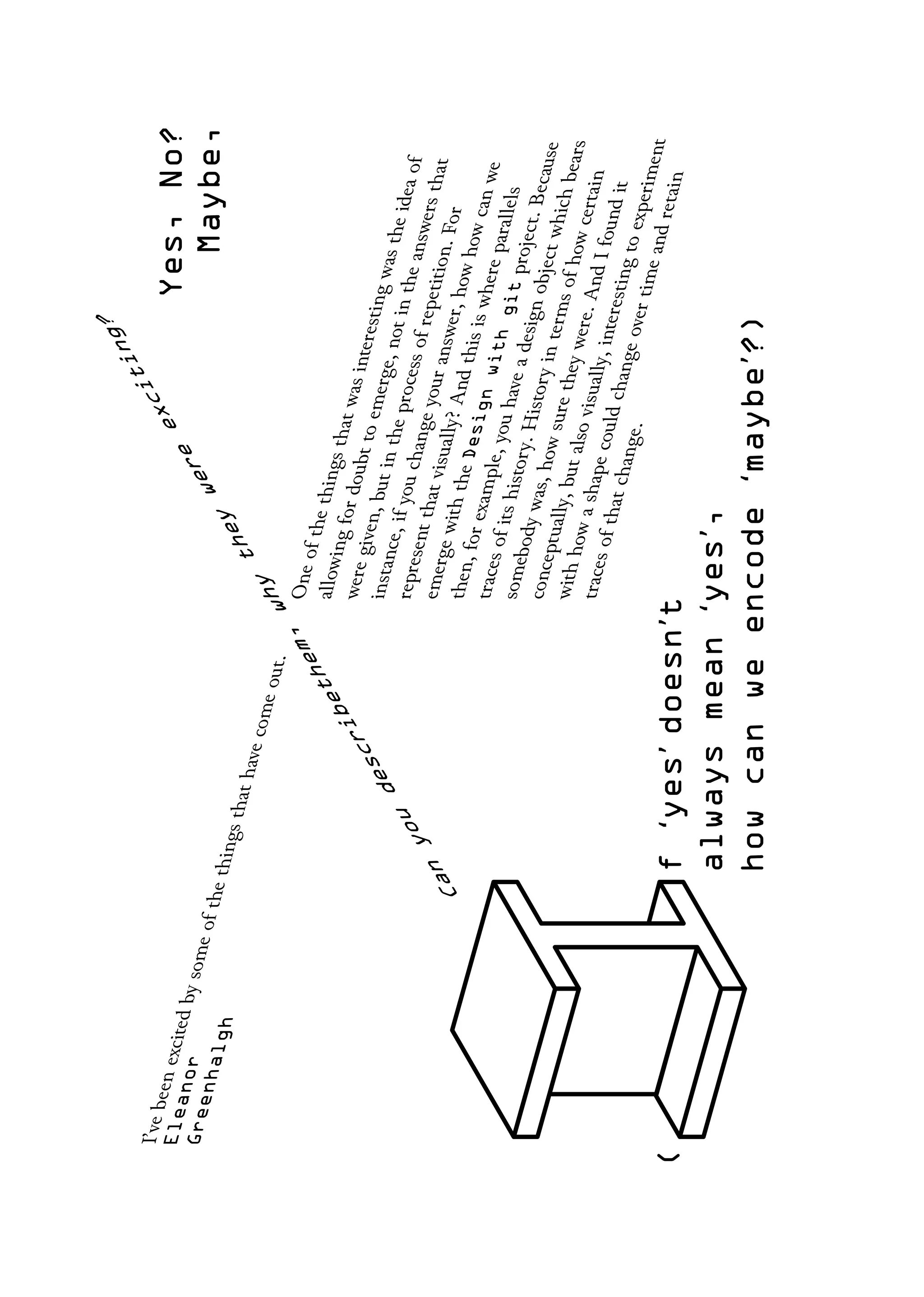
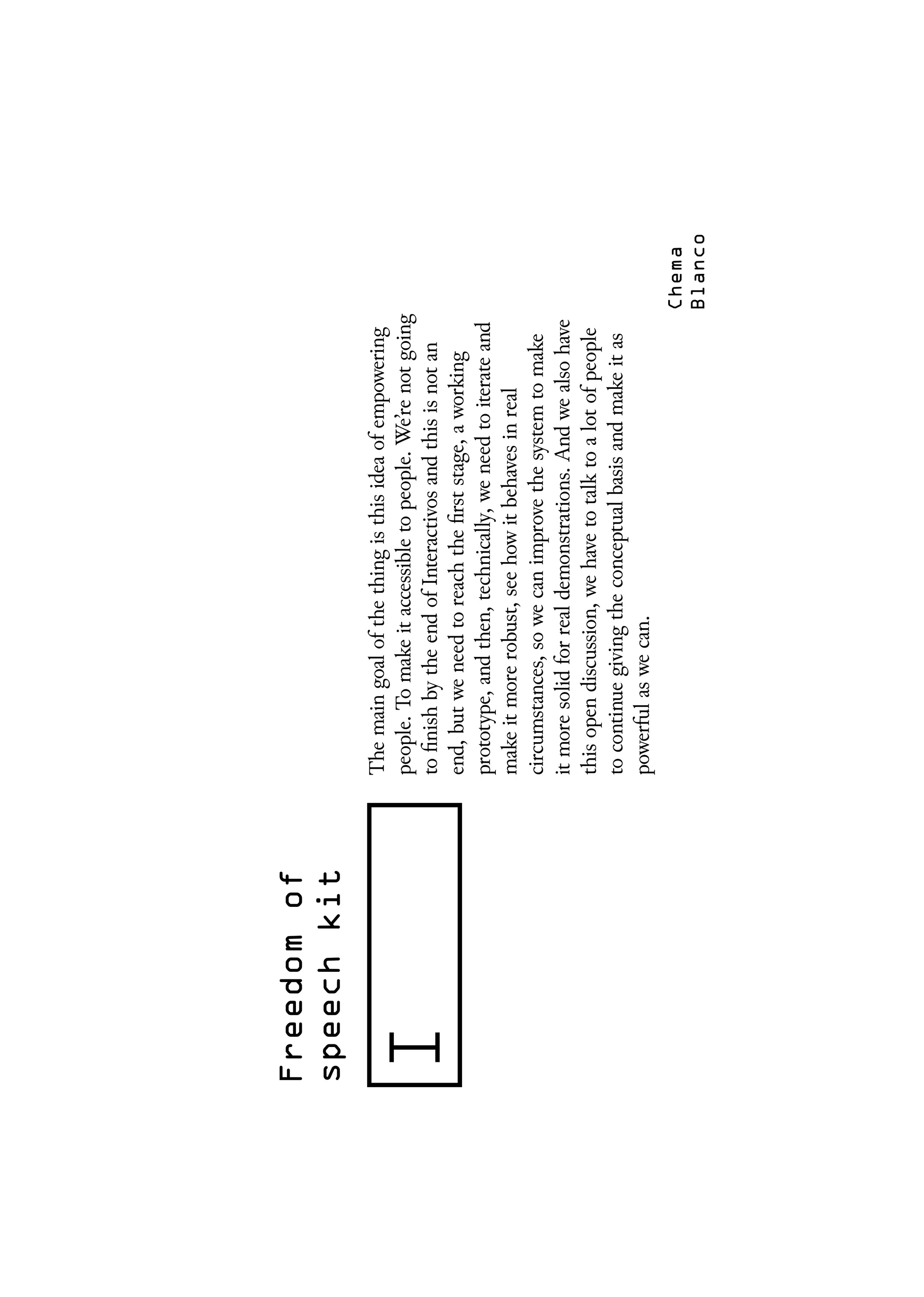
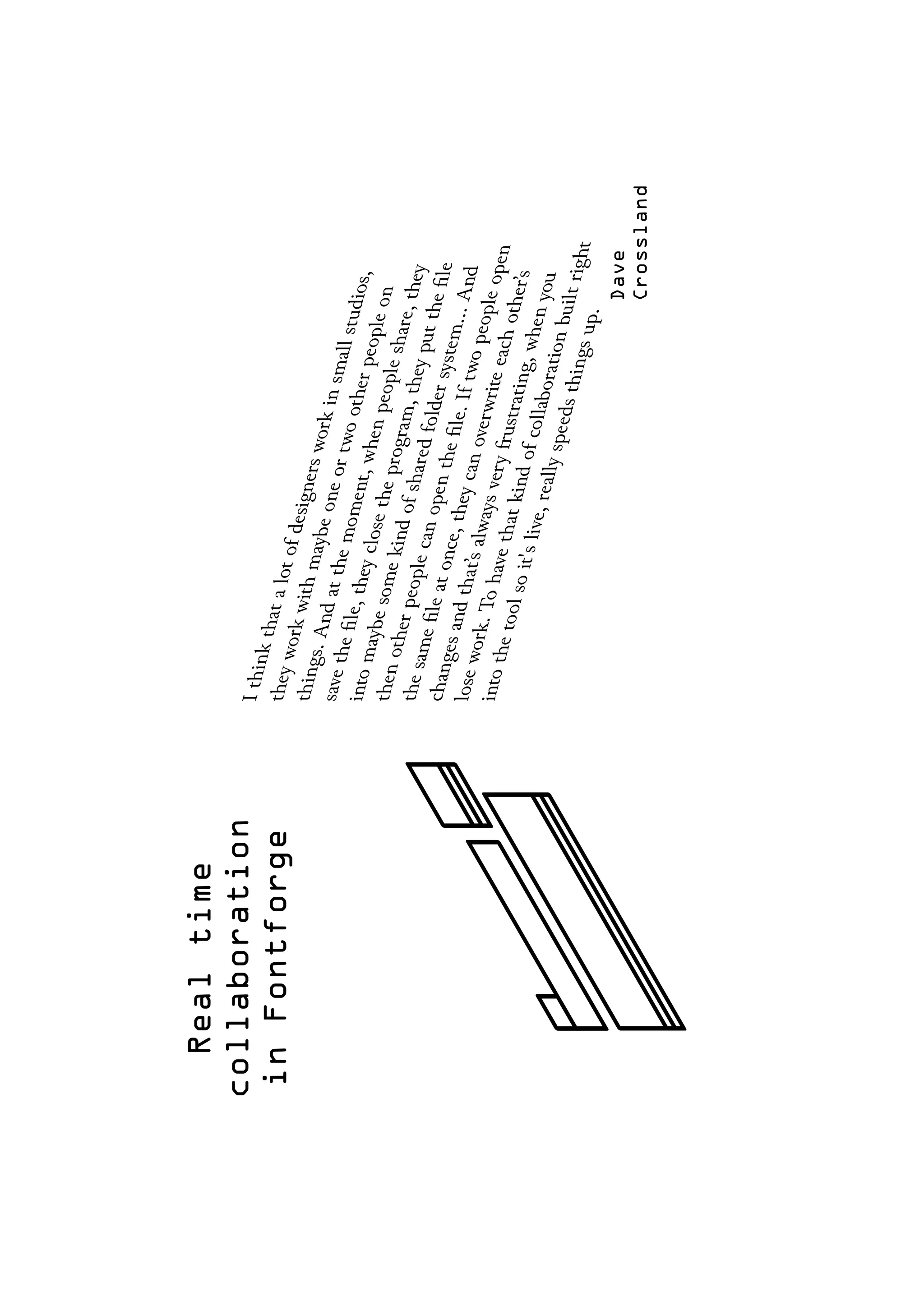
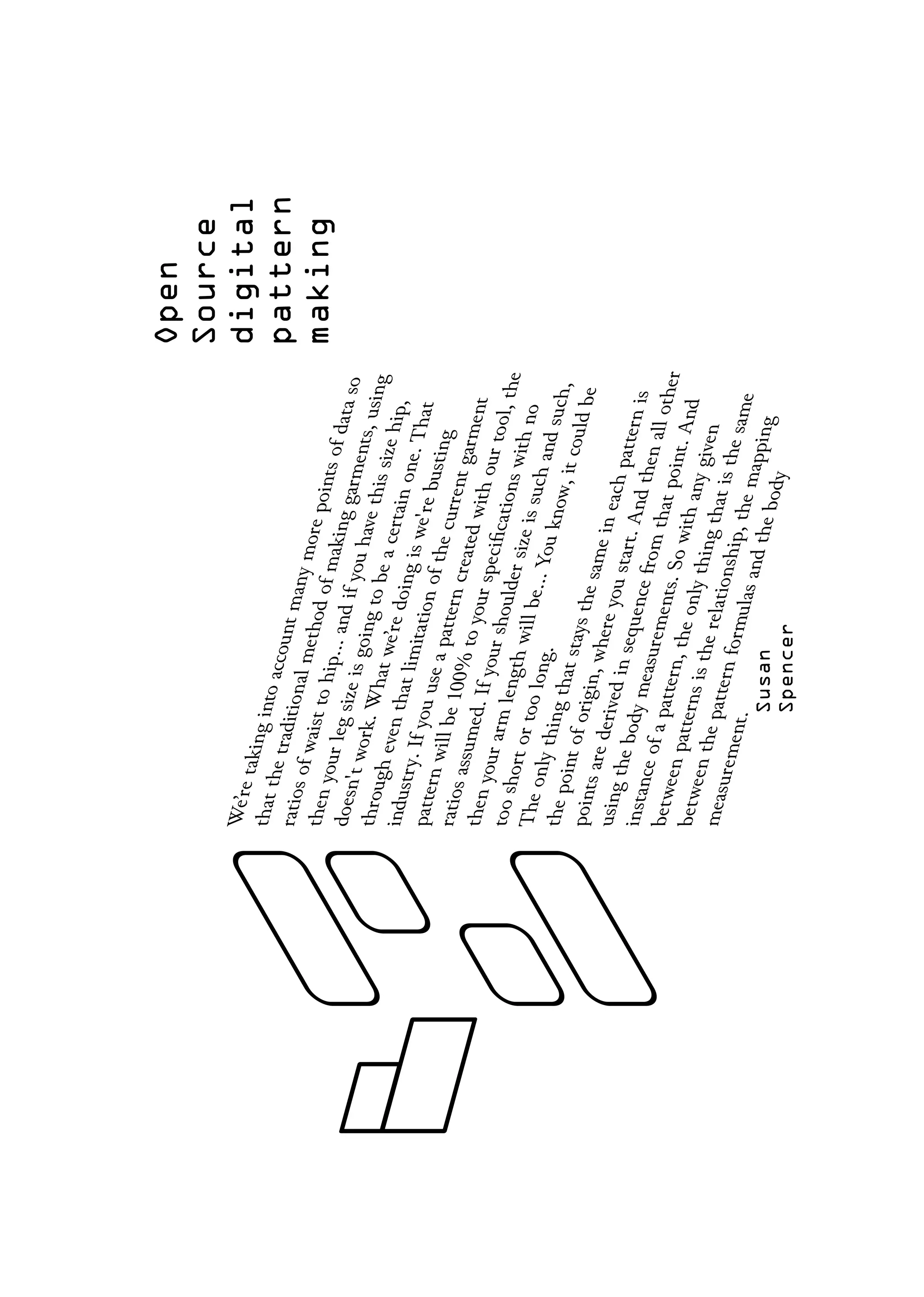




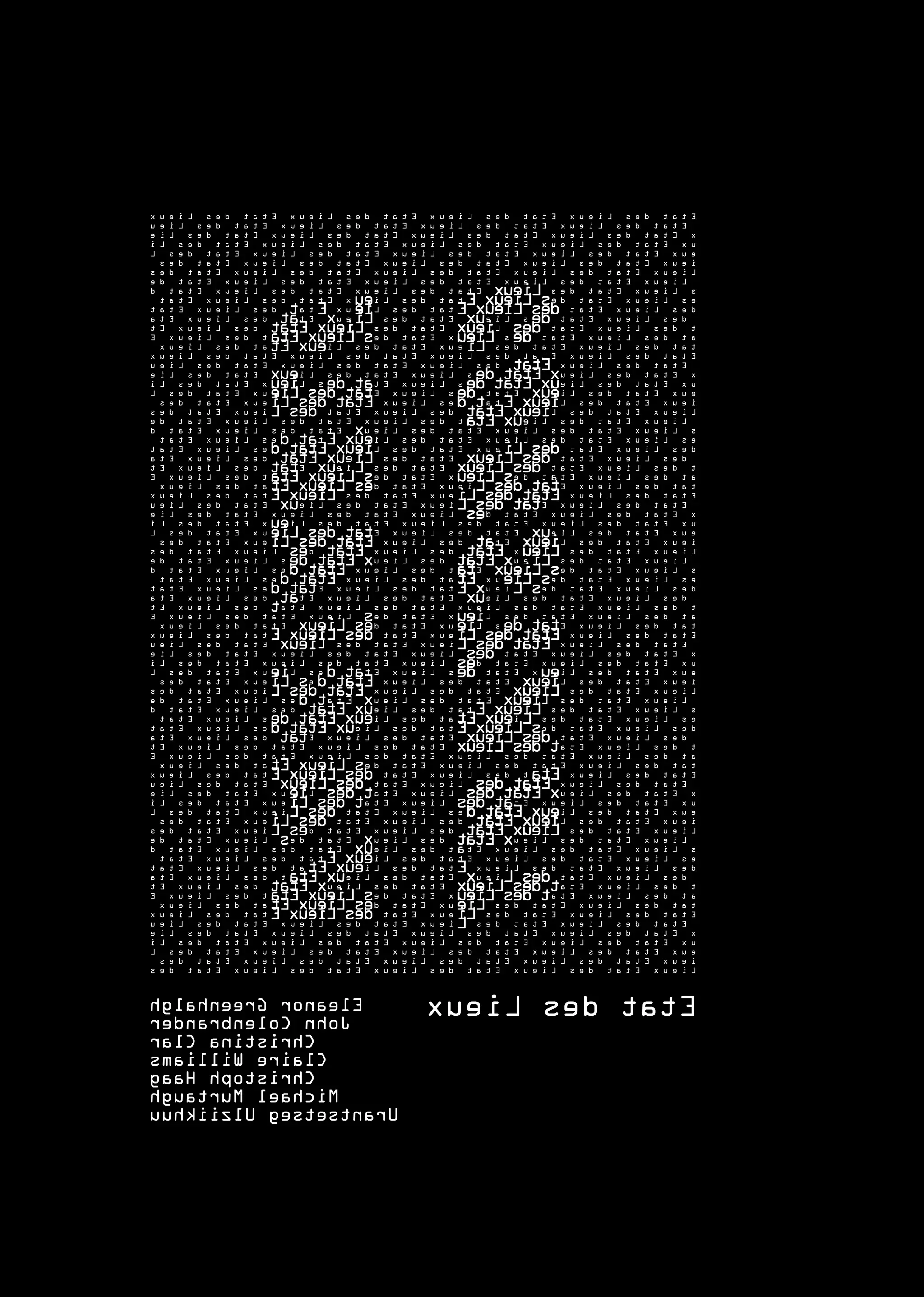
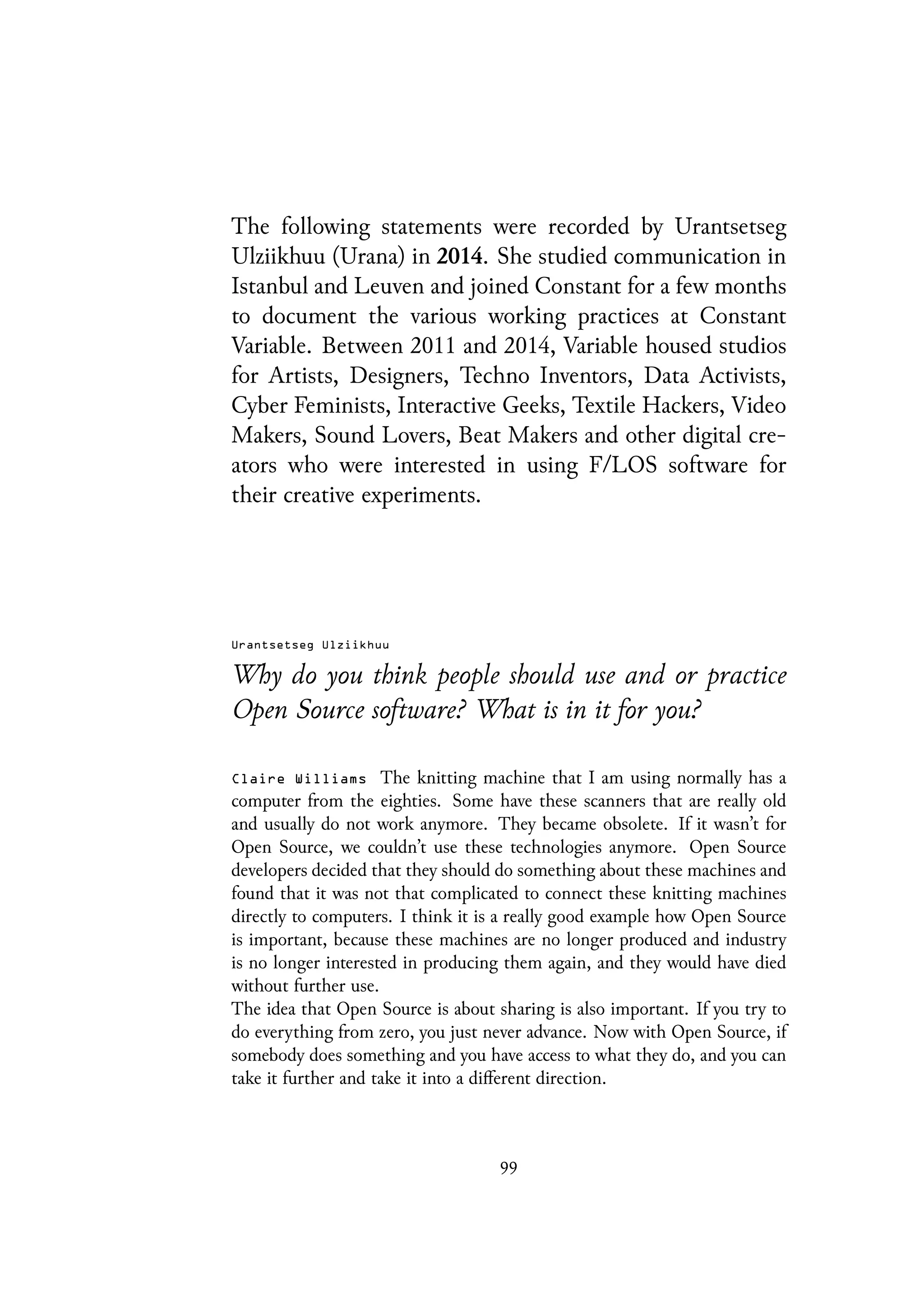


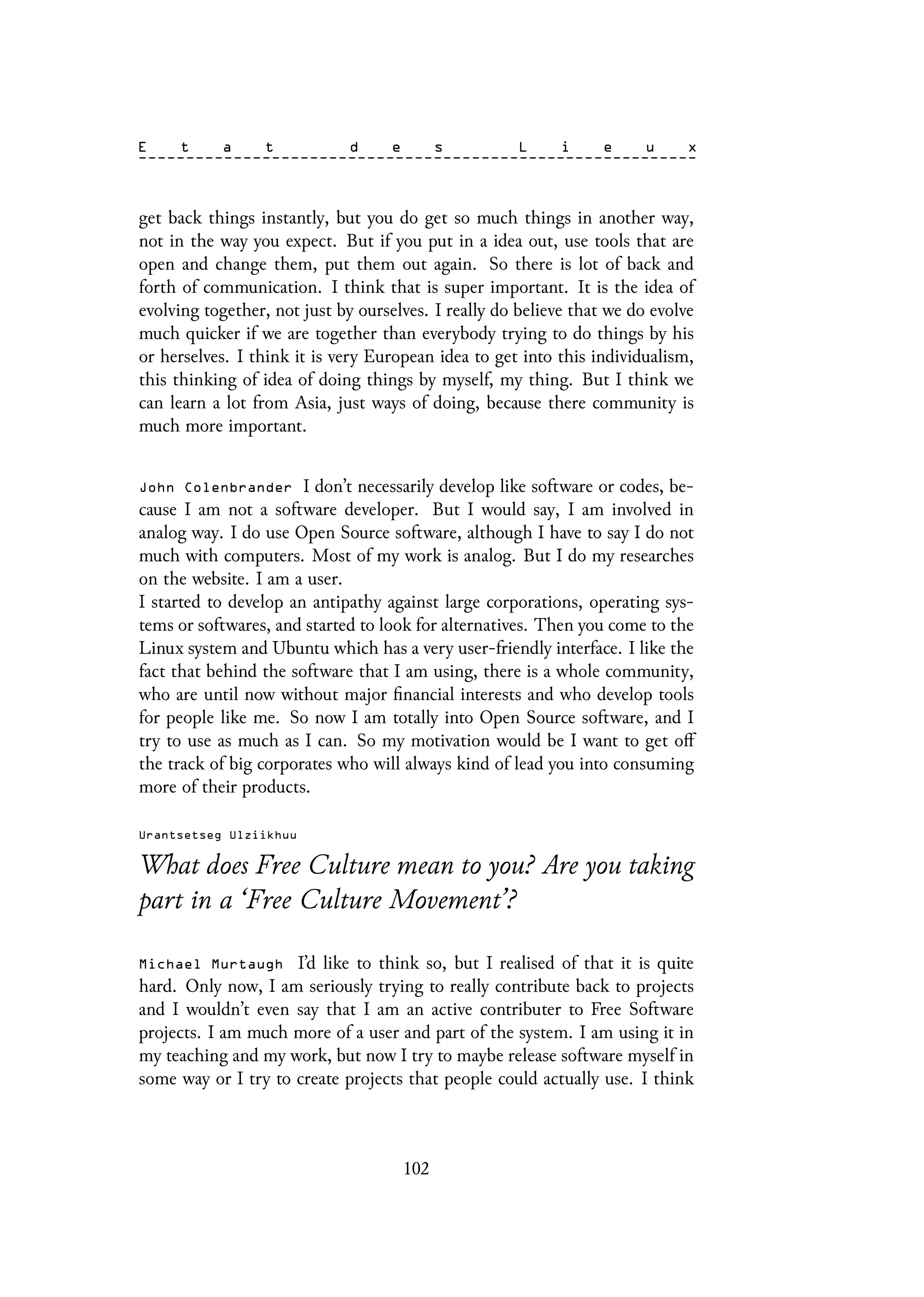
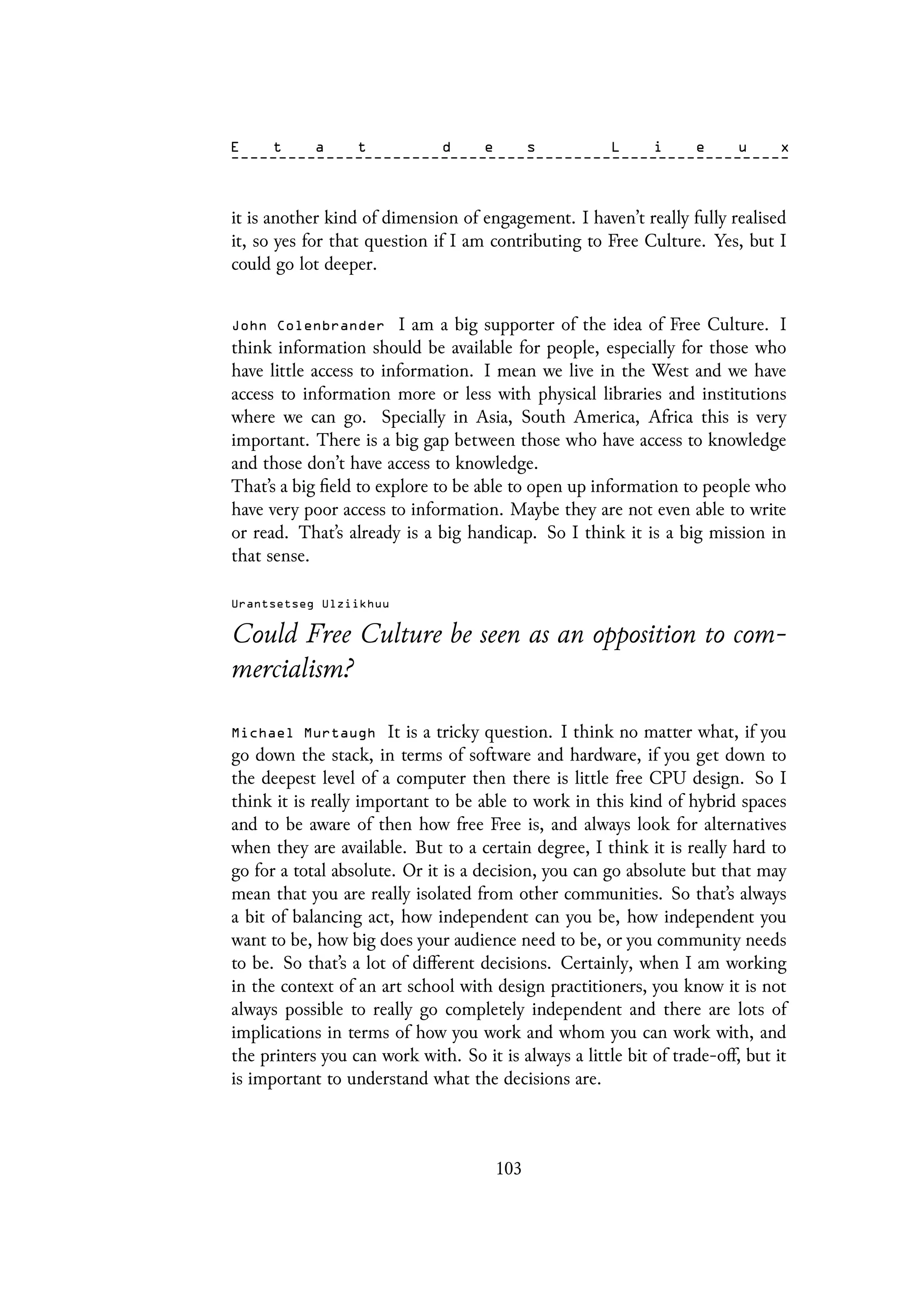

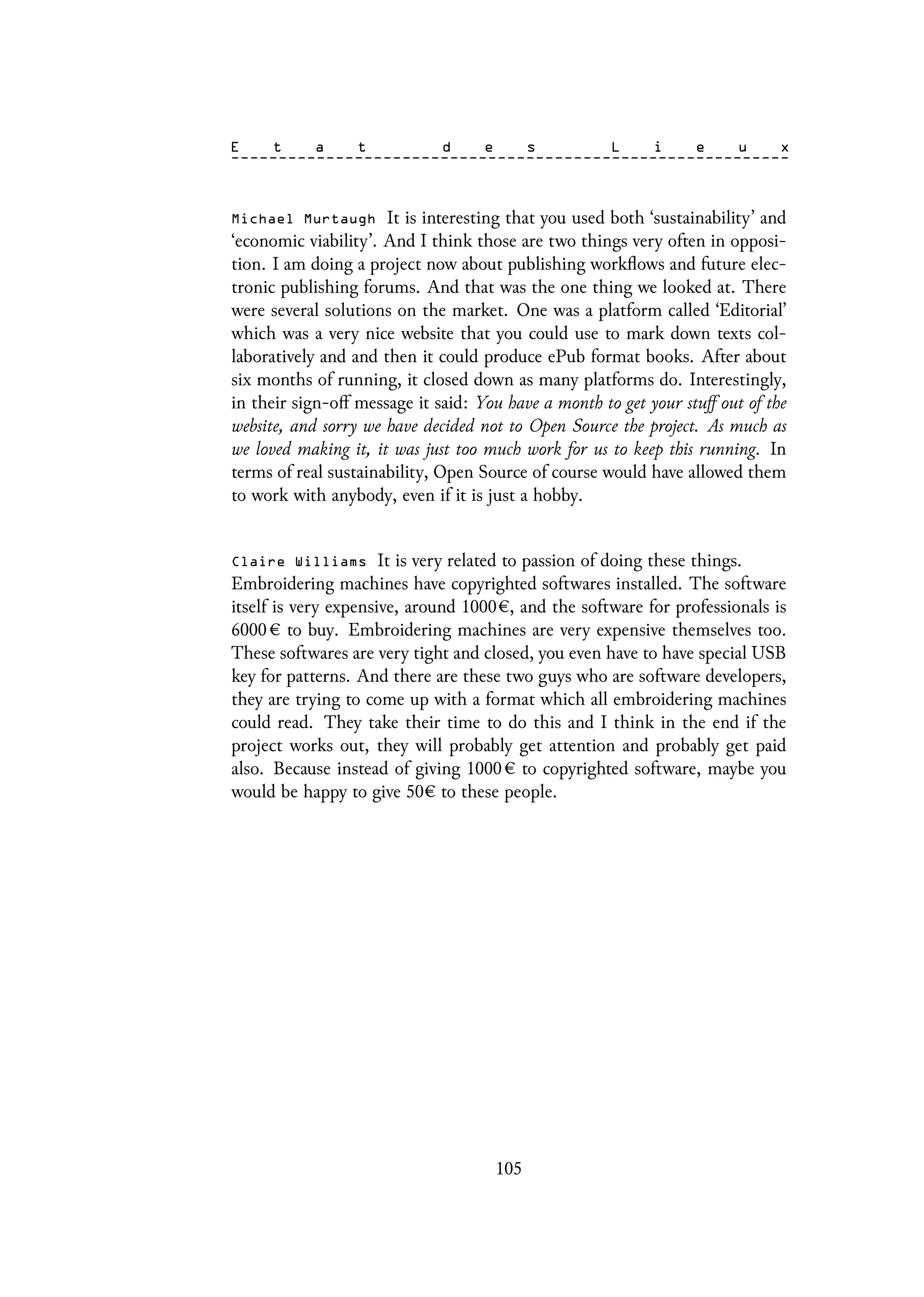

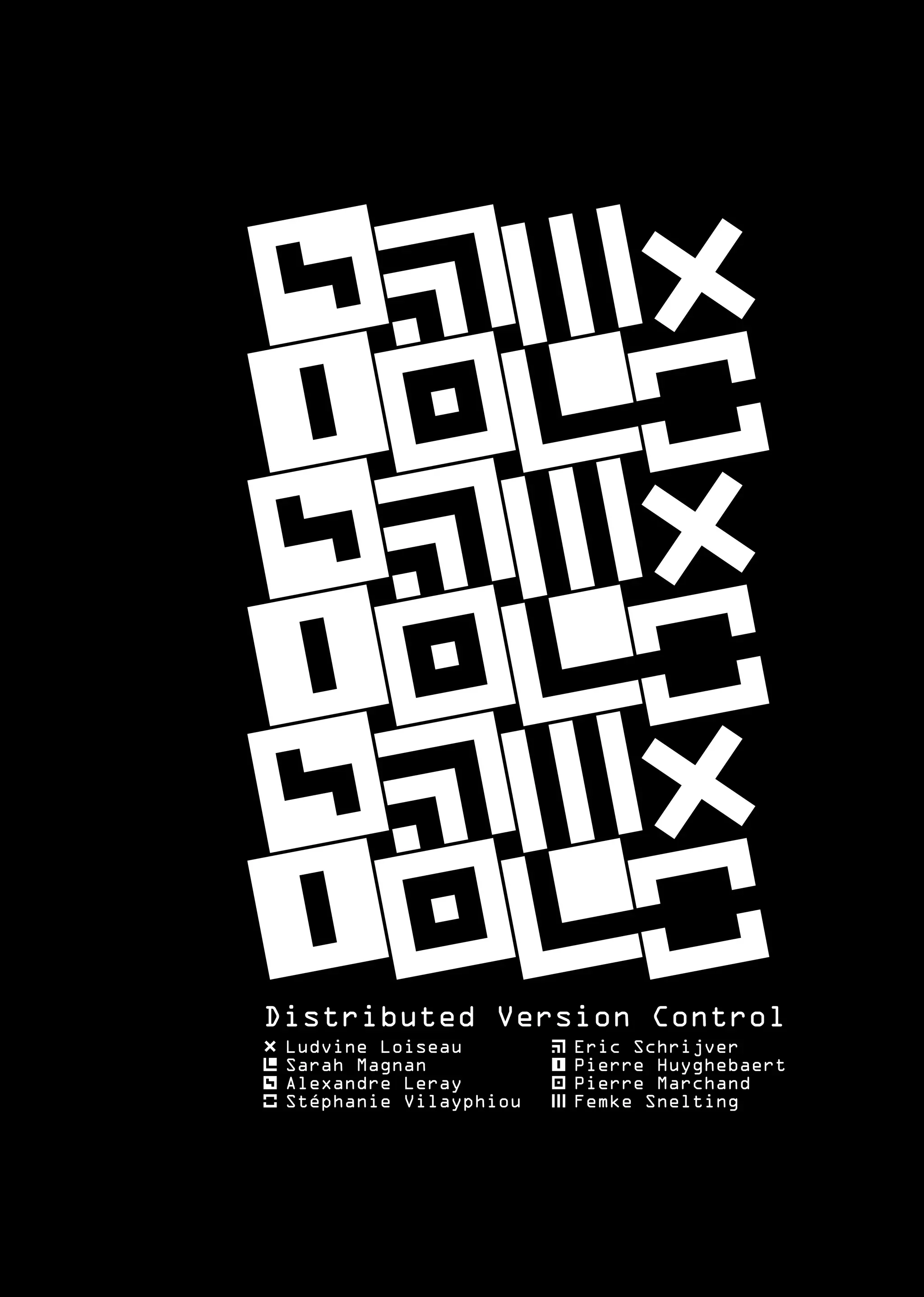
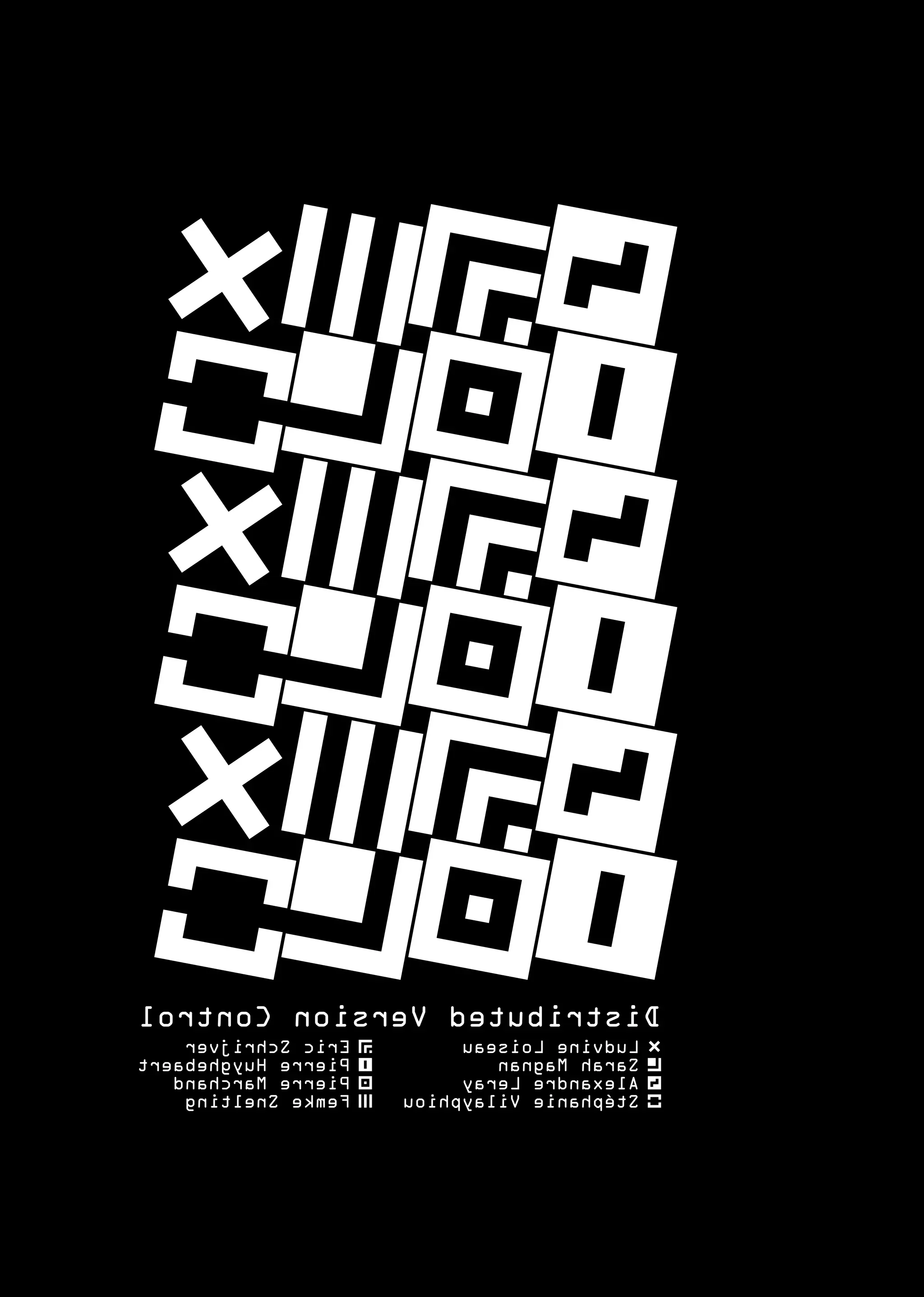
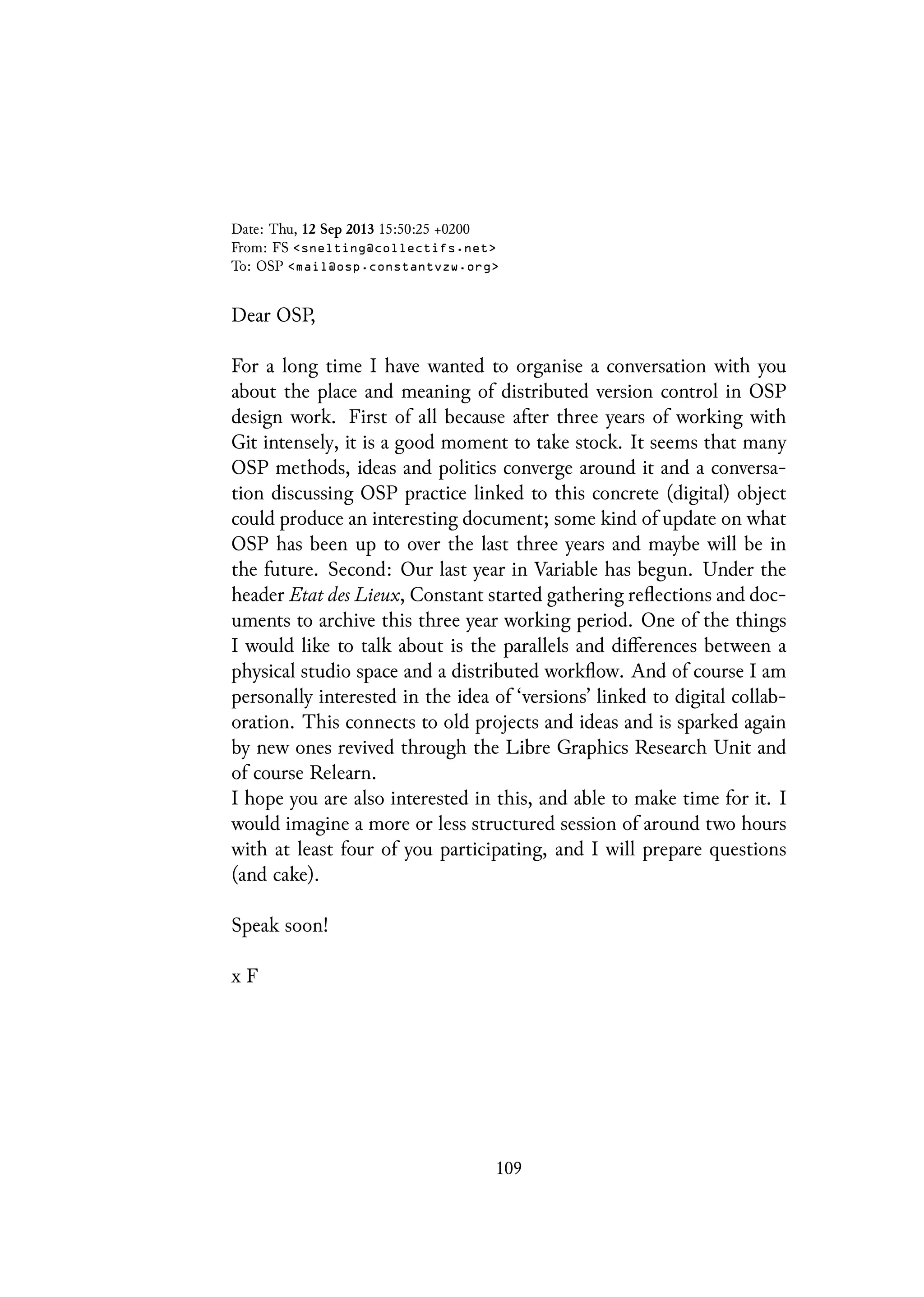

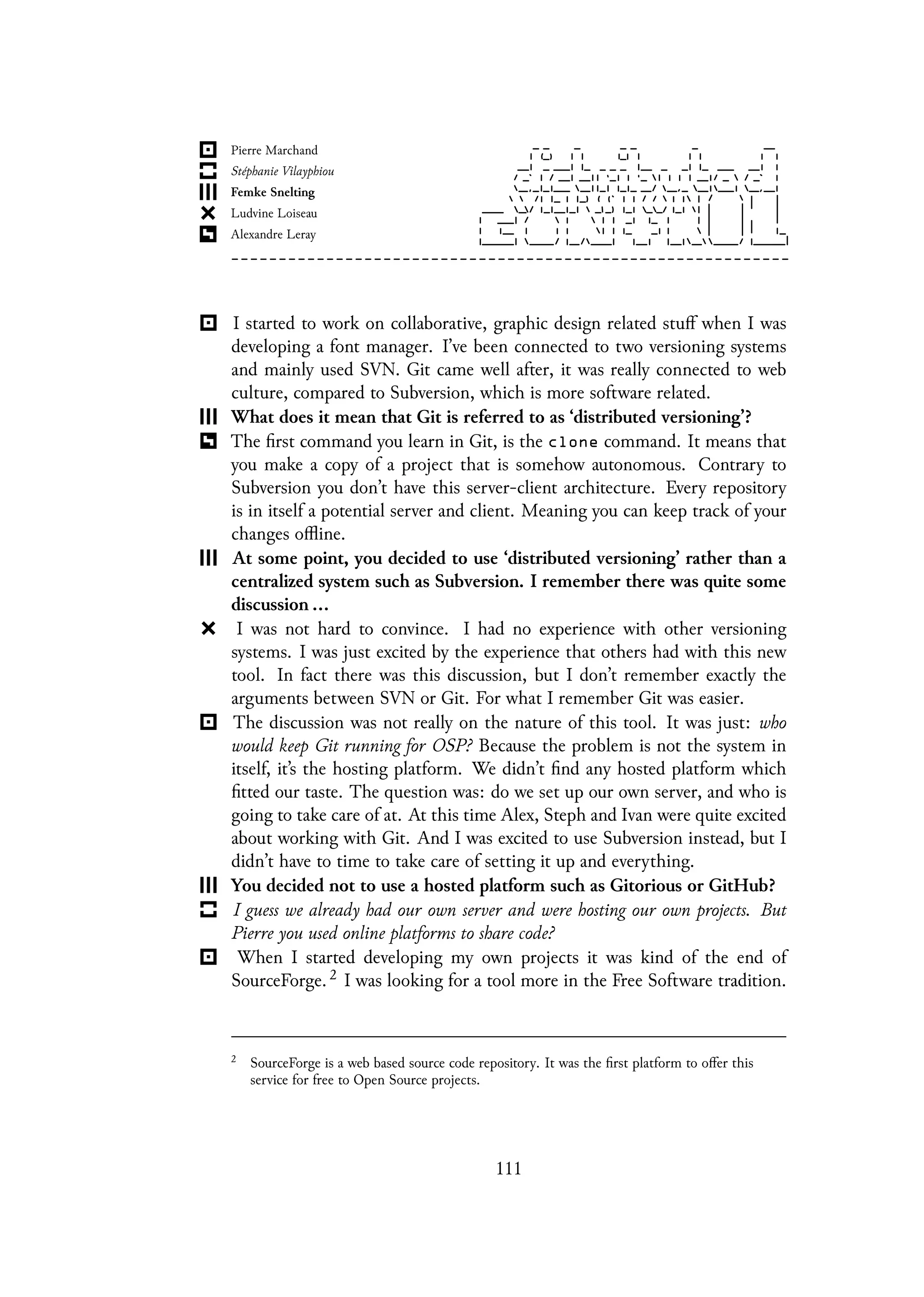

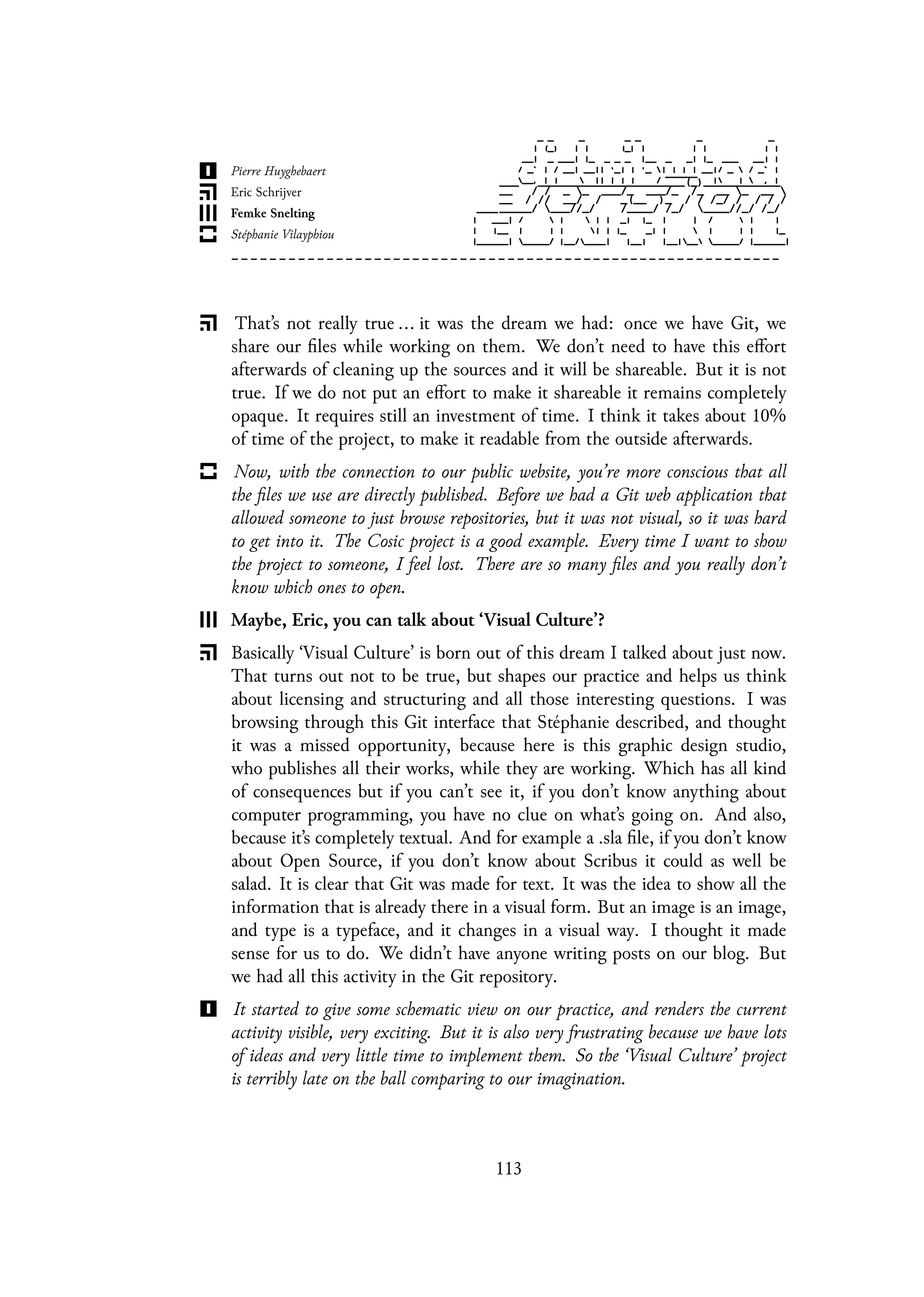
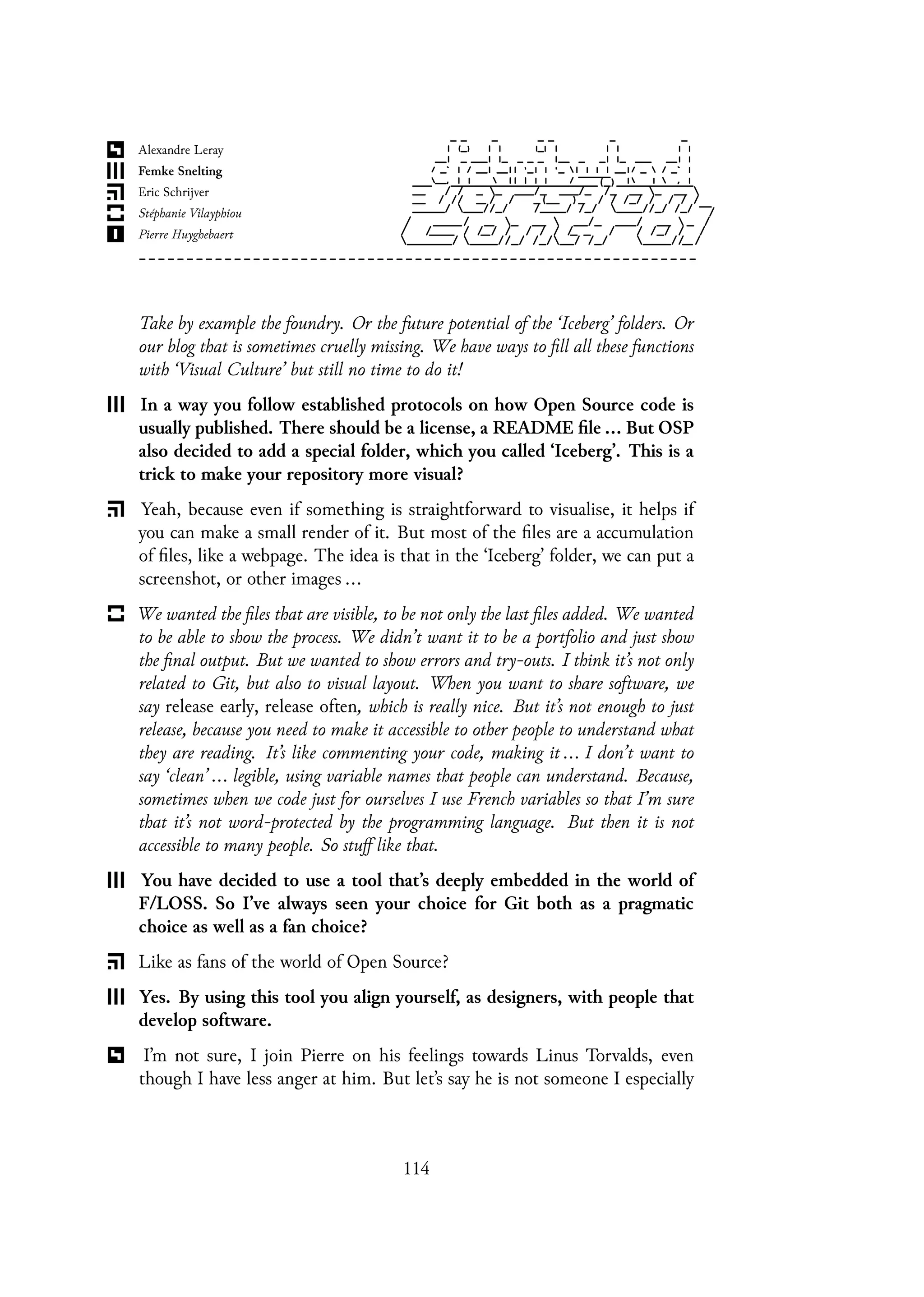
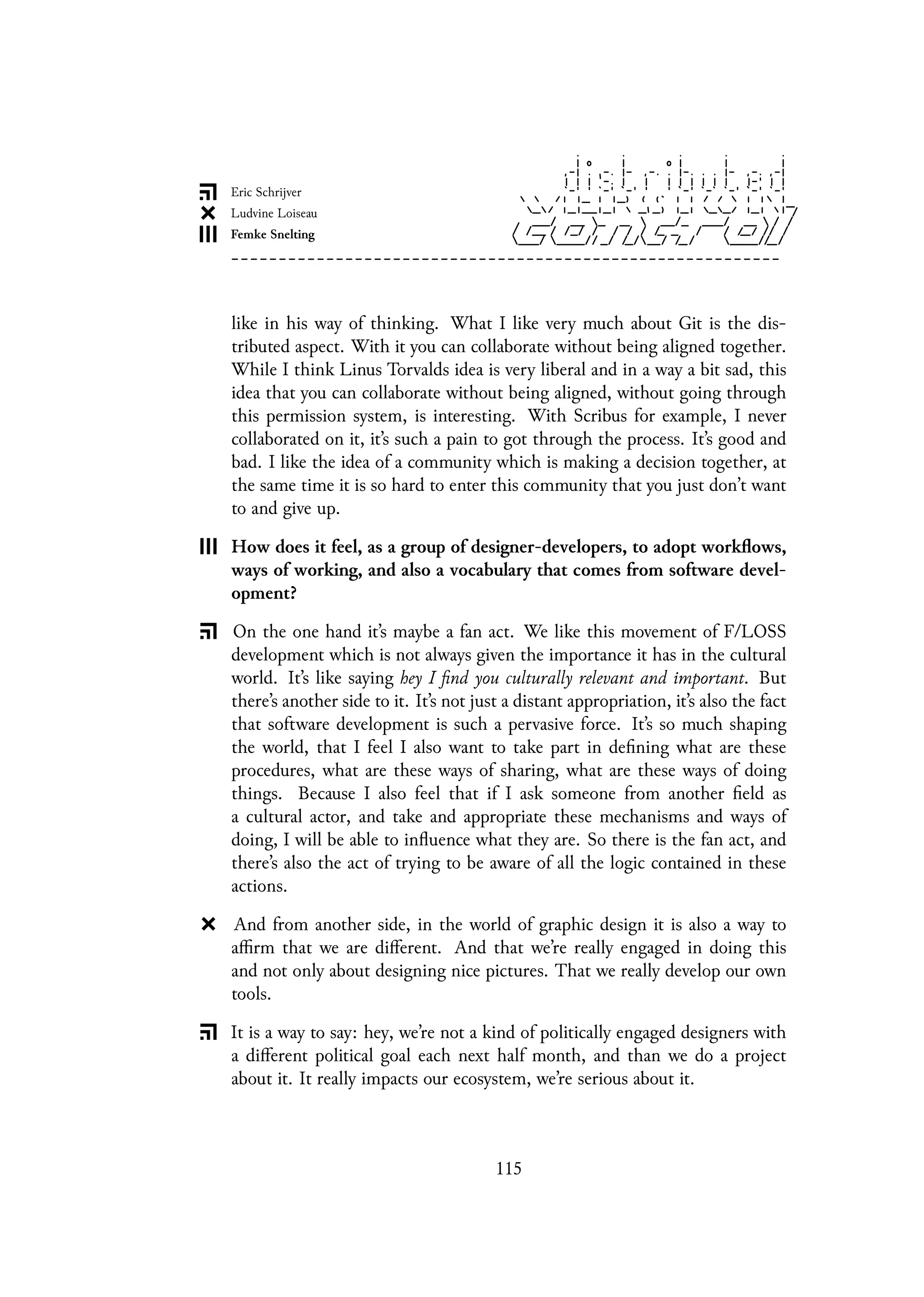
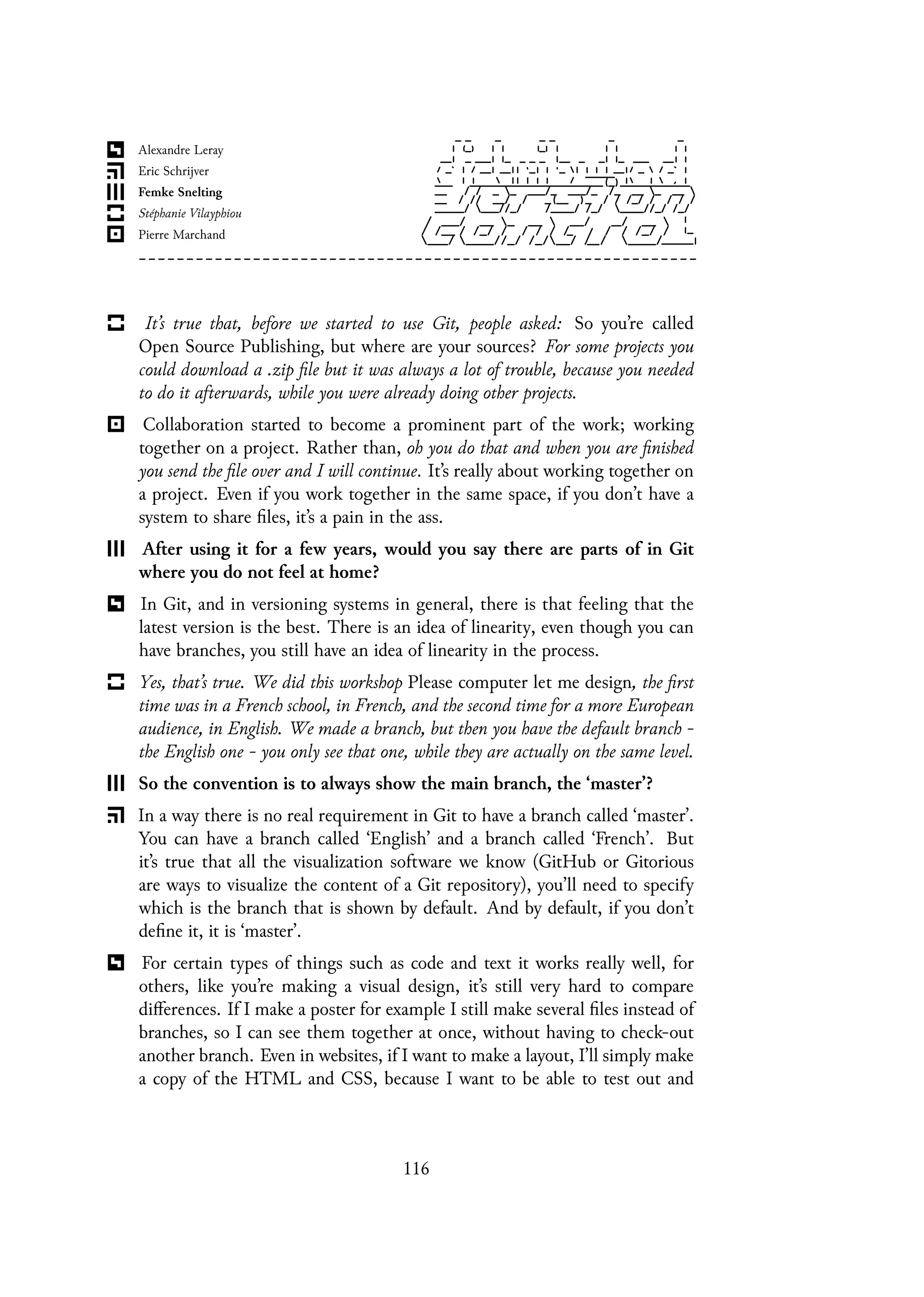
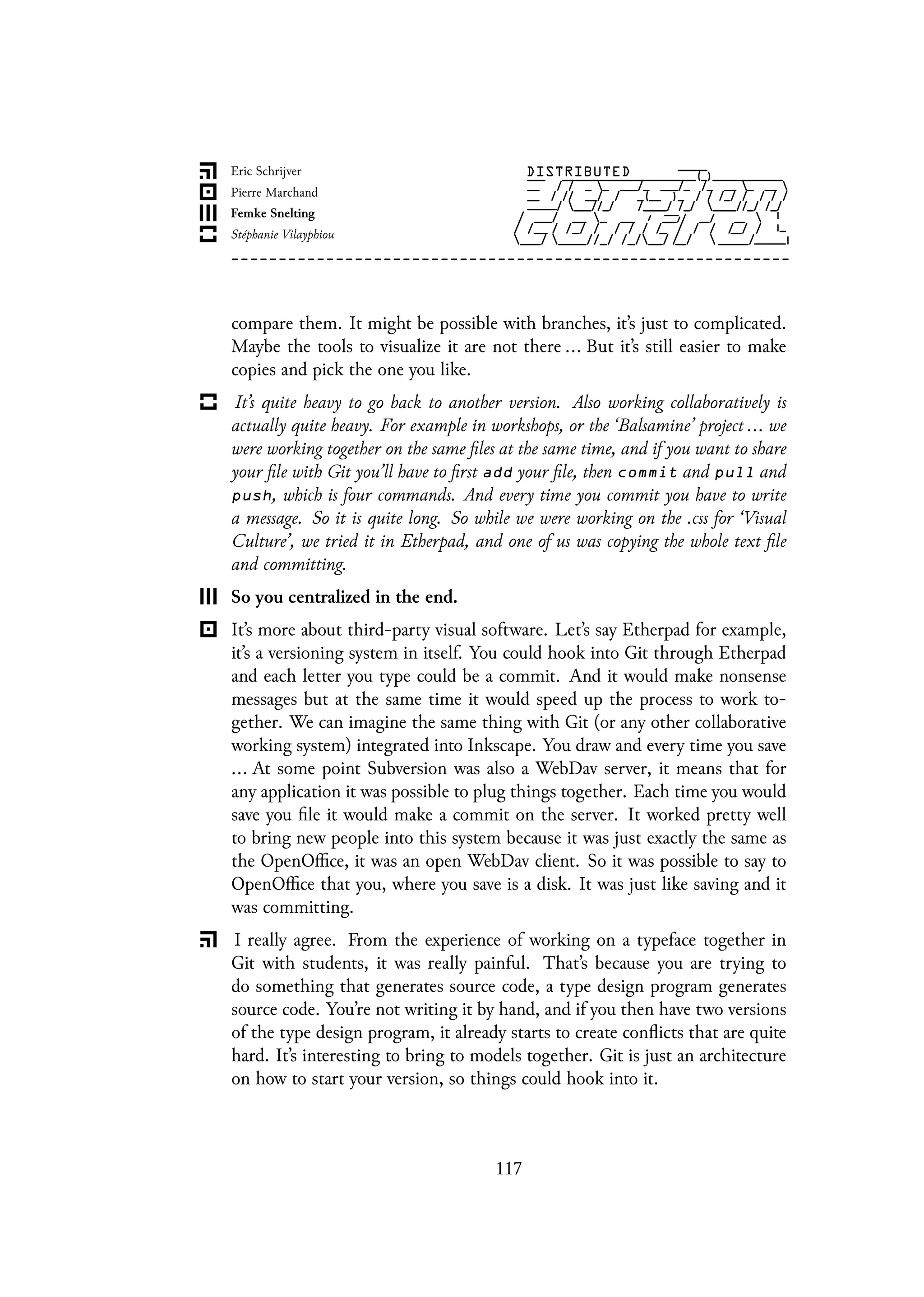
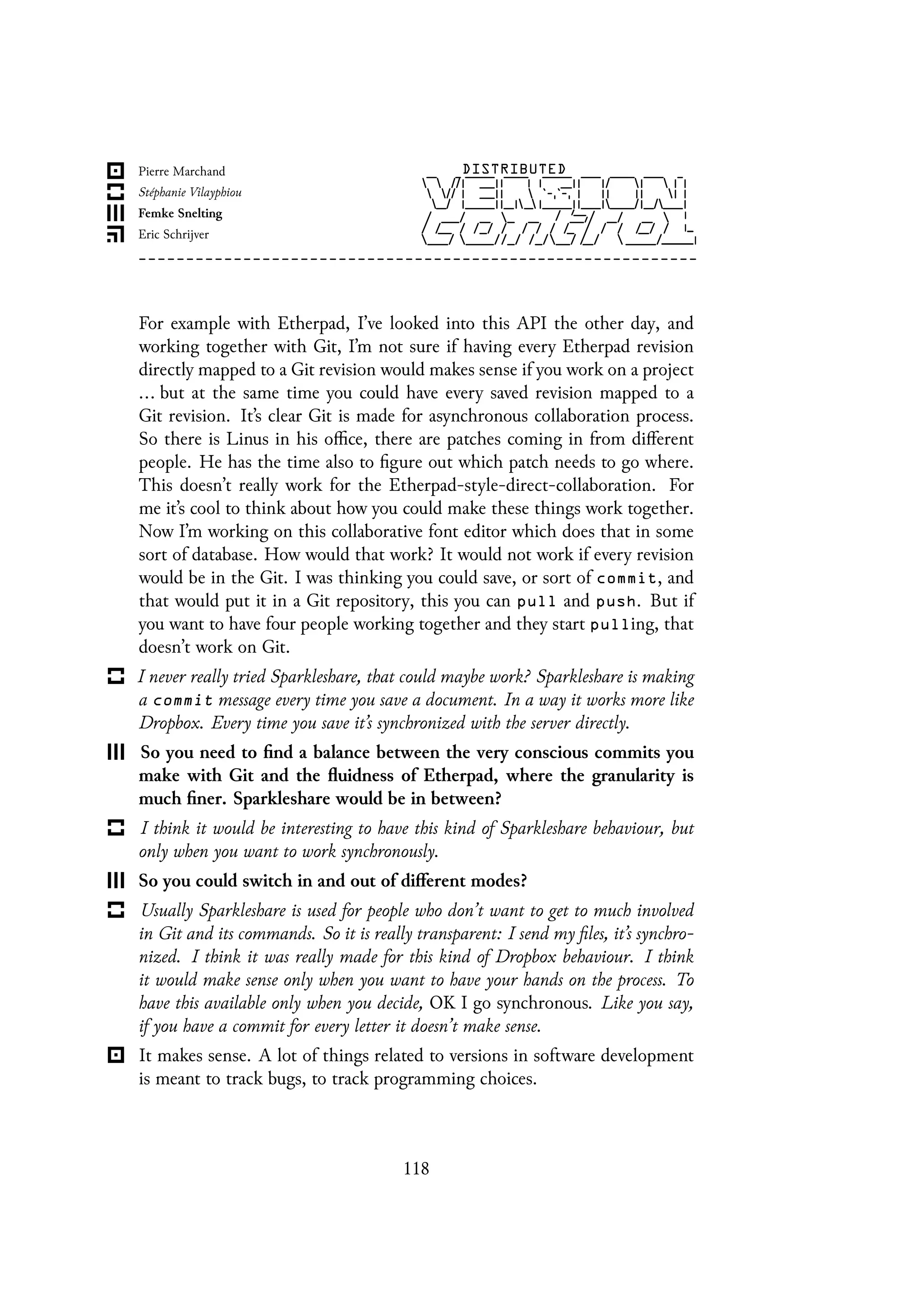
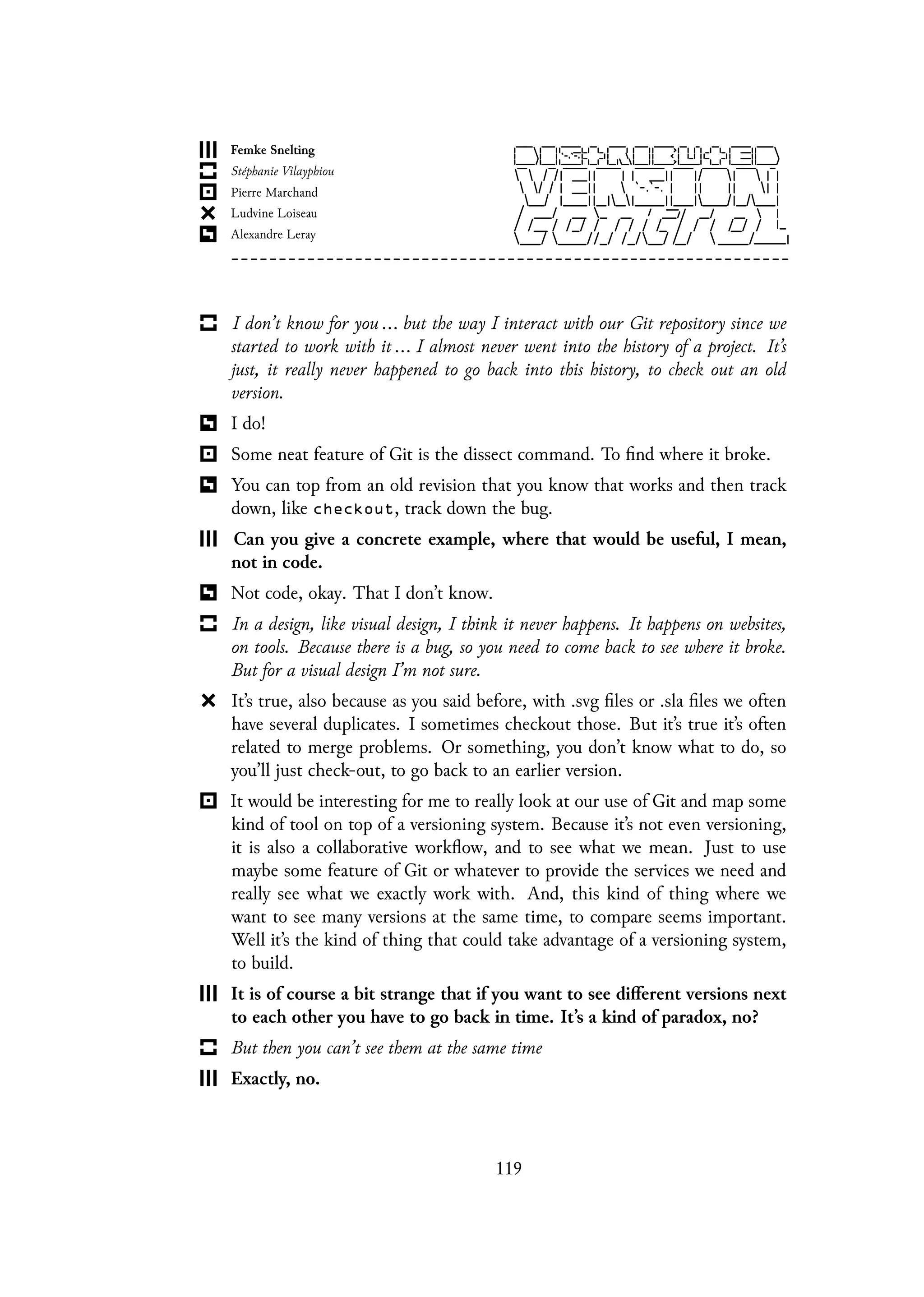
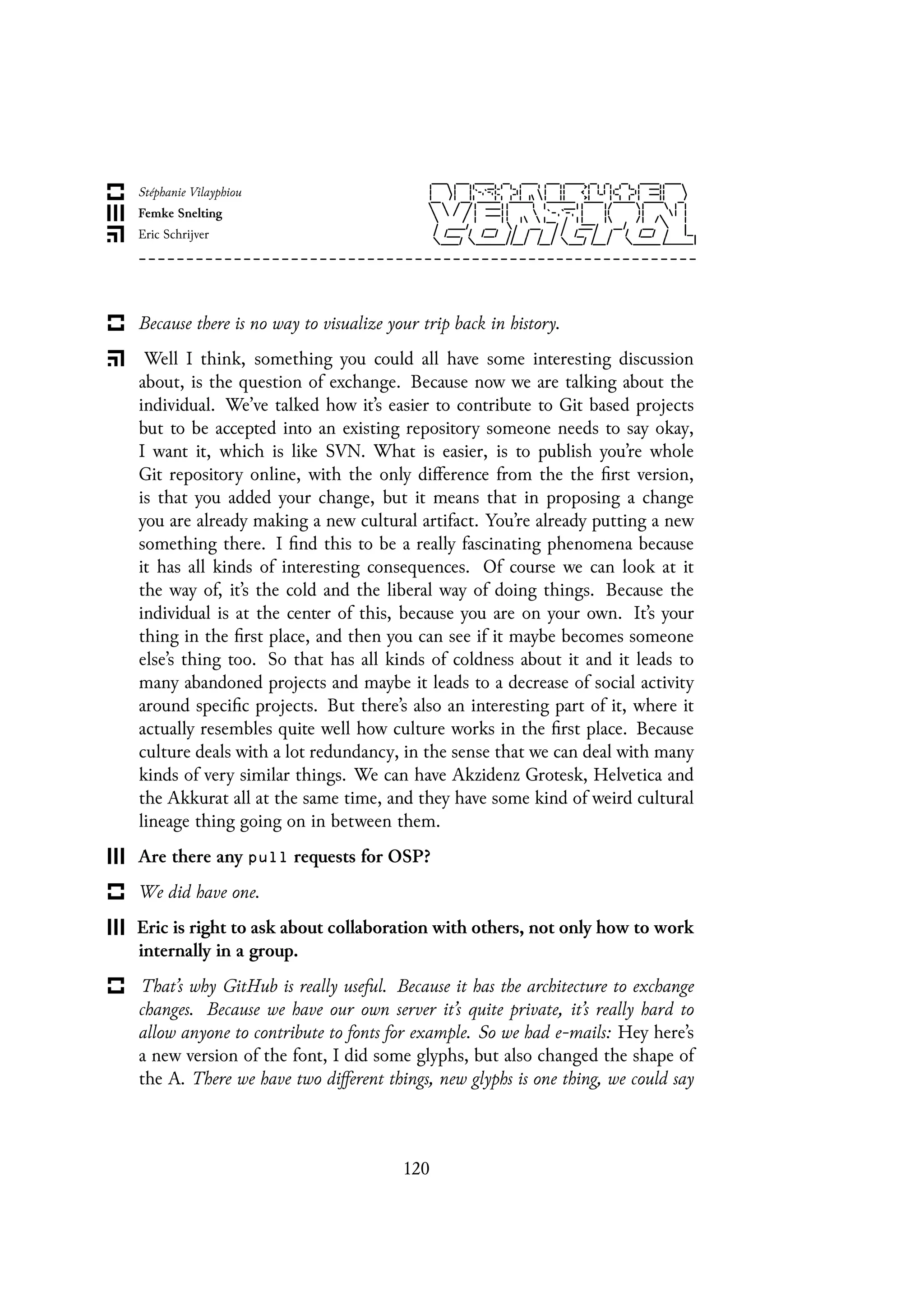
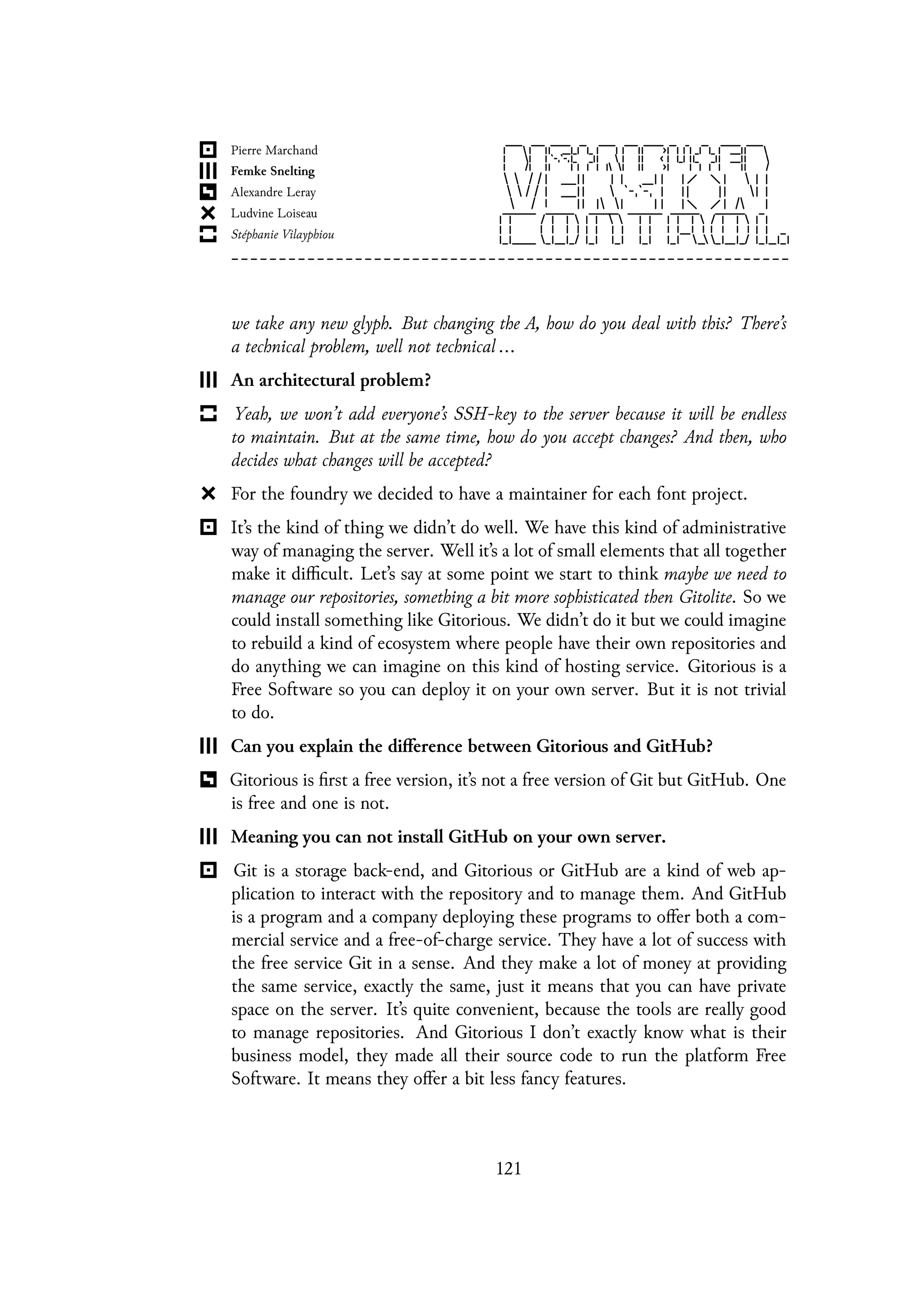
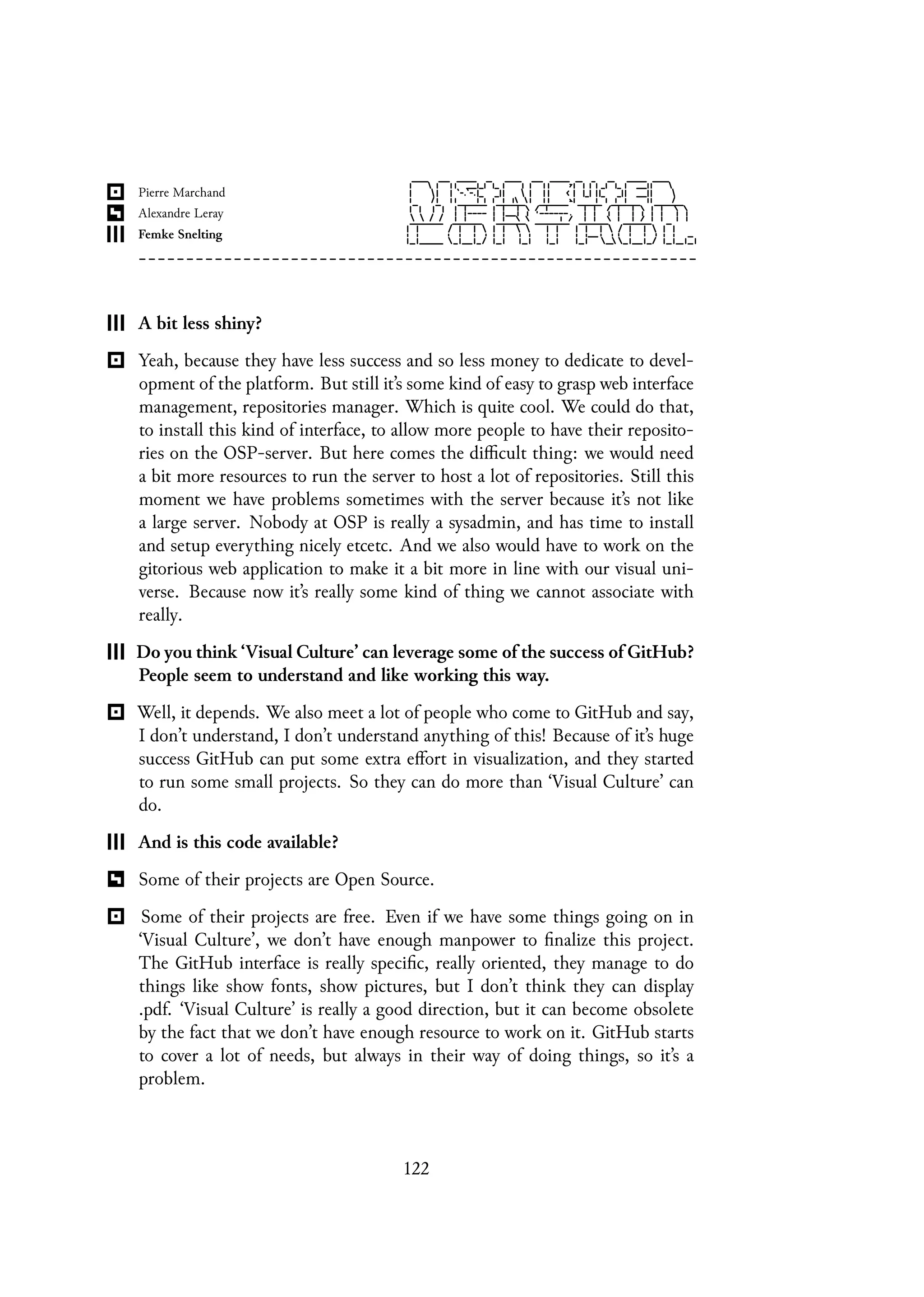

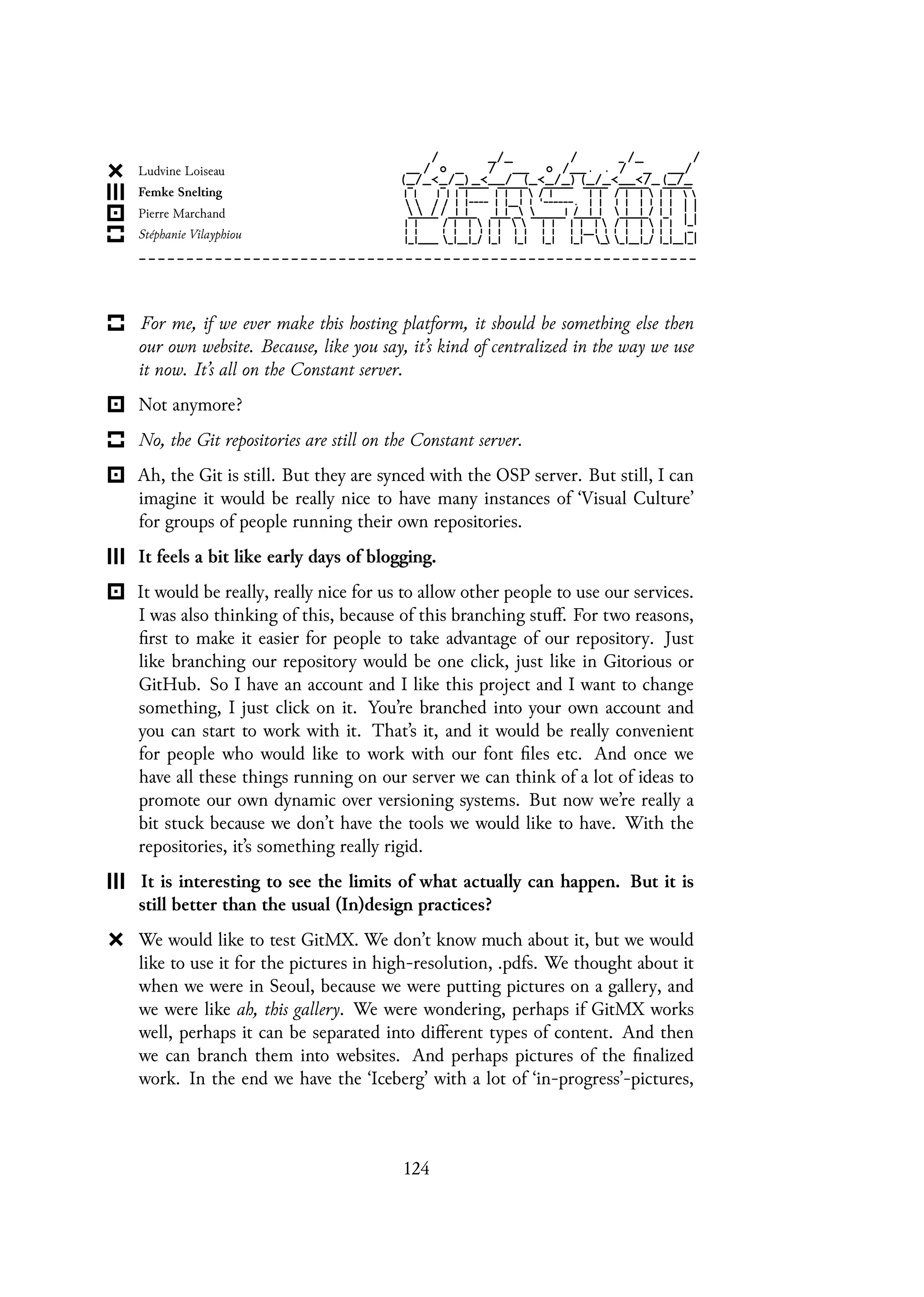

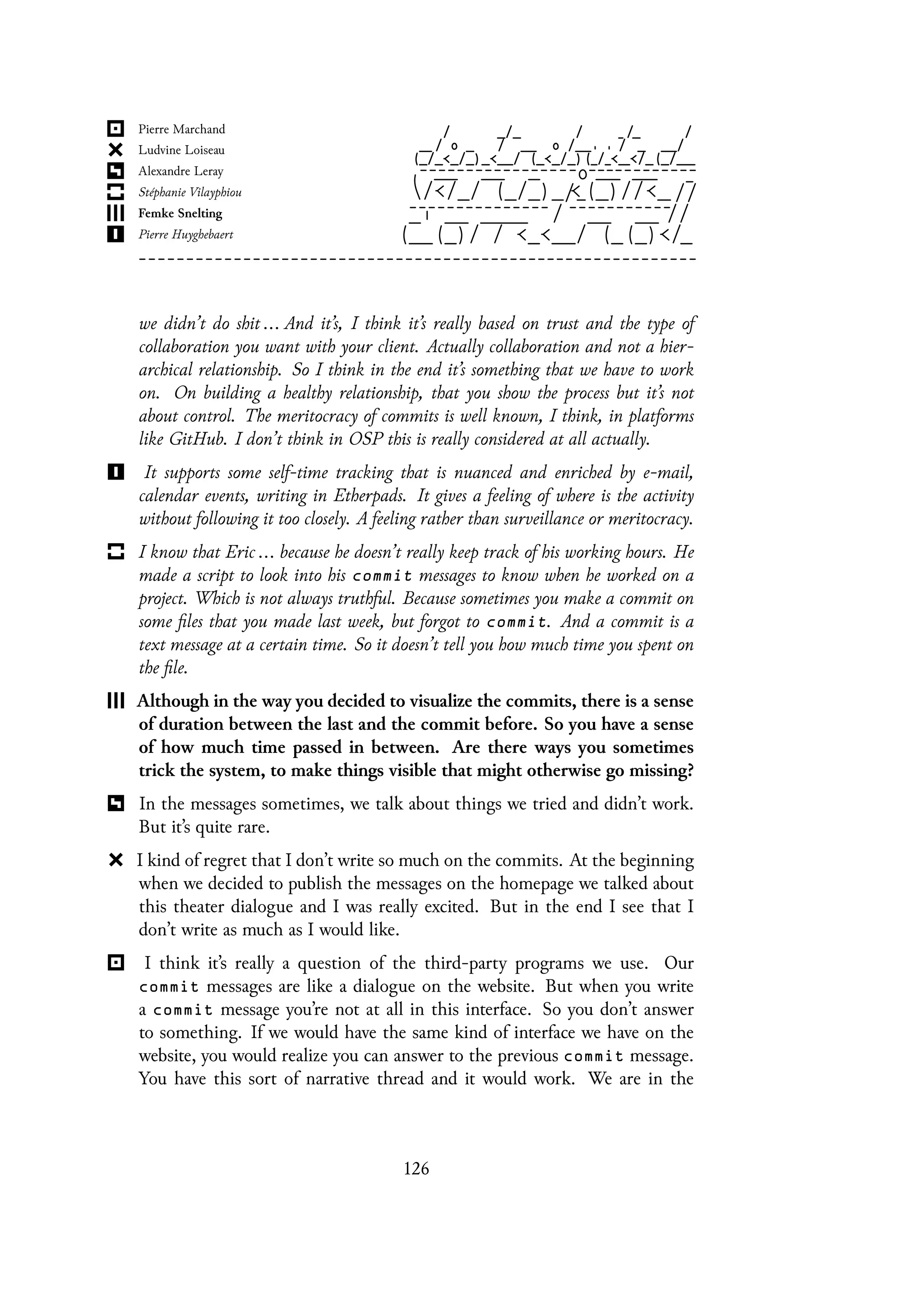


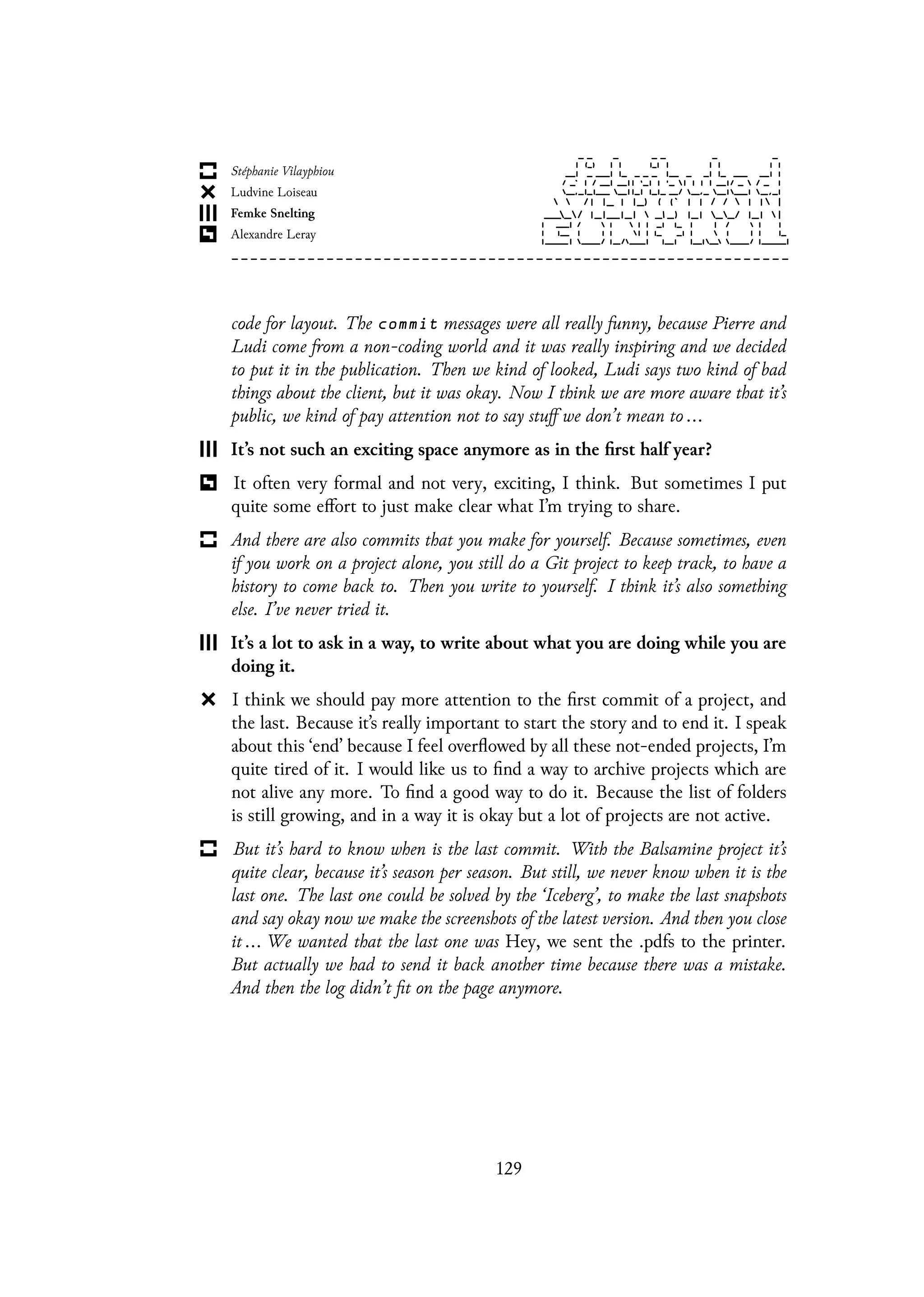



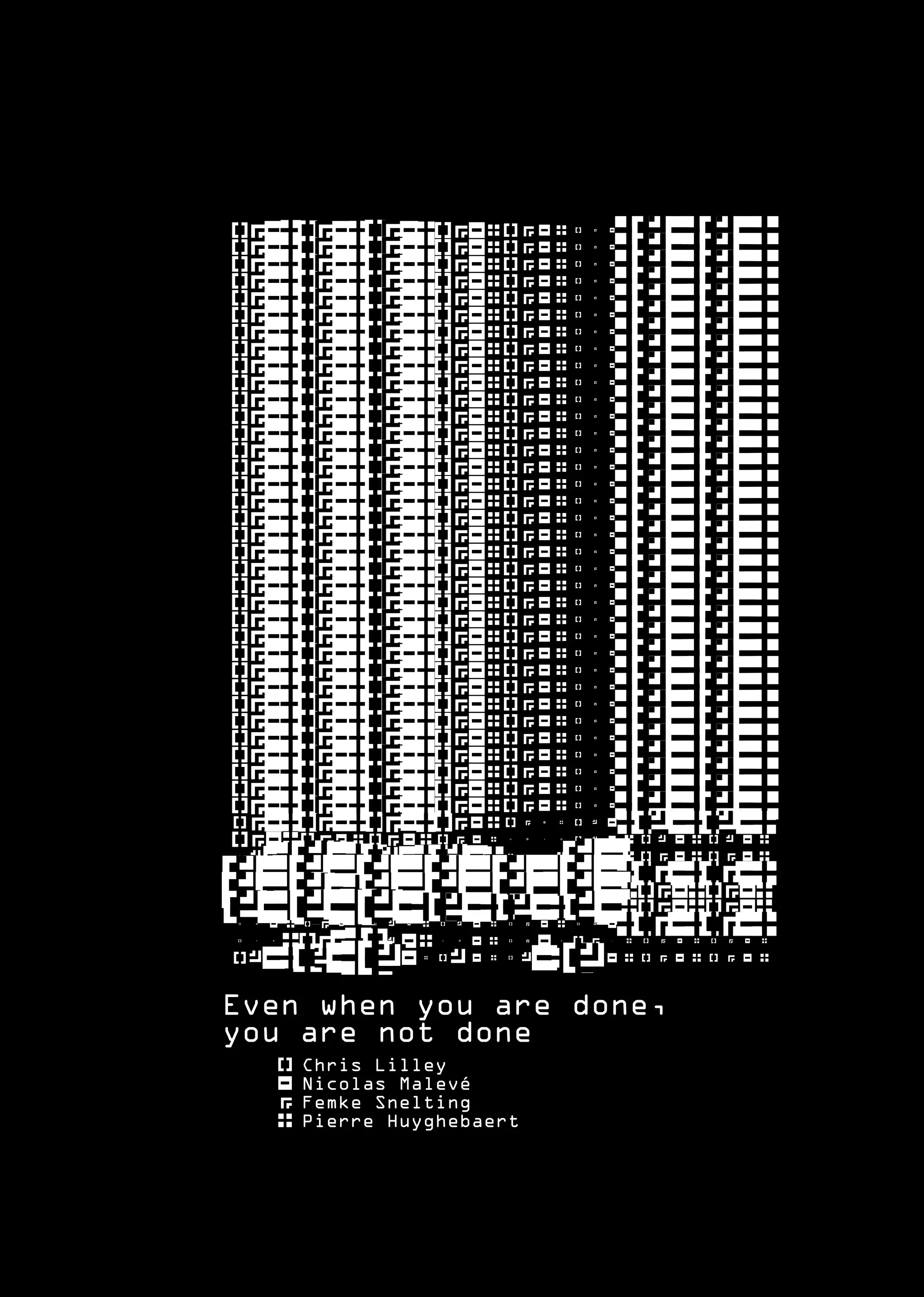
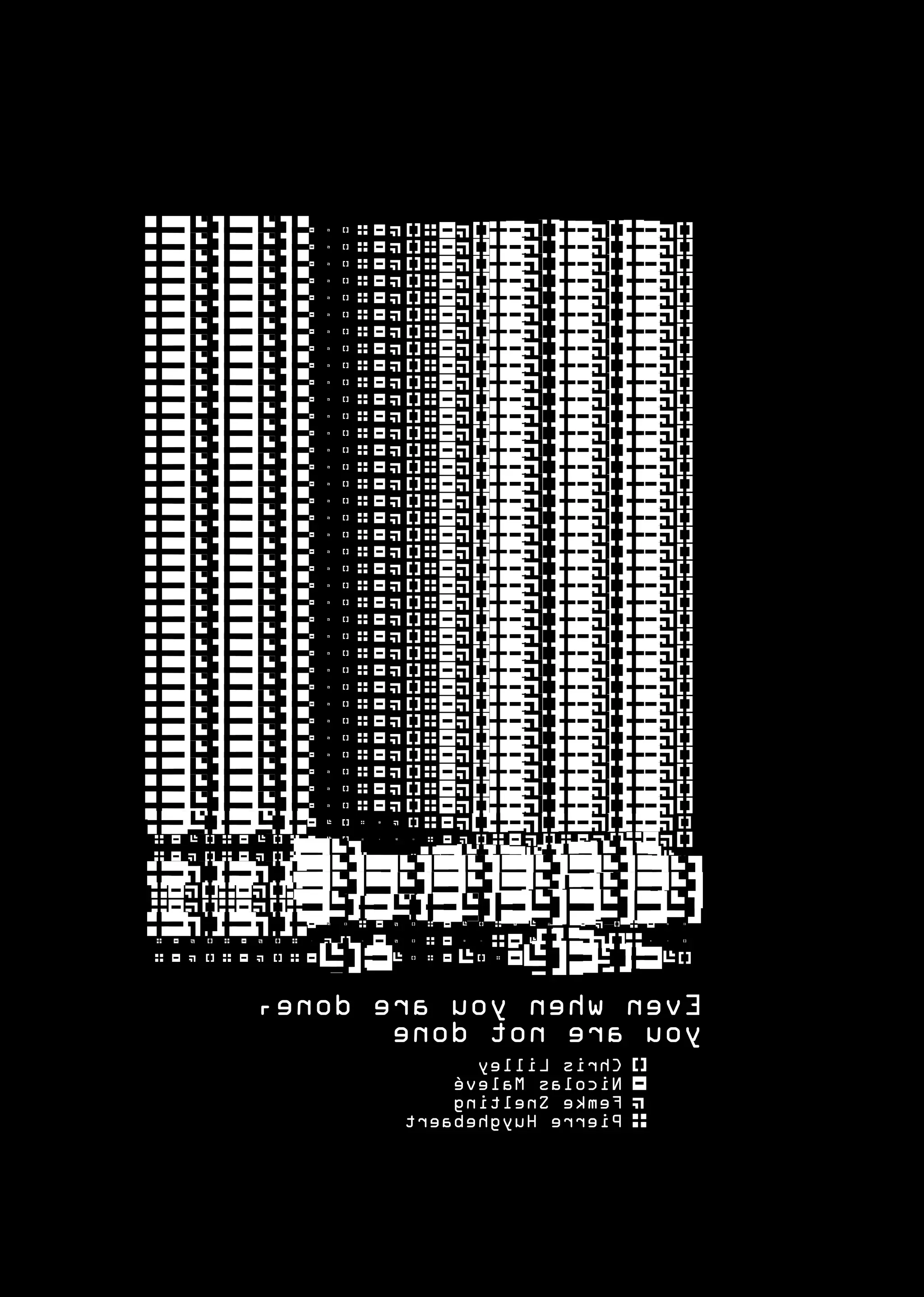
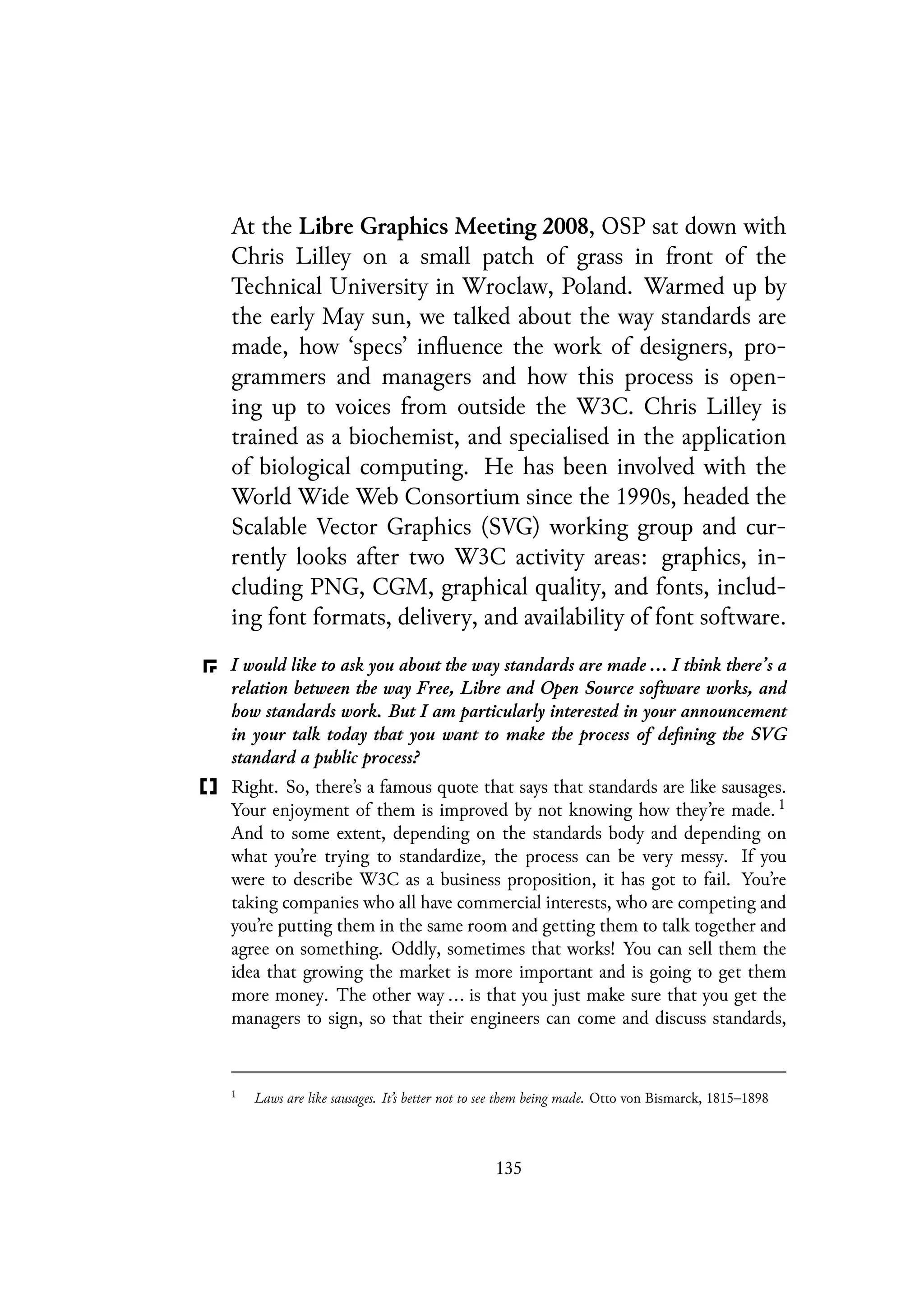
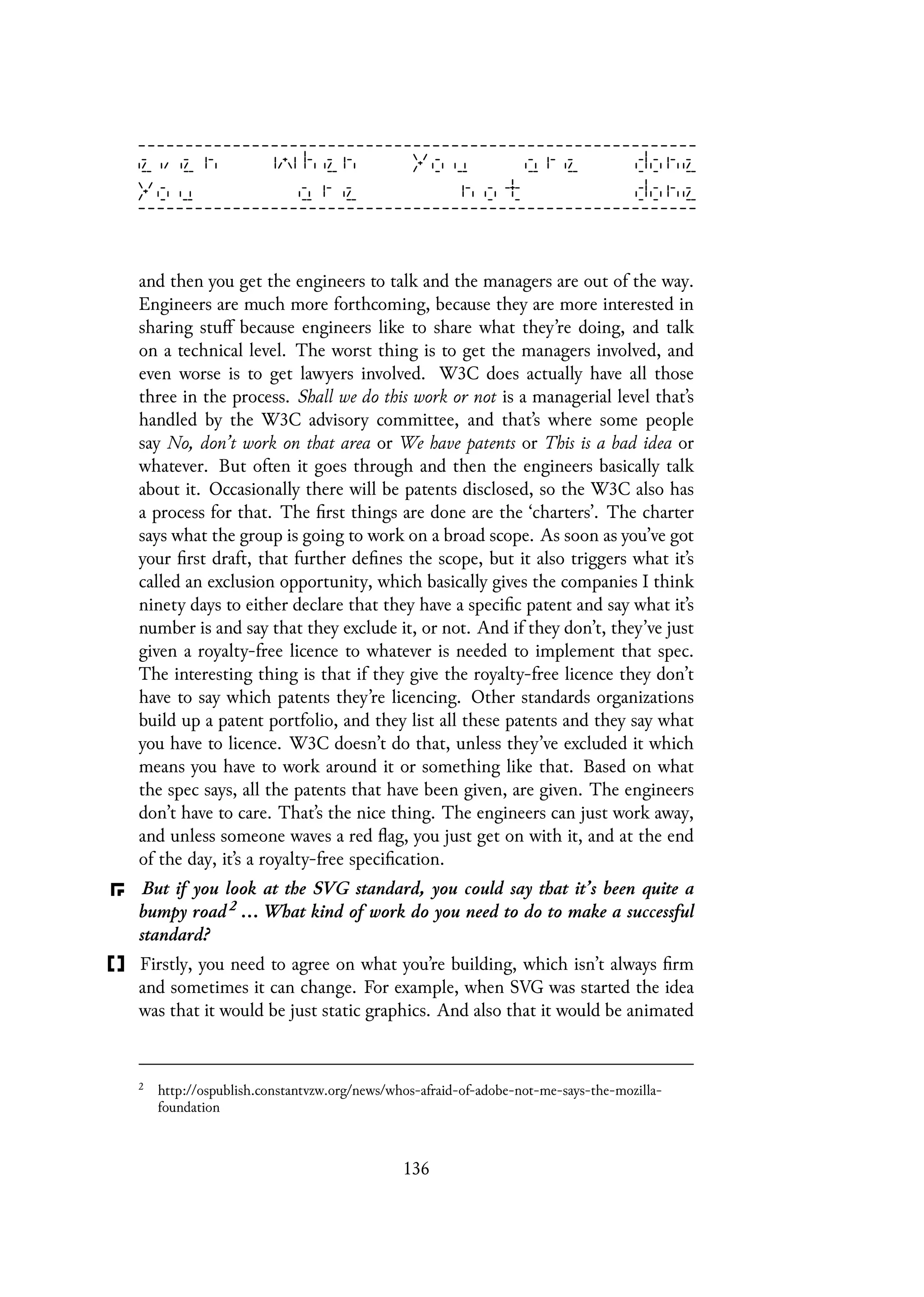
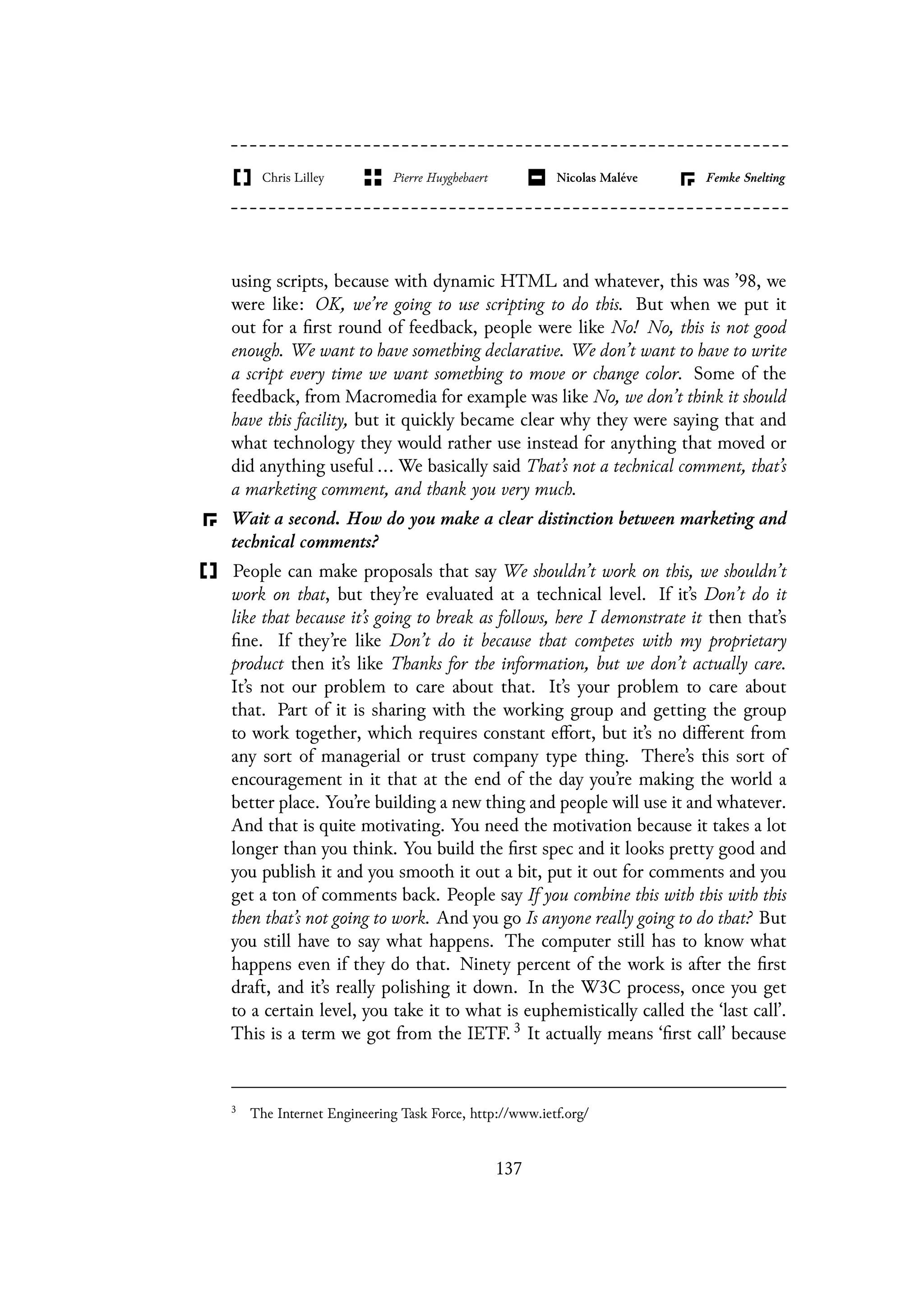
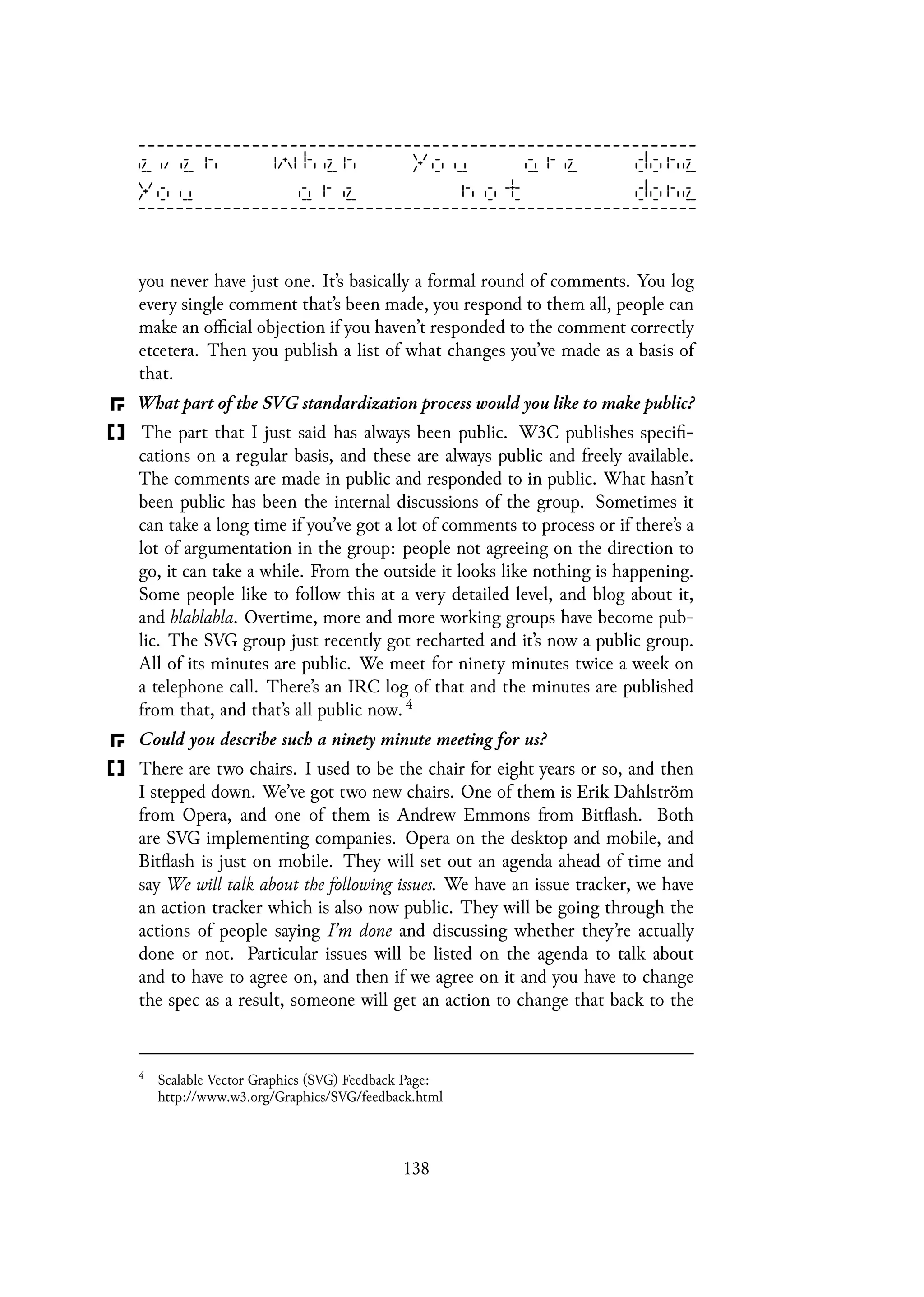
![spec. The spec is held into CVS so anyone in the working group can edit
it and there is a commit log of changes. When anyone accidentally broke
something or trampled onto someone else’s edit, or whatever - which does
happen - or if it came as the result of a public comment, then there will be
a response back saying we have changed the spec in the following way ... Is
this acceptable? Does this answer your comment?
How many people do take part in such a meeting?
In the working group itself there are about 20 members and about 8 or
so who regularly turn up, every week for years. You know, you lose some
people over time. They get all enthusiastic and after two years, when you
are not done, they go off and do something else, which is human nature.
But there have been people who have been going forever. That’s what you
need actually in a spec, you need a lot of stamina to see it through. It is a
long term process. Even when you are done, you are not done because you’ve
got errata, you’ve got revisions, you’ve got requests for new functionalities
to make it into the next version and so on.
On the one hand you could say every setting of a standard is a violent process,
some organisation forcing a standard upon others, but the process you describe
is entirely based on consensus.
There’s another good quote. Tim Berners Lee was asked why W3C works
by consensus, rather than by voting and he said: W3C is a consensus-based
organisation because I say so, damn it. 5 That’s the Inventor of the Web,
you know ... (laughs) If you have something in a spec because 51% of the
people thought it was a good idea, you don’t end up with a design, you end
up with a bureaucratic type decision thing. So yes, the idea is to work by
consensus. But consensus is defined as: ‘no articulated dissent’ so someone
can say ‘abstain’ or whatever and that’s fine. But we don’t really do it on
a voting basis, because if you do it like that, then you get people trying to
5
Consensus is a core value of W3C. To promote consensus, the W3C process requires Chairs
to ensure that groups consider all legitimate views and objections, and endeavor to resolve
them, whether these views and objections are expressed by the active participants of the
group or by others (e.g., another W3C group, a group in another organization, or the general
public). World Wide Web Consortium. General Policies for W3C Groups, 2005. [Online; accessed 30.12.2014]
139](https://image.slidesharecdn.com/nf9eqef8sfiyxgigz7xn-signature-b03e0a6271101f66a8d7193a3f5bd73f7b52f385bb5cc7354043f5b991639302-poli-150429194709-conversion-gate02/75/Conversations-139-2048.jpg)

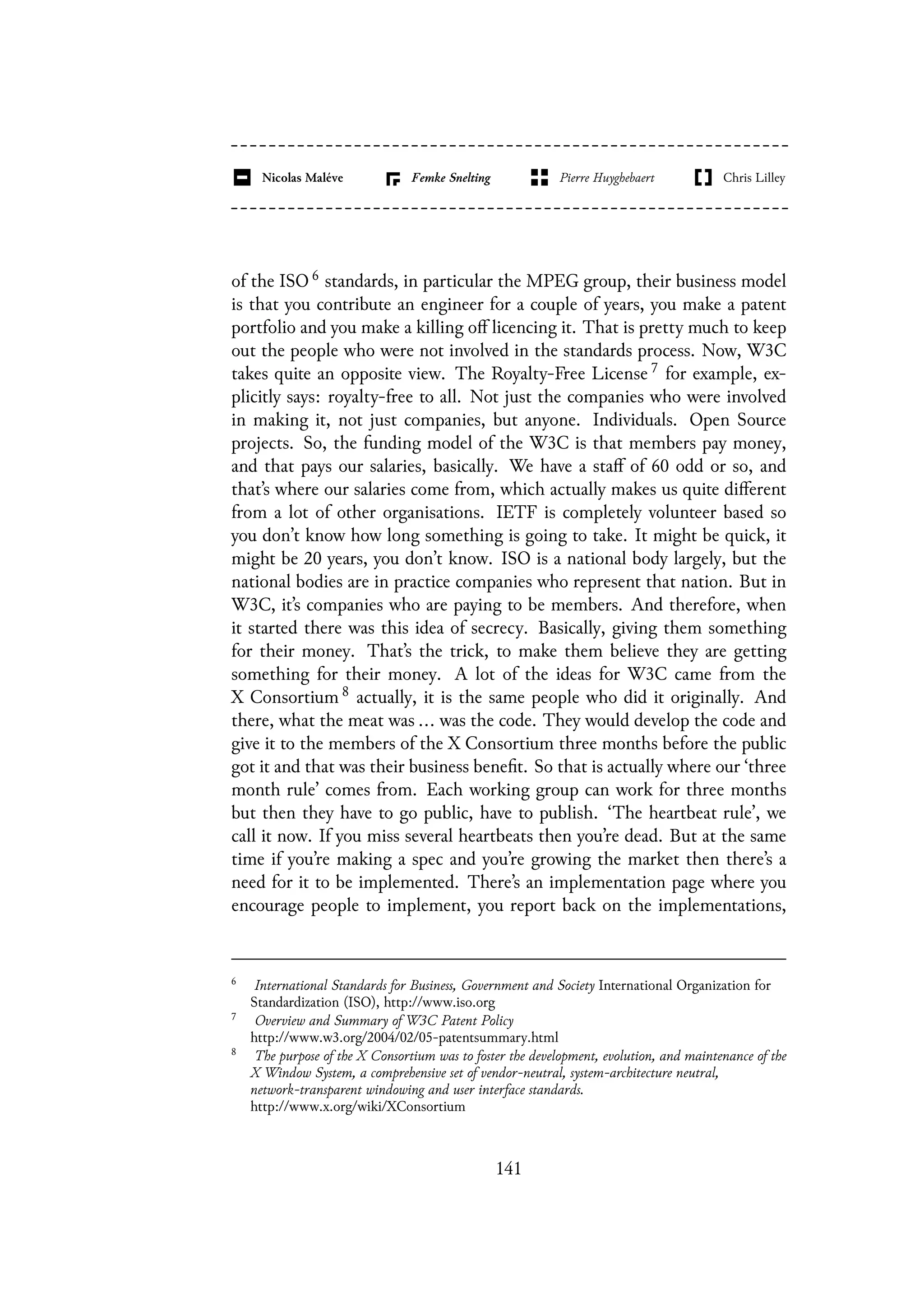

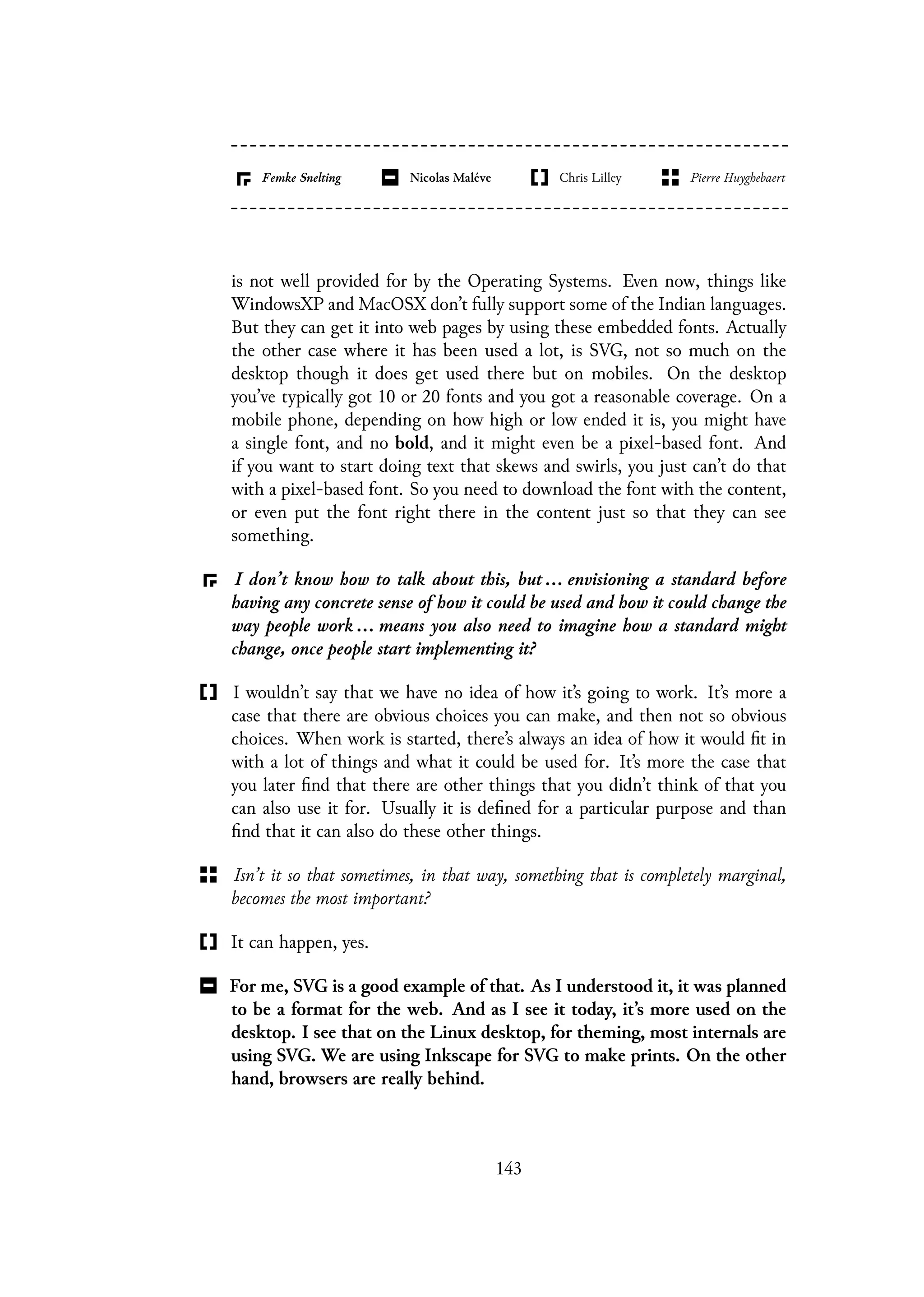
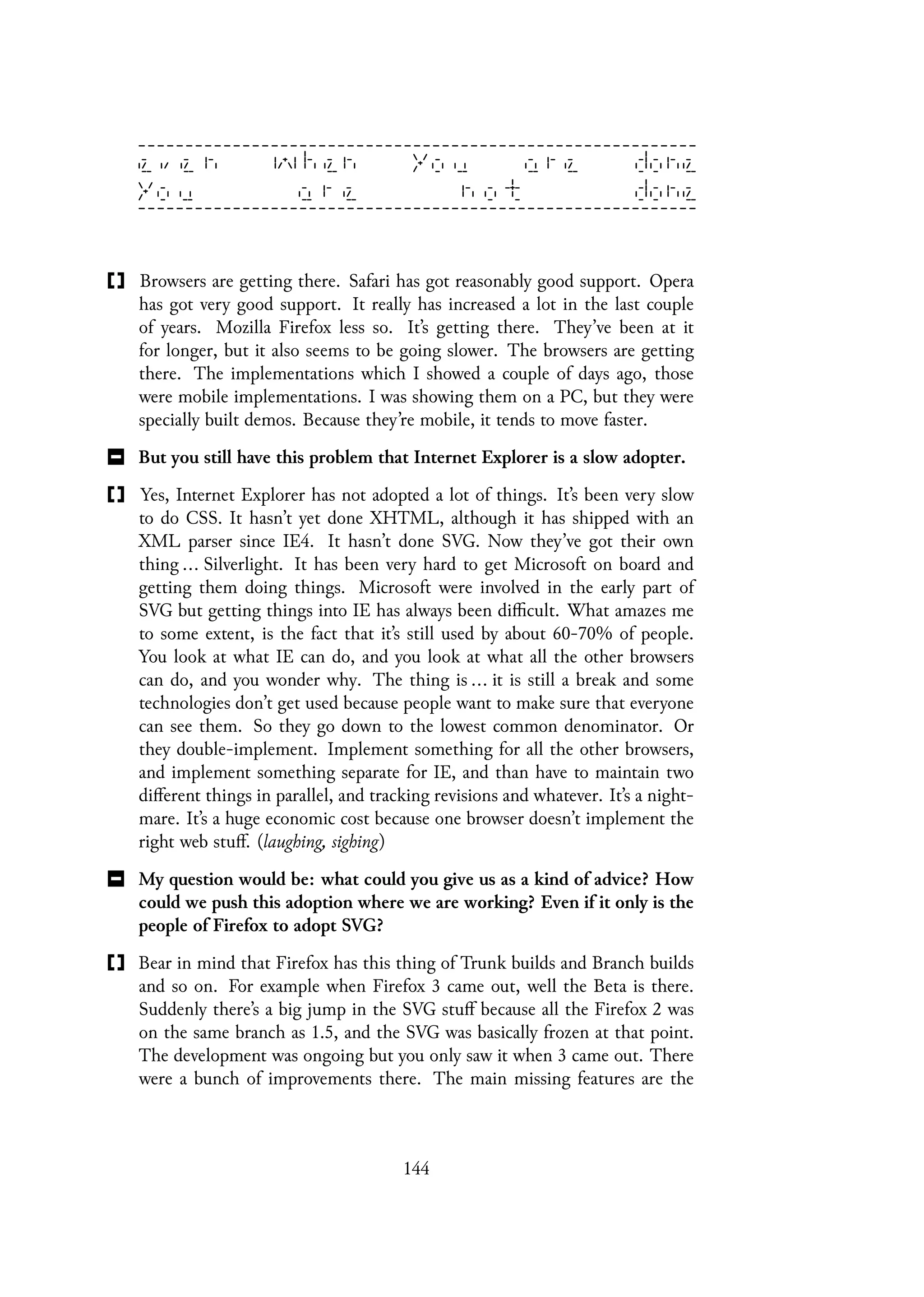
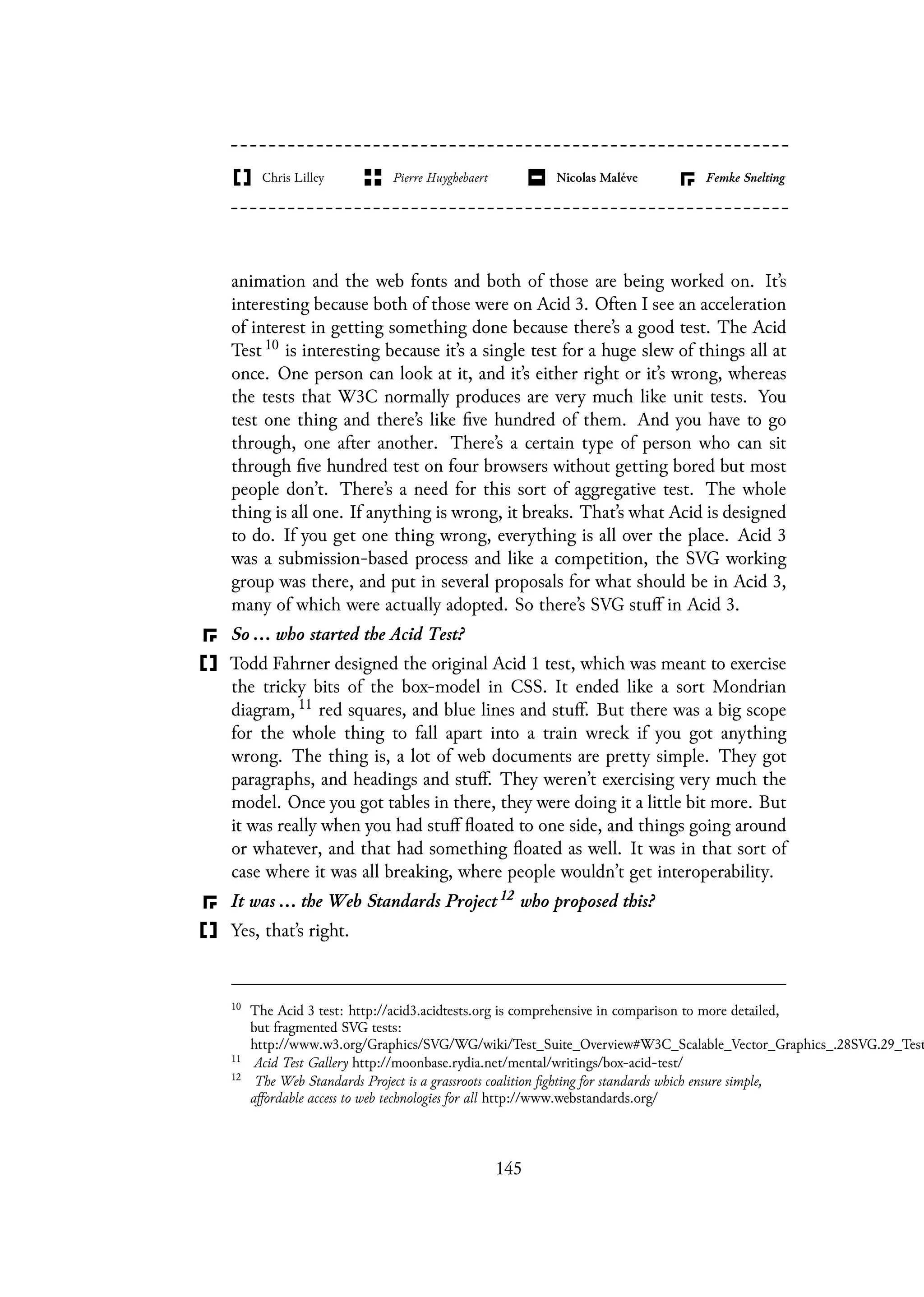

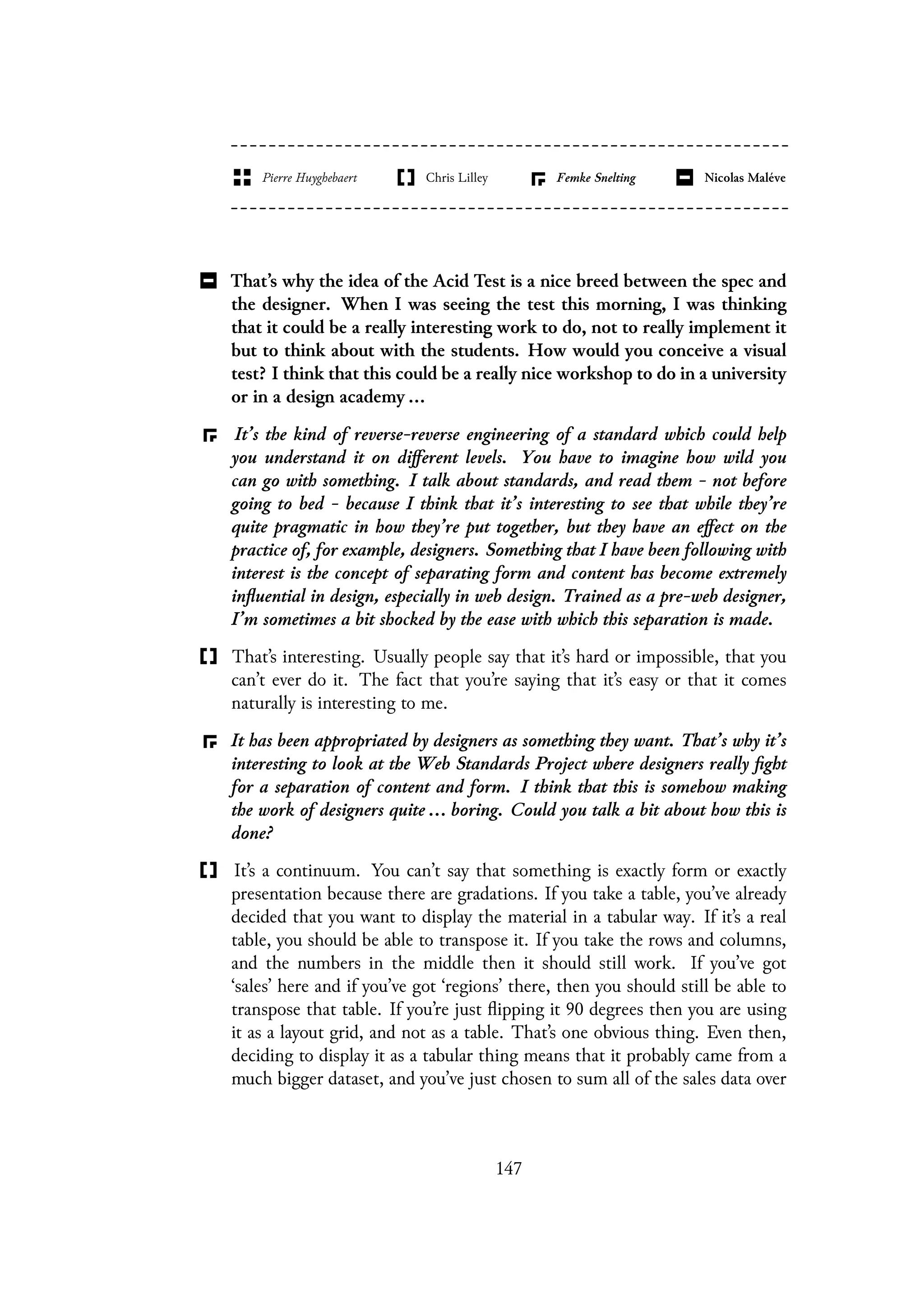
![one year. Another one: you have again the sales data, you could have it as pie
chart, but you could also have it as a bar chart, you could have it in various
other ways. You can imagine that what you would do is ship some XML
that has that data, and then you would have a script or something which
would turn it into an SVG pie chart. And you could have a bar chart, or you
could also say show me only February. That interaction is one of the things
that one can do, and arguably you’re giving it a different presentational form.
It’s still very much a gradation. It’s how much re-styleability remains. You
can’t ever have complete separation. If I’m describing a company, and [1]
I want to do a marketing brochure, and [2] I want to do an annual report
for the shareholders, and [3] I want to do an internal document for the
engineering team. I can’t have the same content all over those three and just
put styling on it. The type of thing I’m doing is going to vary for those
audiences, as will the presentation. There’s a limit. You can’t say: here’s the
überdocument, and it can be styled to be anything. It can’t be. The trick is
to not mingle the style of the presentation when you don’t need to. When
you do need to, you’re already halfway down the gradient. Keep them as far
apart as you can, delay it as late as possible. At some point they have to be
combined. A design will have to go into the crafting of the wording, how
much wording, what voice is used, how it’s going to fit with the graphics
and so on. You can’t just slap random things together and call it design,
it looks like a train wreck. It’s a case of deferment. It’s not ever a case of
complete separation. It’s a case of deferring it and not tripping yourself up.
Just simple things like bolds and italics and whatever. Putting those in as
emphasis and whatever because you might choose to have your emphasized
words done differently. You might have a different font, you might have a
different way of doing it, you might use letter-spacing, etc. Whereas if you
tag that in as italics then you’ve only got italics, right? It’s a simple example
but at the end of the day you’re going to have to decide how that is displayed.
You mentioned print. In print no one sees the intermediate result. You see
ink on paper. If I have some Greek in there and if I’ve done that by actually
typing in Latin letters on the keyboard and putting a Greek font on it and
out comes Greek, nobody knows. If it’s a book that’s being translated, there
might be some problems. The more you’re shipping the electronic version
around, the more it actually matters that you put in the Greek letters as
148](https://image.slidesharecdn.com/nf9eqef8sfiyxgigz7xn-signature-b03e0a6271101f66a8d7193a3f5bd73f7b52f385bb5cc7354043f5b991639302-poli-150429194709-conversion-gate02/75/Conversations-148-2048.jpg)
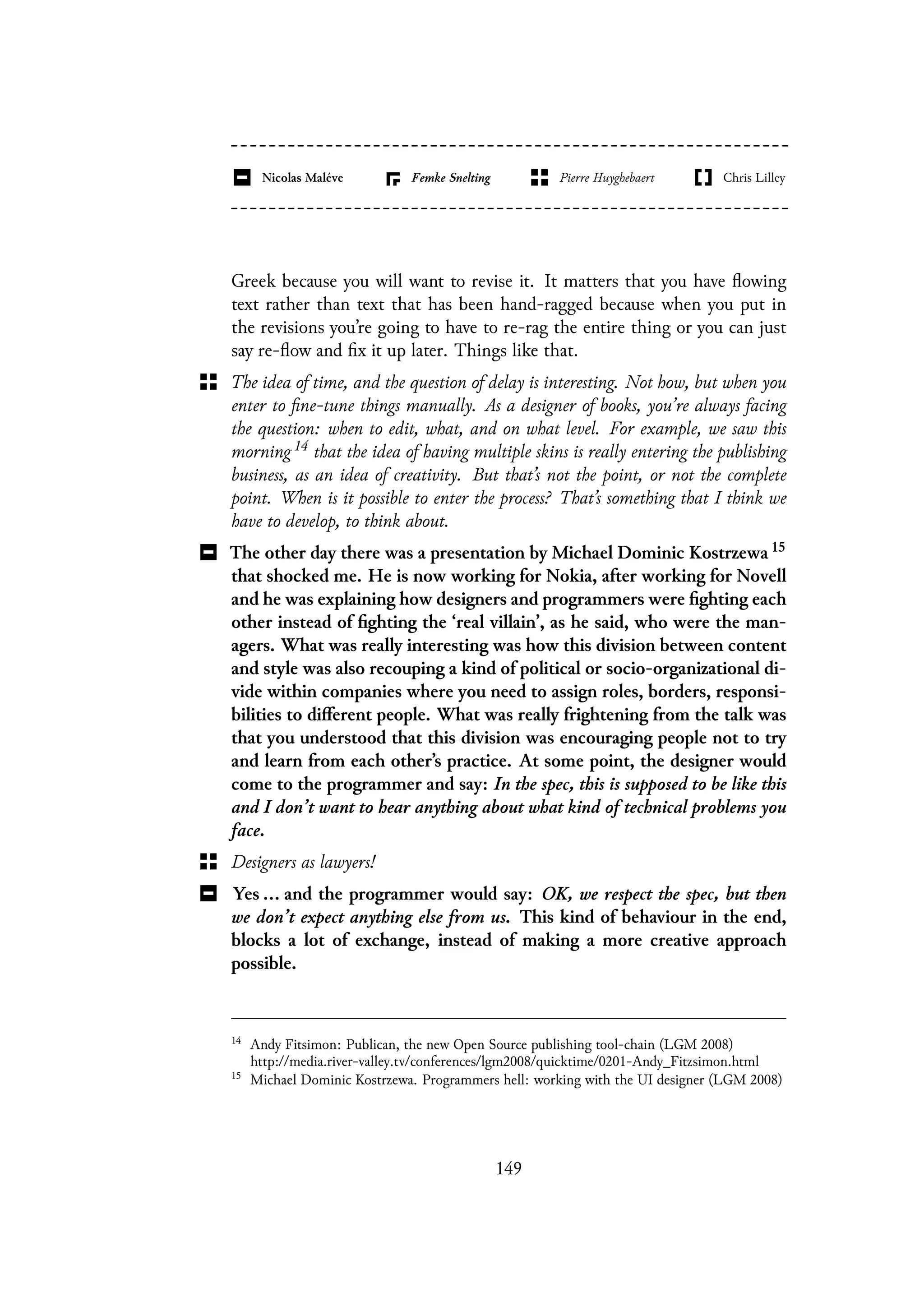
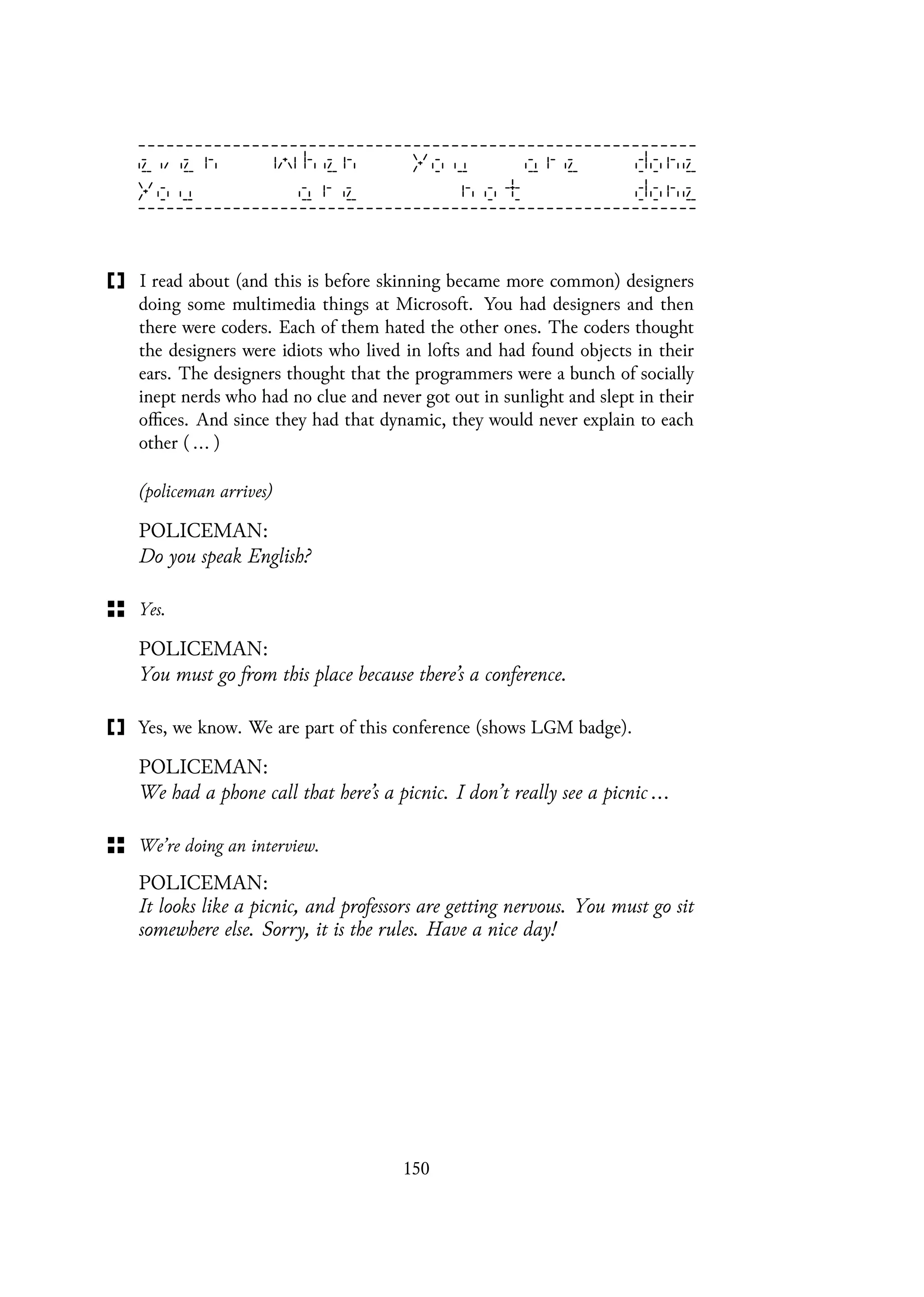


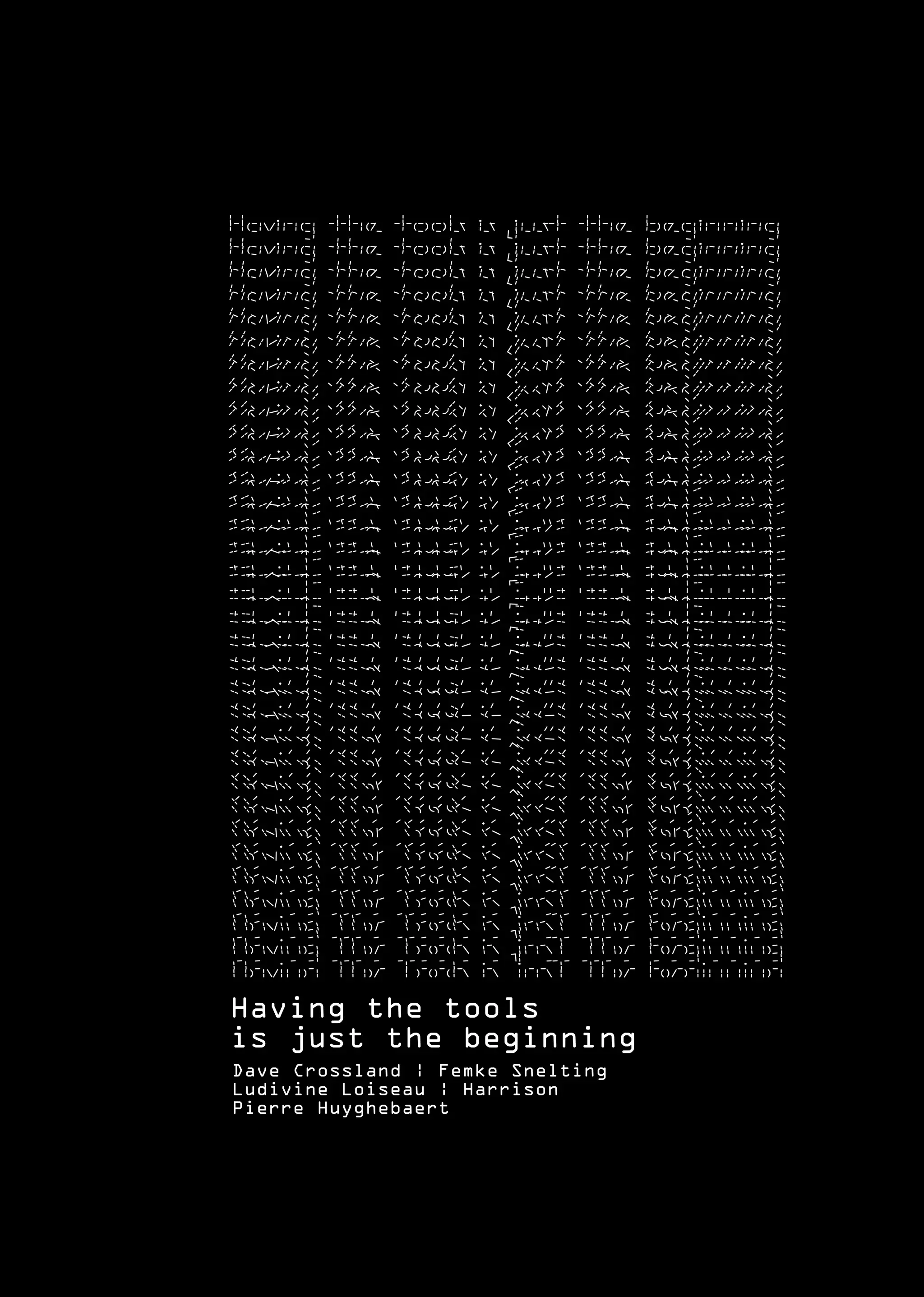
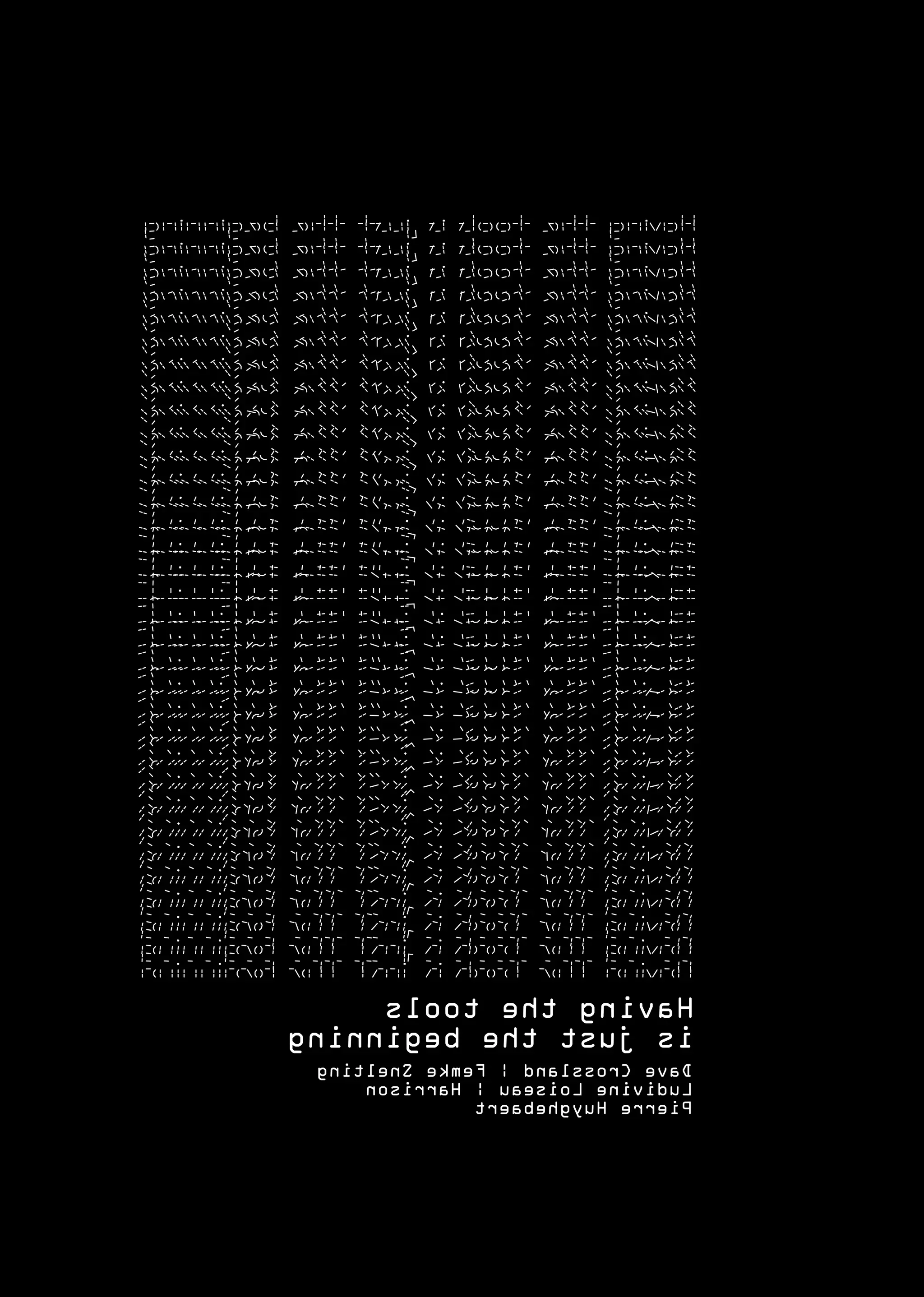
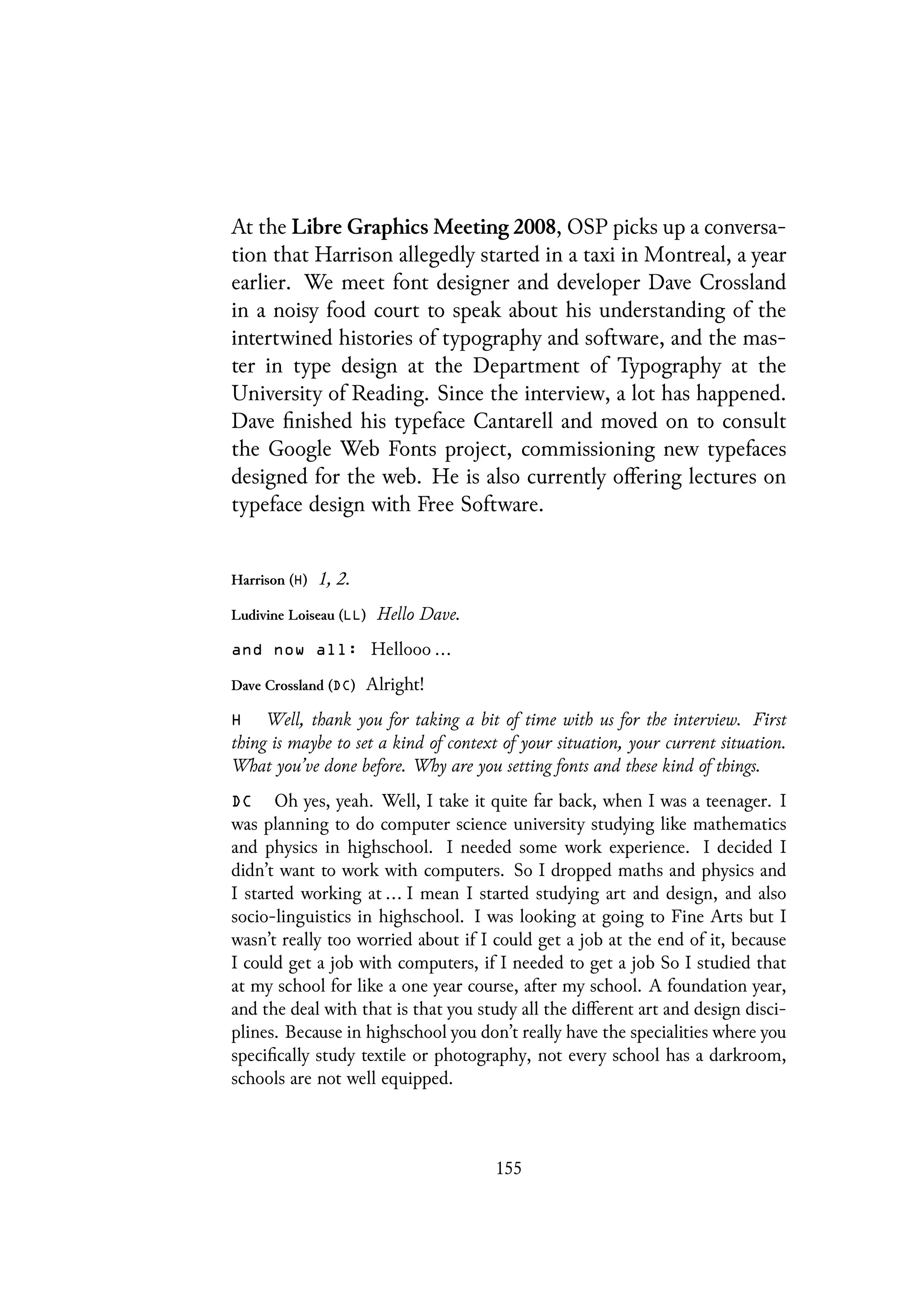
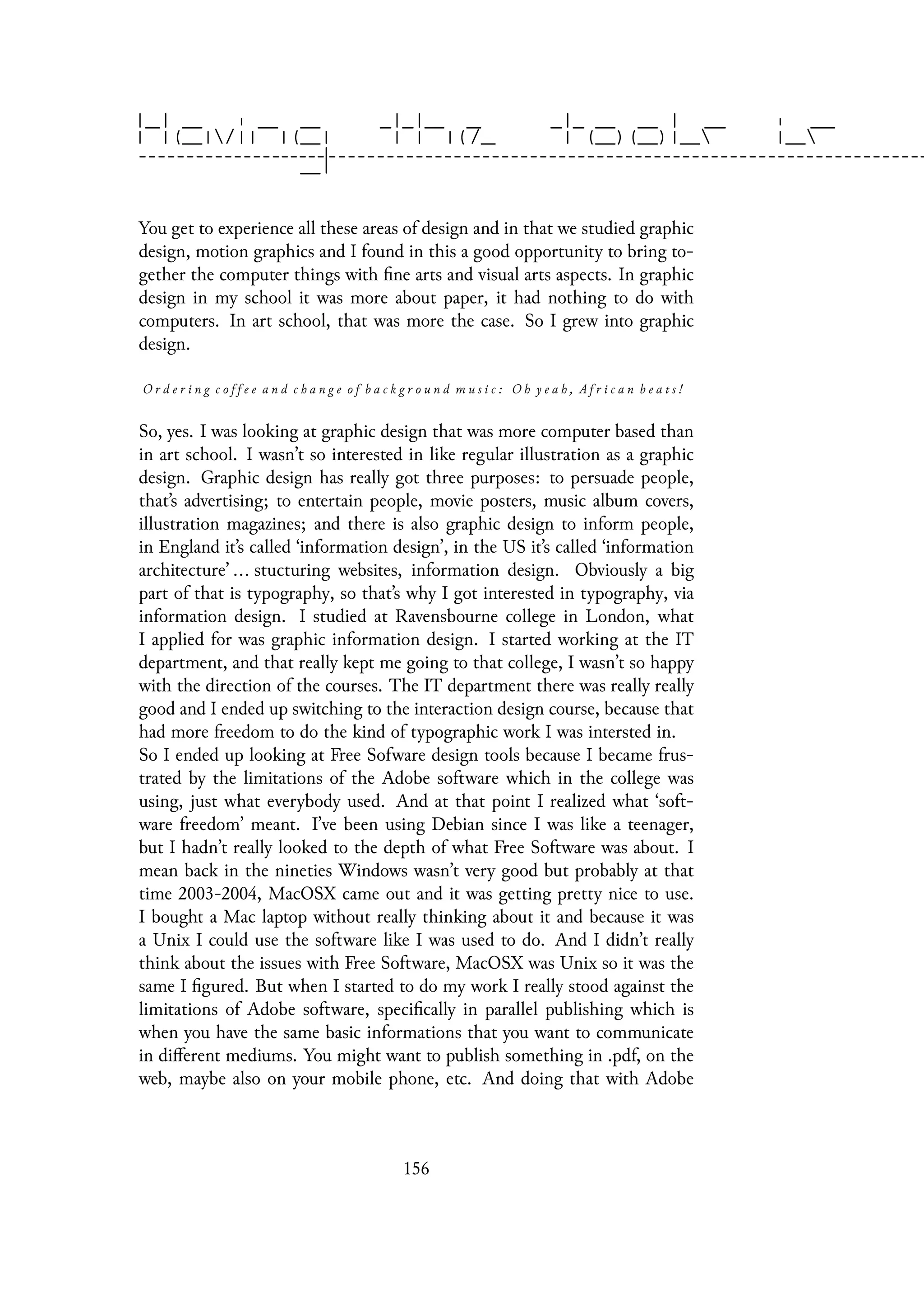
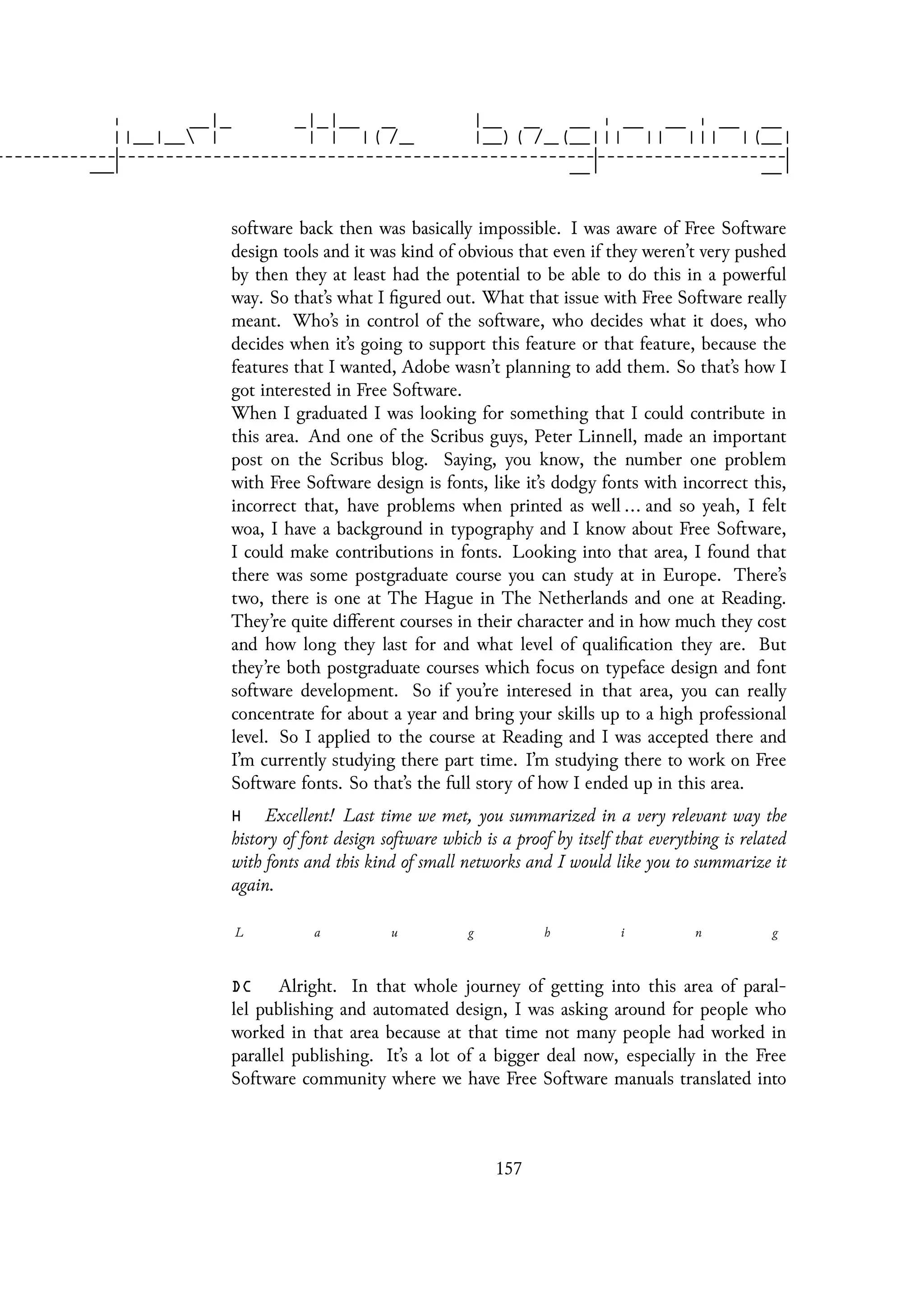

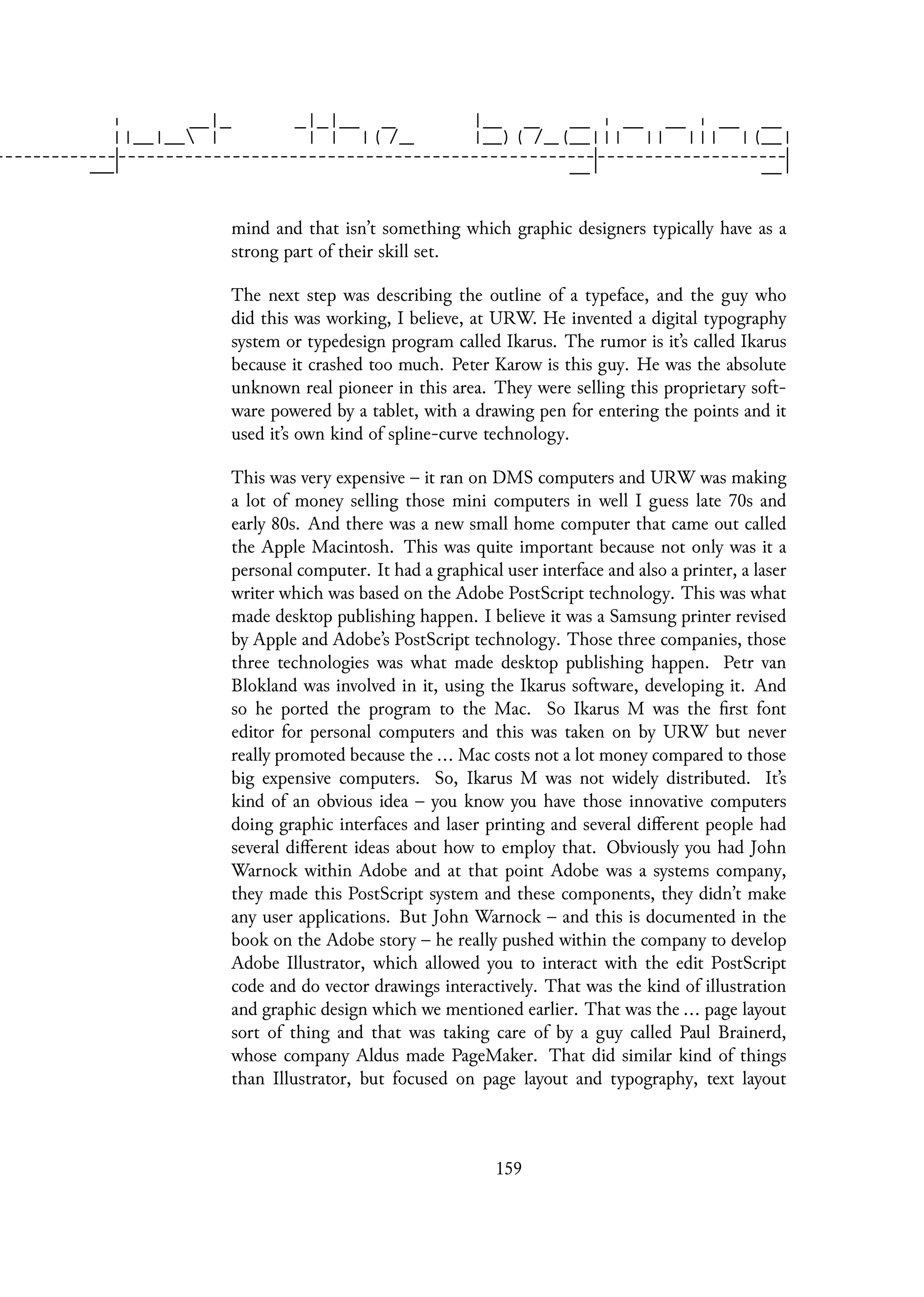
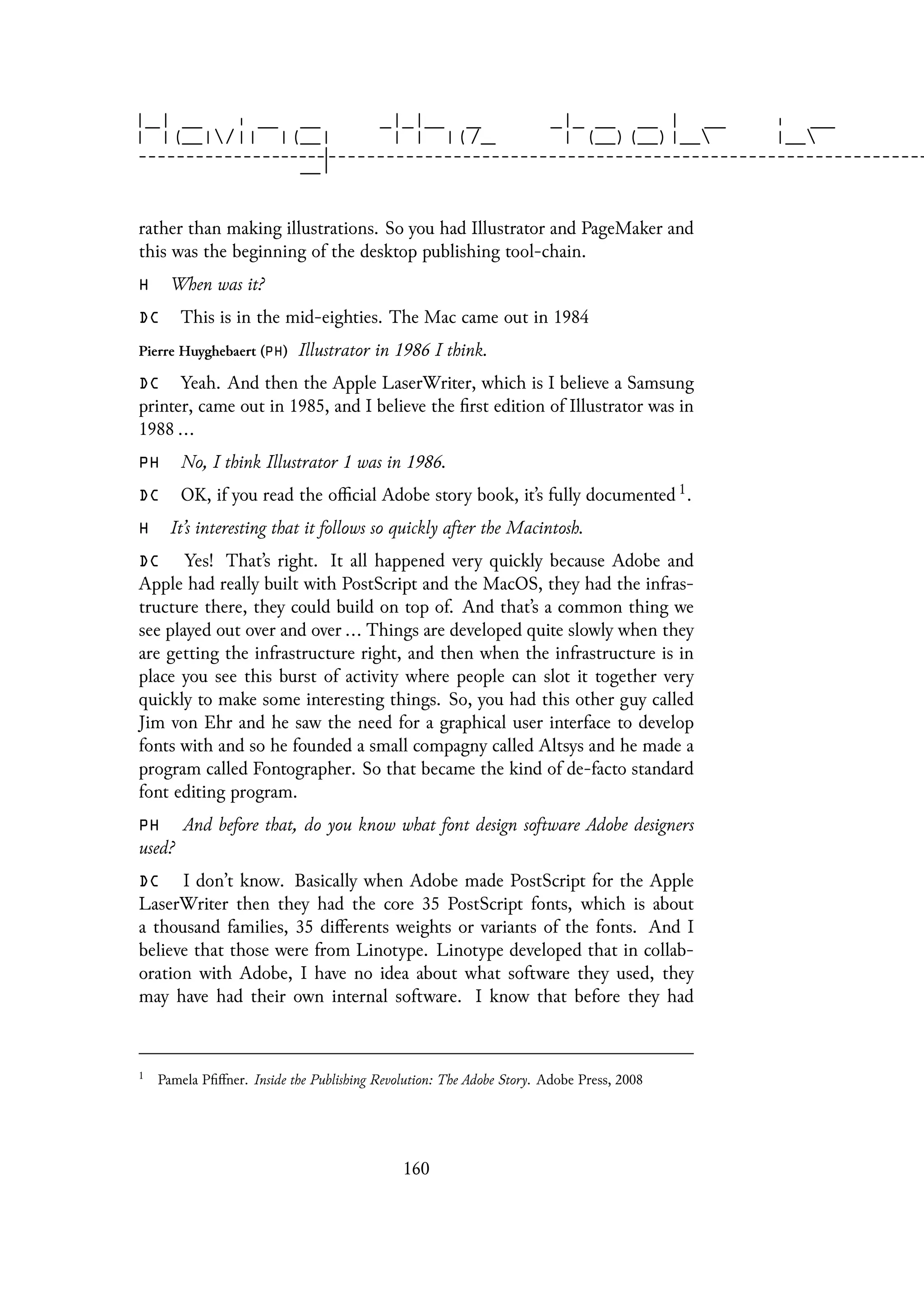
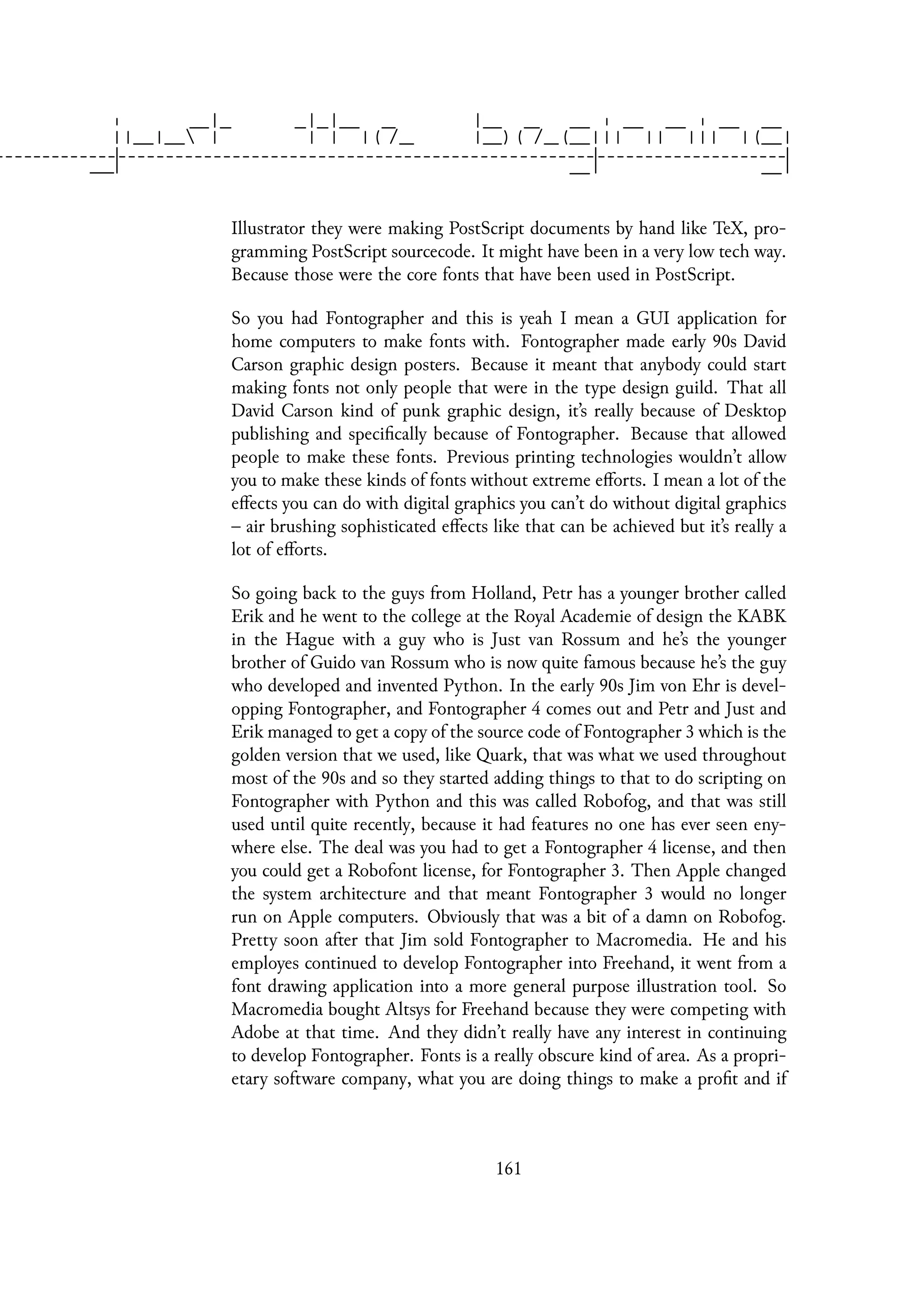
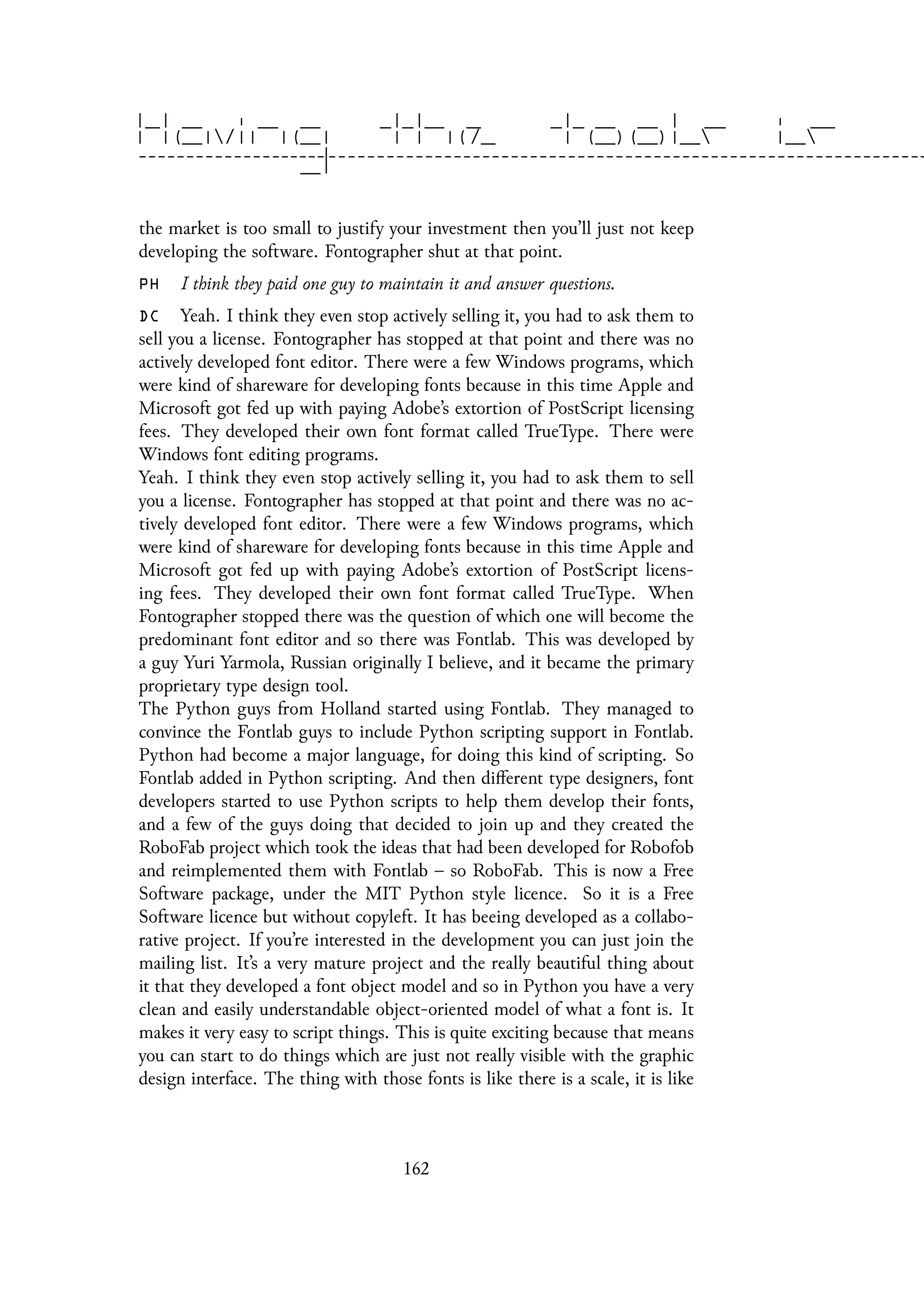
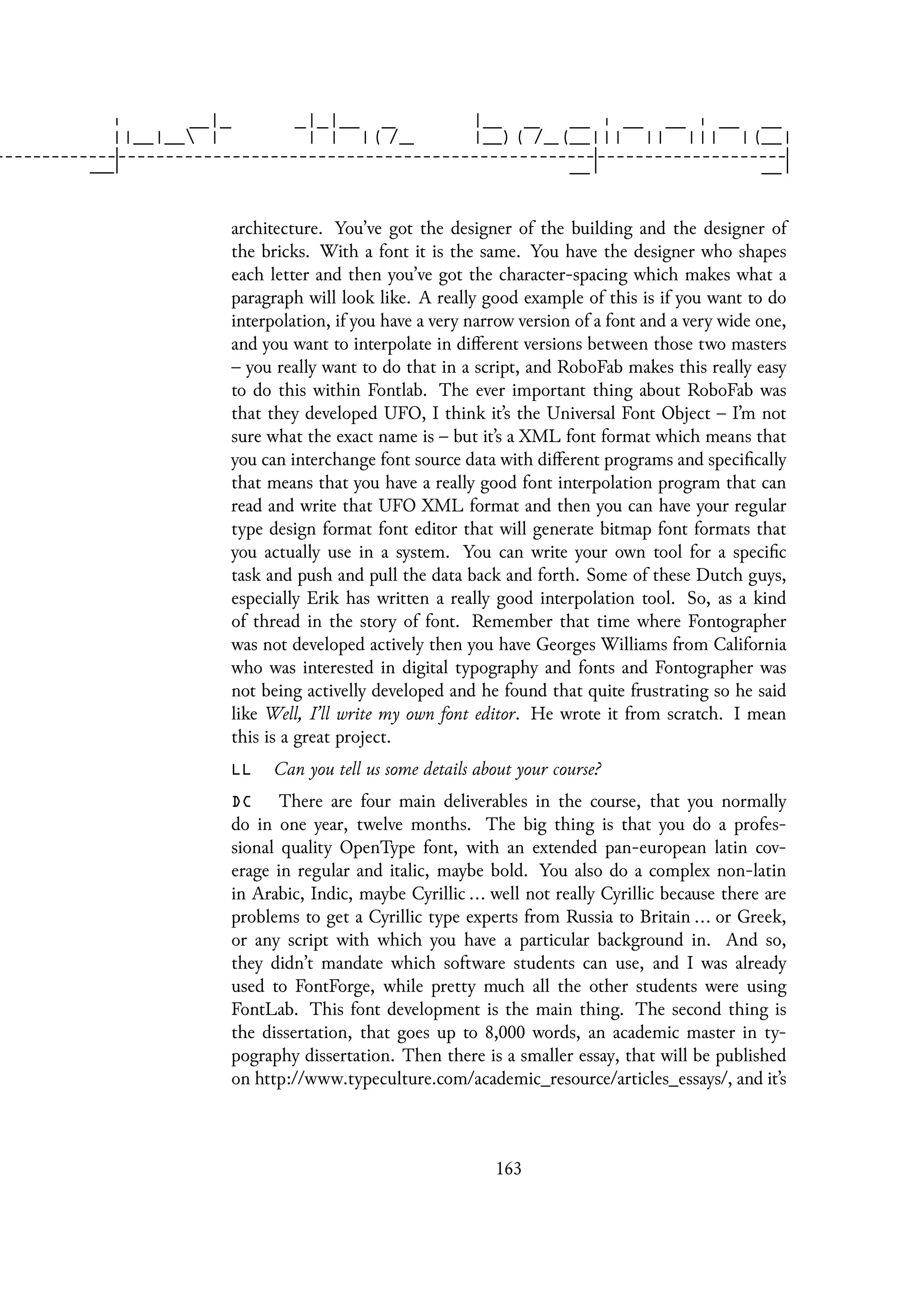
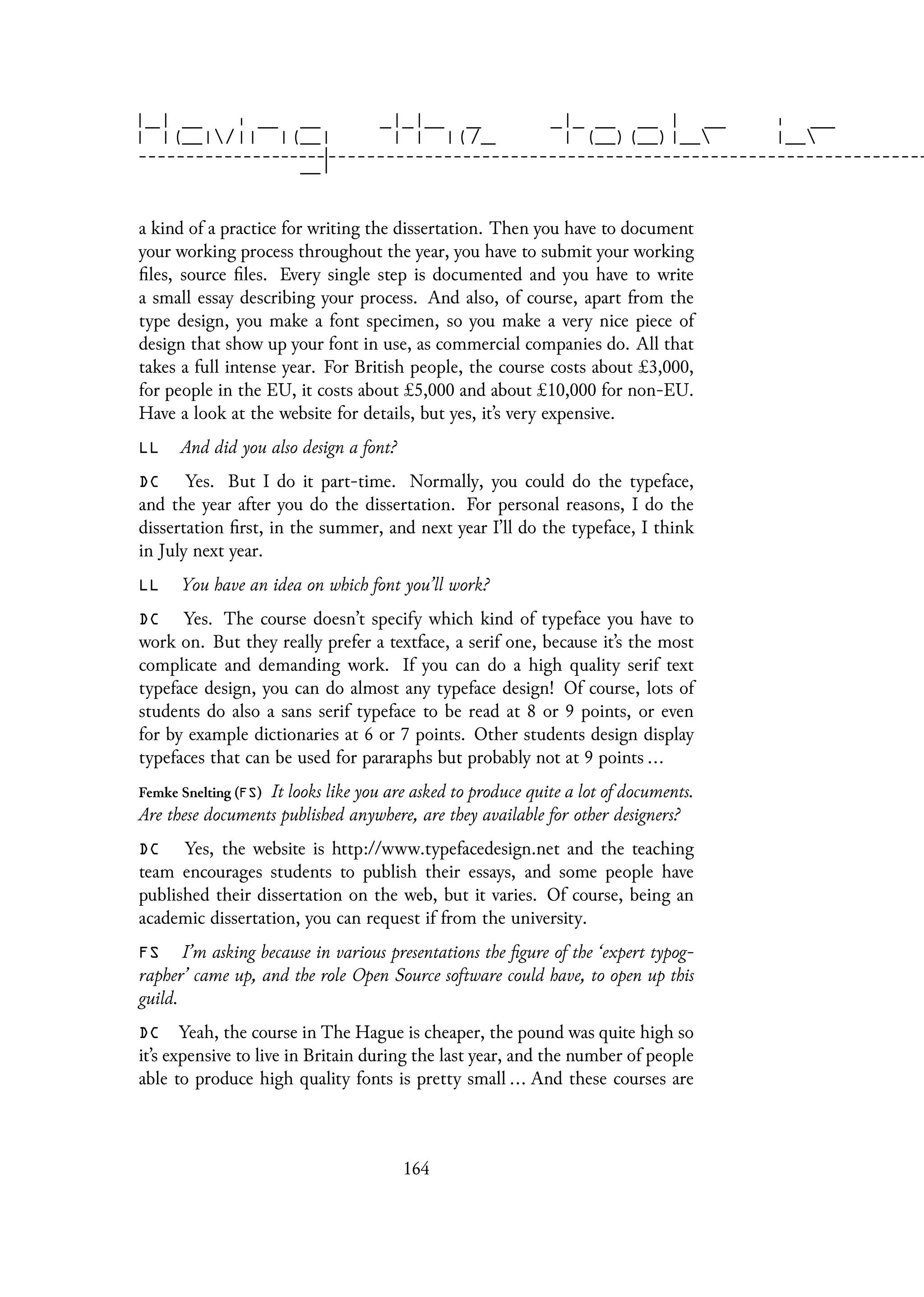
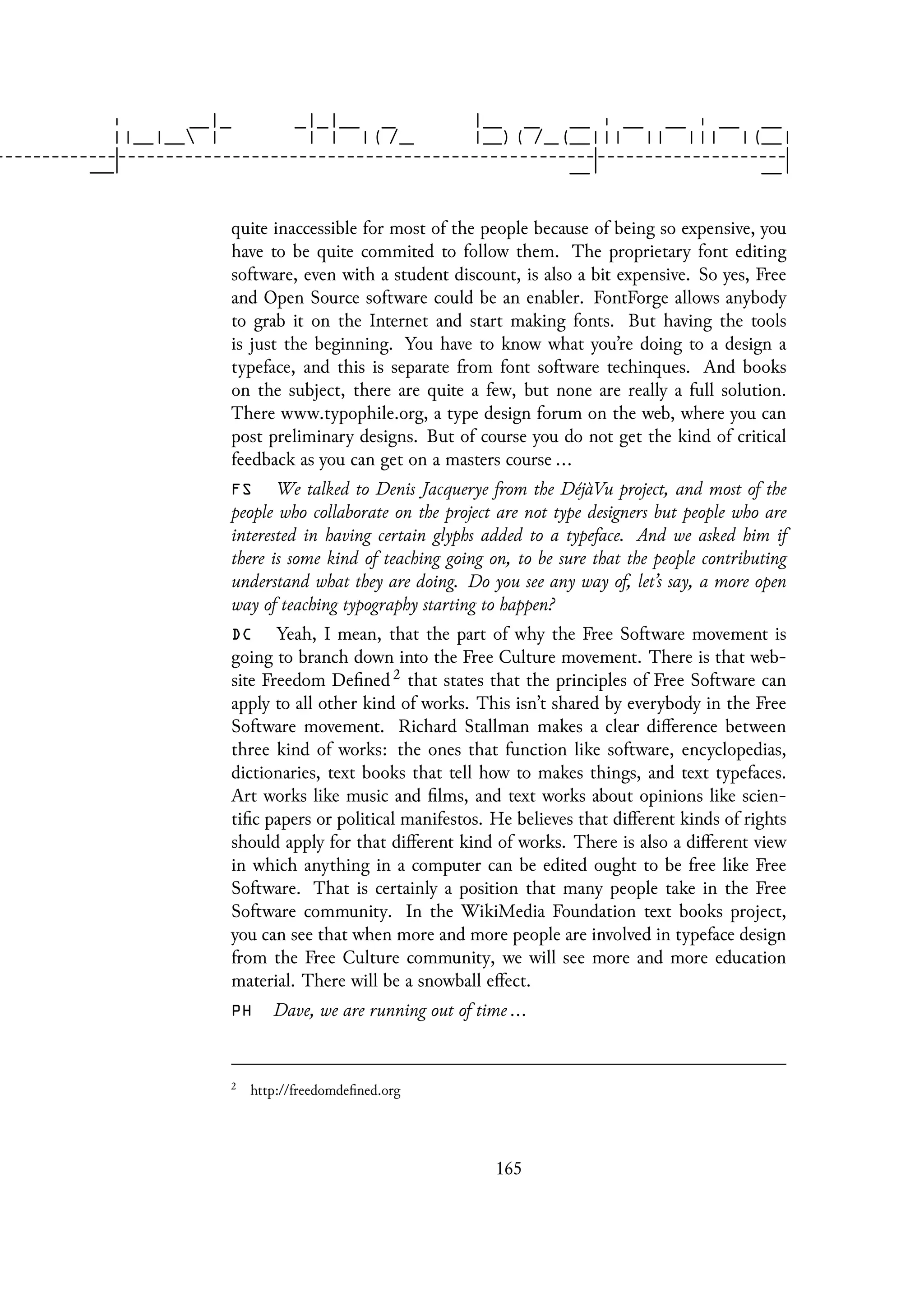
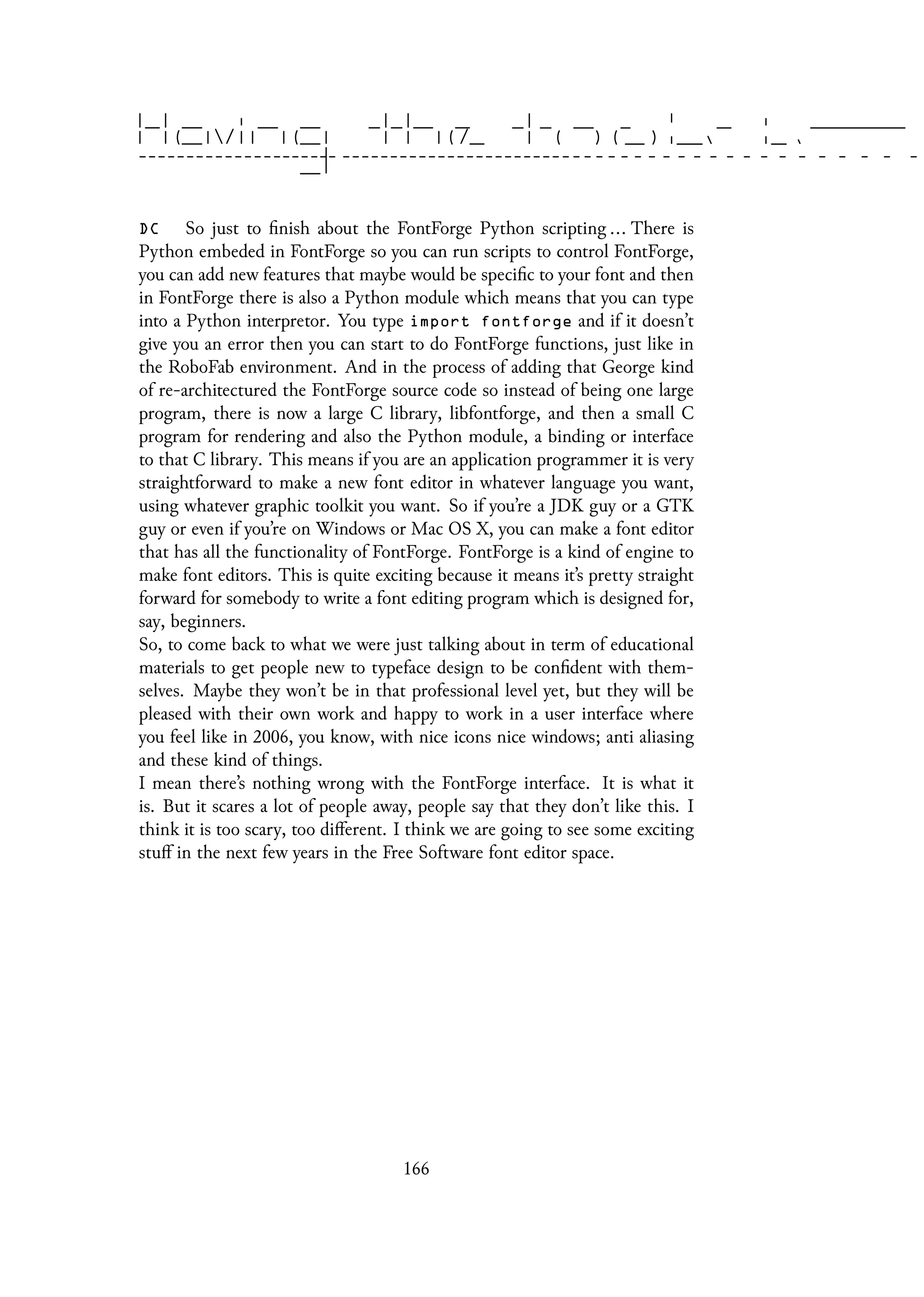


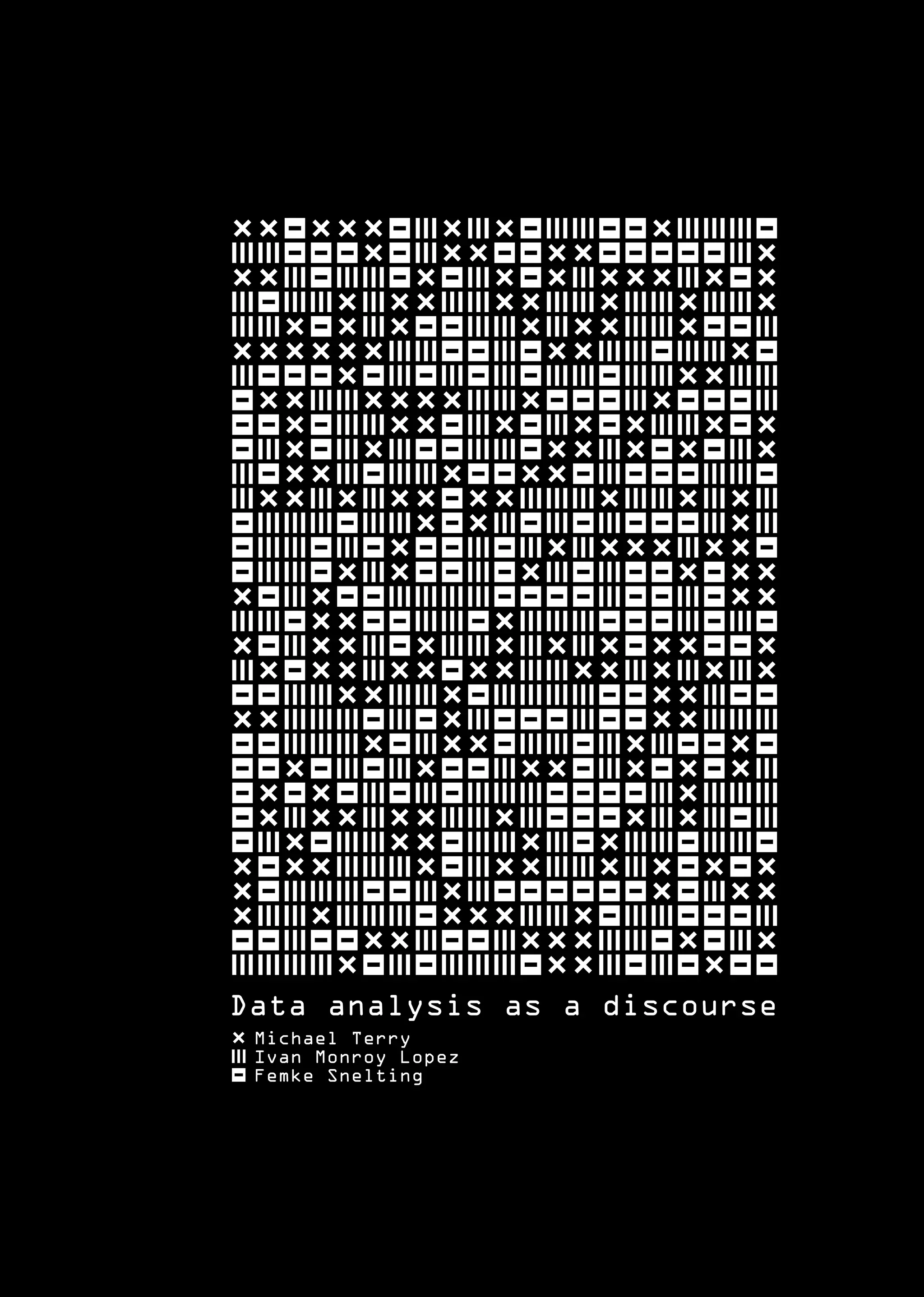
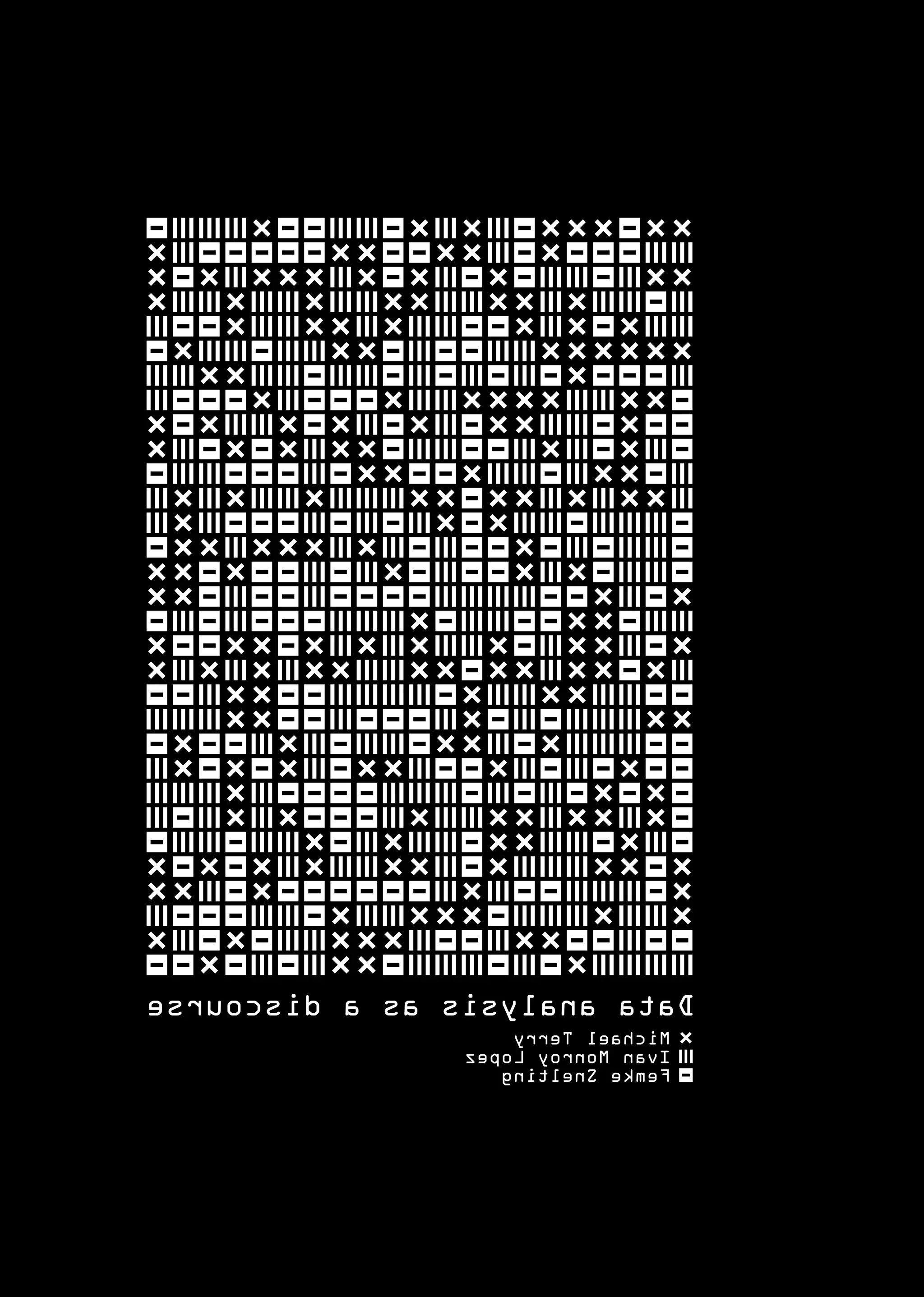
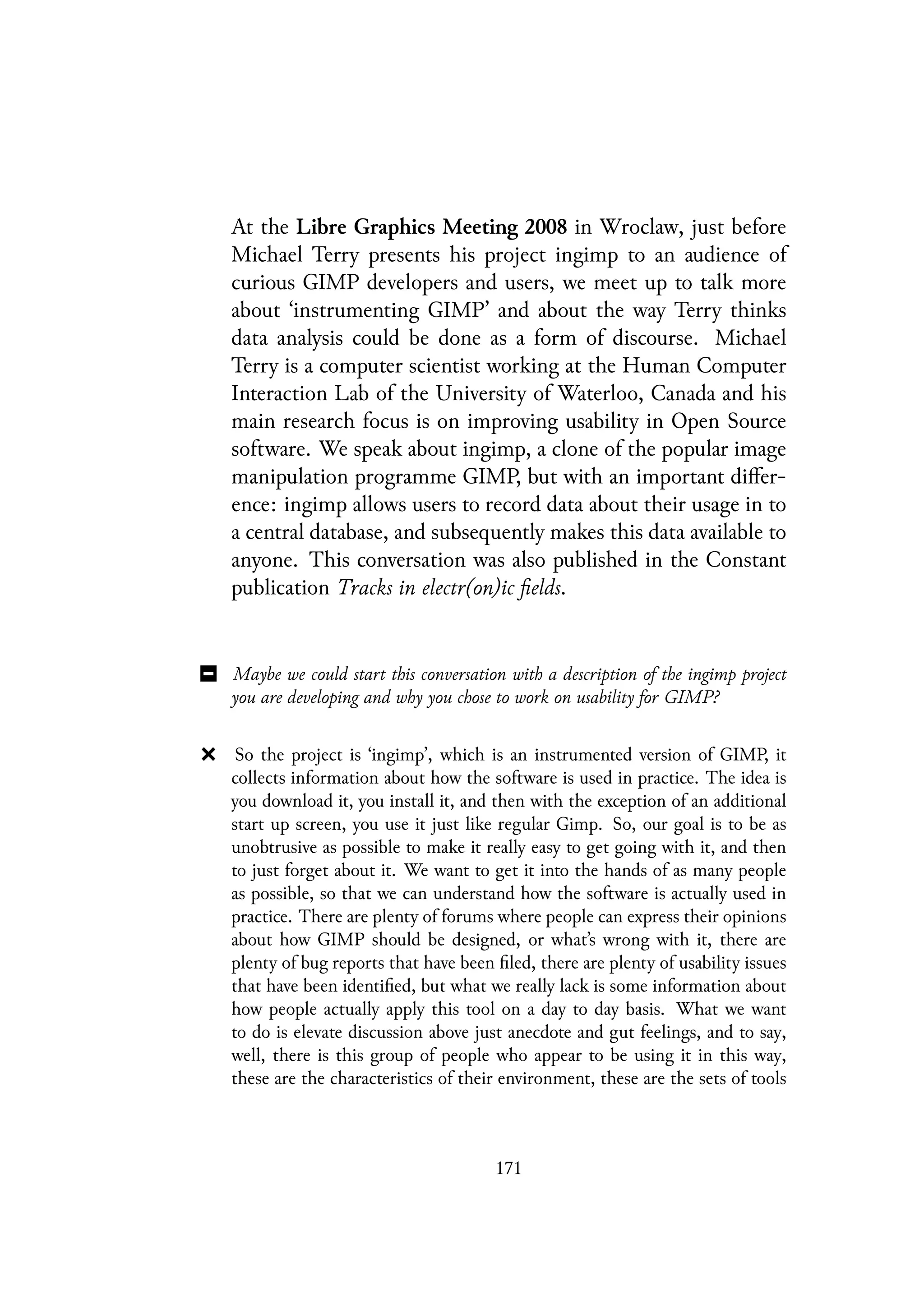
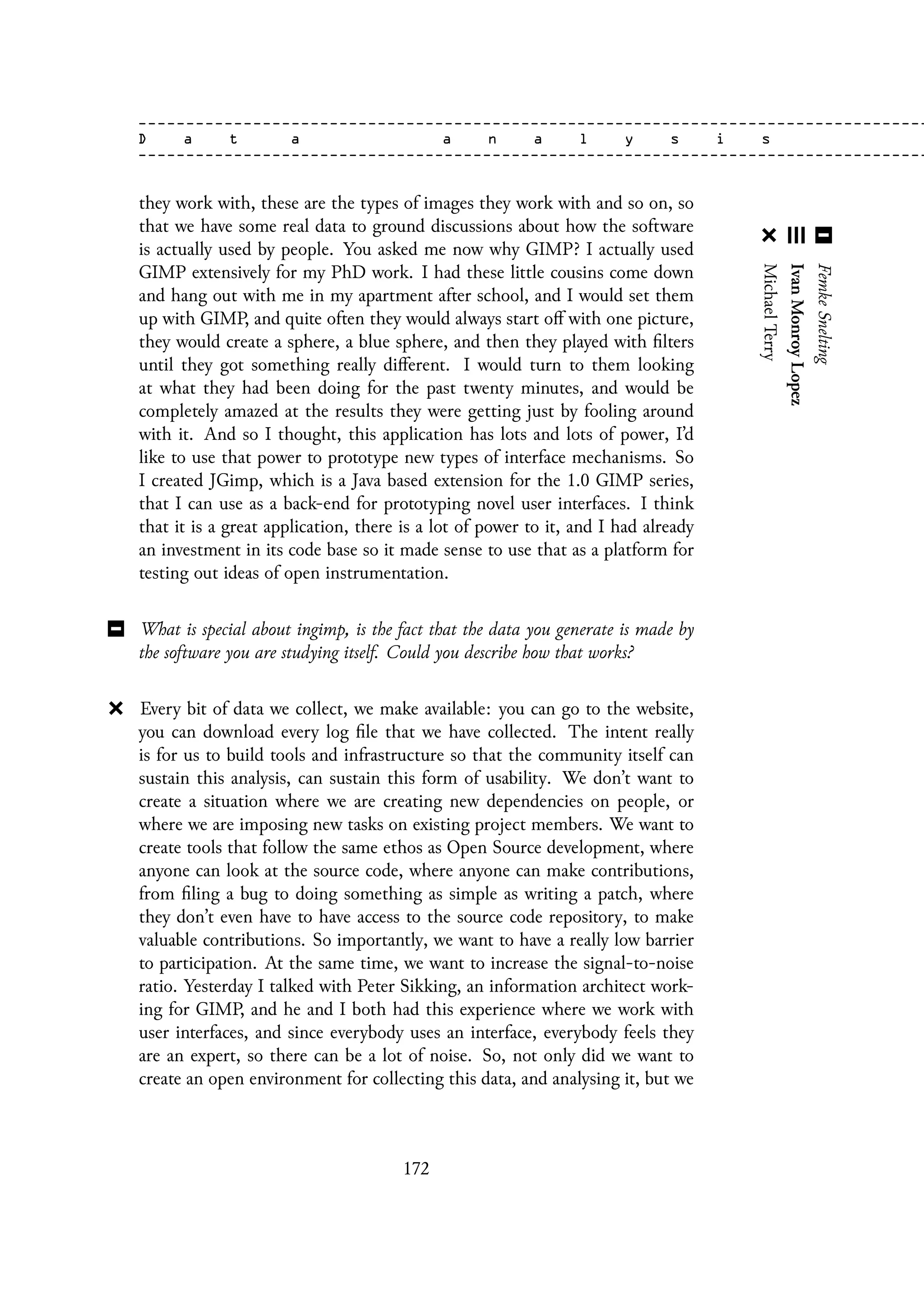
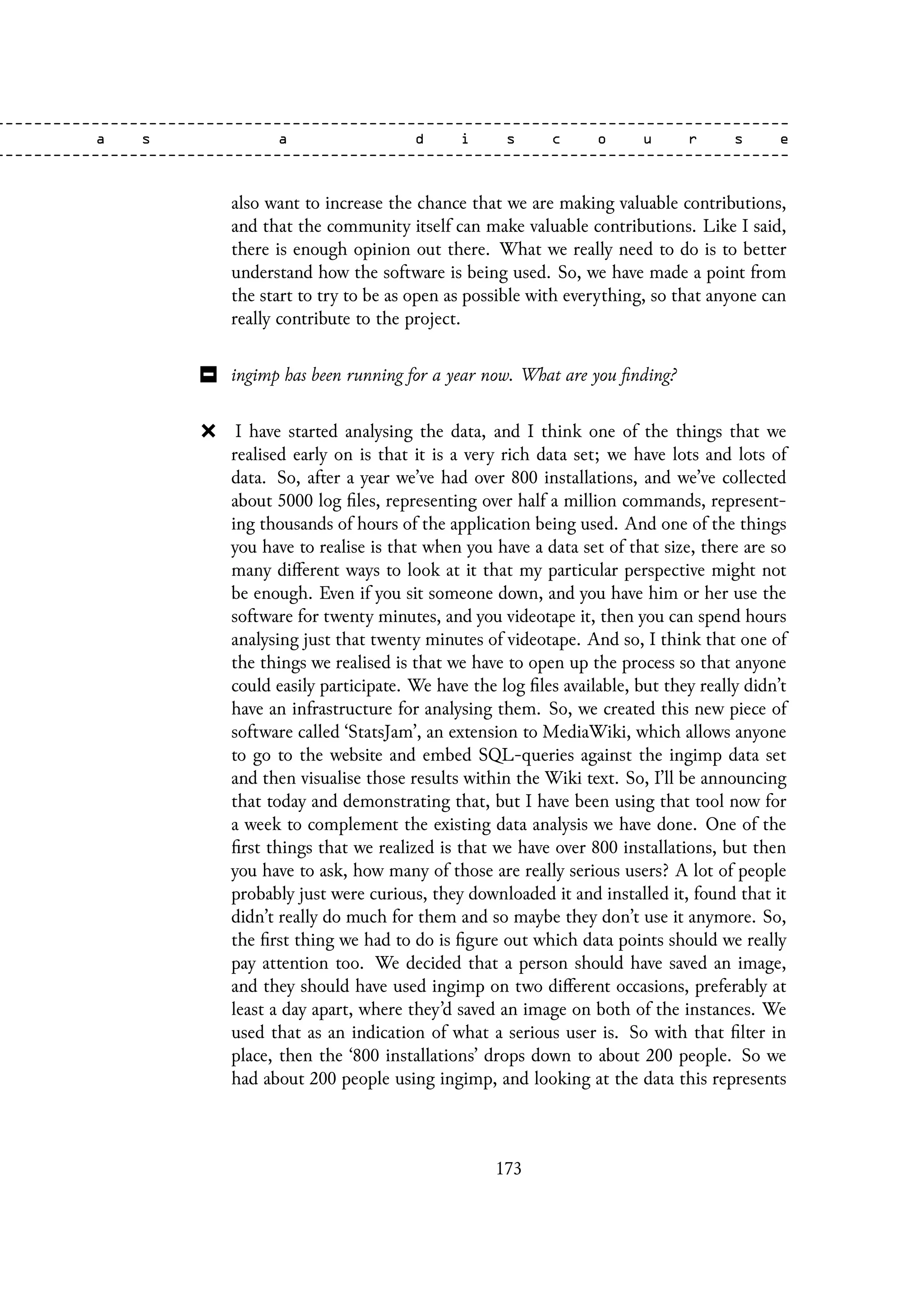
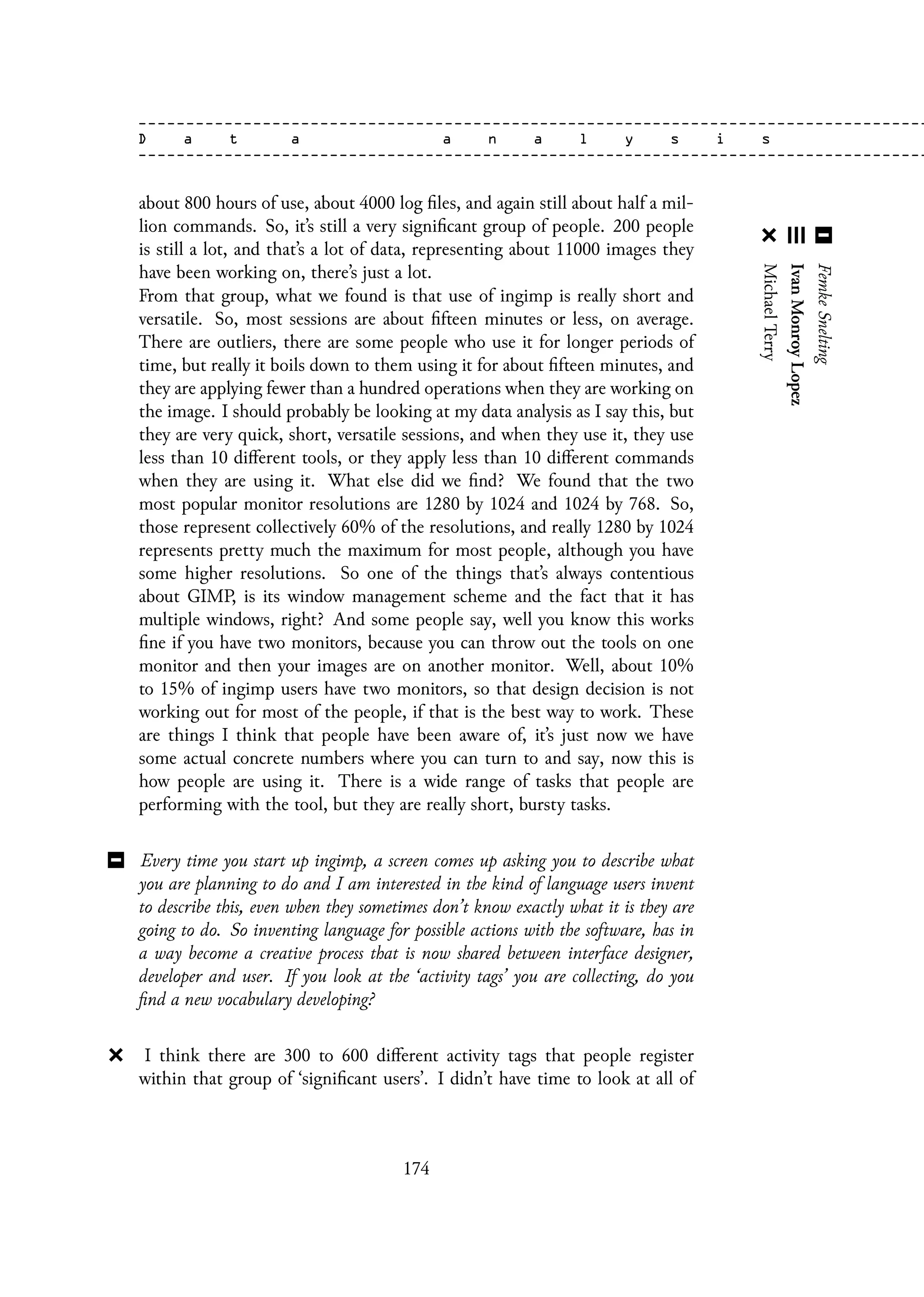
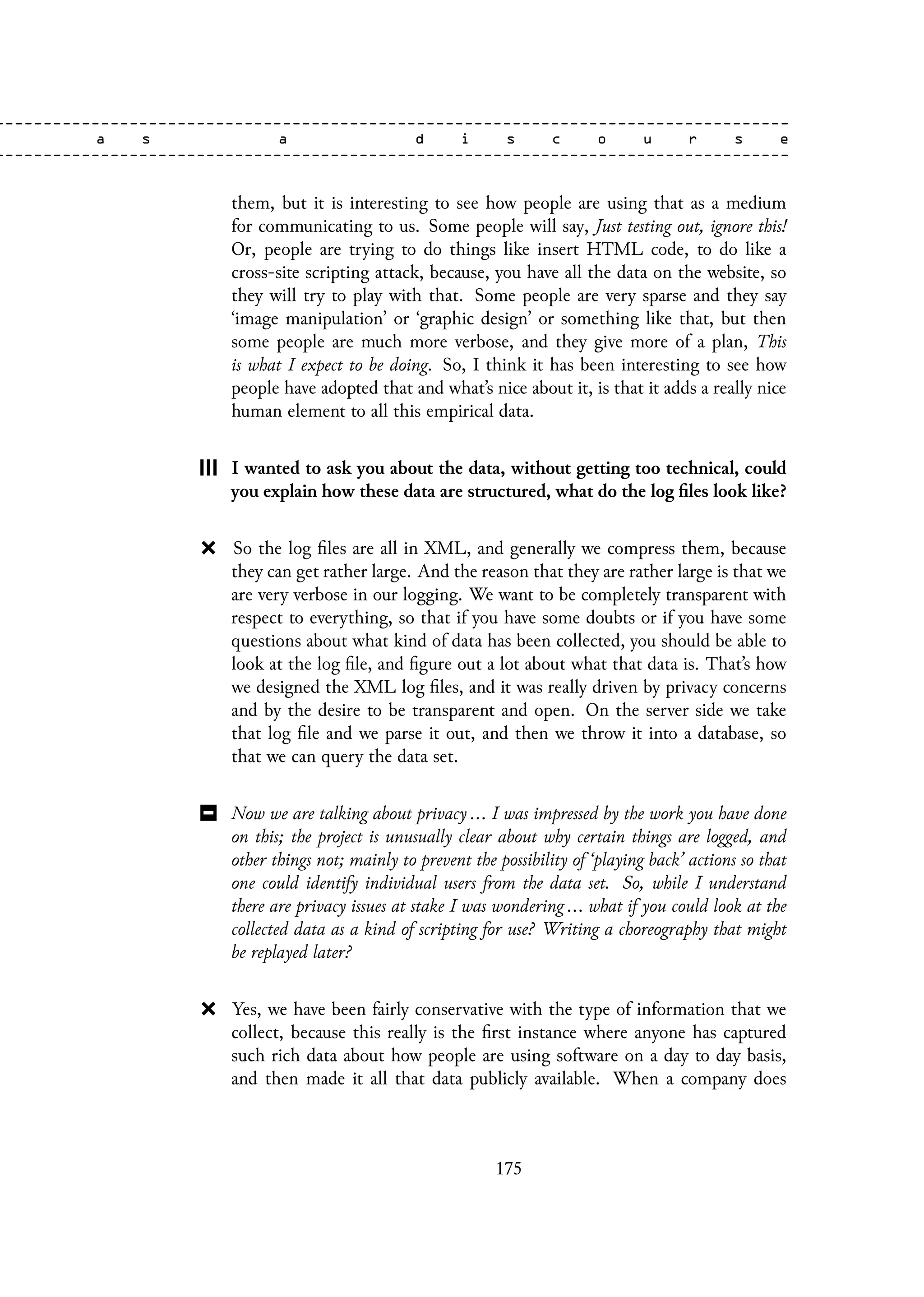
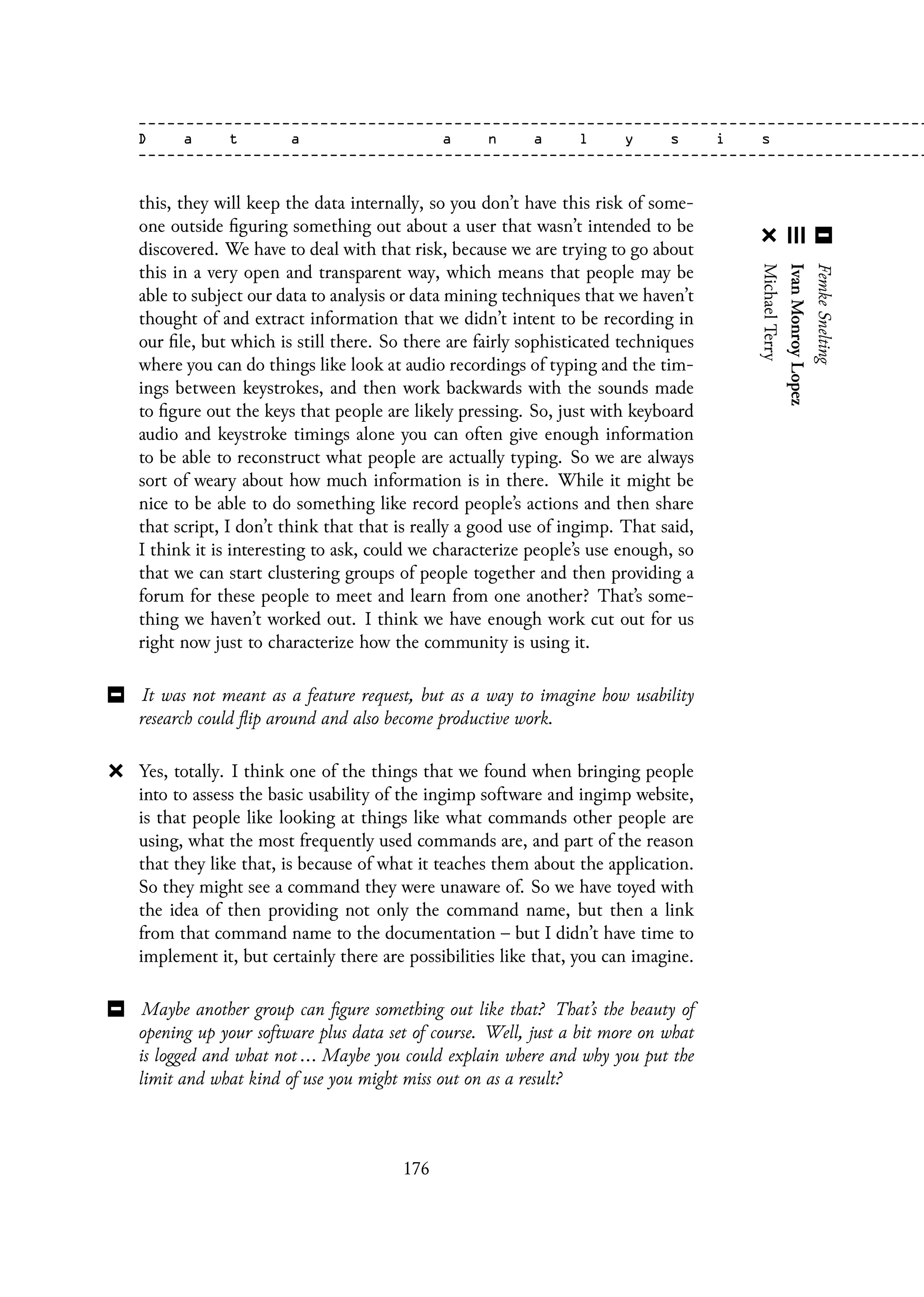
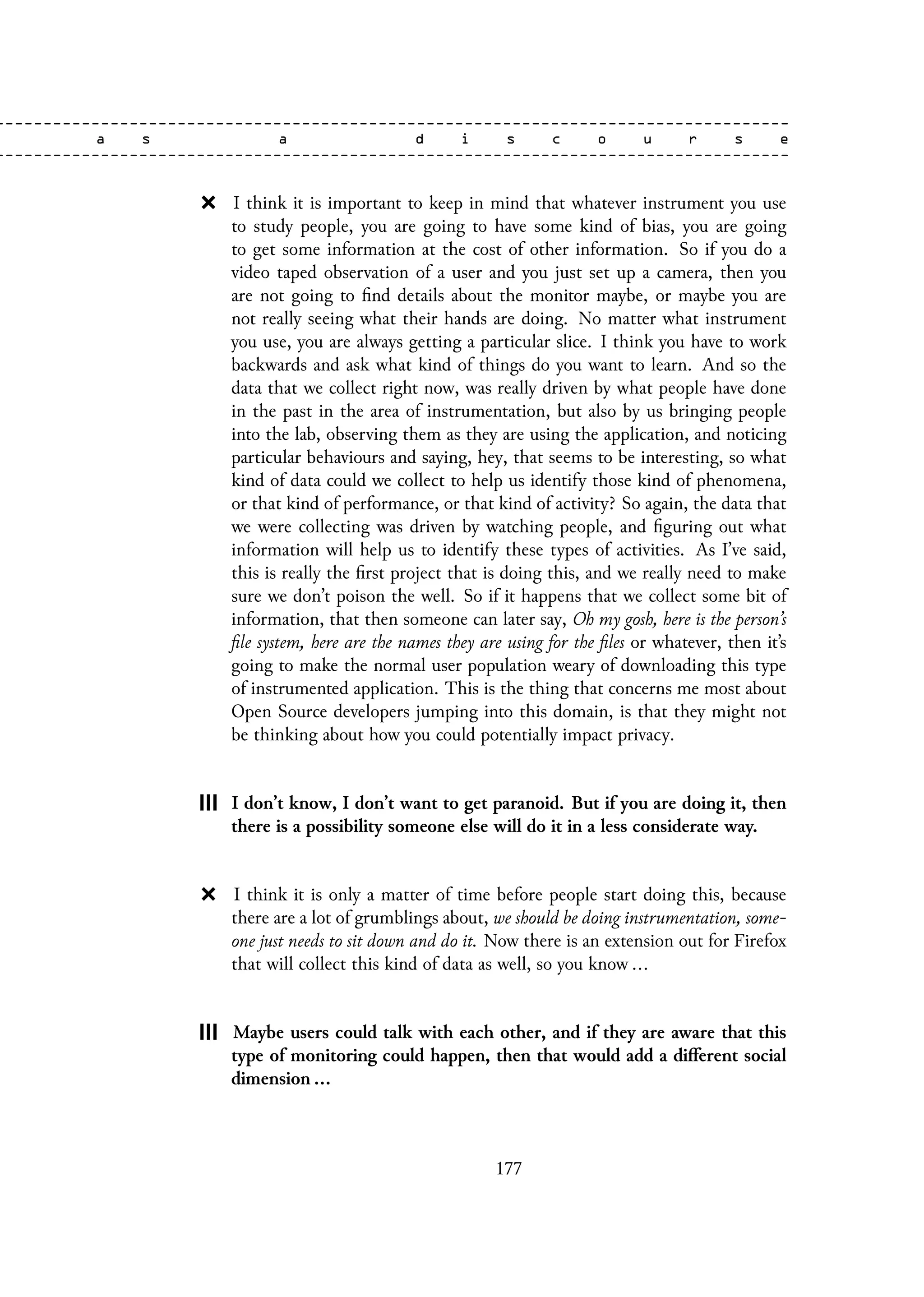
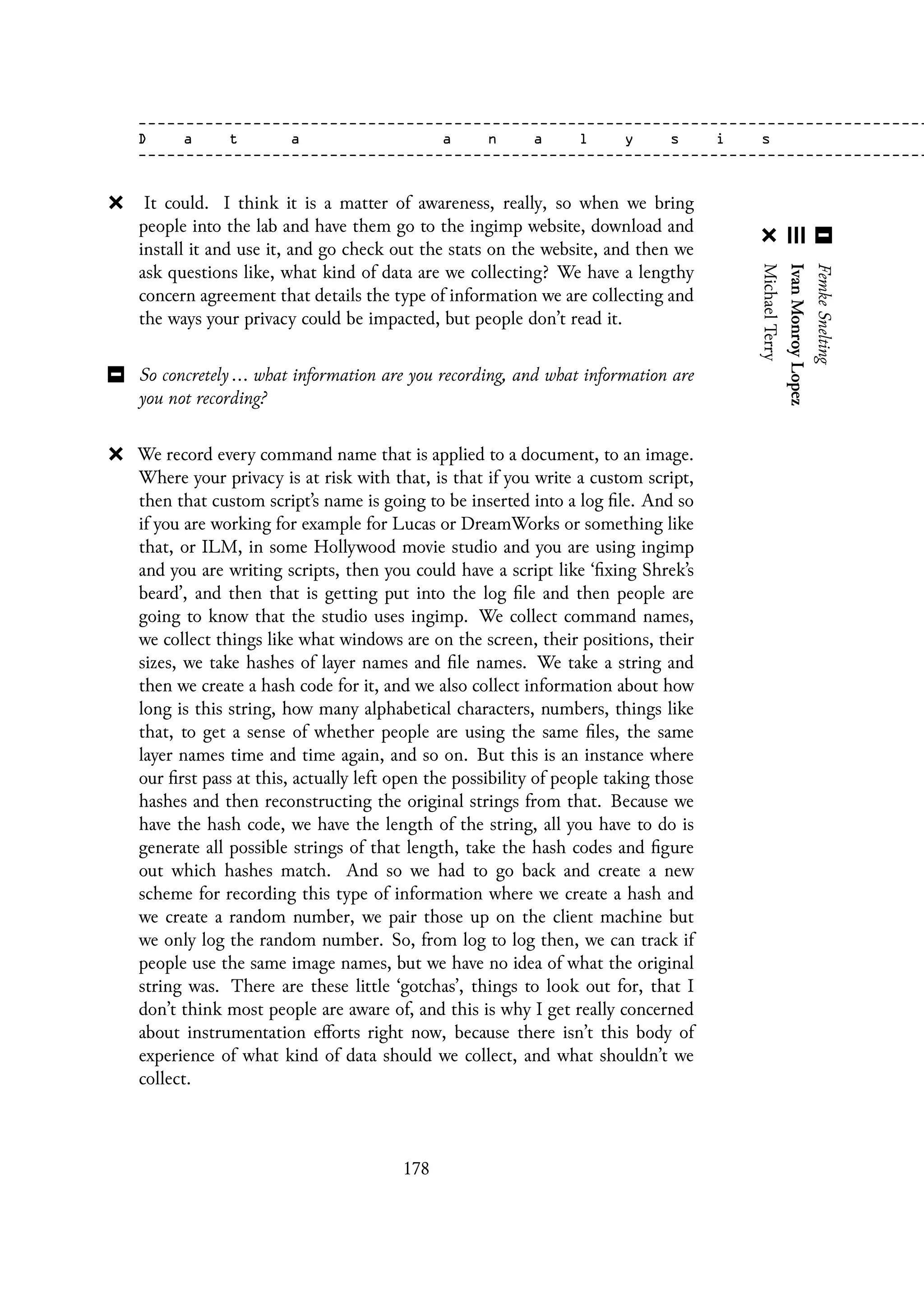
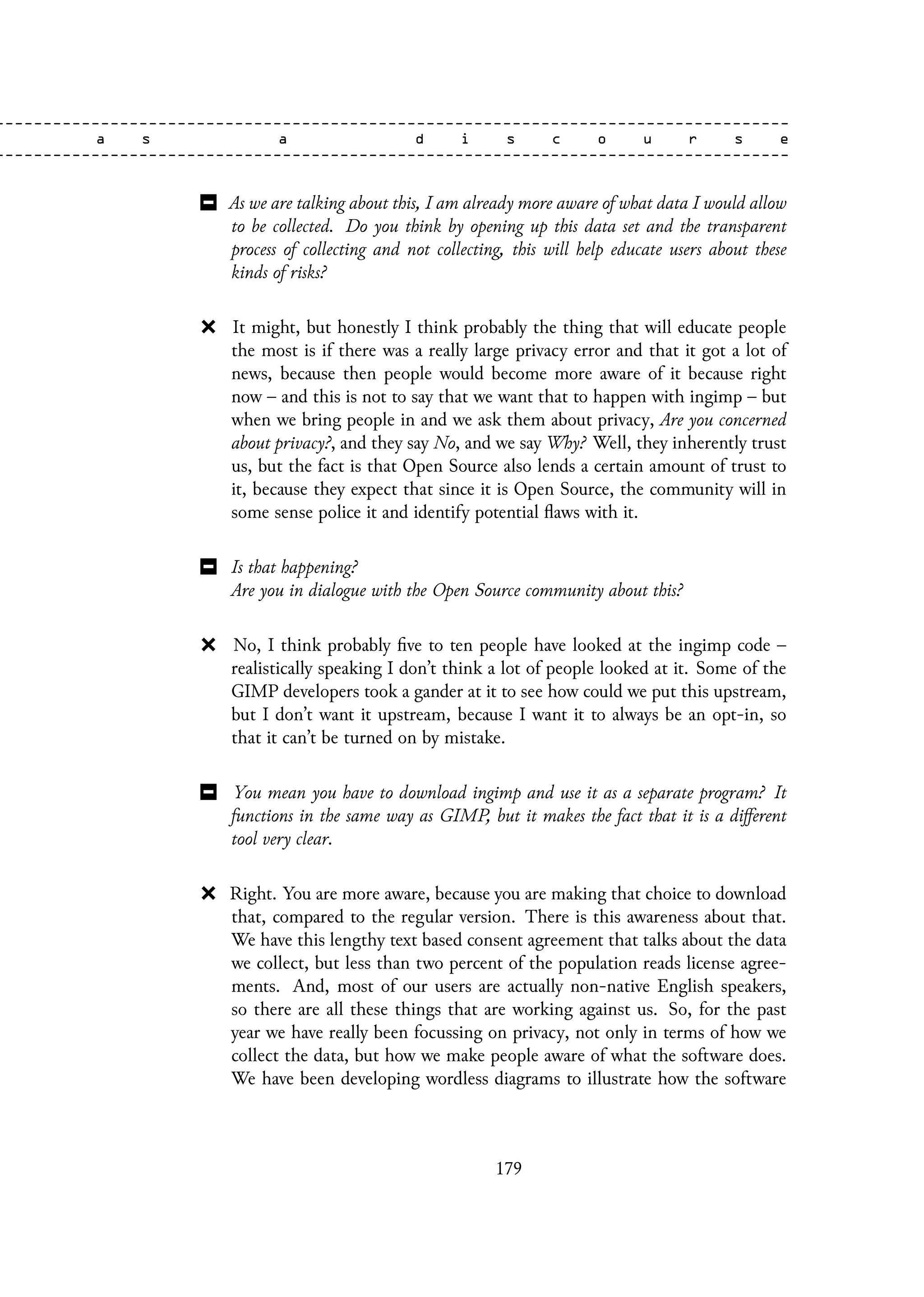
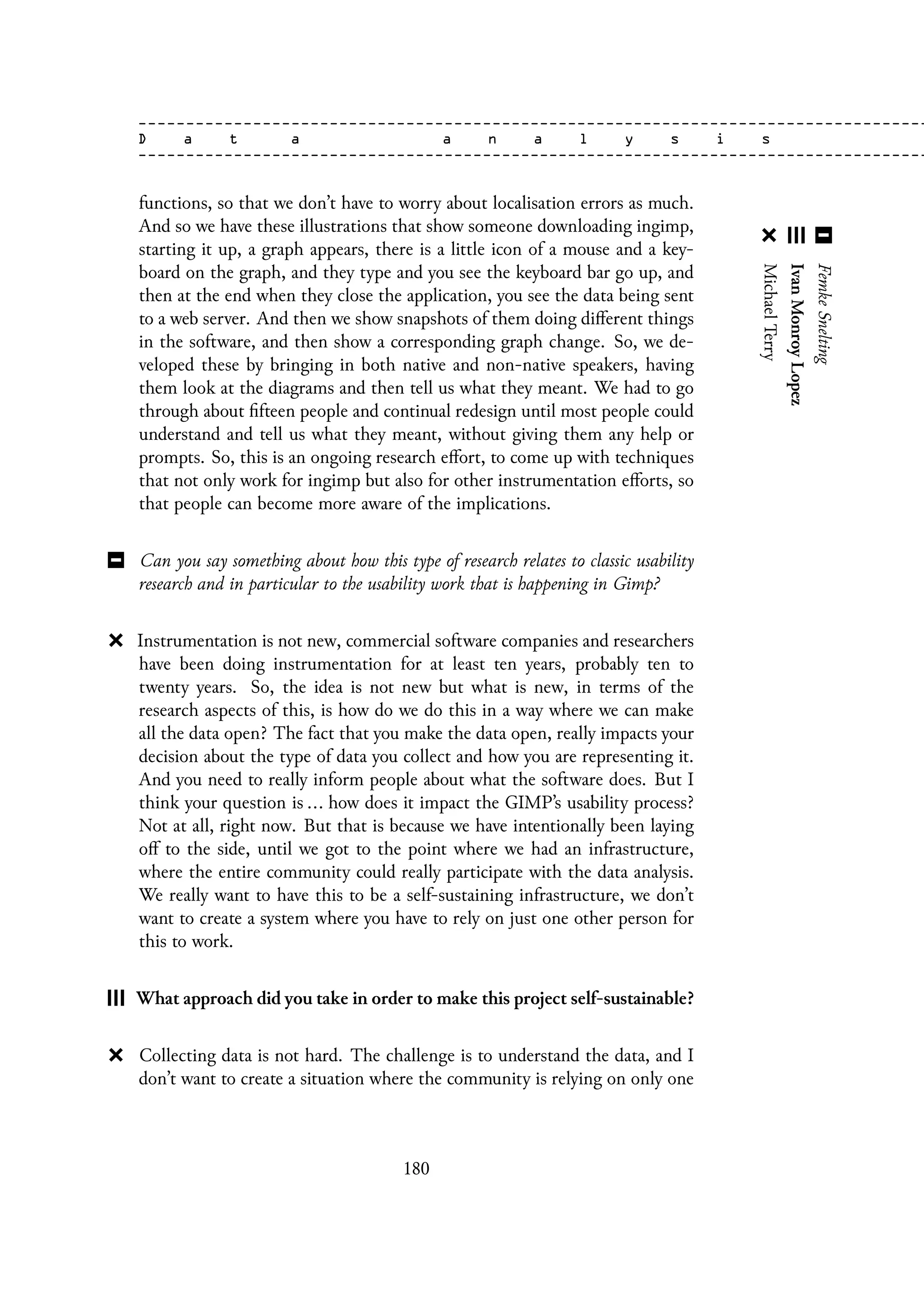
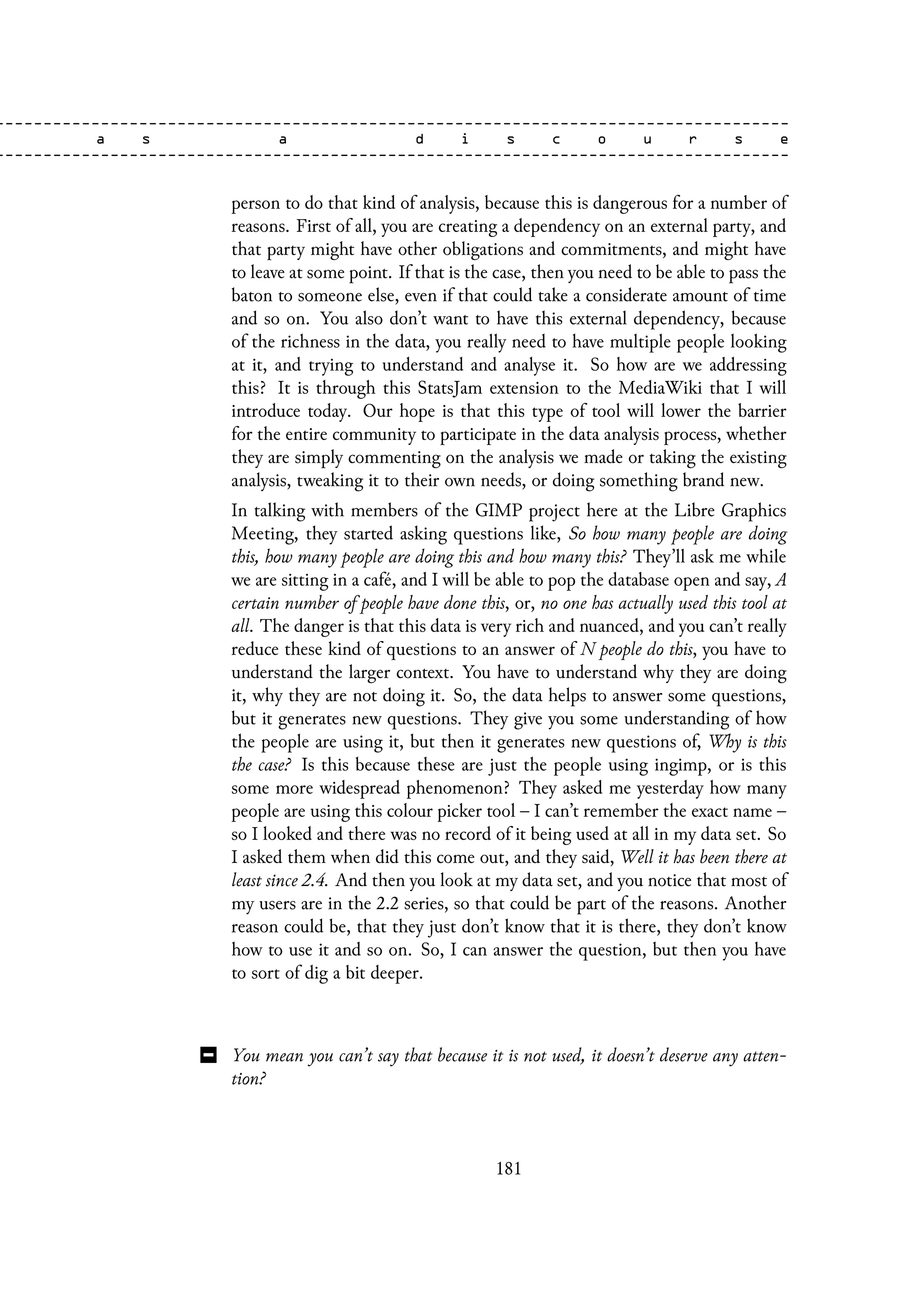

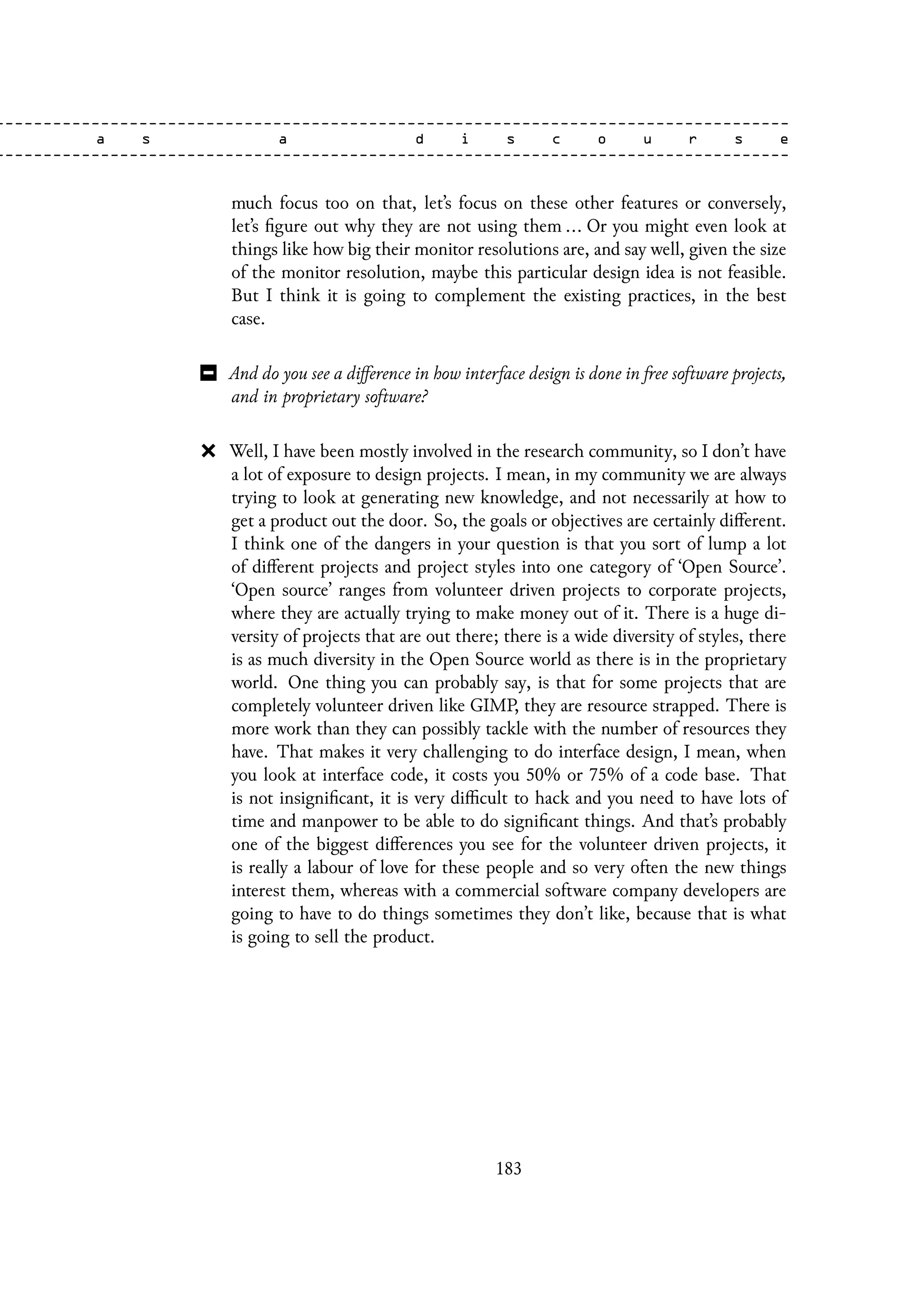

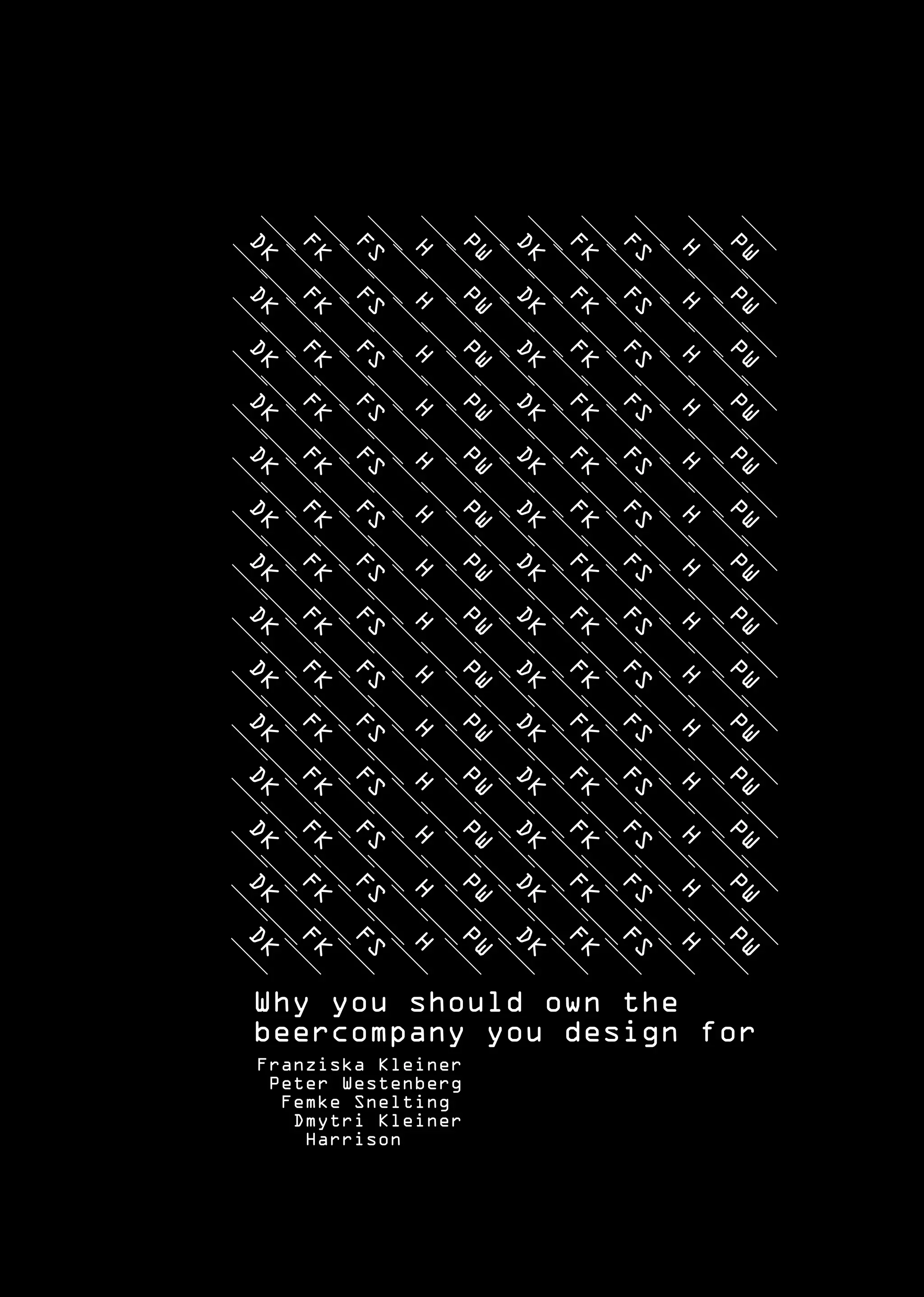
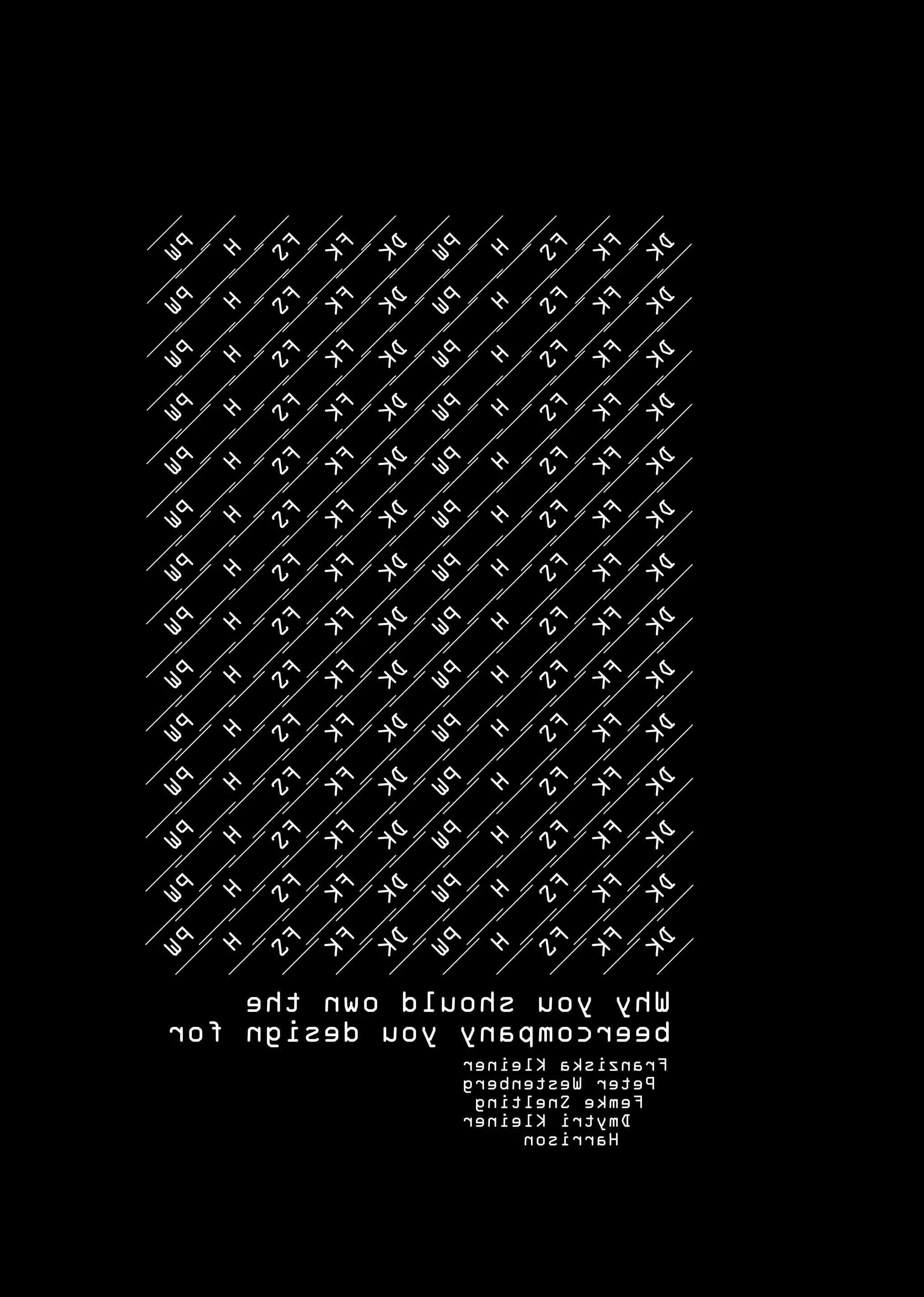
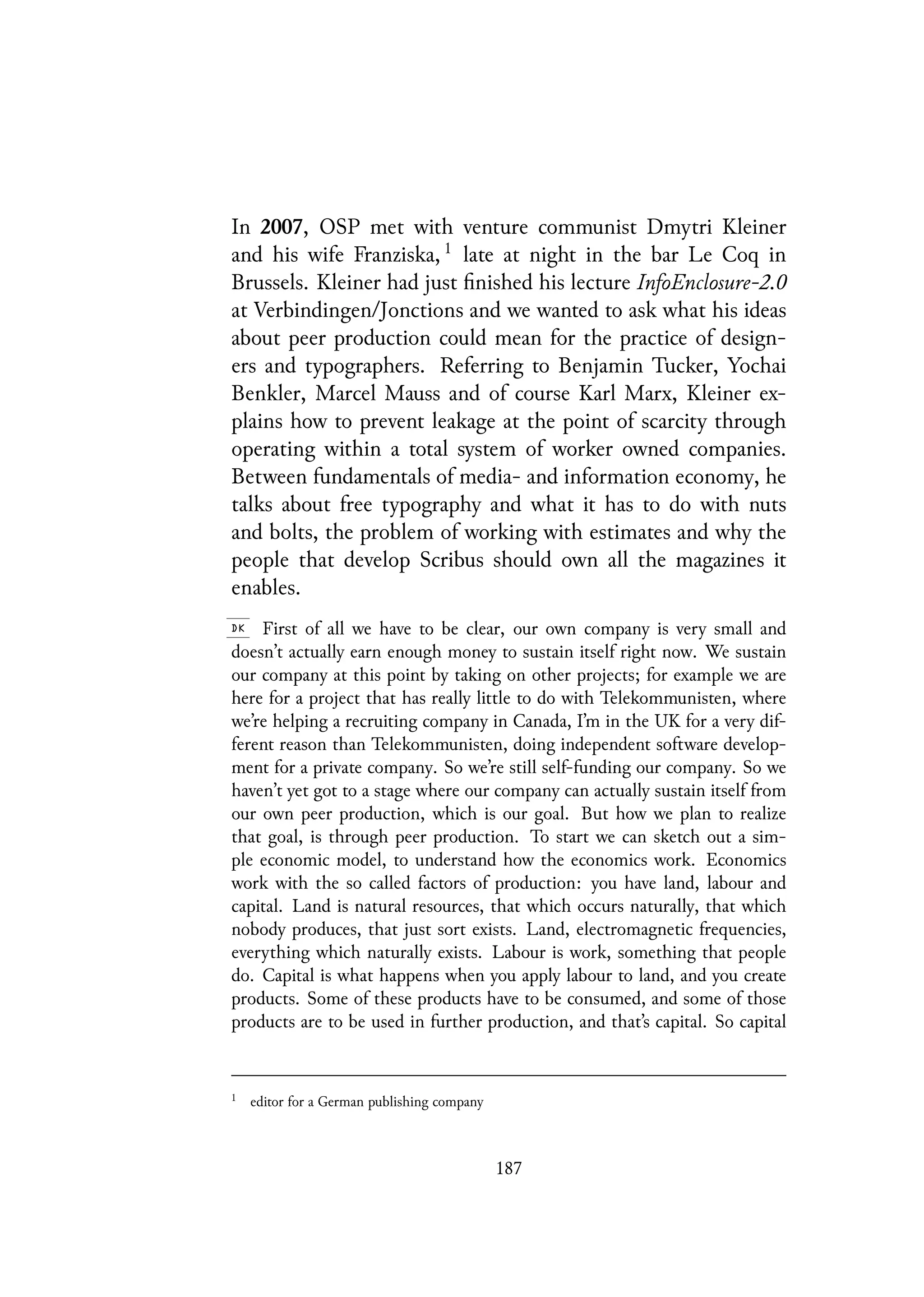
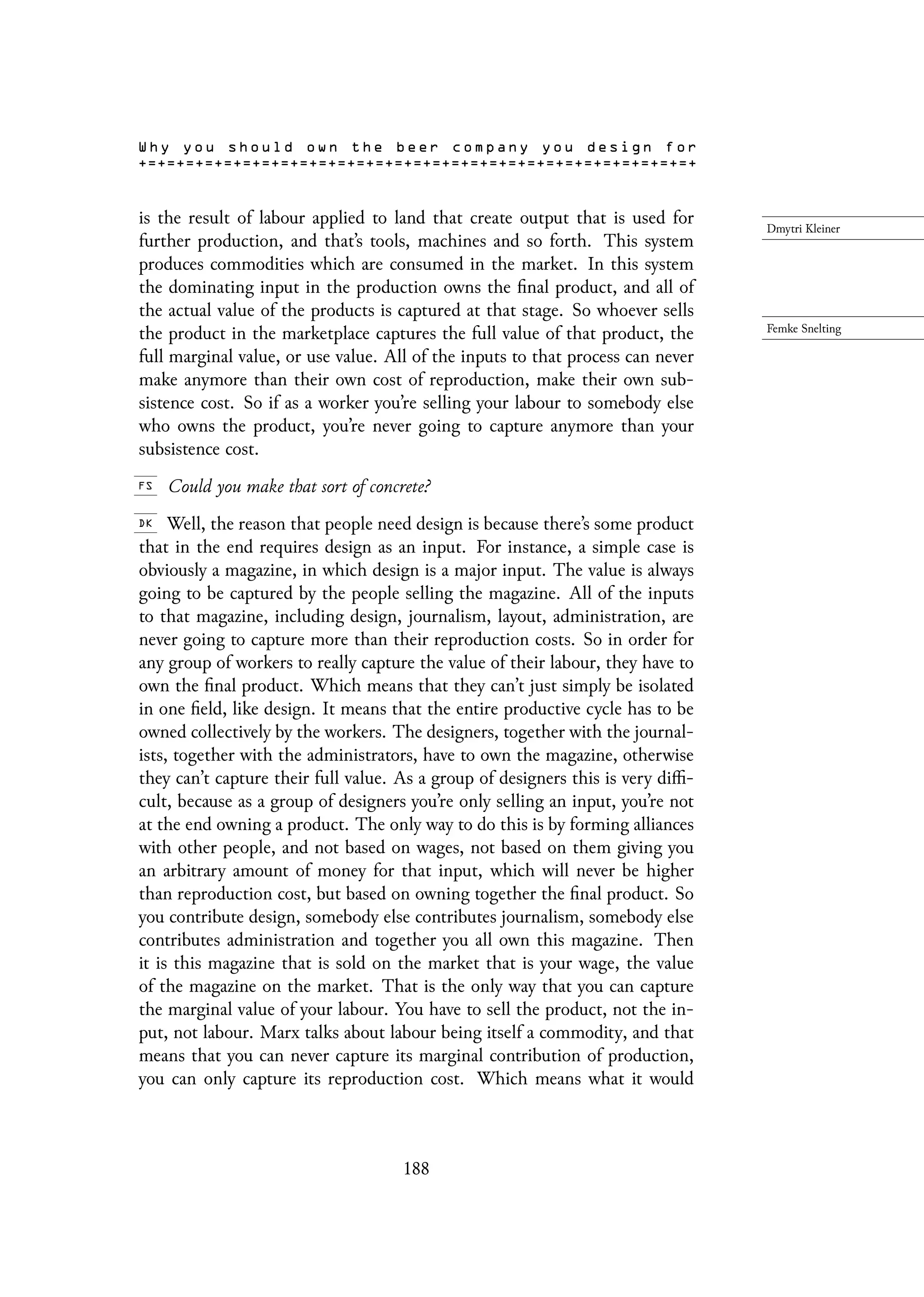
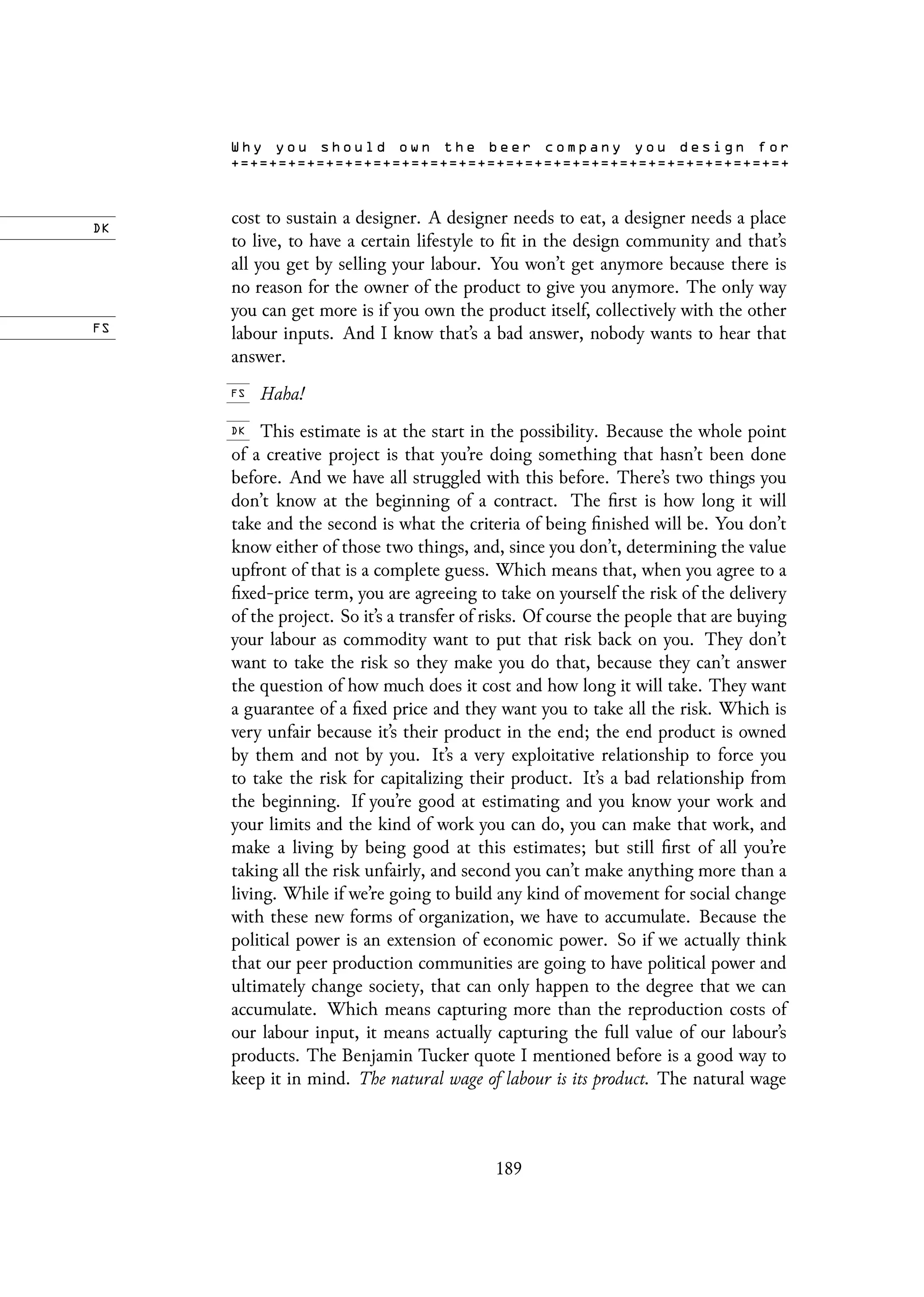
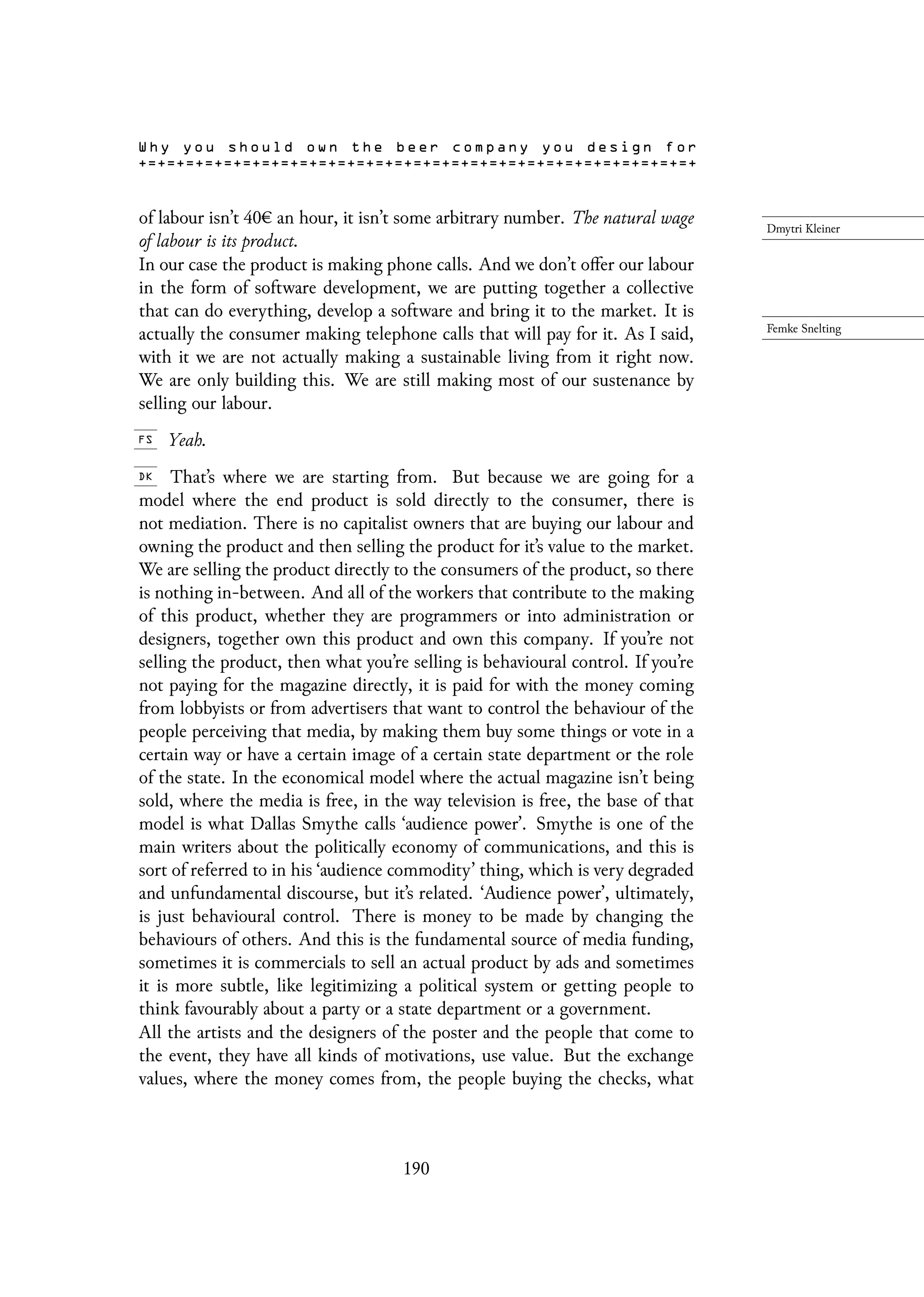
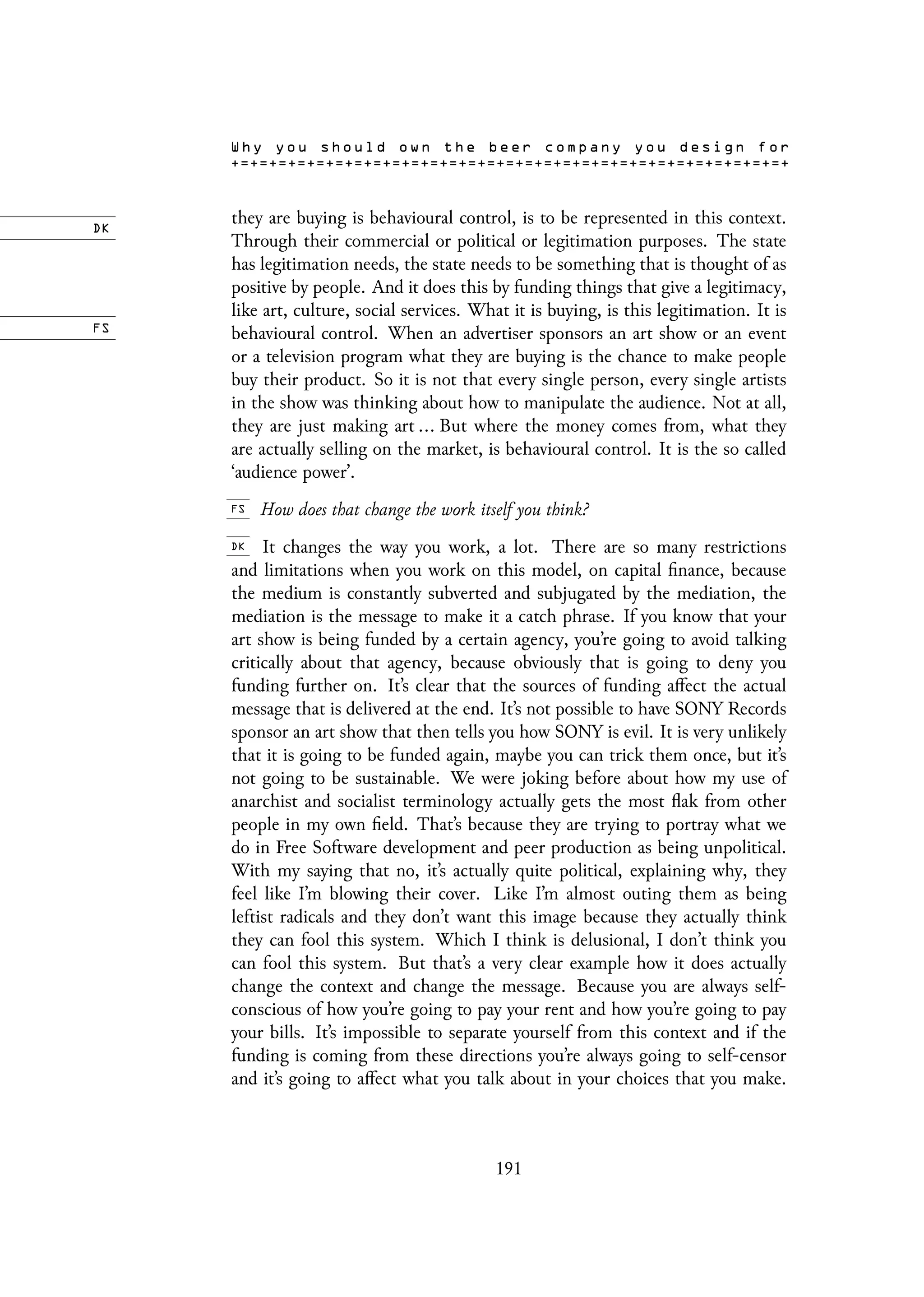

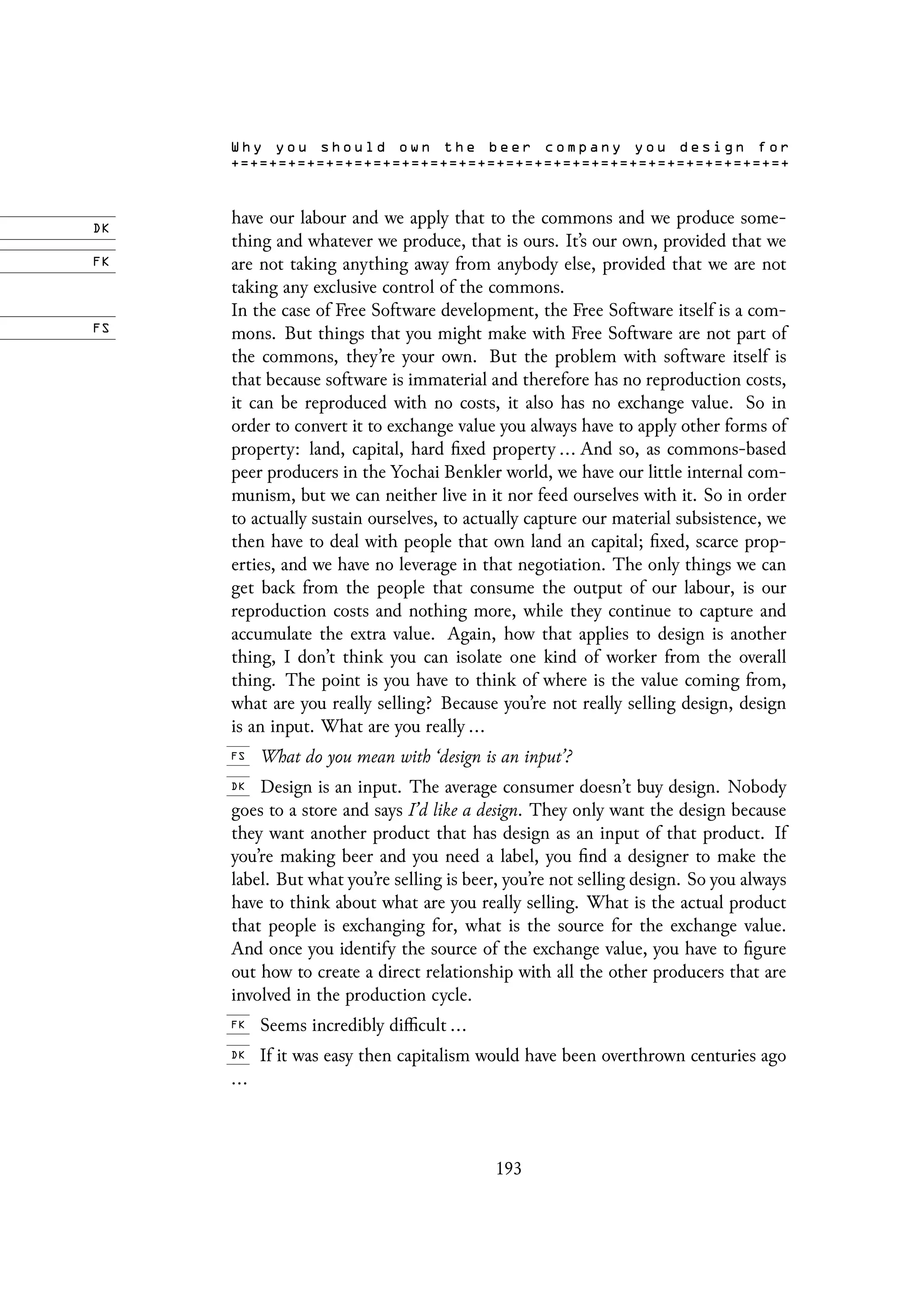
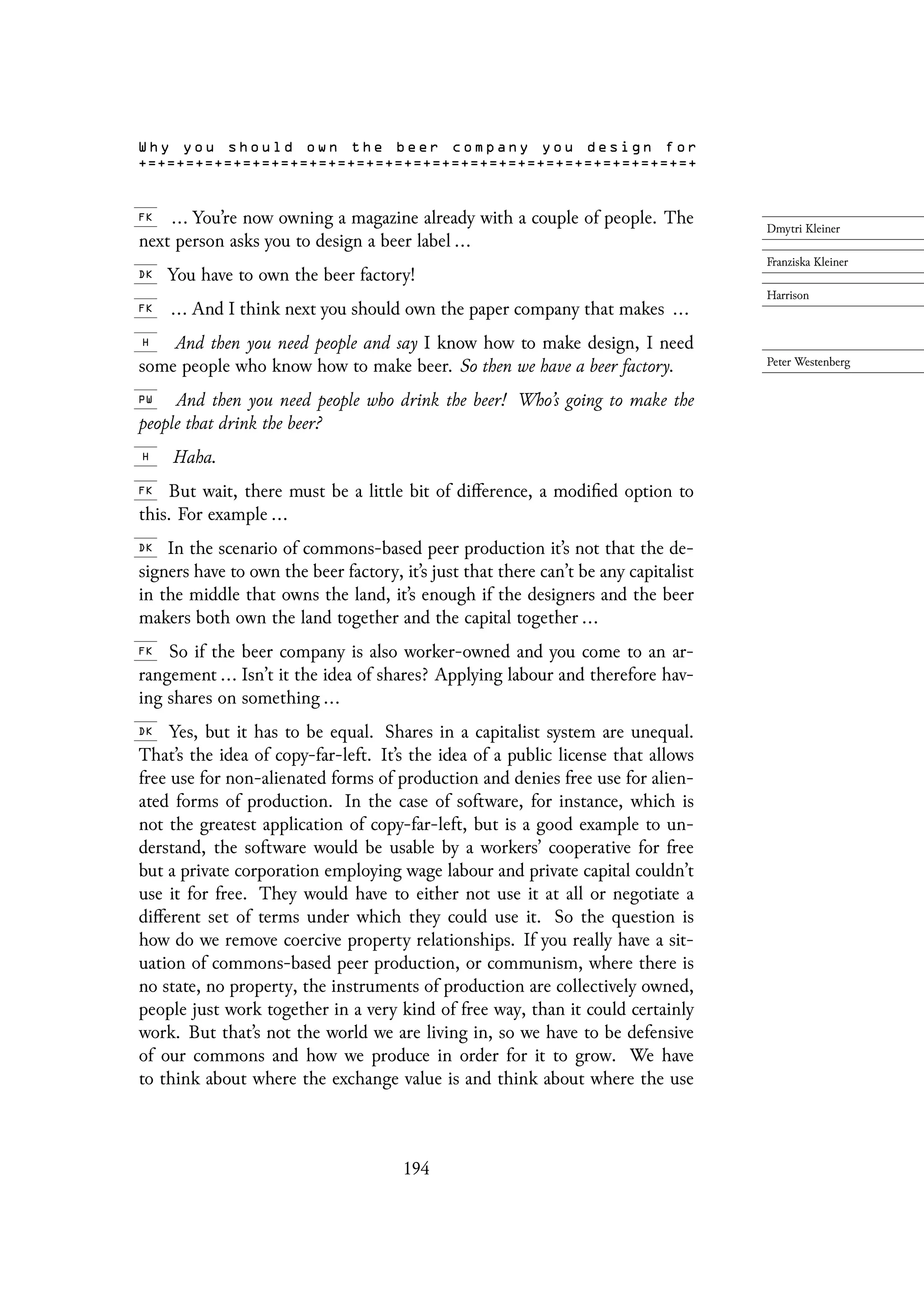

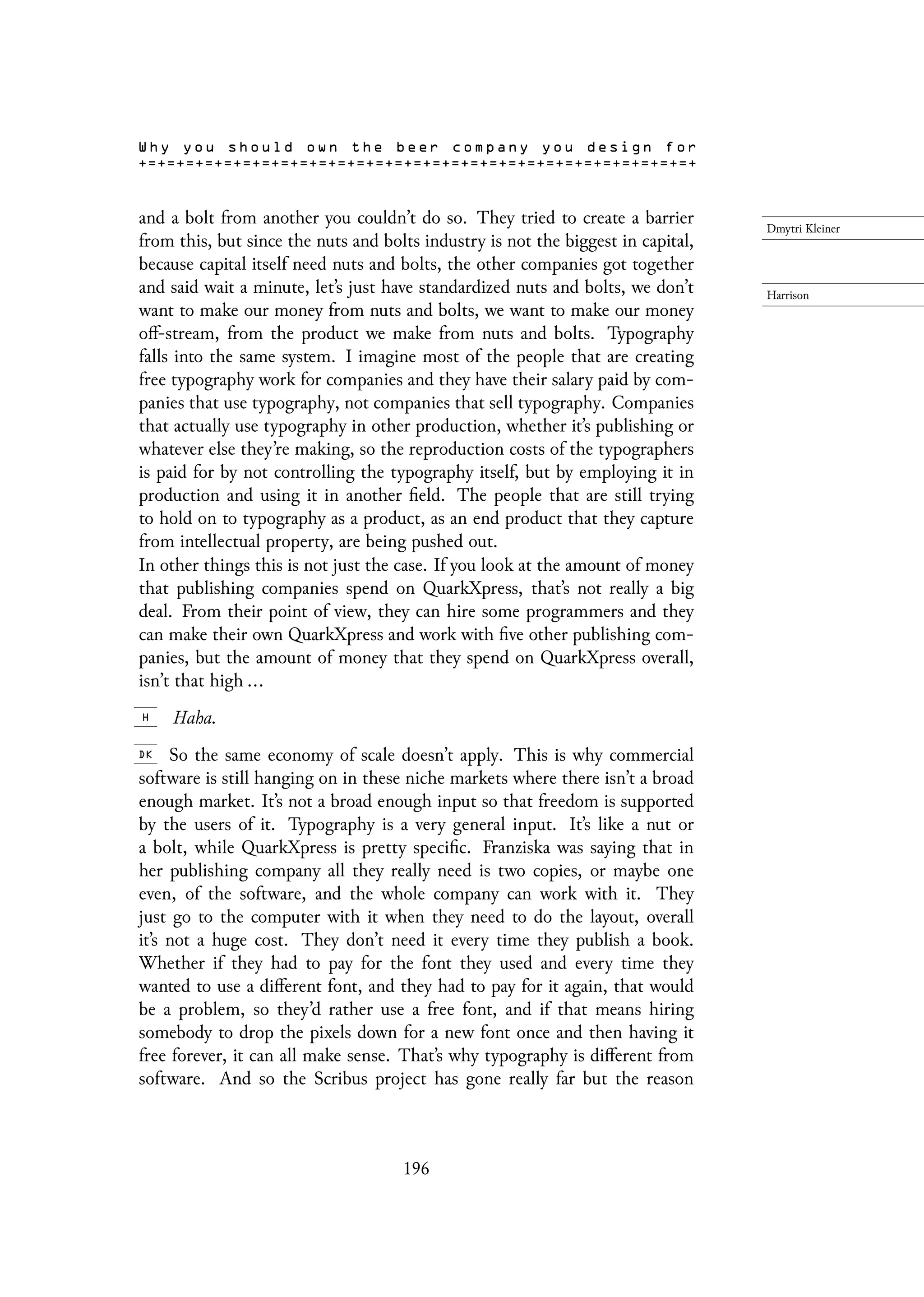
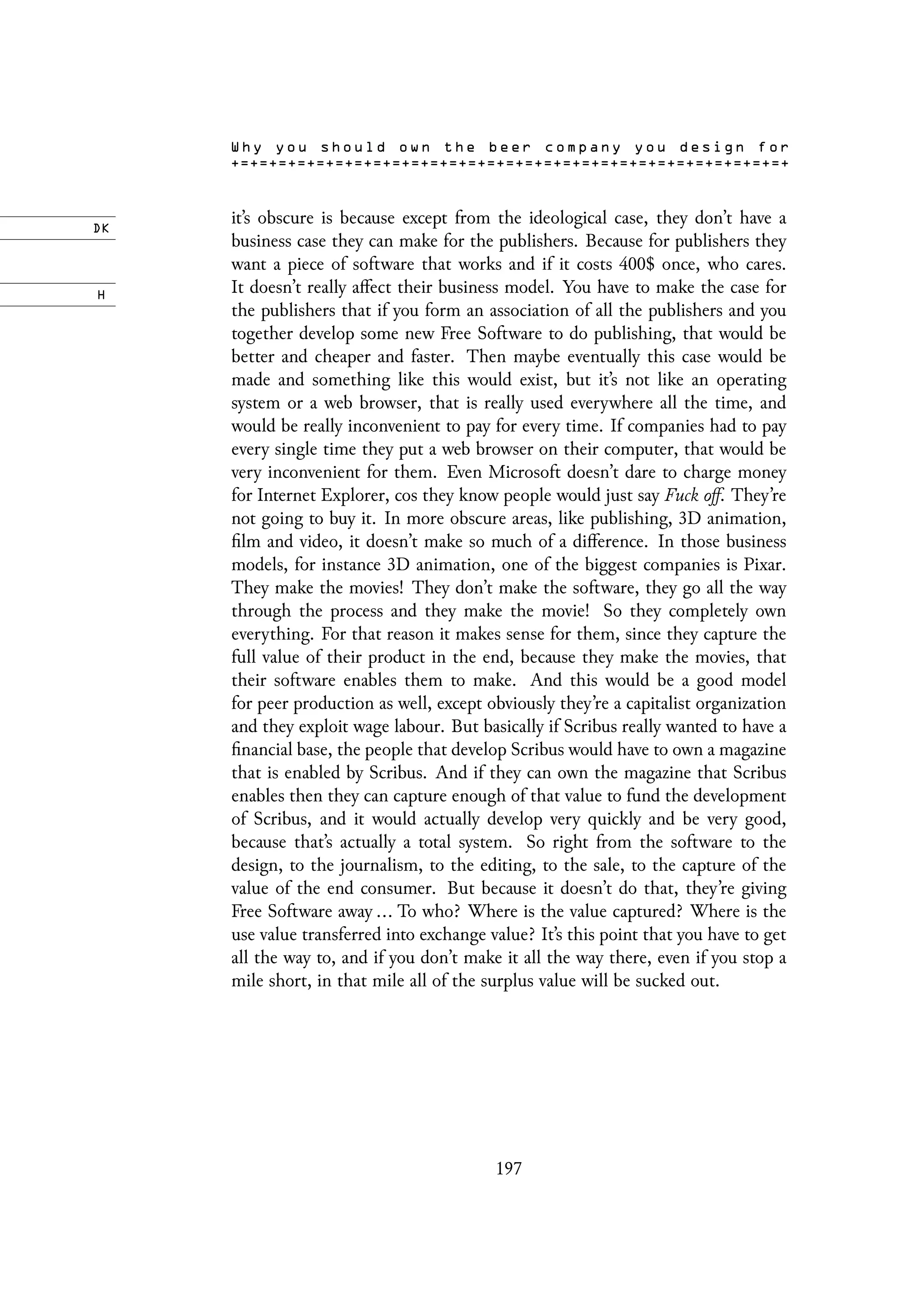

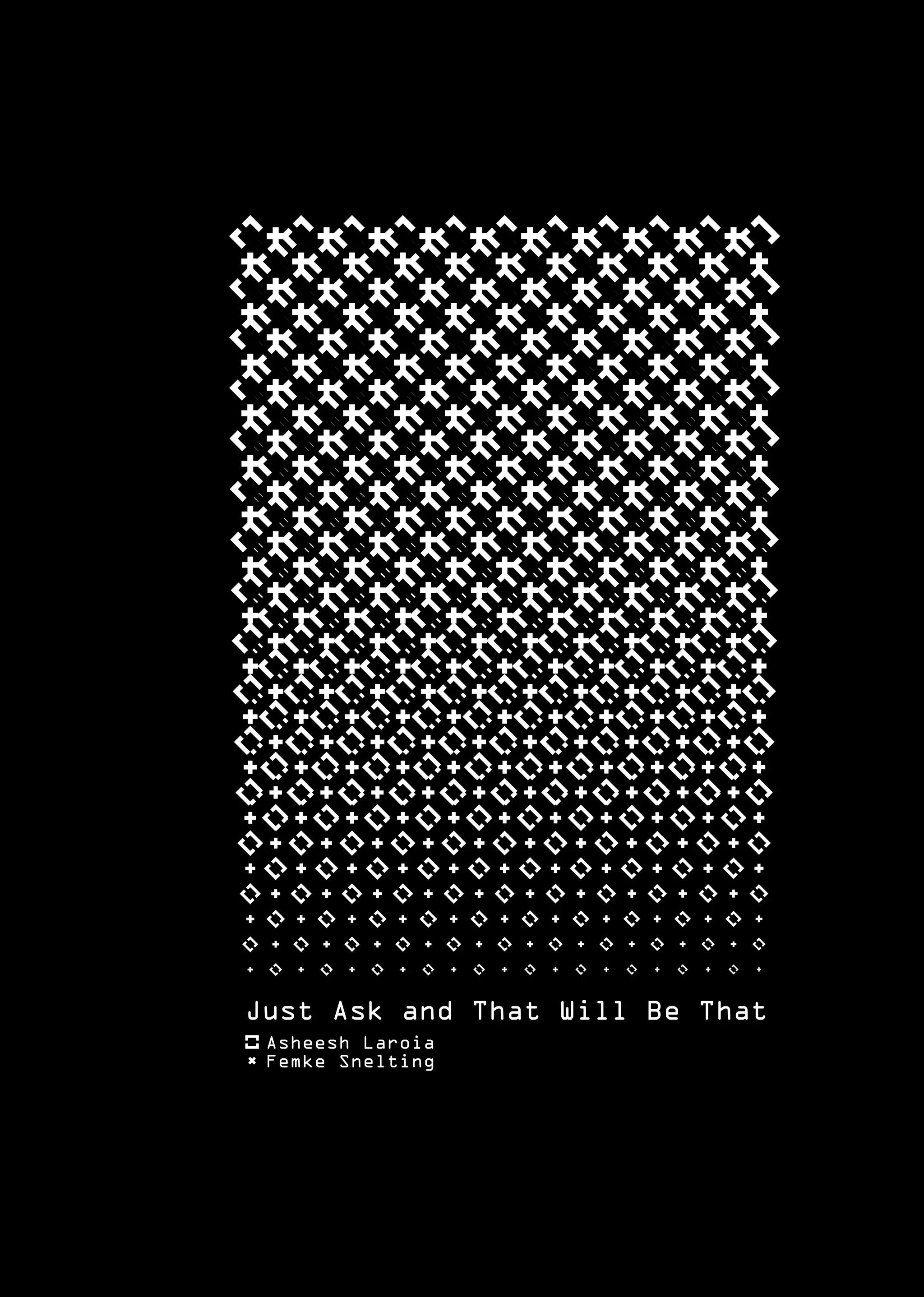
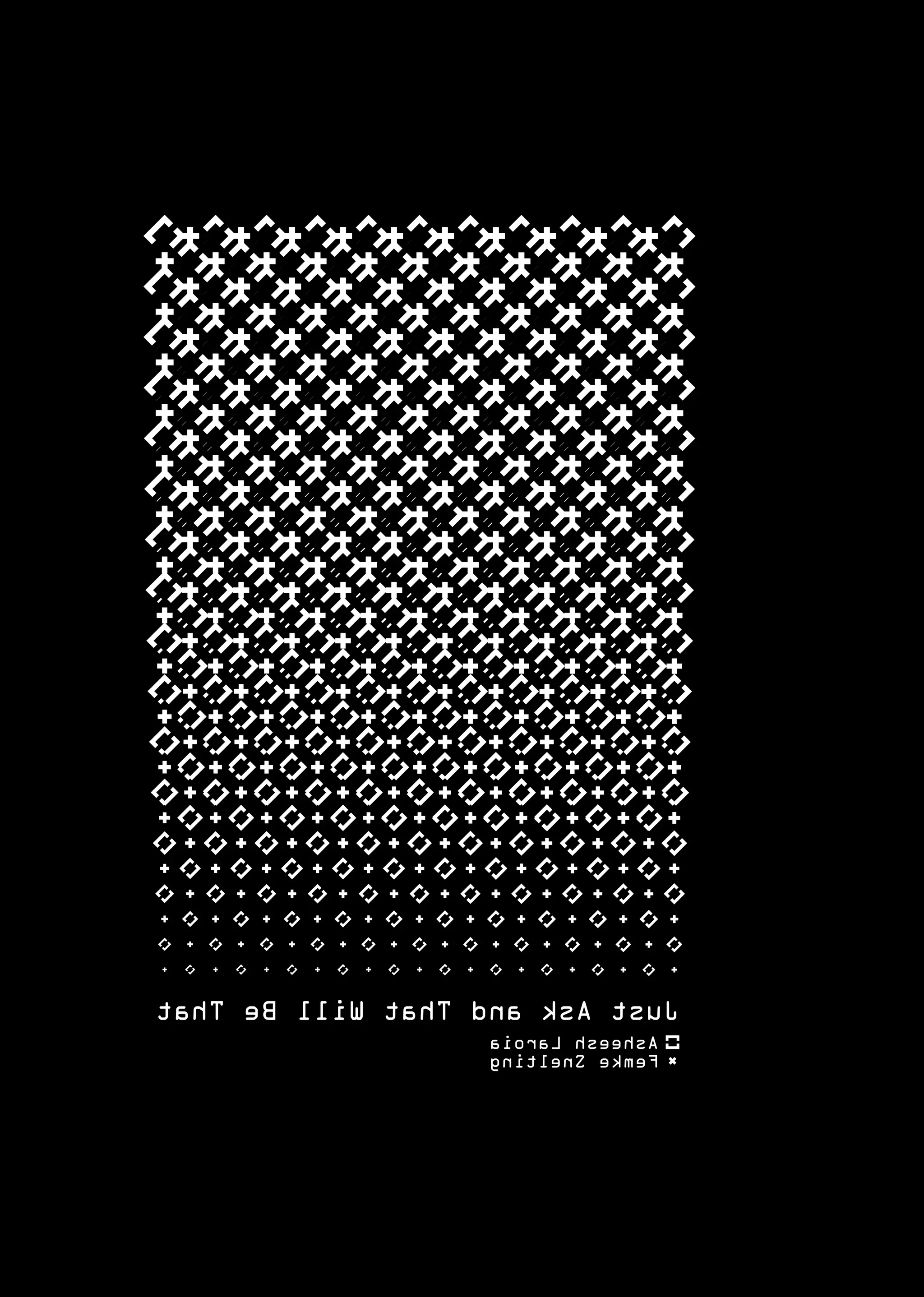
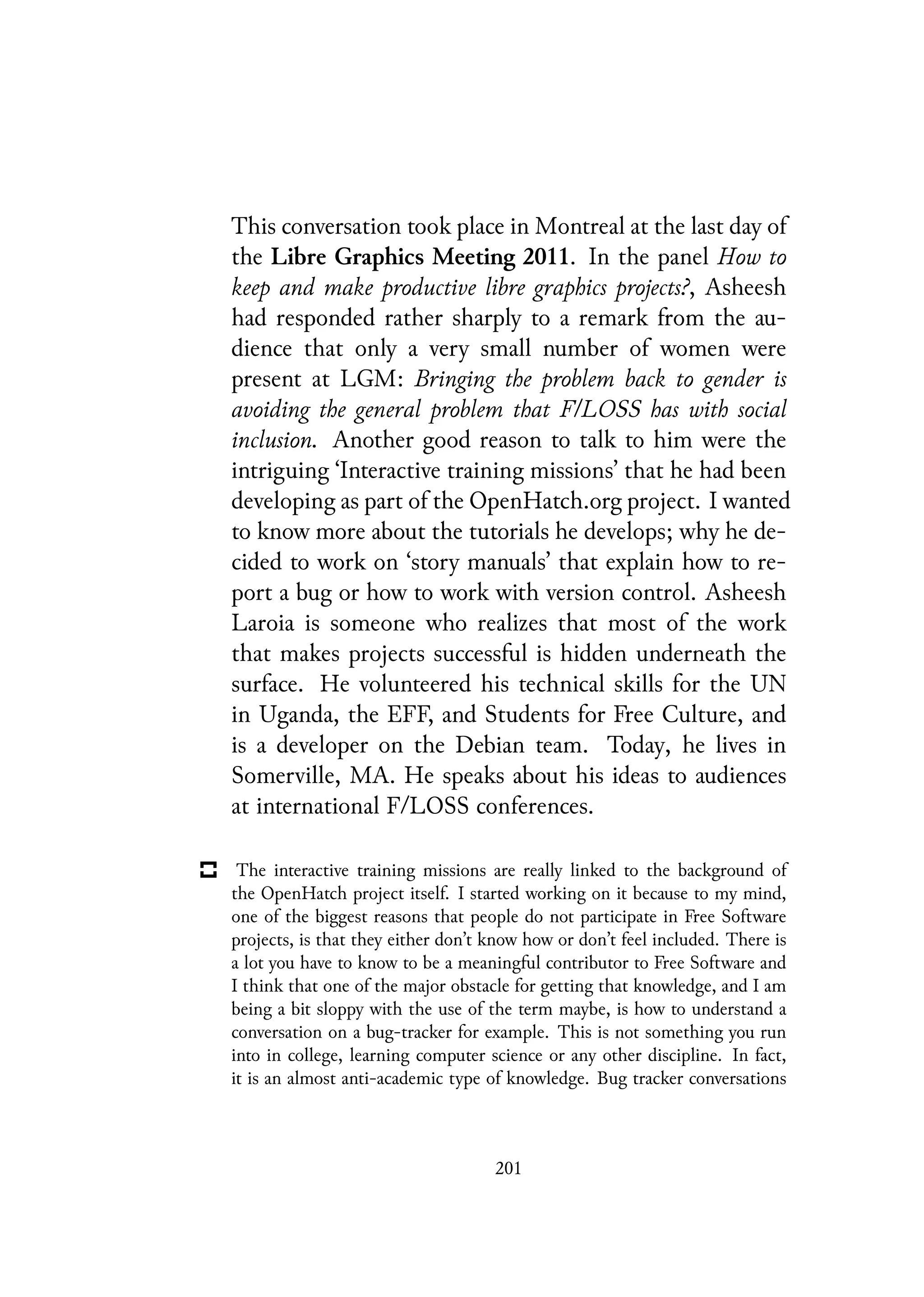

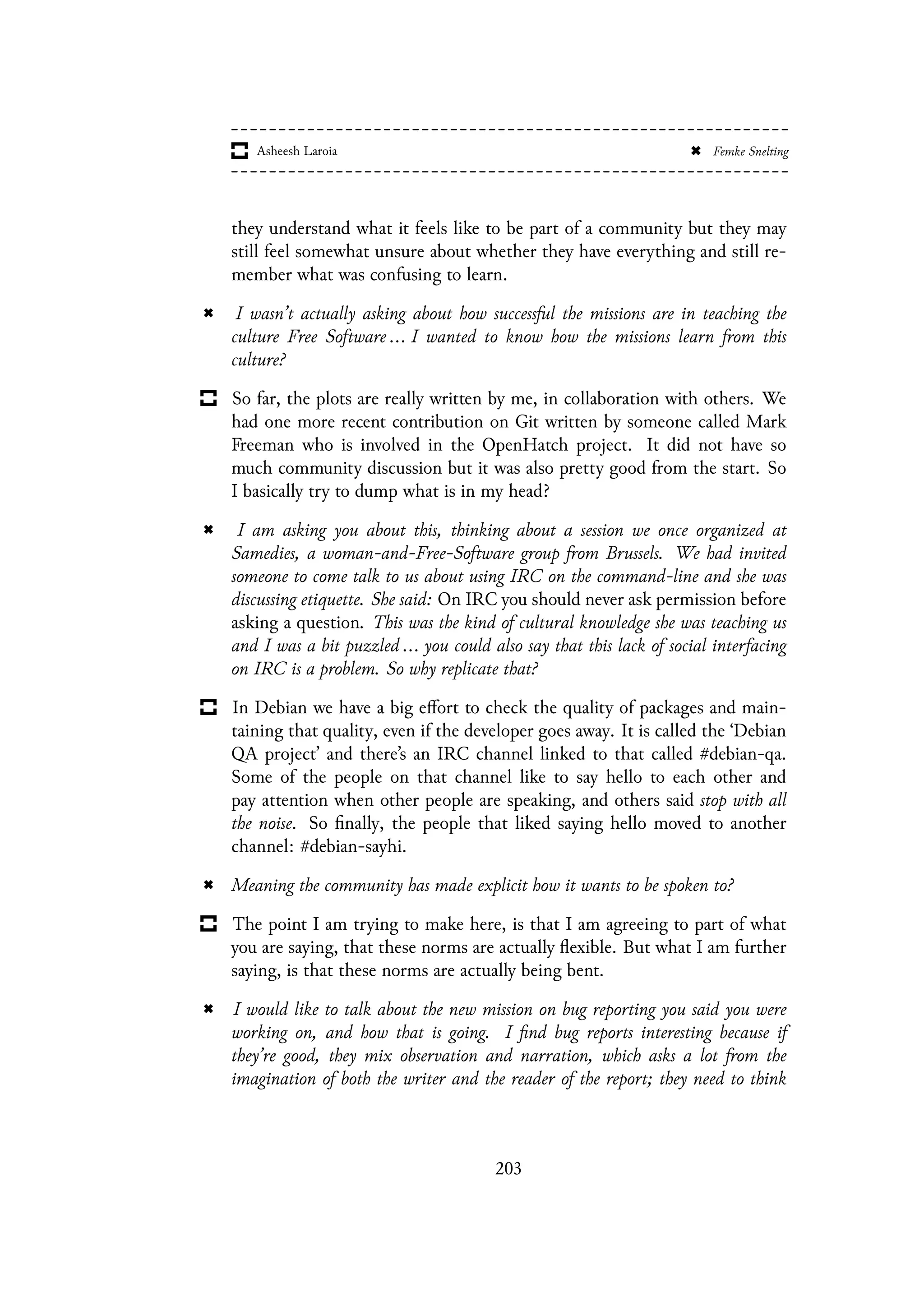
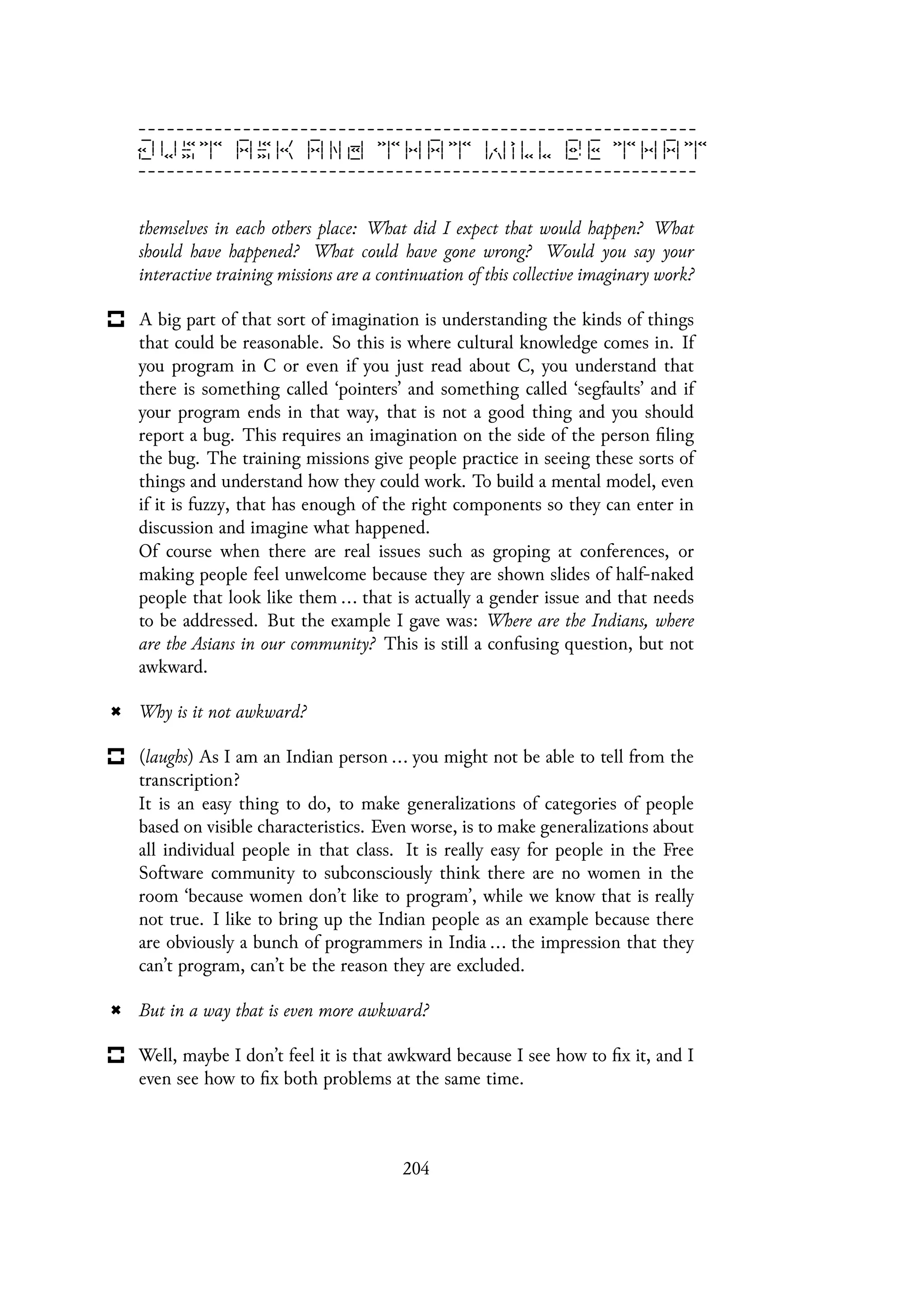
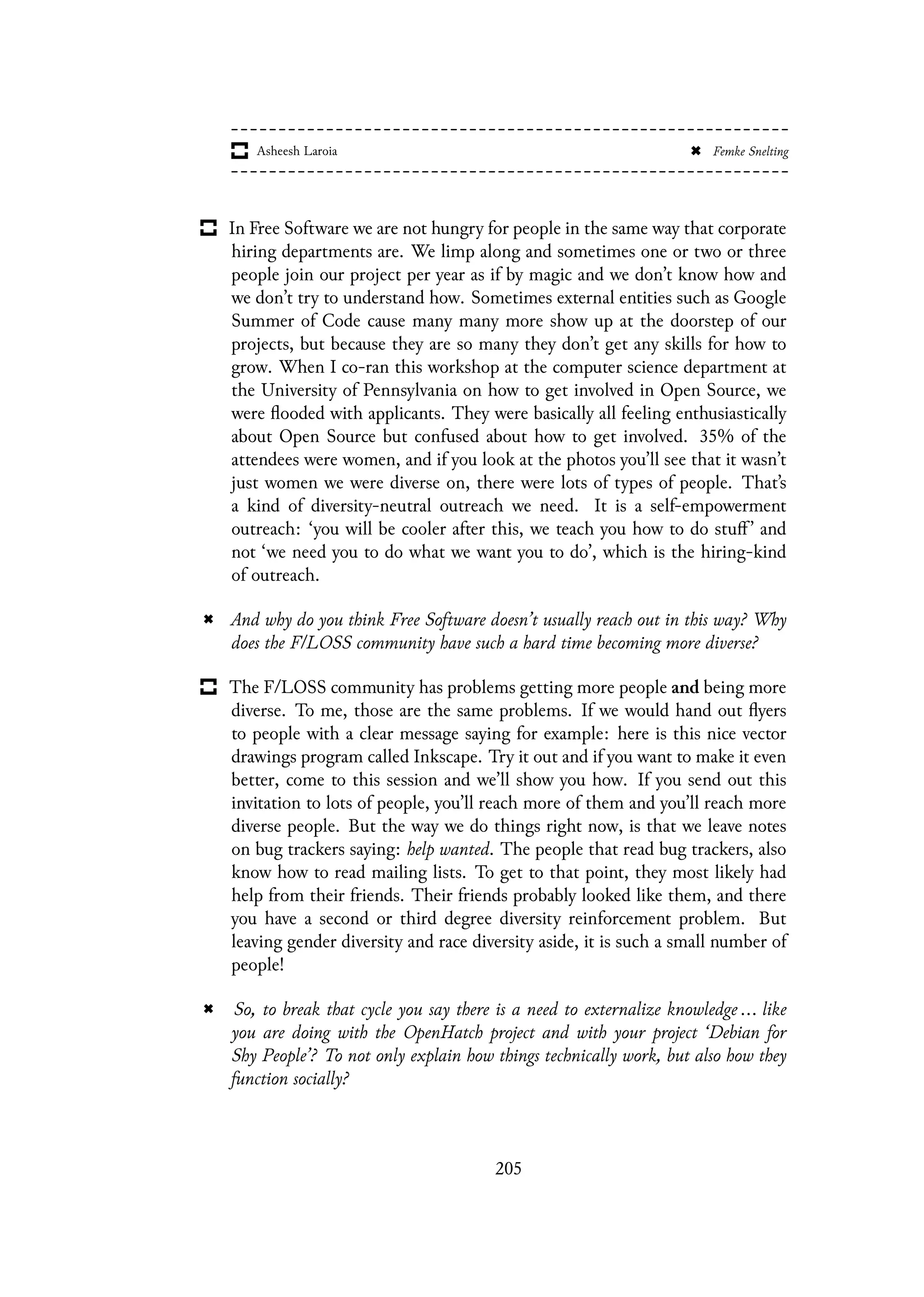
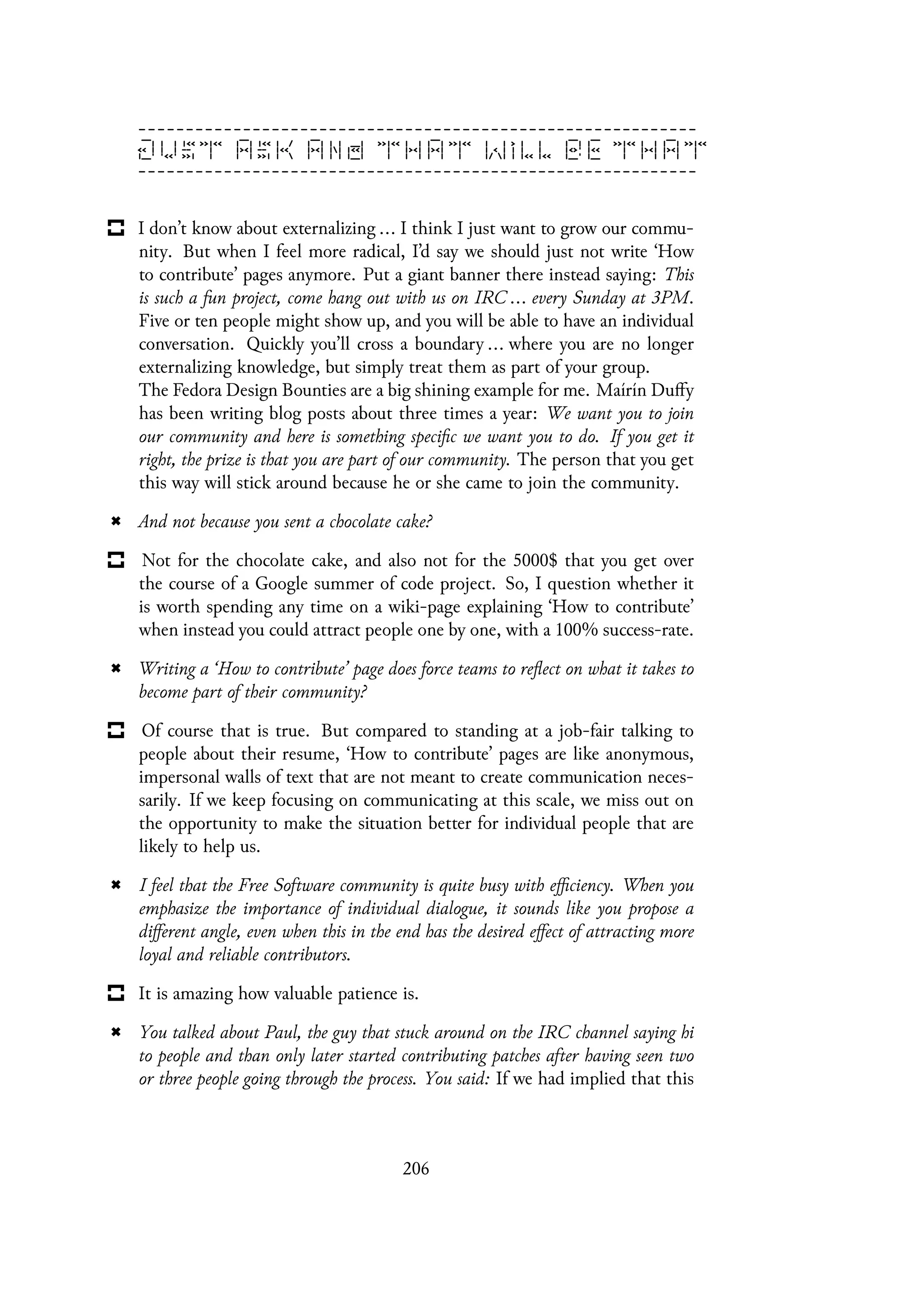

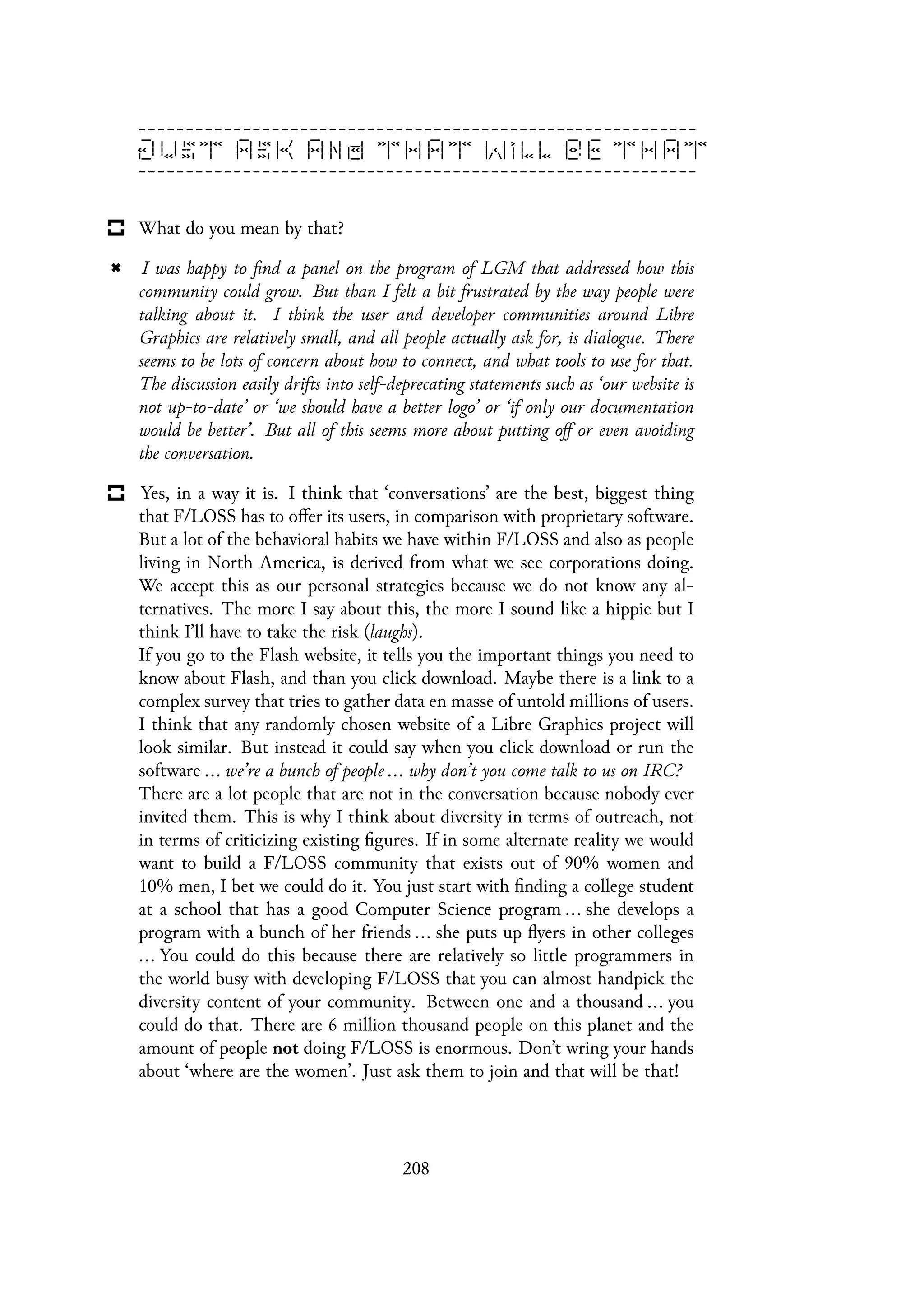


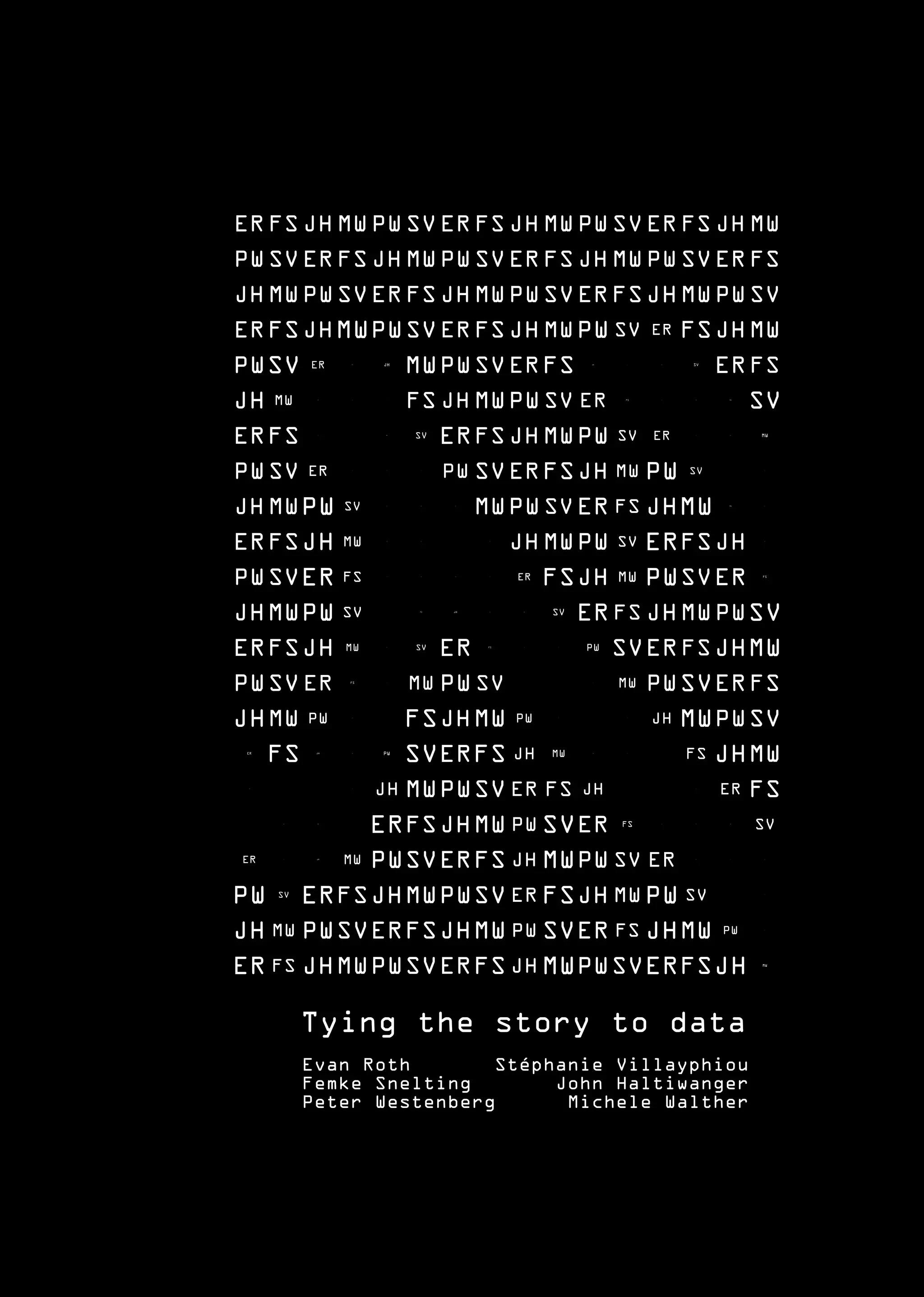



![Tying the story to data
and upload it to an open database. The 000000book-site 8 hosts all this
data and some people are writing software for this.
FS So there are three parts: the GML-standard, software to record and
play and than there is the data itself – all of it is ‘open’ in some way. Could
you go through each of them and talk about how they produce uploads and
downloads?
ER Right. It starts with Graffiti Analysis. It is software written in C++
using OpenFrameworks, an Open Source platform designed by artists for
visual applications. Right now you can download the recorder app and
from that you can generate your own .gml files. And from there you can
upload these files into the playback app. In the beginning that was the
only Open Source side of the project. Programmers could also make new
applications based on the software, which also happened.
Last night we met Stéphane Buellet 9 who is developing a calligraphy
analysis project and he used Graffiti Analysis as a starting point. I find it
exciting when that happens but more often people take the file-format as
a starting point, and use it as a jumping-off point for making their own
work.
Second was the database. We had this file-format that we loosely defined.
I worked with Jamie to develop the 000000book site. It is pretty nuts-
and-bolts but you can click ‘upload’ and click on your own .gml files and
it will playback in the browser. People have developed their own playback
mechanisms, which are some of the first Open Source collaborations that
happened around .gml files. There is a user account and you can upload
files; people have made image renderers, there are people that have made
Flash players, SVG players. Golan Levin has developed an application
that converts a .gml file into an auto-CAD format. The 000000book site
is basically where graffiti writers connect to developers.
In the middle between Graffiti Analysis and database is the Graffiti Markup
Language, that I think will have its own place on the web. But sometimes
8
http://000000book.com. Pronounced: ‘Black Book’: ‘A black book is a graffiti artist’s
sketchbook. Often used to sketch out and plan potential graffiti, and to collect tags from
other writers. It is a writer’s most valuable property, containing all or a majority of the
person’s sketches and pieces. A writer’s sketchbook is carefully guarded from the police and
other authorities, as it can be used as material evidence in a graffiti vandalism case and link a
writer to previous illicit works.’
Wikipedia. Glossary of graffiti — wikipedia, the free encyclopedia, 2014. [Online; accessed 5.8.2014]
9
Stéphane Buellet, Camera Linea http://www.chevalvert.fr/portfolio/numerique/camera-linea
215](https://image.slidesharecdn.com/nf9eqef8sfiyxgigz7xn-signature-b03e0a6271101f66a8d7193a3f5bd73f7b52f385bb5cc7354043f5b991639302-poli-150429194709-conversion-gate02/75/Conversations-215-2048.jpg)
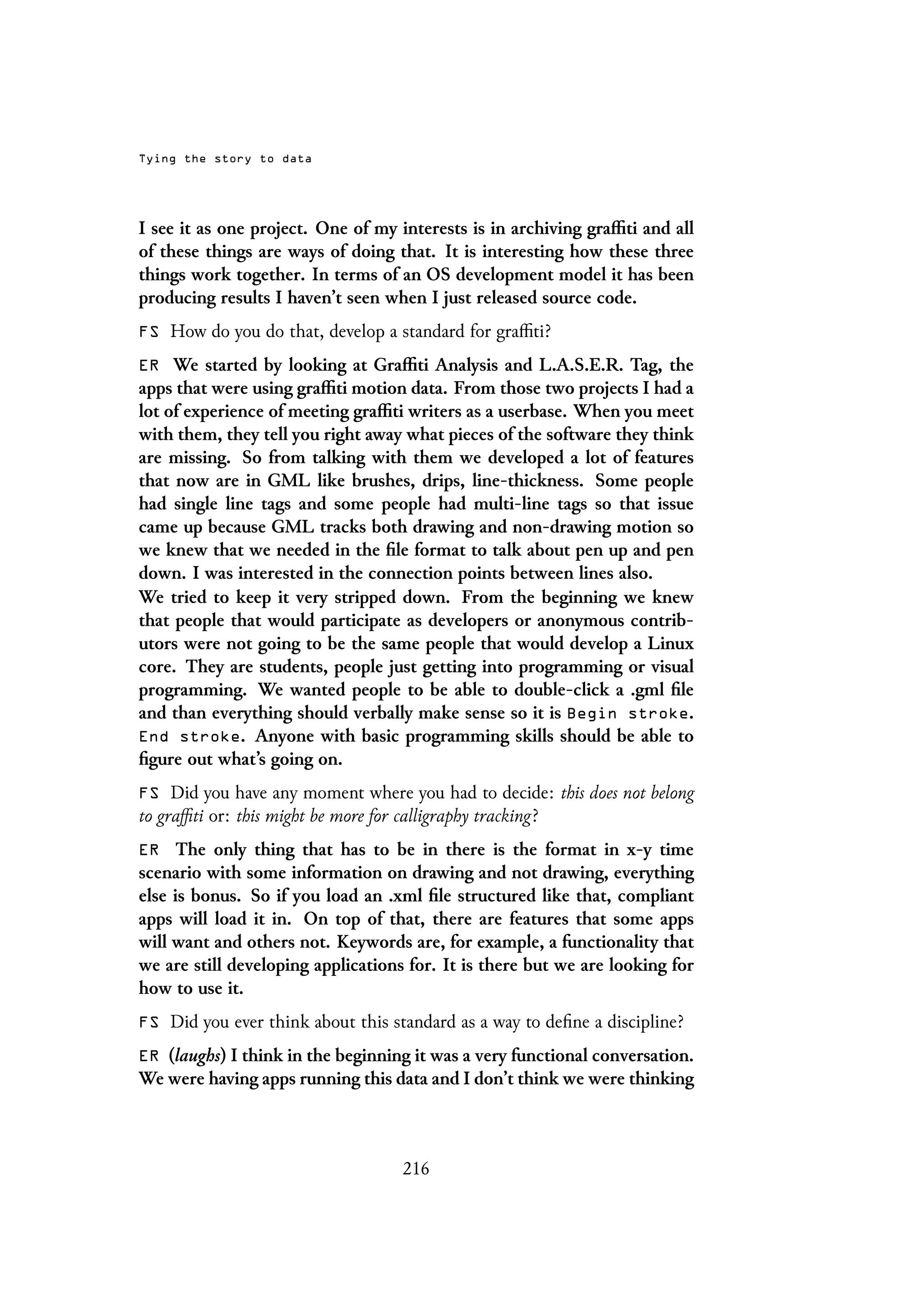
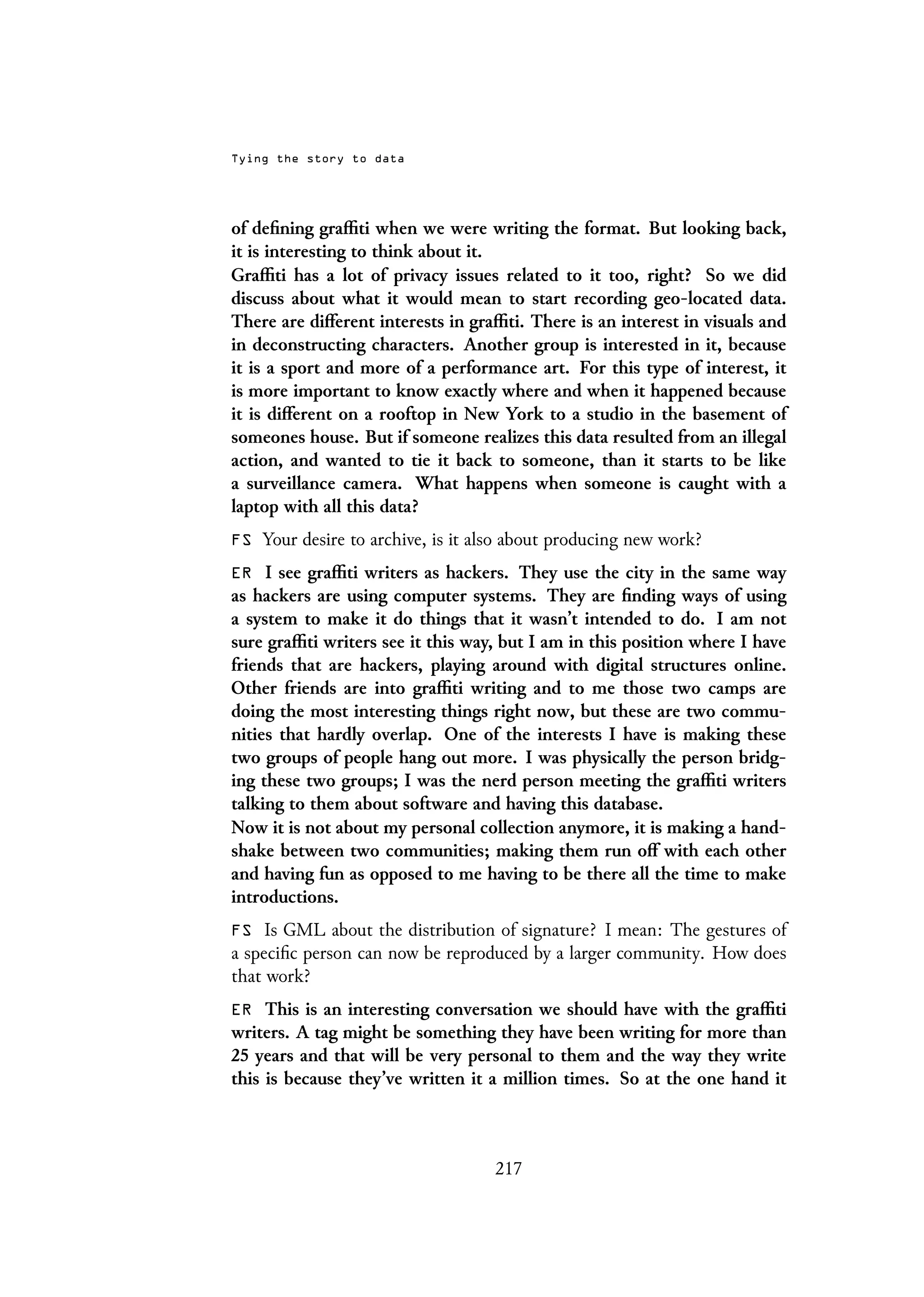
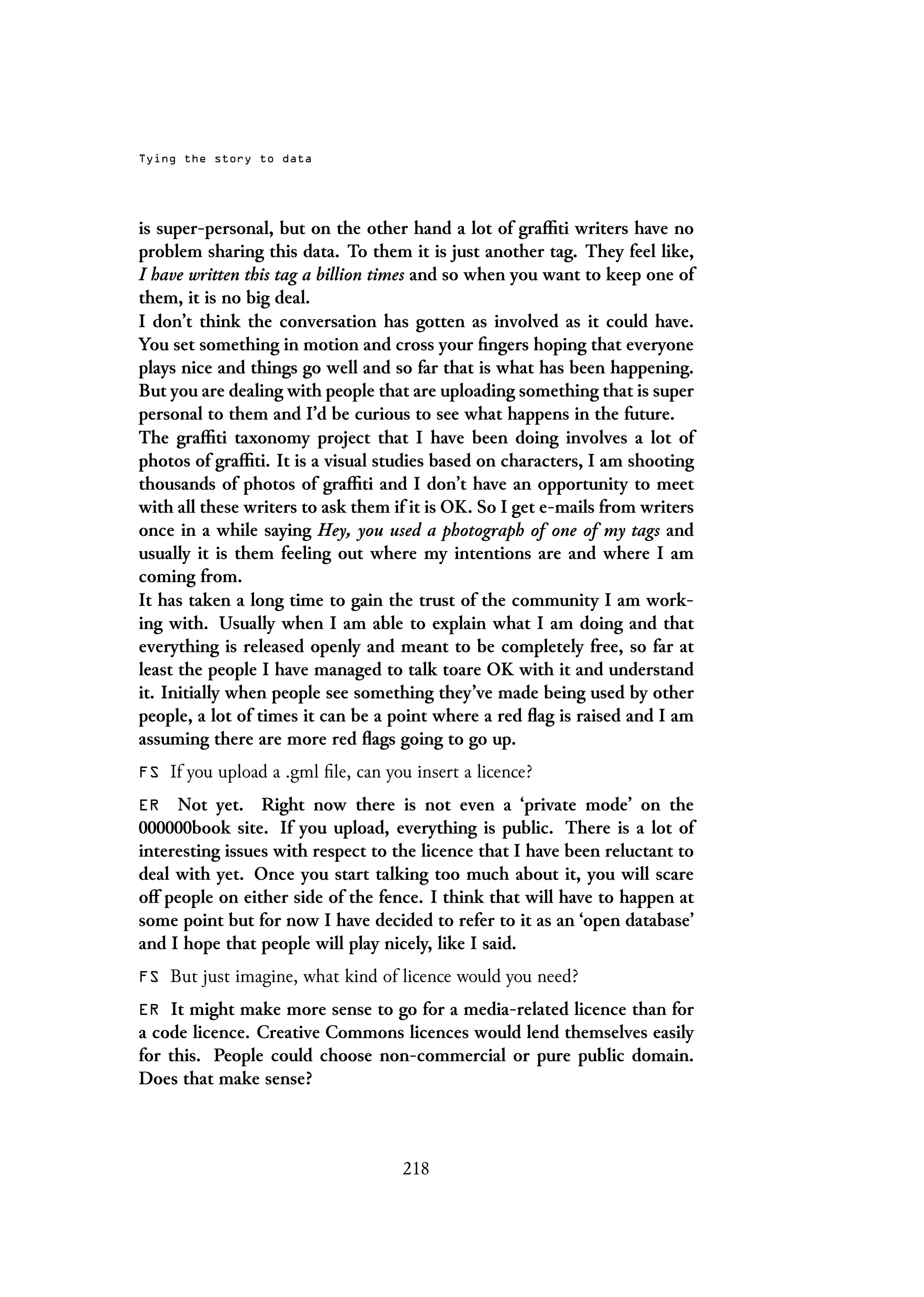
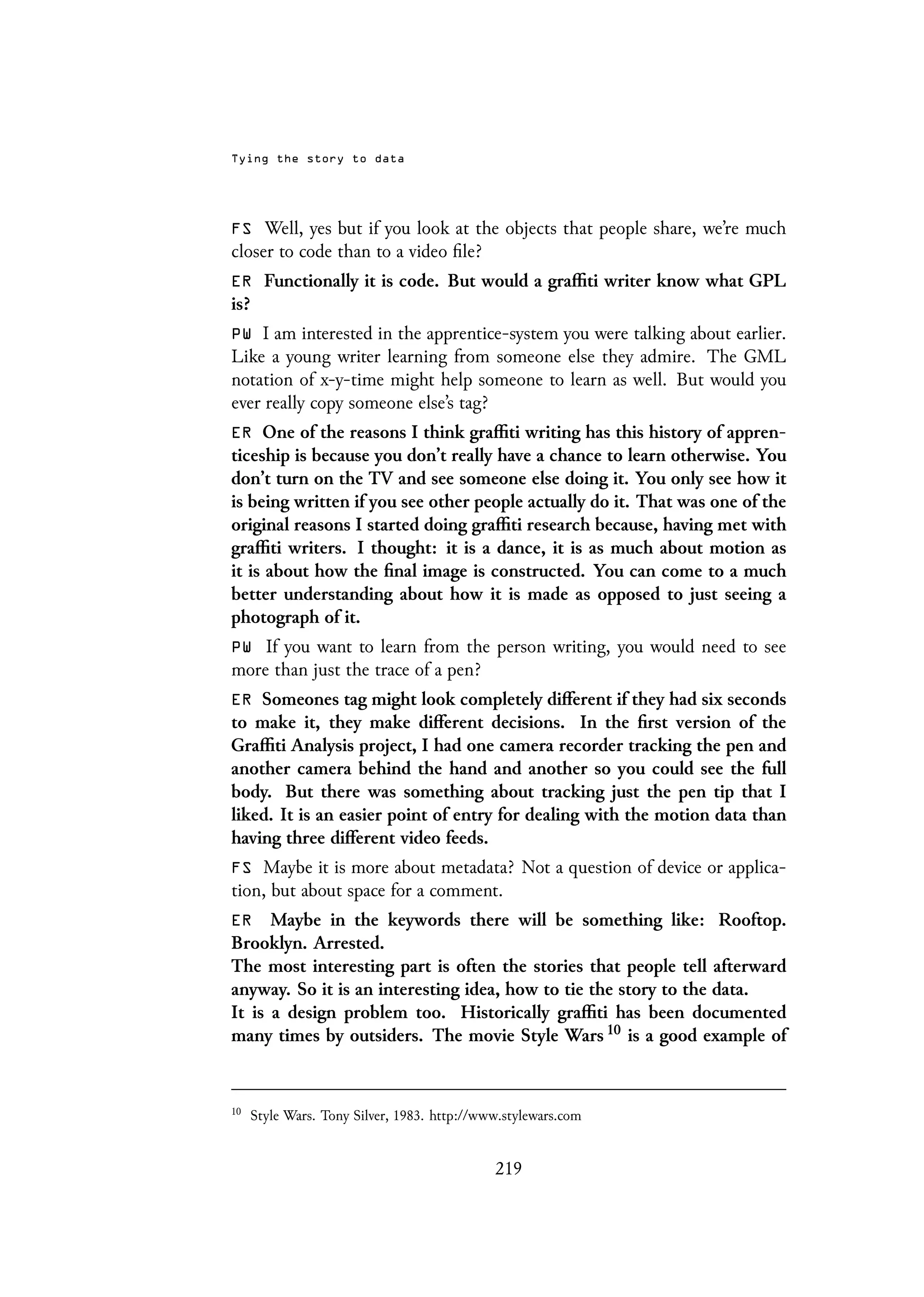
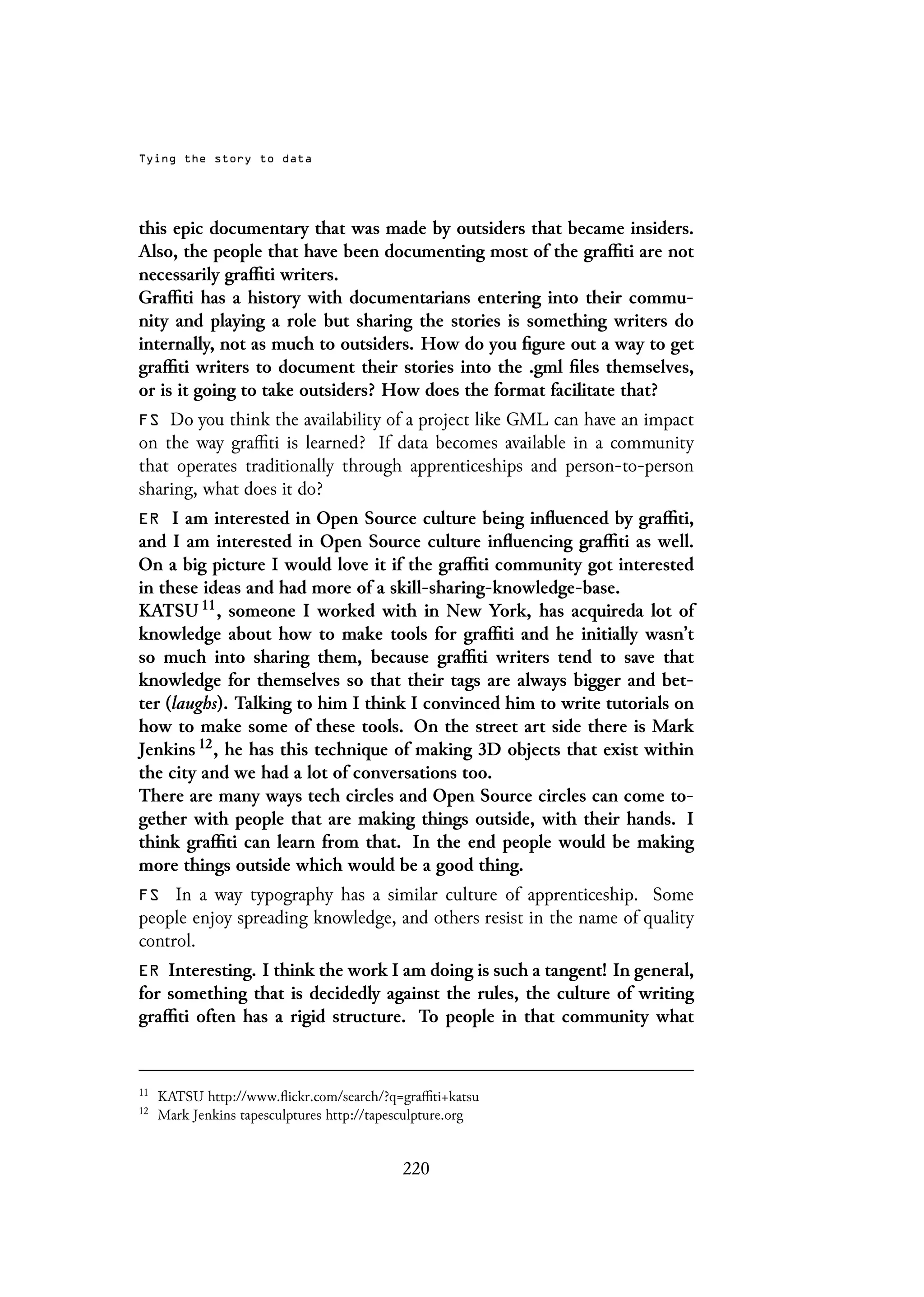
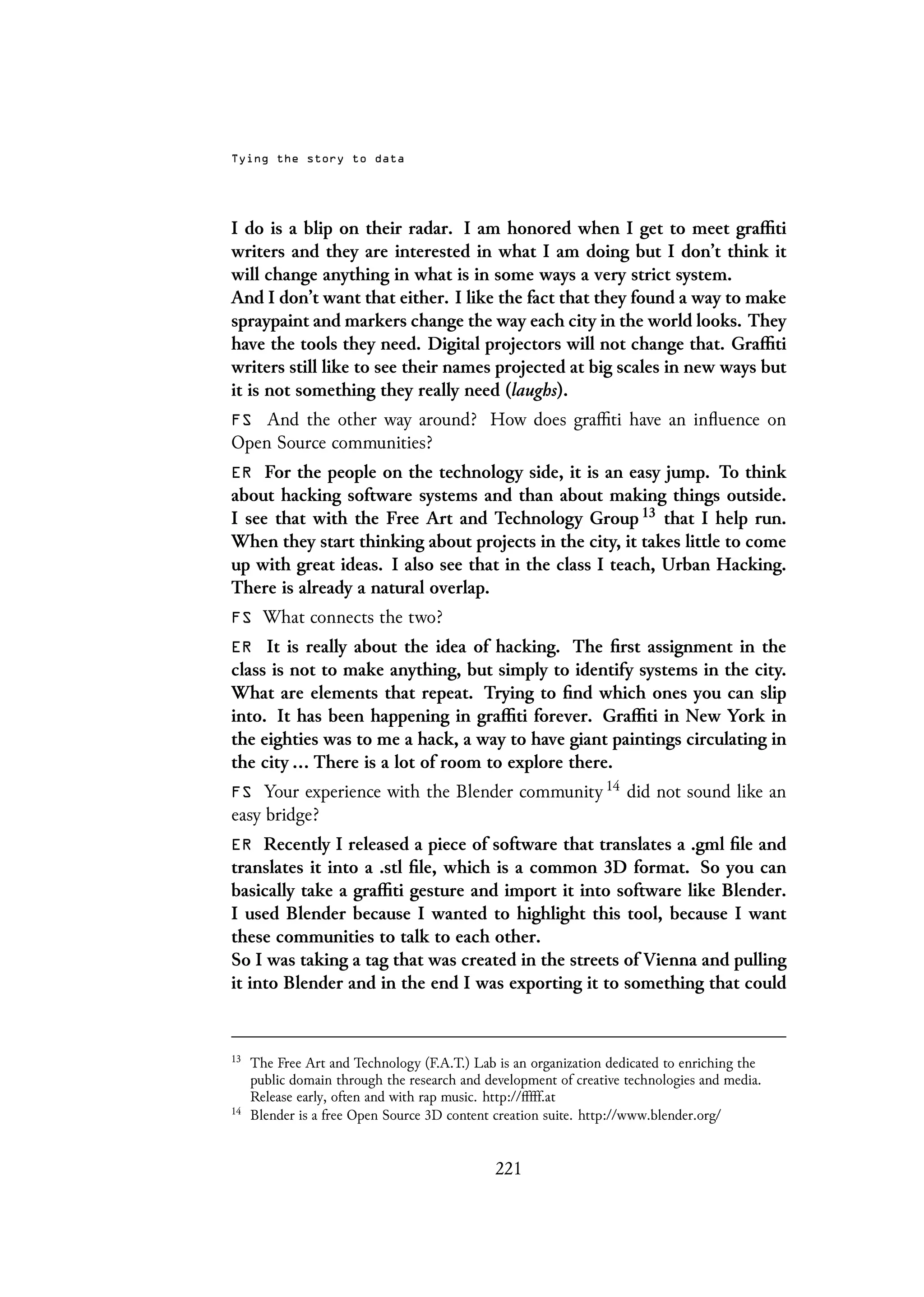
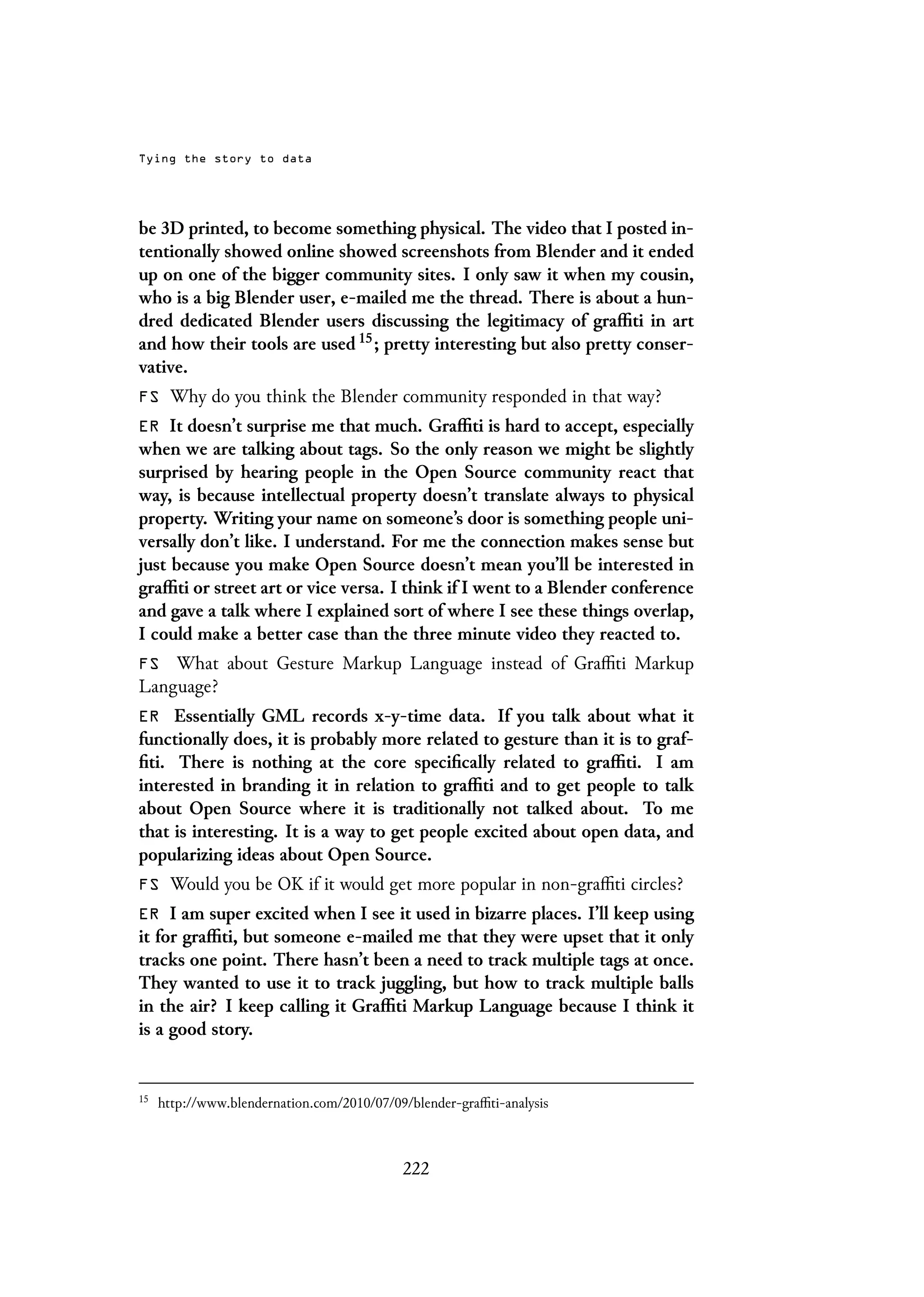
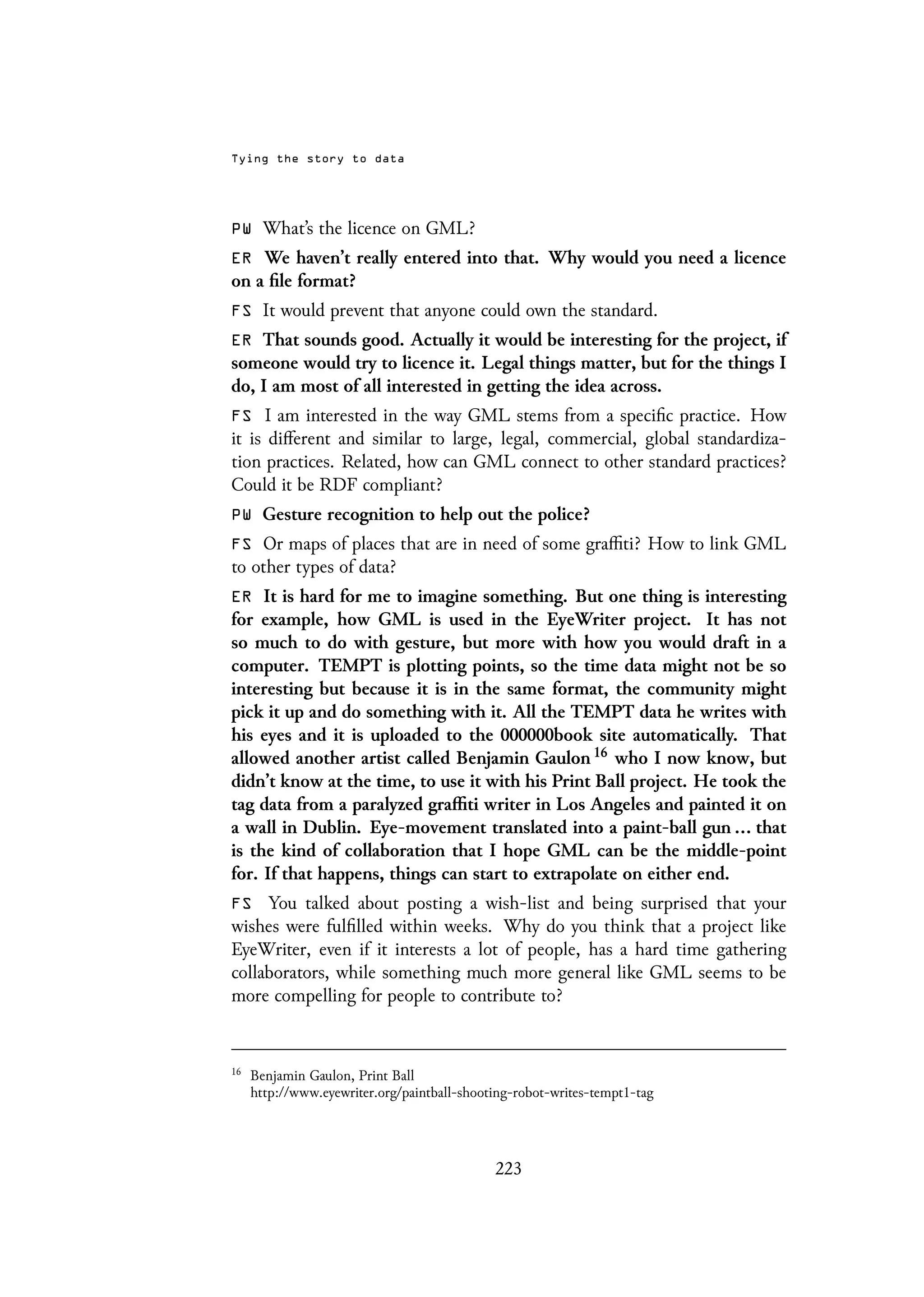
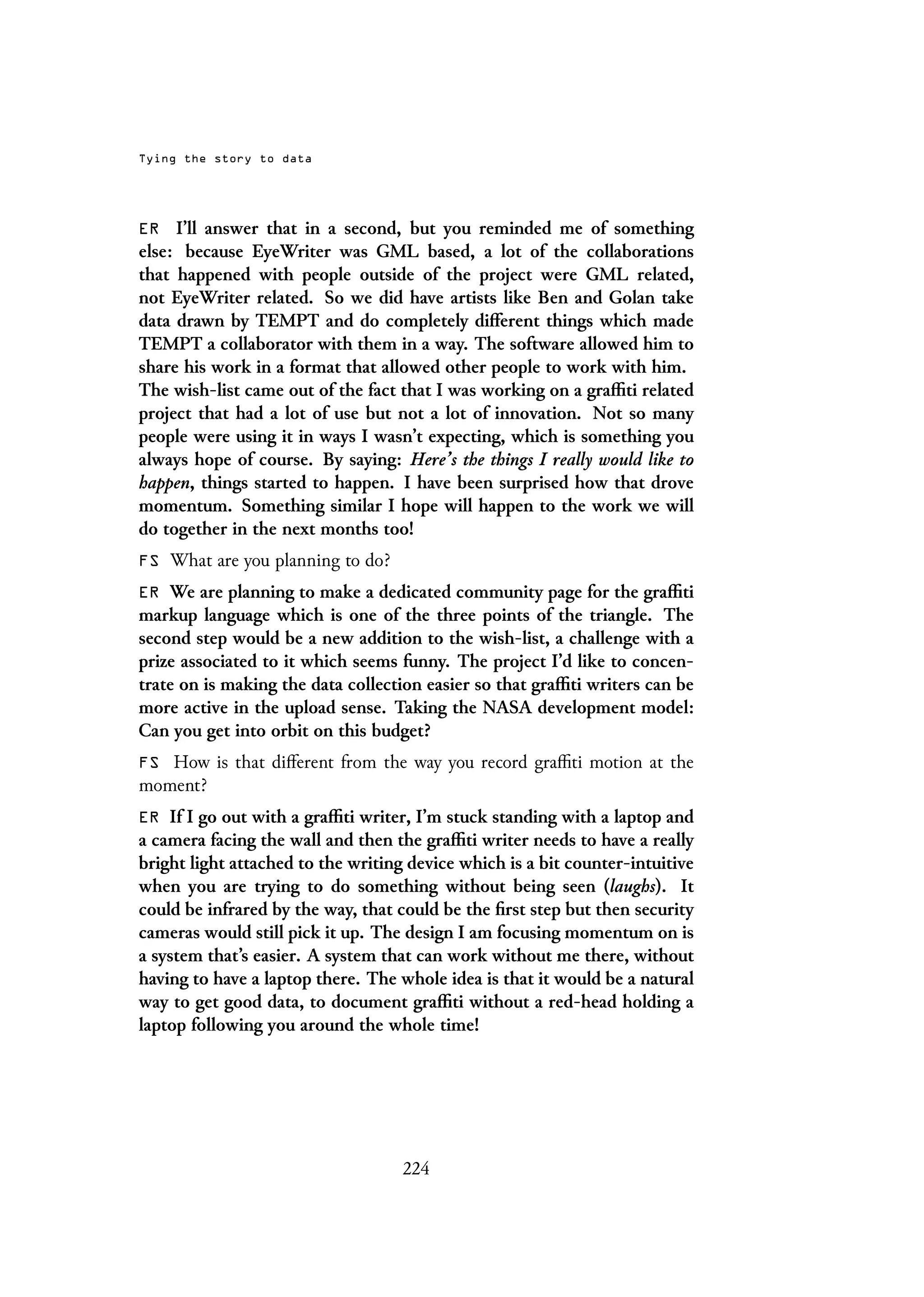
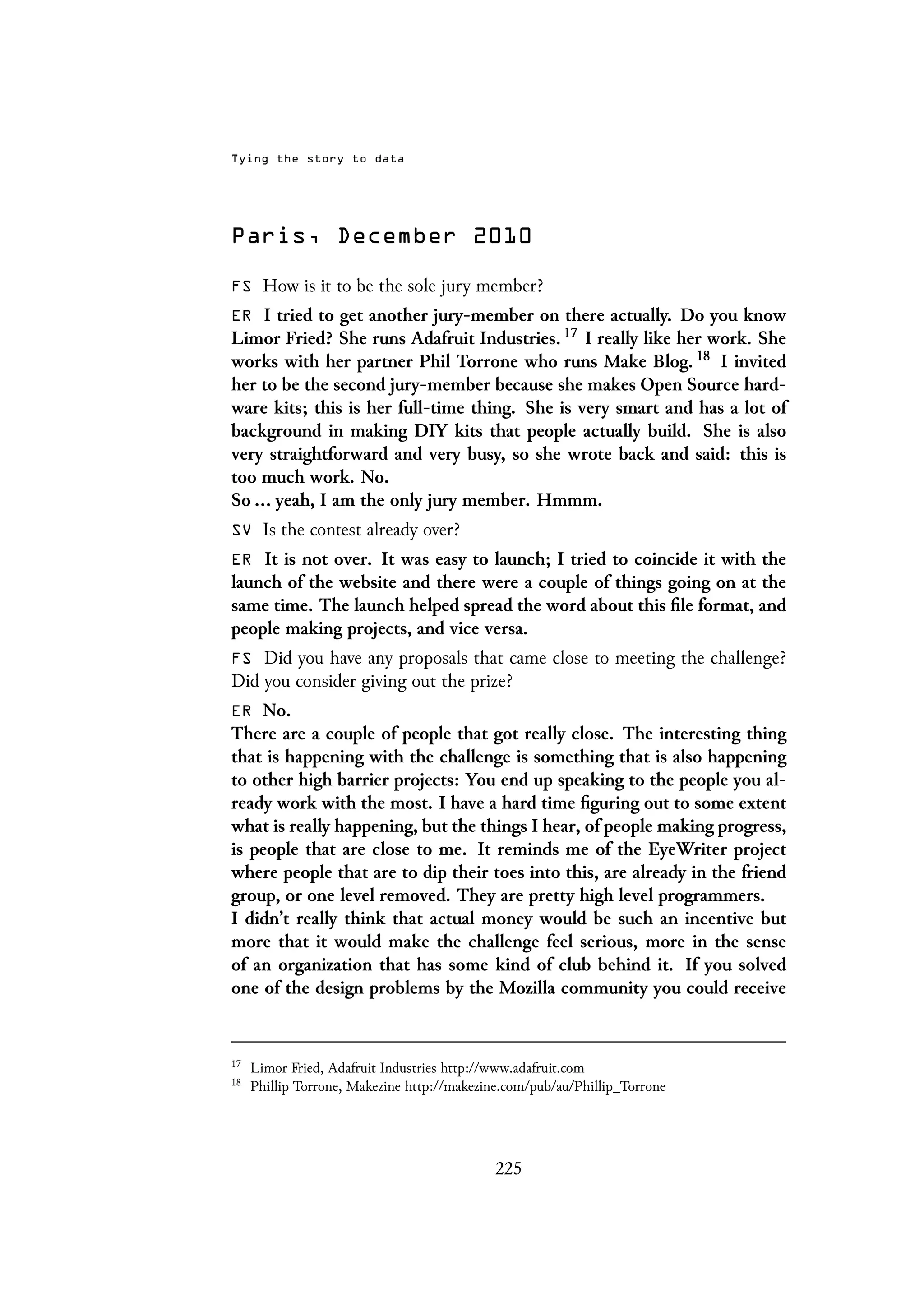
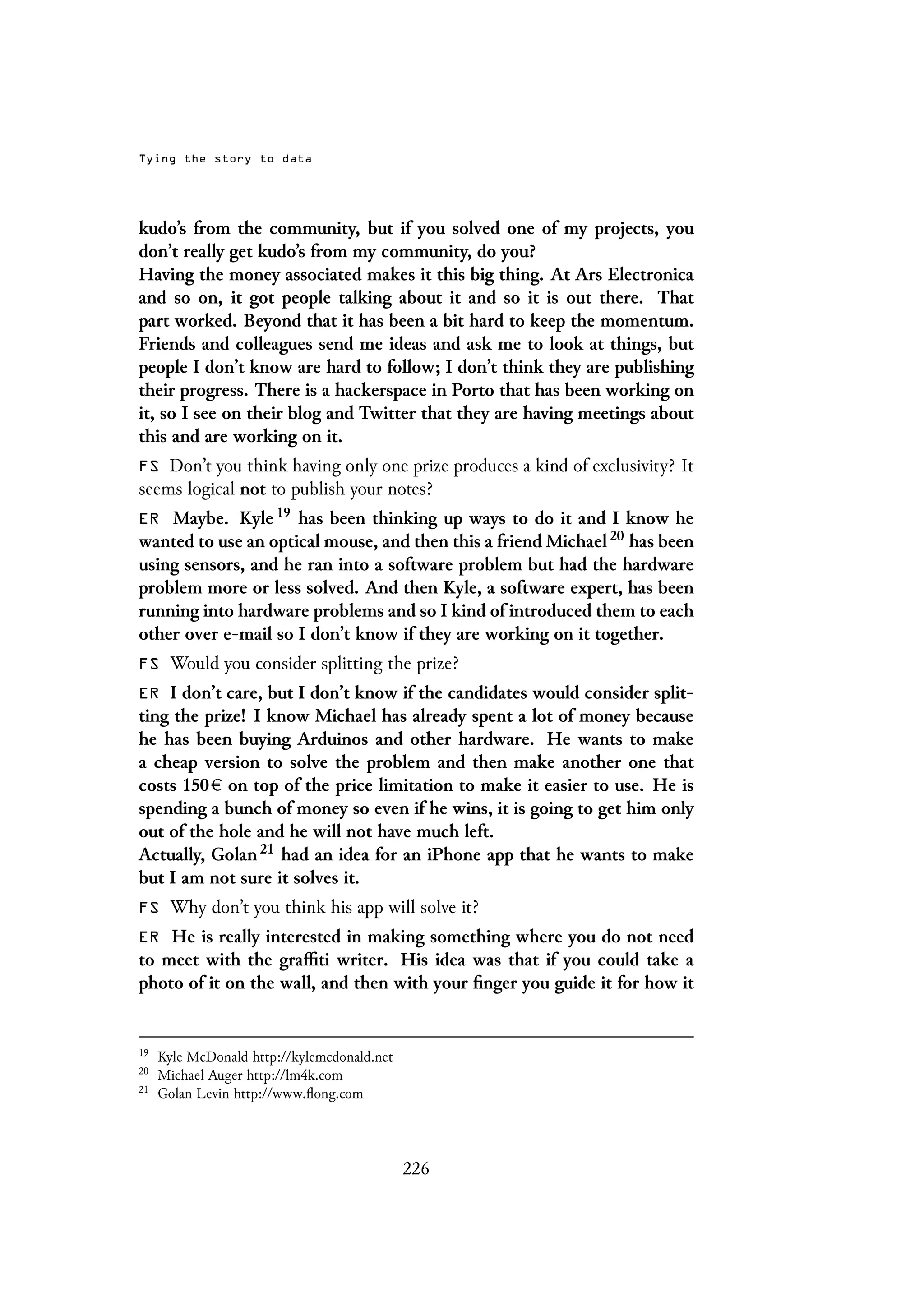
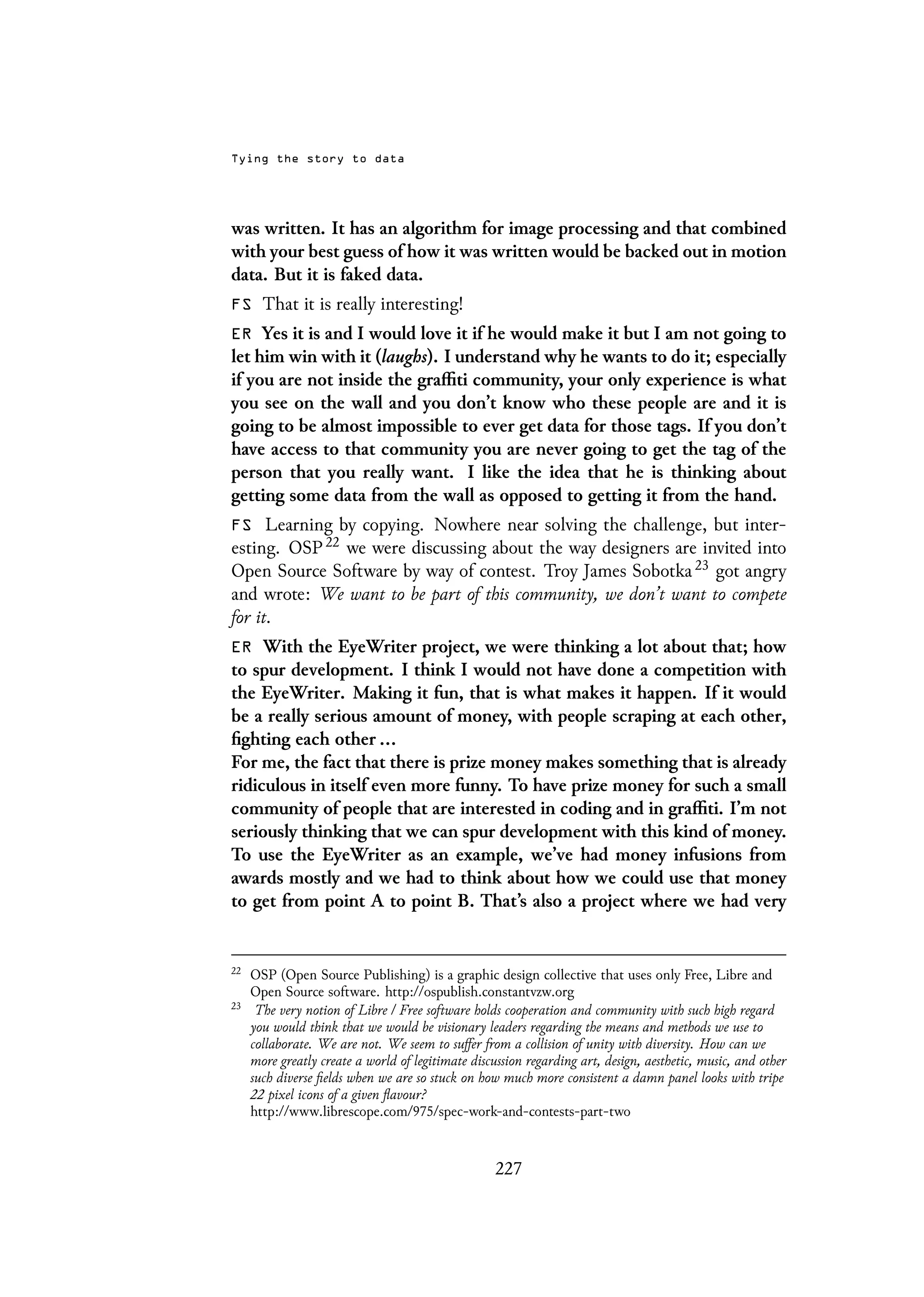
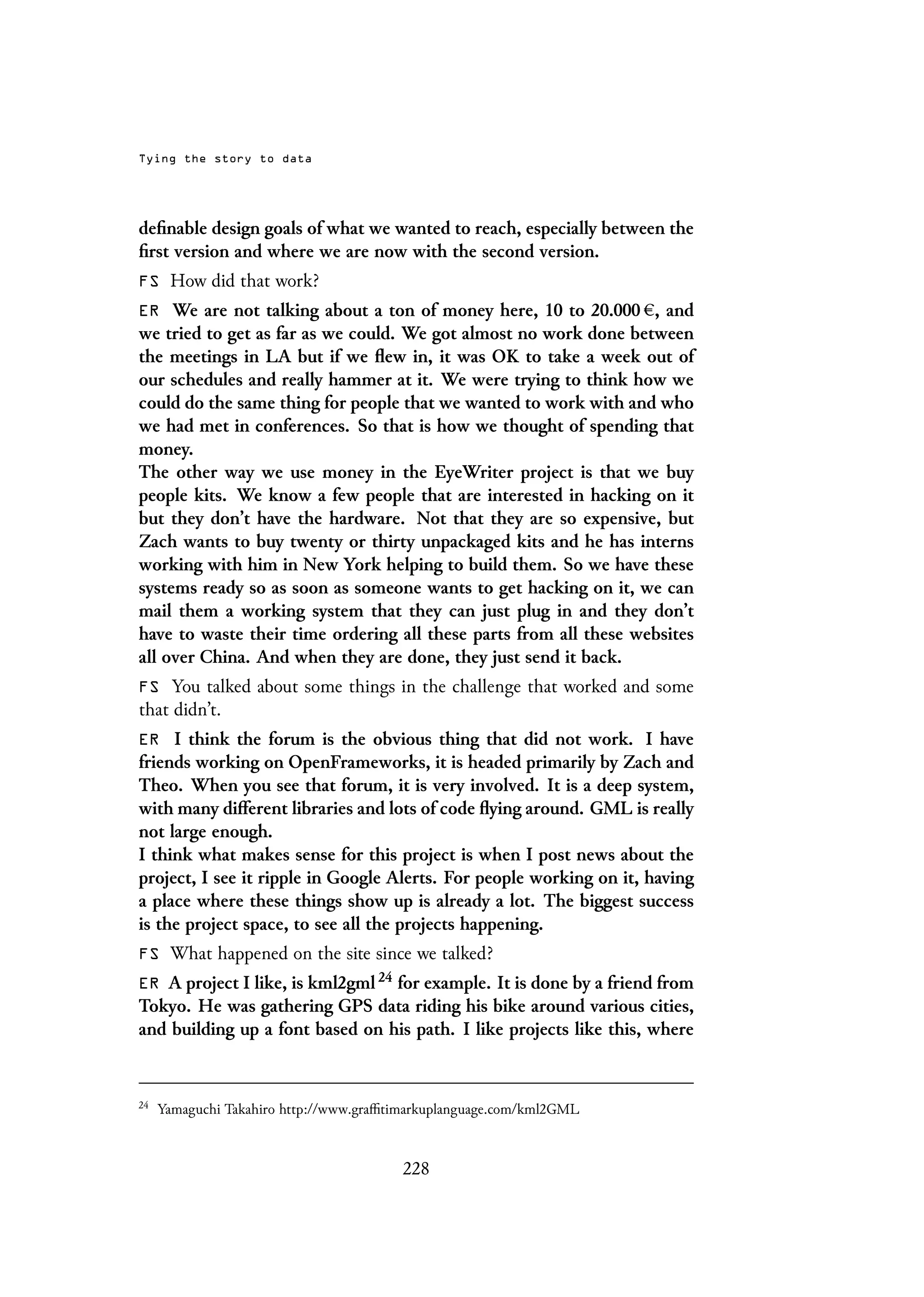
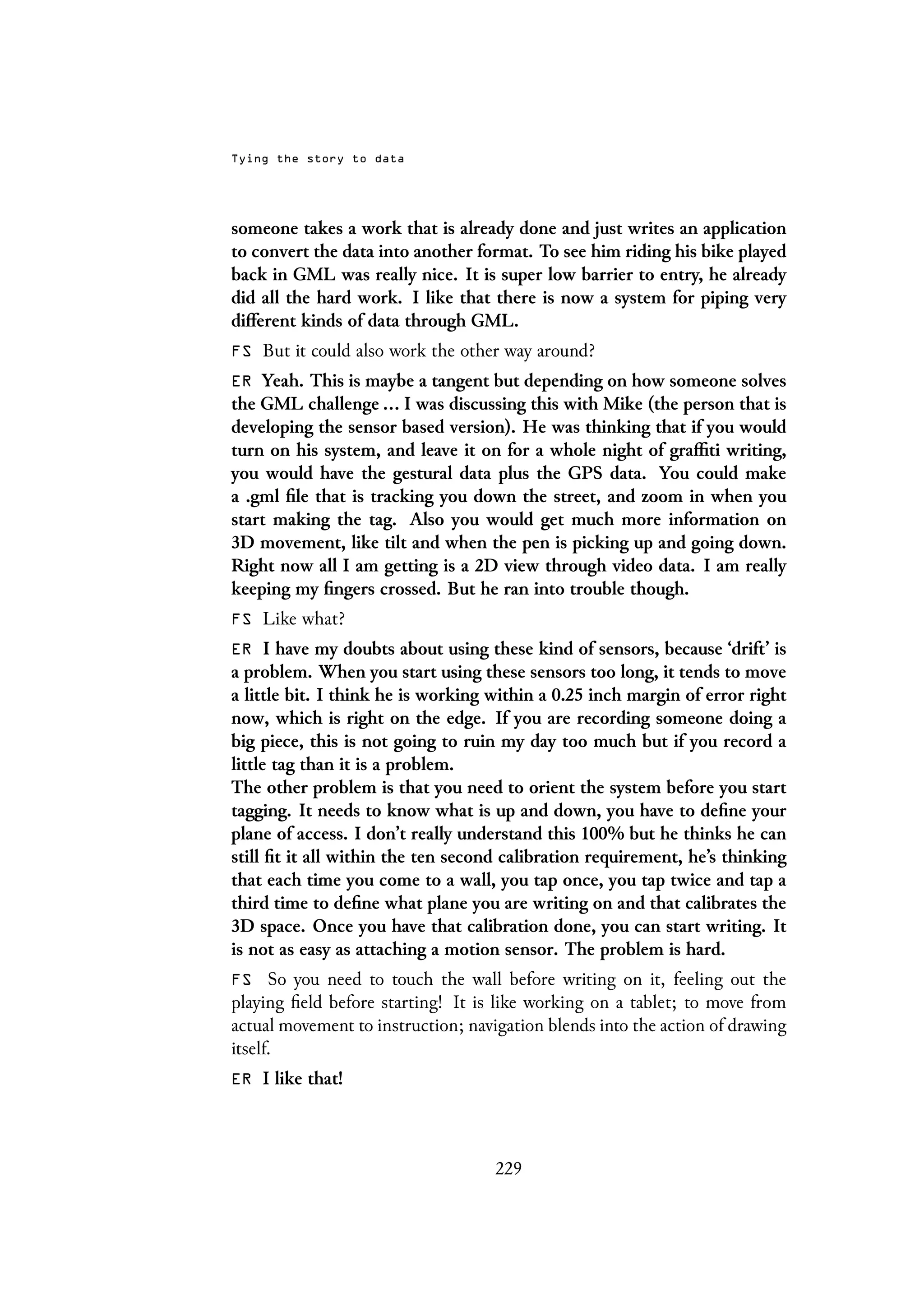
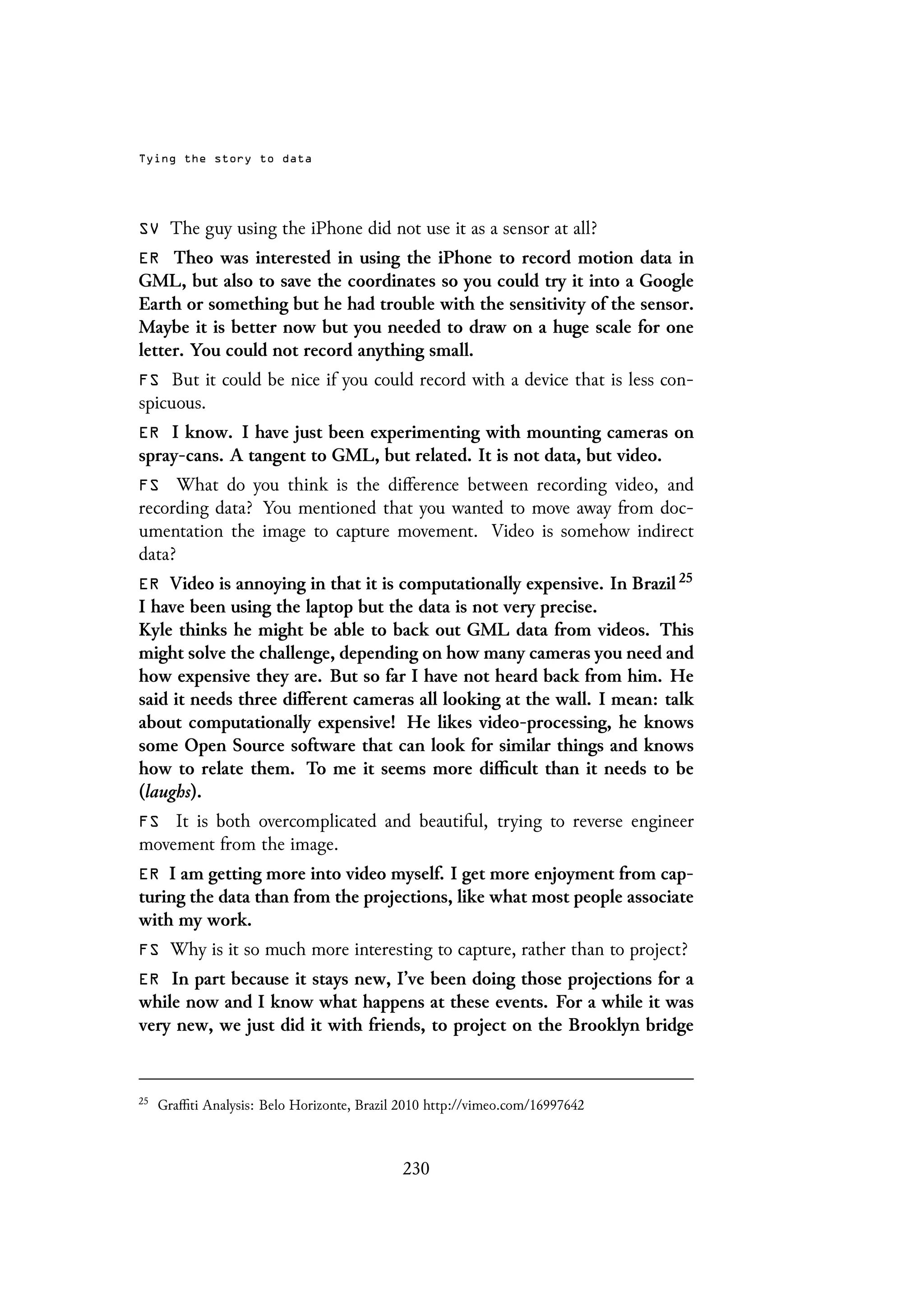
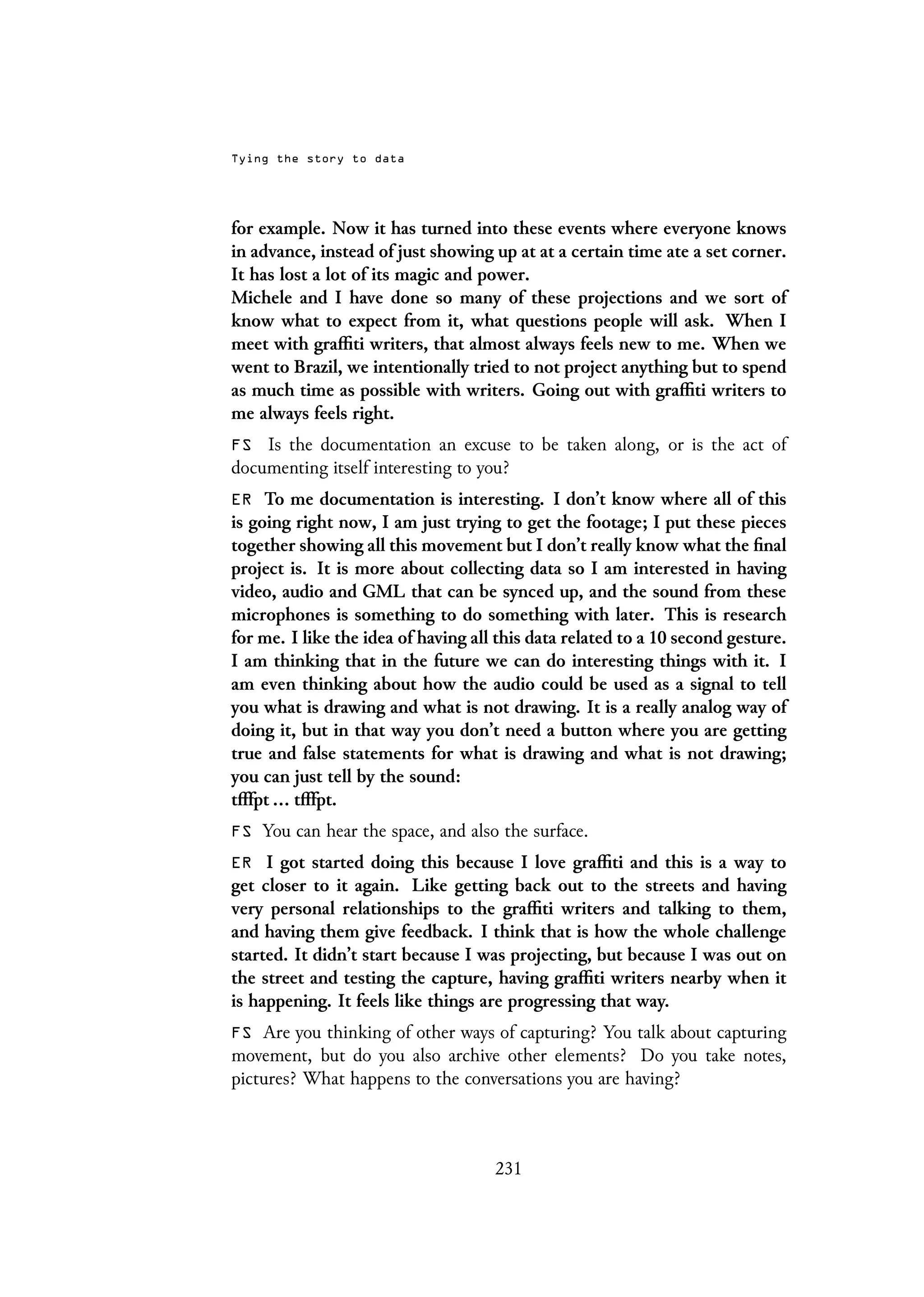
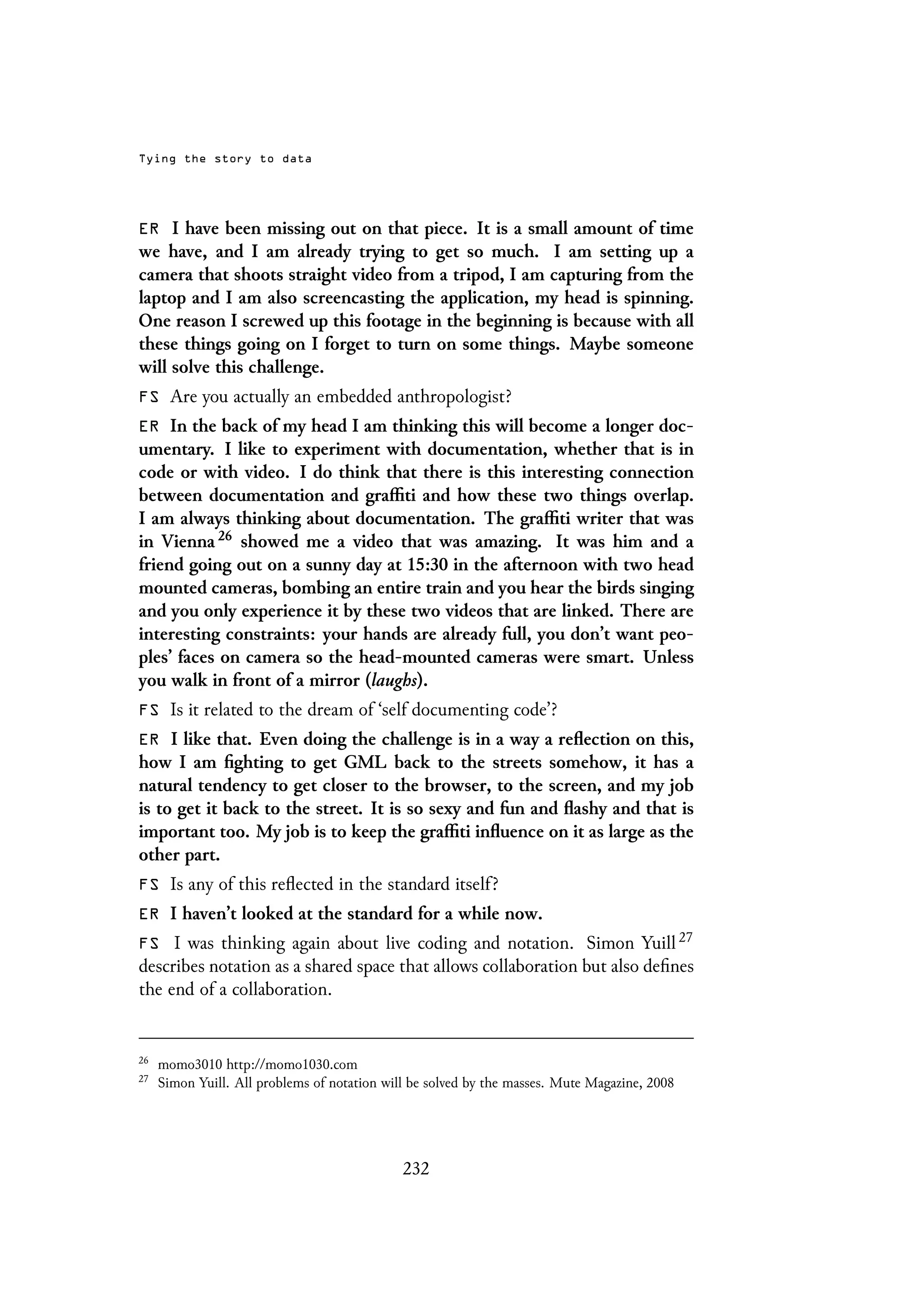
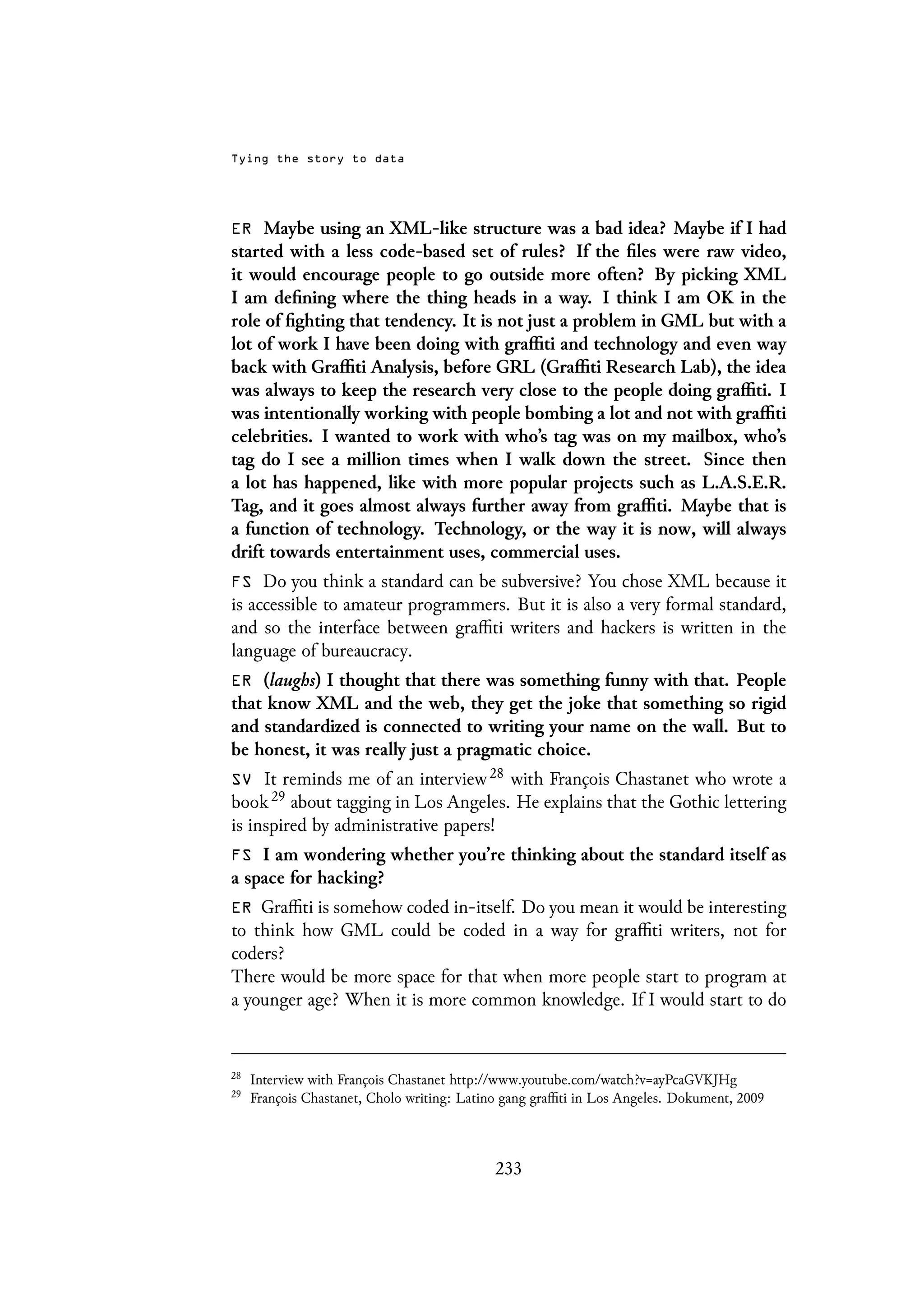
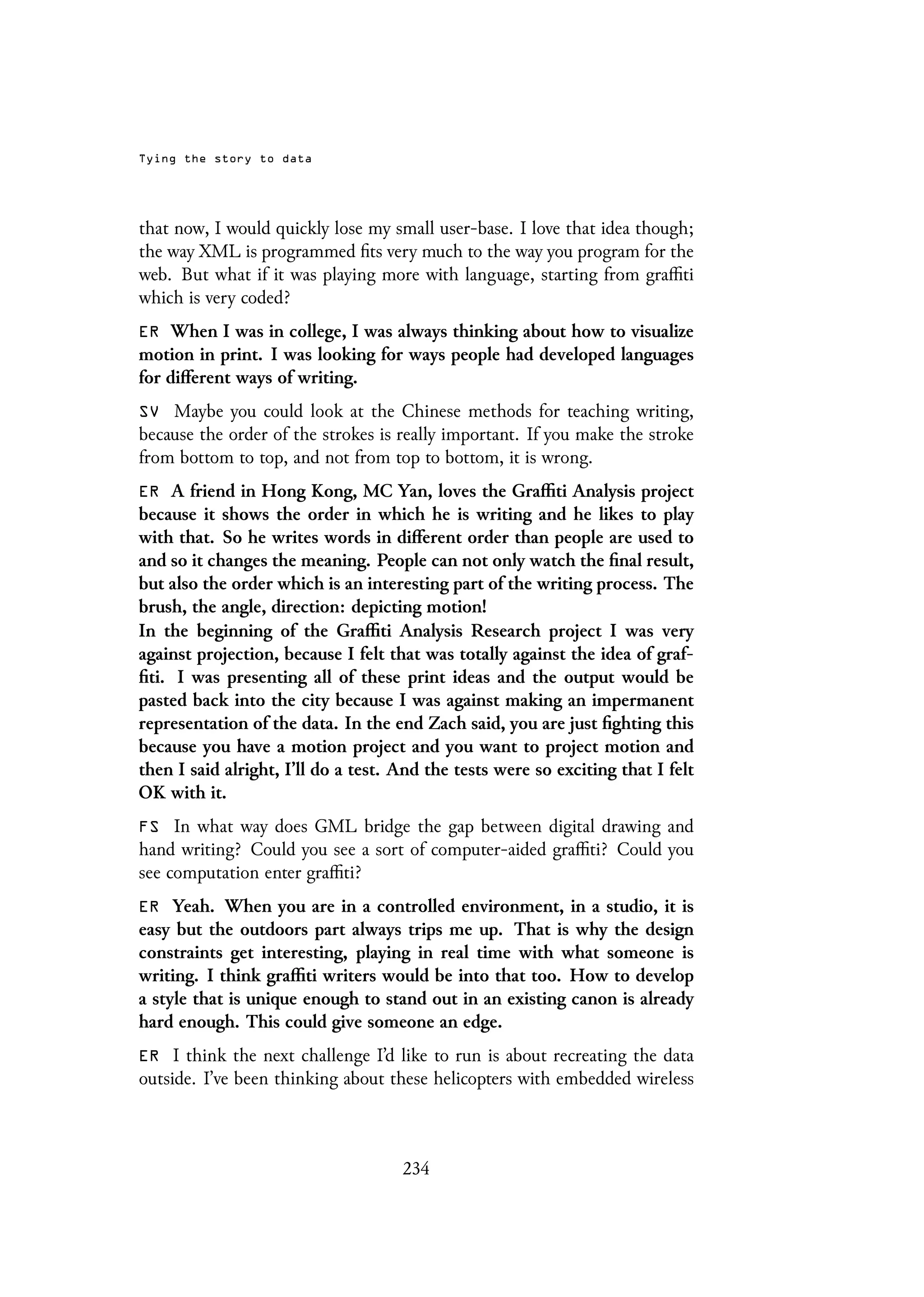
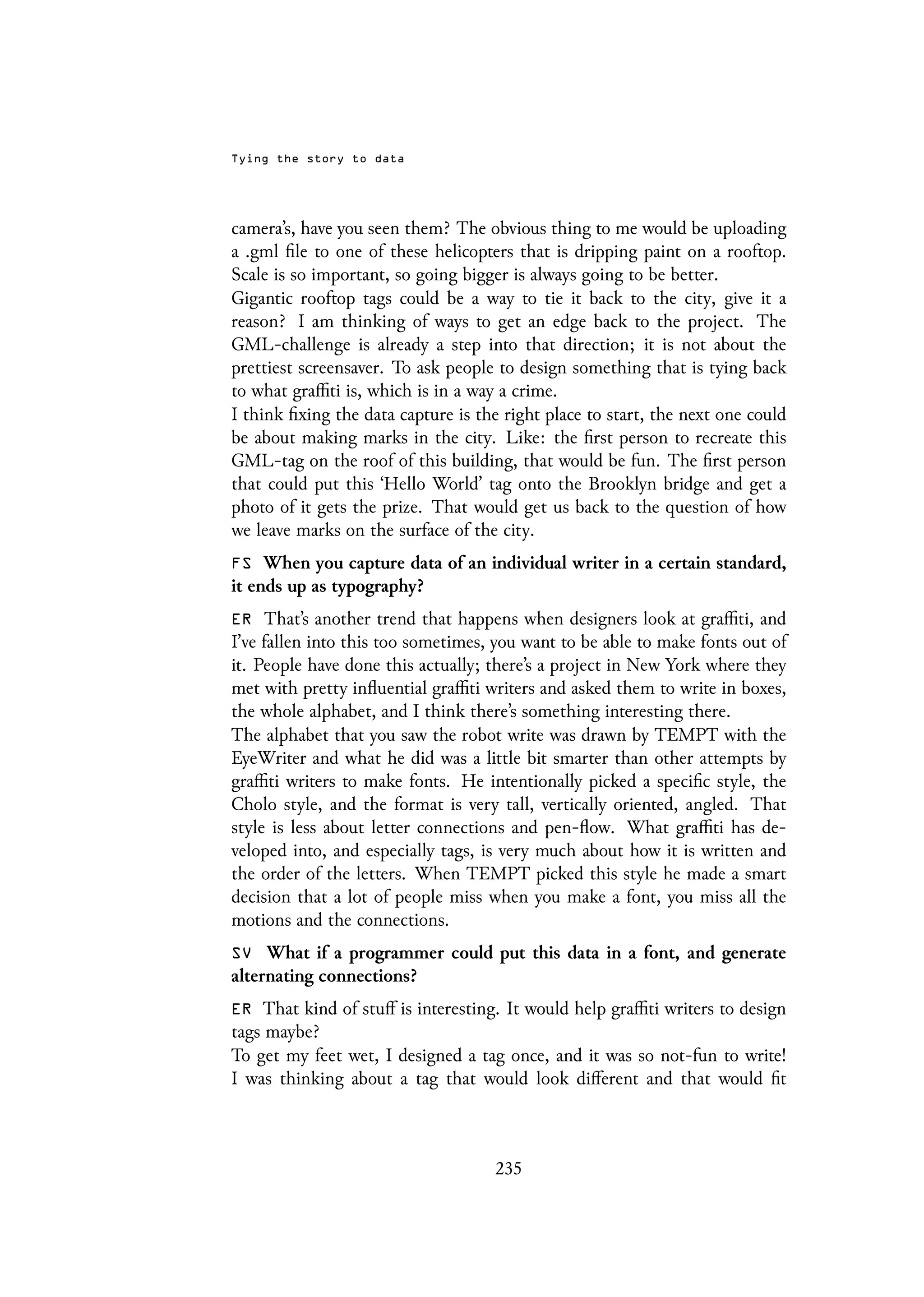
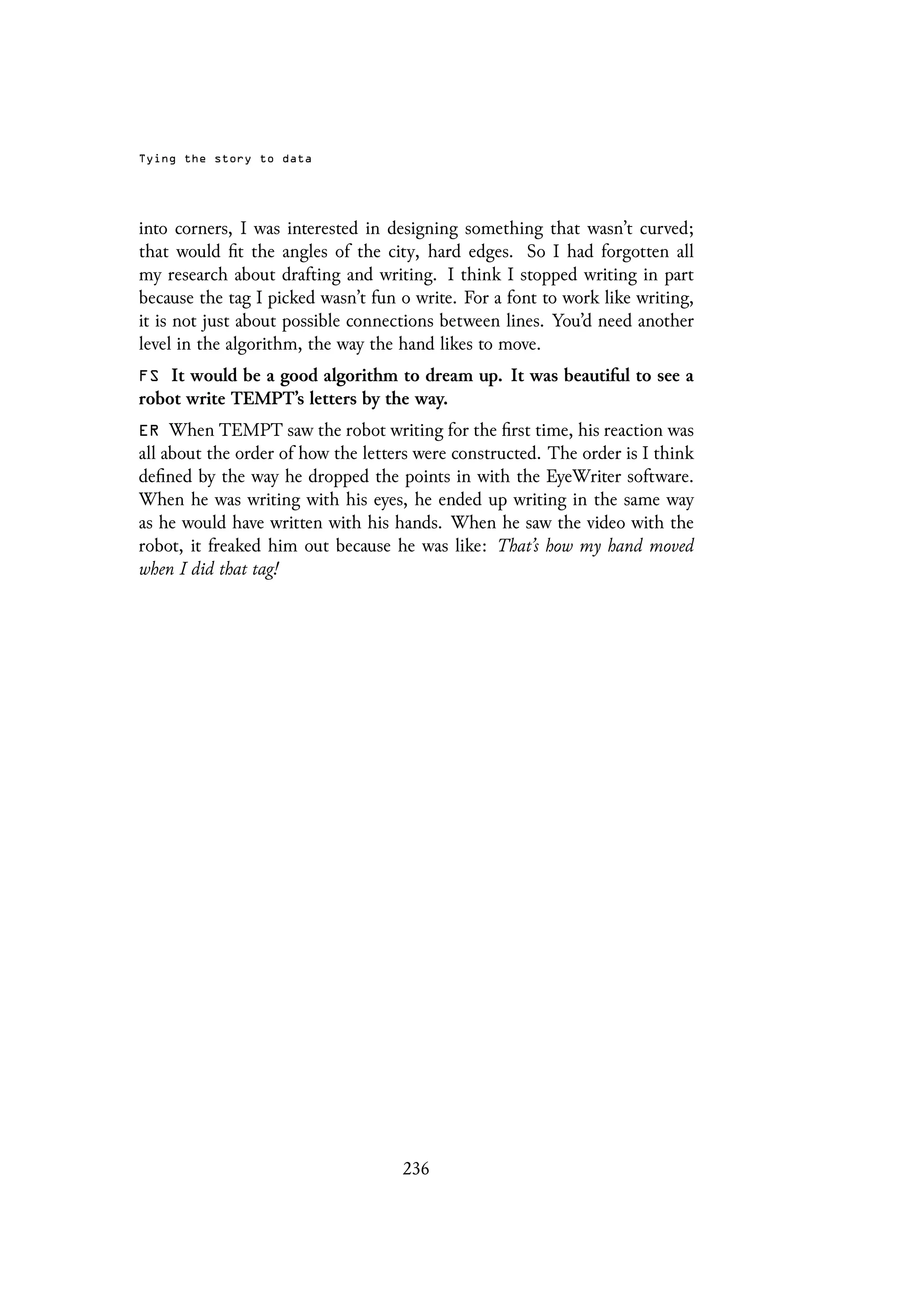
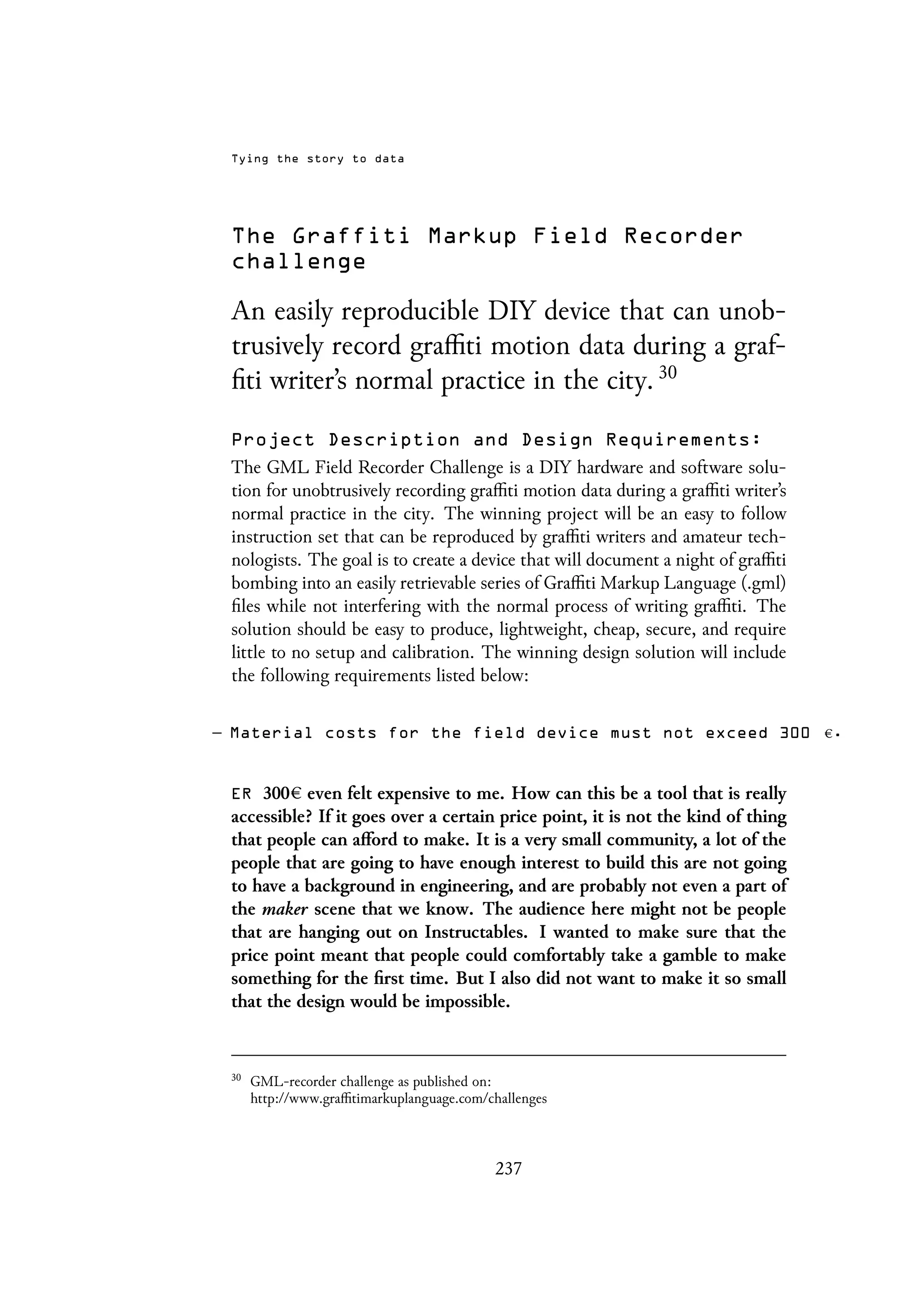
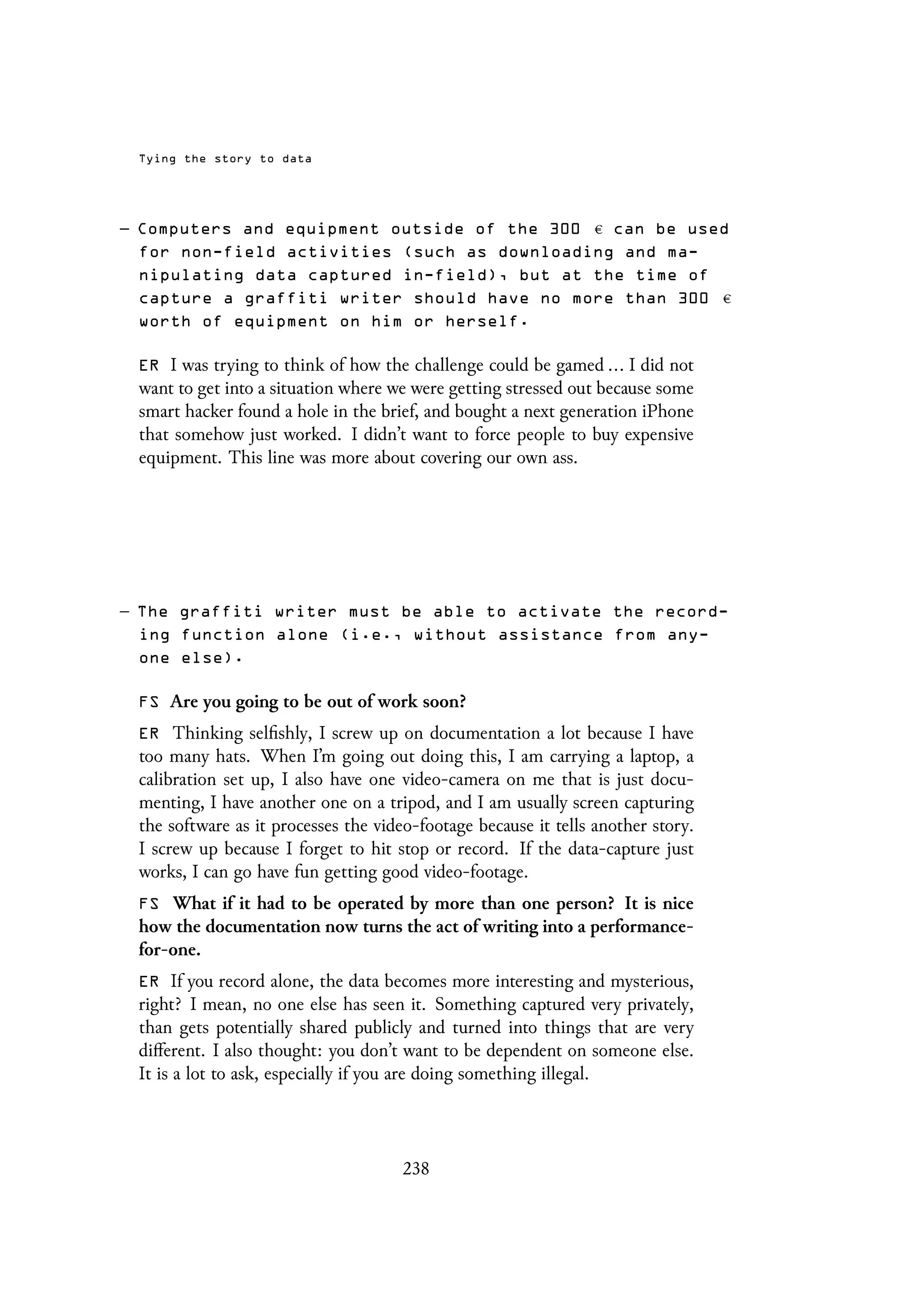
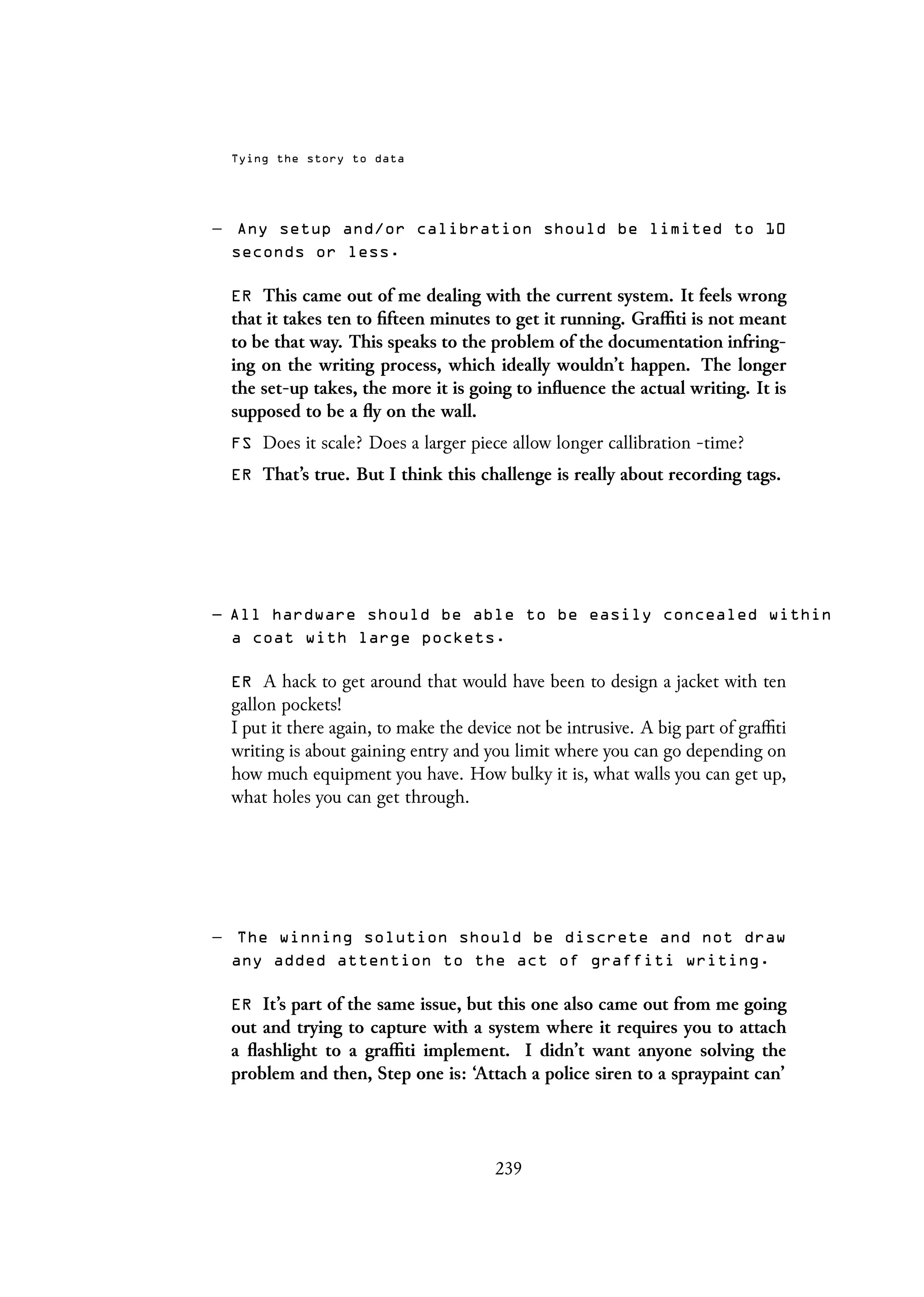
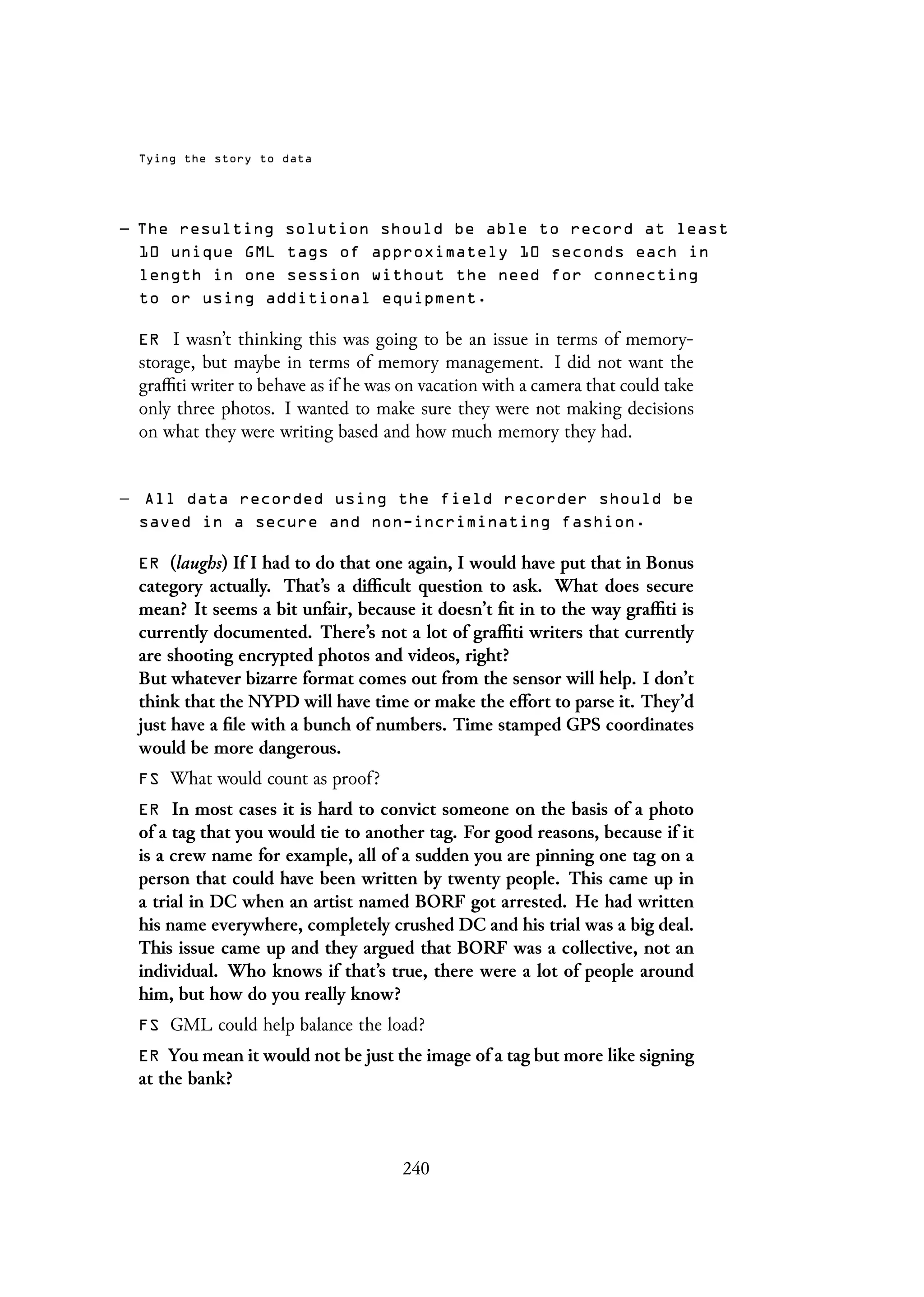
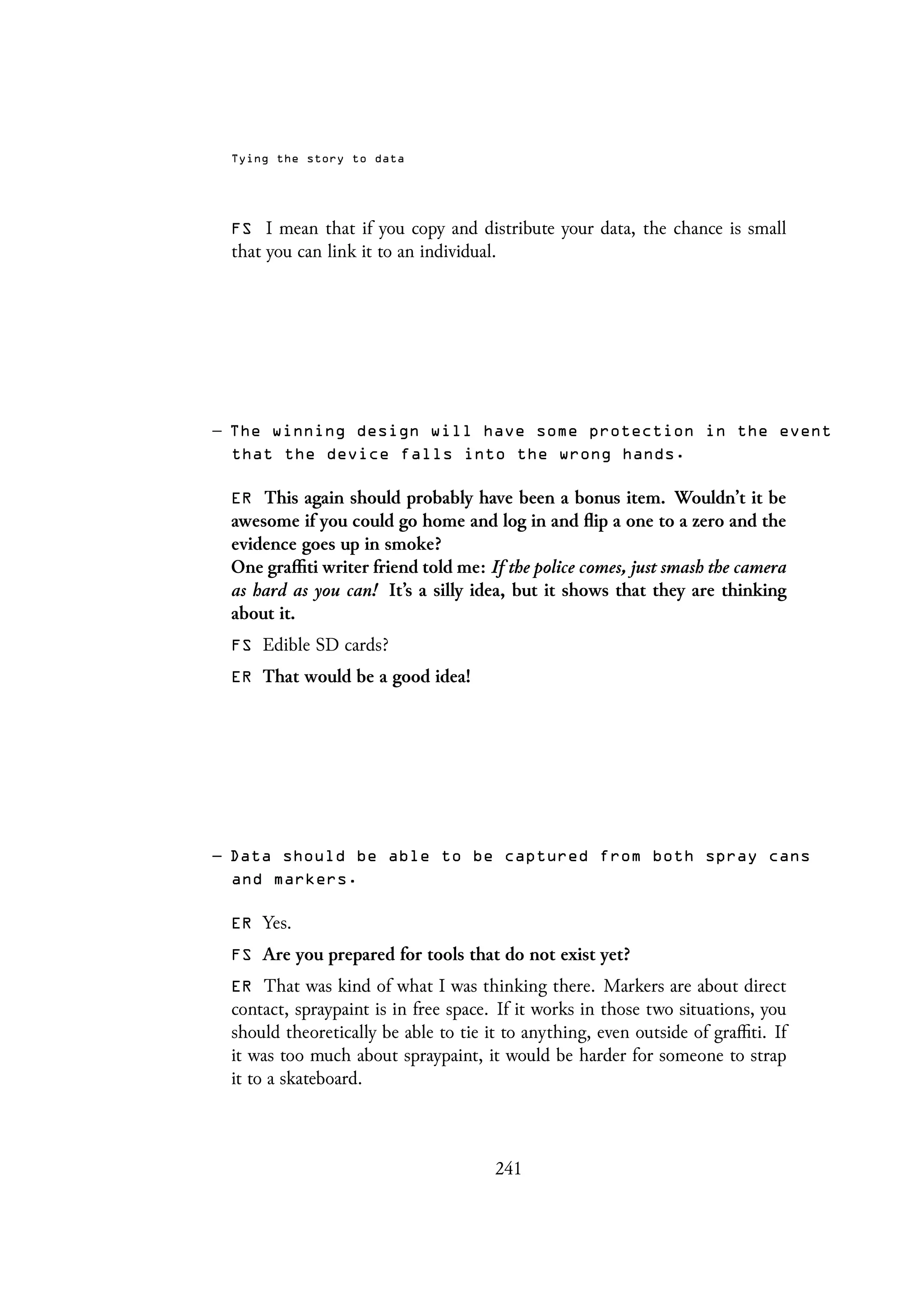
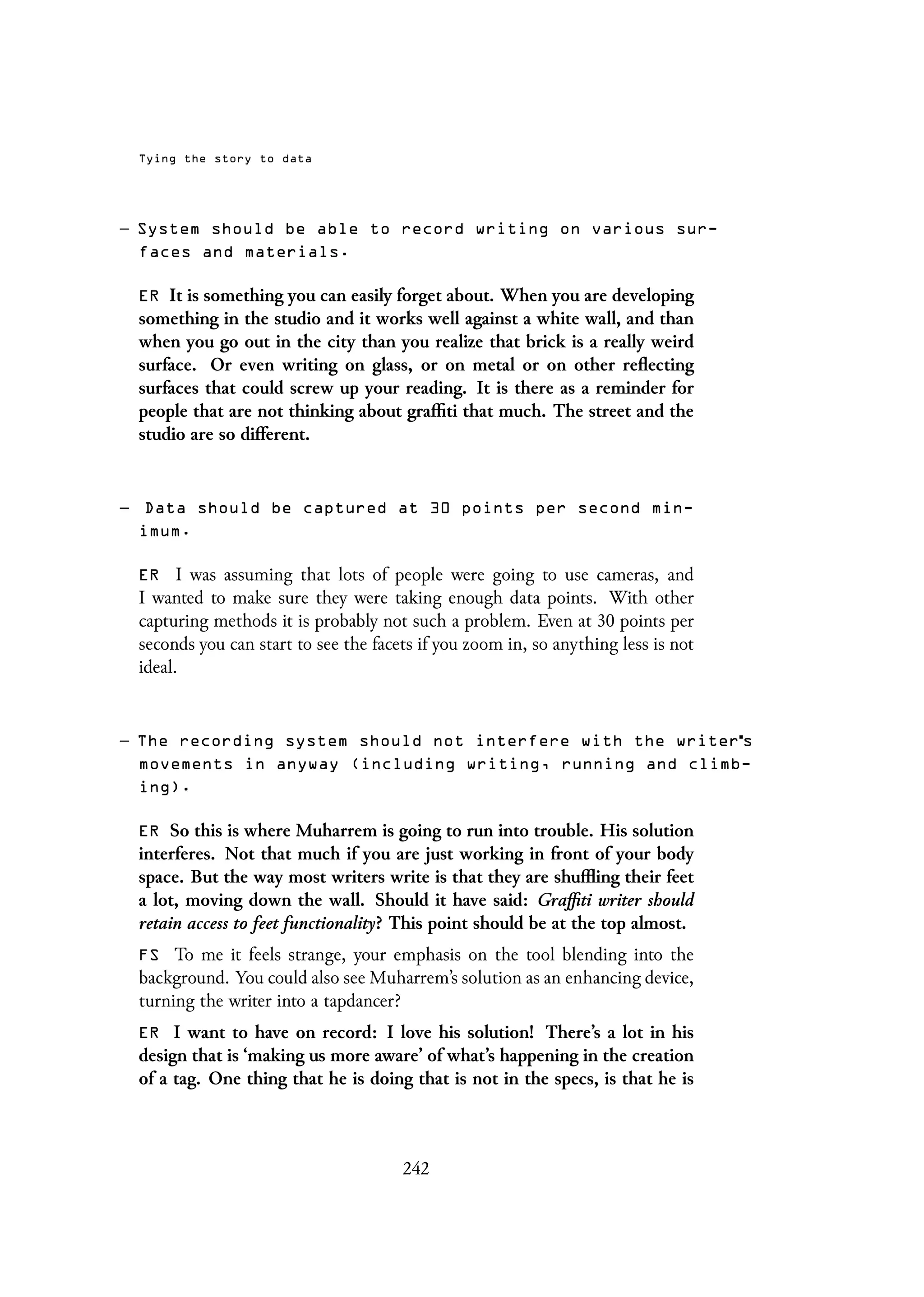

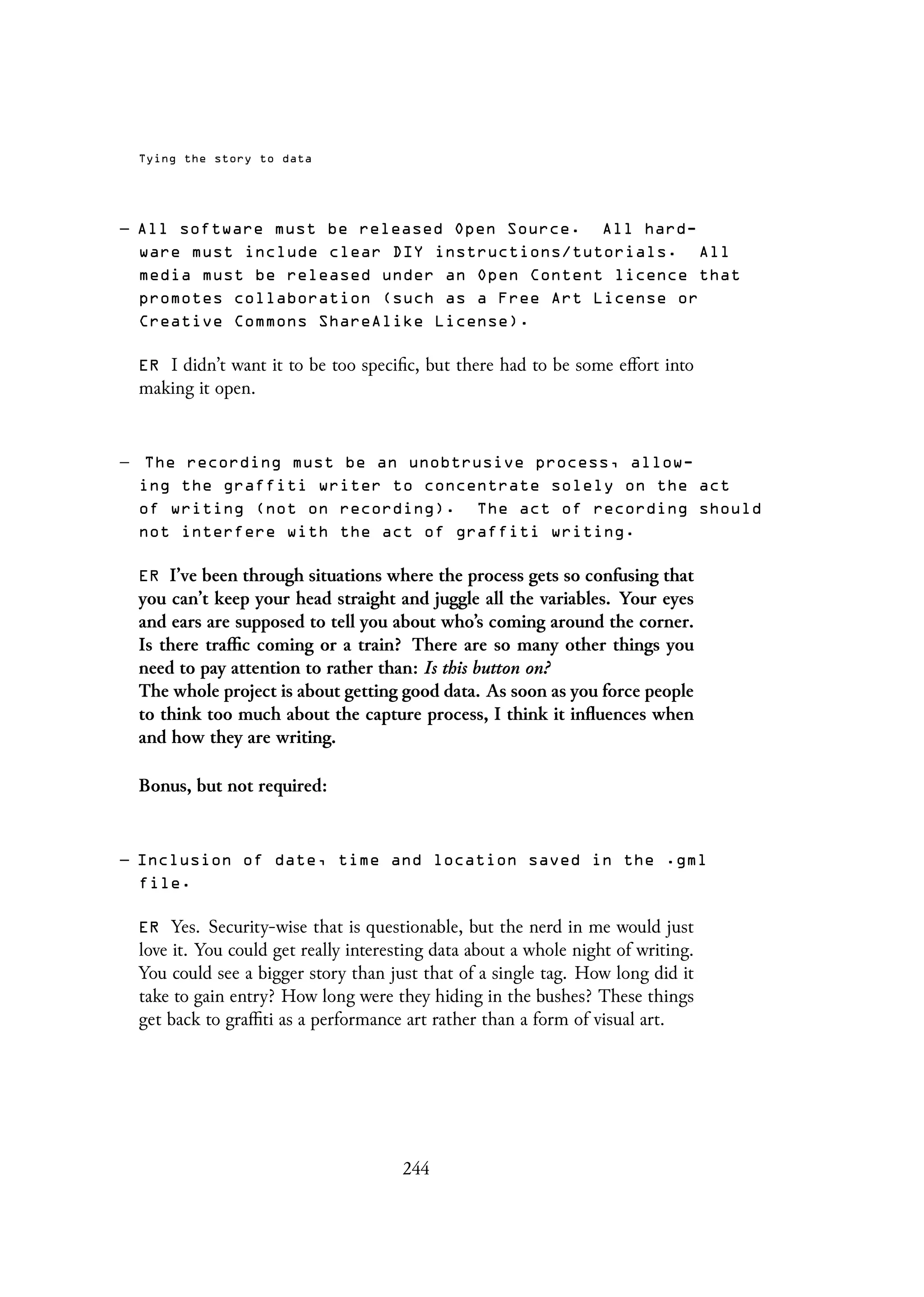
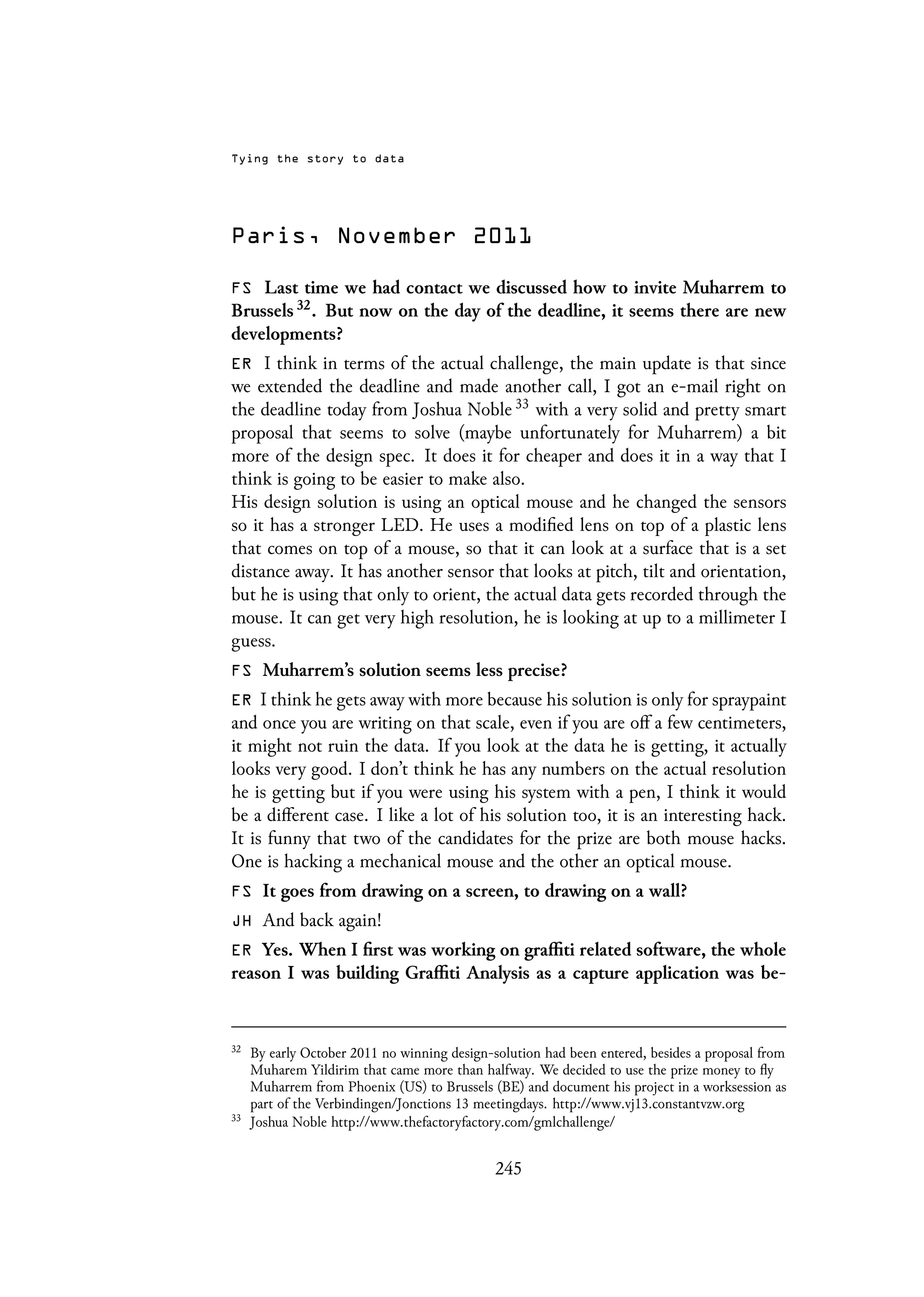
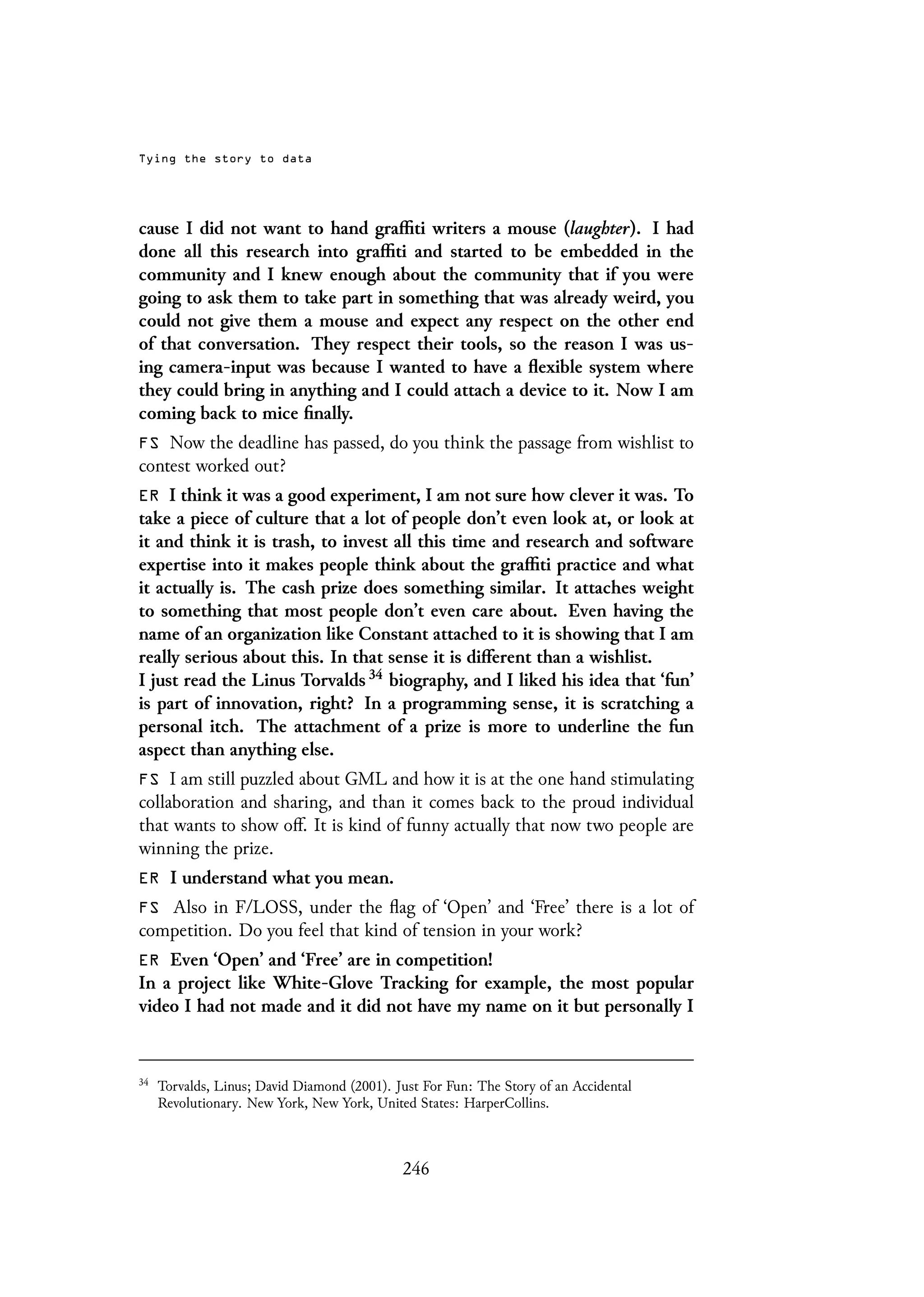
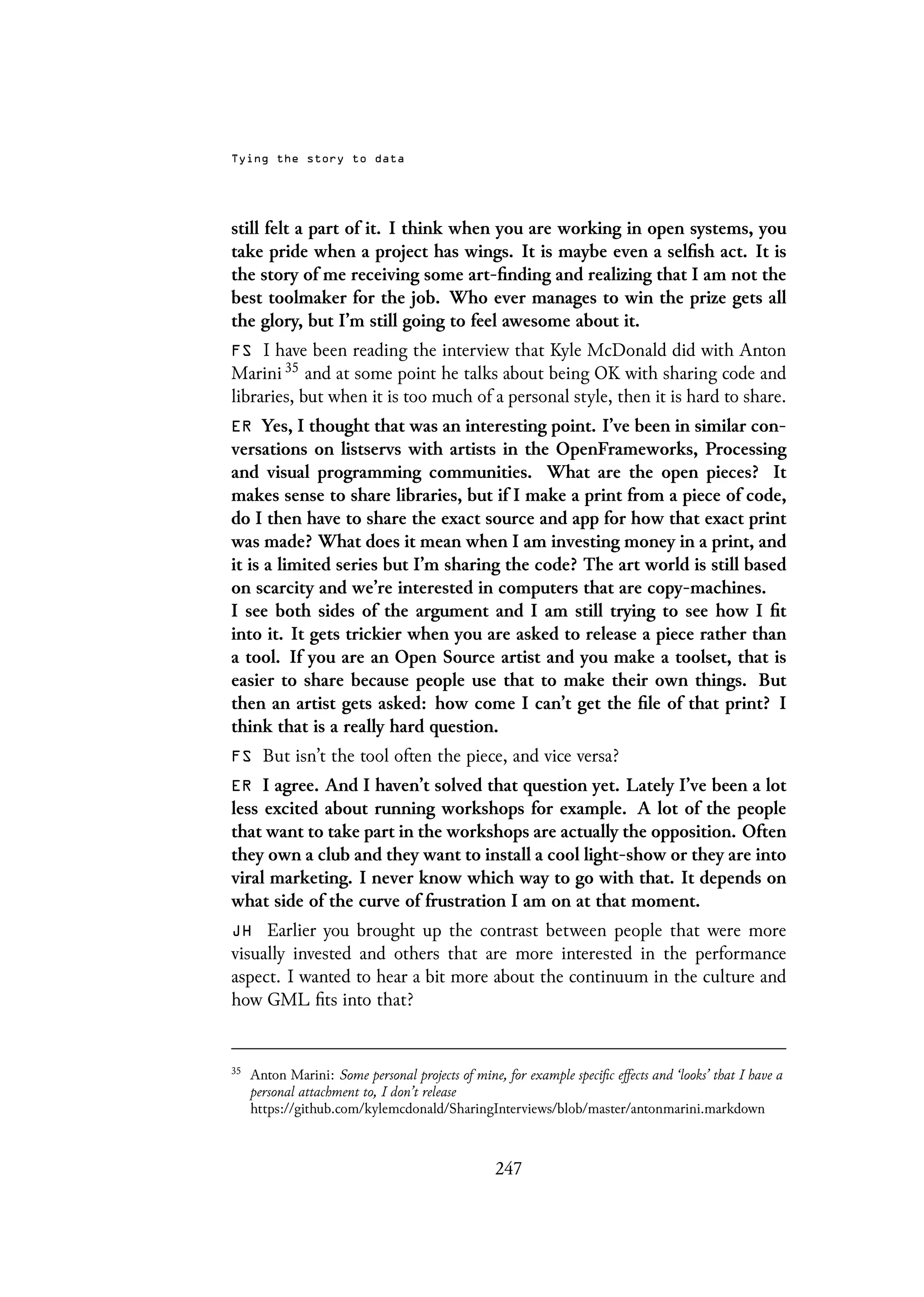
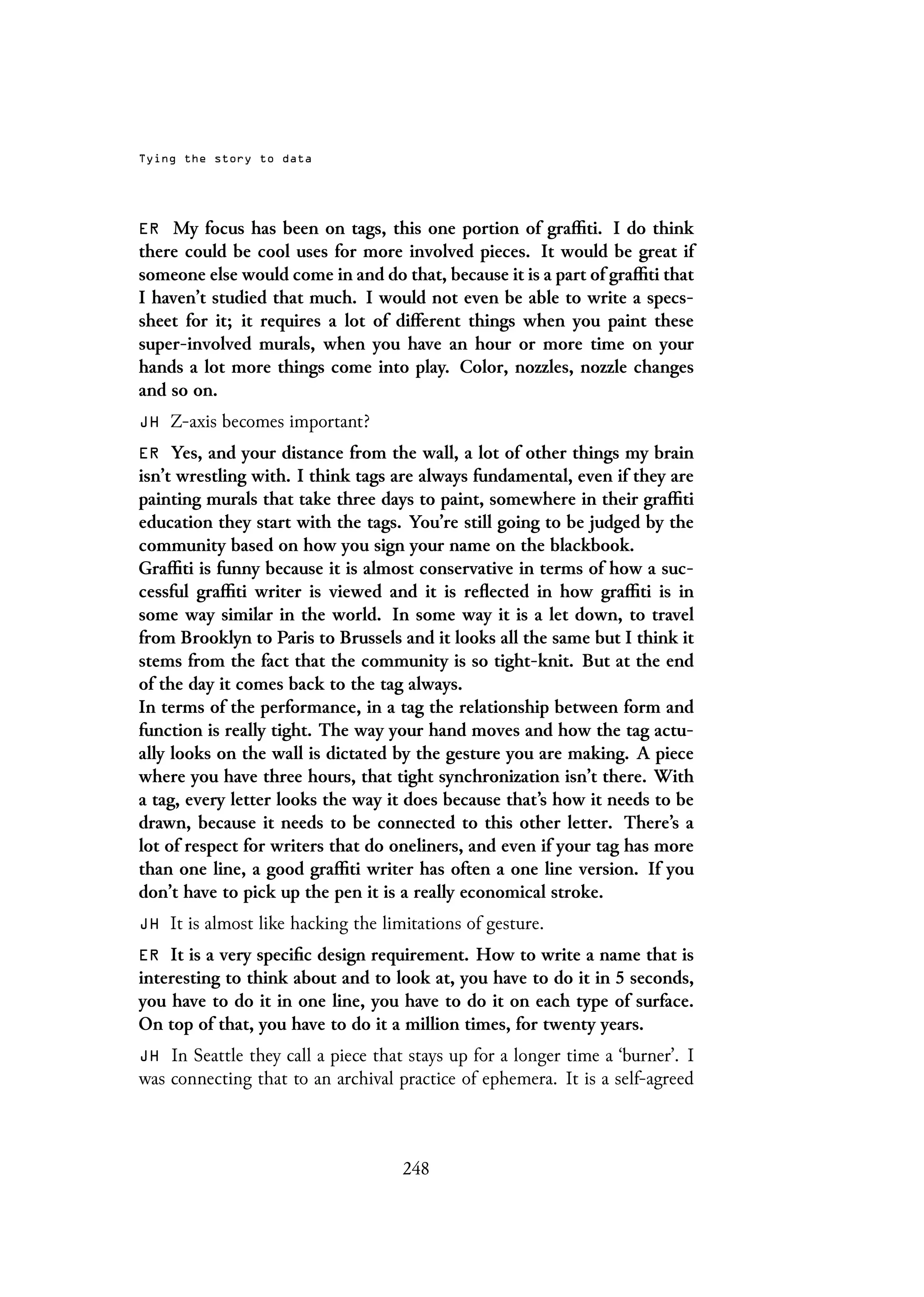
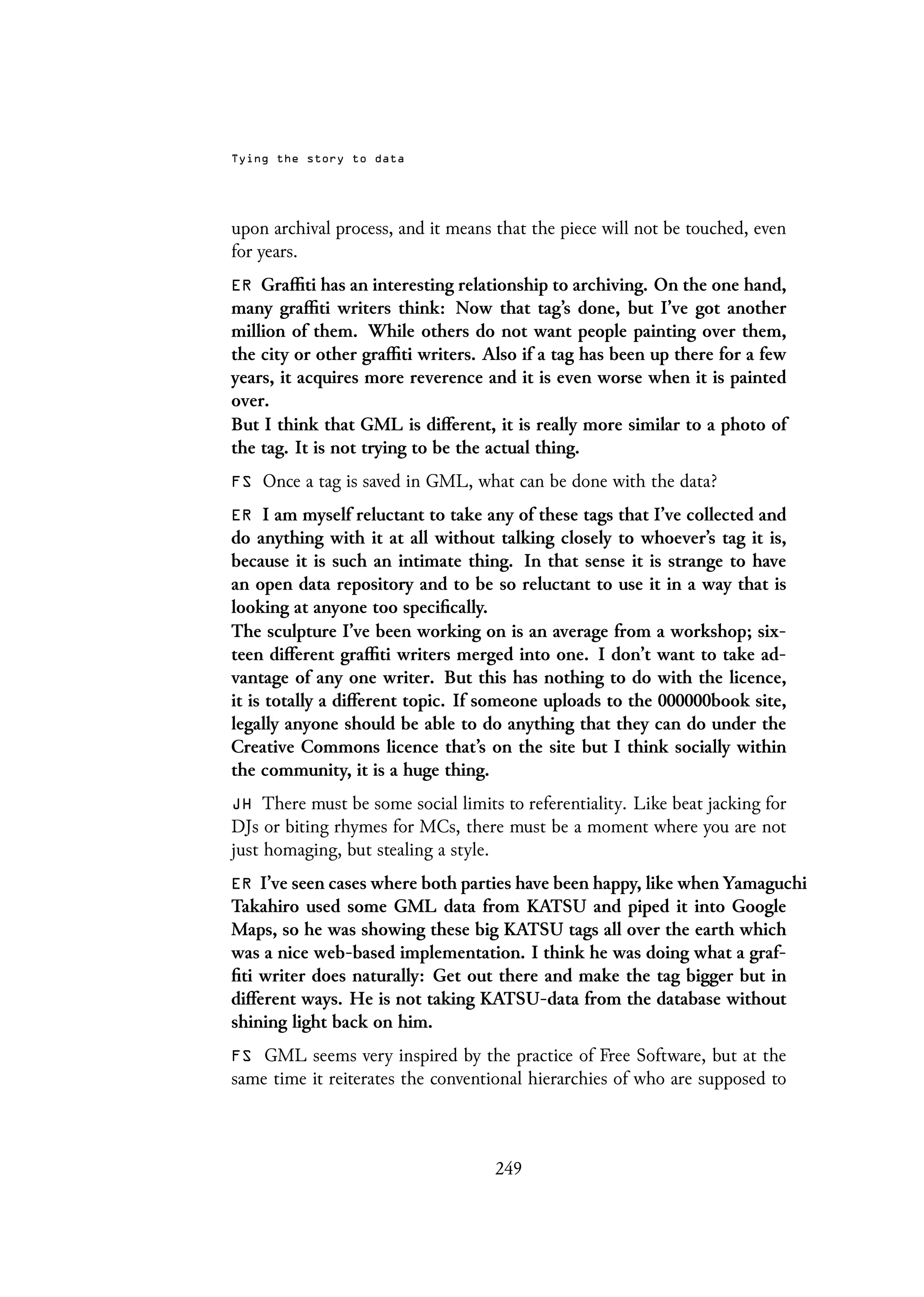
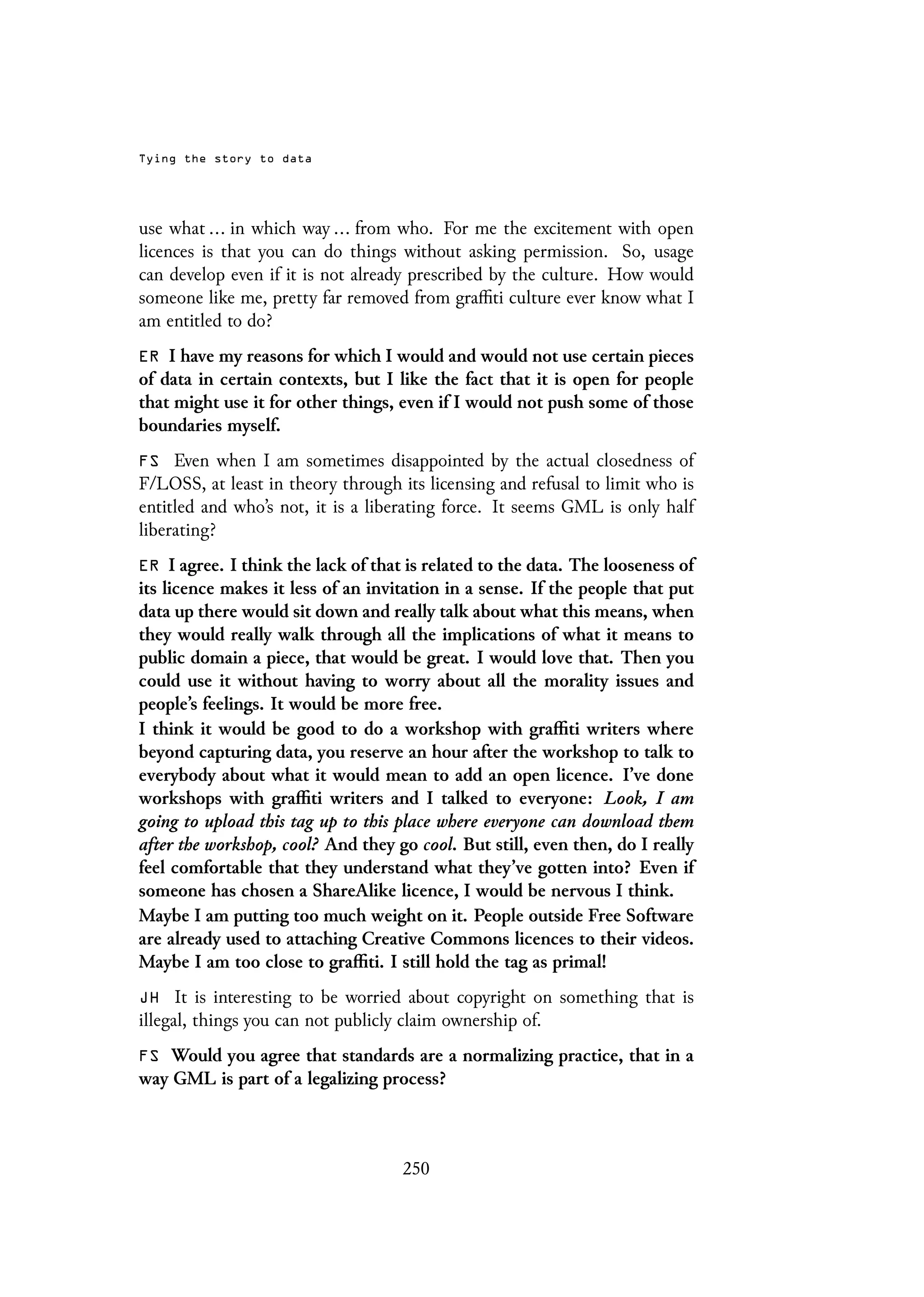
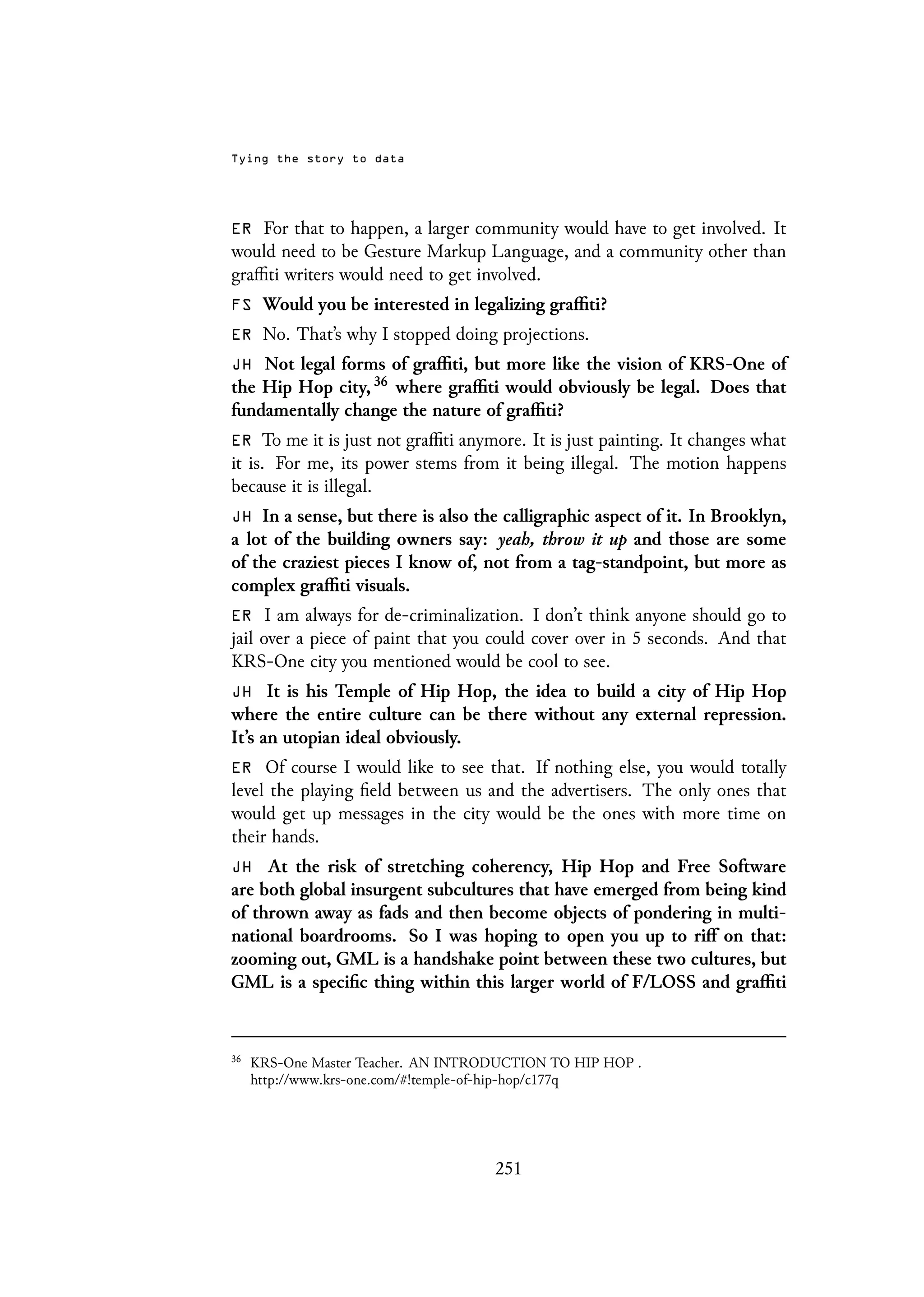
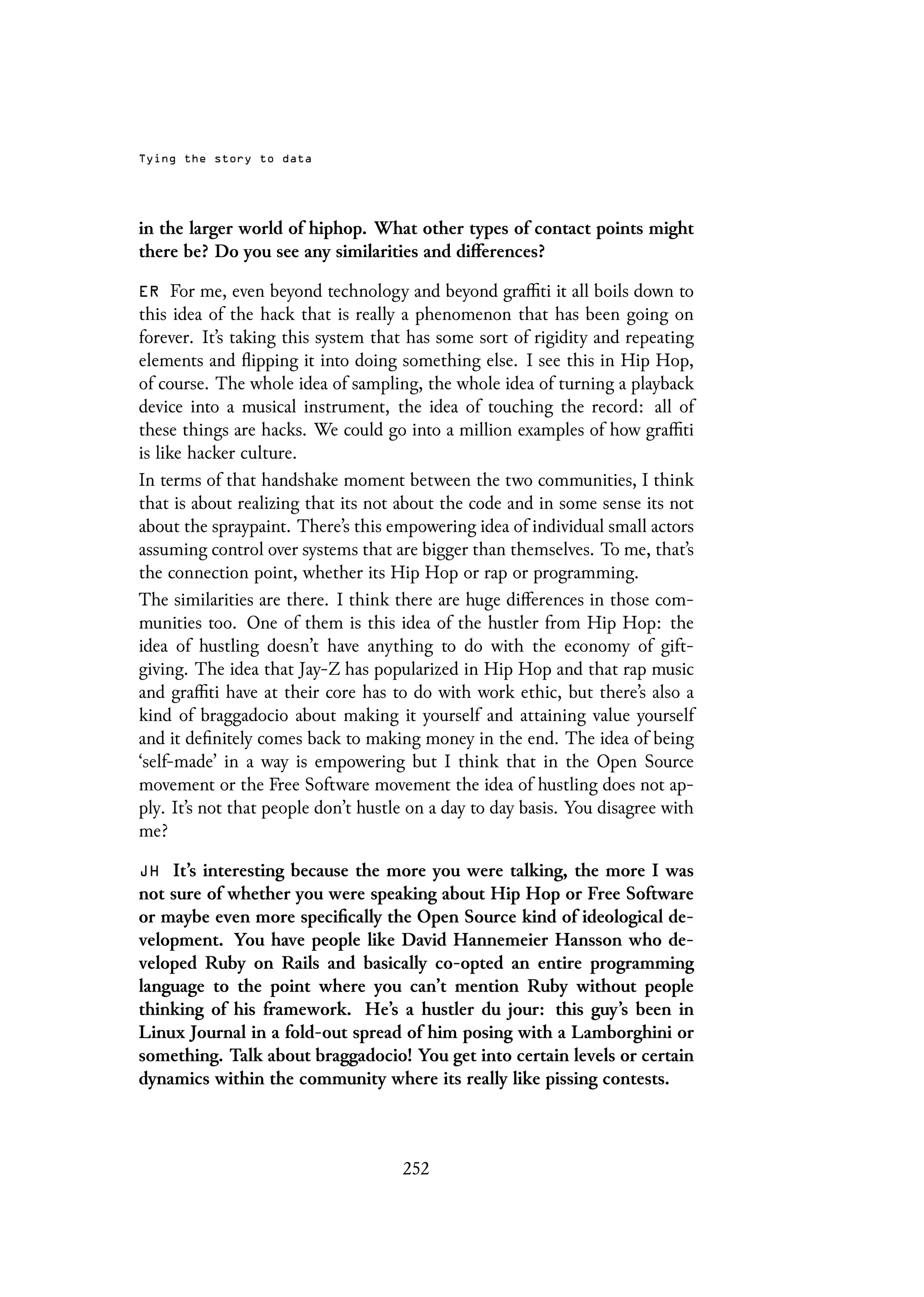
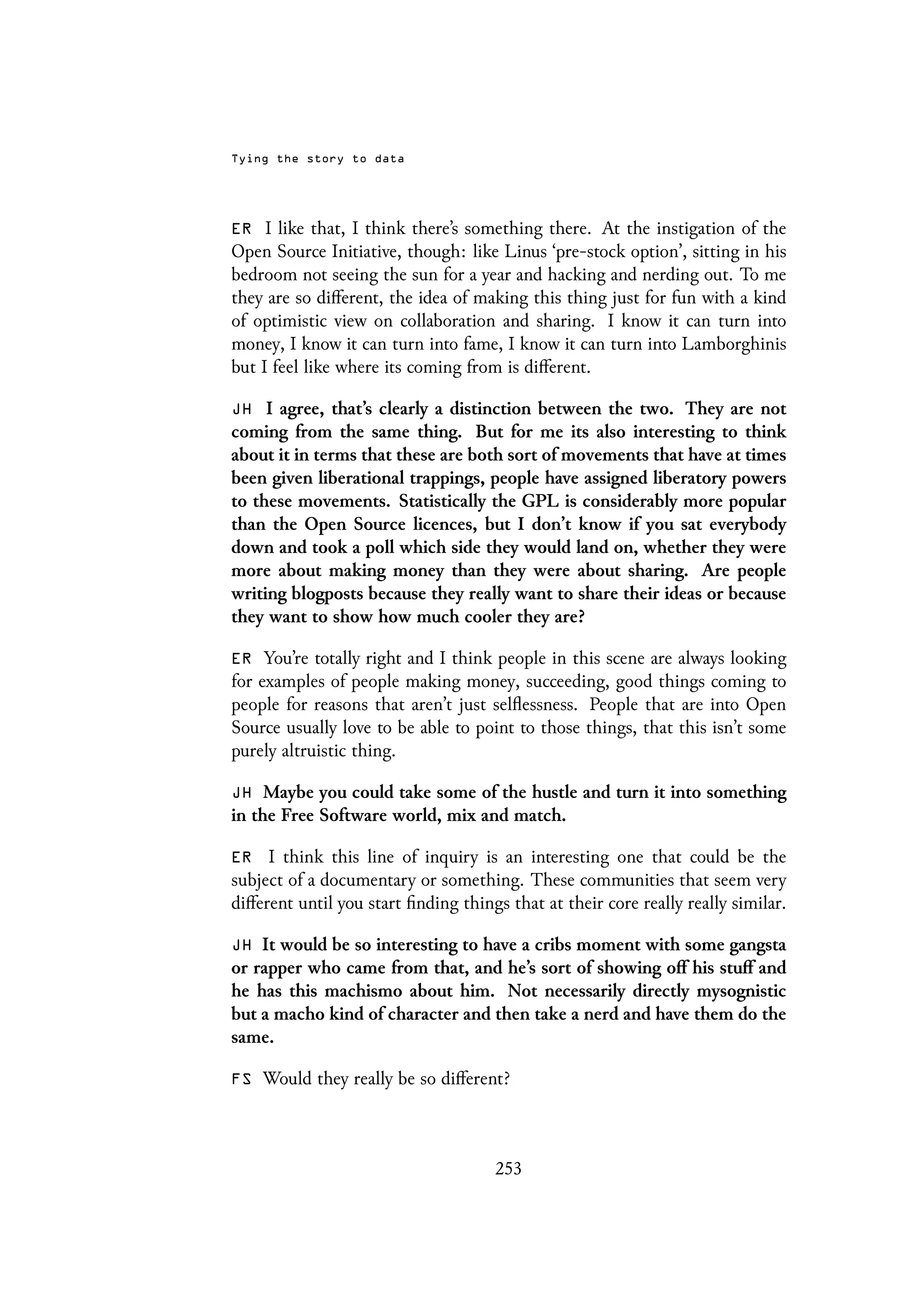
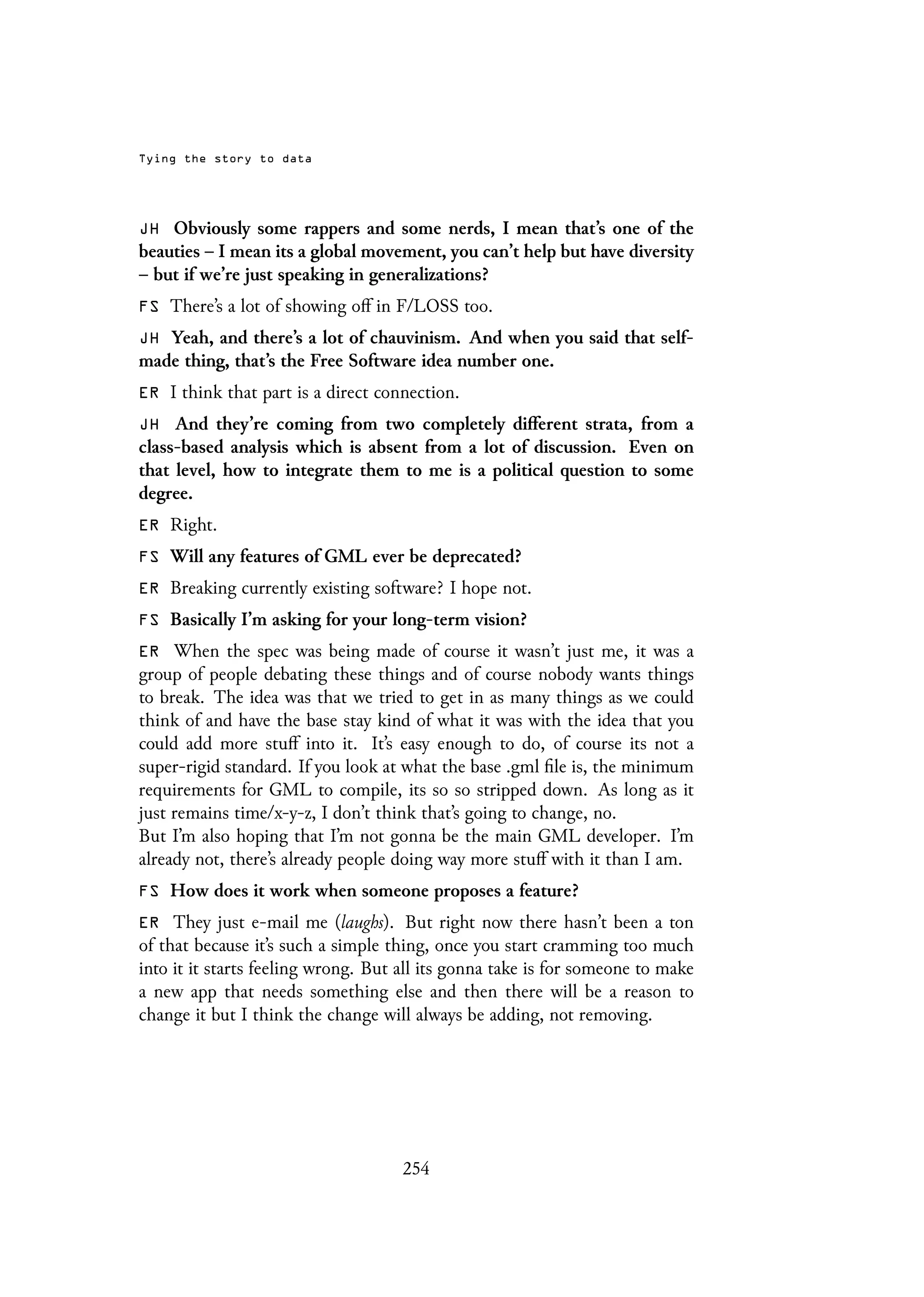

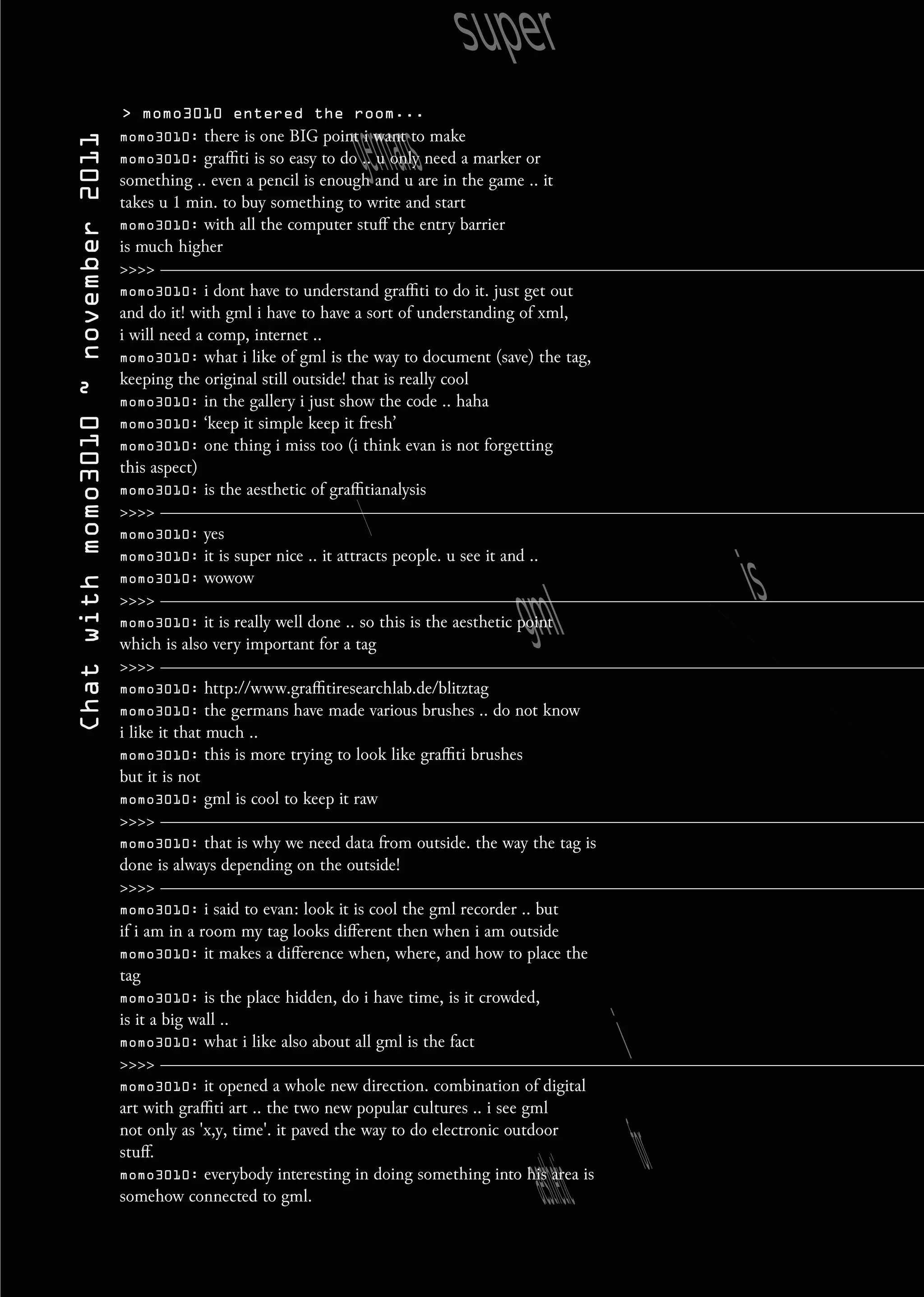
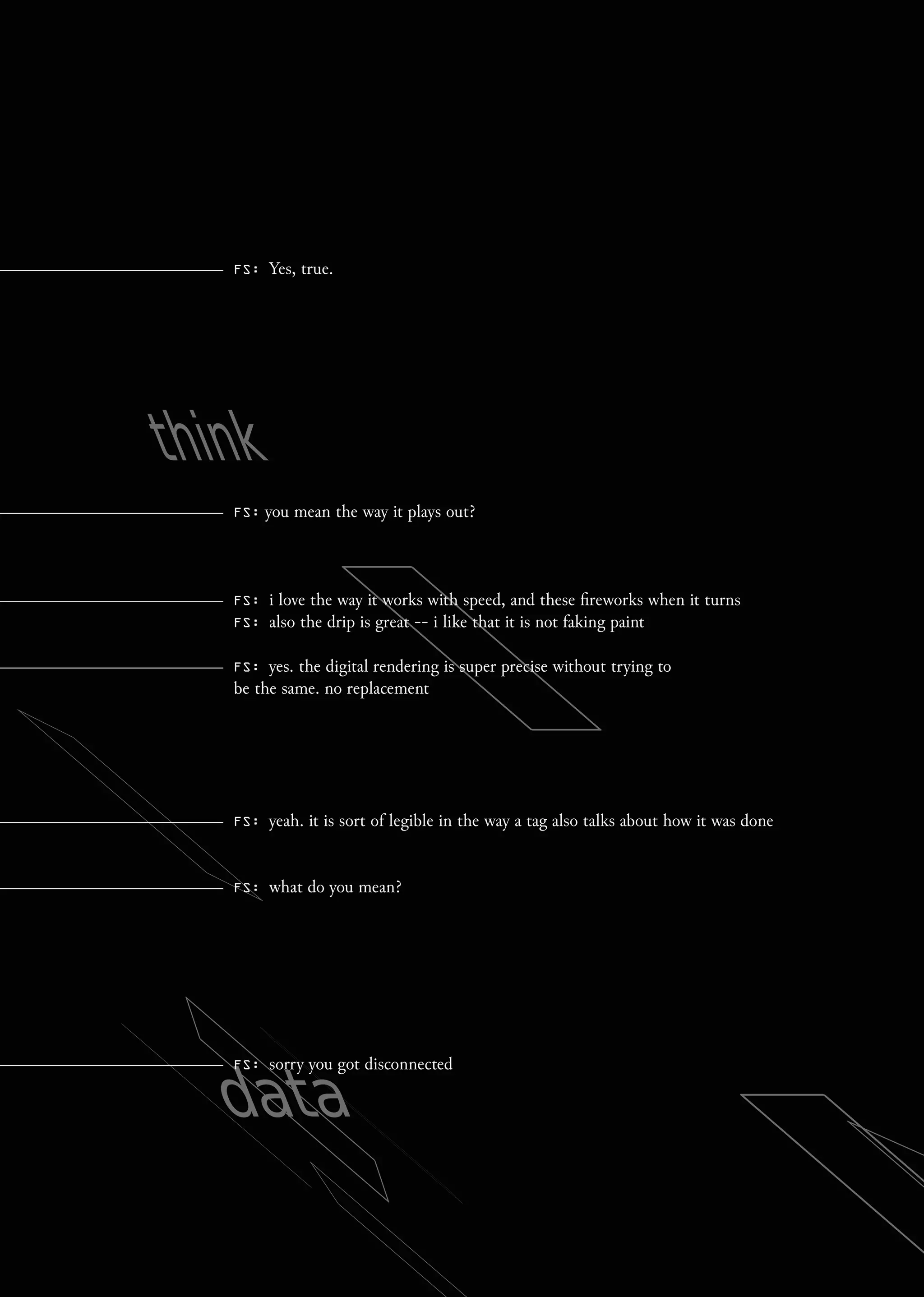

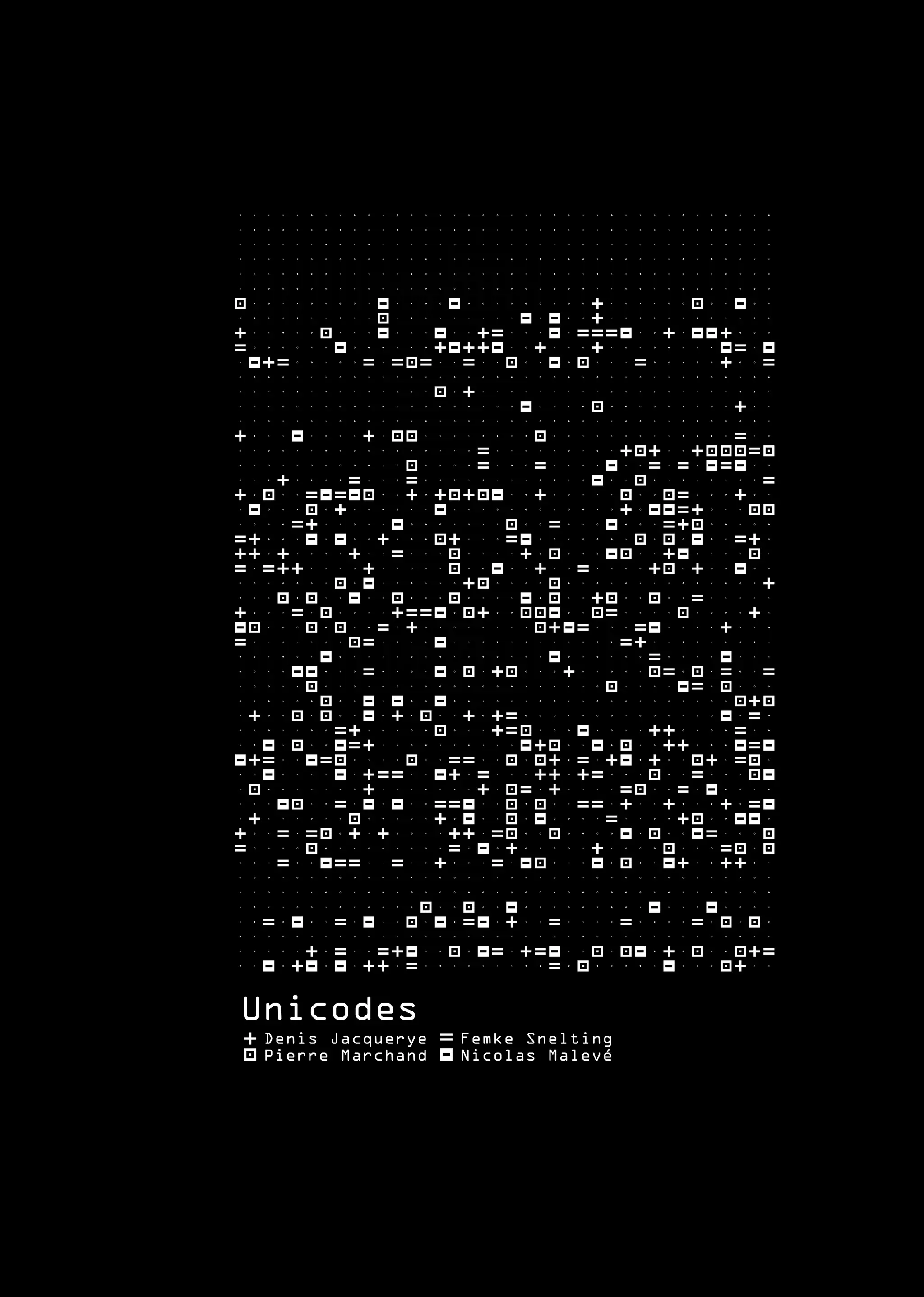
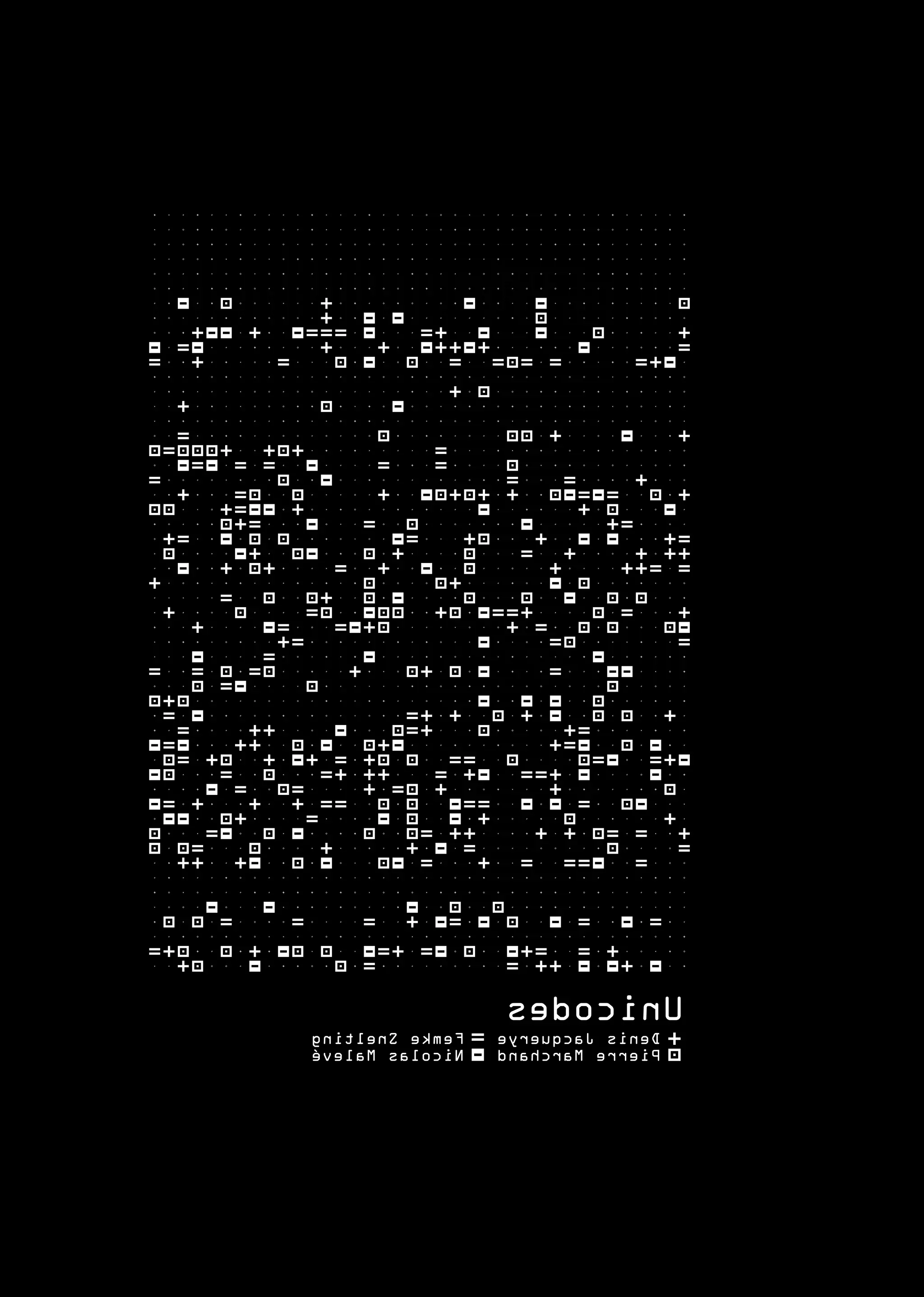
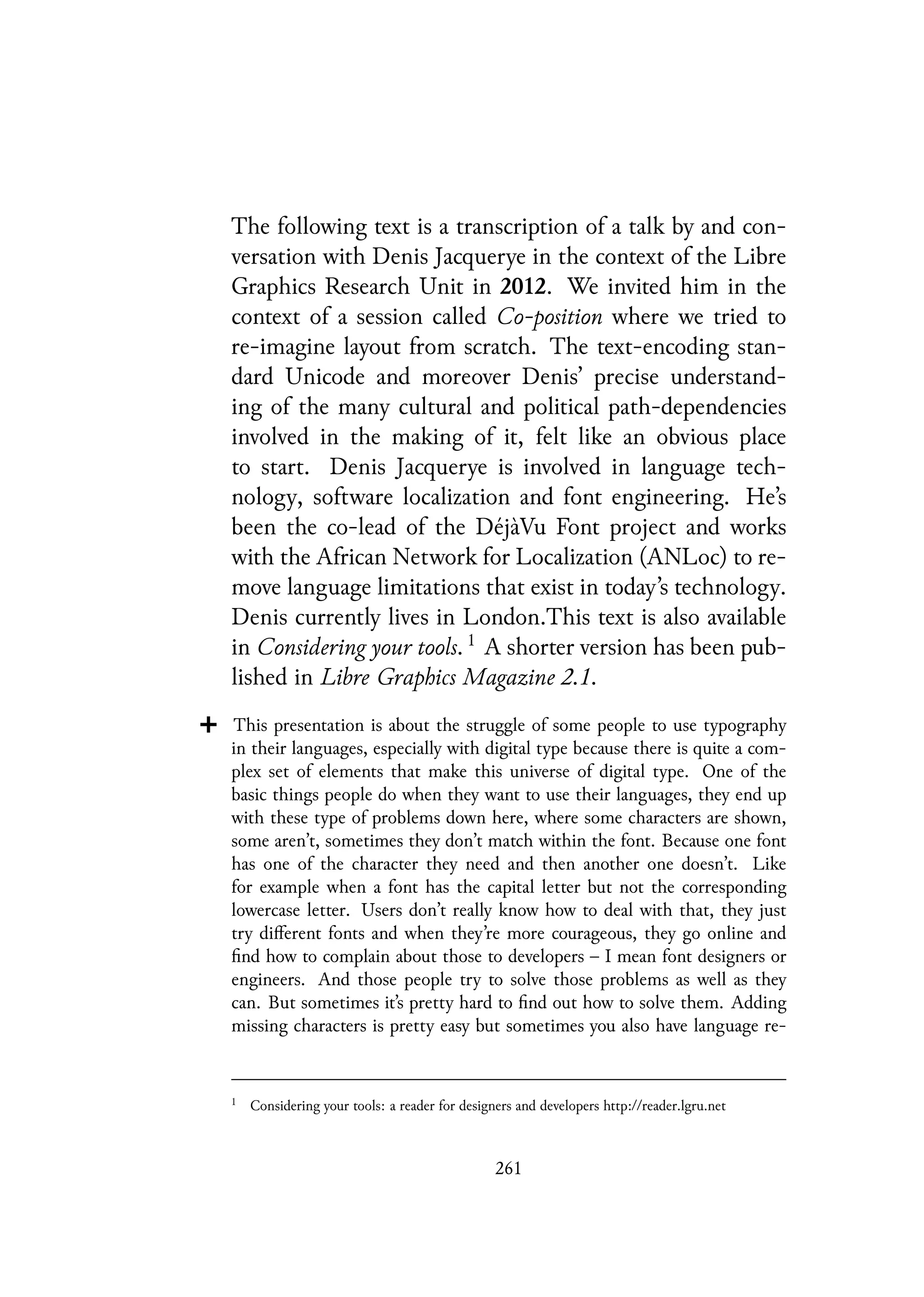
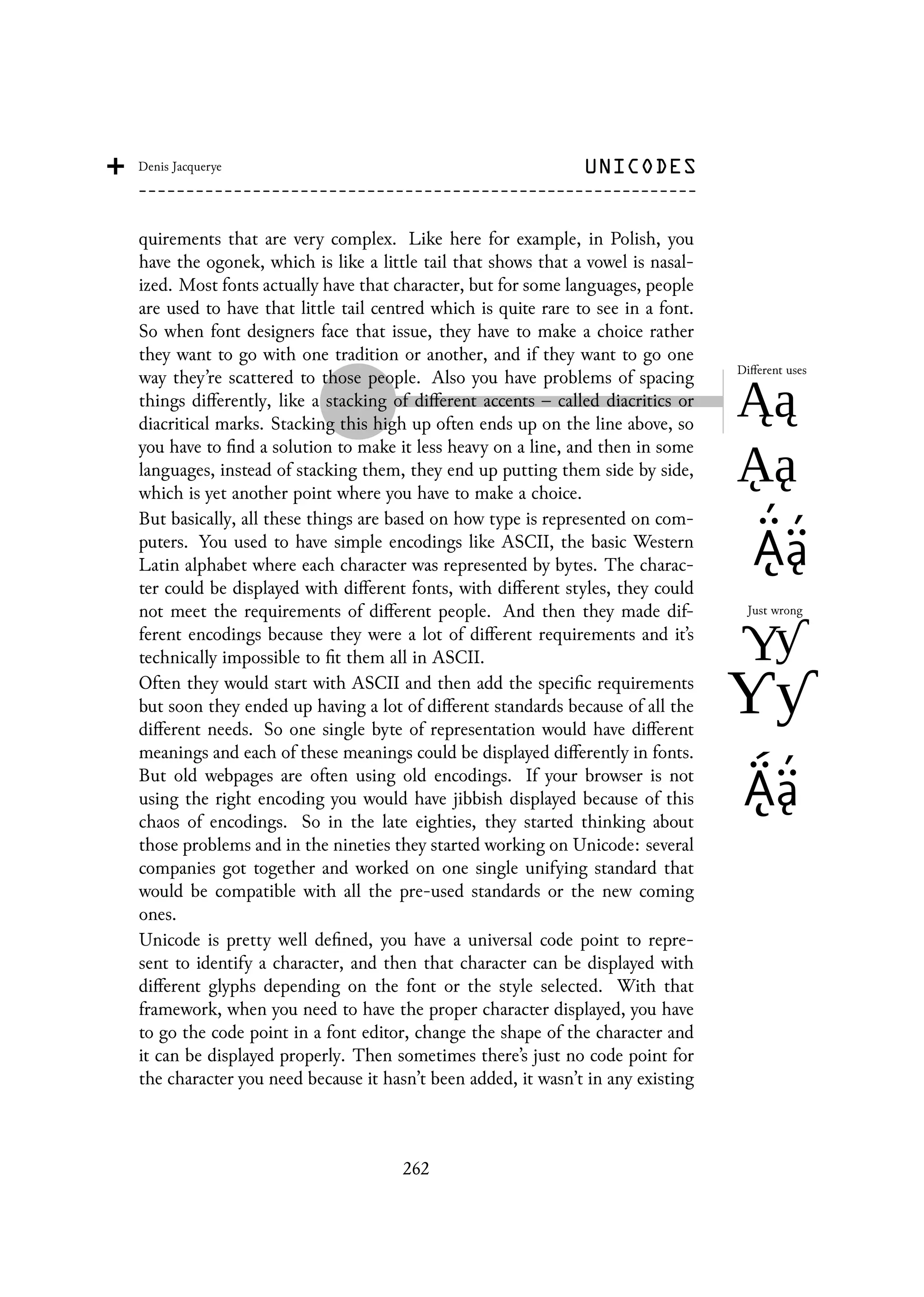
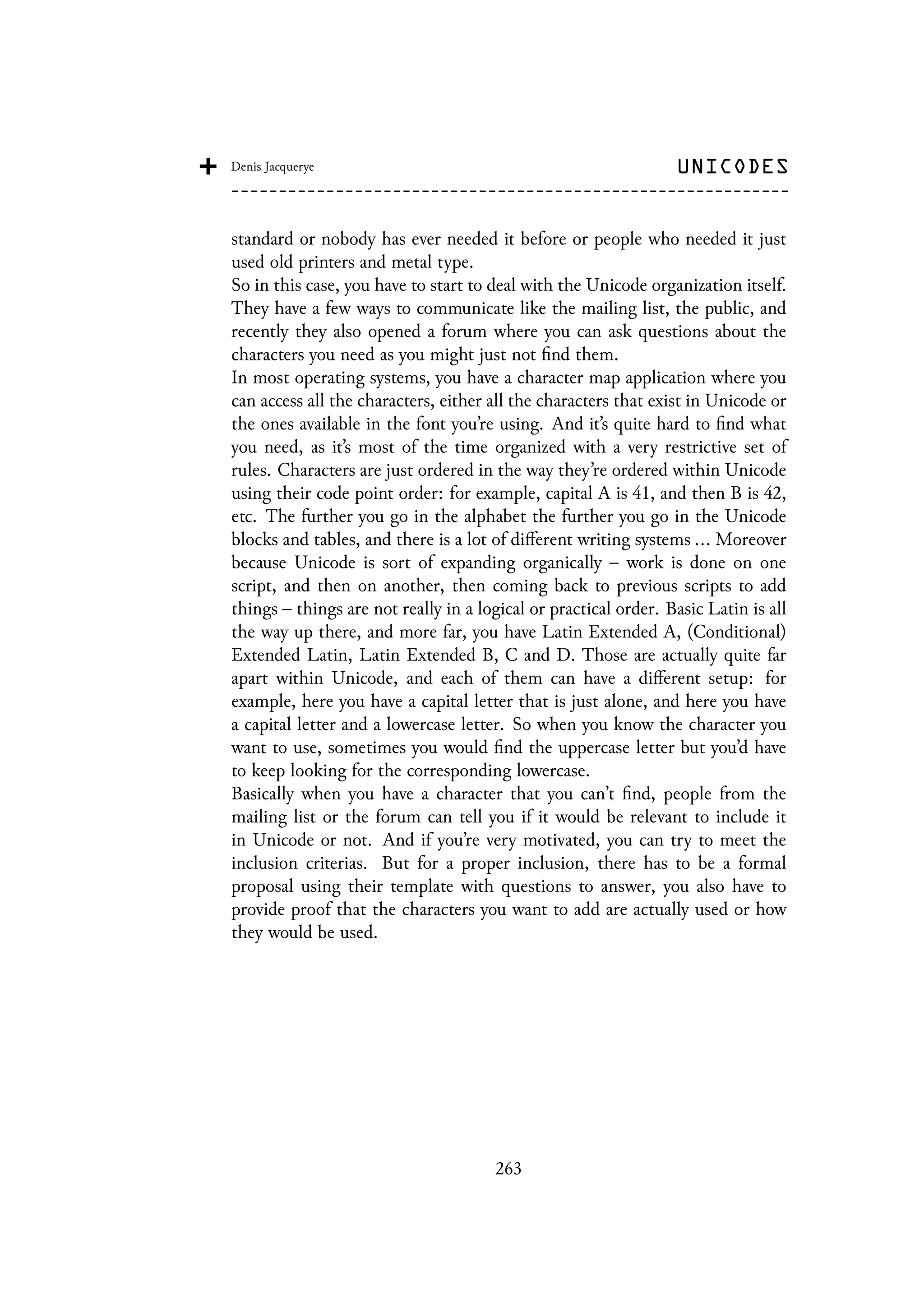

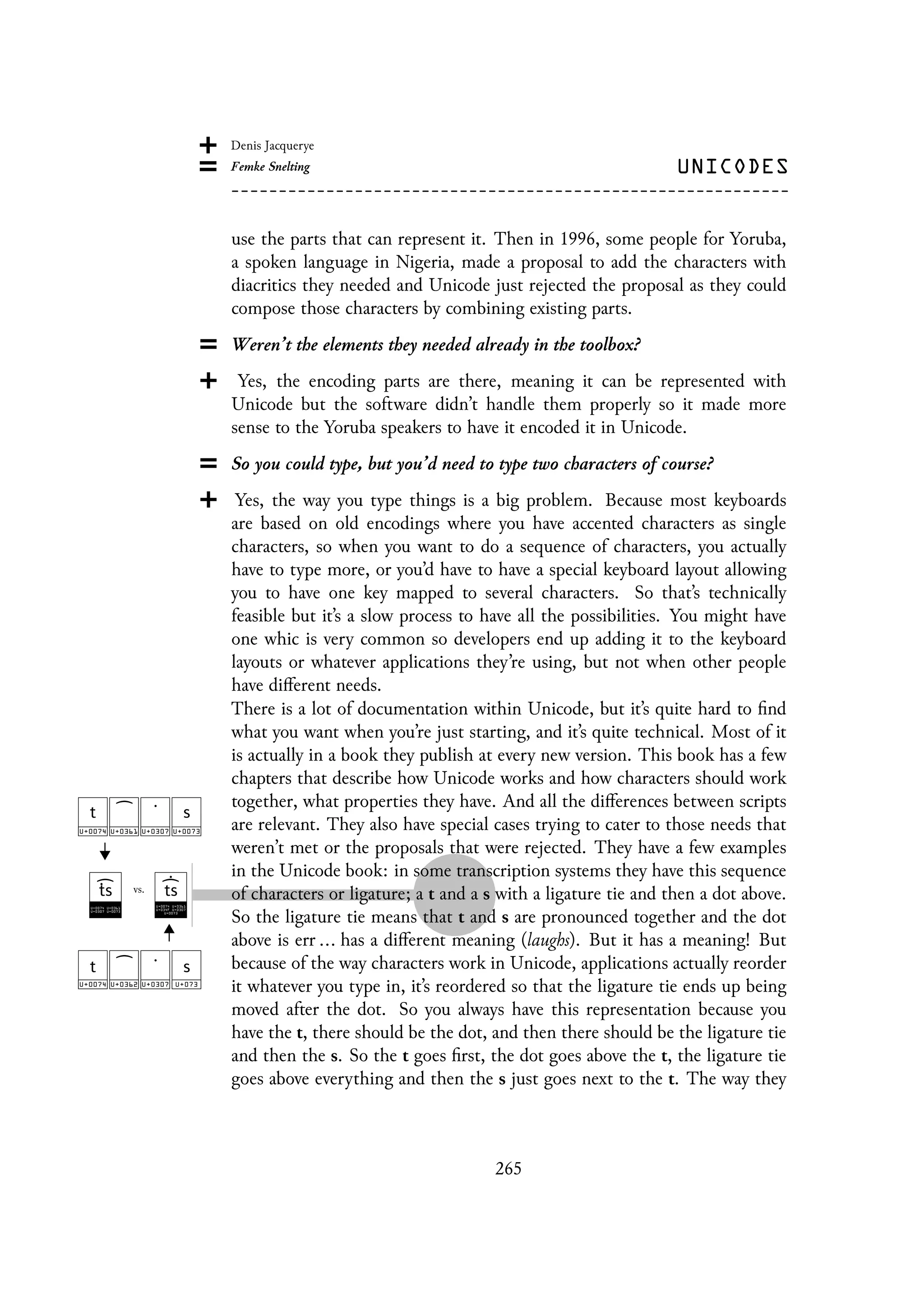
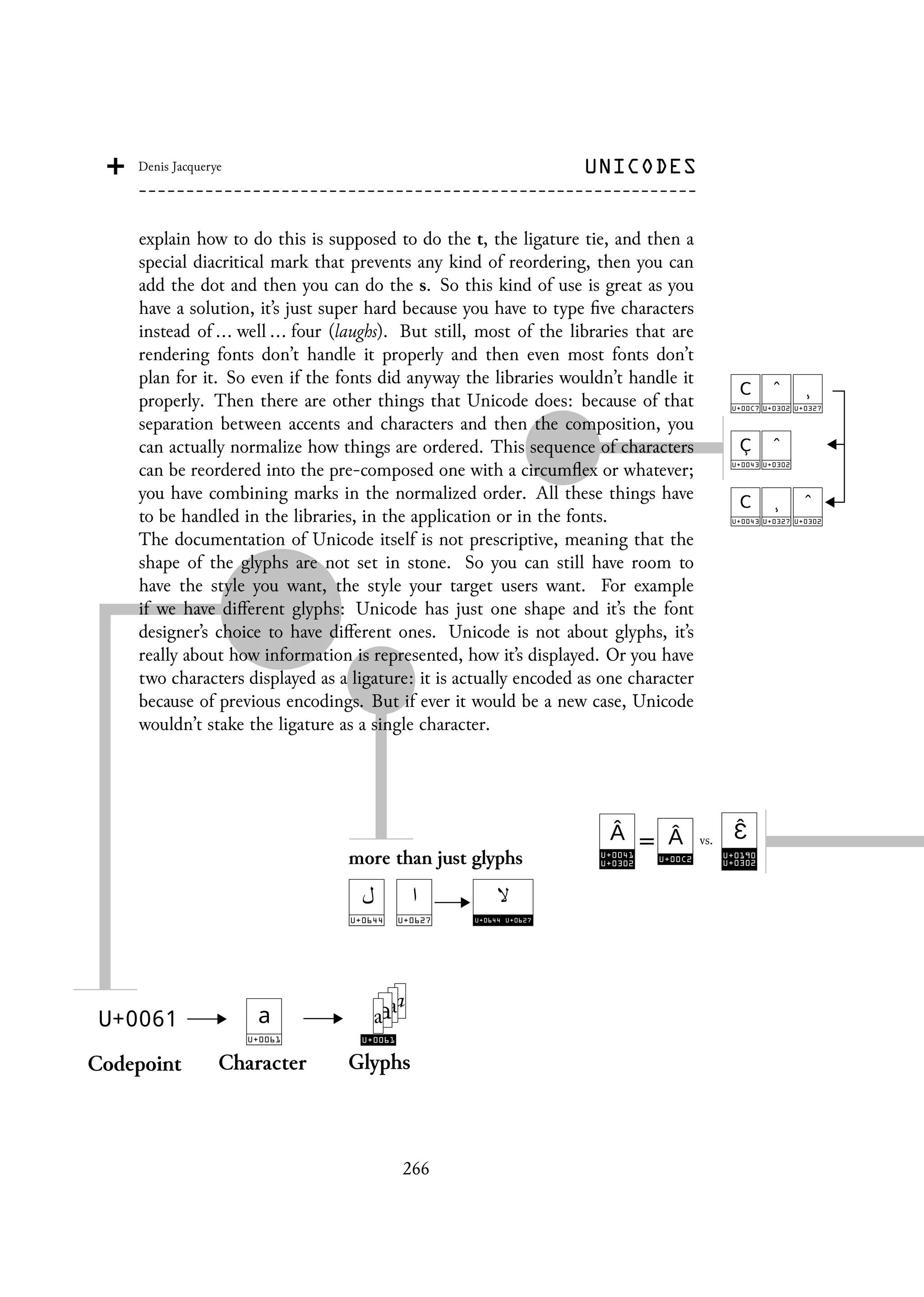
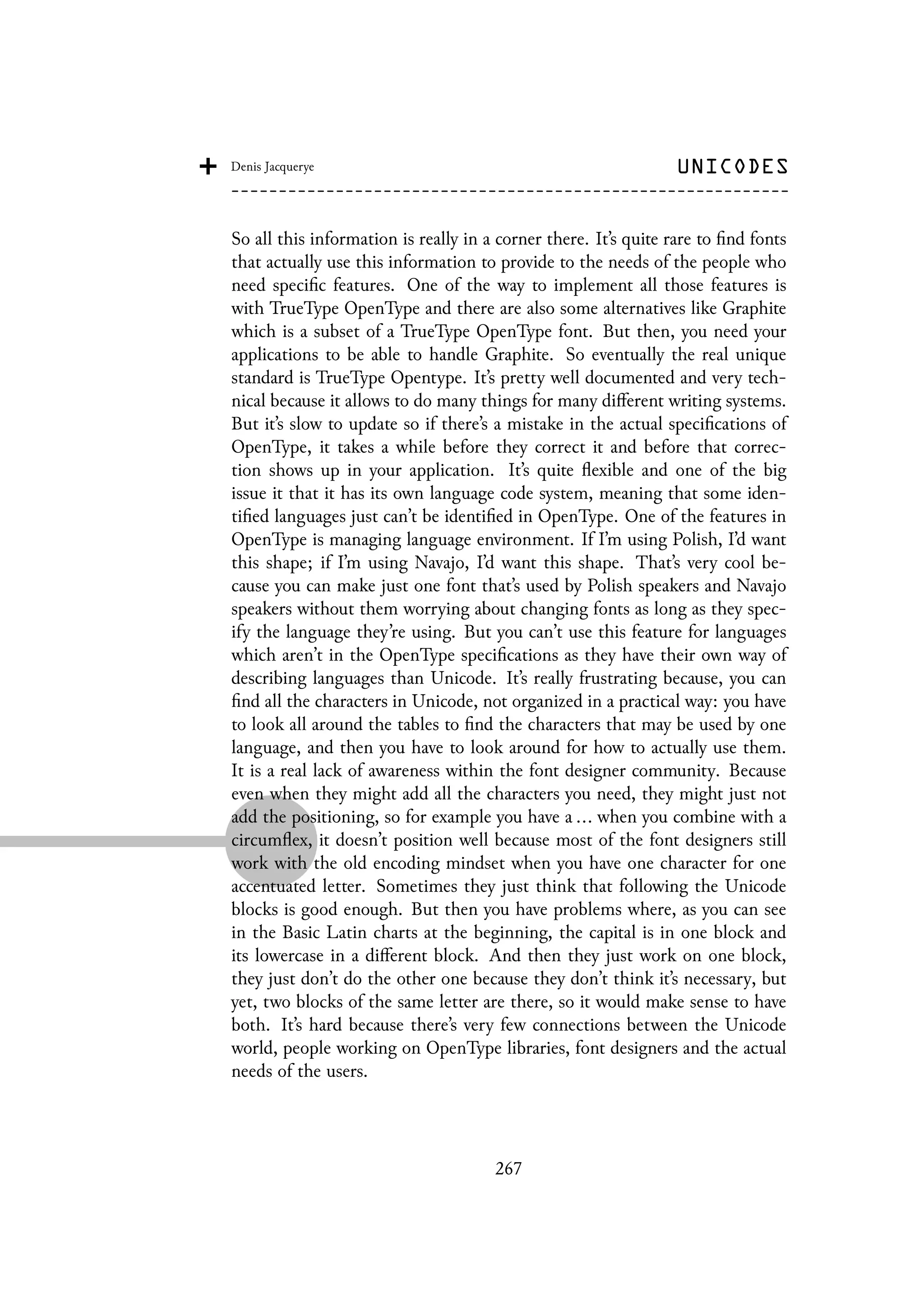
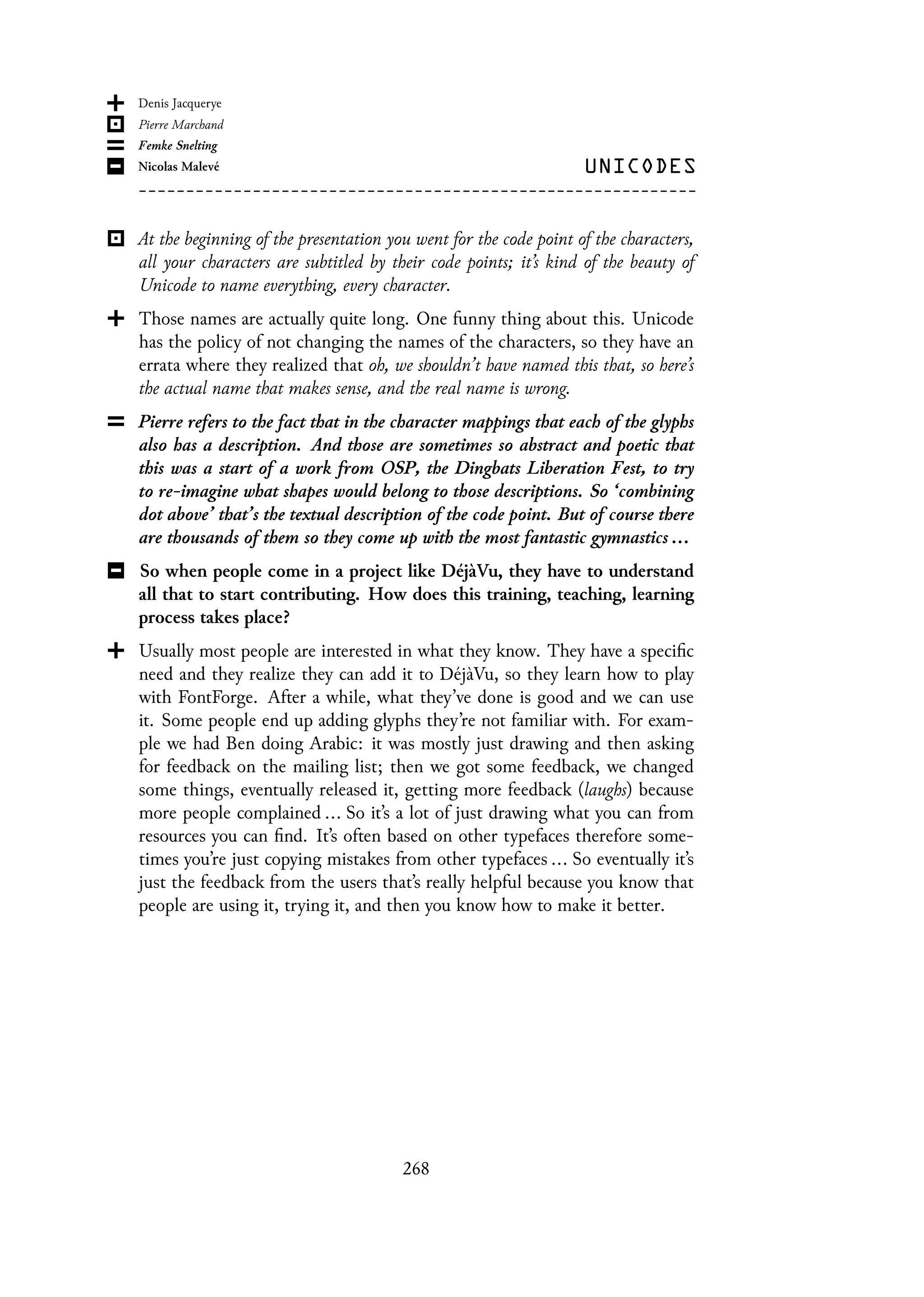
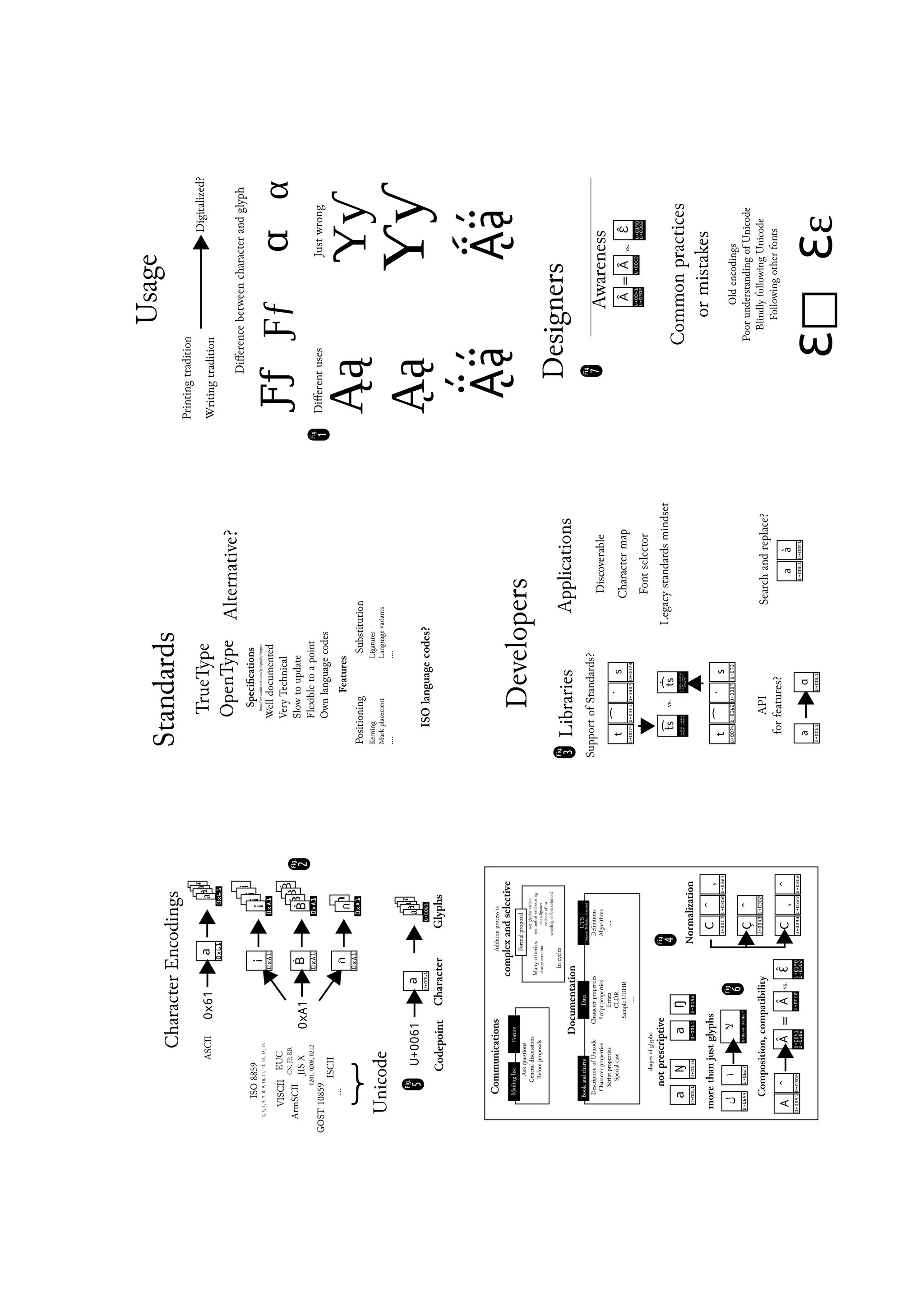



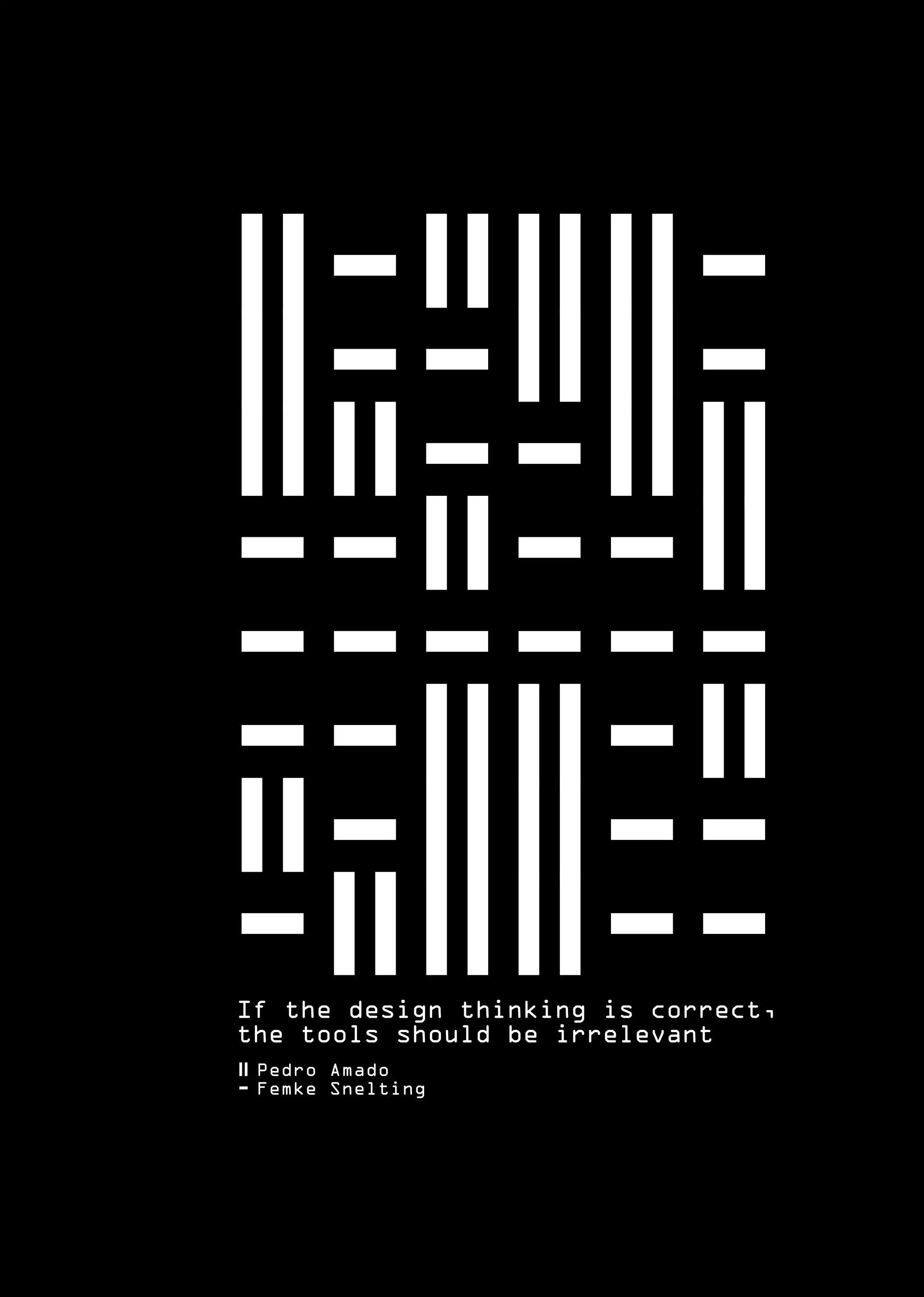

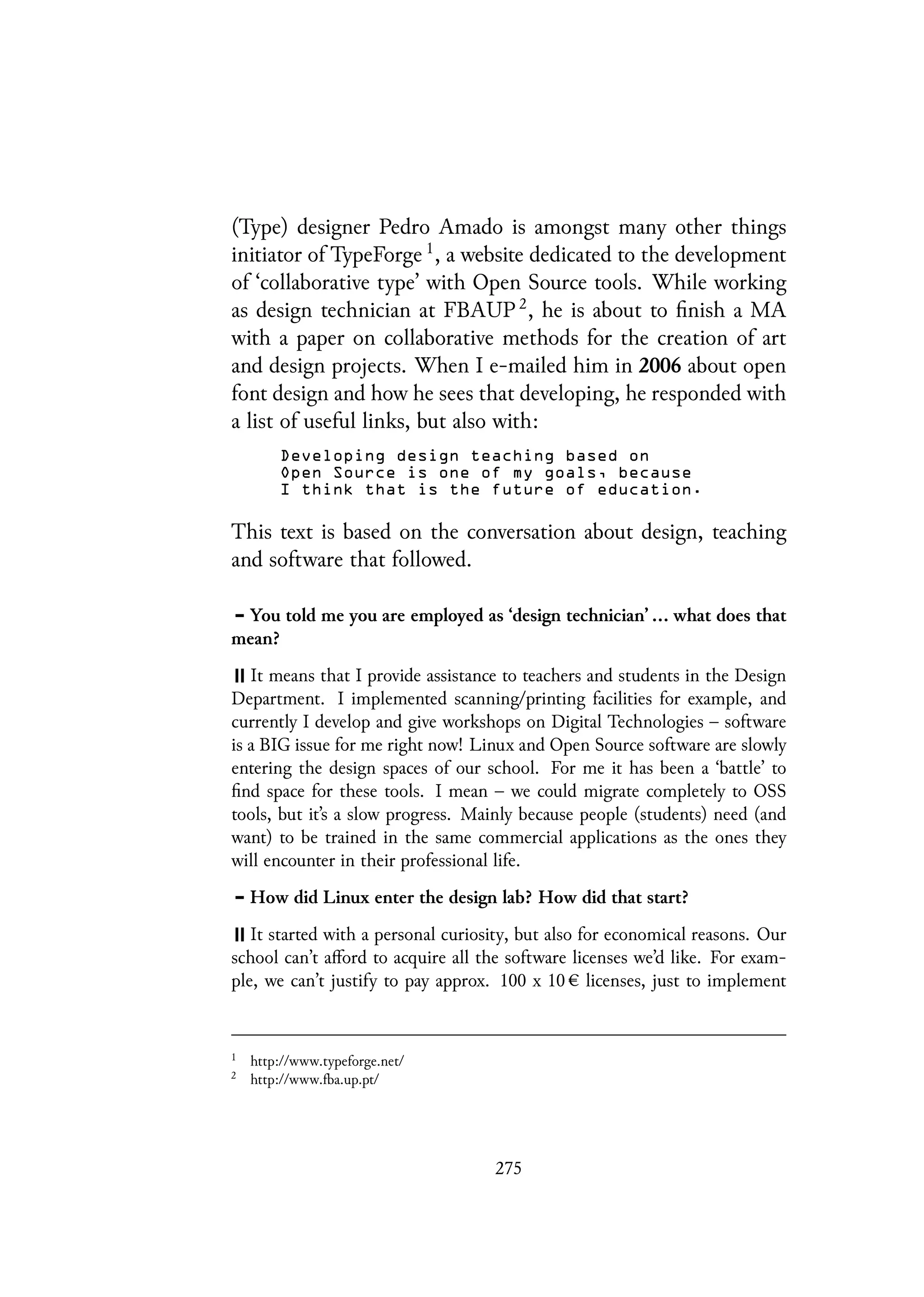
![the educational version of Fontlab on some of our computers; especially be-
cause this package is only used by a part of our second year design students.
You can image what the total budget will be with all the other needs ... I
personally believe that we can find everything we need on the web. It’s a
matter of searching long enough! So this is how I was very happy to find
Fontforge. An Open Source tool that is solid enough to use in education
and can produce (as far as I have been able to test) almost professional re-
sults in font development. At first I couldn’t grasp how to use it under X 3
on Windows, so one day I set out to try and do it on Linux ... and one thing
lead to another ...
What got you into using OSS? Was it all one thing leading to another?
Uau ... can’t remember ... I believe it had to do with my first experiences
online; I don’t think I knew the concept before 2000. I mean I’ve started
using the web (IRC and basic browsing) in 1999, but I think it had to do
with the search of newer and better tools ...
I think I also started to get into it around that time. But I think I was
more interested in copyleft though, than in software.
Oh ... (blush) not me ... I got into it definitely for the ‘free beer’ aspect!
By 2004 I started using DTP applications on Linux (still in my own time)
and began to think that these tools could be used in an educational context,
if not professionally. In the beginning of 2006 I presented a study to the
coordinator of the Design Department at FBAUP, in which I proposed to
start implementing Open Source tools as an alternative to the tools we were
missing. Blender for 3D animation, FontForge for type design, Processing
for interactive/graphic programming and others as a complement to propri-
etary packages: GIMP, Scribus and Inkscape to name the most important
ones. I ran into some technical problems that I hope will be sorted out
soon; one of the strategies is to run these software packages on a migration
basis – as the older computers in our lab won’t be able to run MacOS 10.4+,
we’ll start converting them to Linux.
3
Cygwin/X is a port of the X Window System to the Cygwin API layer for the Microsoft
Windows family of operating systems
Cygwin/x: X windows – on windows! http://x.cygwin.com/, 2014. [Online; accessed 5.8.2014]
276](https://image.slidesharecdn.com/nf9eqef8sfiyxgigz7xn-signature-b03e0a6271101f66a8d7193a3f5bd73f7b52f385bb5cc7354043f5b991639302-poli-150429194709-conversion-gate02/75/Conversations-276-2048.jpg)
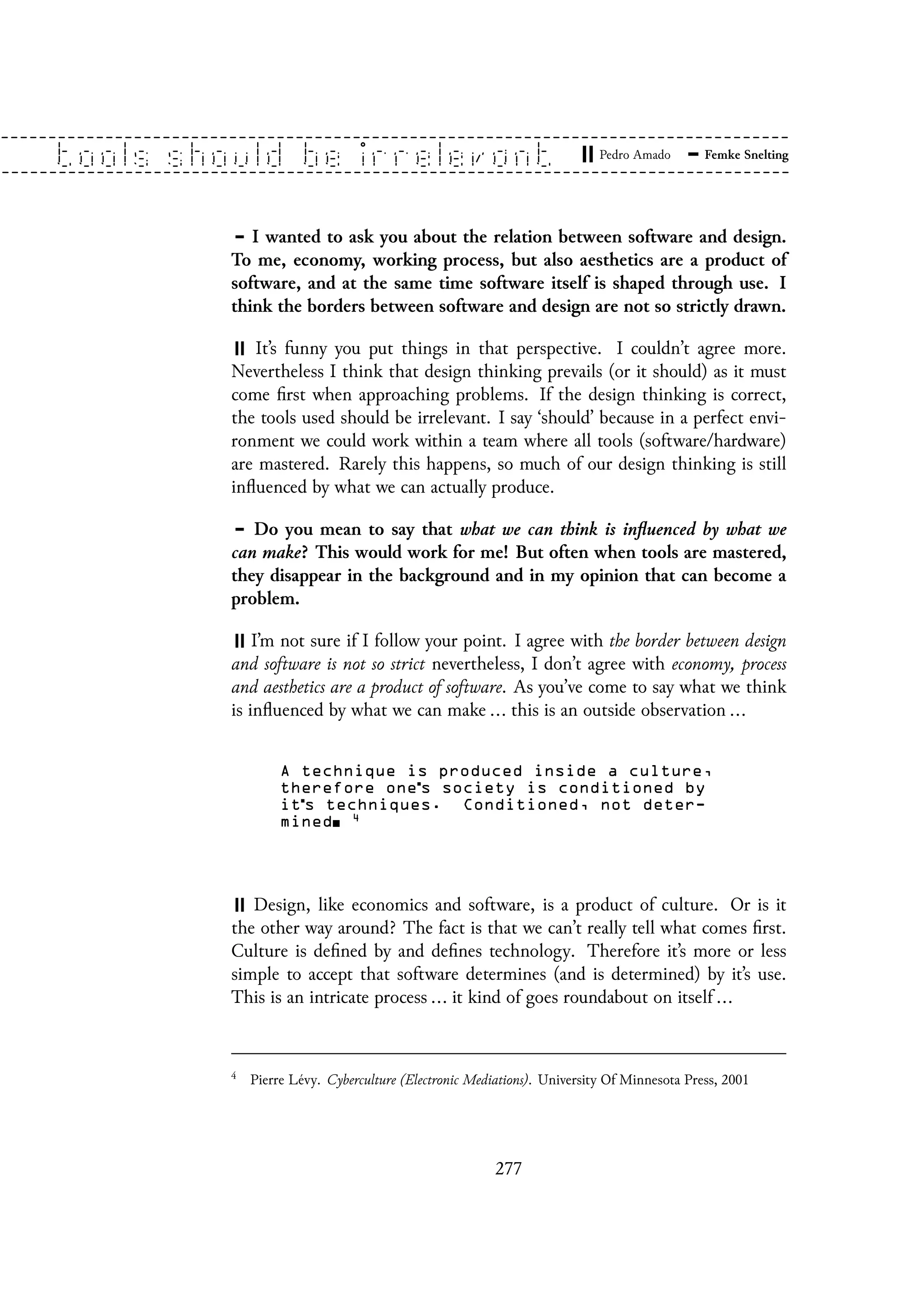

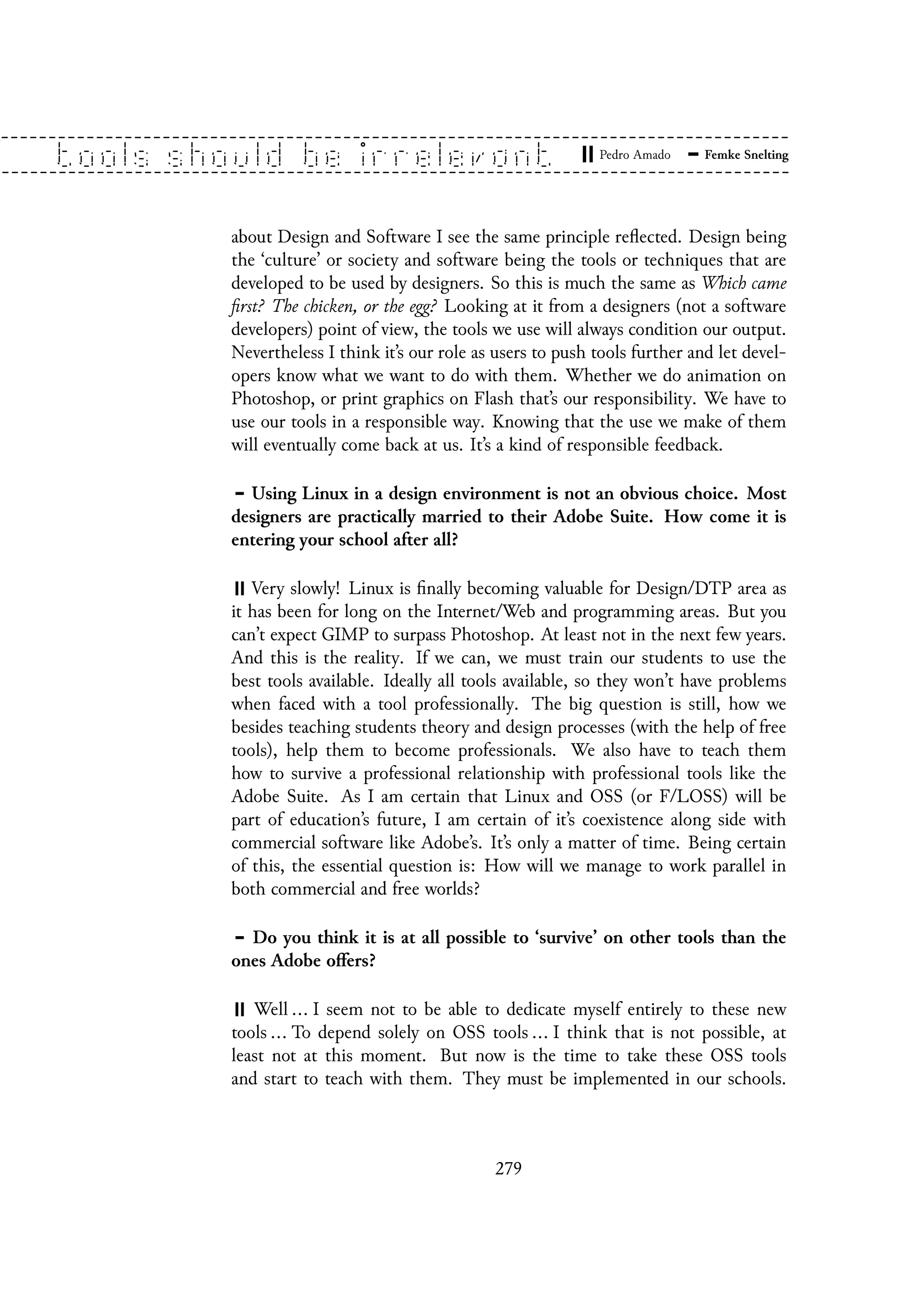

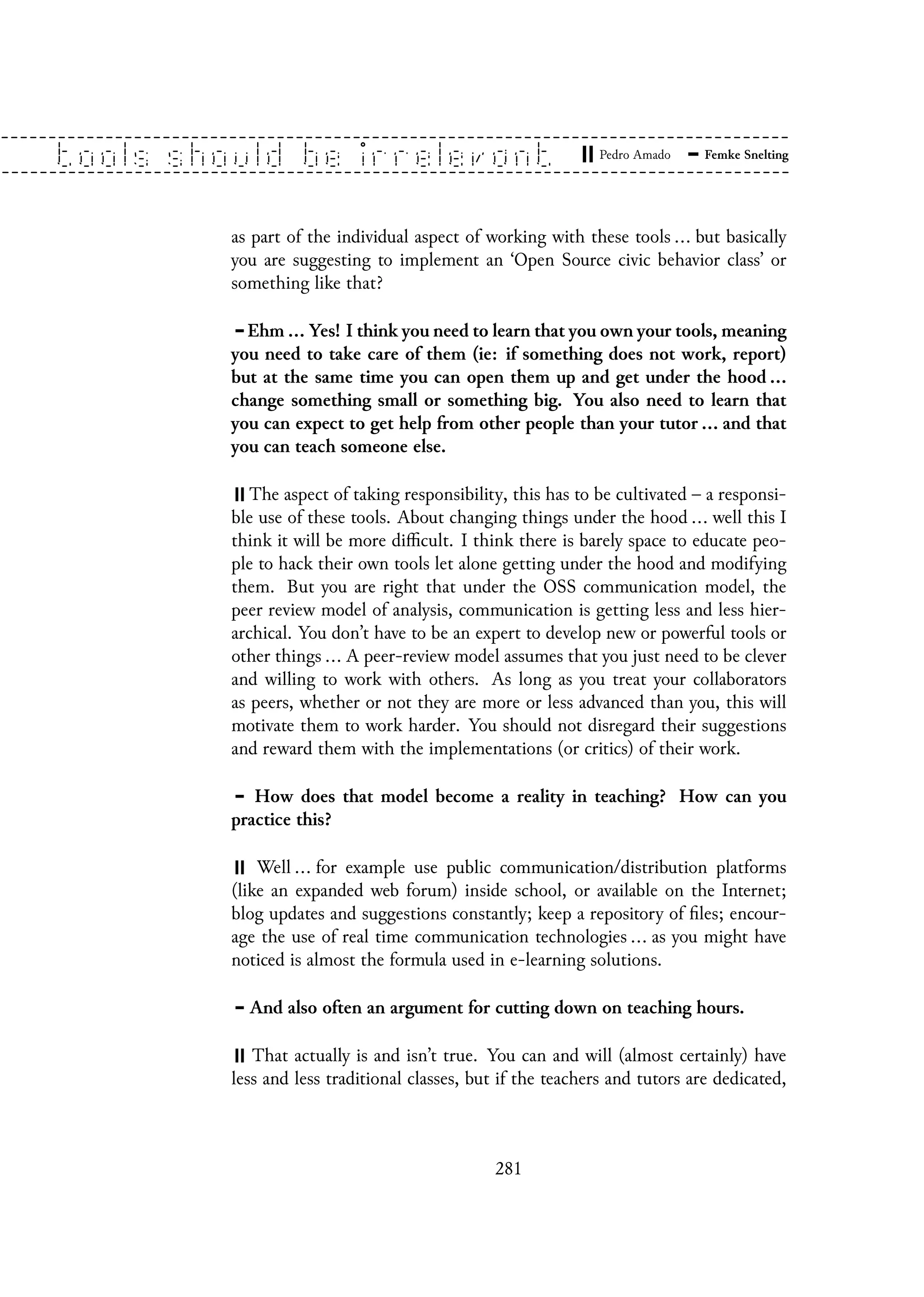
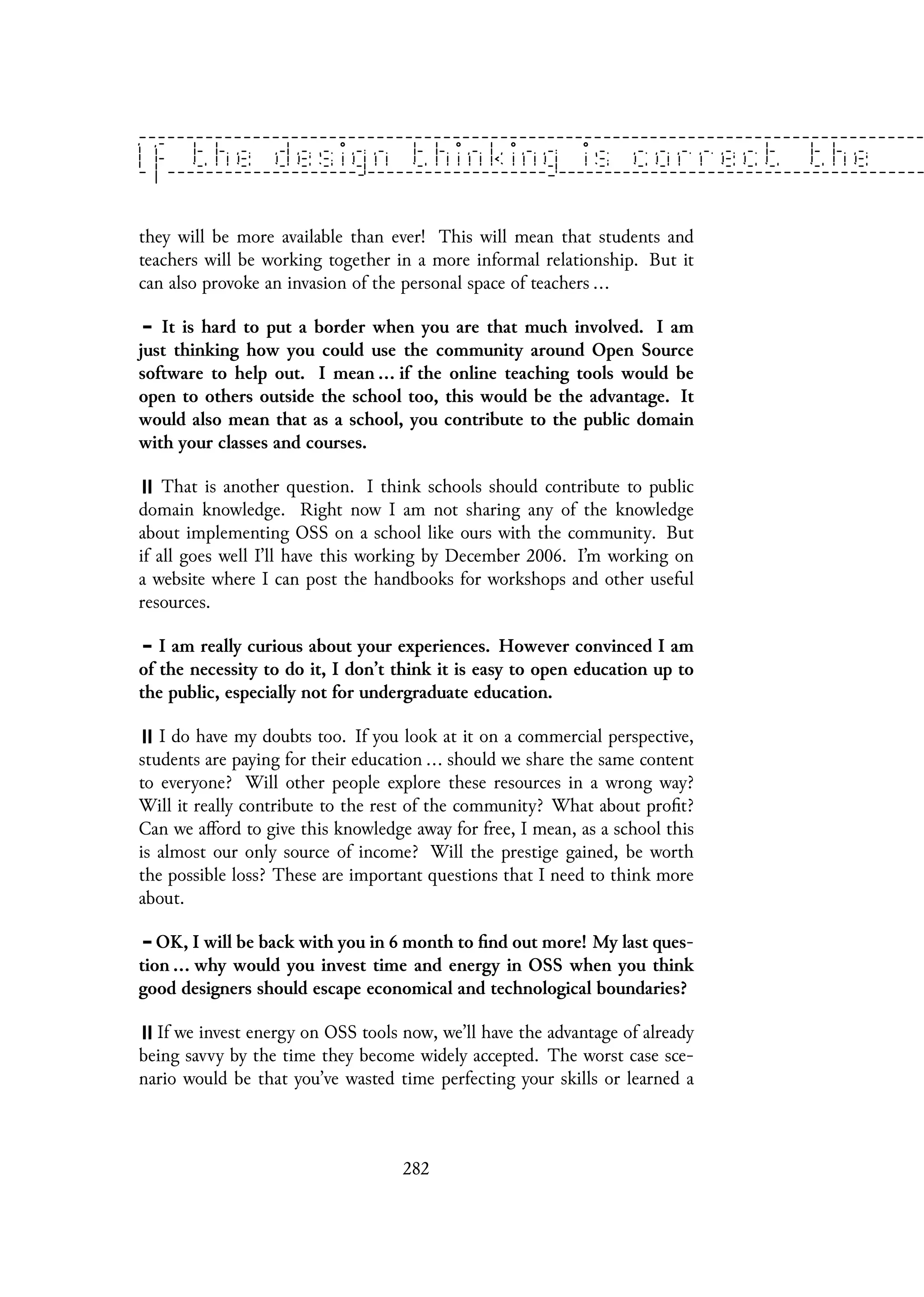
![new tool that didn’t become a standard ... How many times have we done
this already in our life? In any way, we need to learn concepts behind
the tools, learn new and different tools, even unnecessary ones in order to
broaden our knowledge base – this will eventually help us think ‘out of the
box’ and hopefully push boundaries further [not so much as escaping them].
For me OSS and its movement have reached a maturity level that can prove
it’s own worth in society. Just see Firefox – when it reached general user
acceptance level (aka ‘project maturity’ or ‘development state’), they started
to compete directly with MS Internet Explorer. This will happen with the
rest (at least that’s what I believe). It’s a matter of quality and doing the
correct broadcast to the general public. Linux started almost as a personal
project and now it’s a powerhouse in programming or web environments.
Maybe because these are areas that require constant software and hardware
attention it became an obvious and successful choice. People just modified it
as they needed it done. Couldn’t this be done as effectively (or better) with
commercial solutions? Of course. But could people develop personalized
solutions to specific problems in their own time frame? Probably not ... But
it means that the people involved are, or can resource to, computer experts.
What about the application of these ideas to other areas? The justice depart-
ment of the Portuguese government (Ministério da Justiça) is for example
currently undergoing a massive informatics (as in the tools used) change –
they are slowly migrating their working platform to an Open Source Linux
distribution – Caixa Mágica (although it’s maintained and given assistance
by a commercial enterprise by the same name). By doing this, they’ll cut
costs dramatically and will still be able to work with equivalent productivity
(one hopes: better!). The other example is well known. The Spanish re-
gion of Estremadura looked for a way to cut costs on the implementation
of information technologies in their school system and developed their own
Linux Distro called Linex – it aggregates the software bundle they need,
and best of all has been developed and constantly tweaked by them. Now
Linux is becoming more accessible for users without technical training, and
is in a WYSIWYG state of development, I really believe we should start
using it seriously so we can try and test it and learn how we can use in in
our everyday life (for me this process has already started ... ). People aren’t
stupid. They’re just ‘change resistant’. One of the aspects I think that will
get peoples’ attention will be that a ‘free beer’ is as good as a commercial
one.
283](https://image.slidesharecdn.com/nf9eqef8sfiyxgigz7xn-signature-b03e0a6271101f66a8d7193a3f5bd73f7b52f385bb5cc7354043f5b991639302-poli-150429194709-conversion-gate02/75/Conversations-283-2048.jpg)

